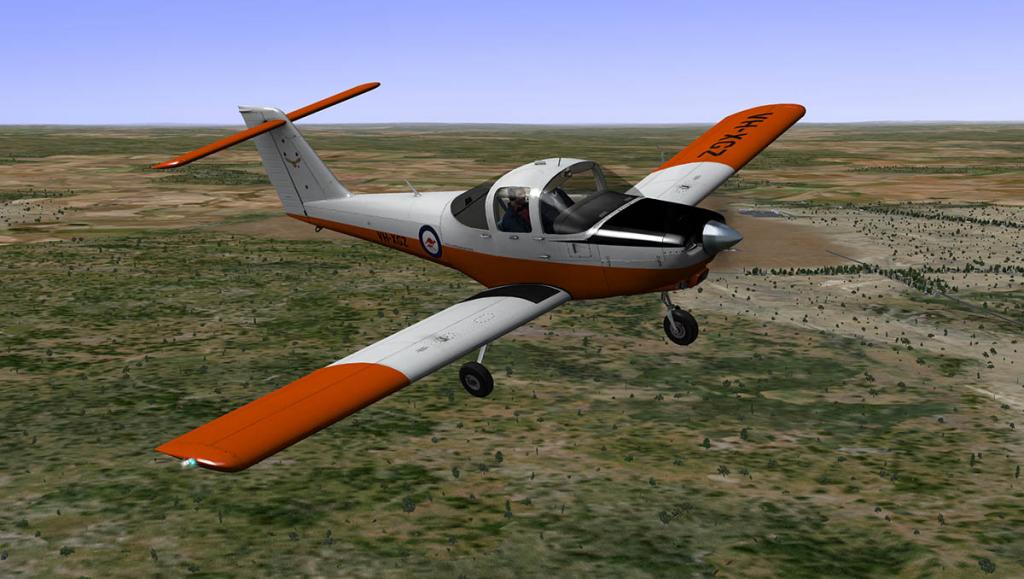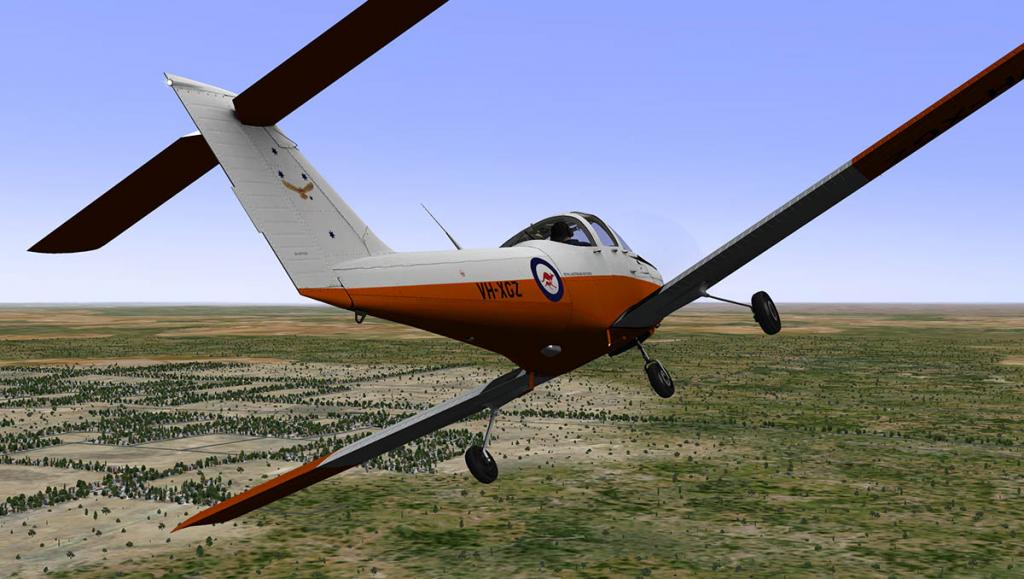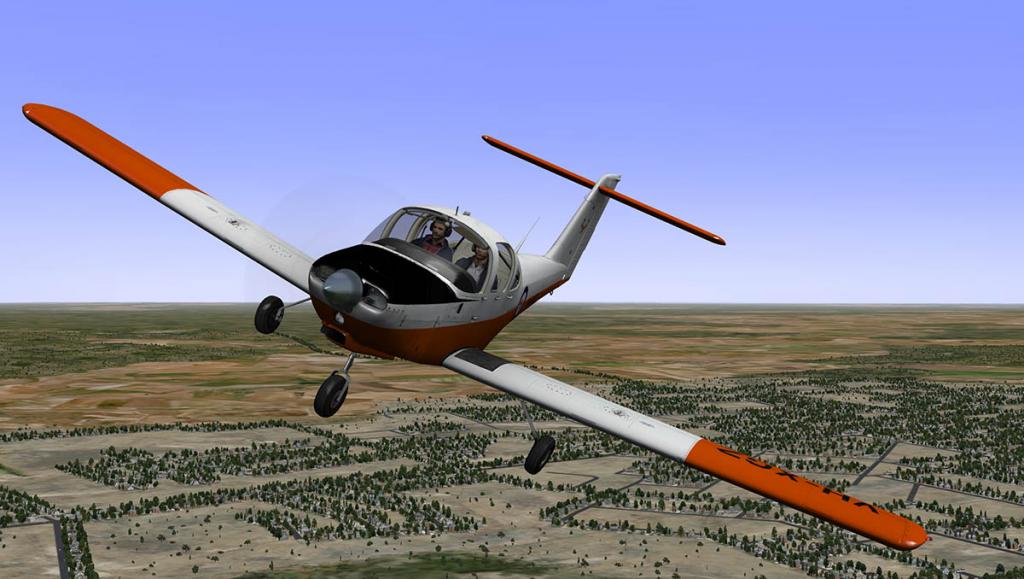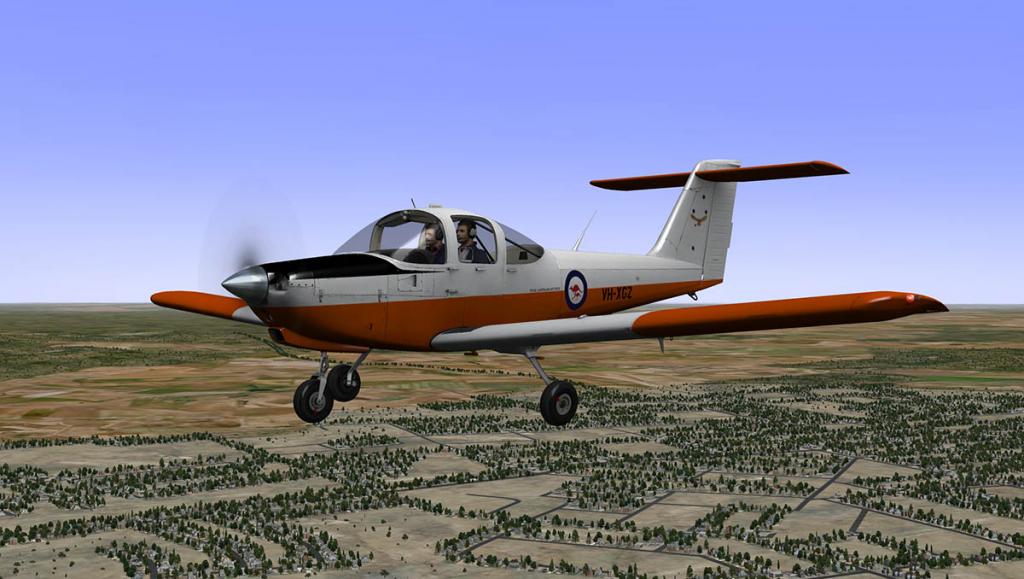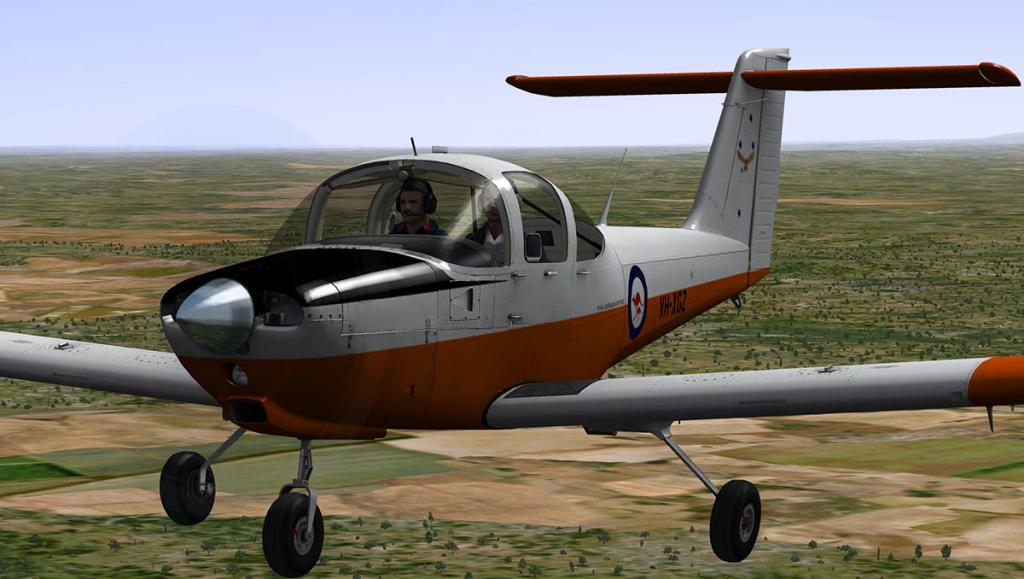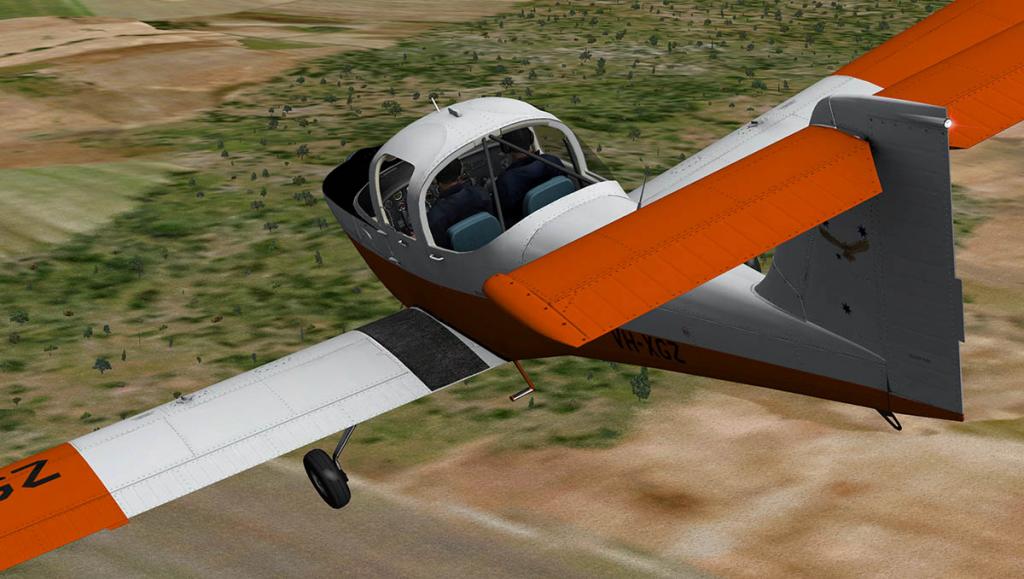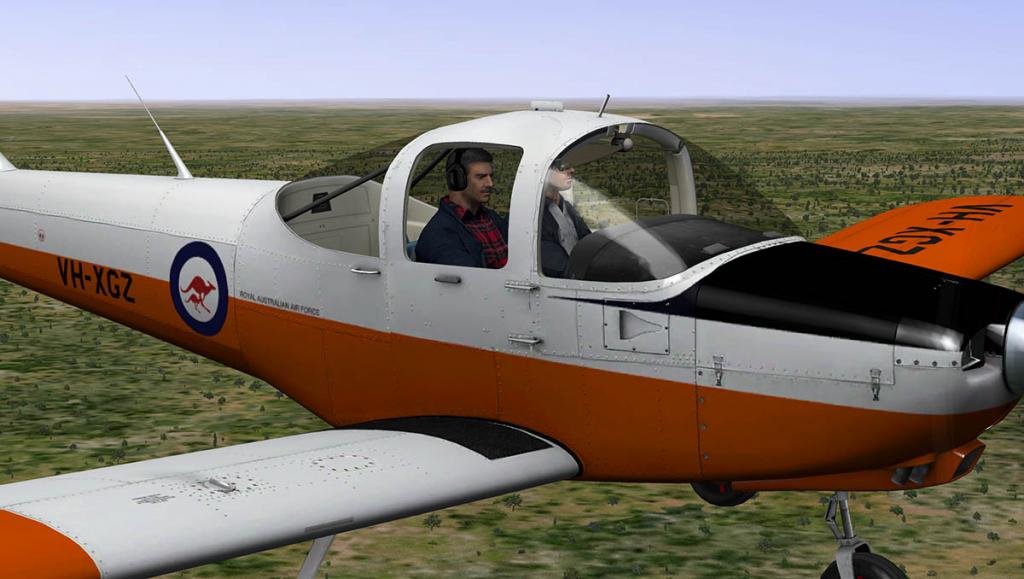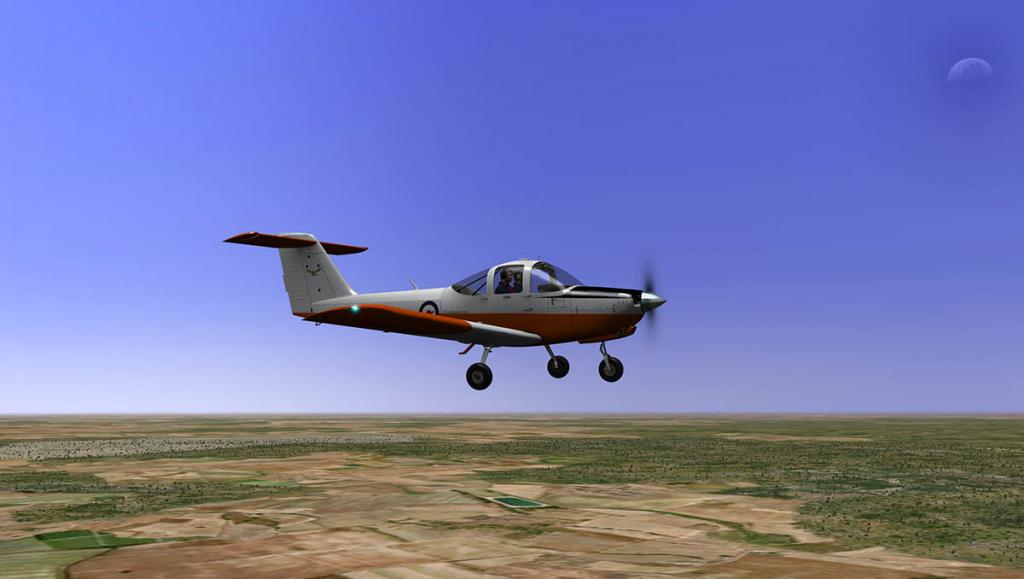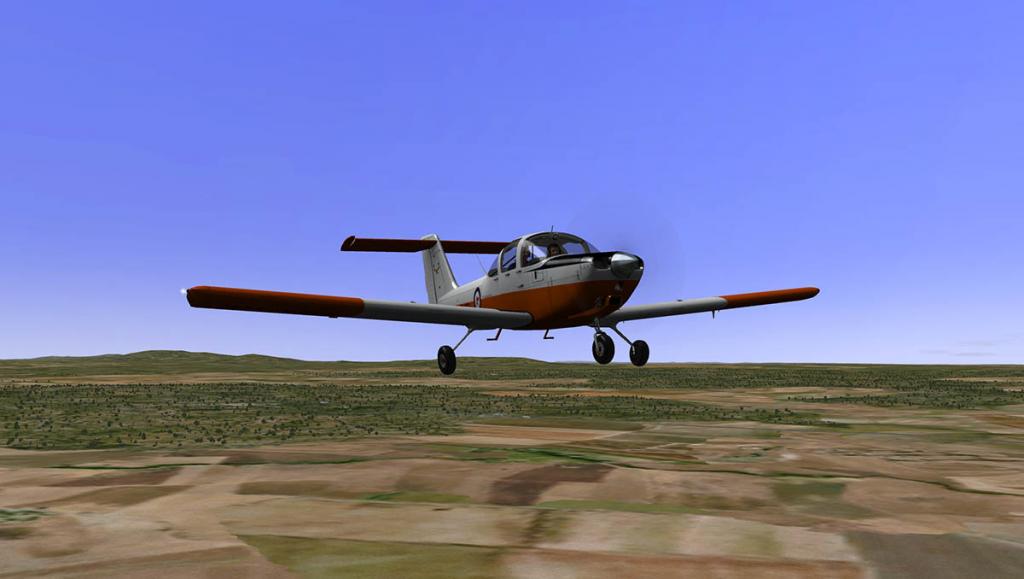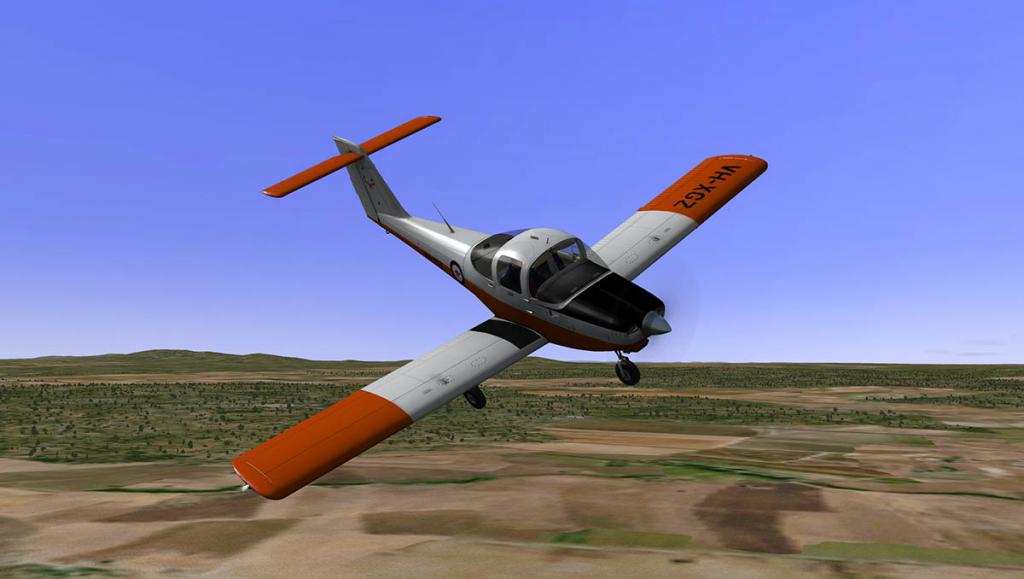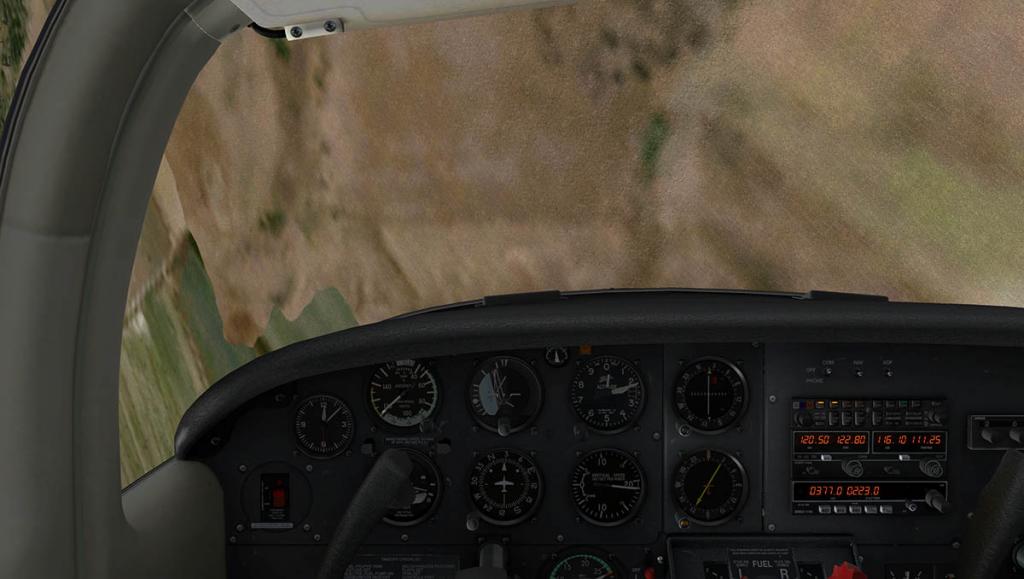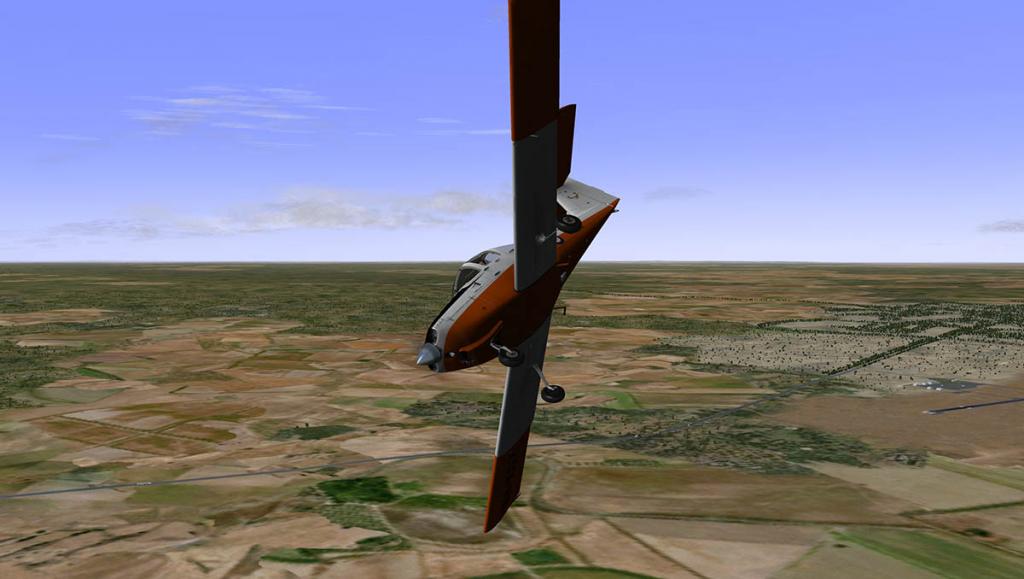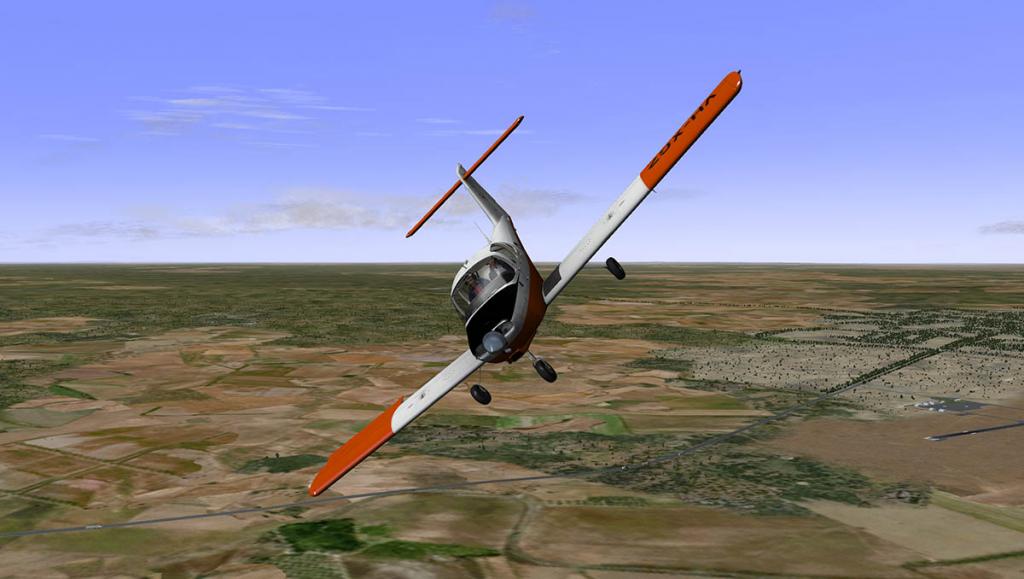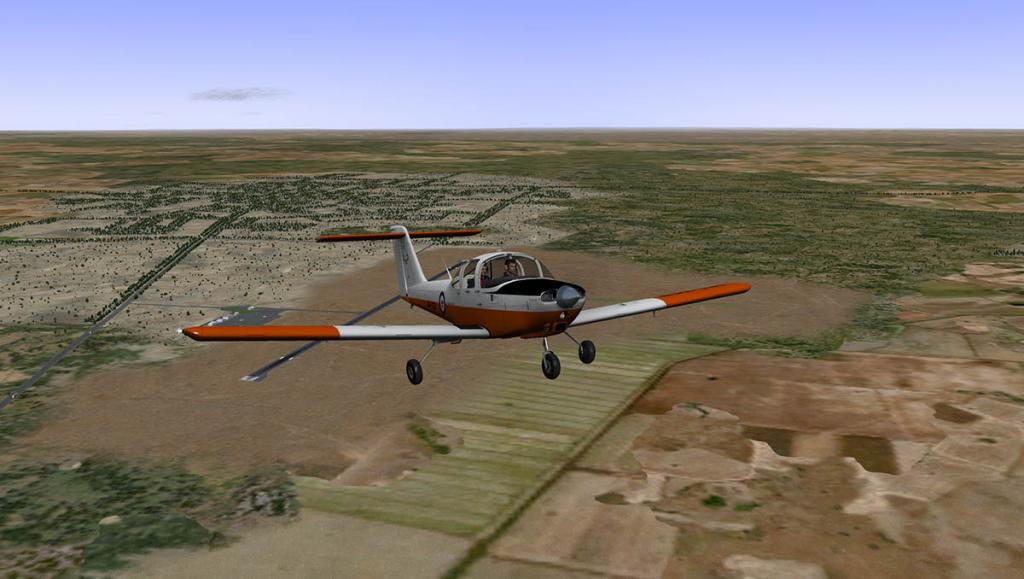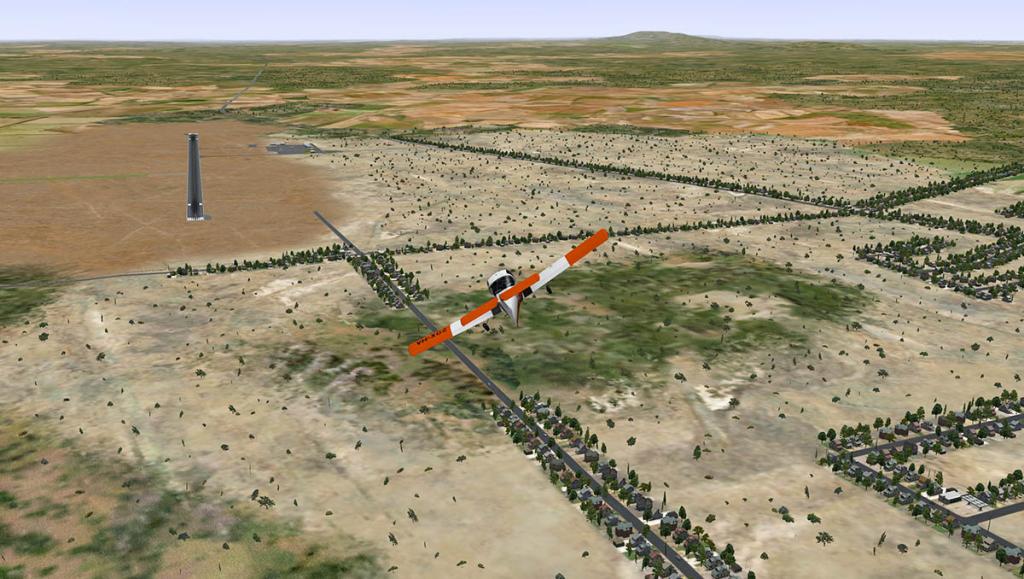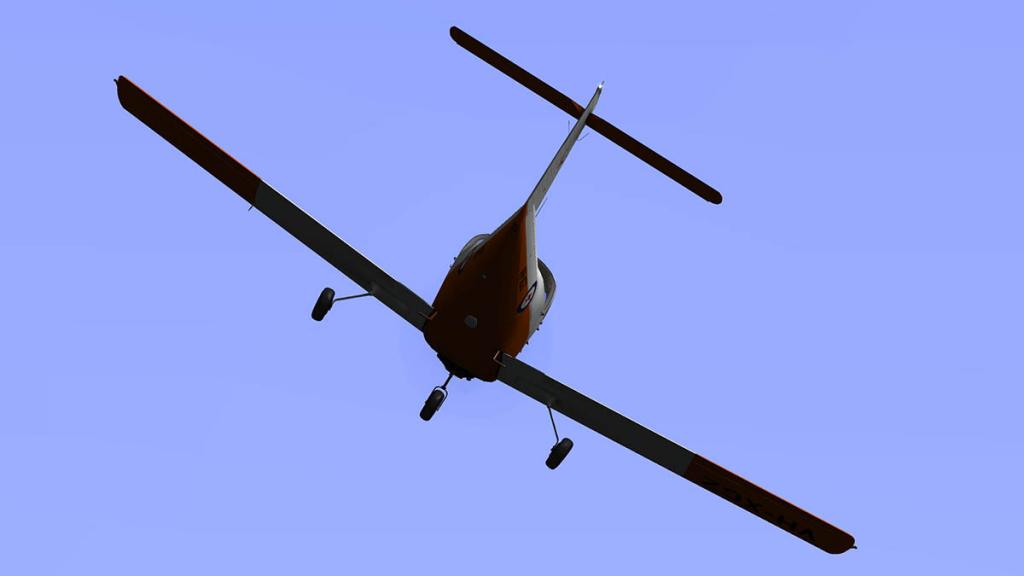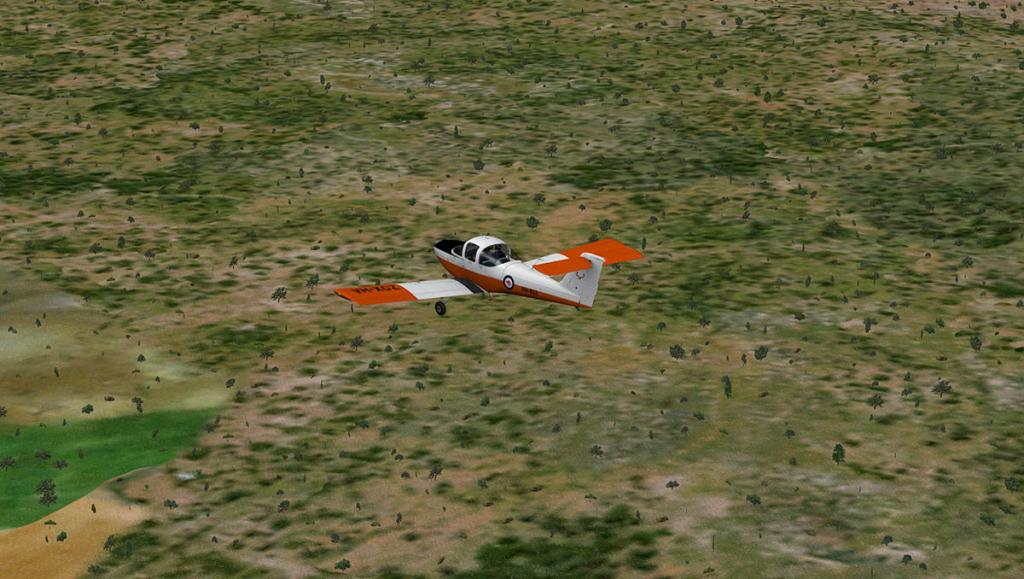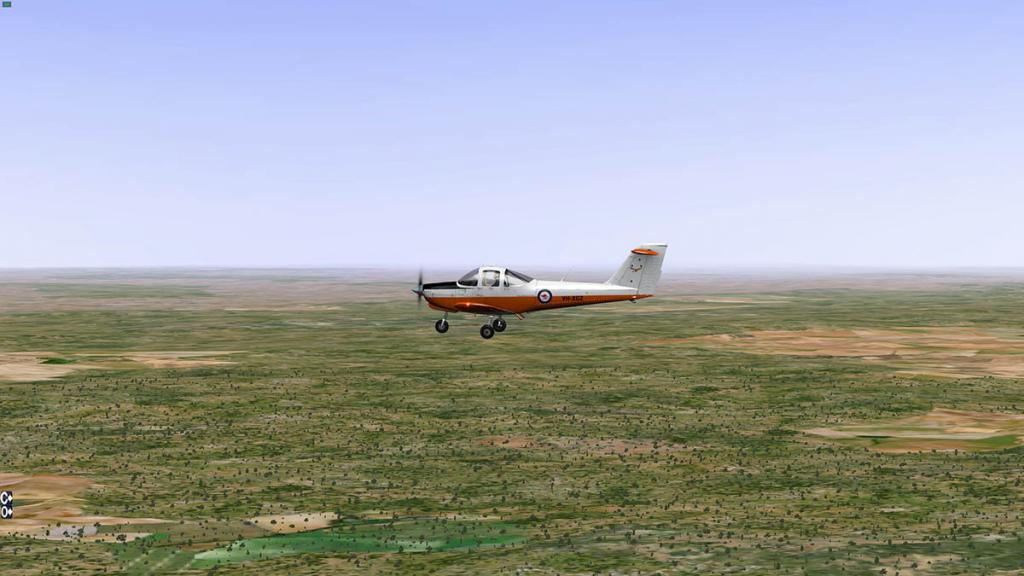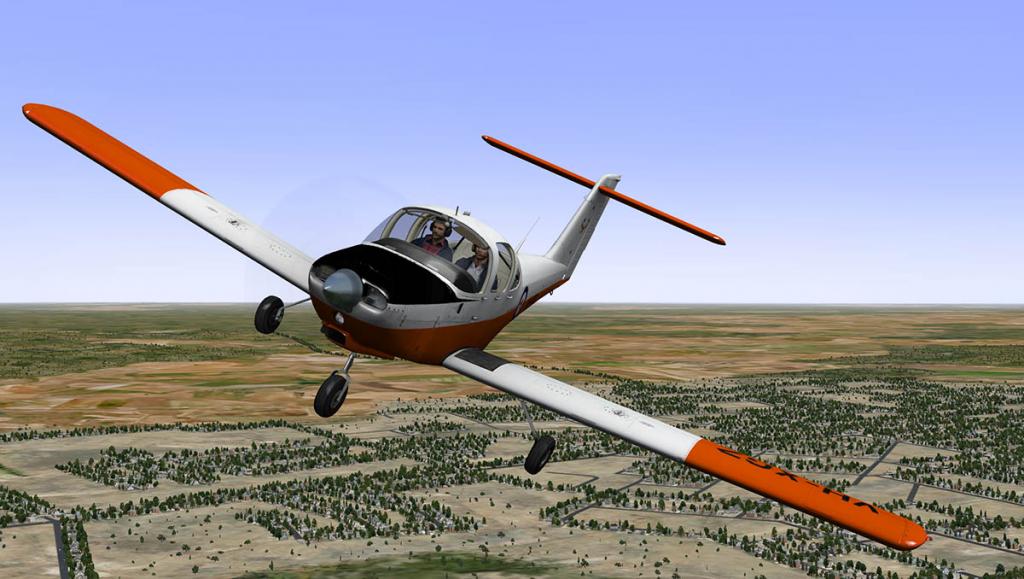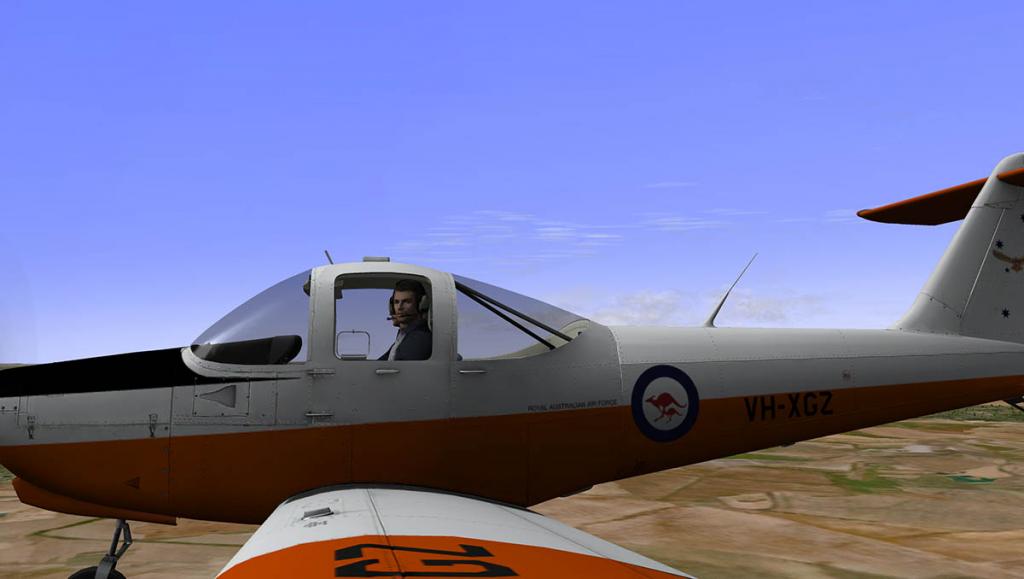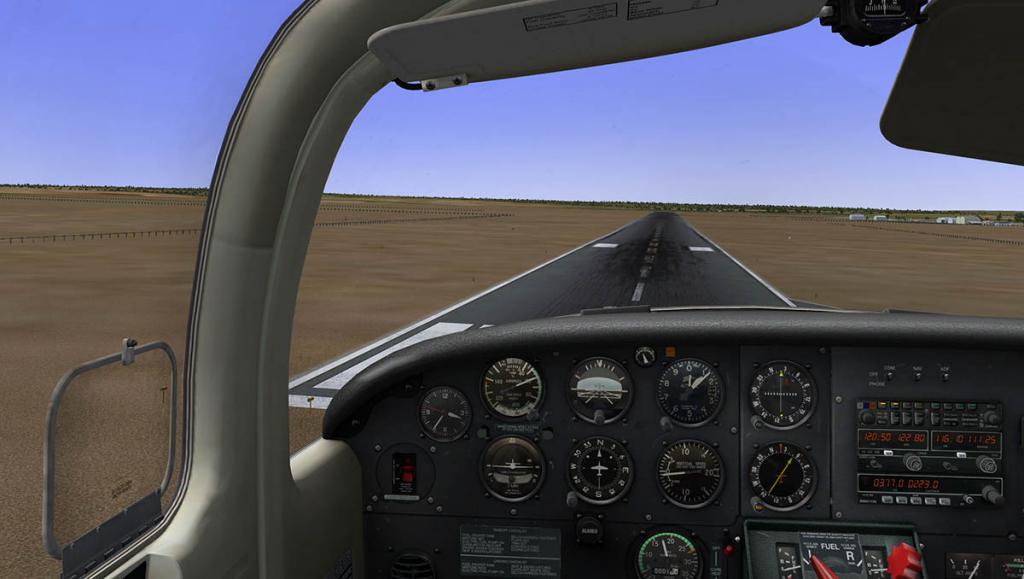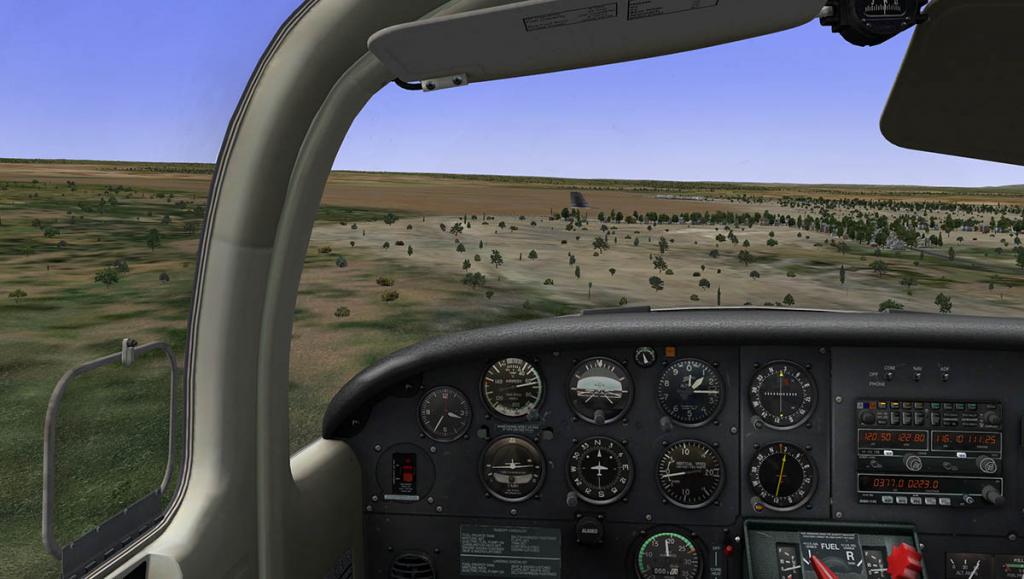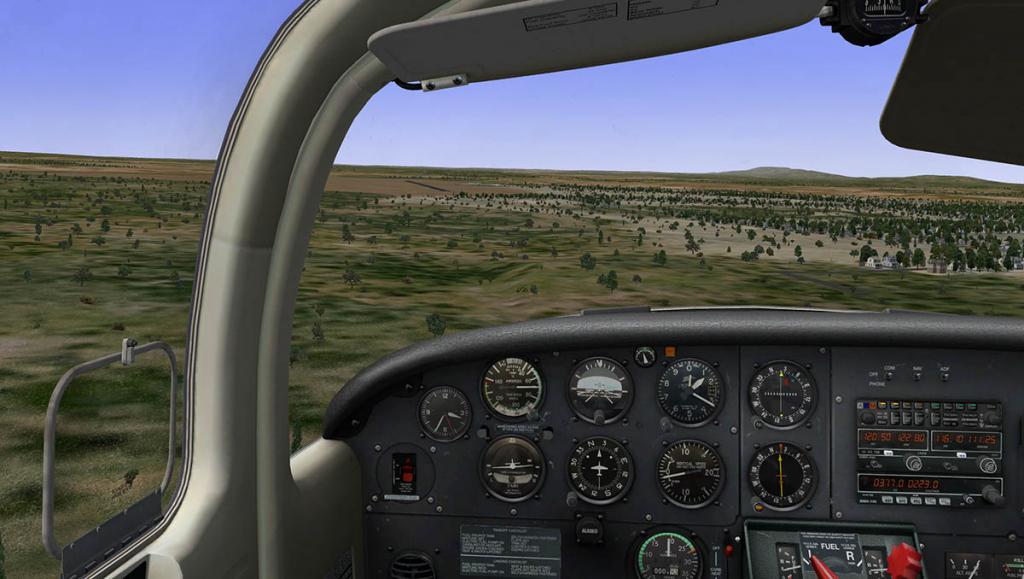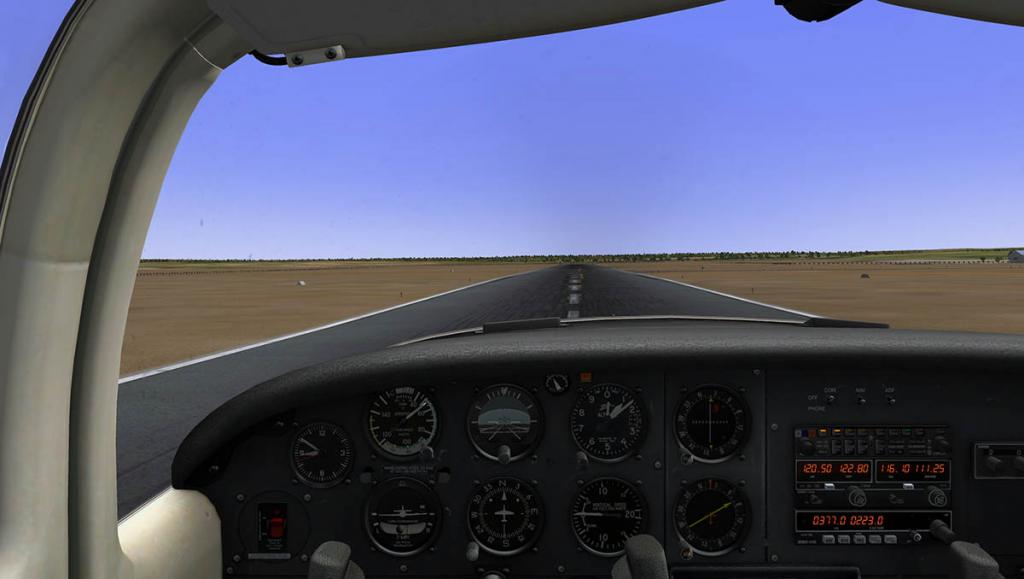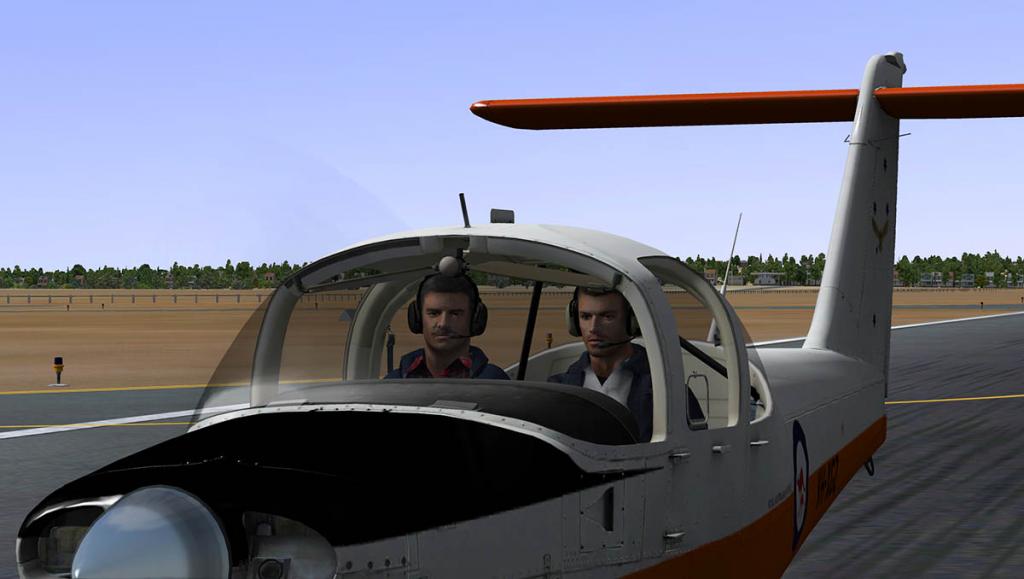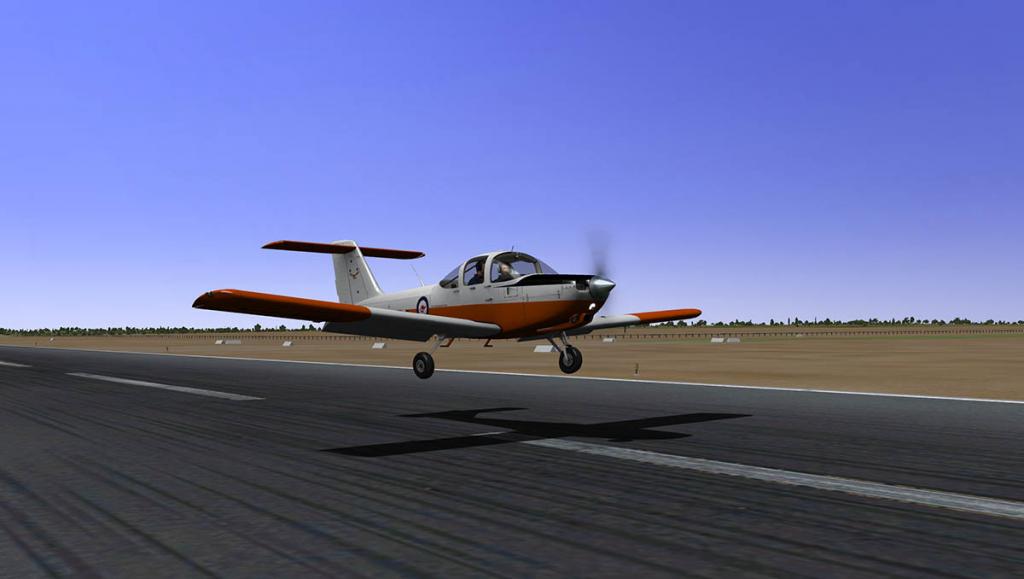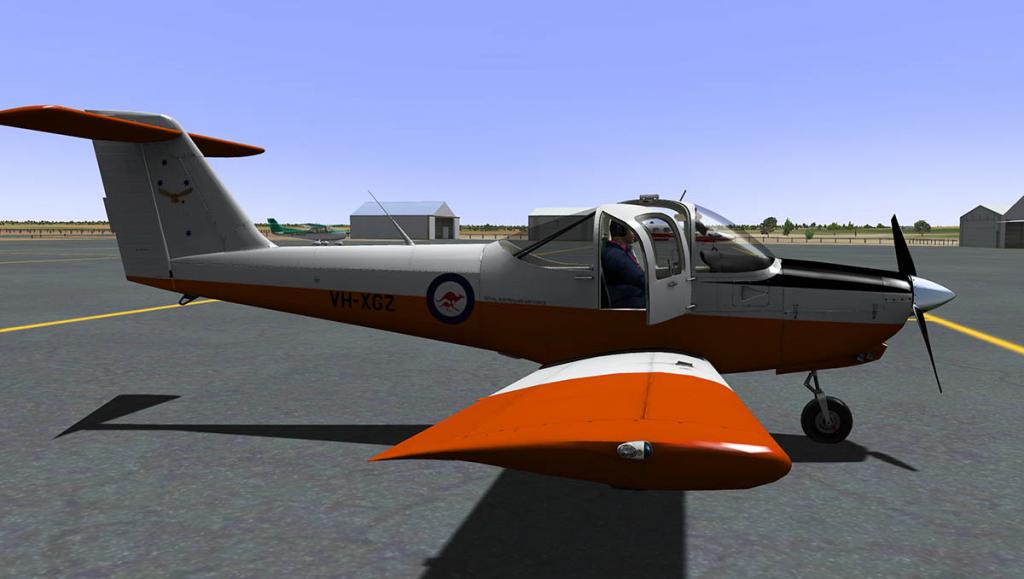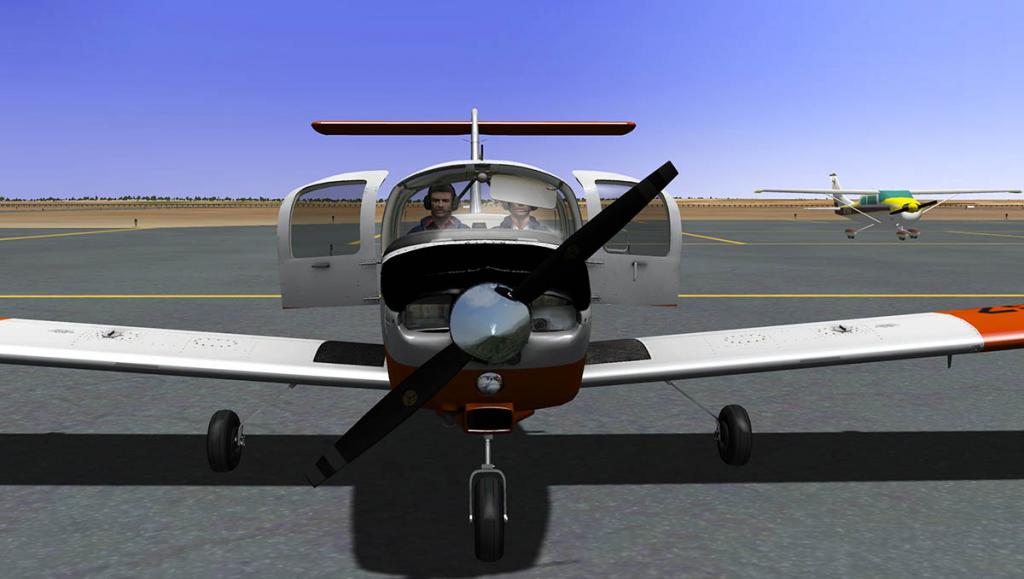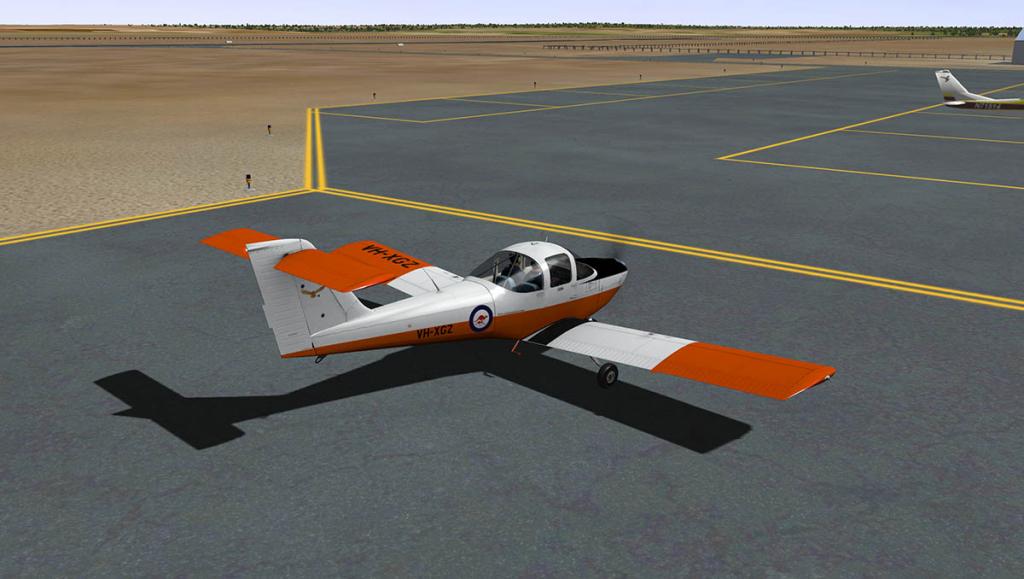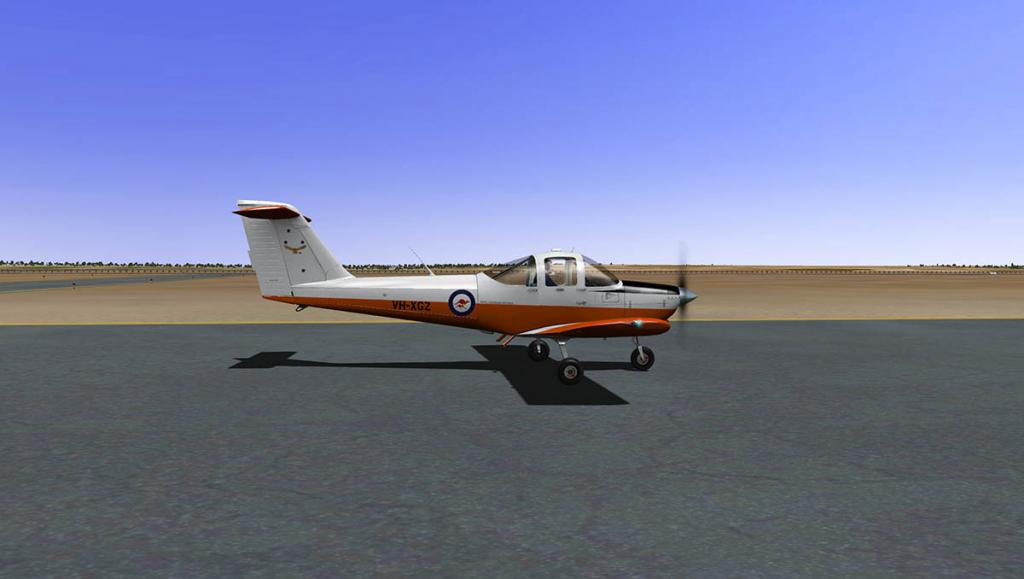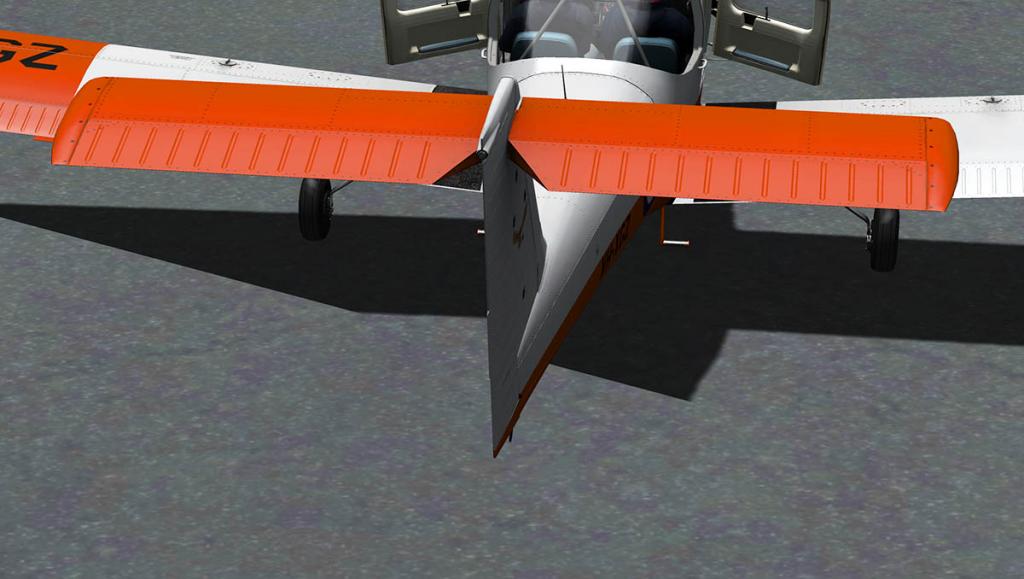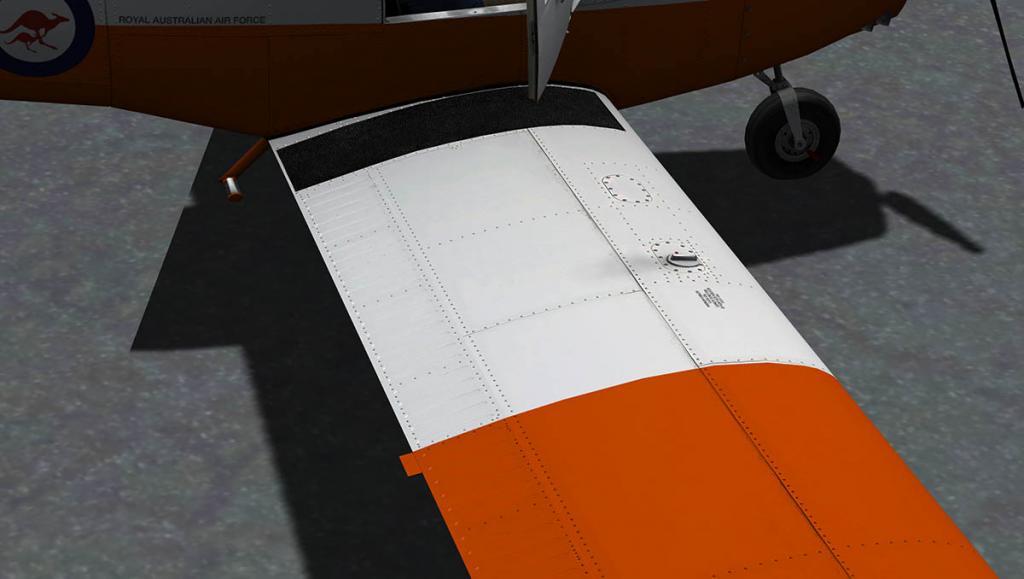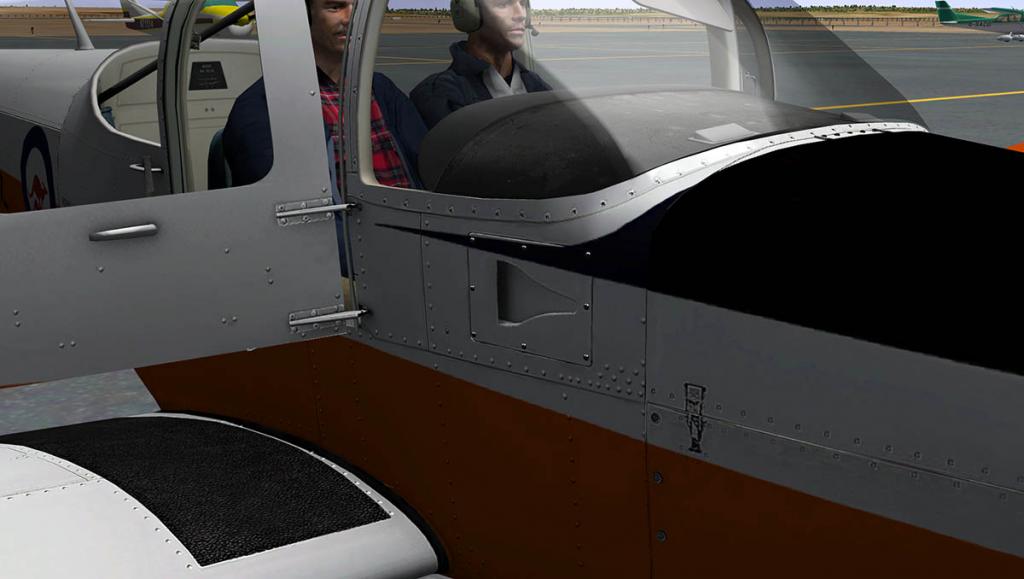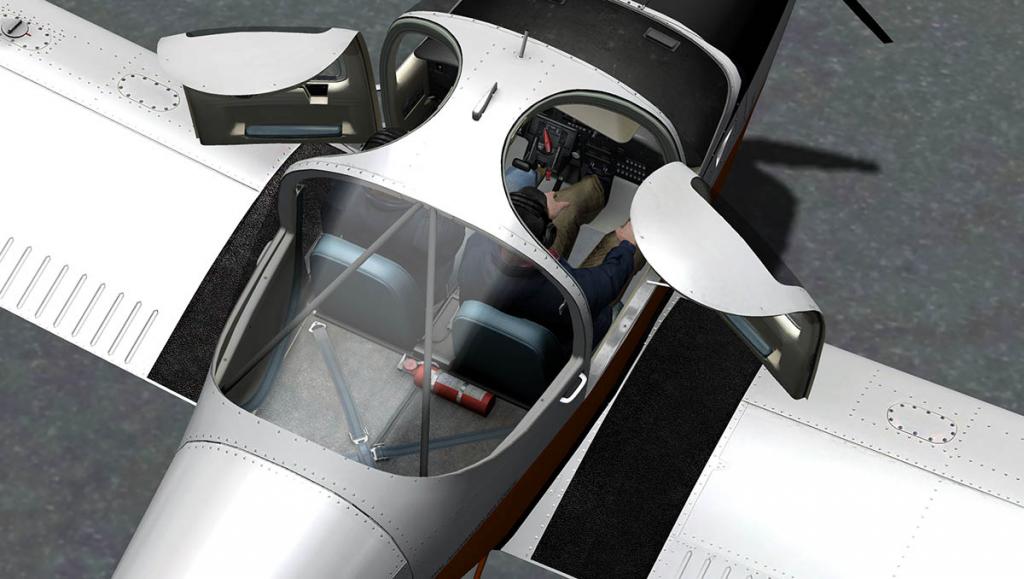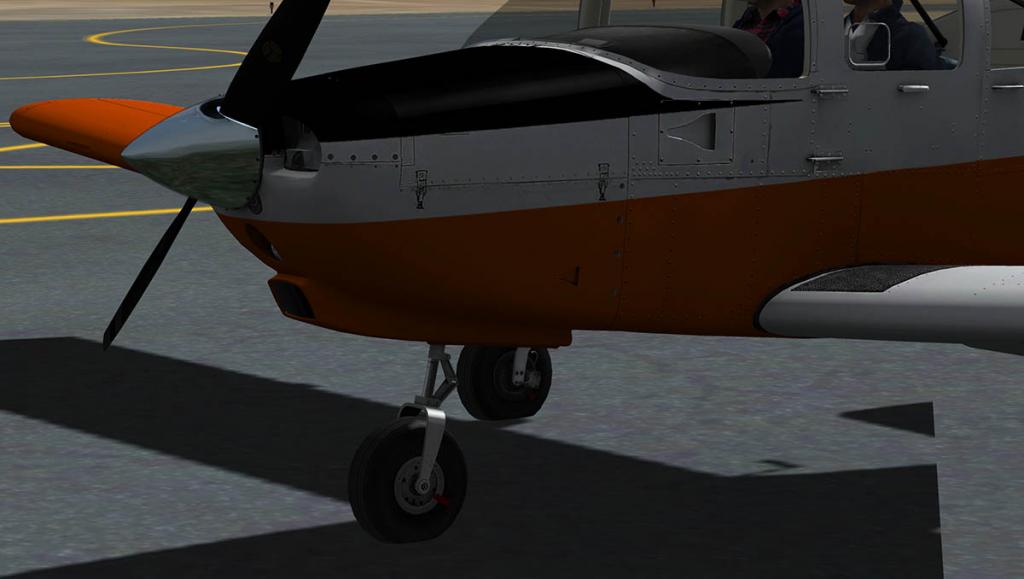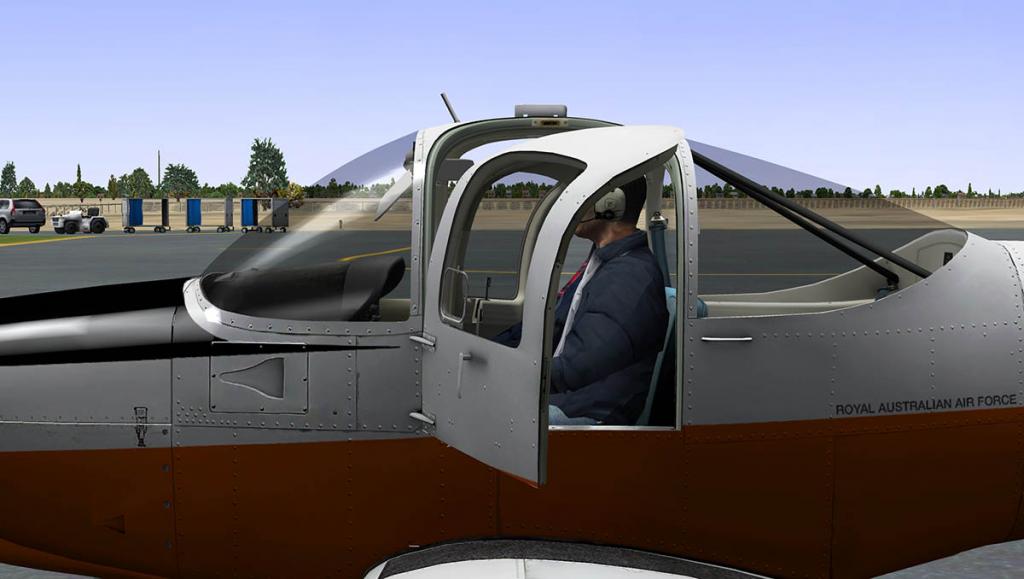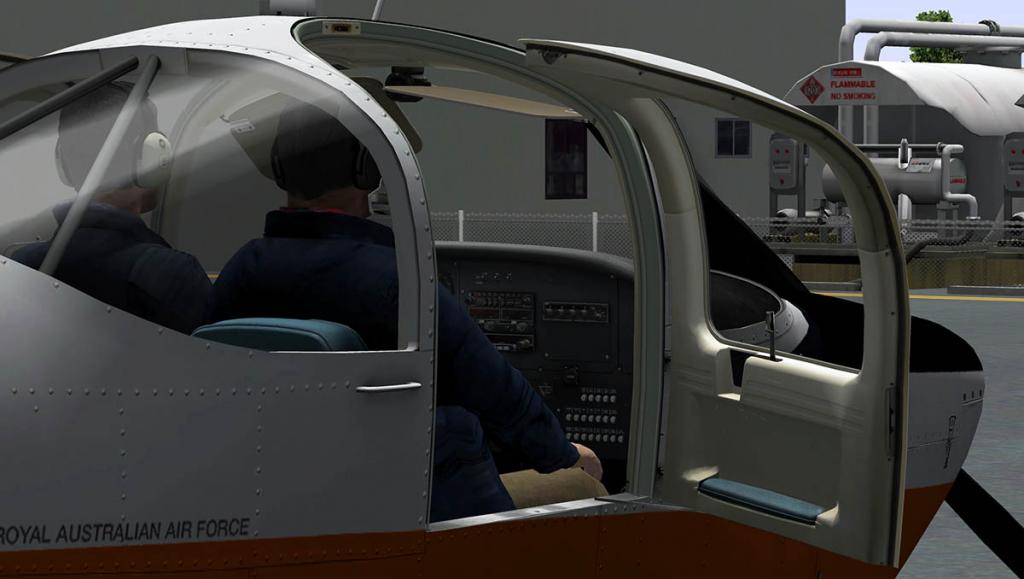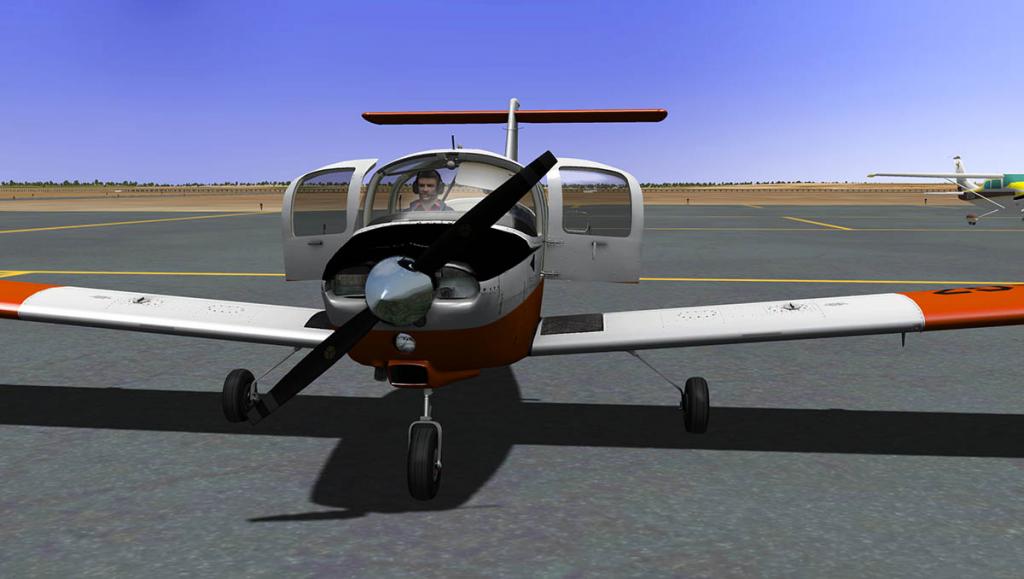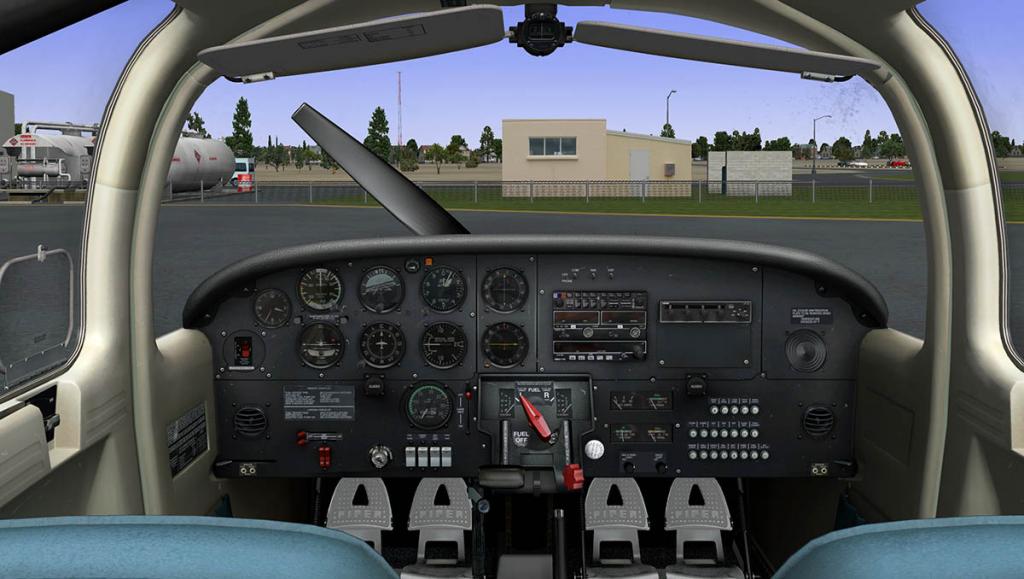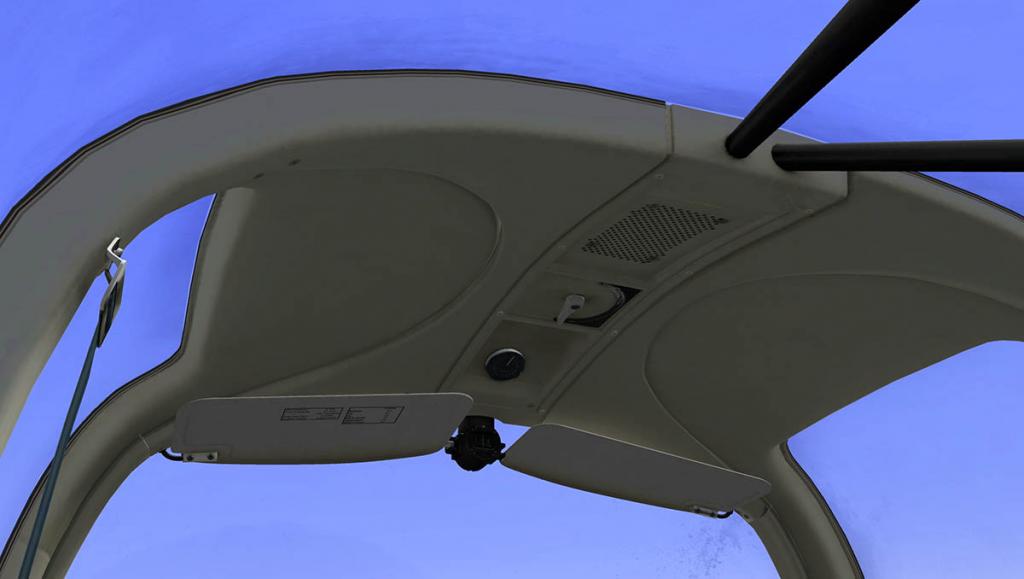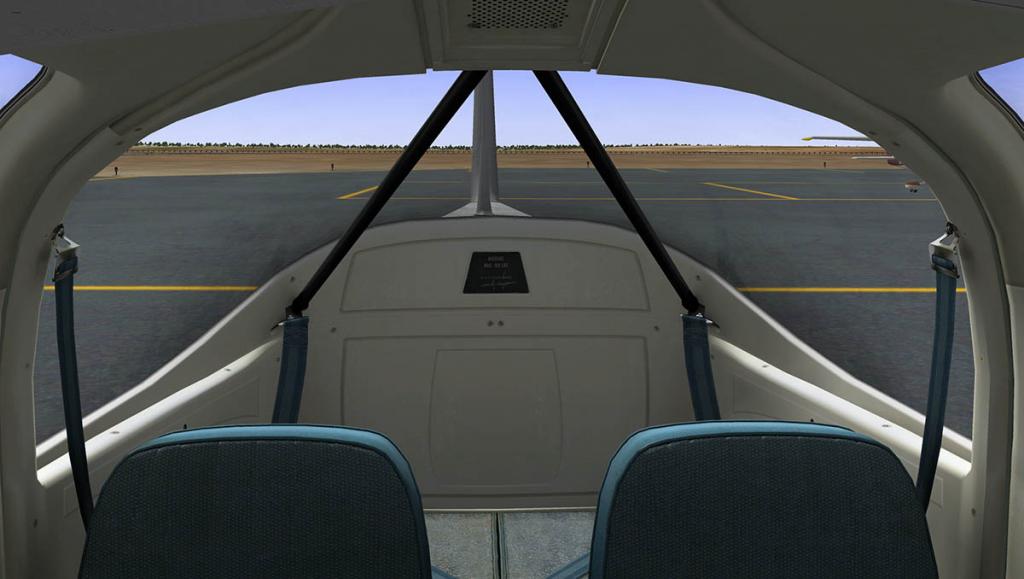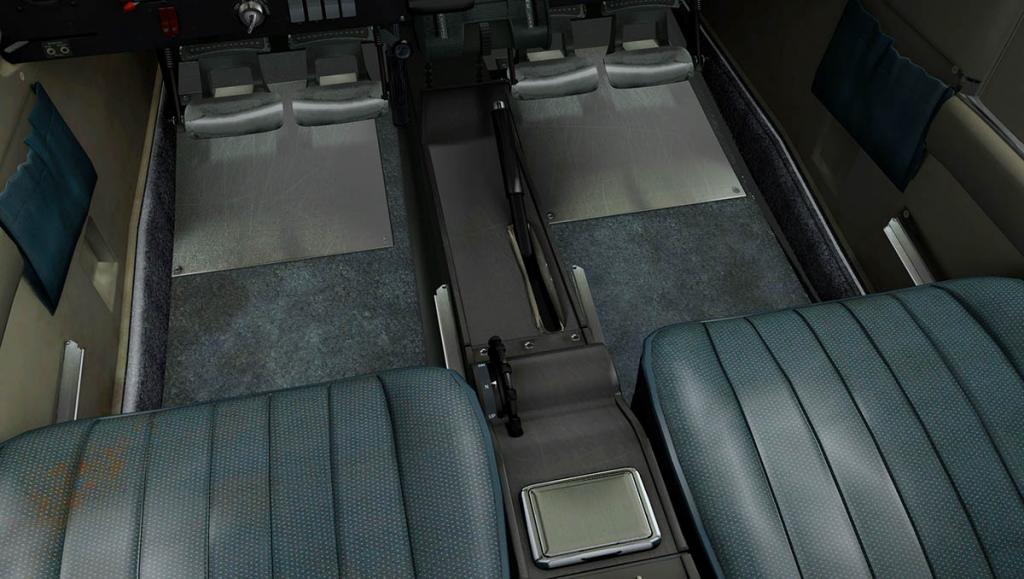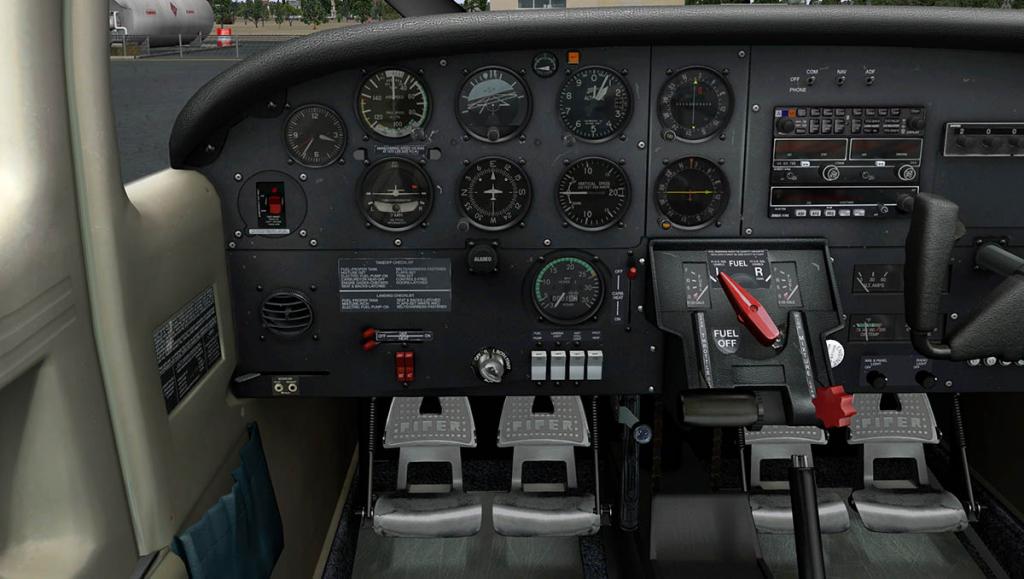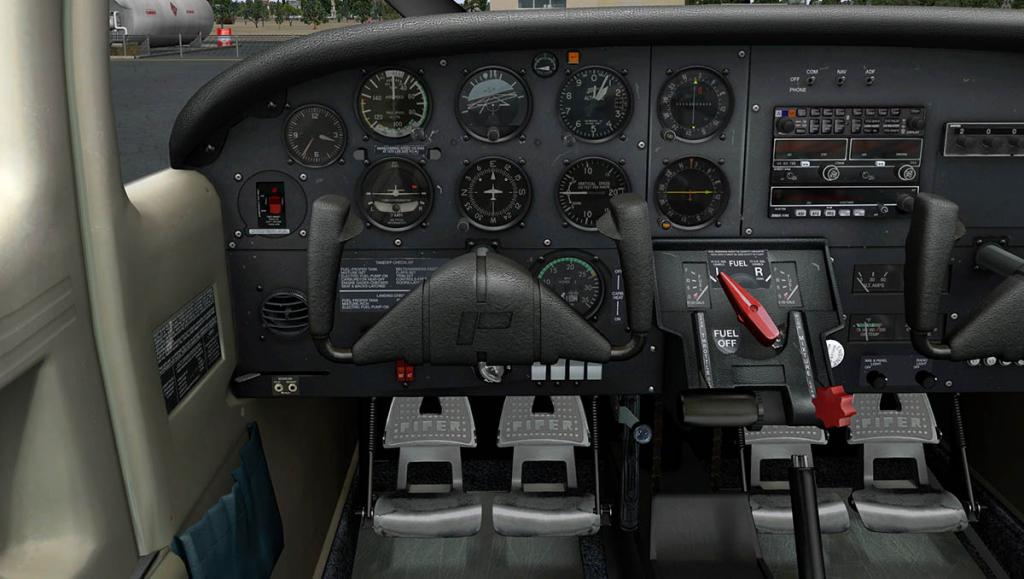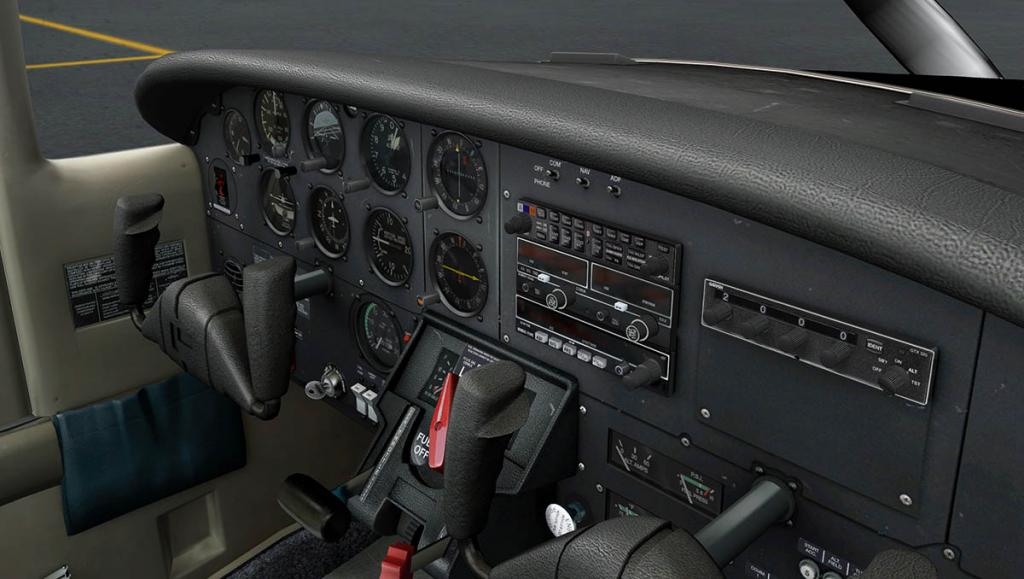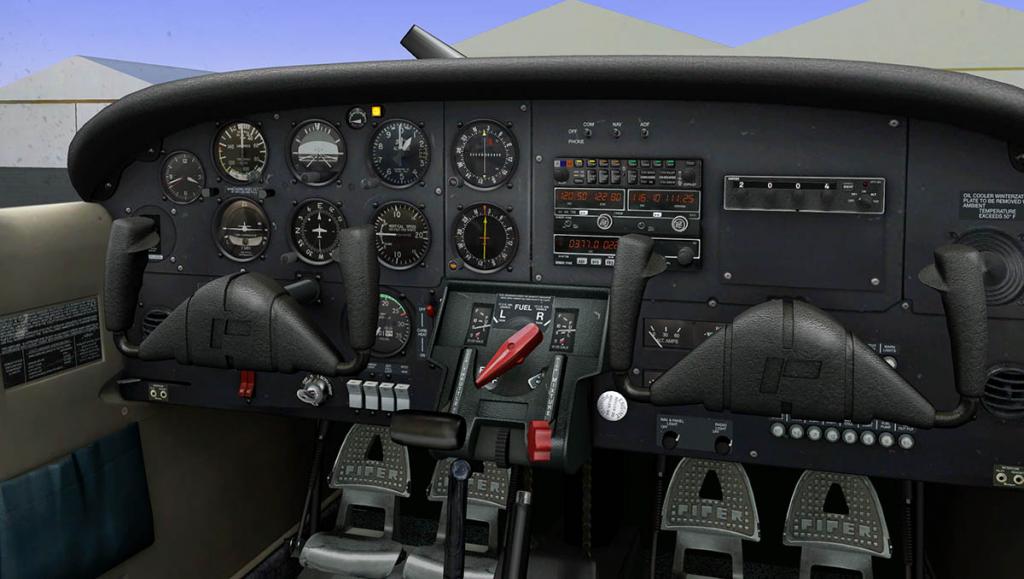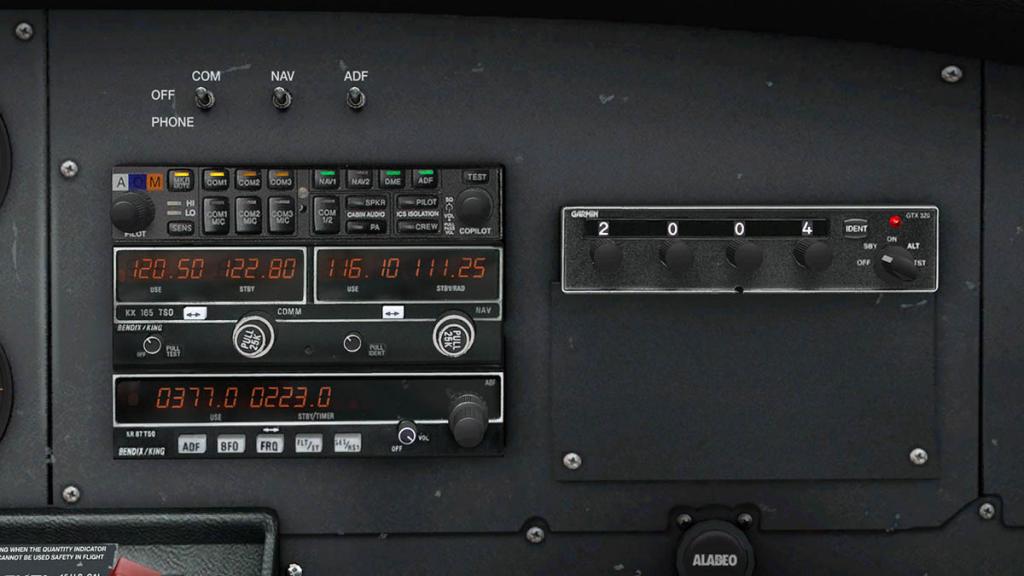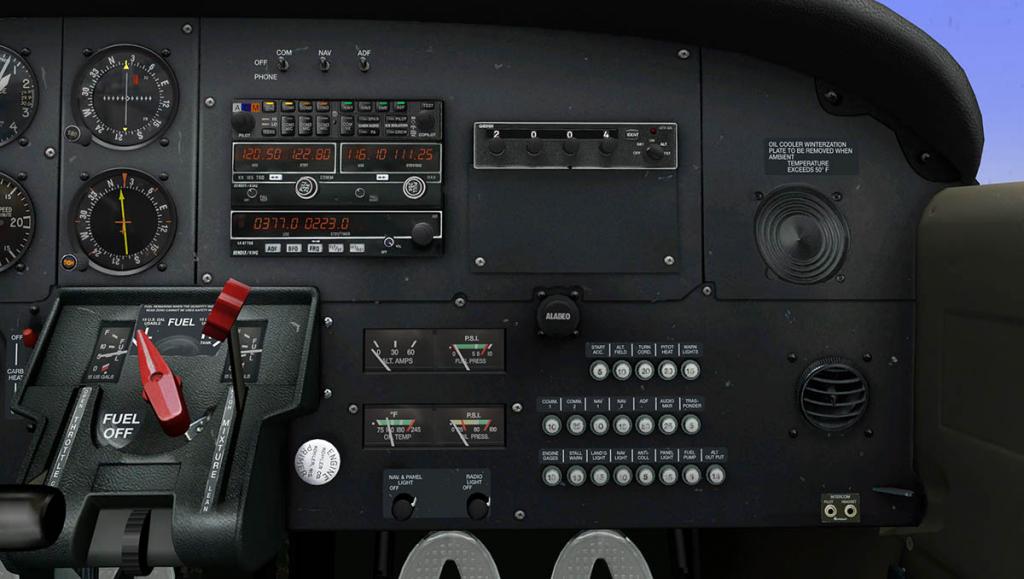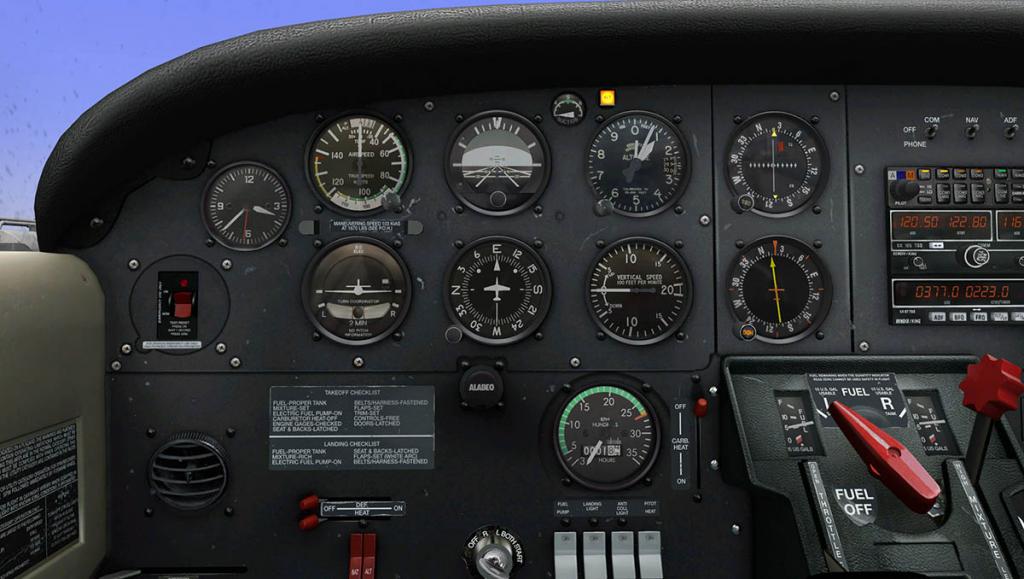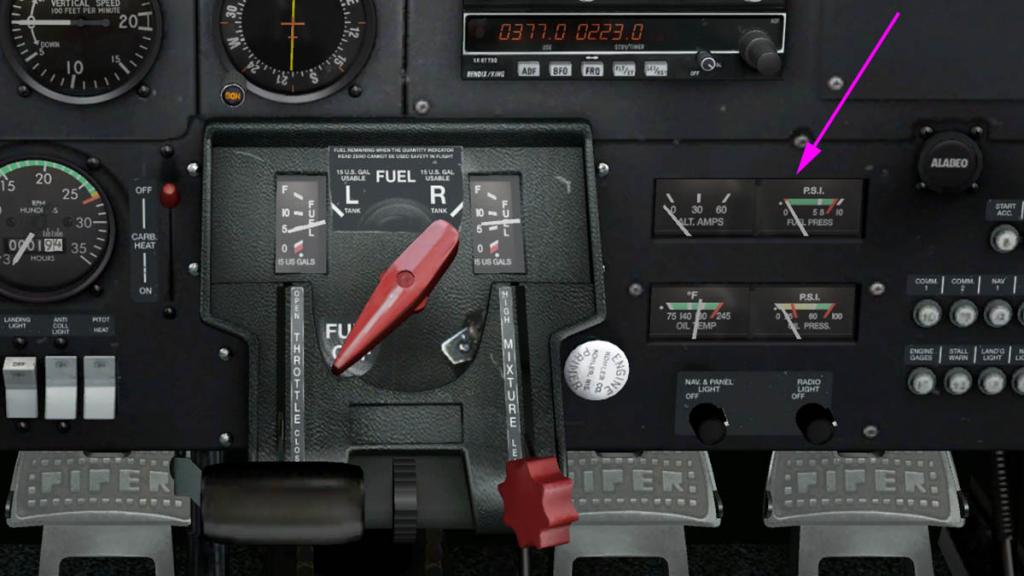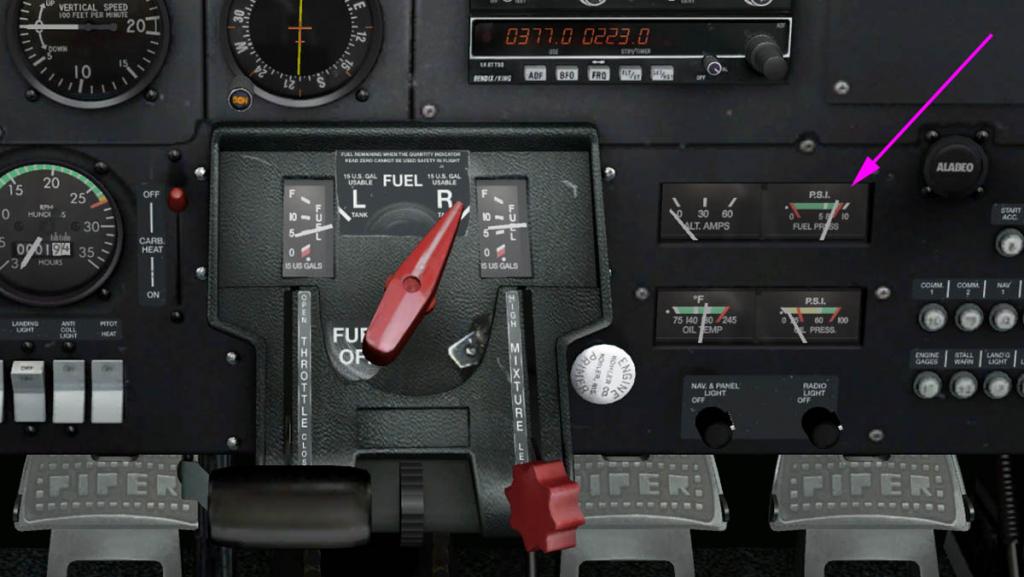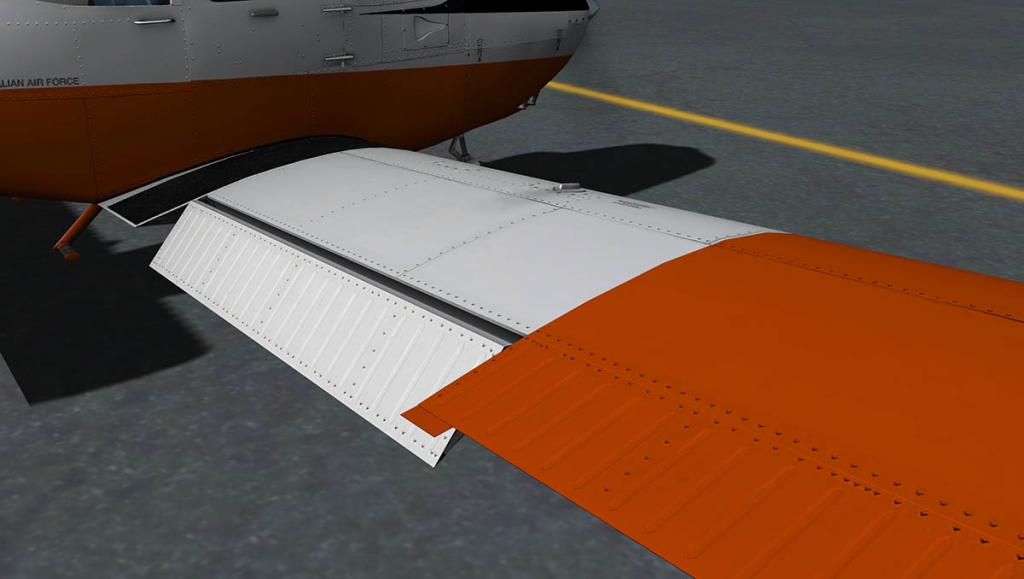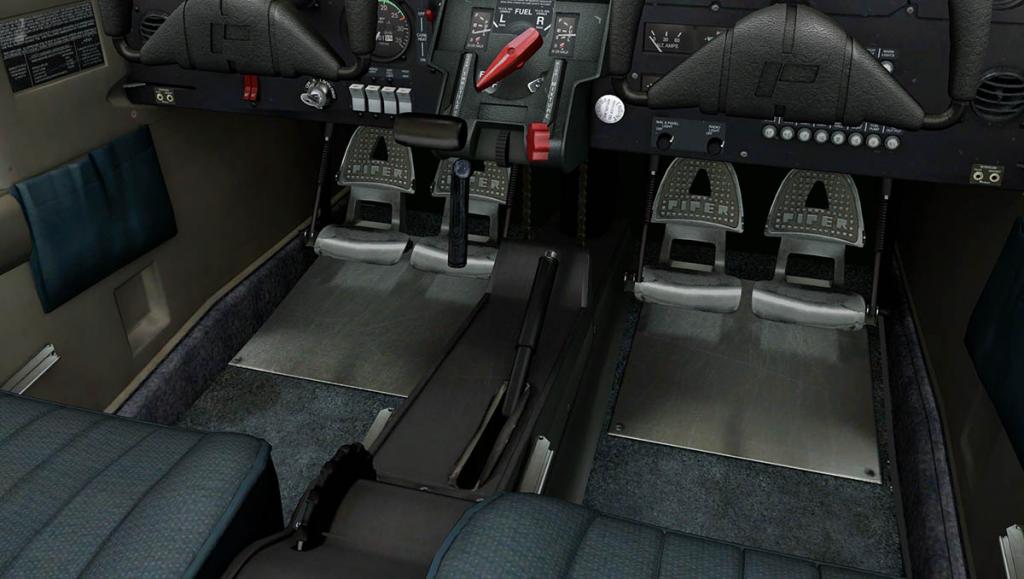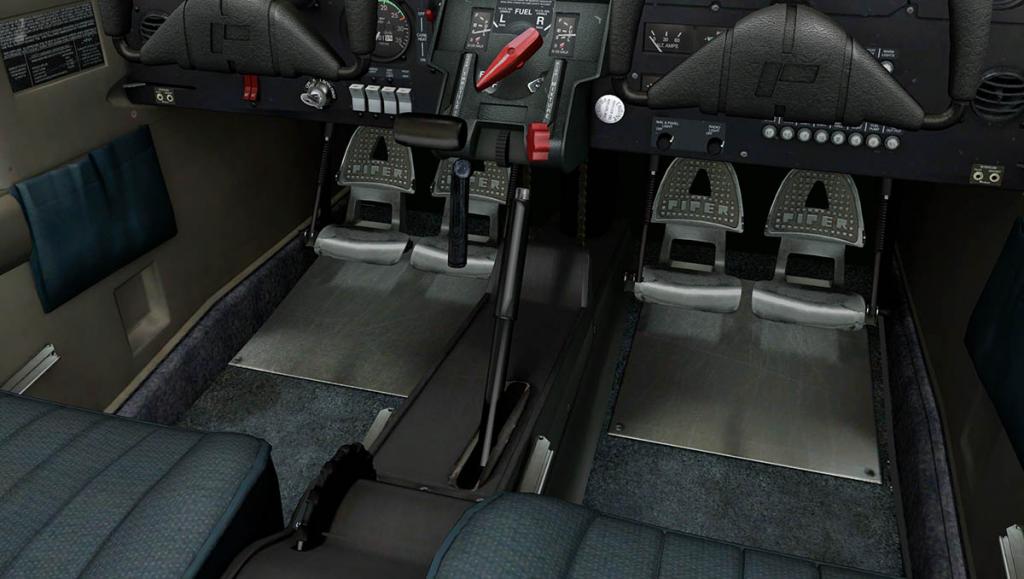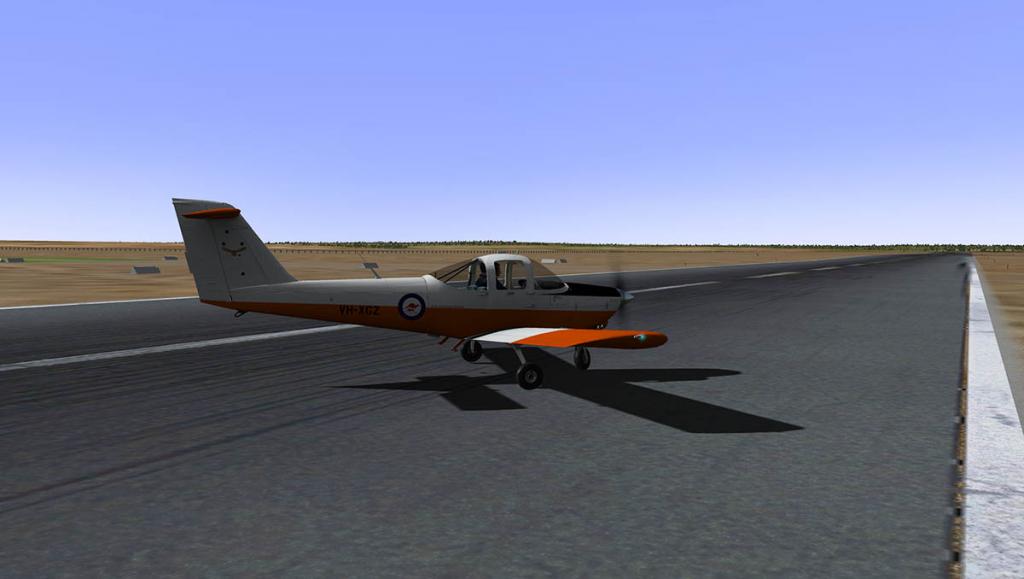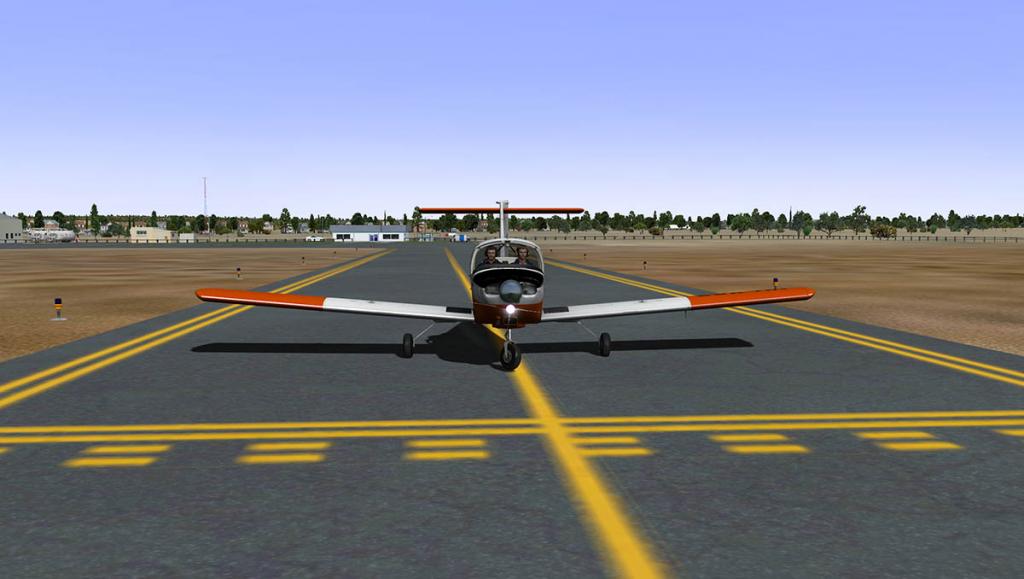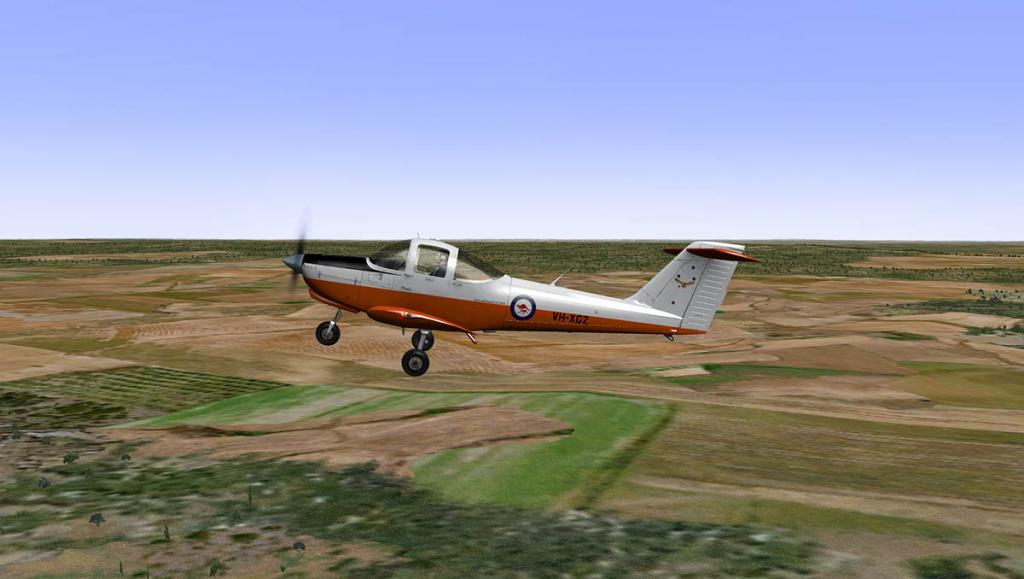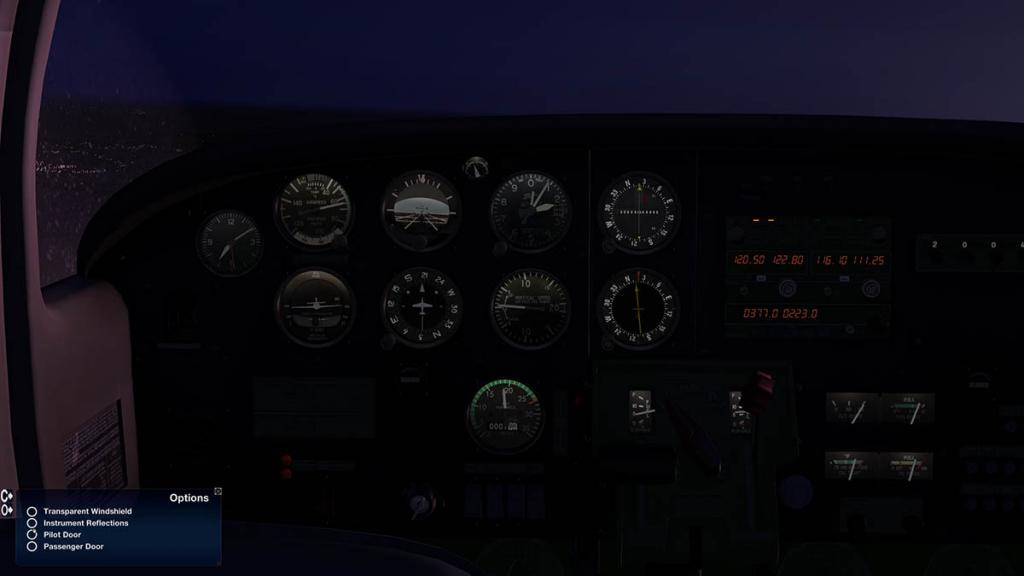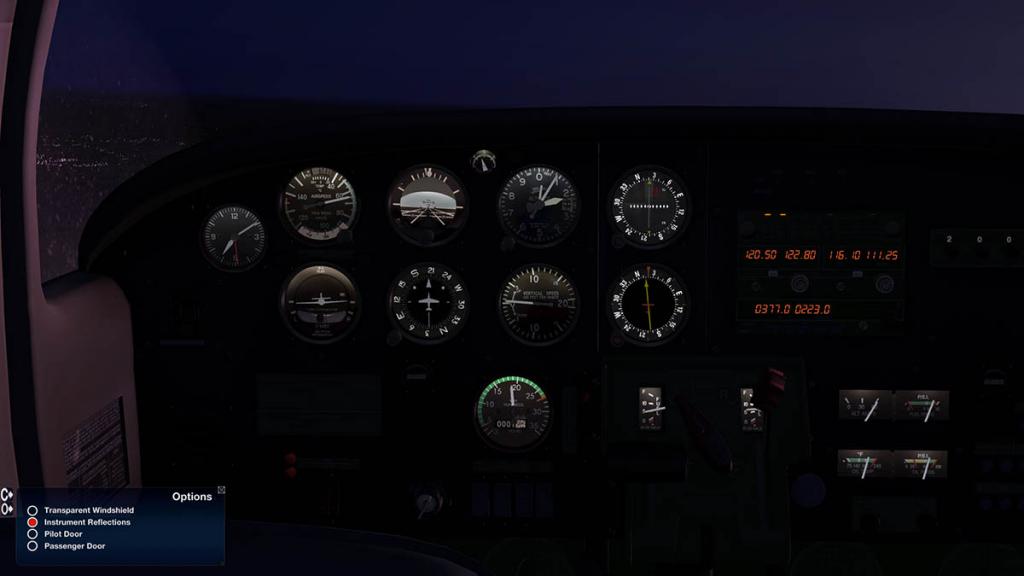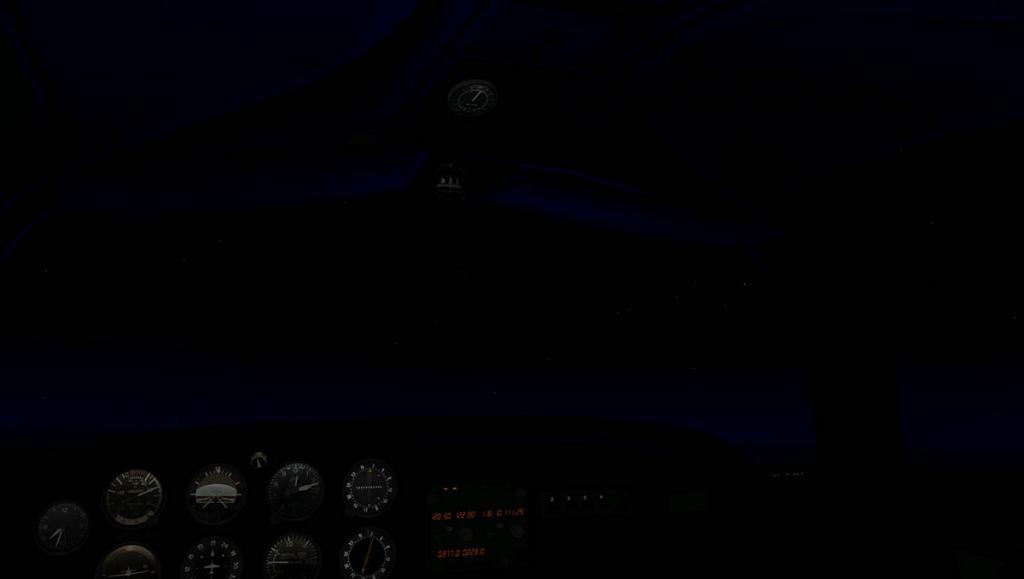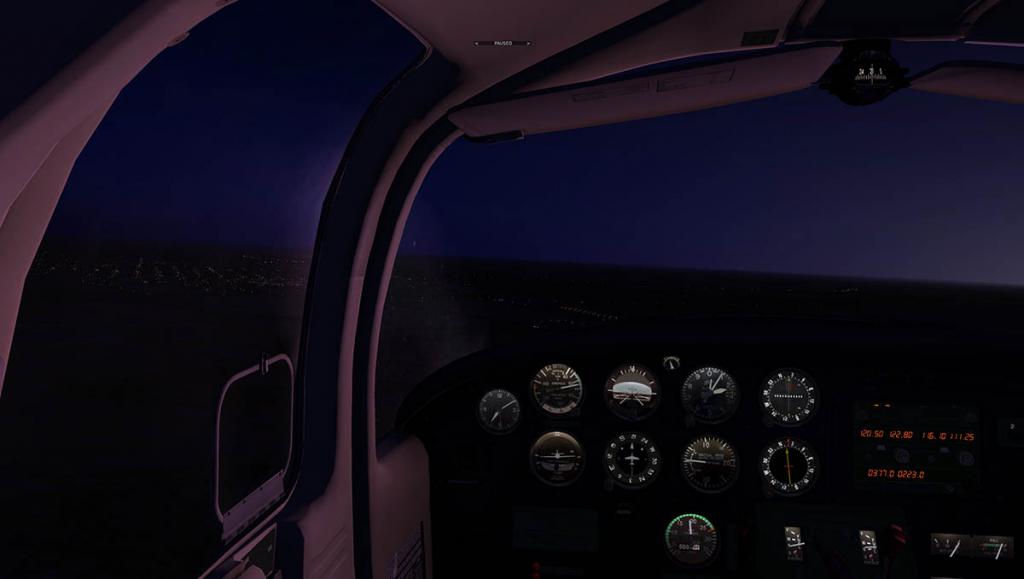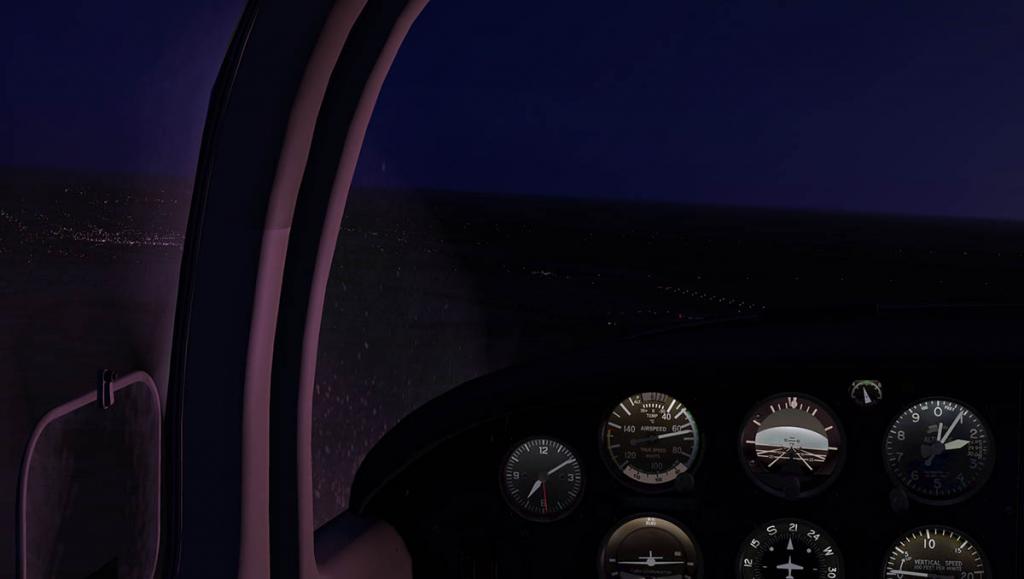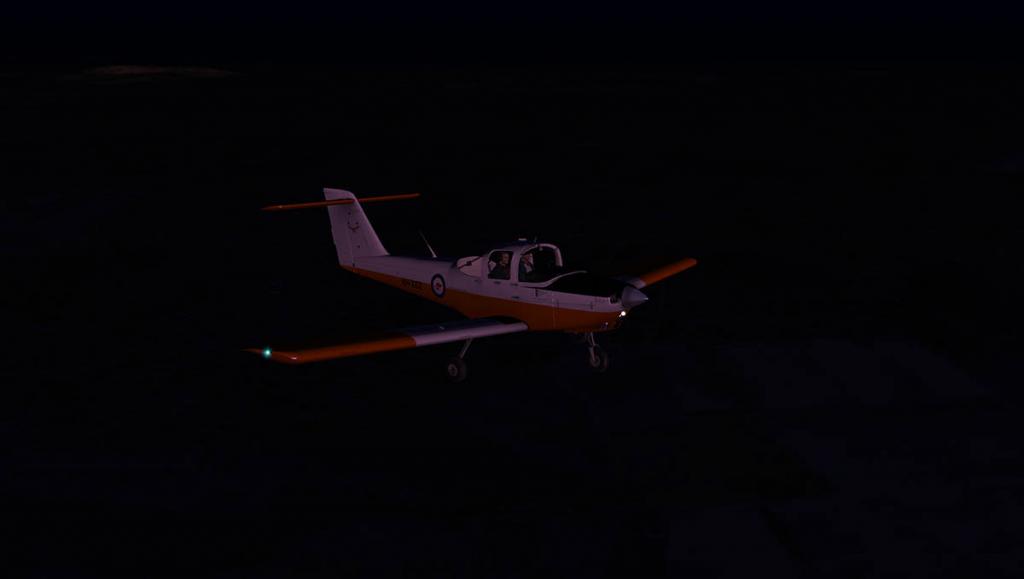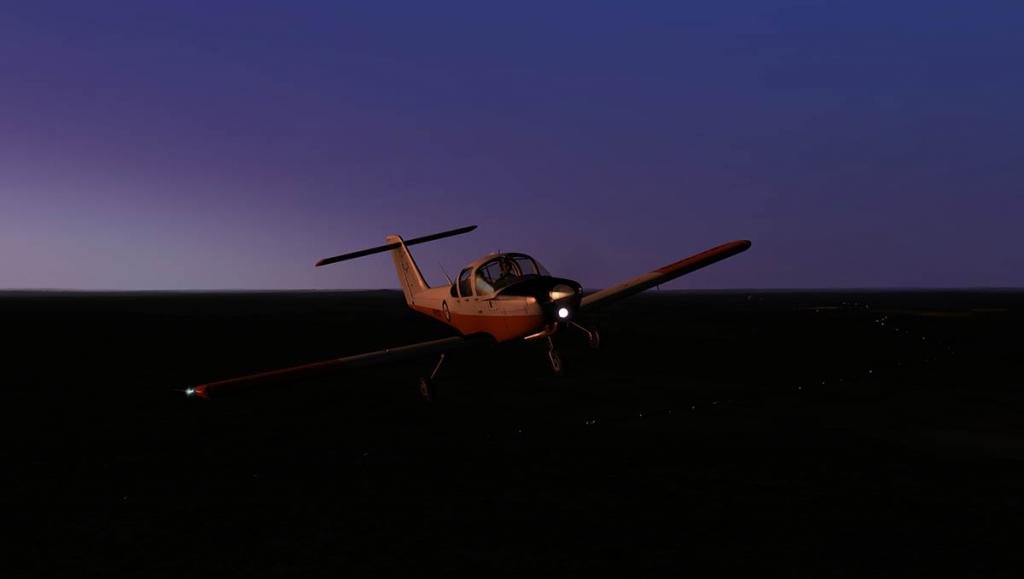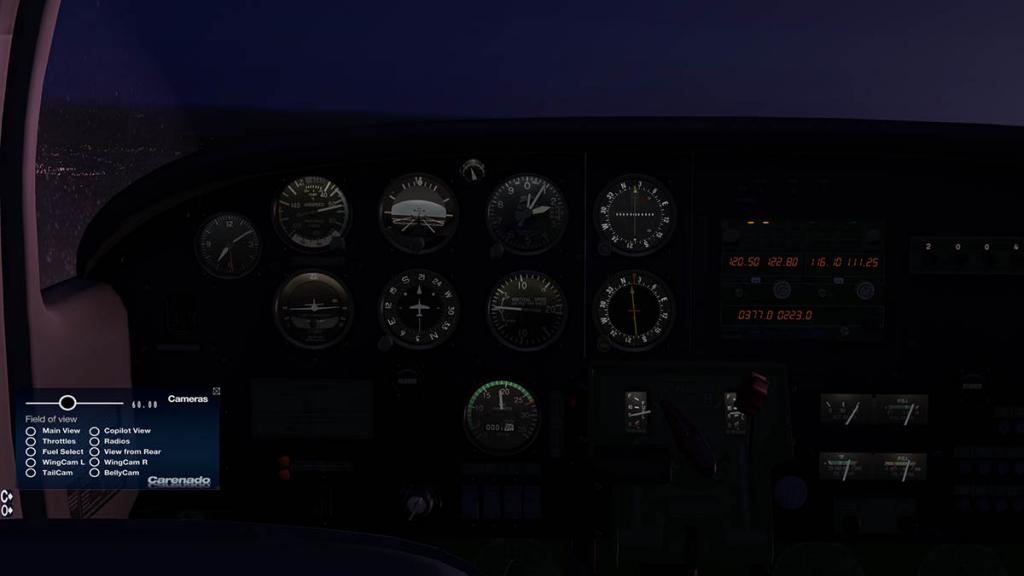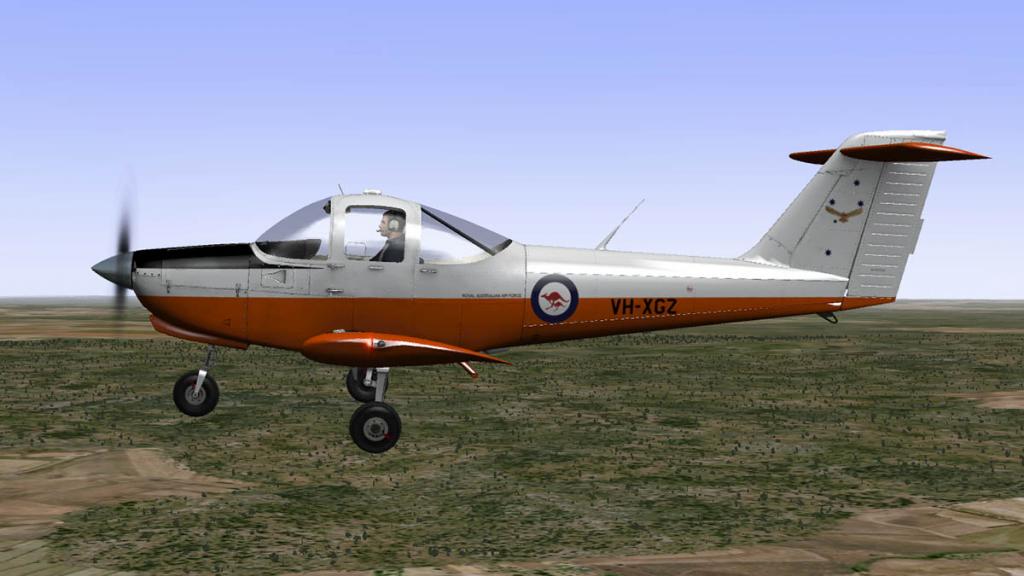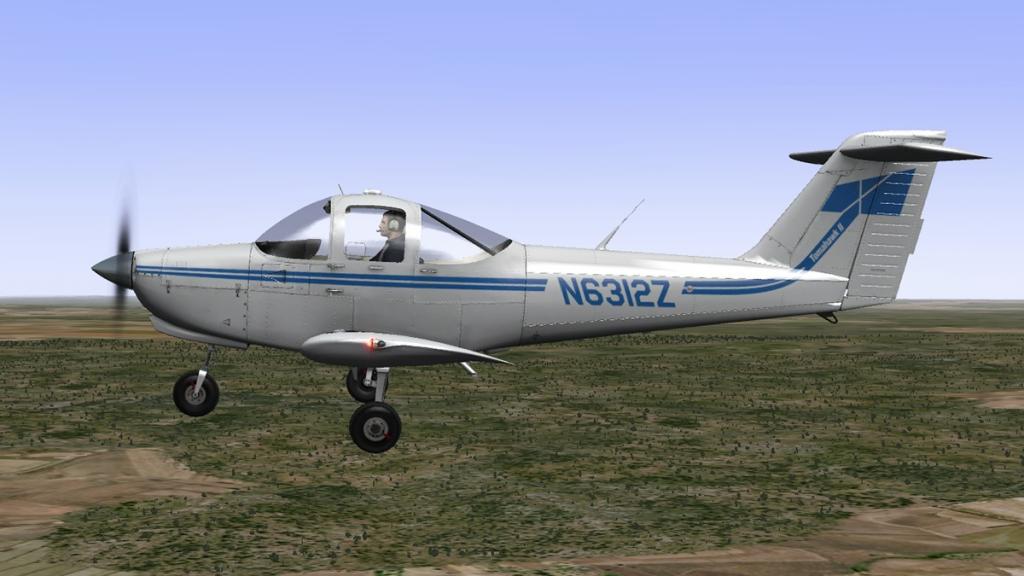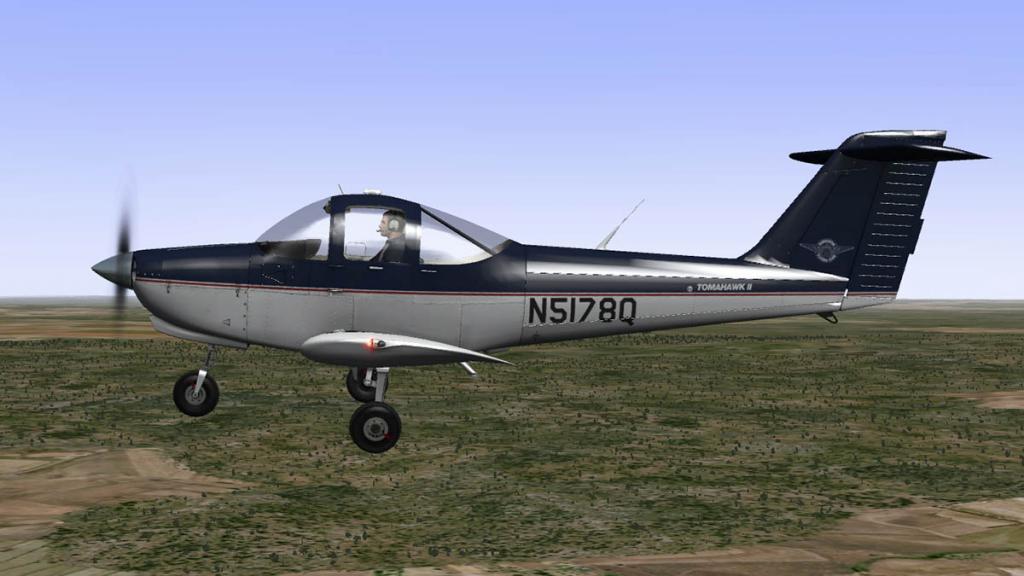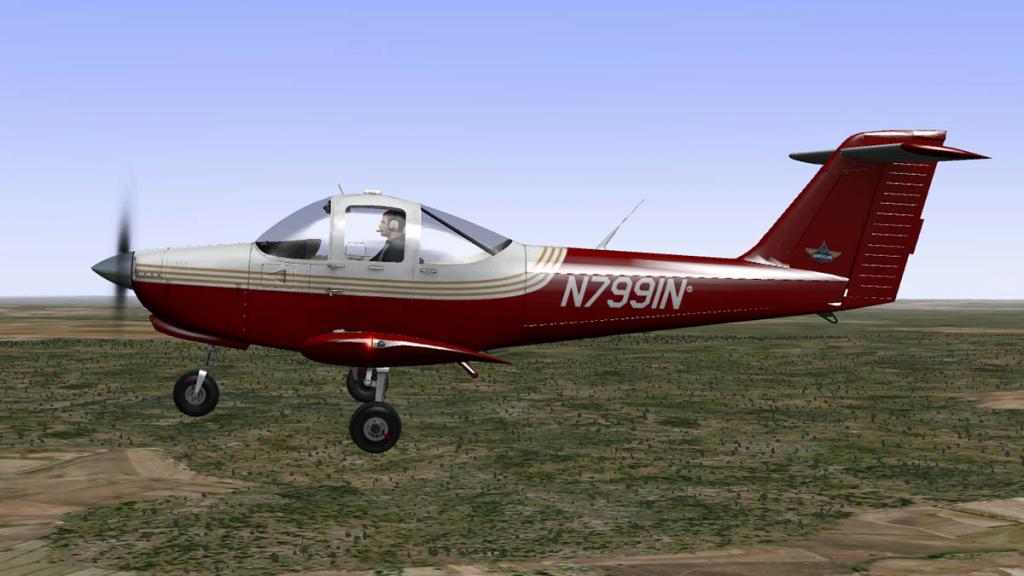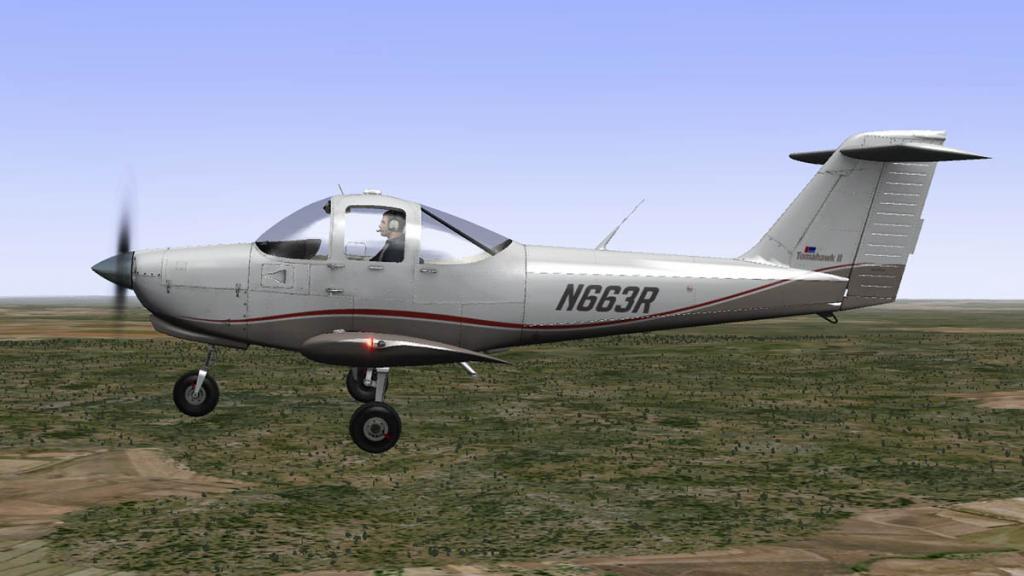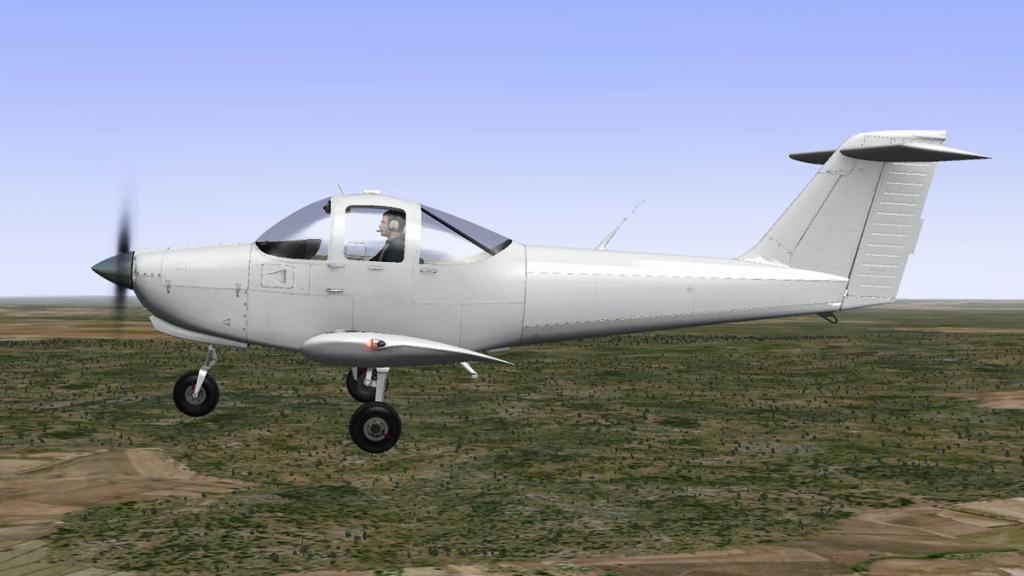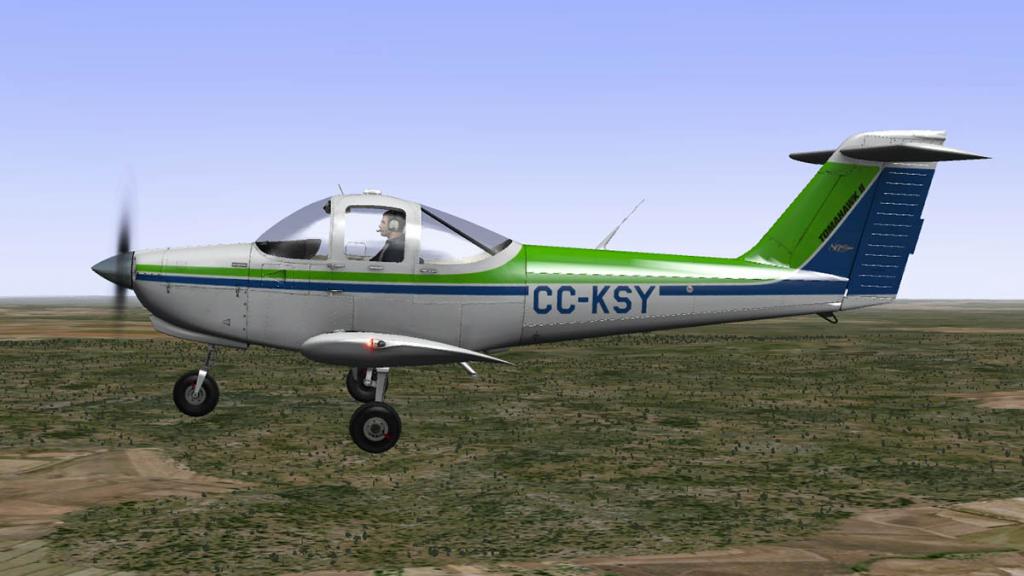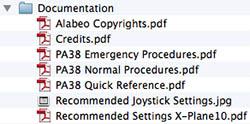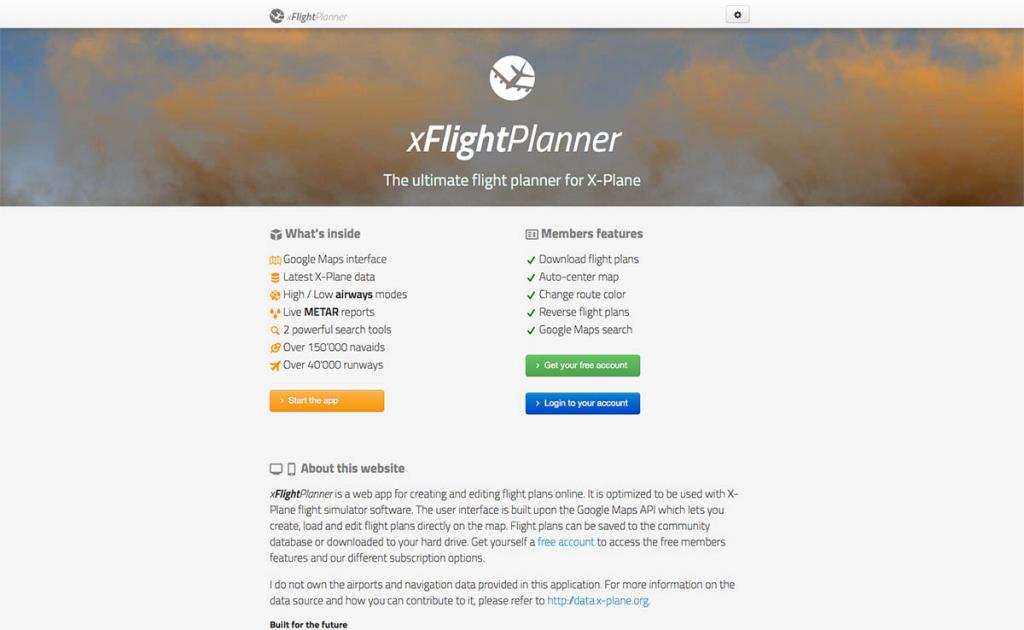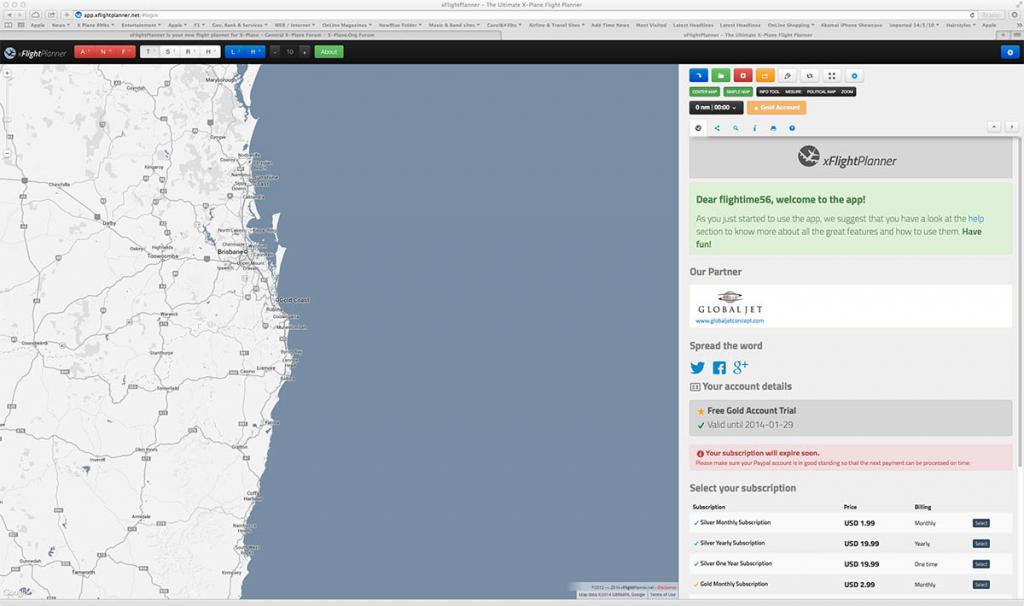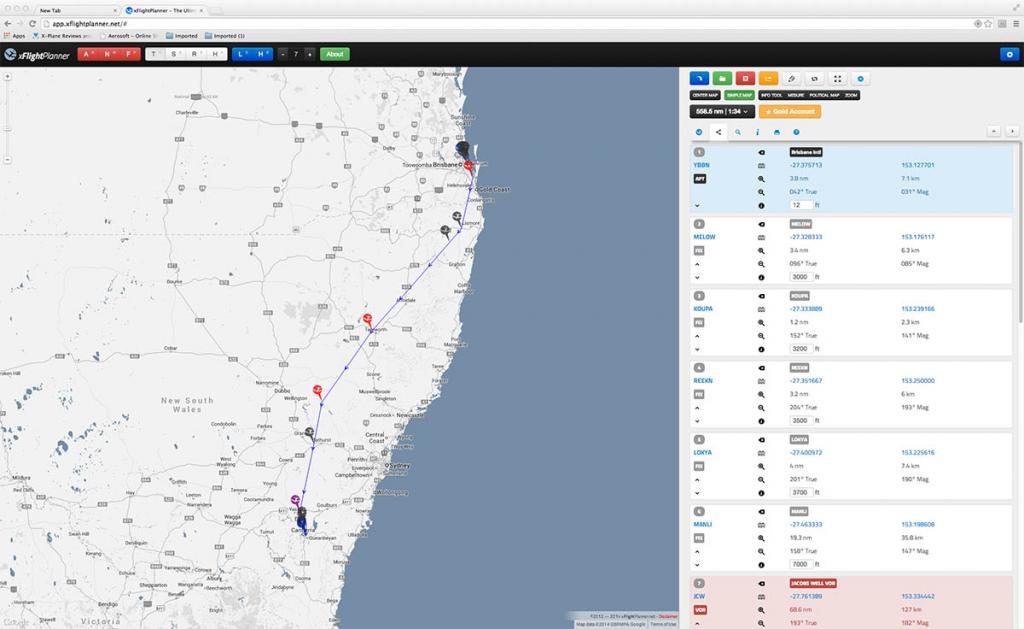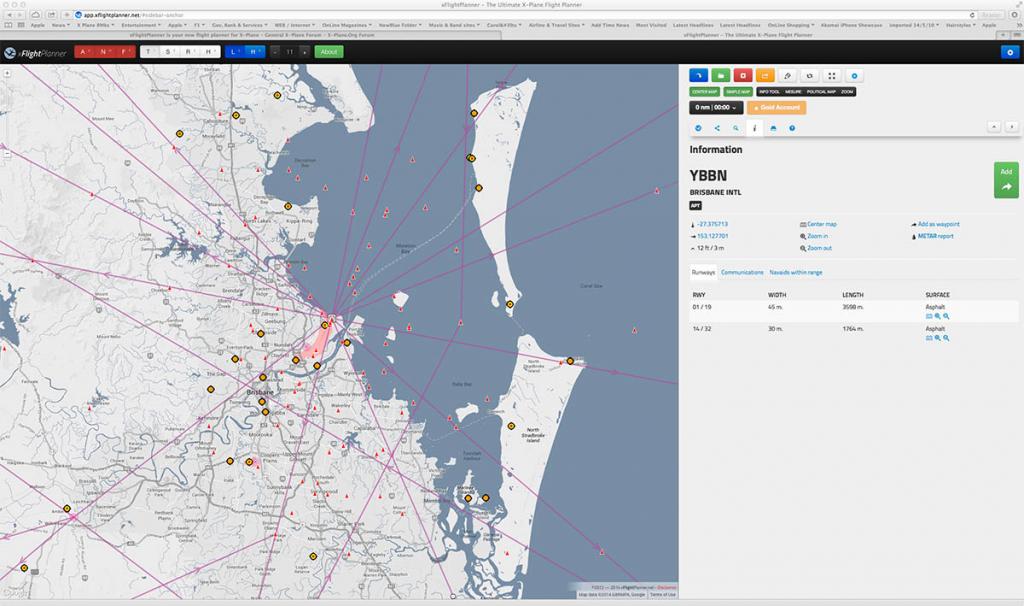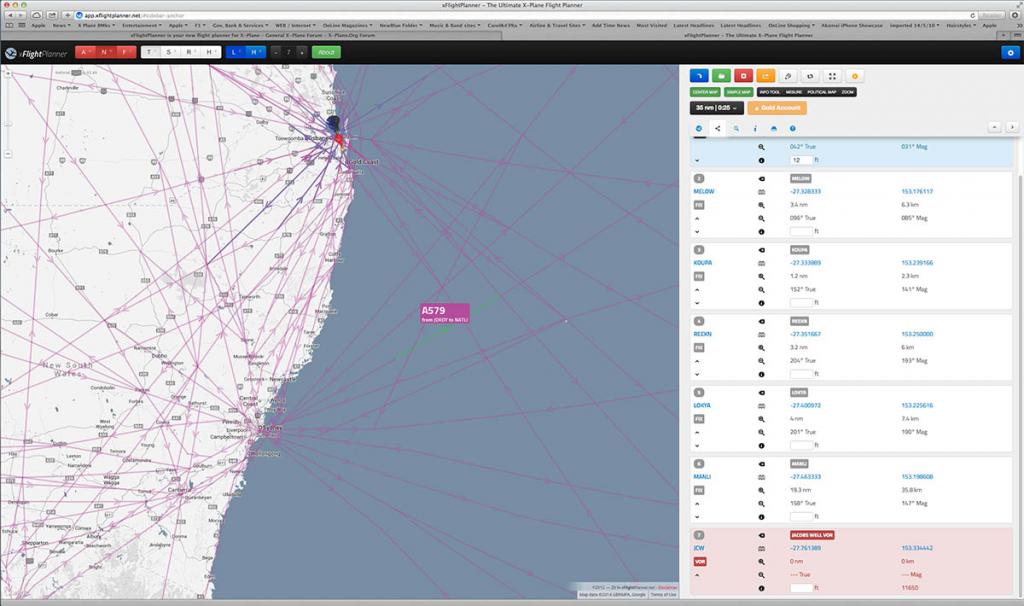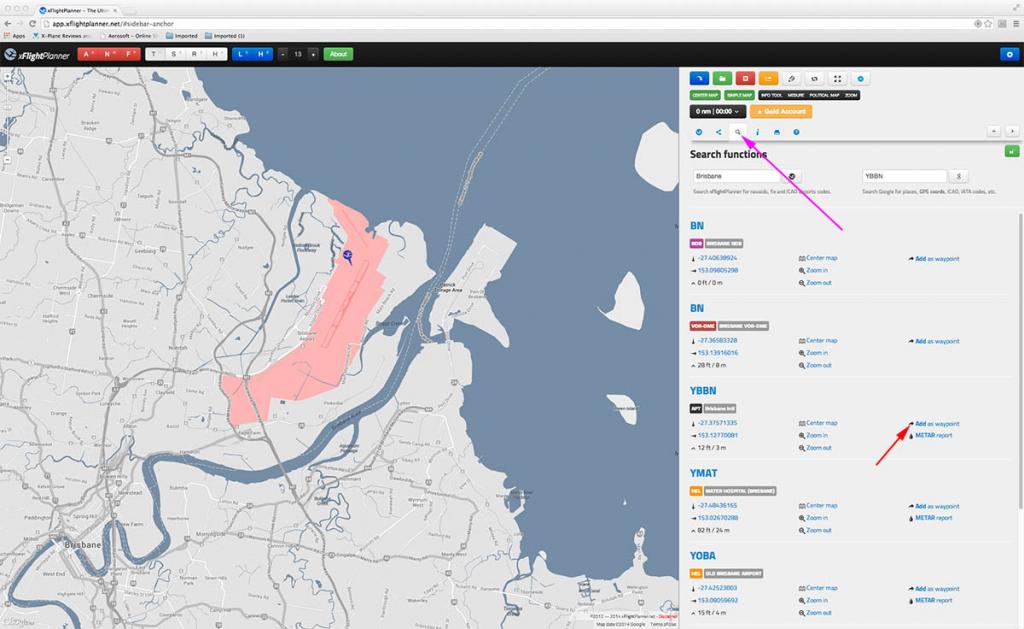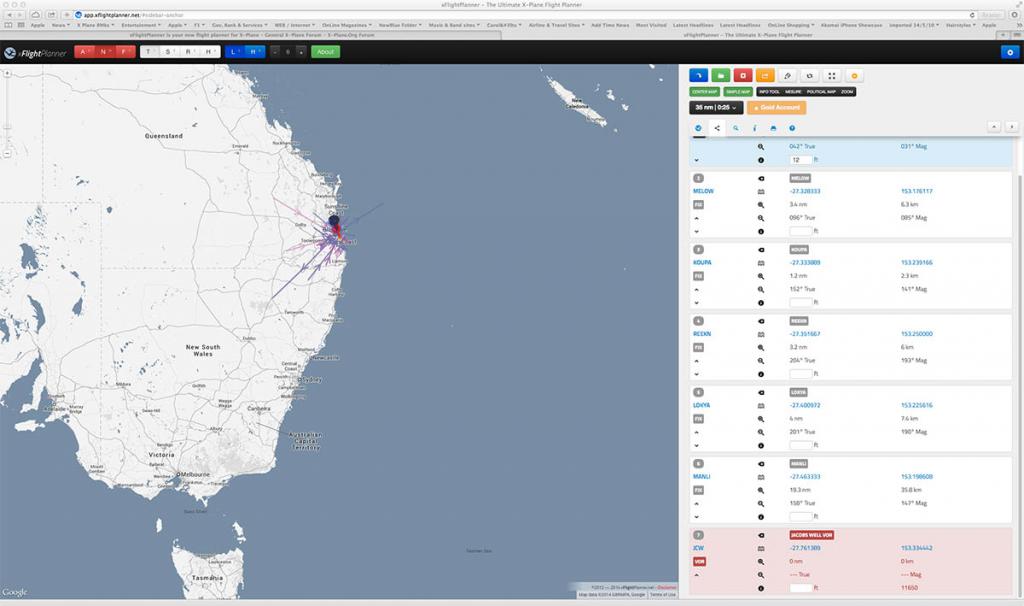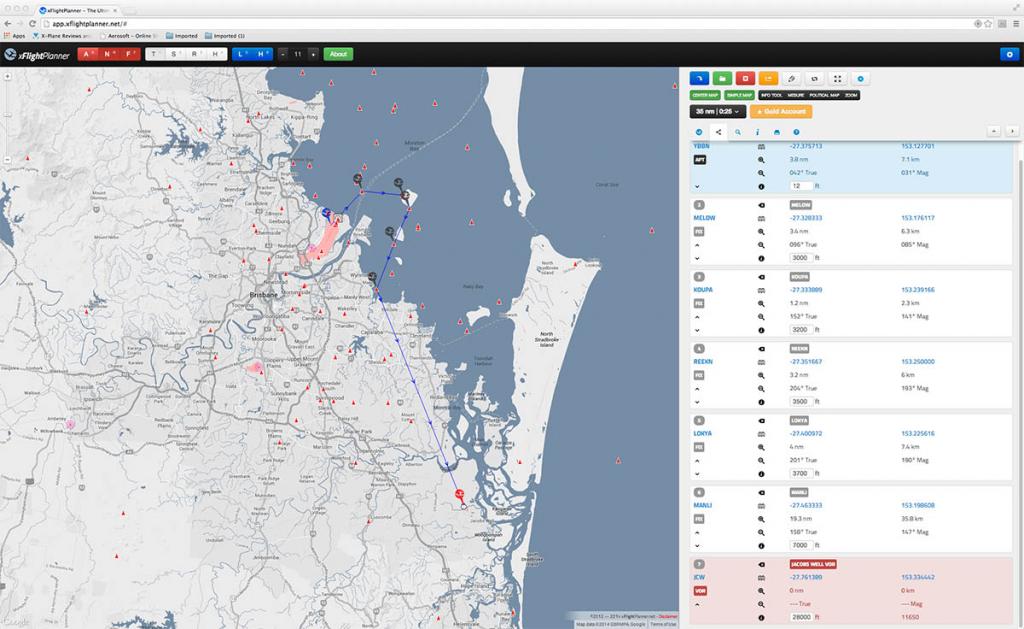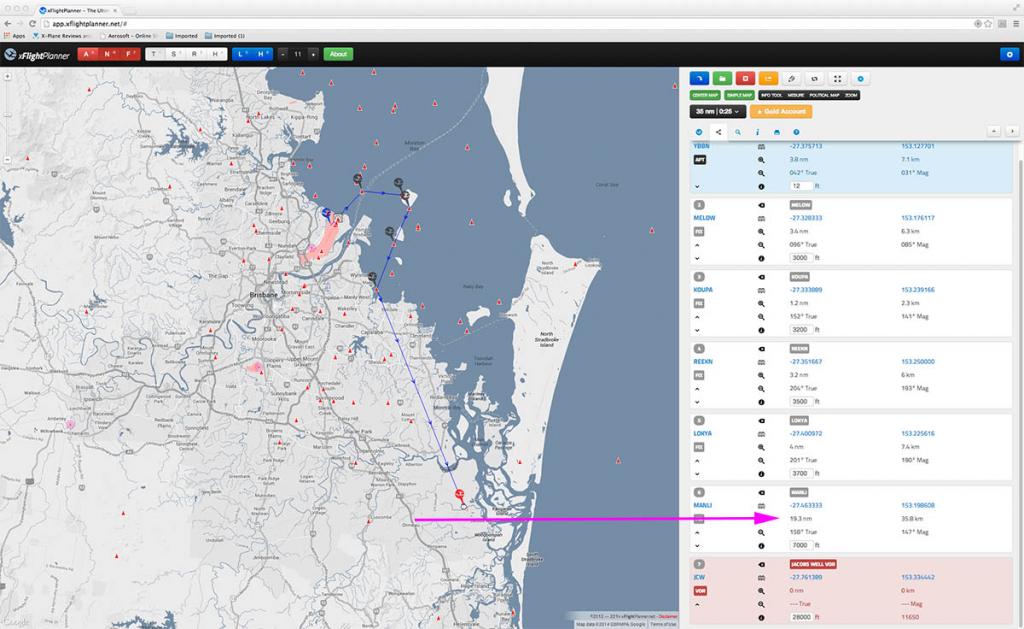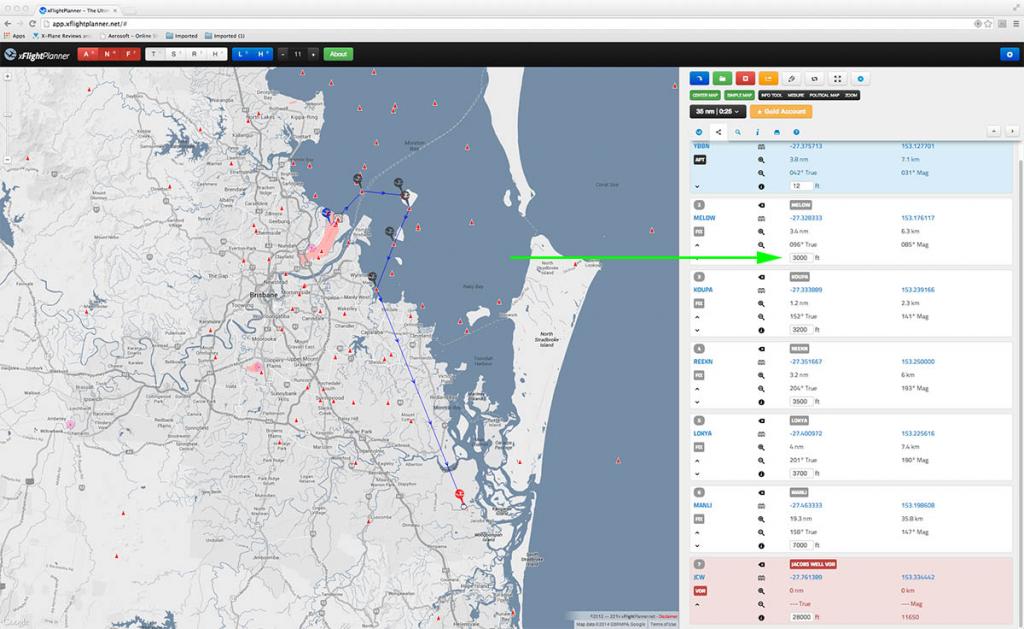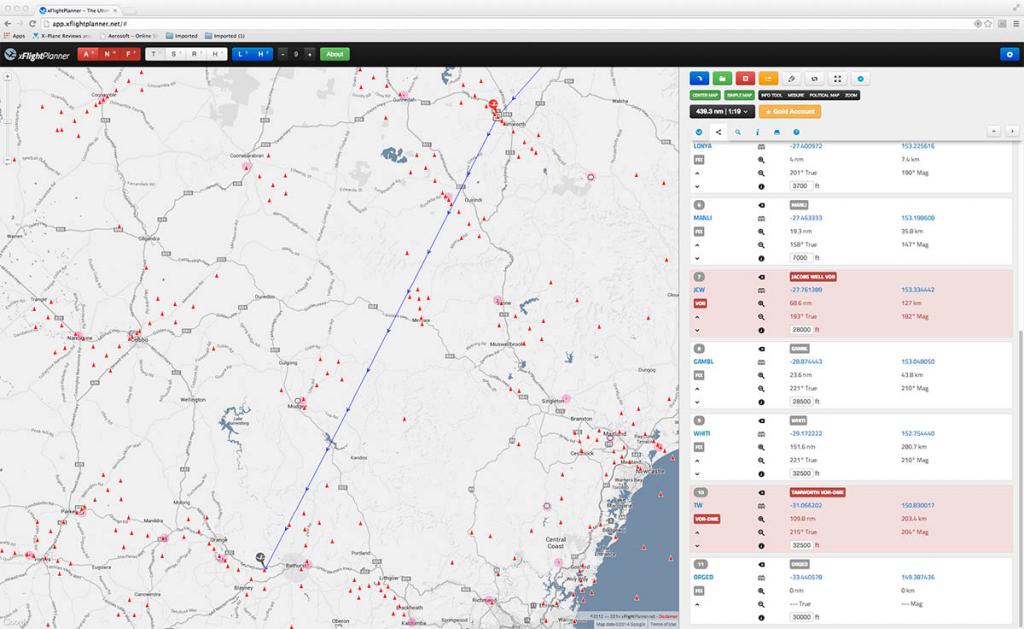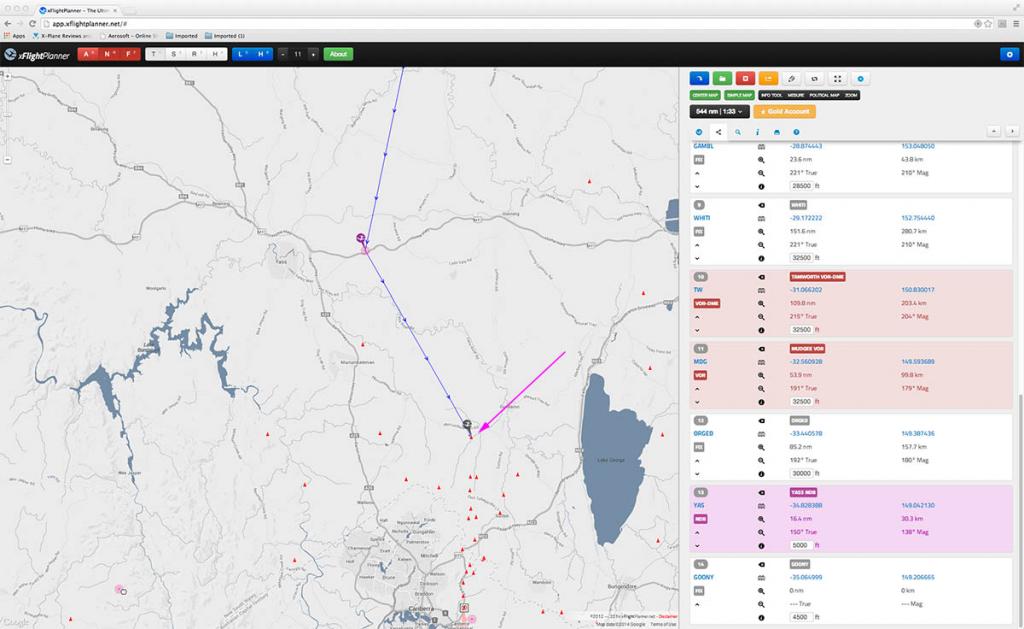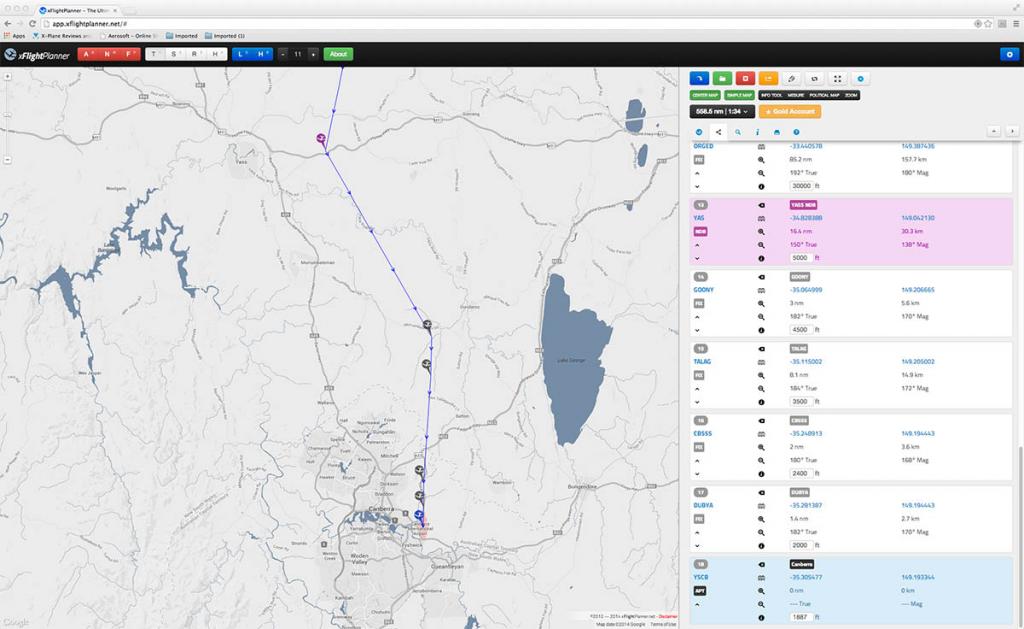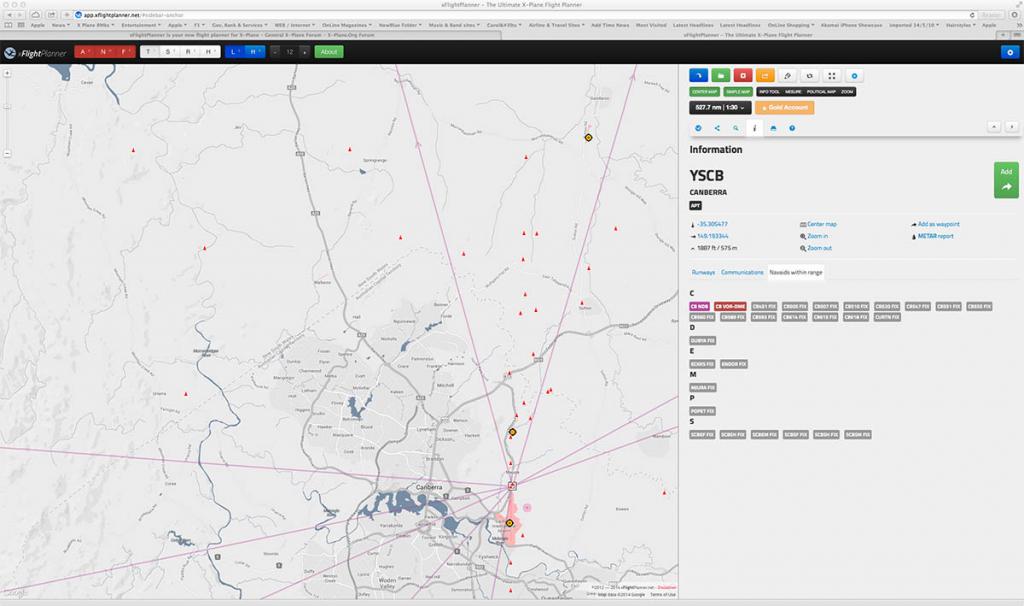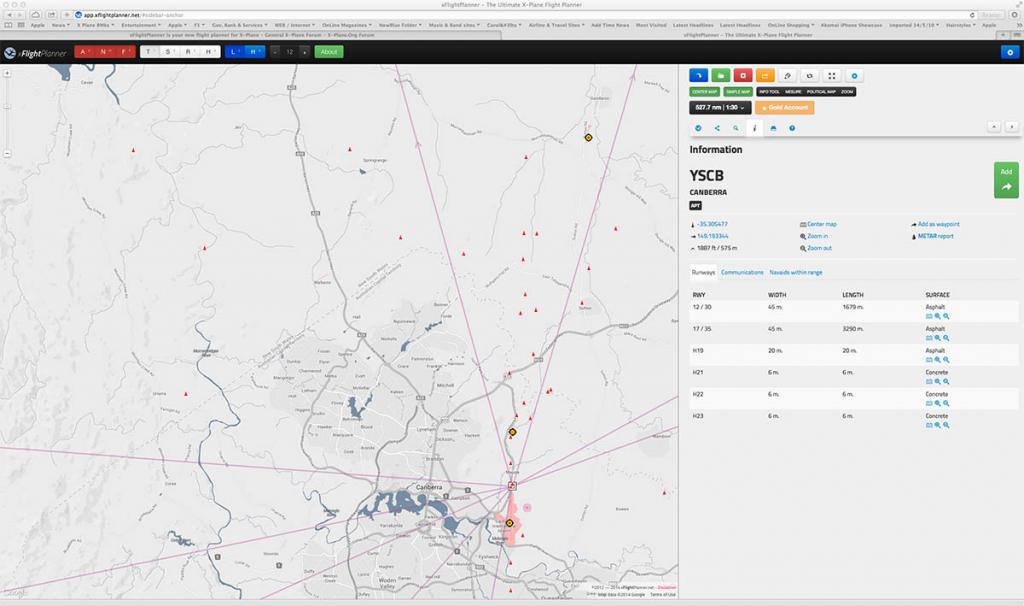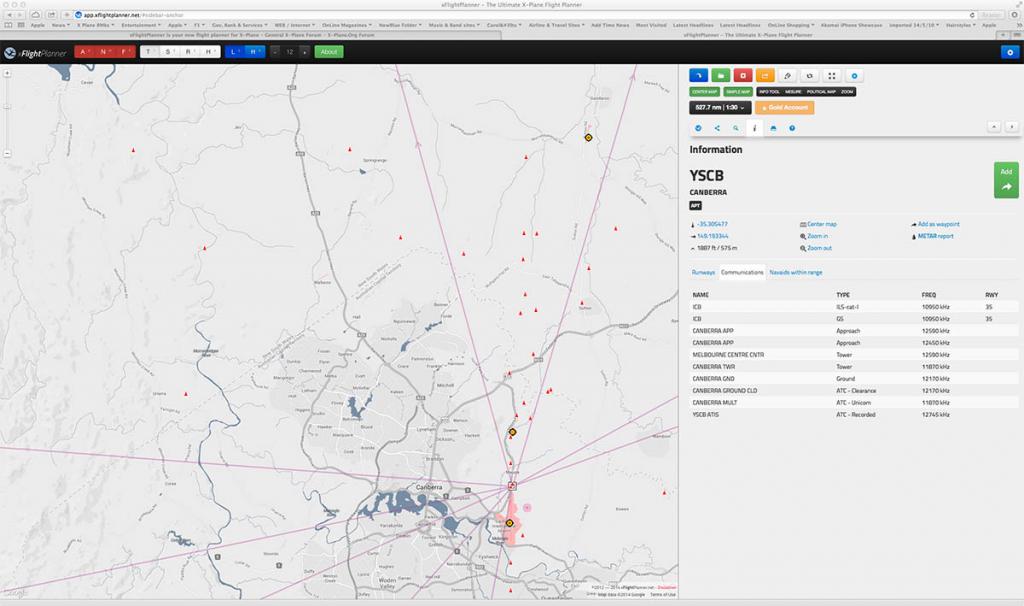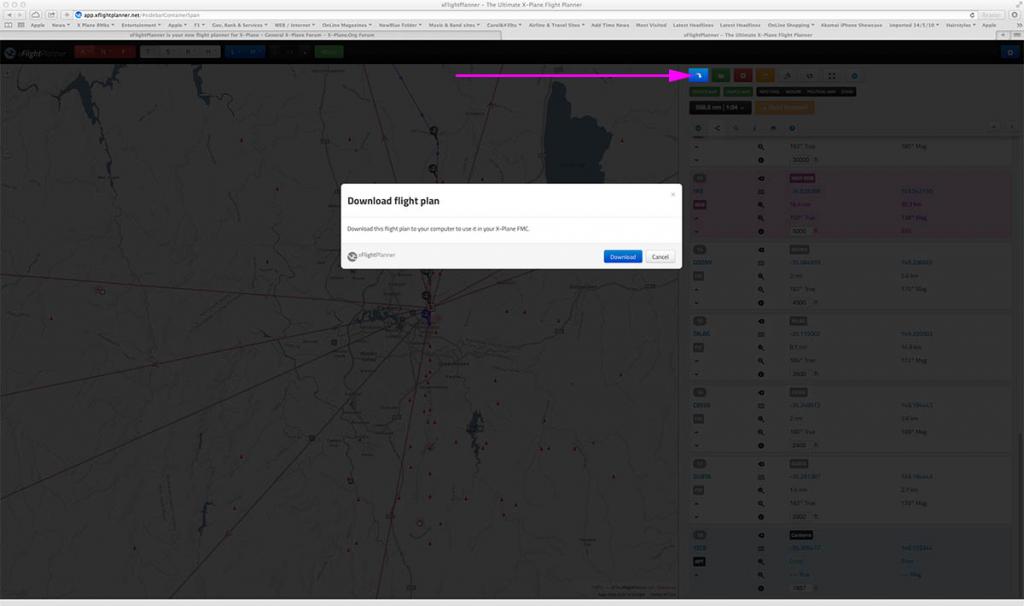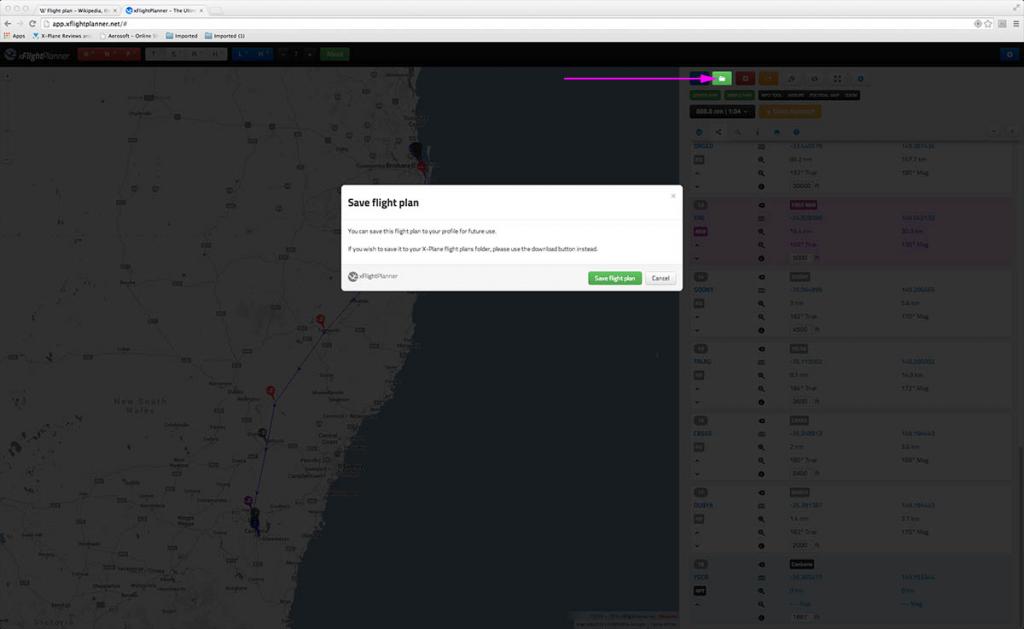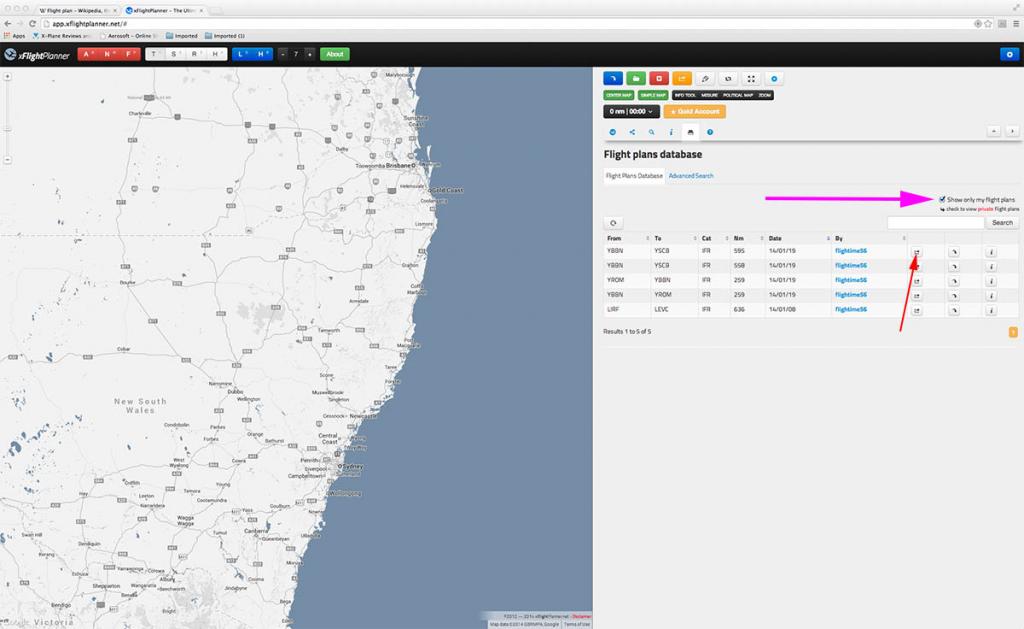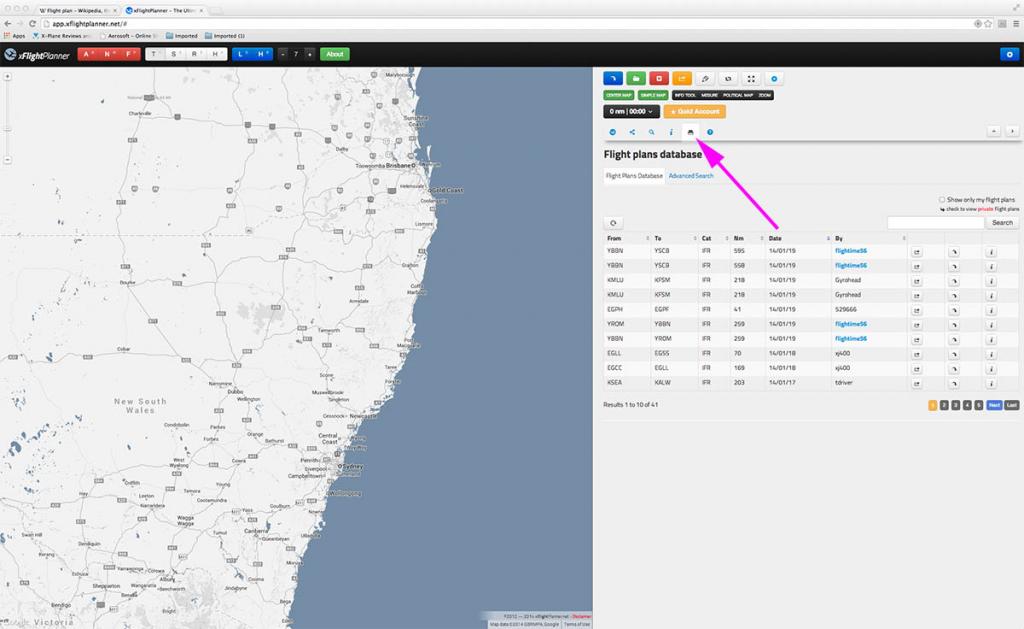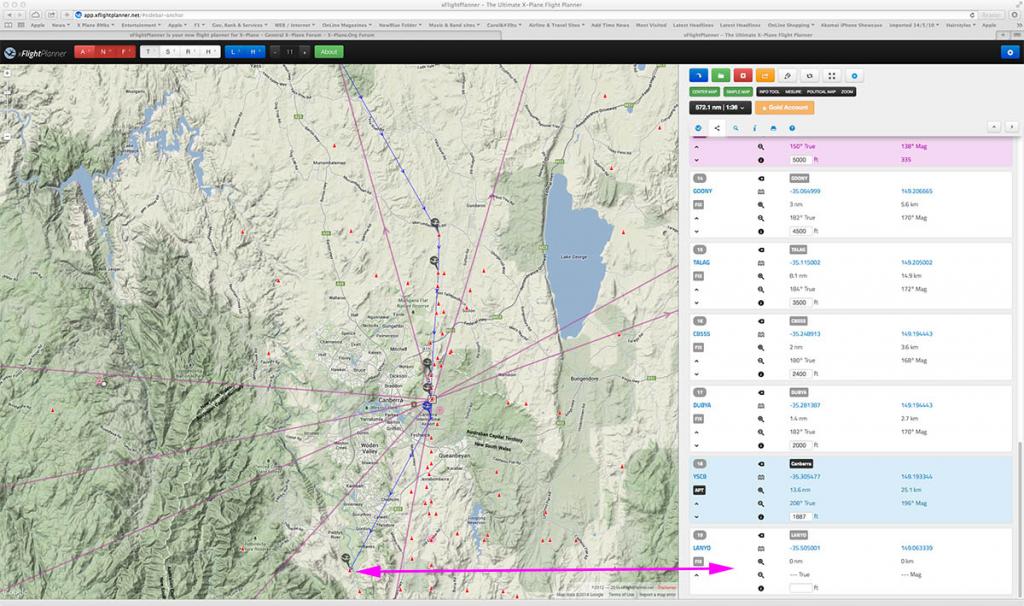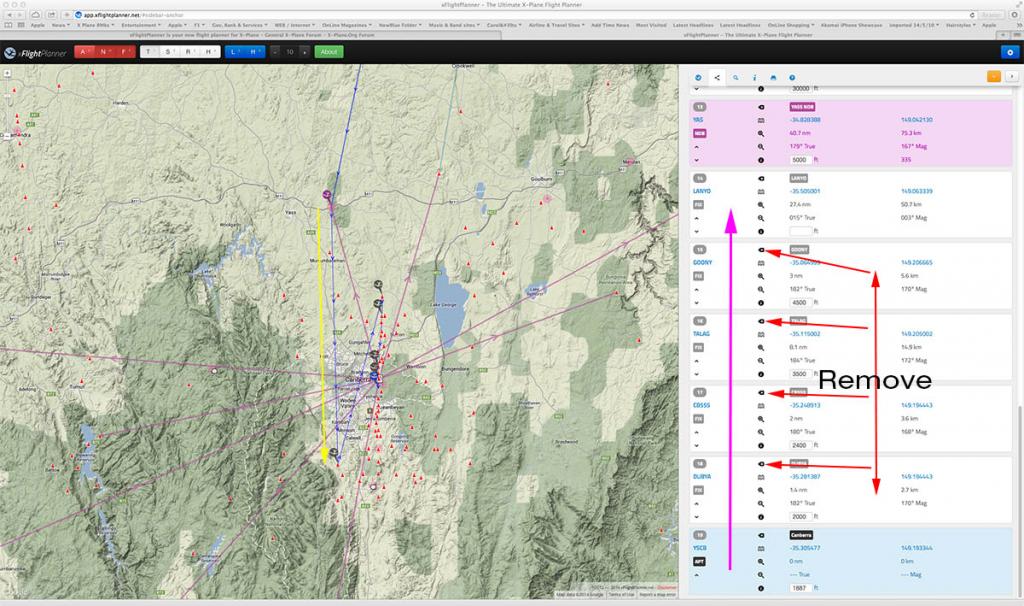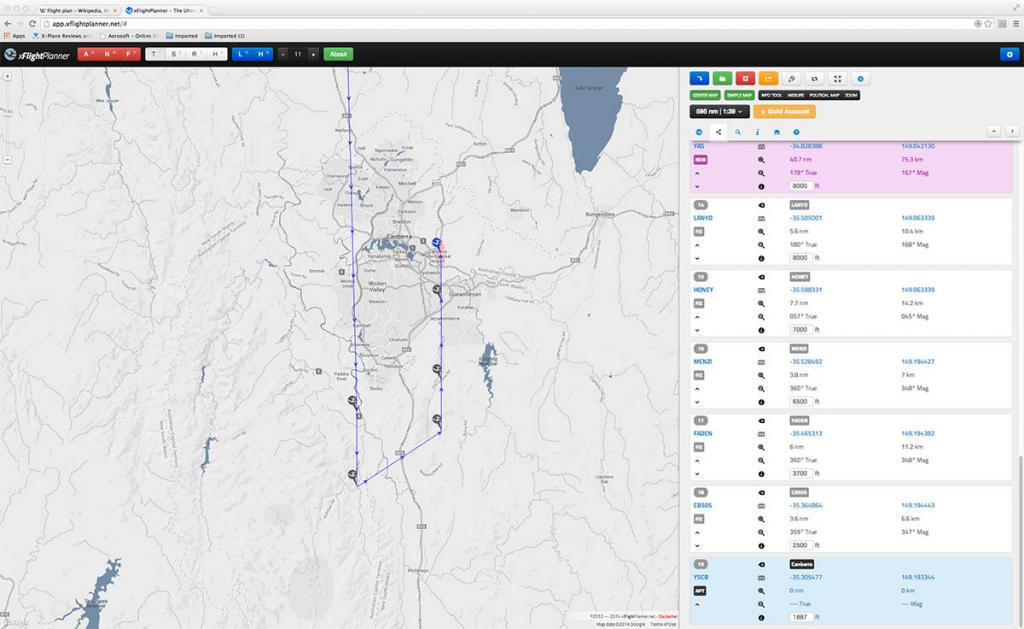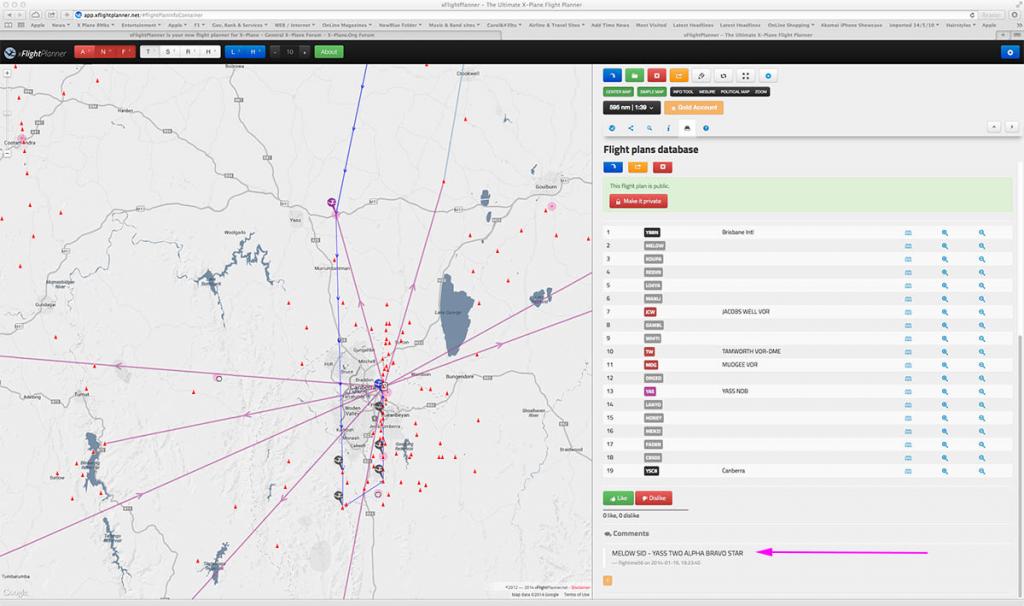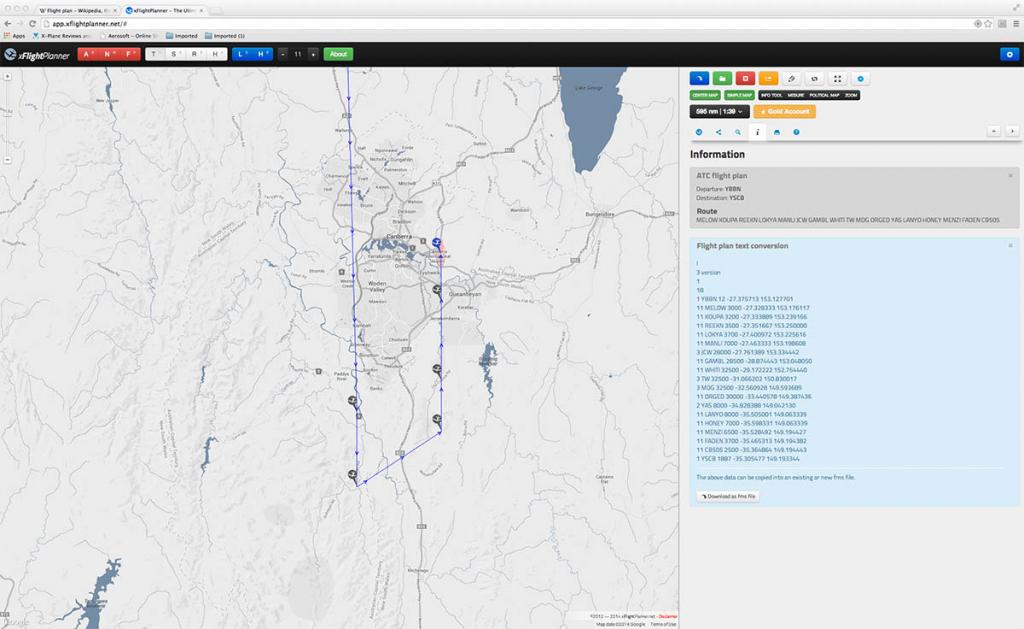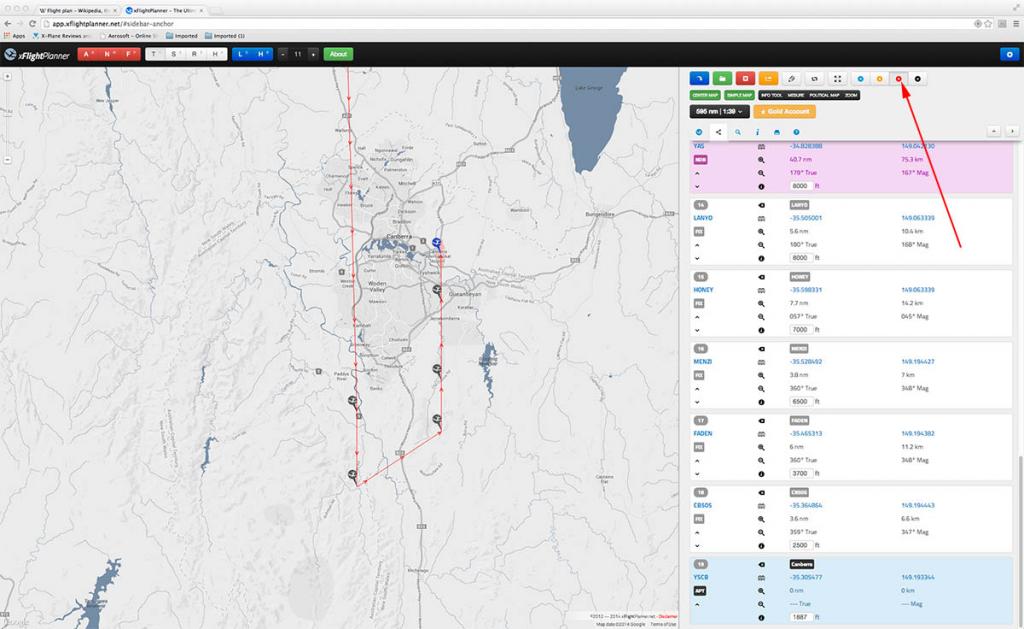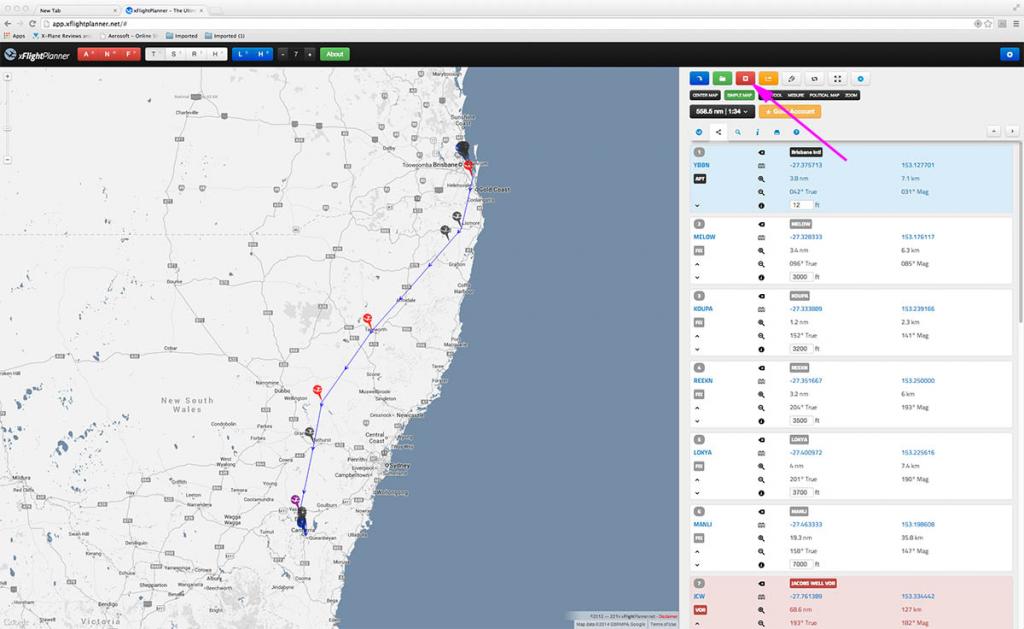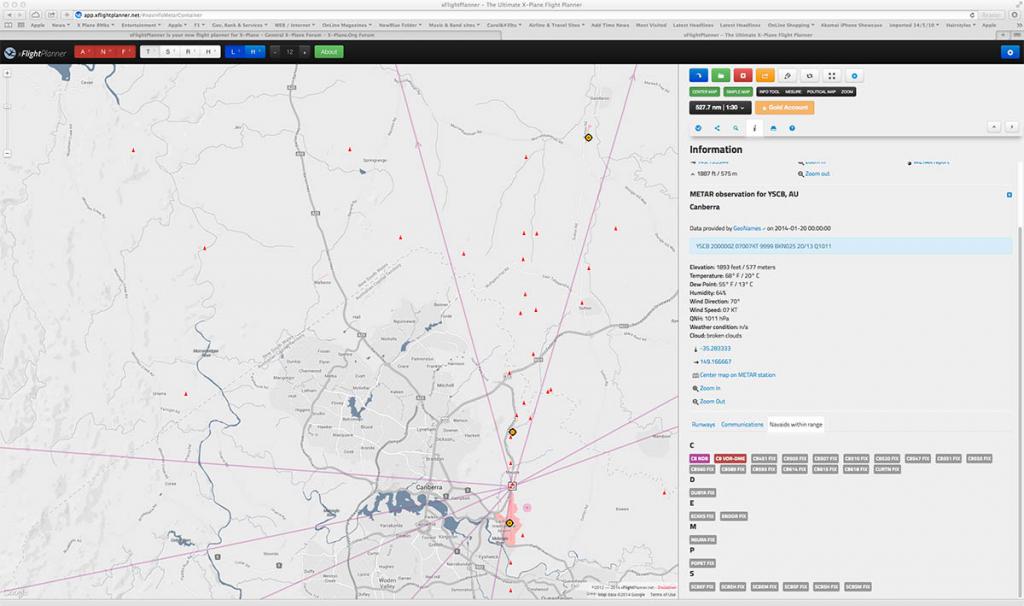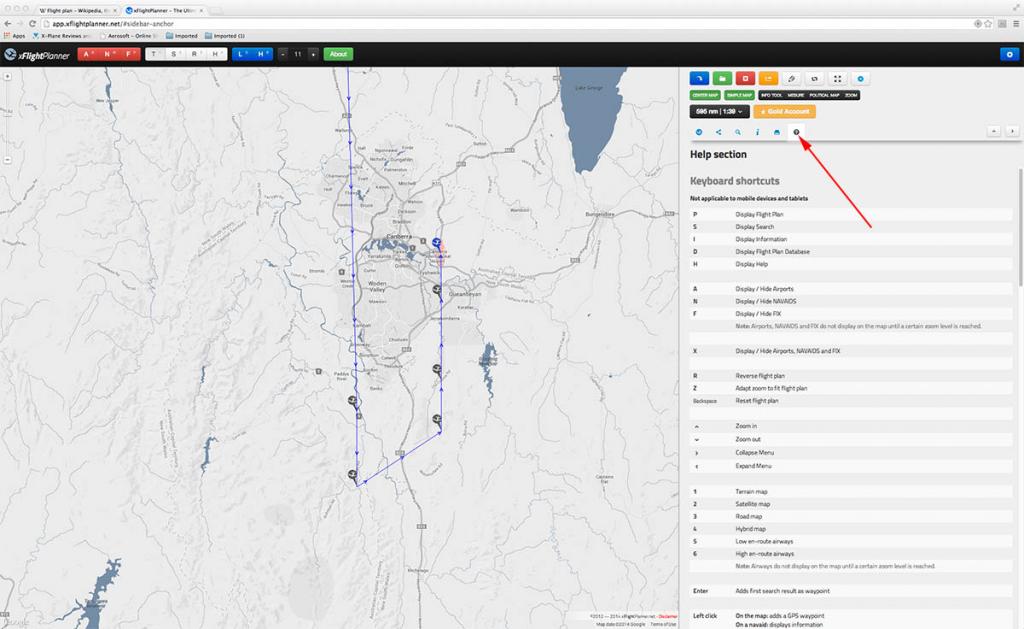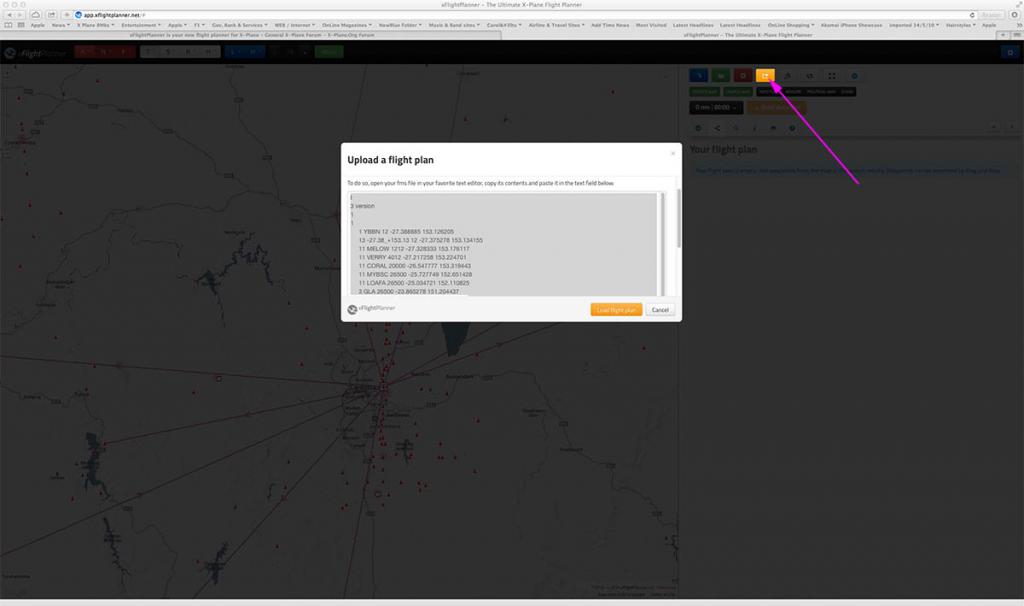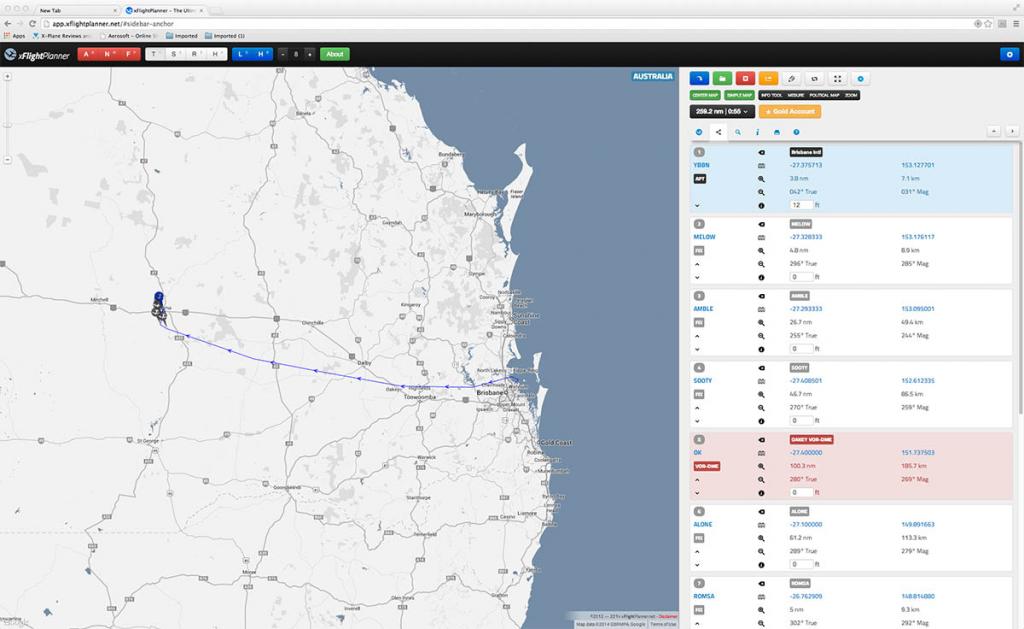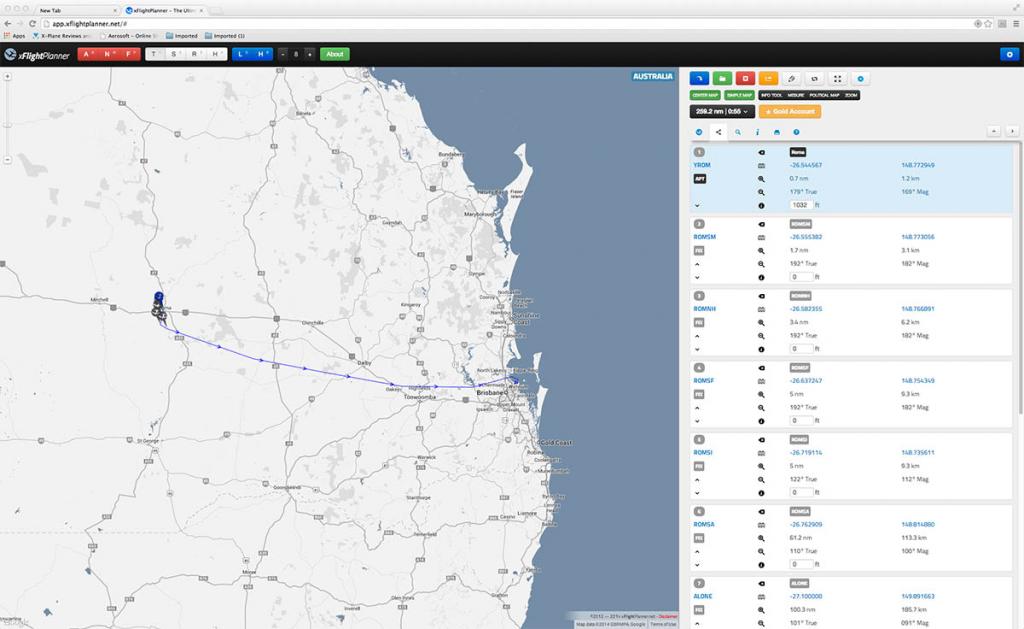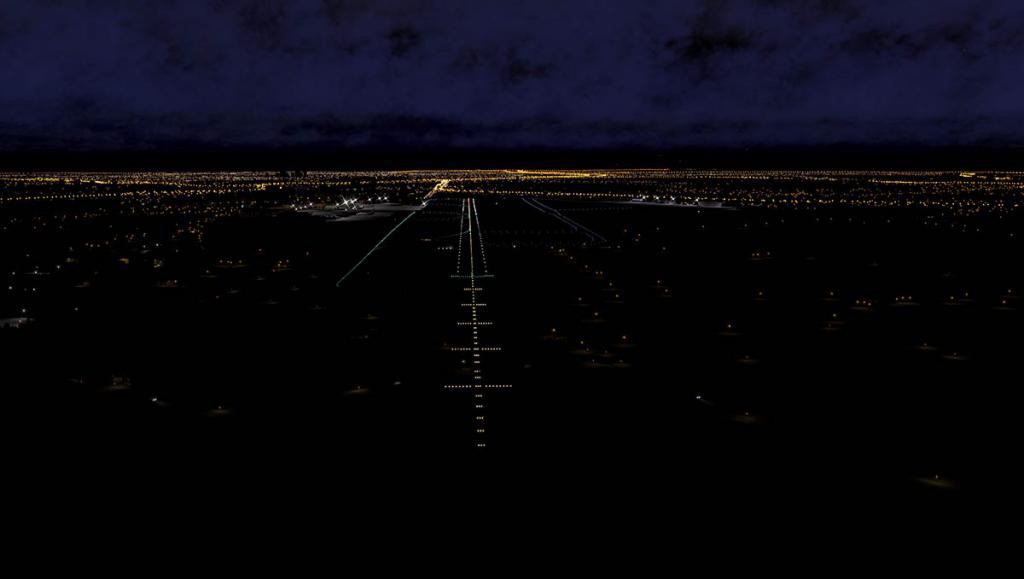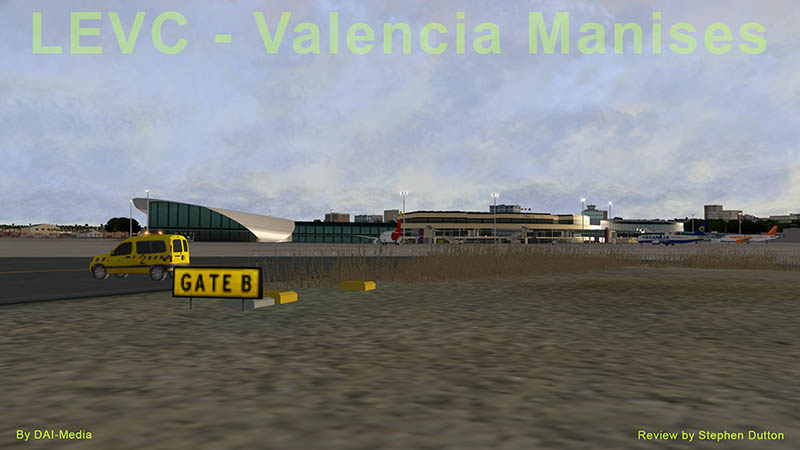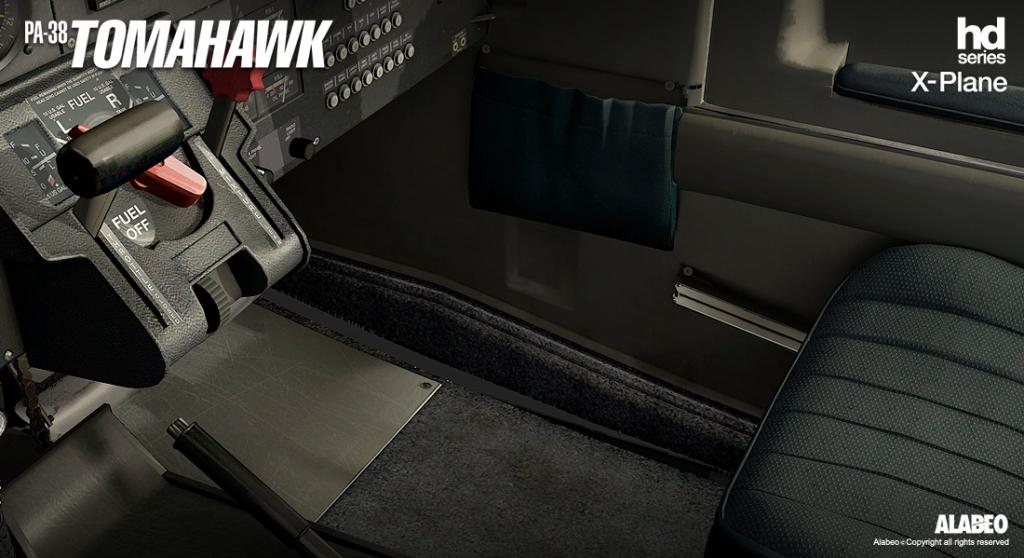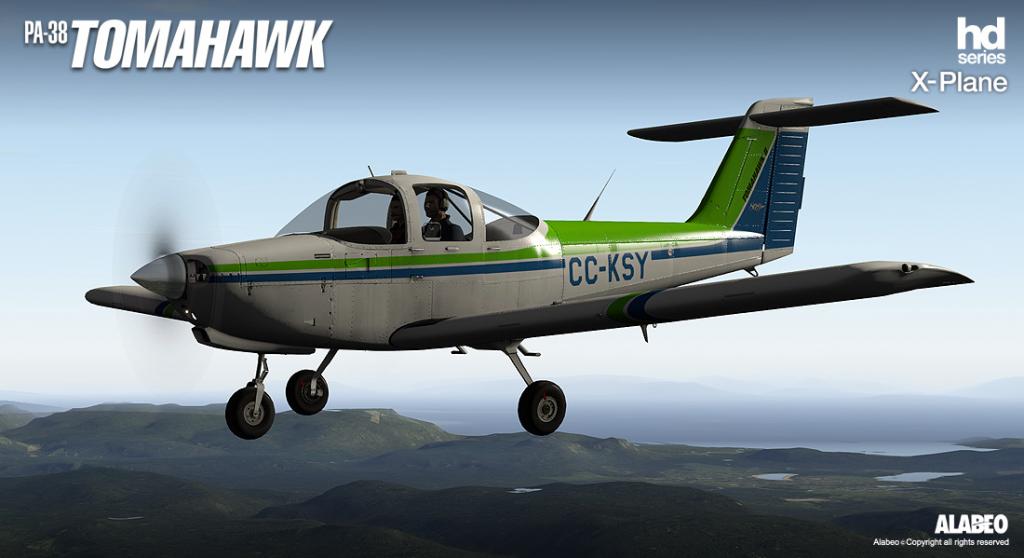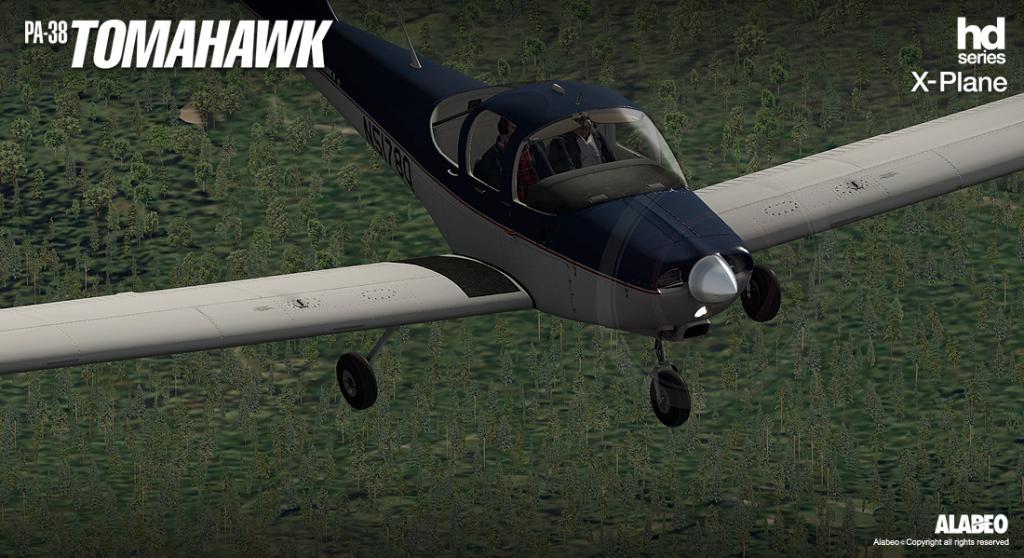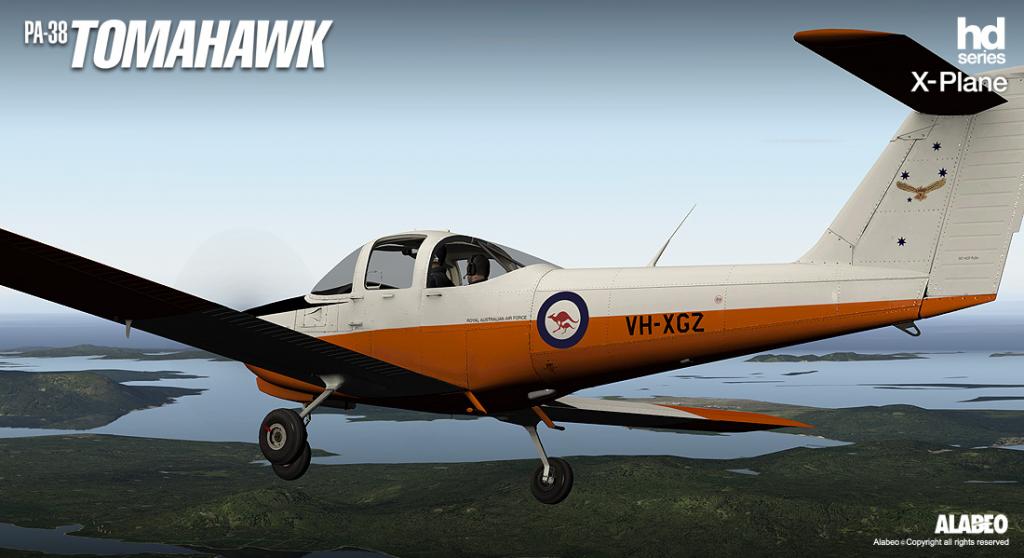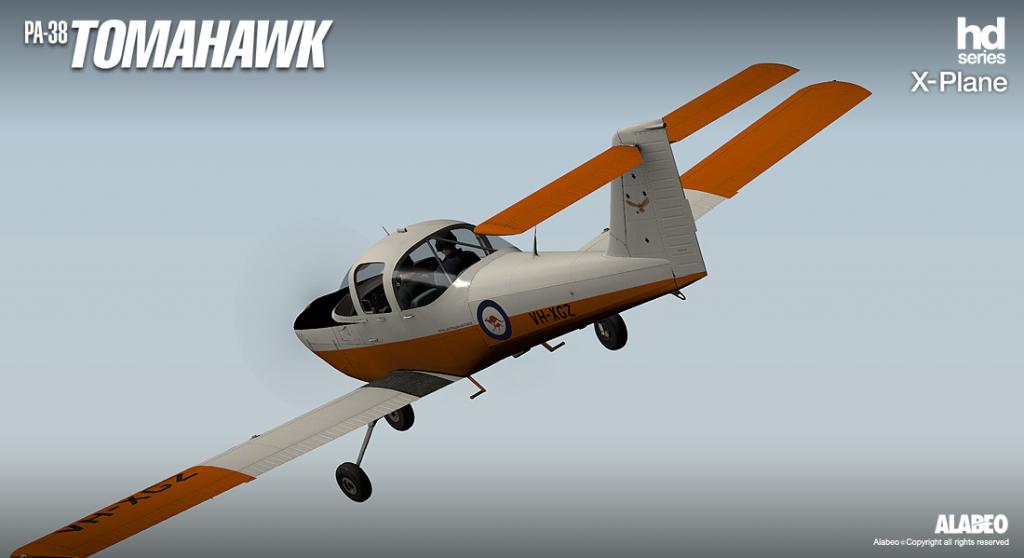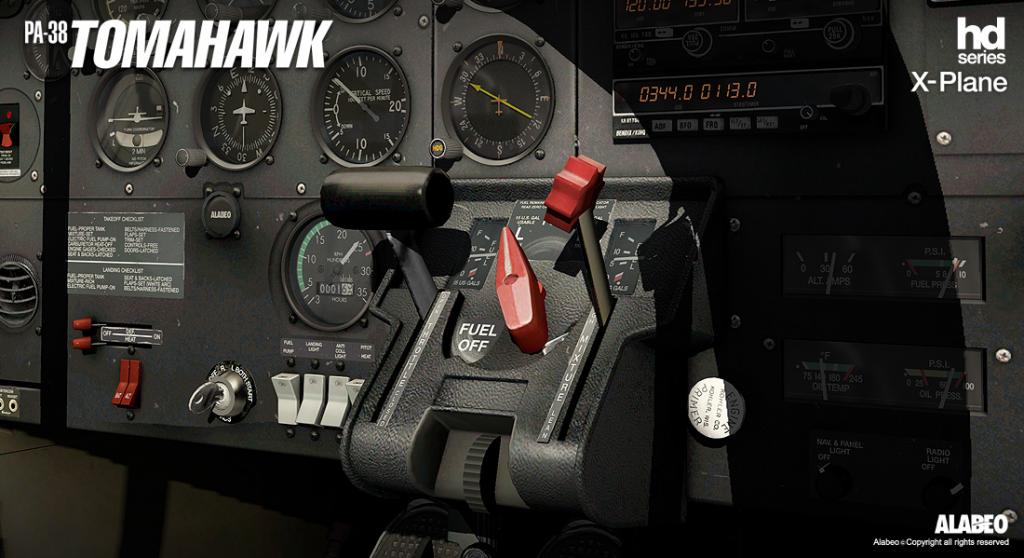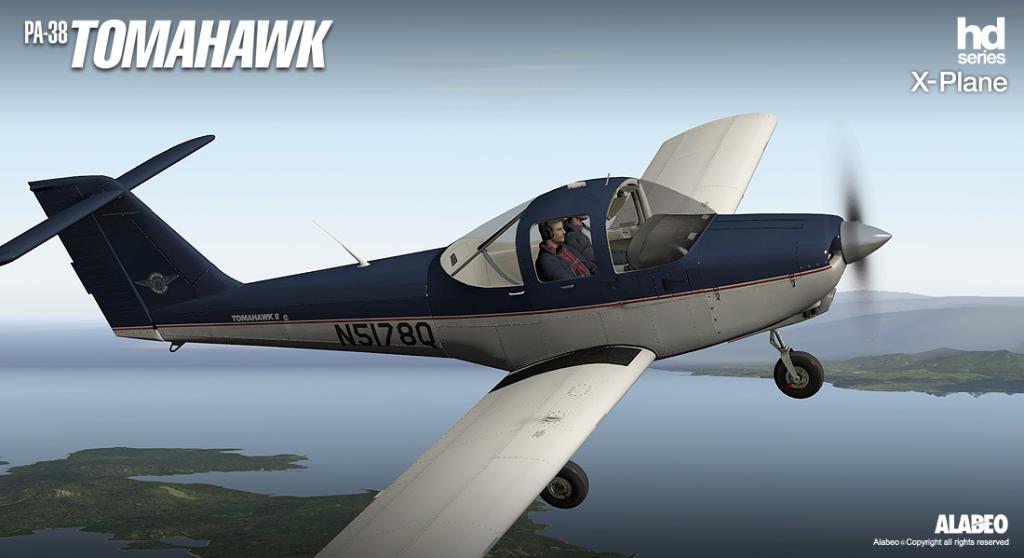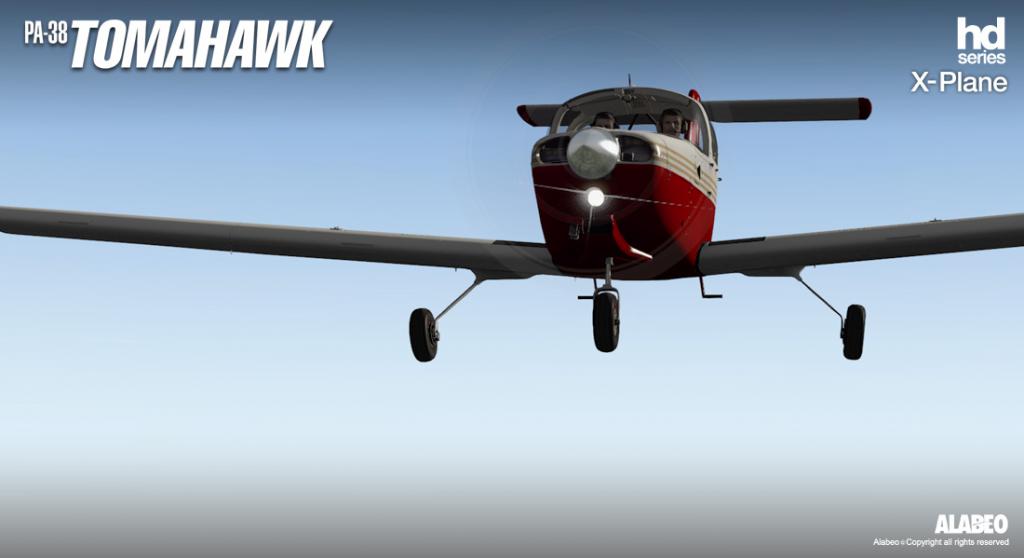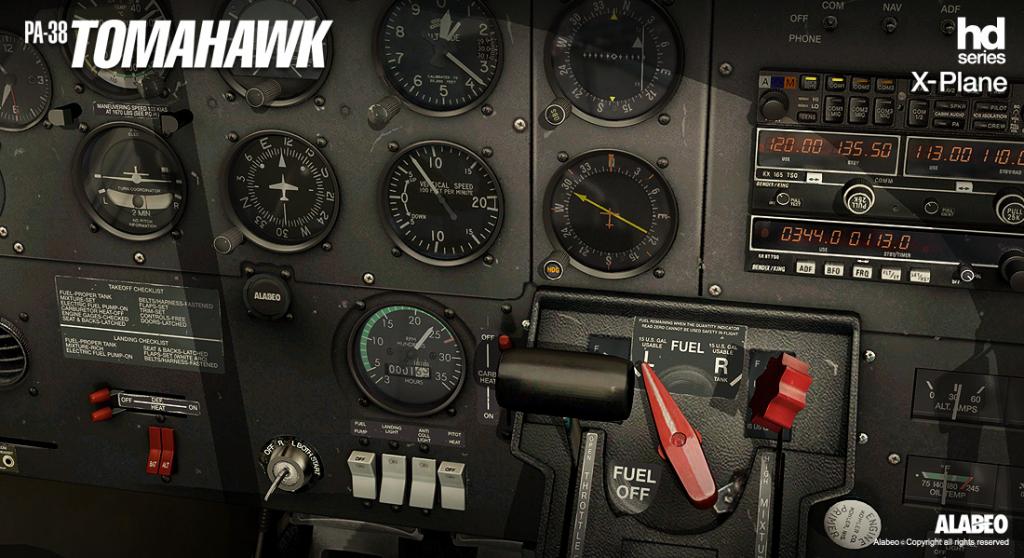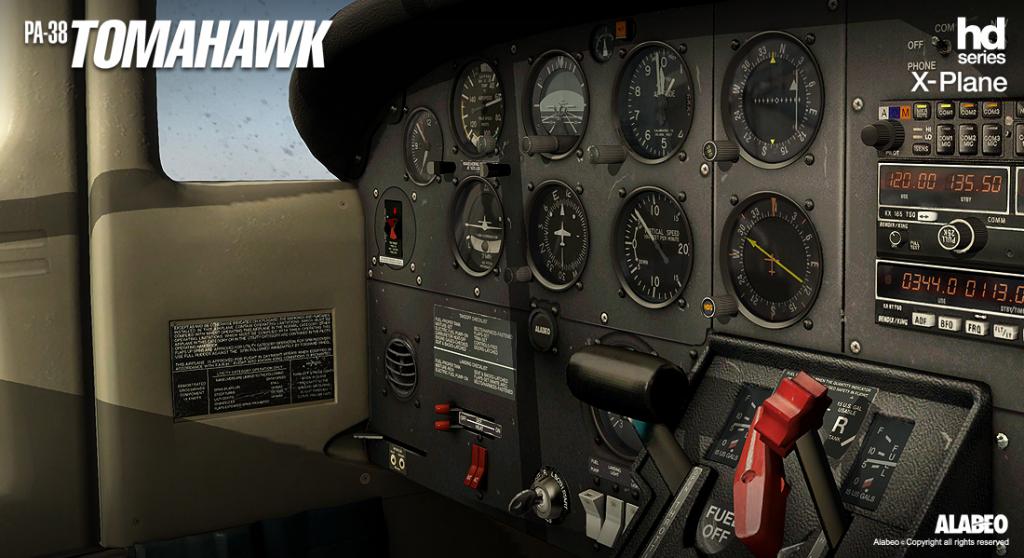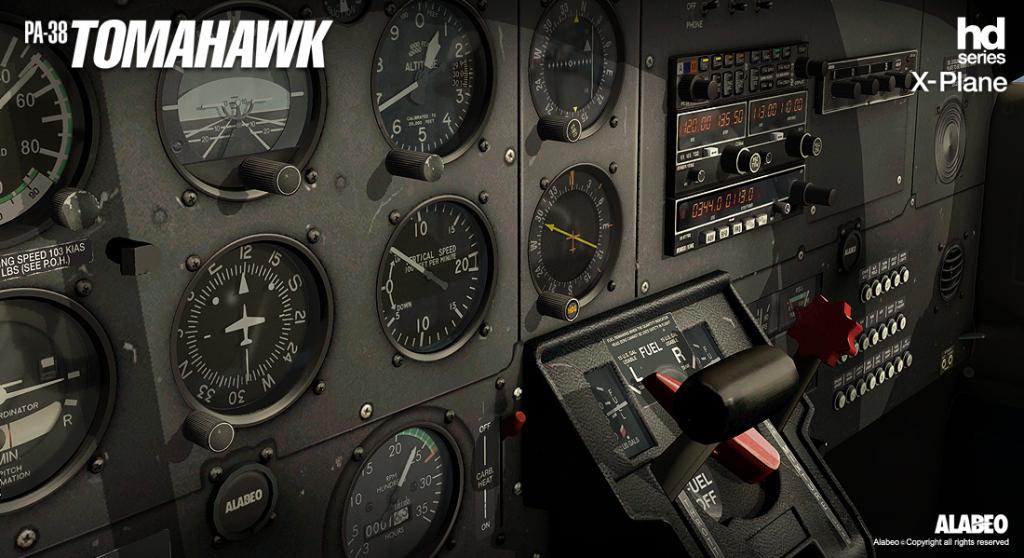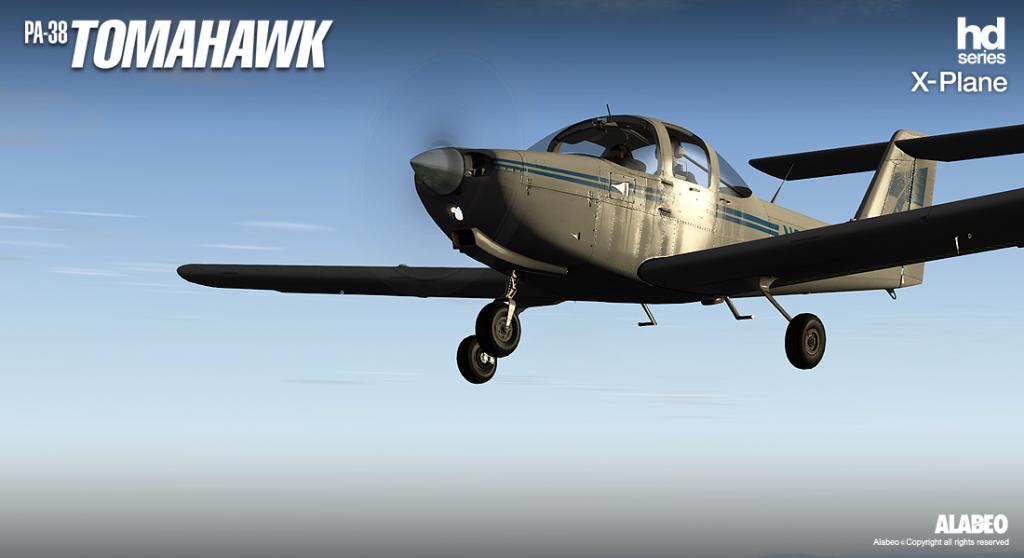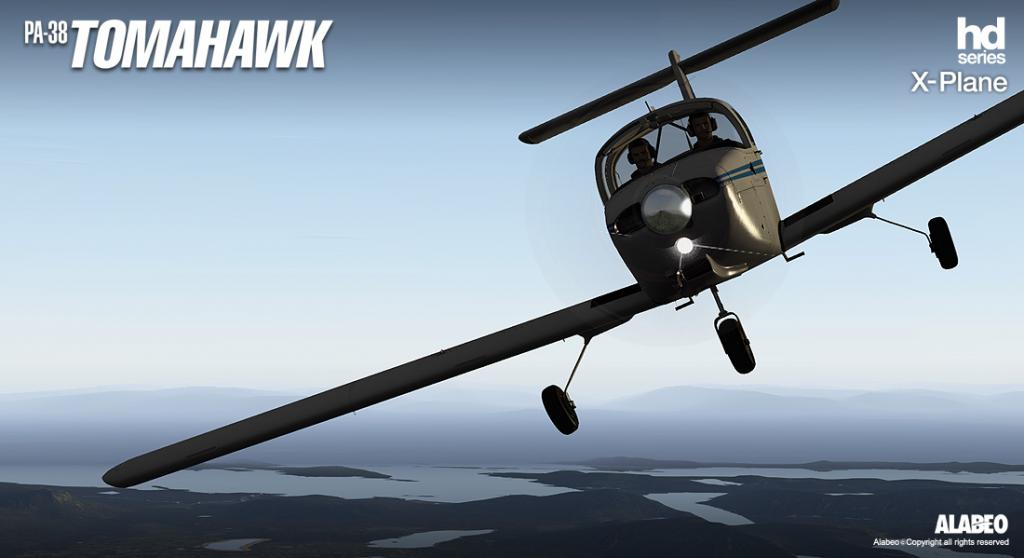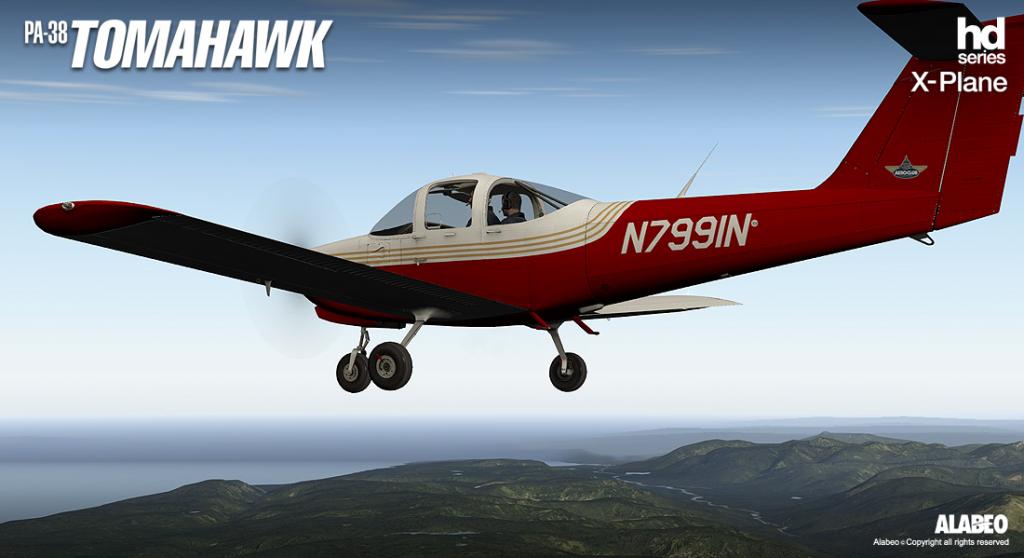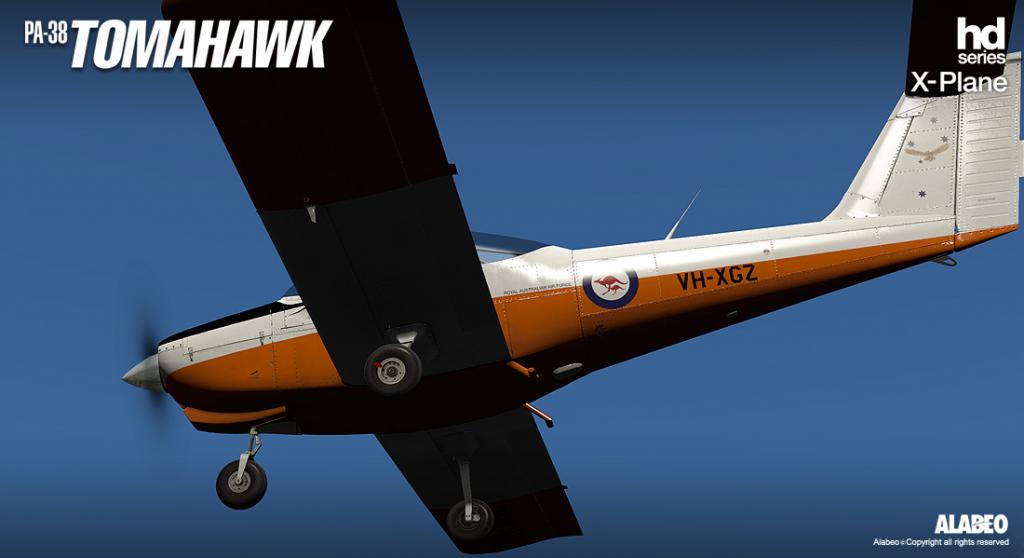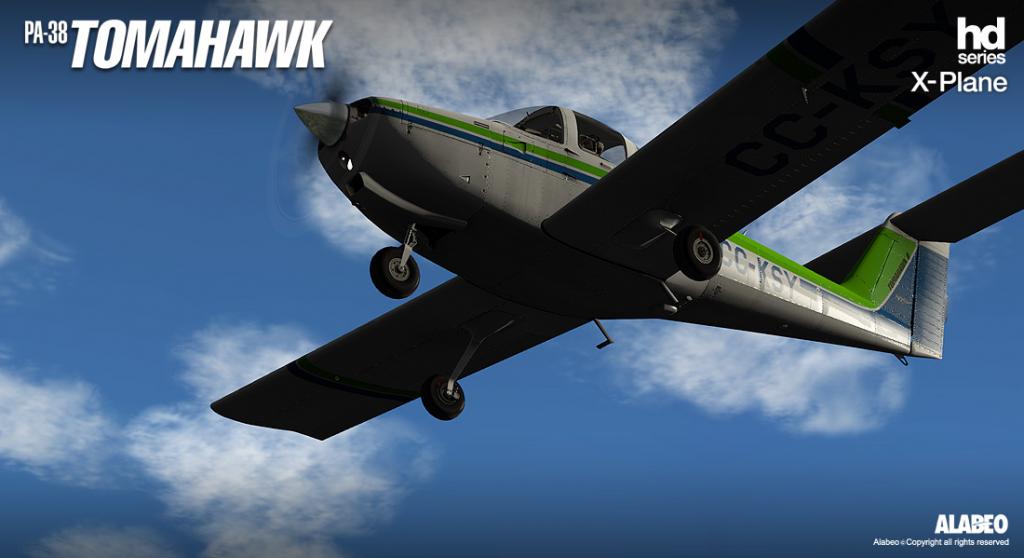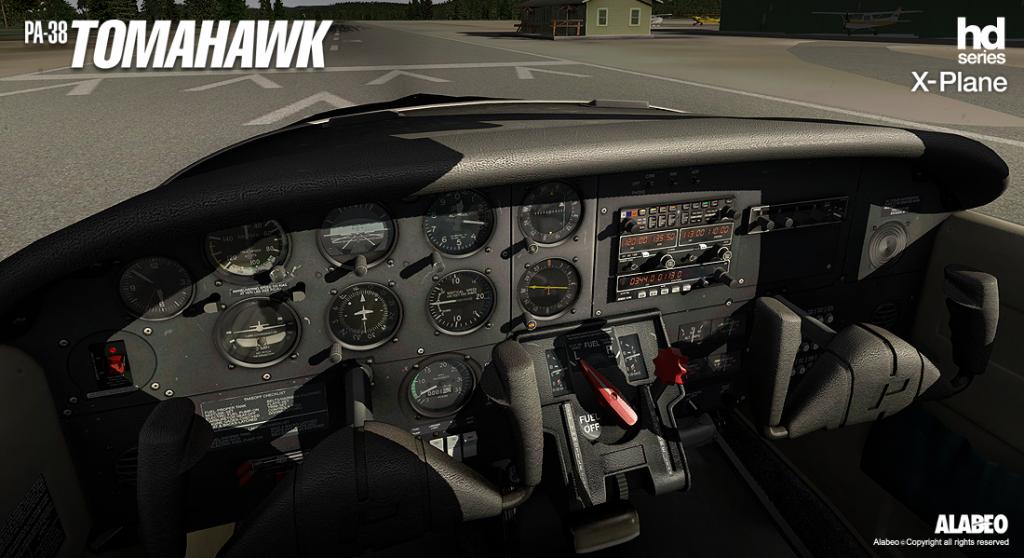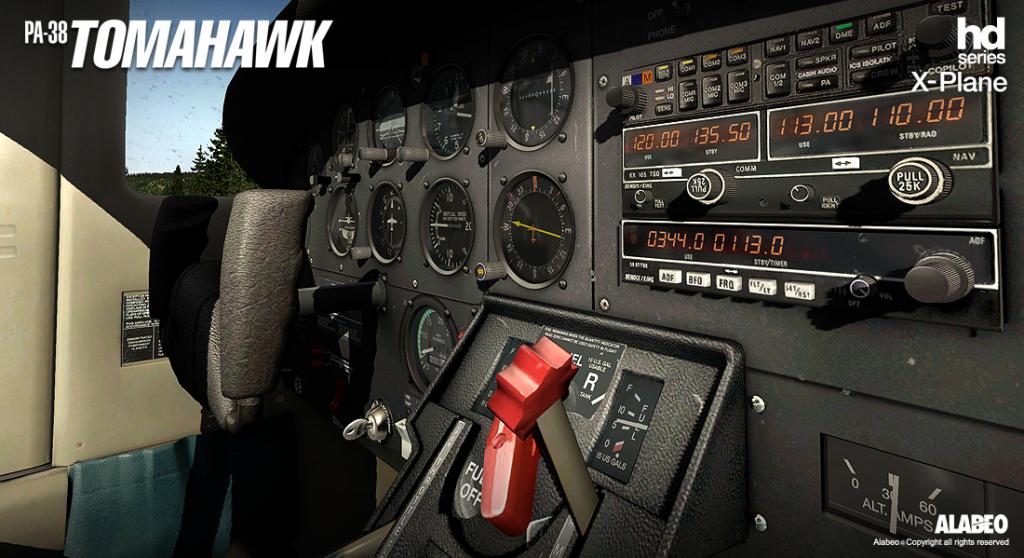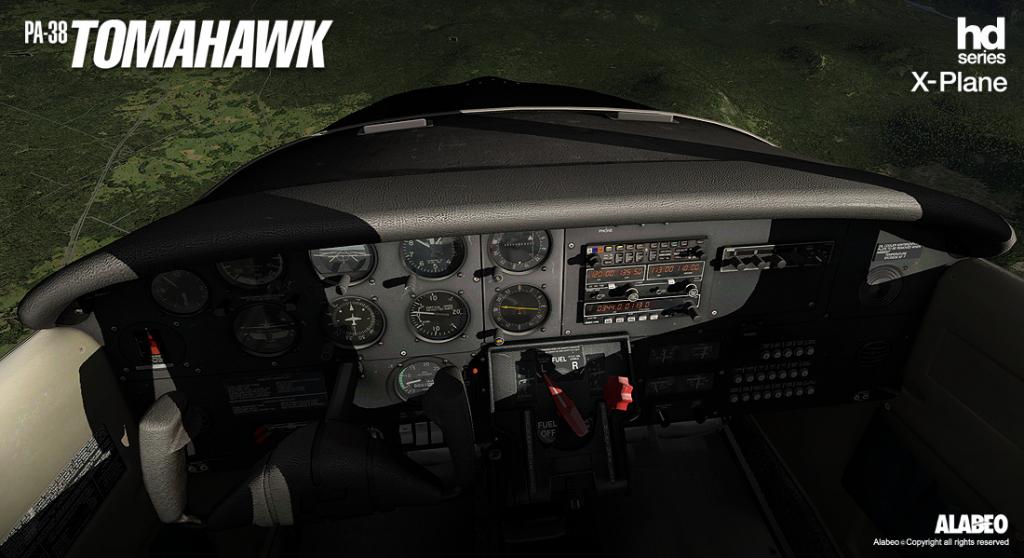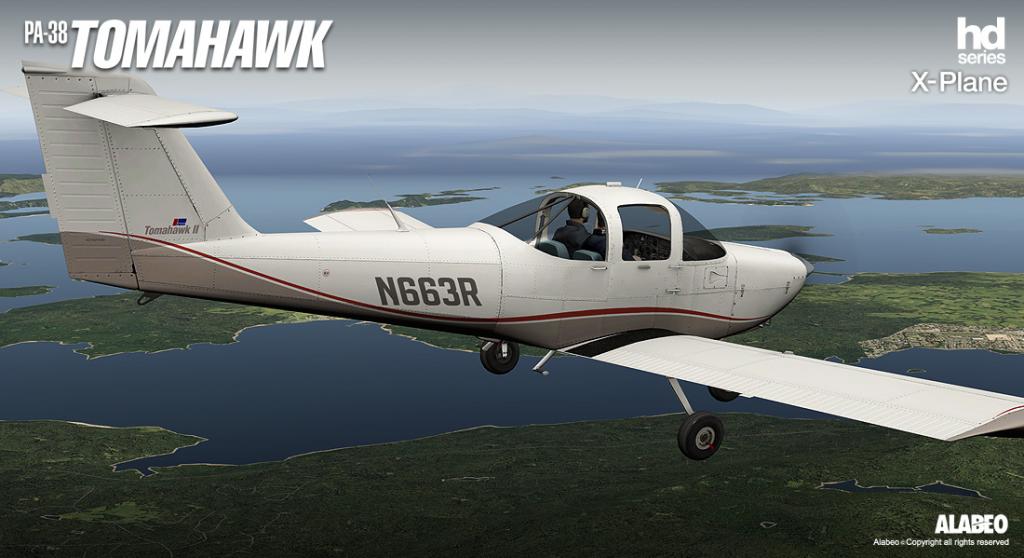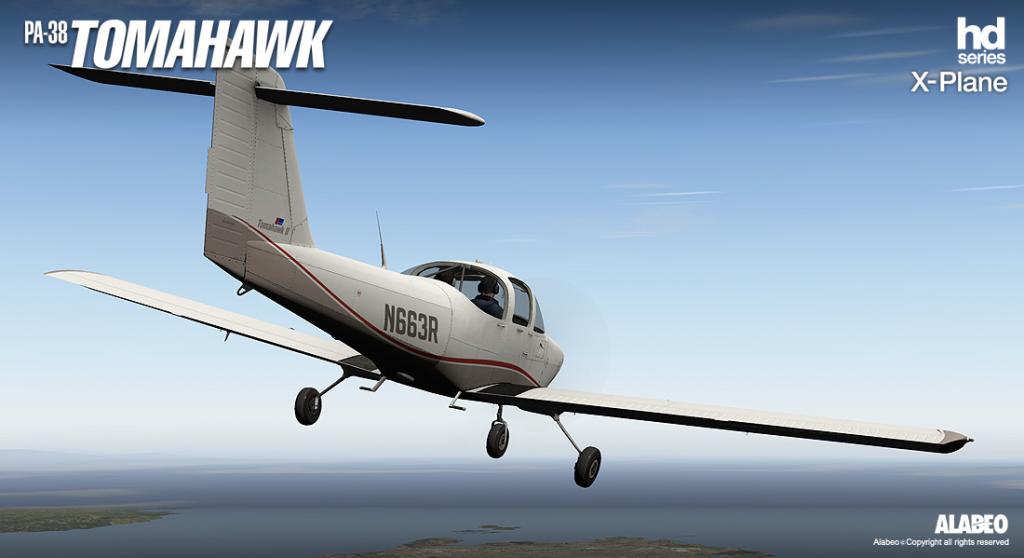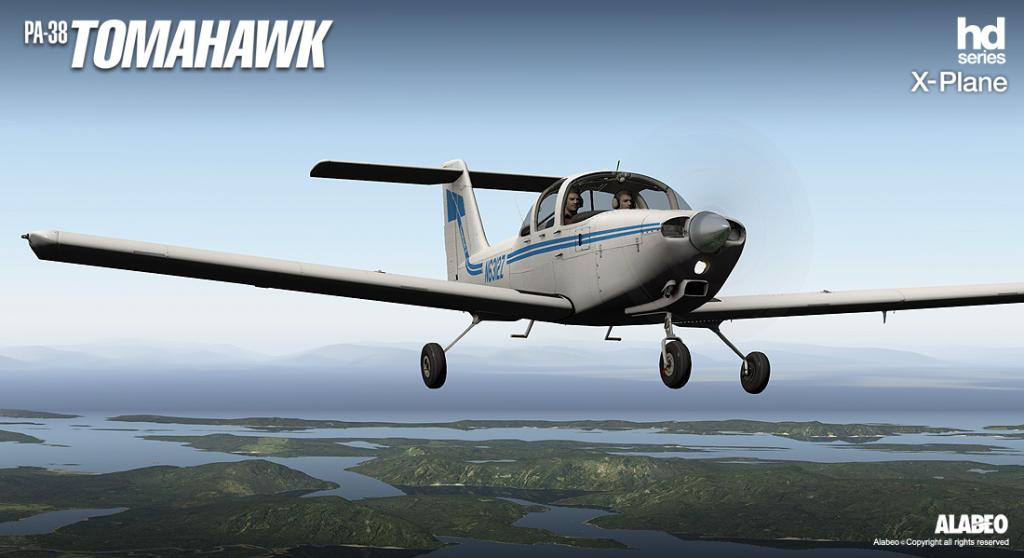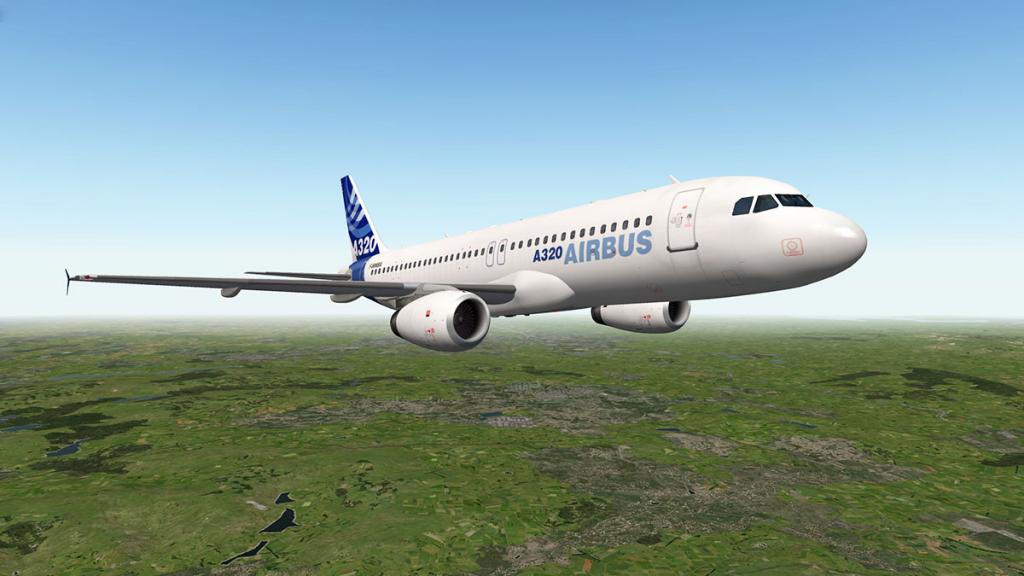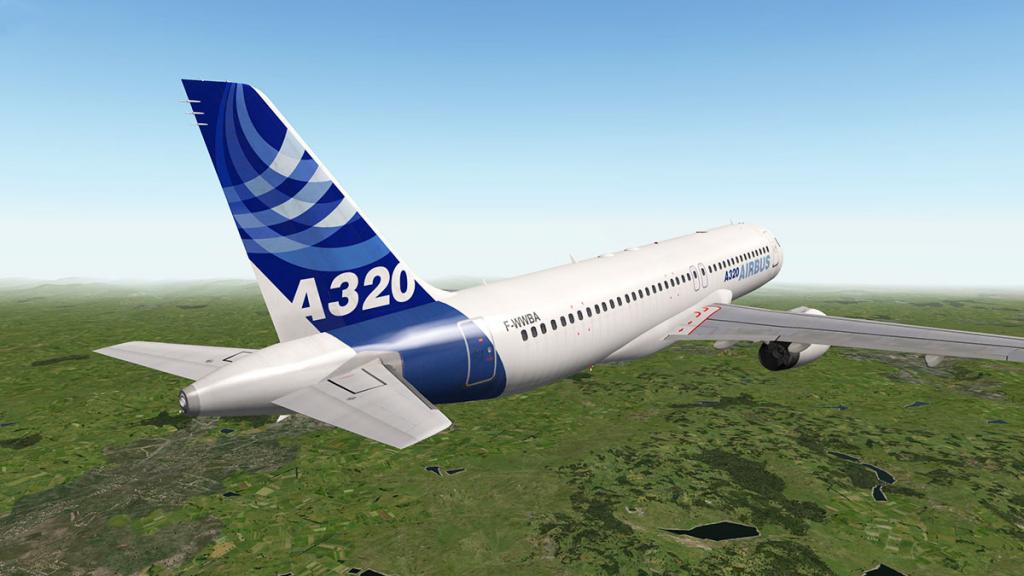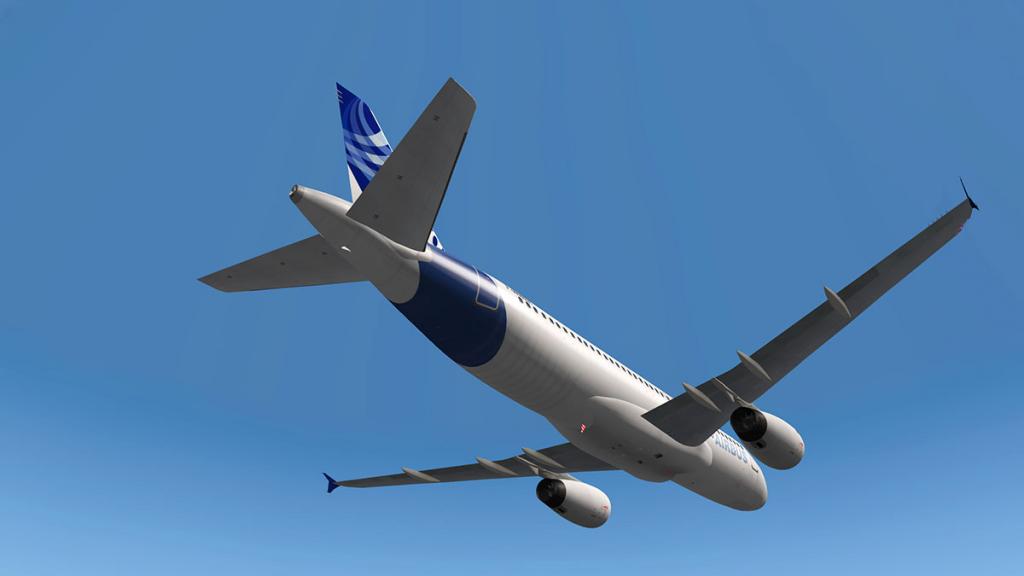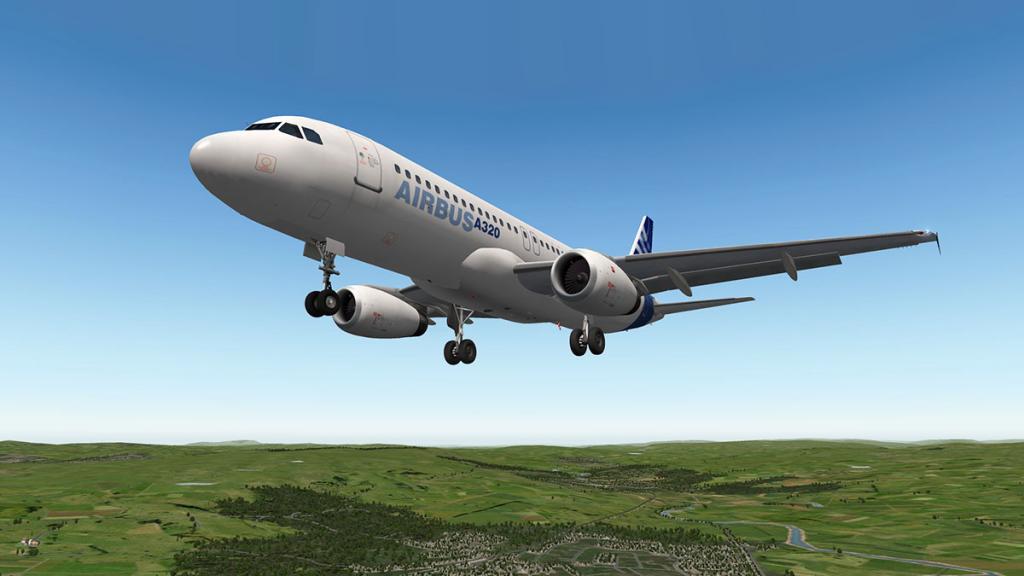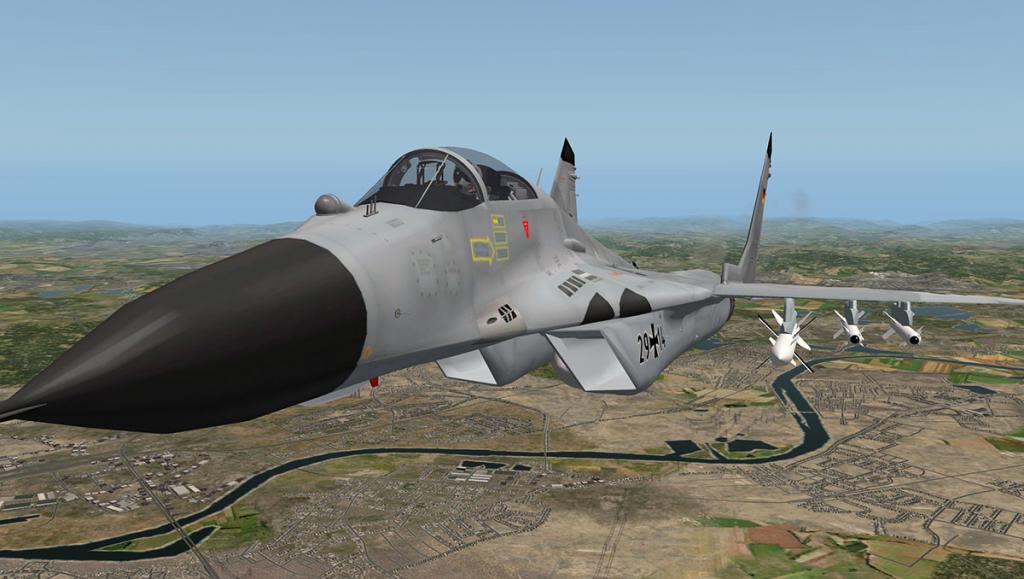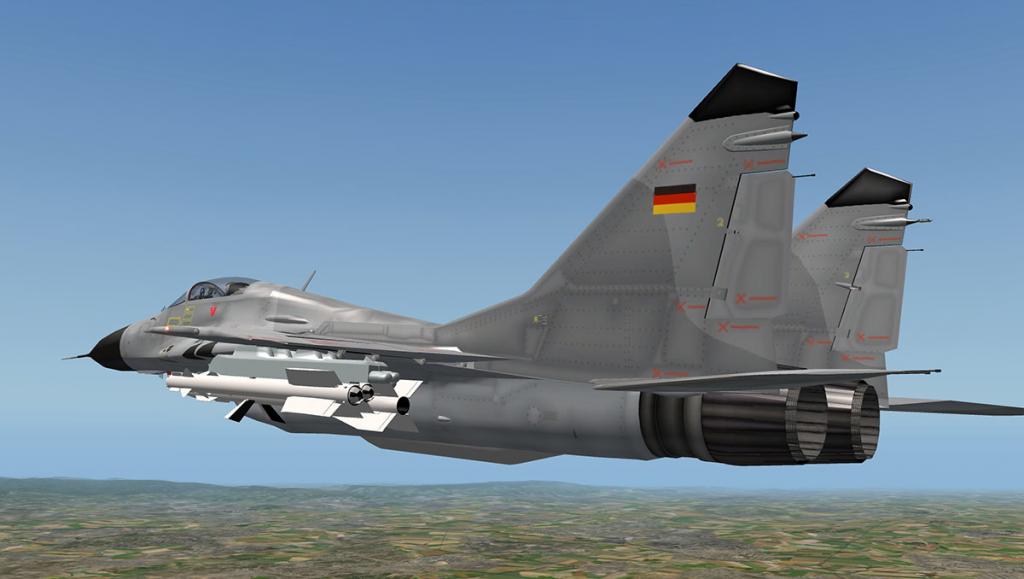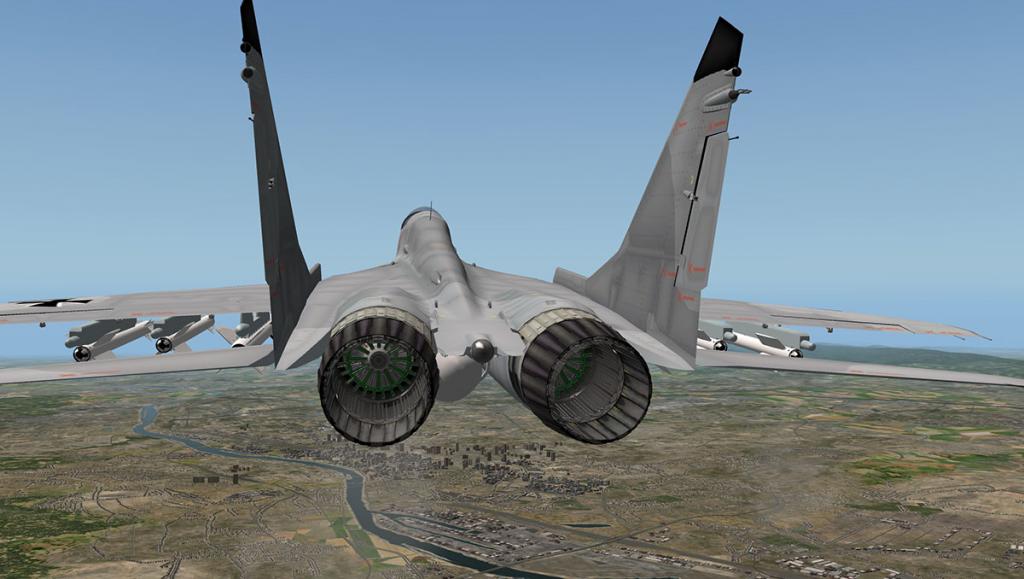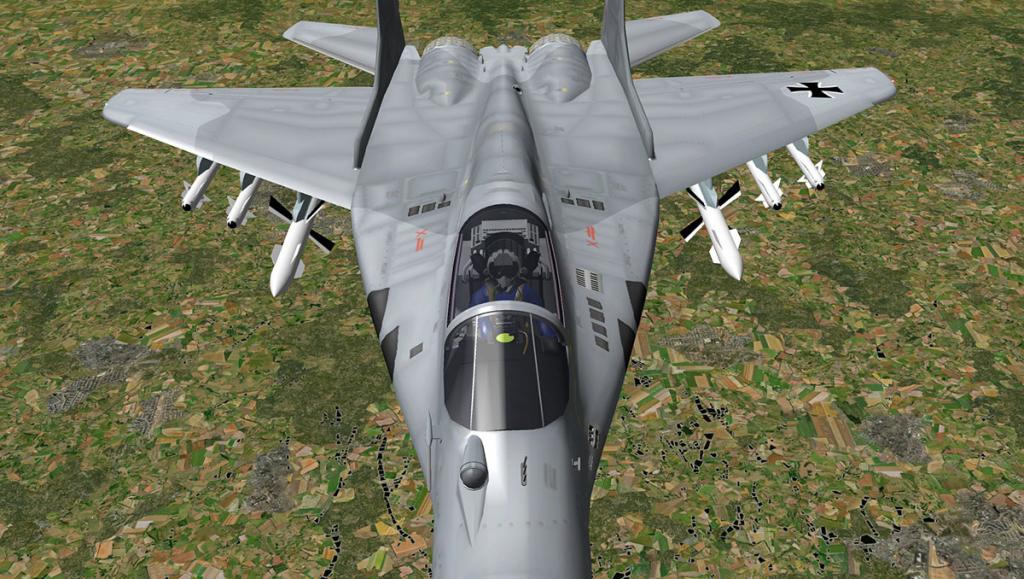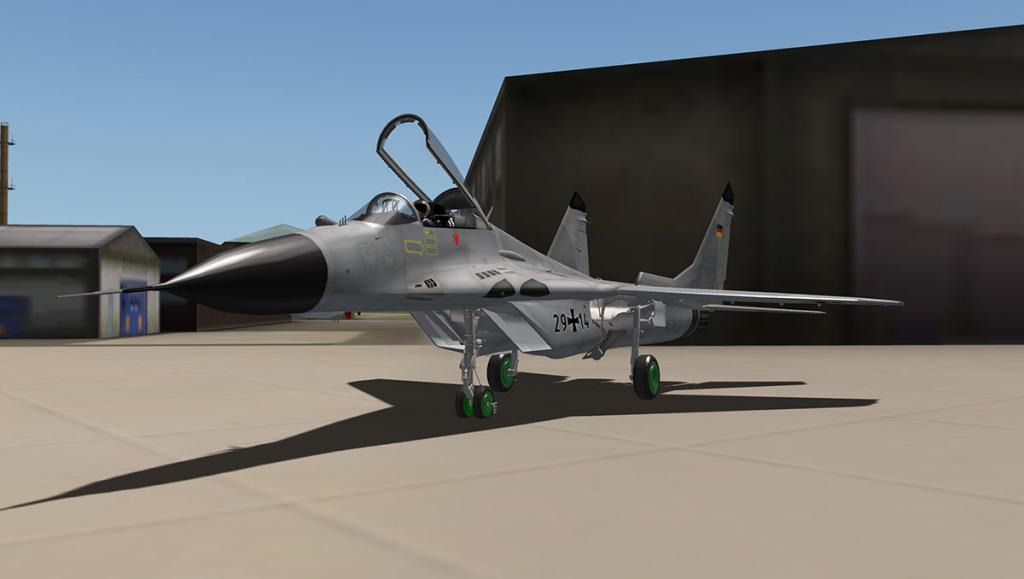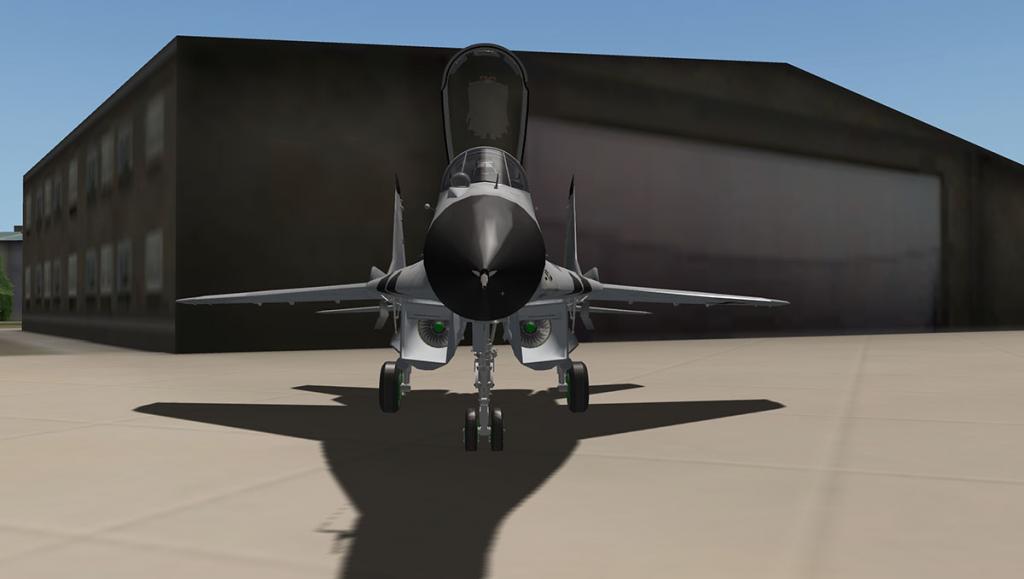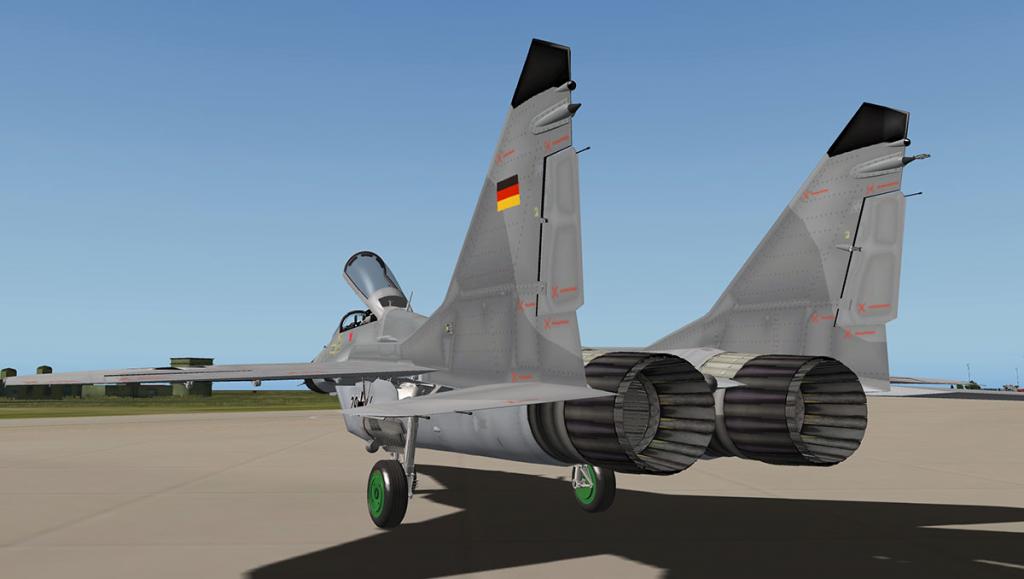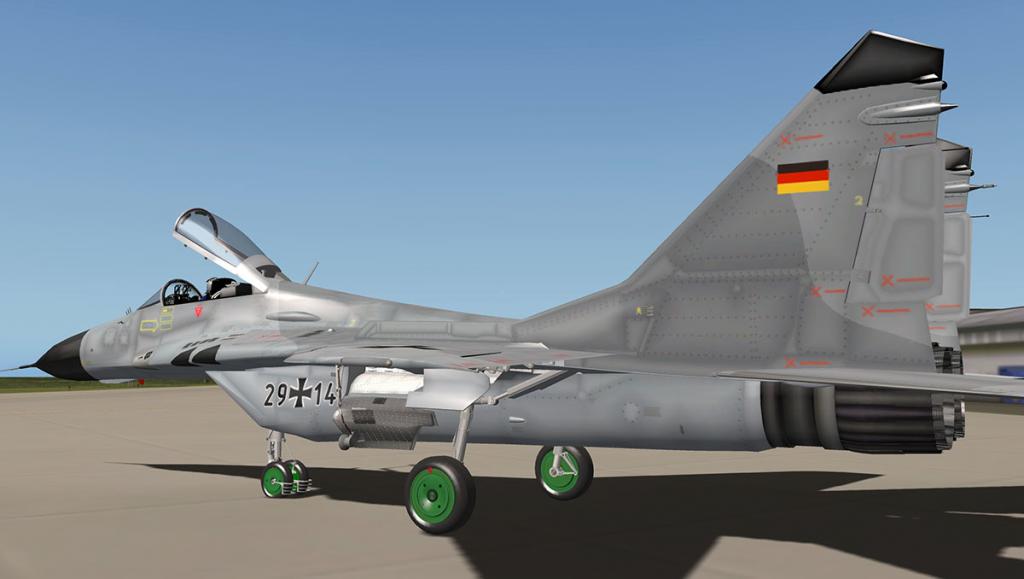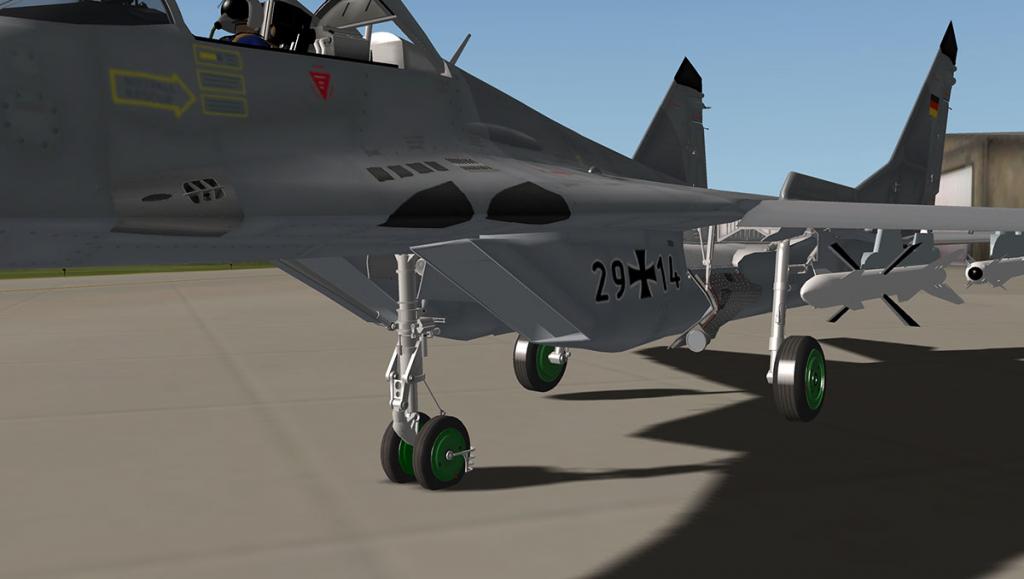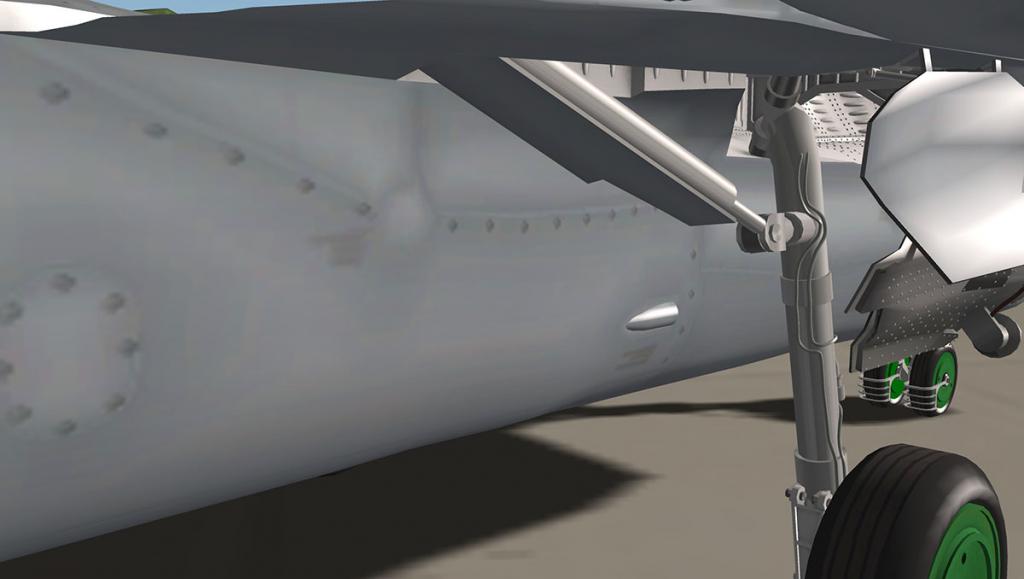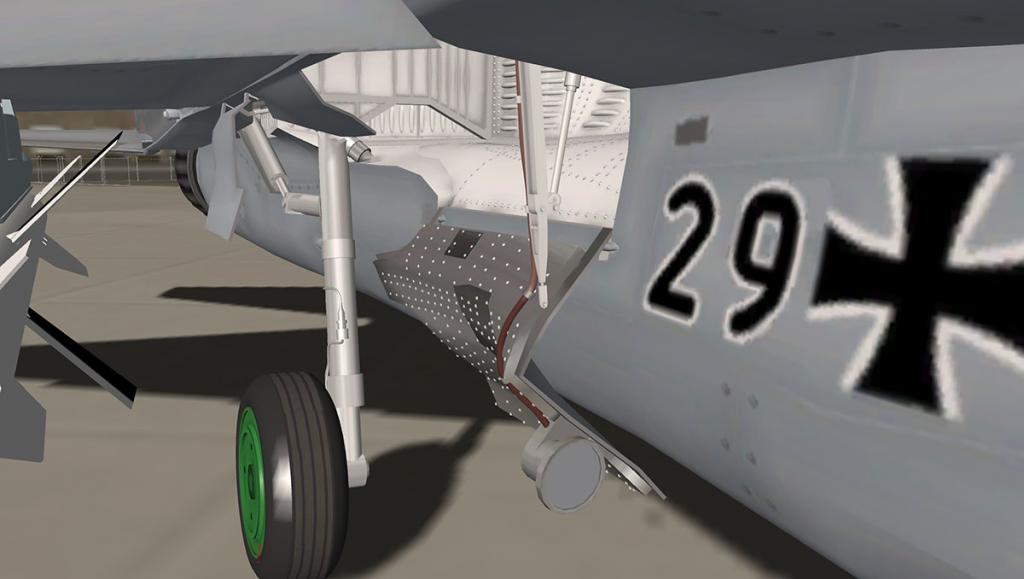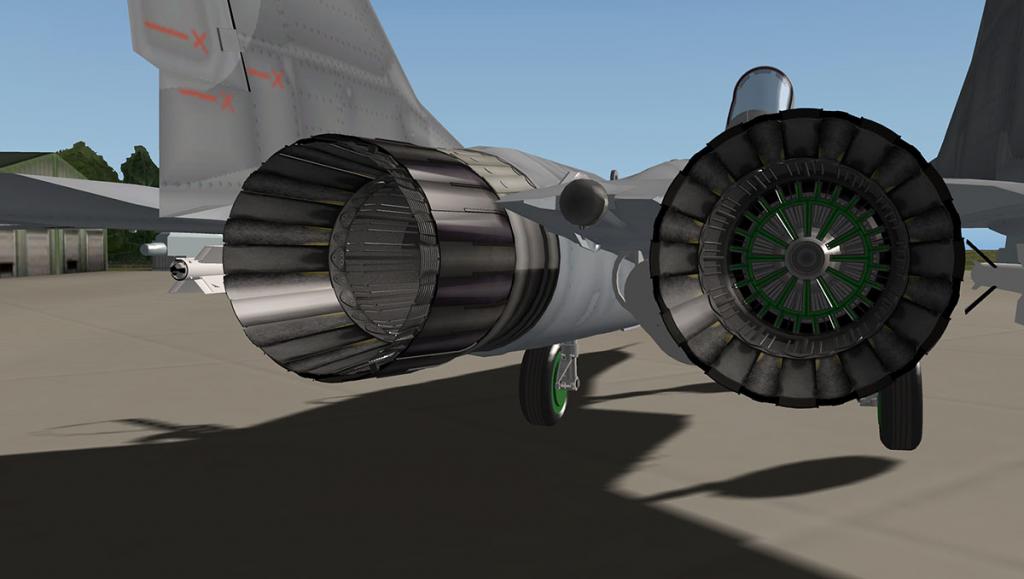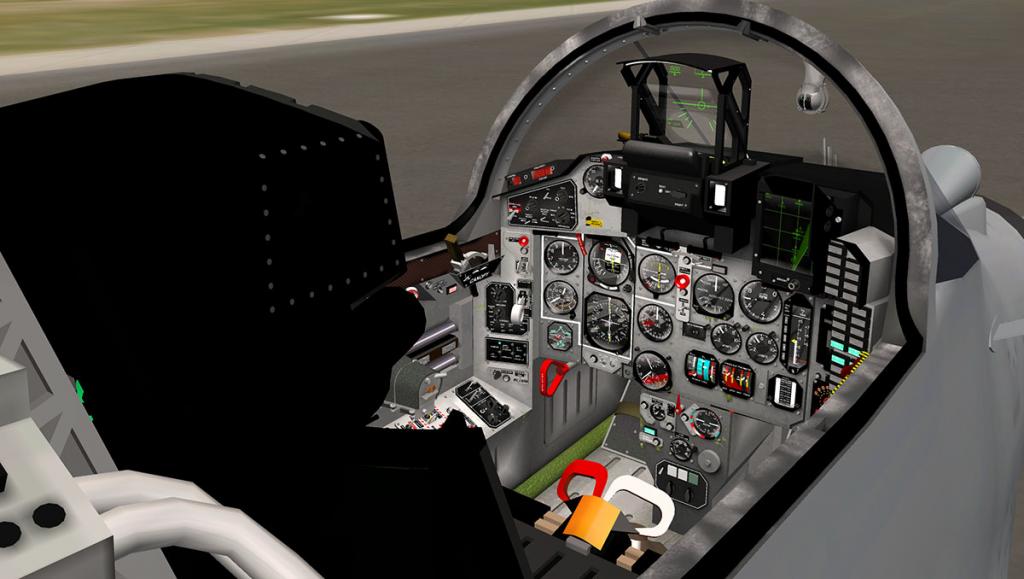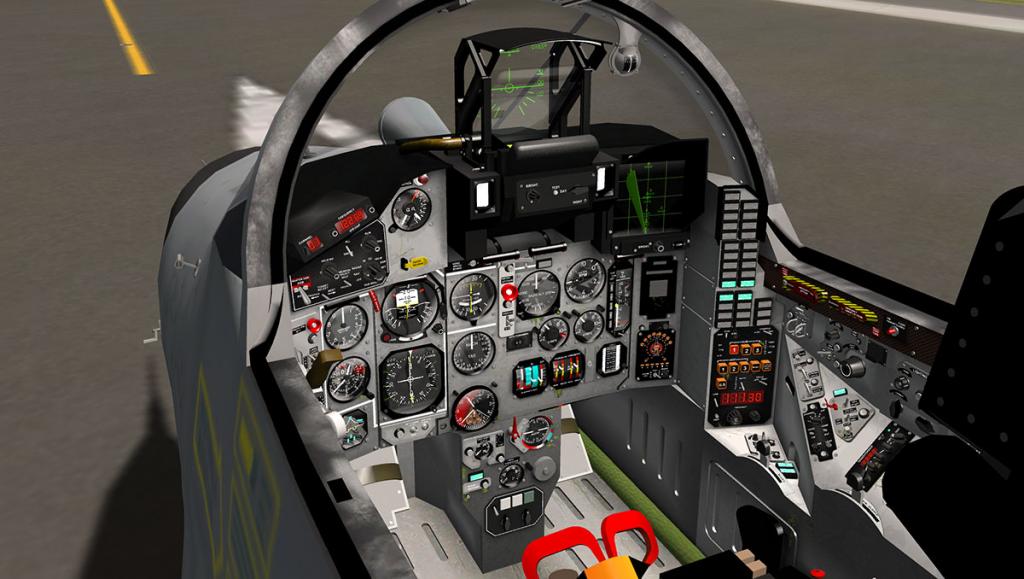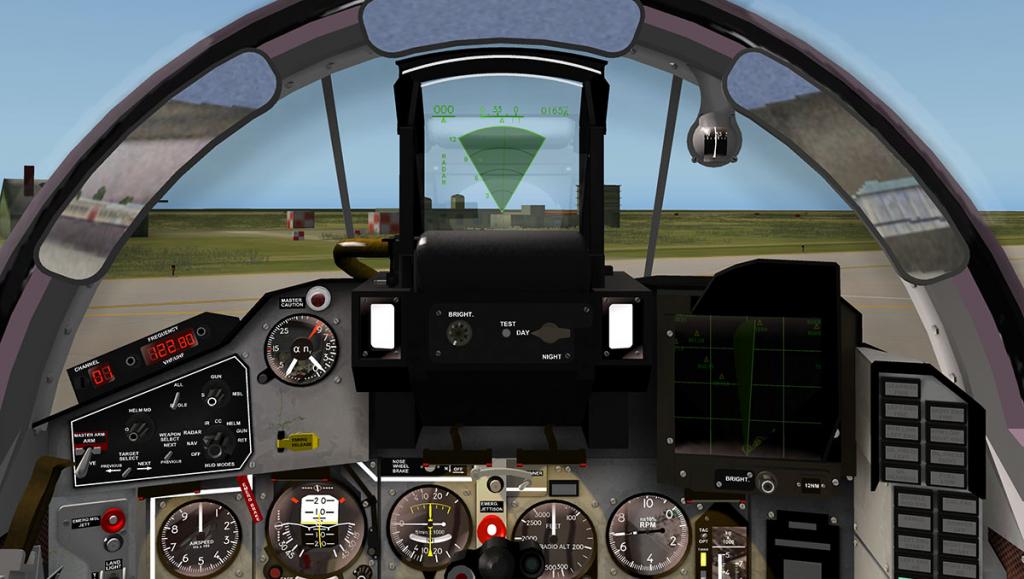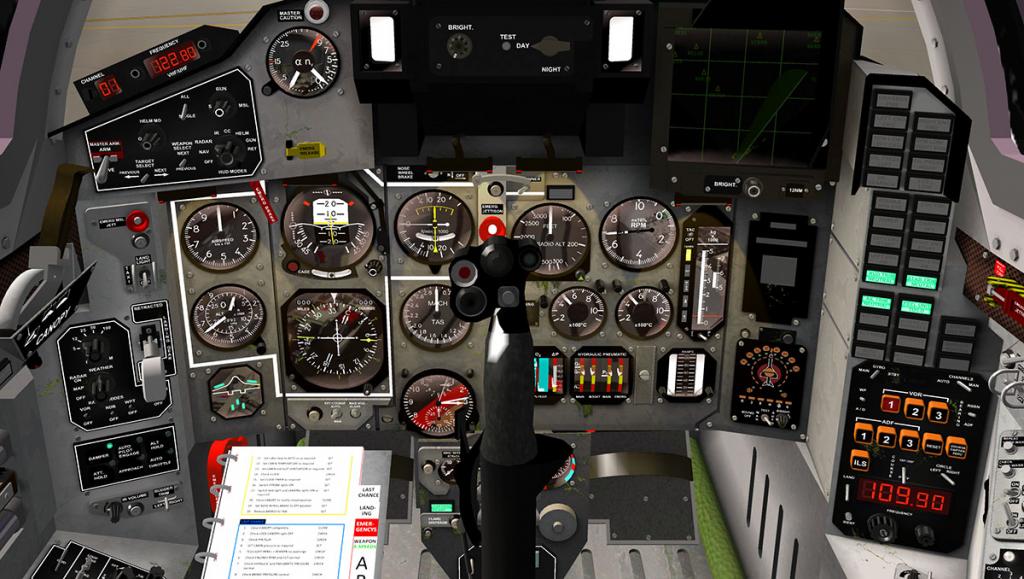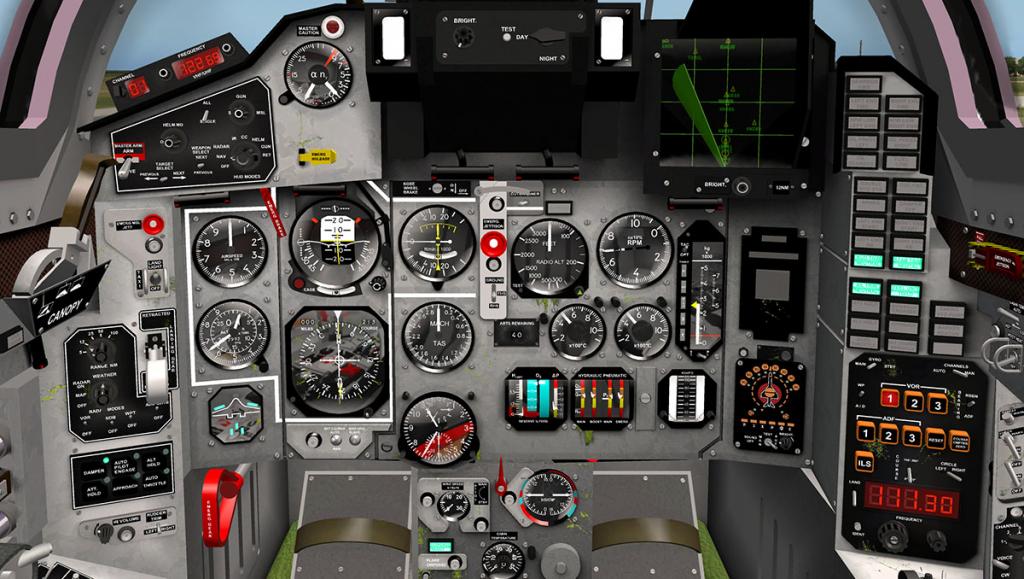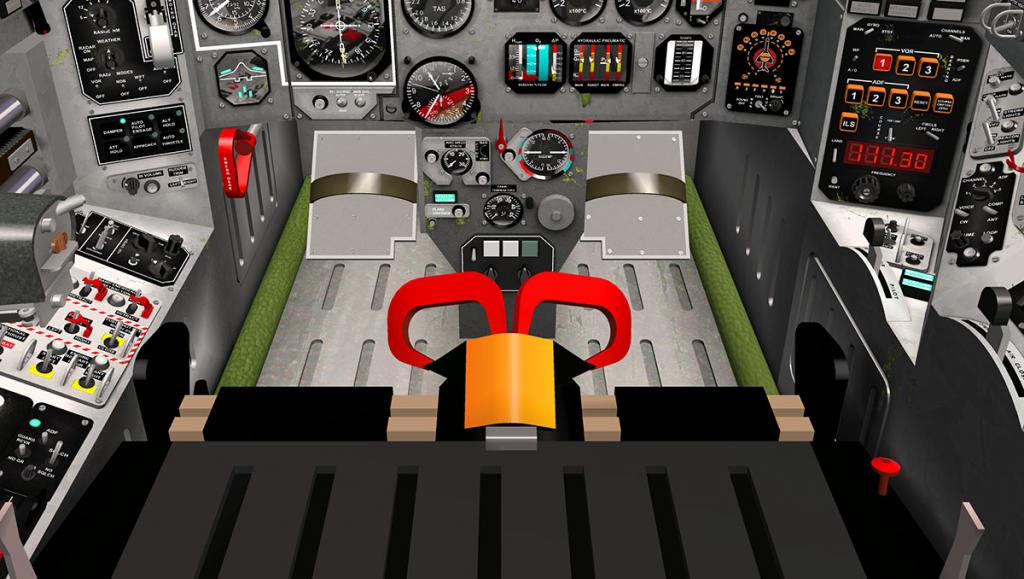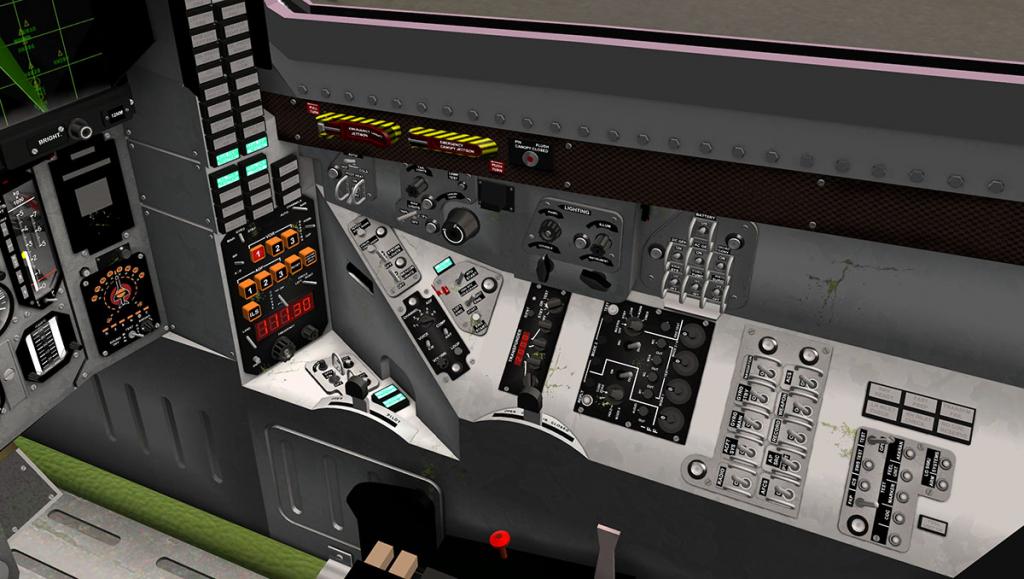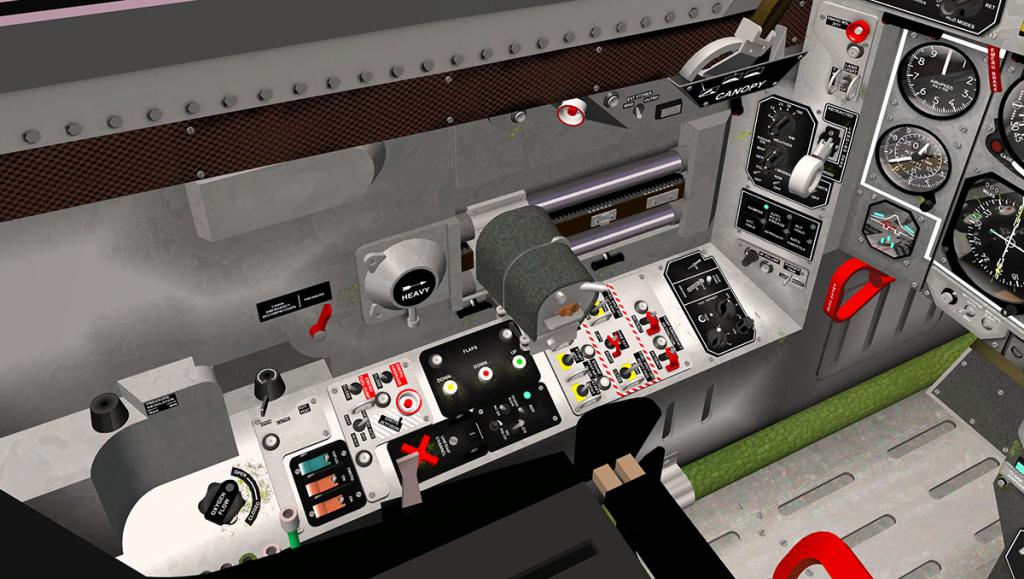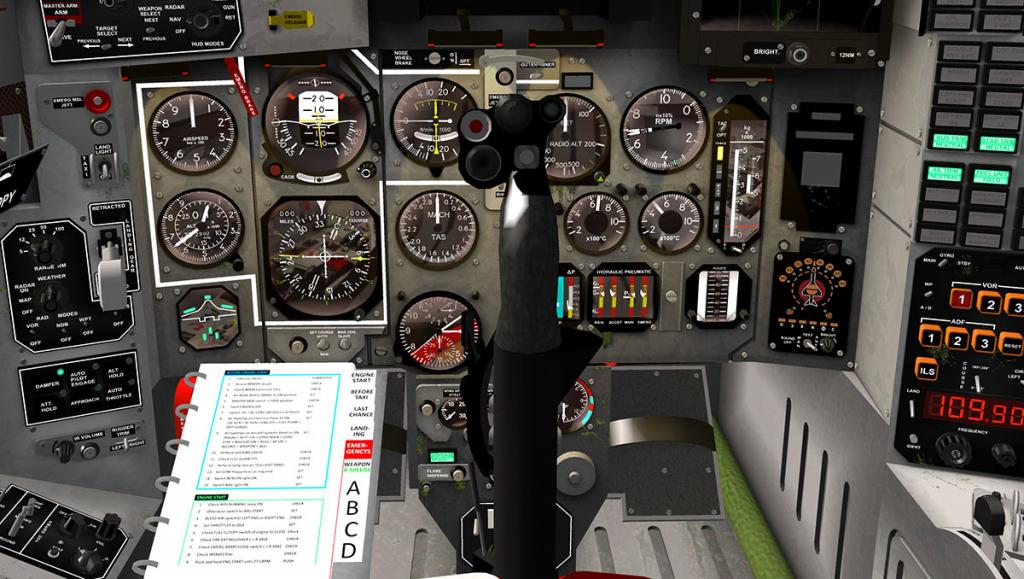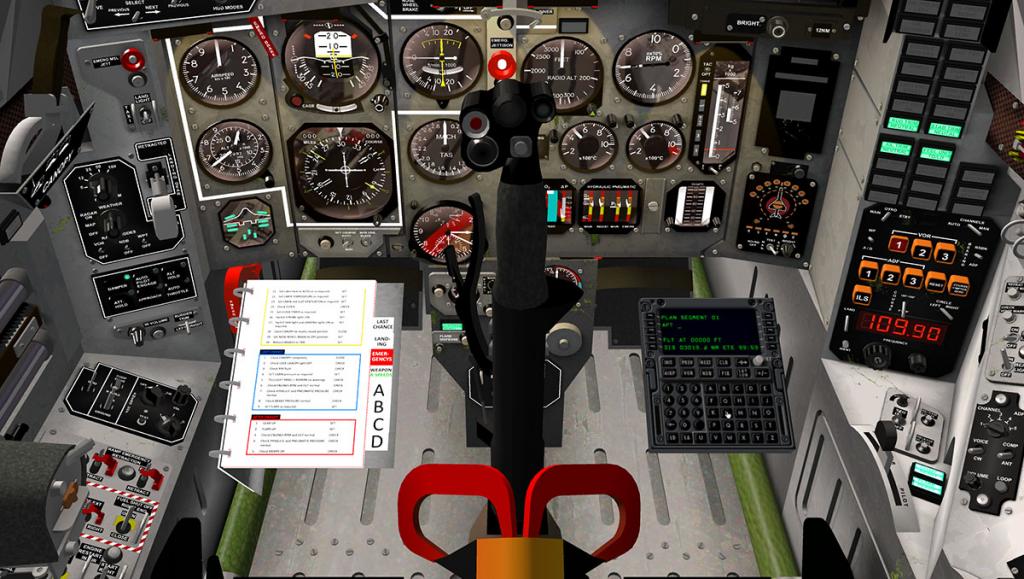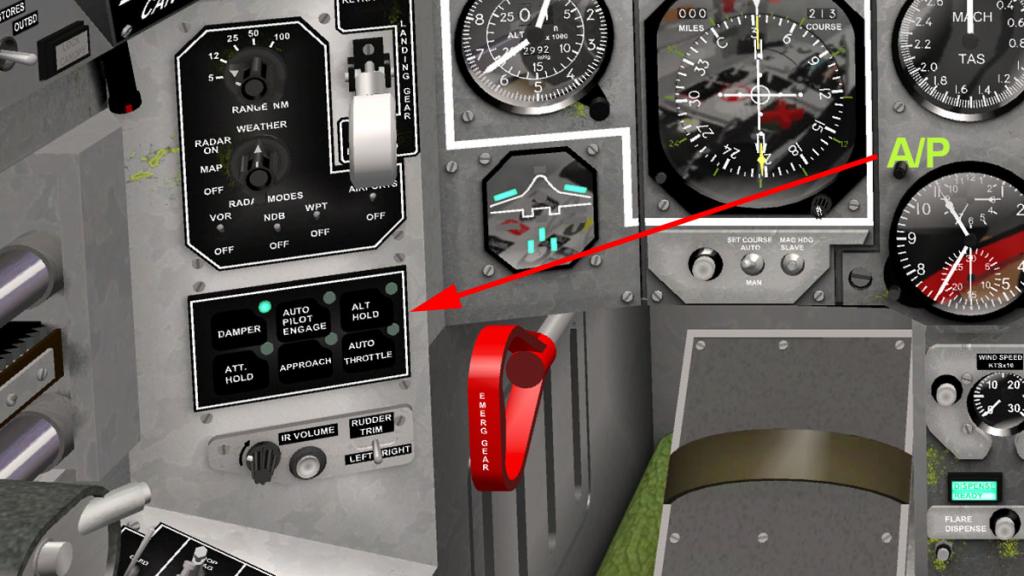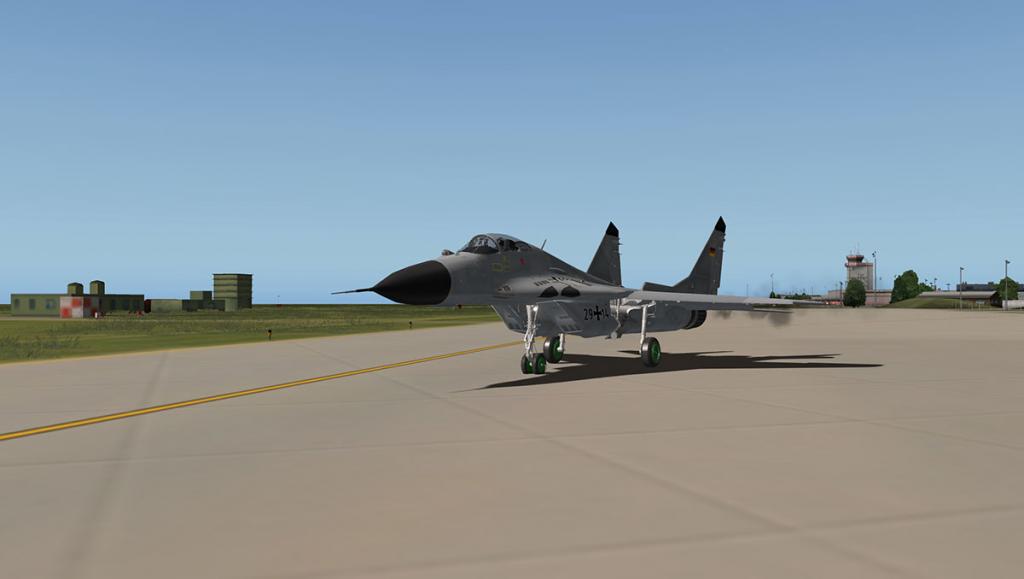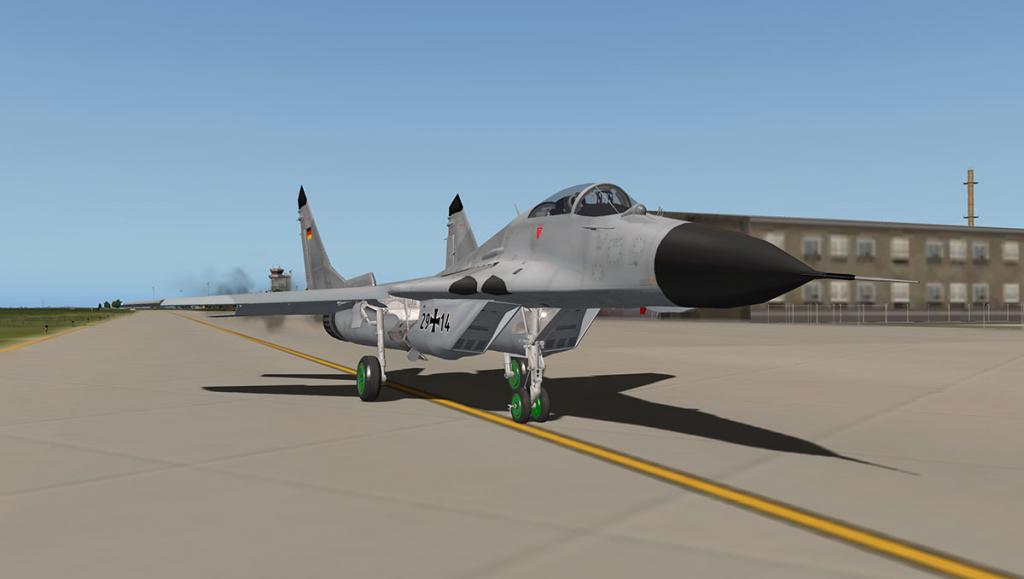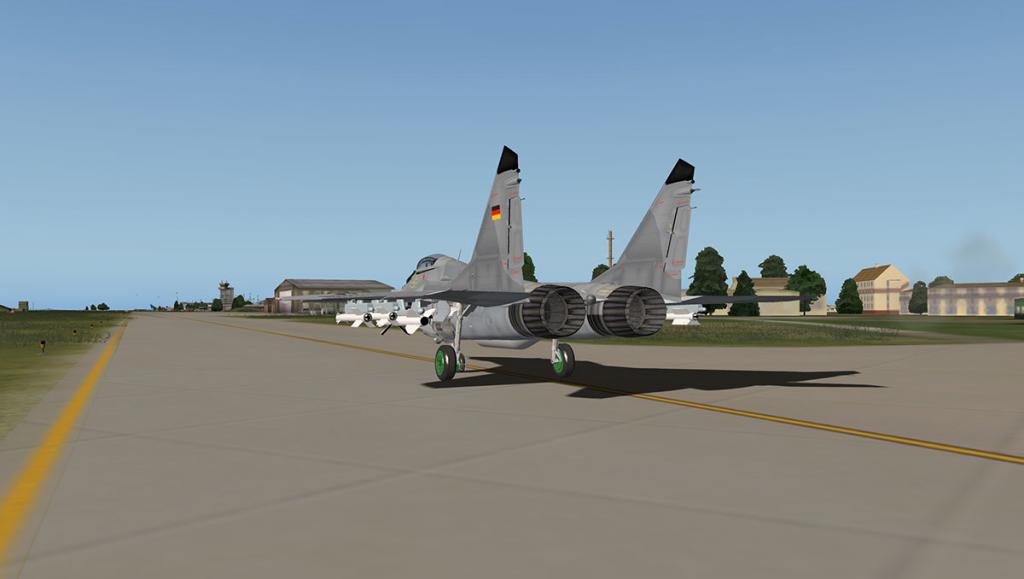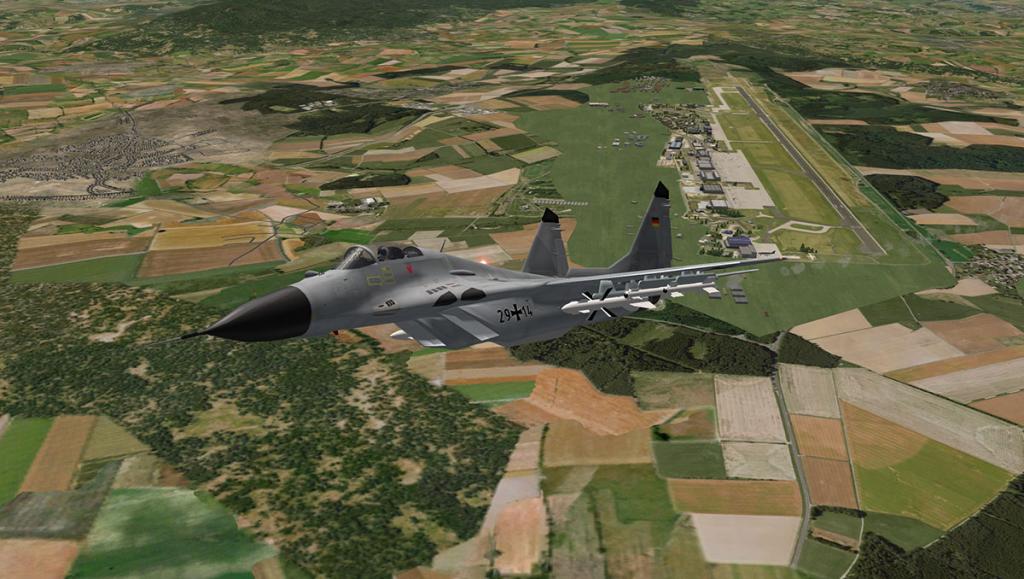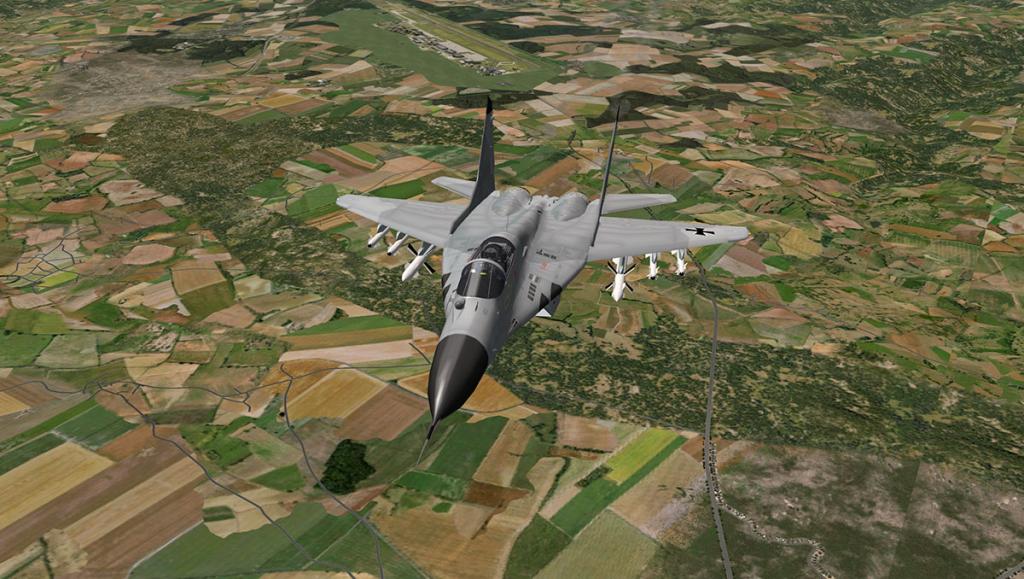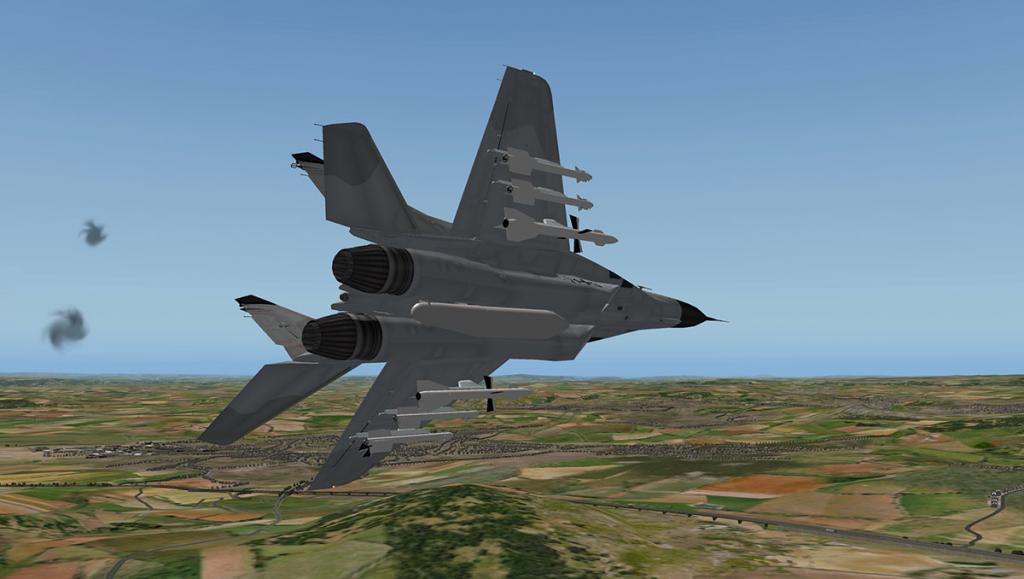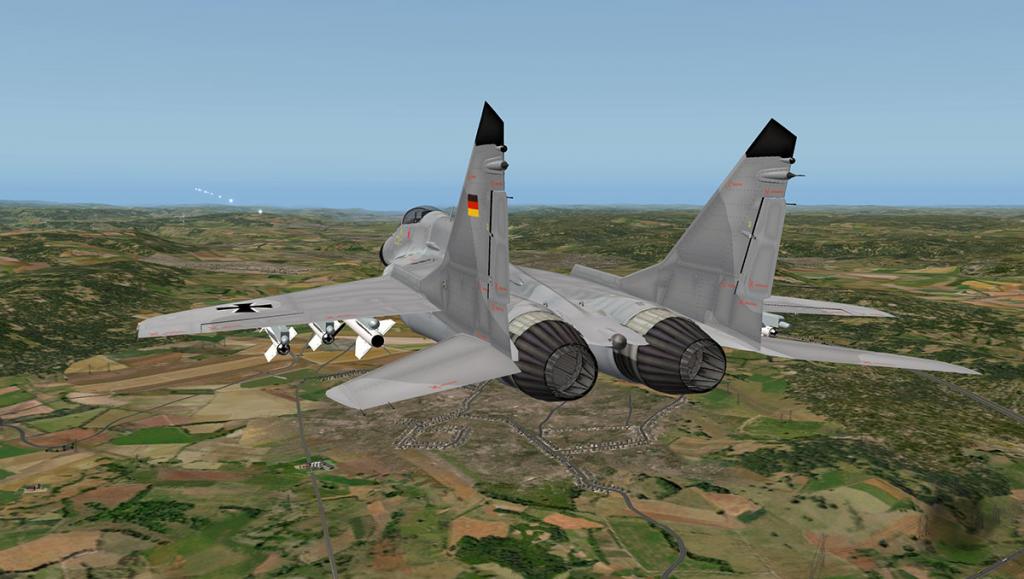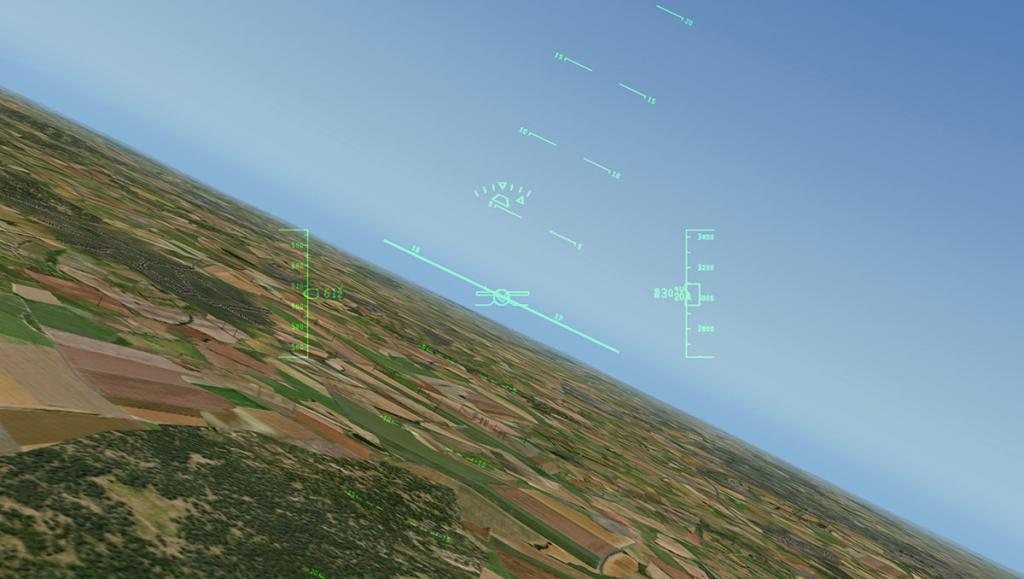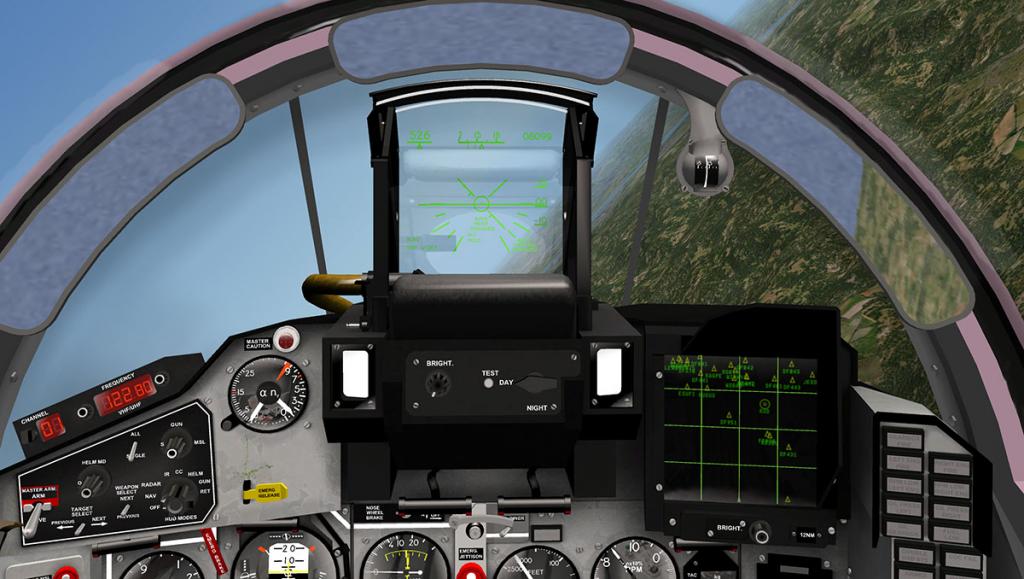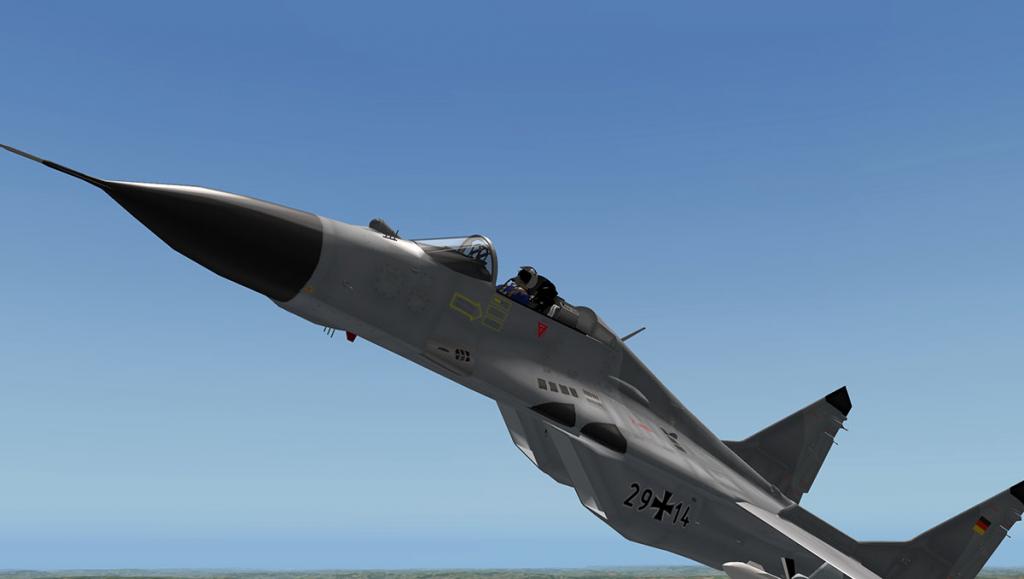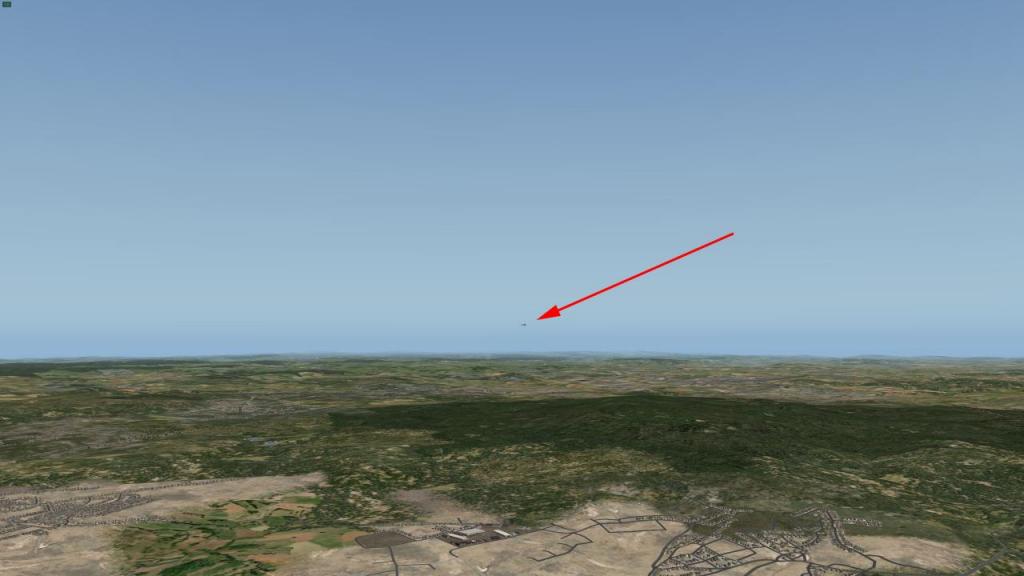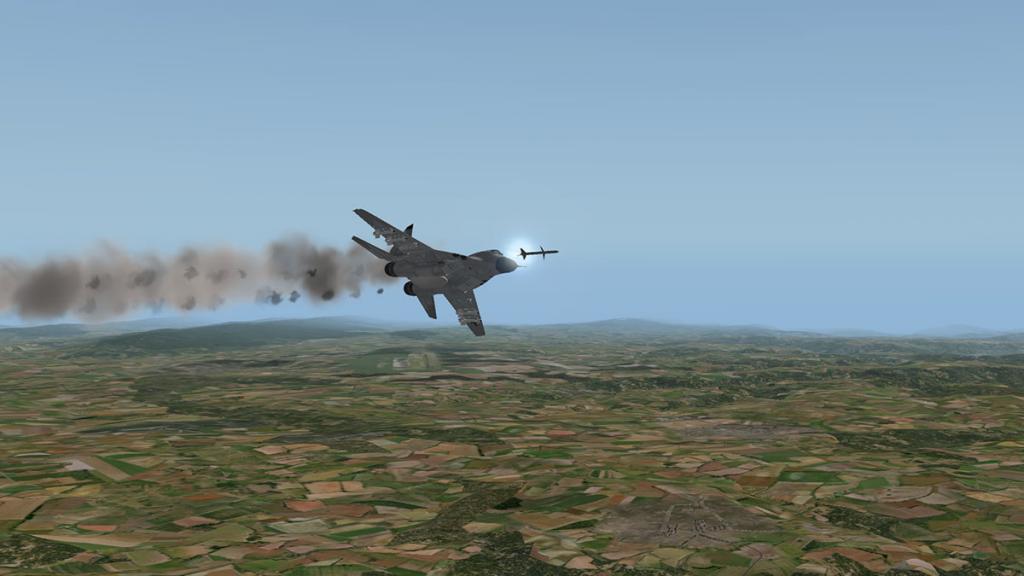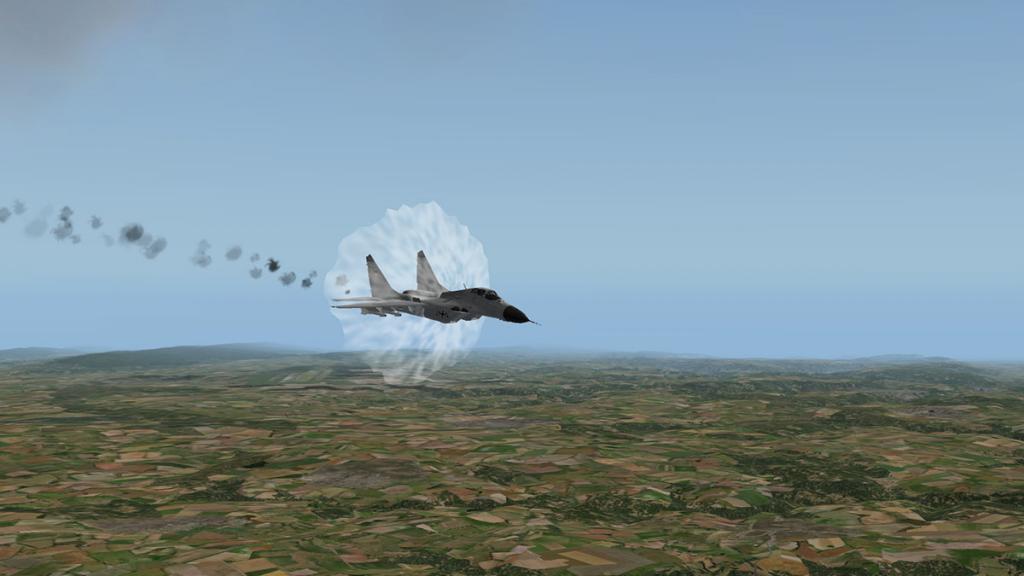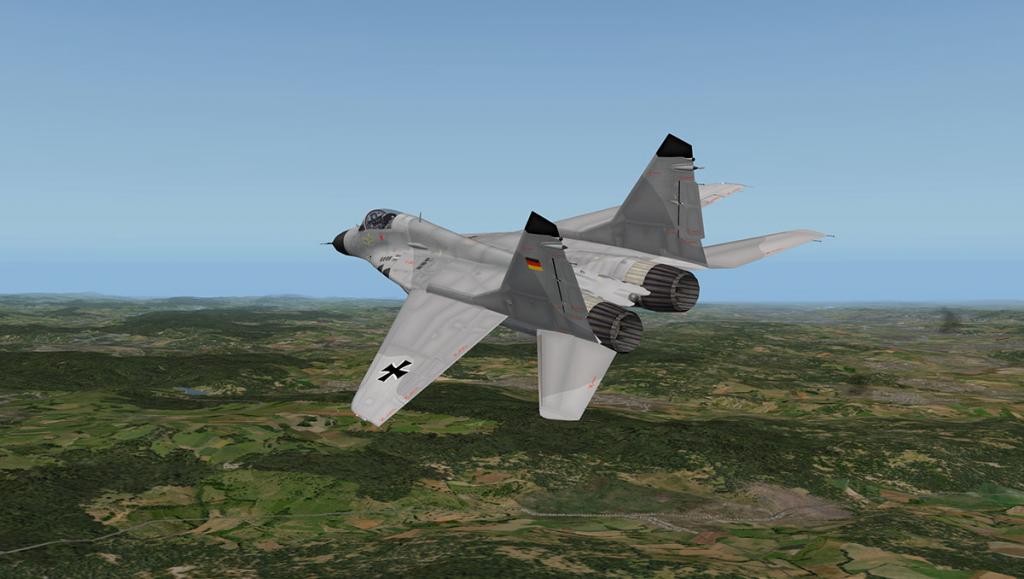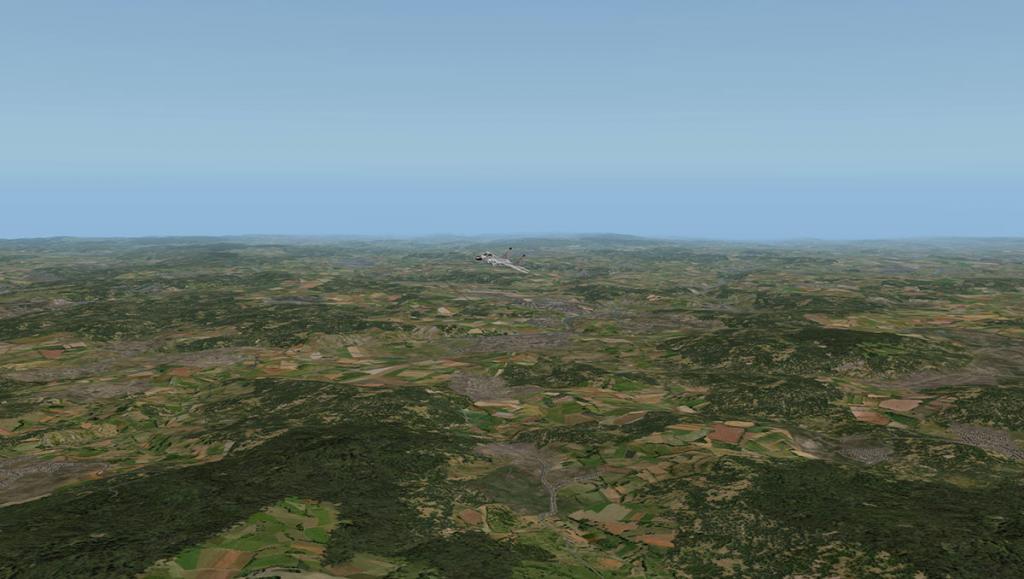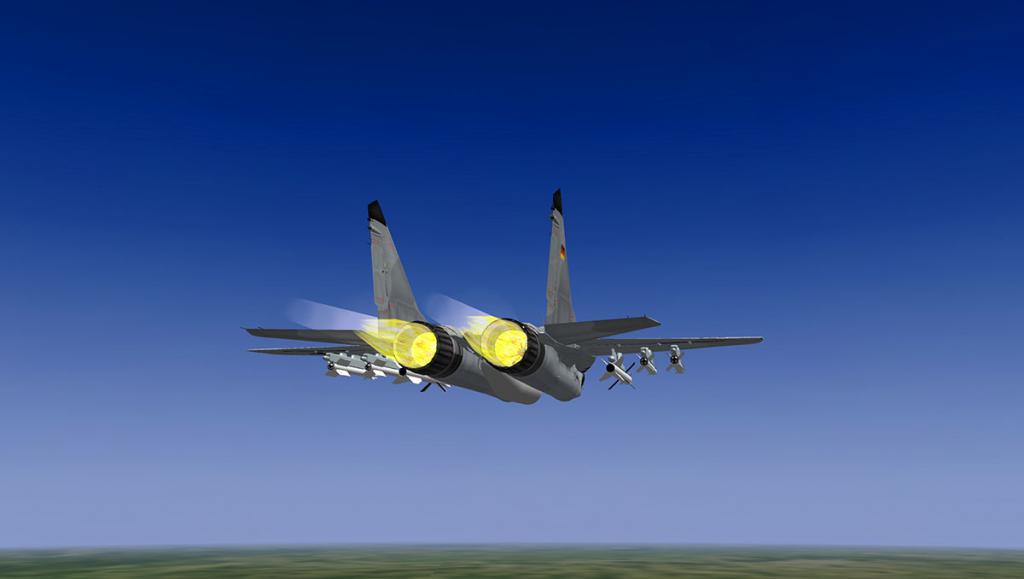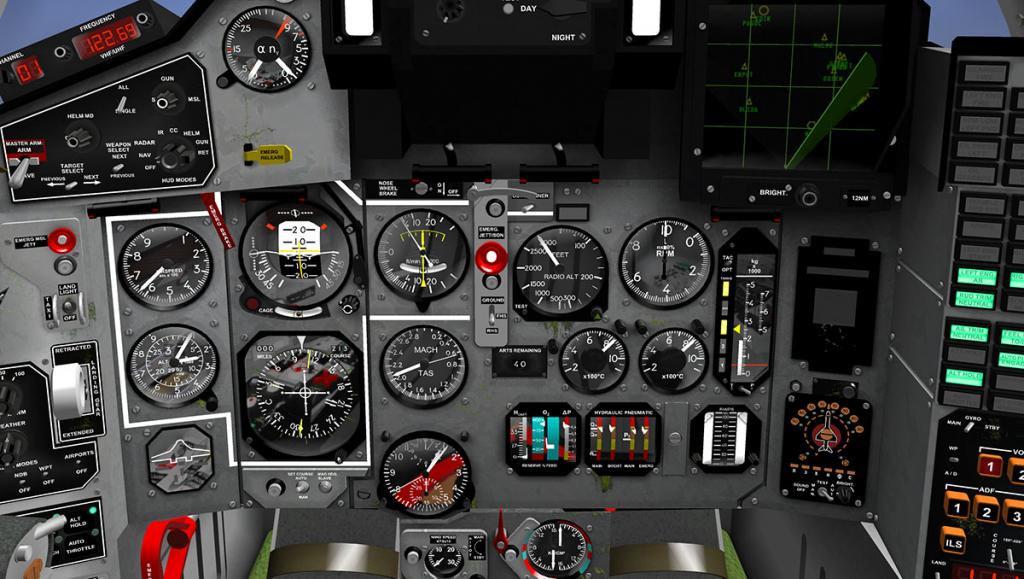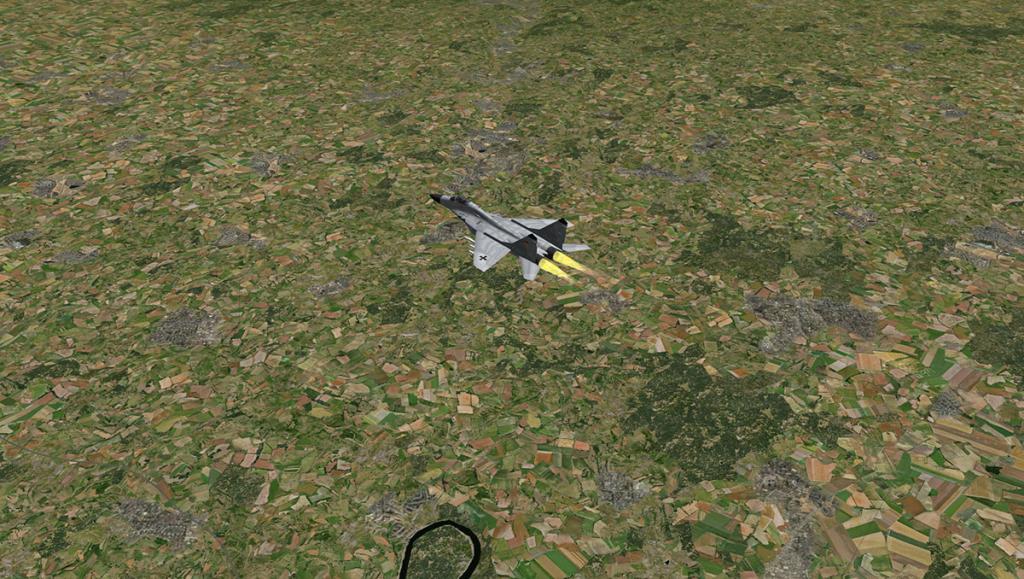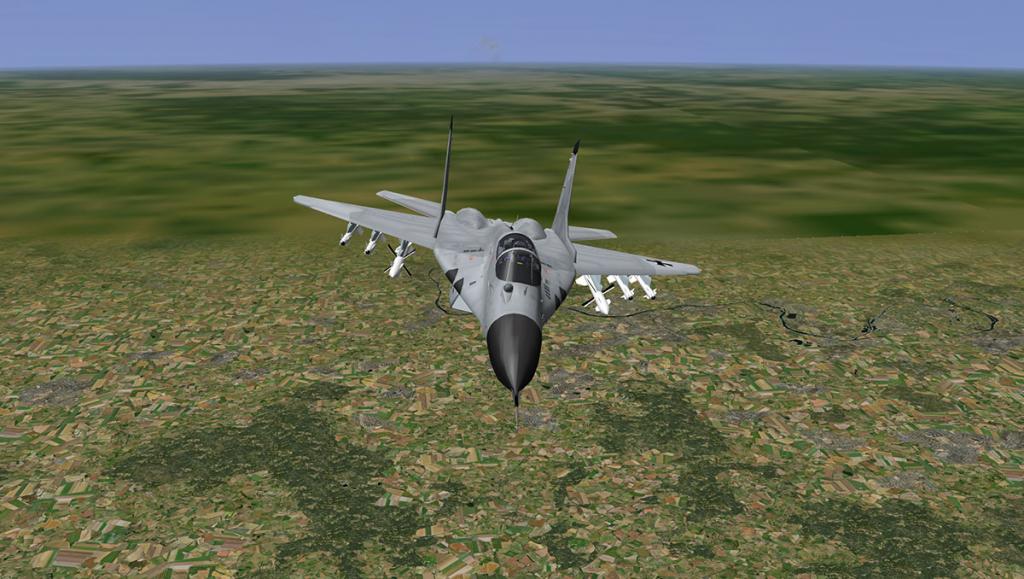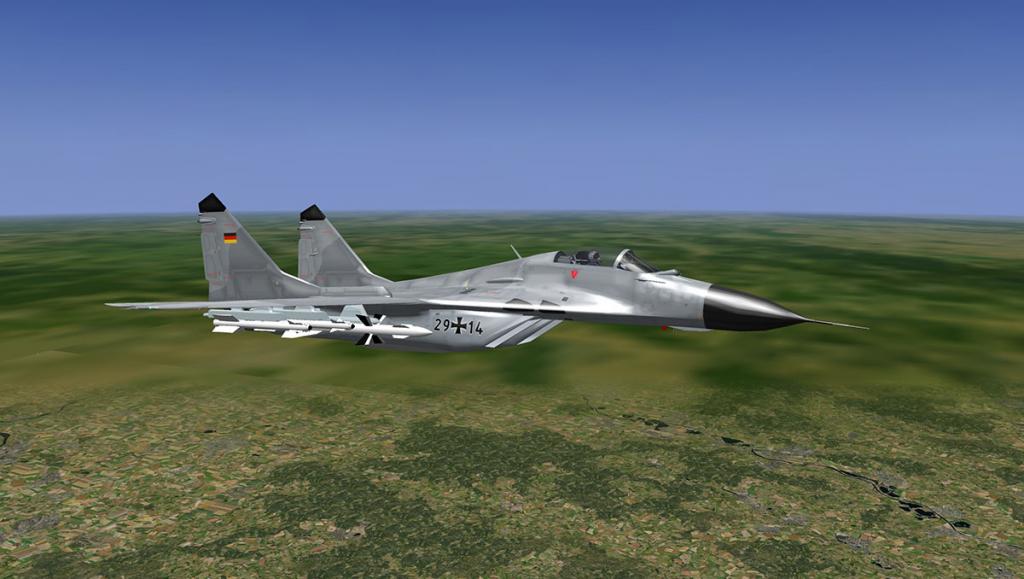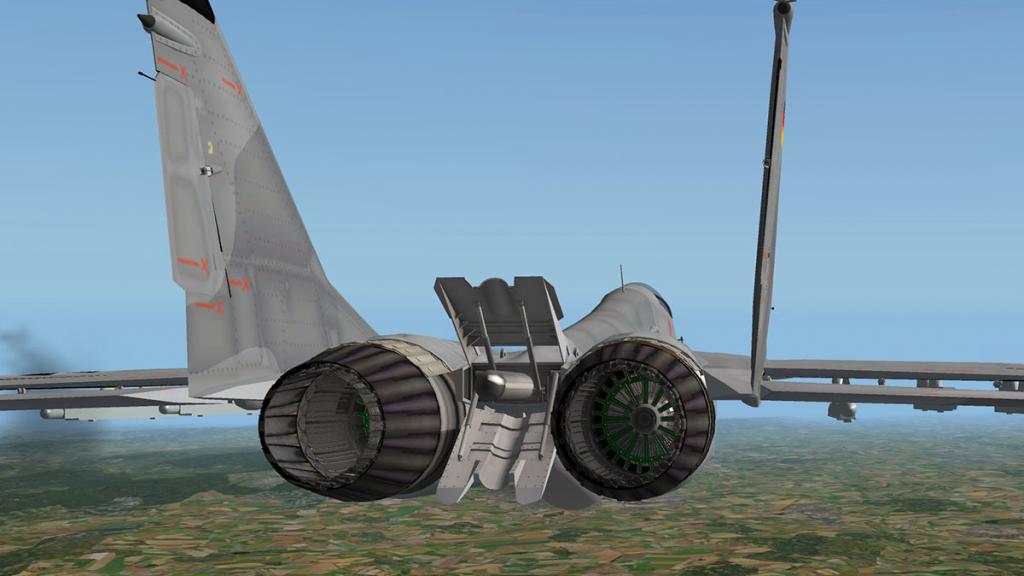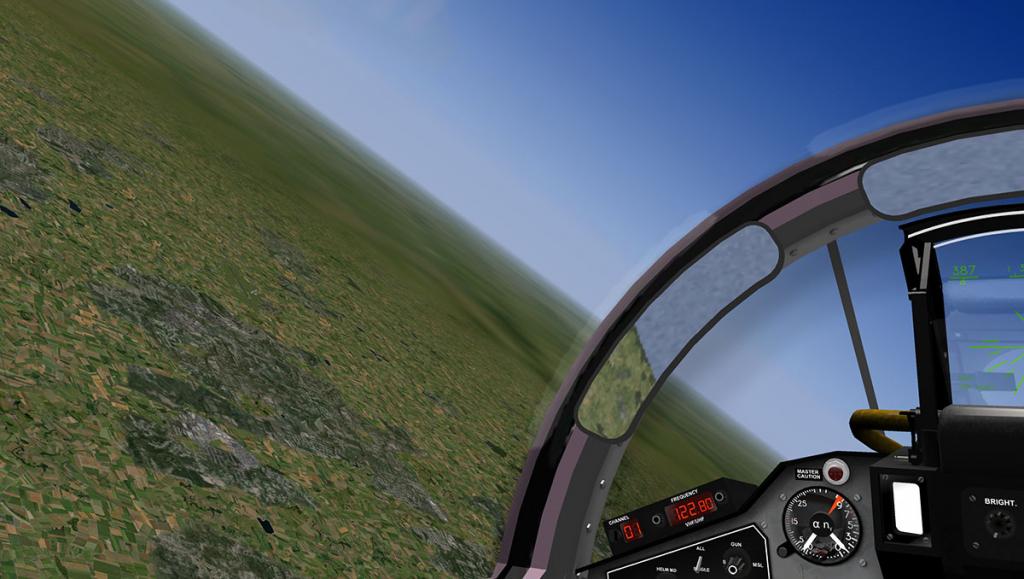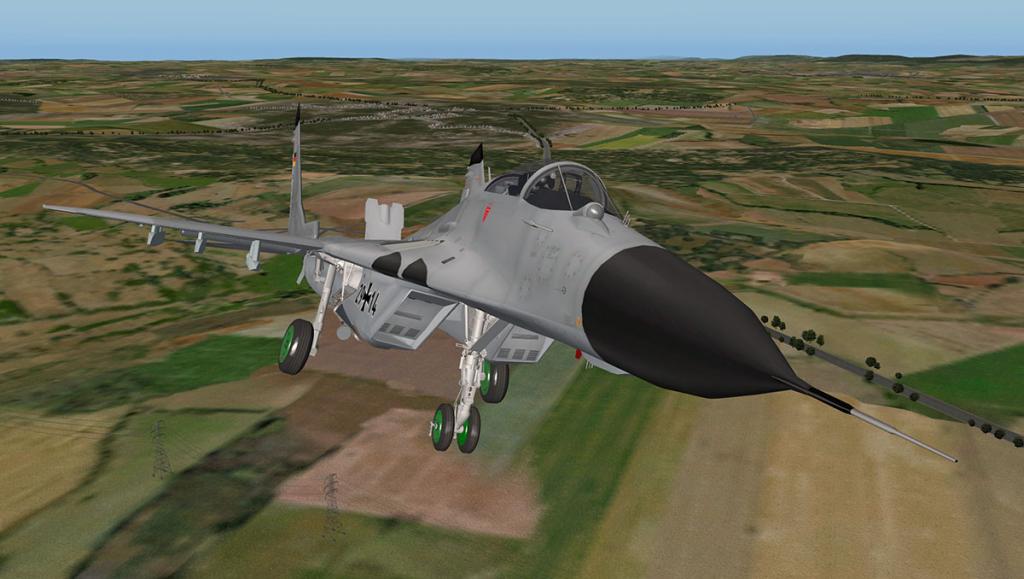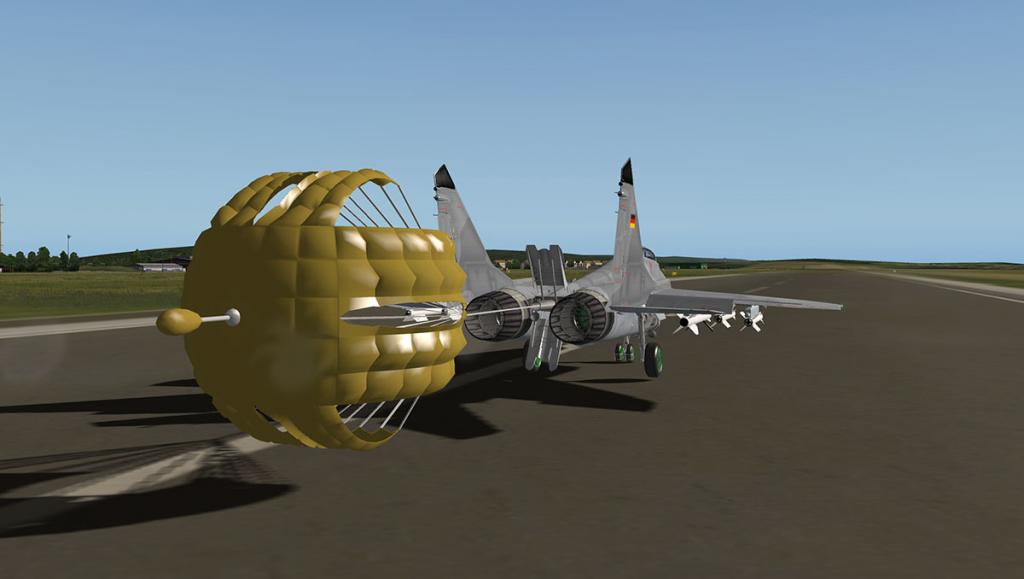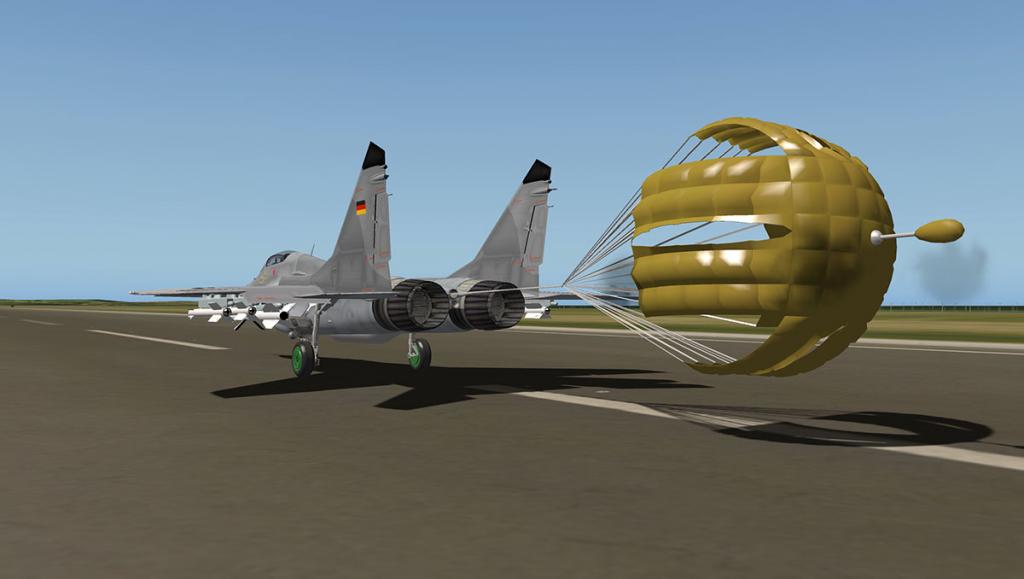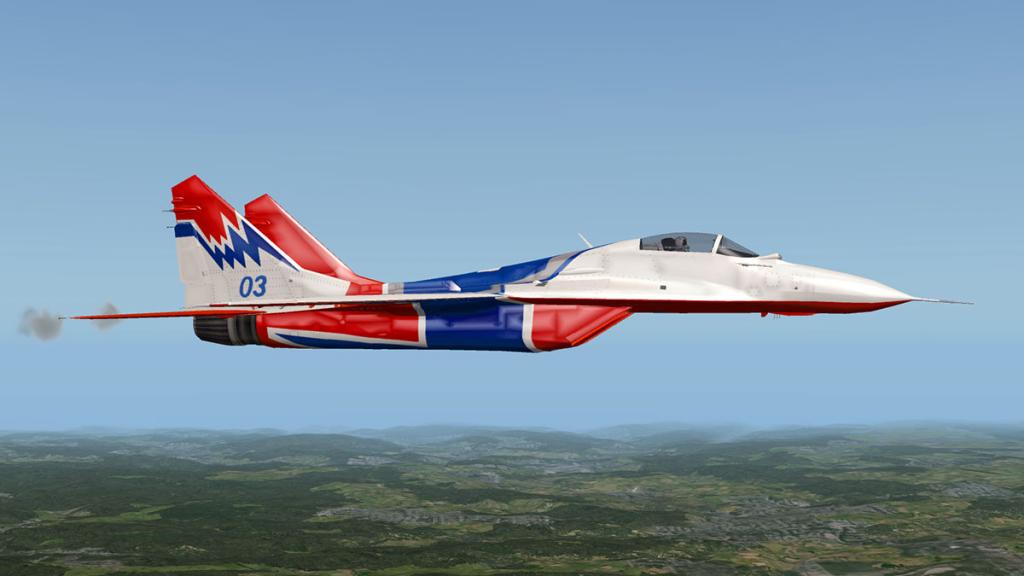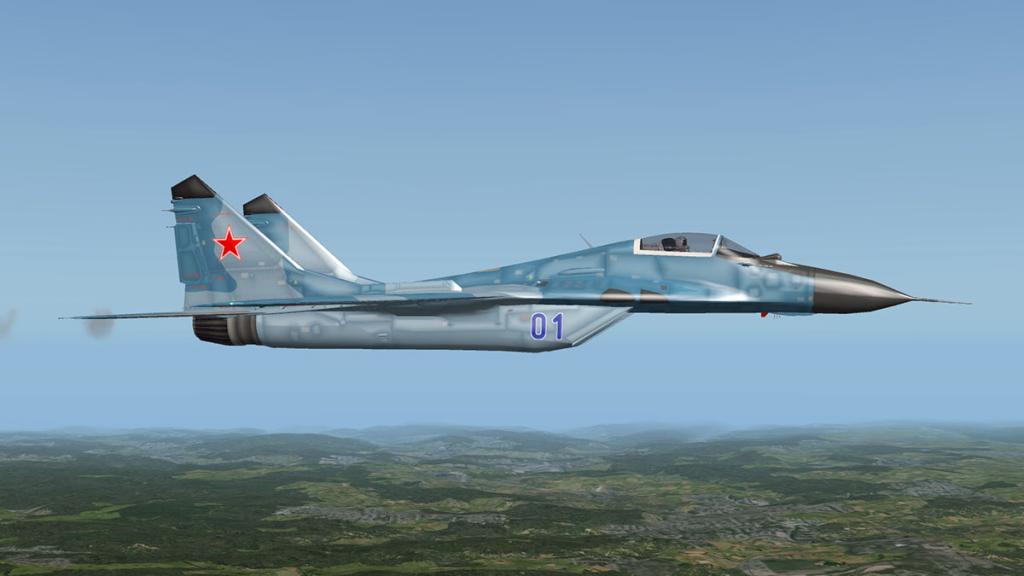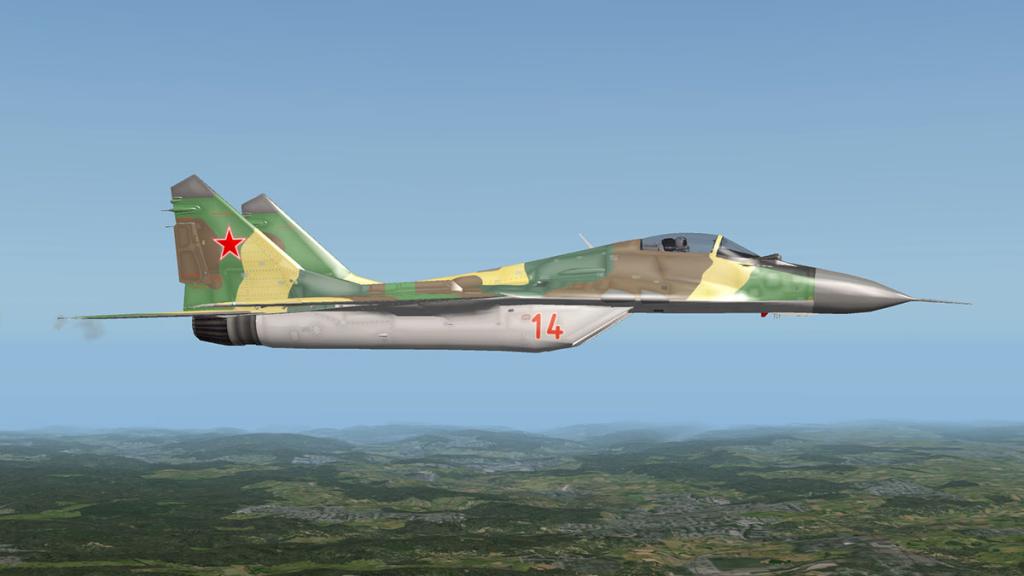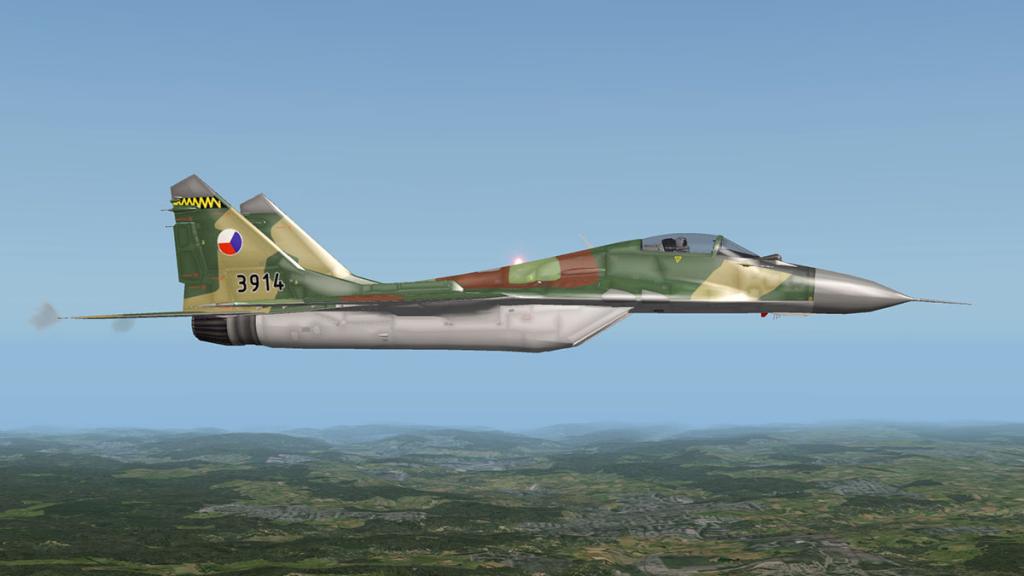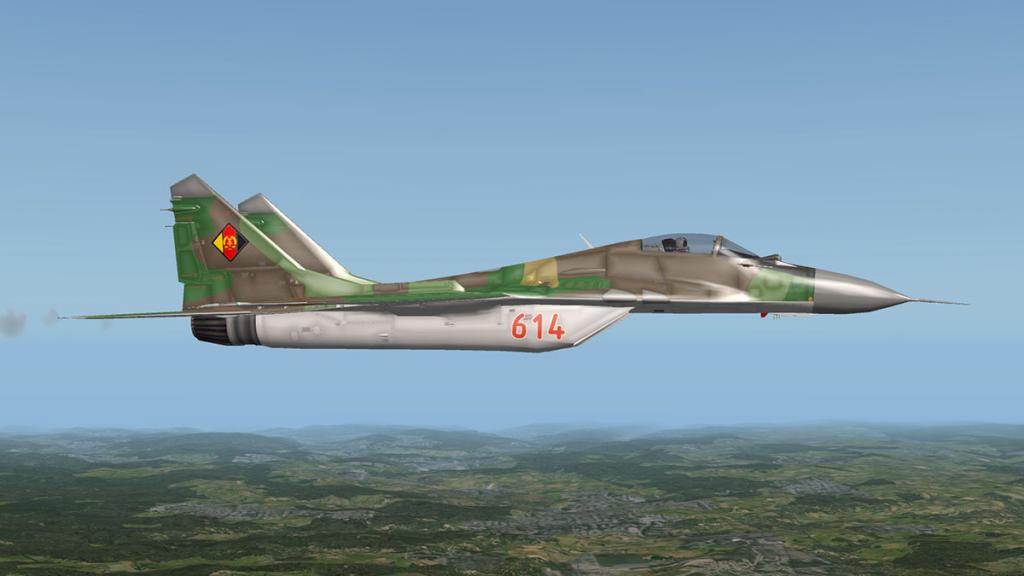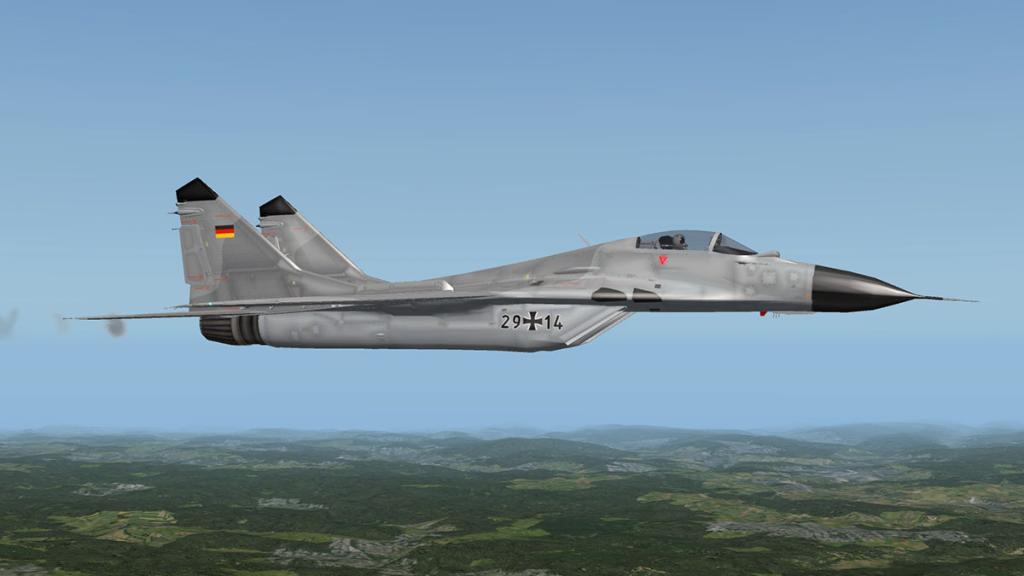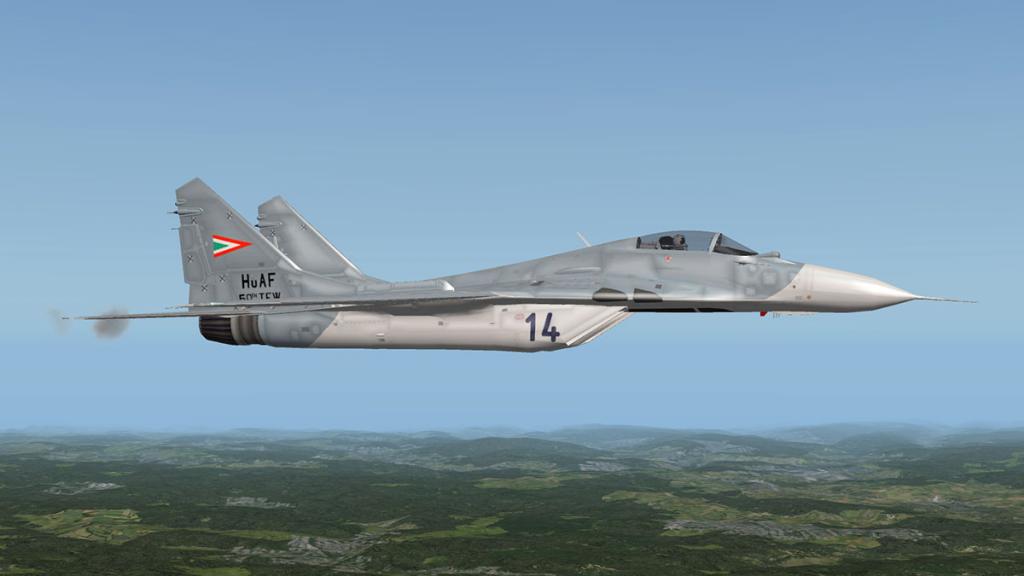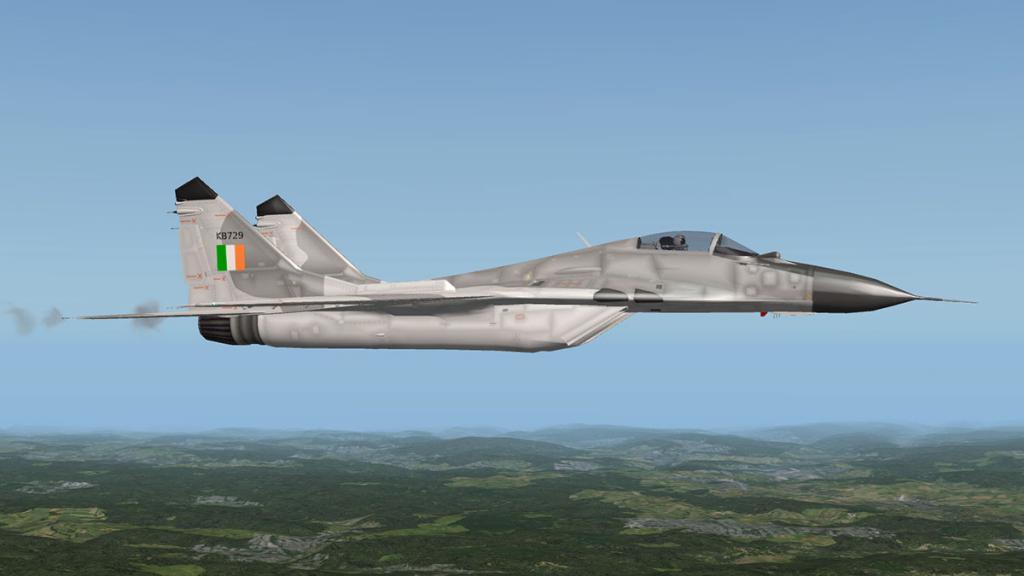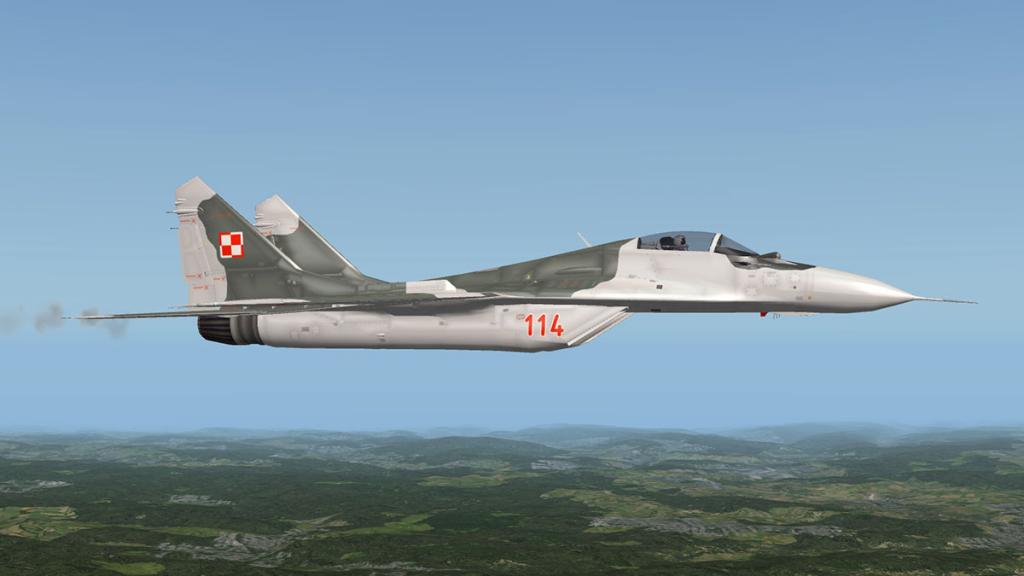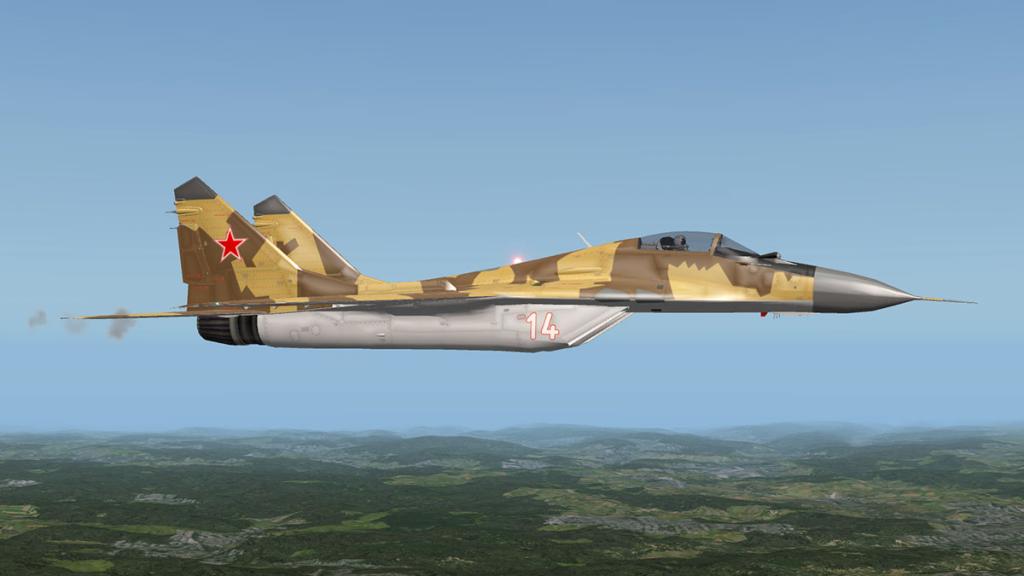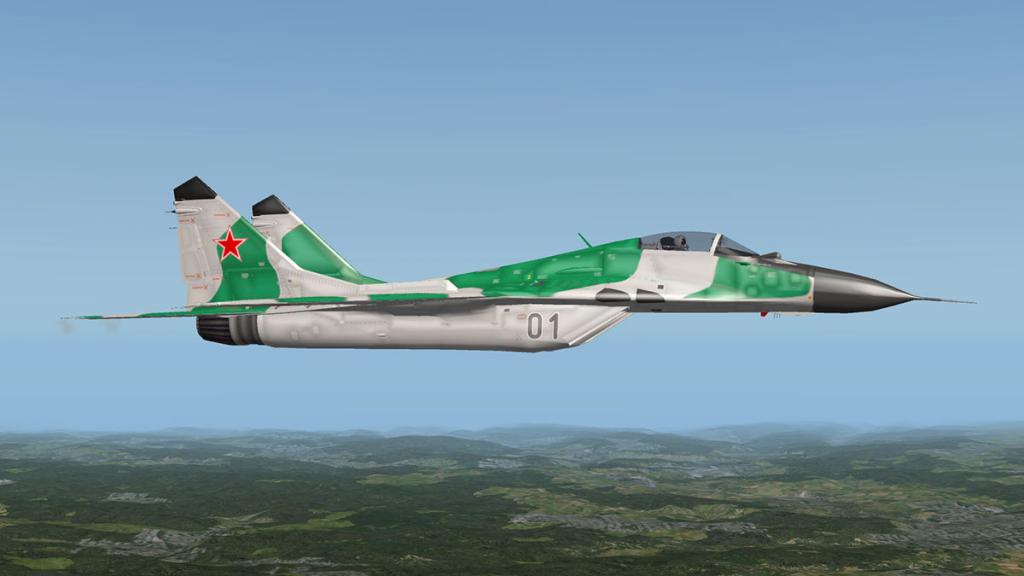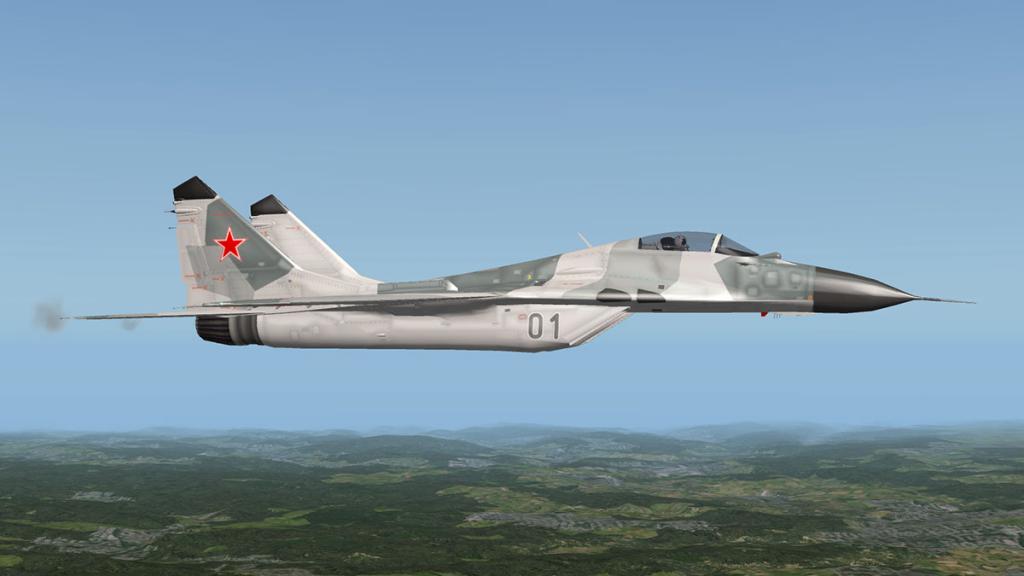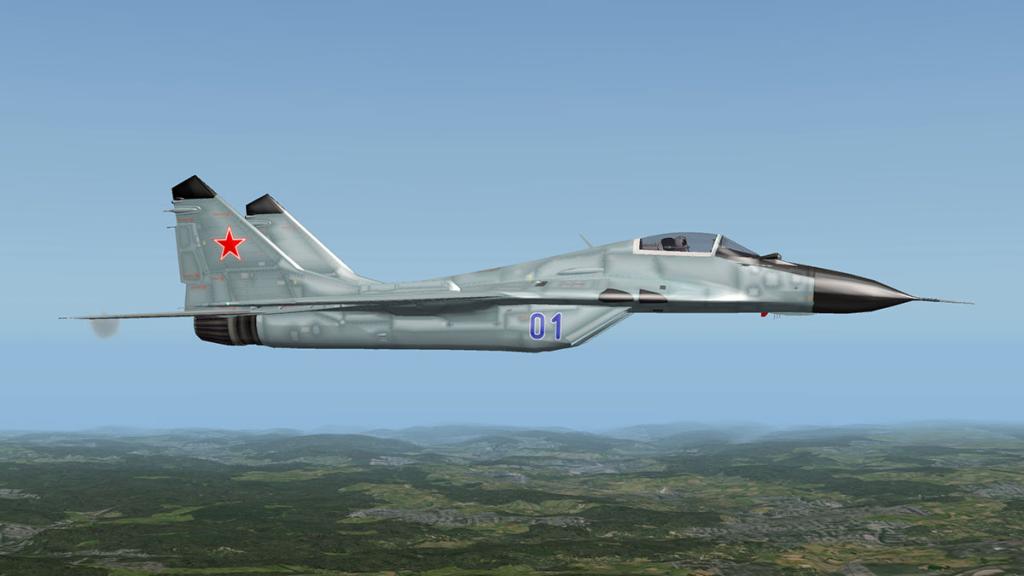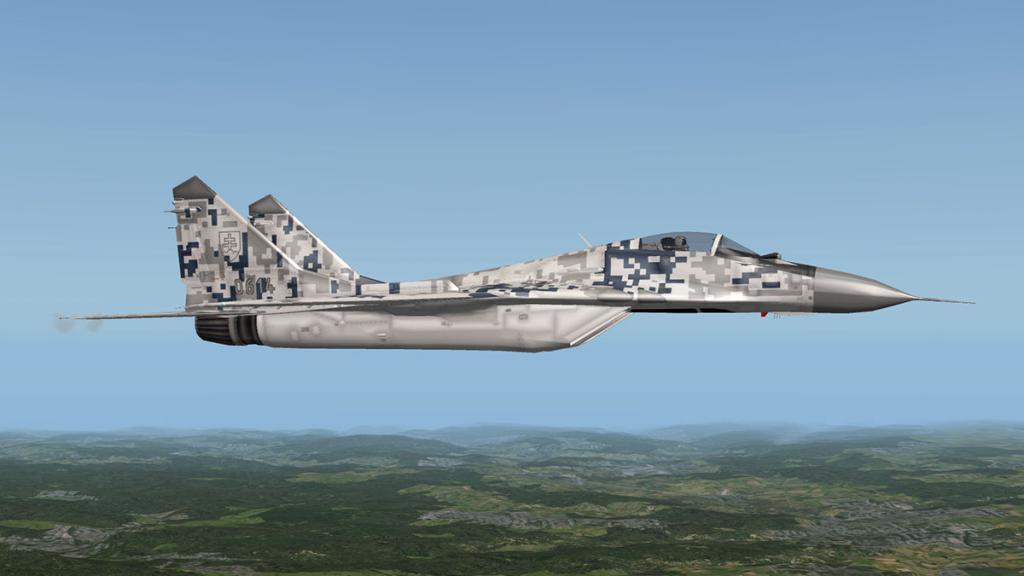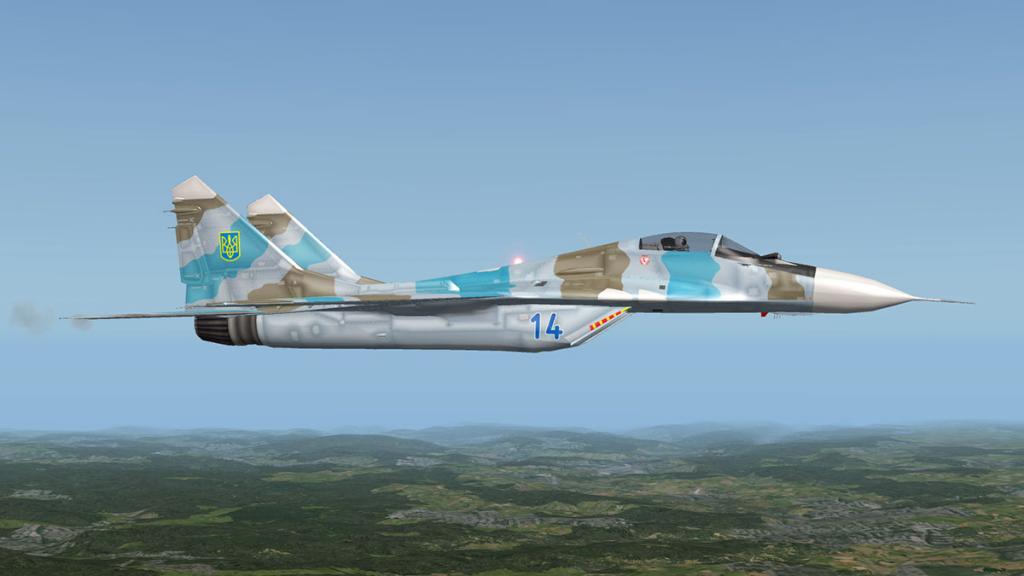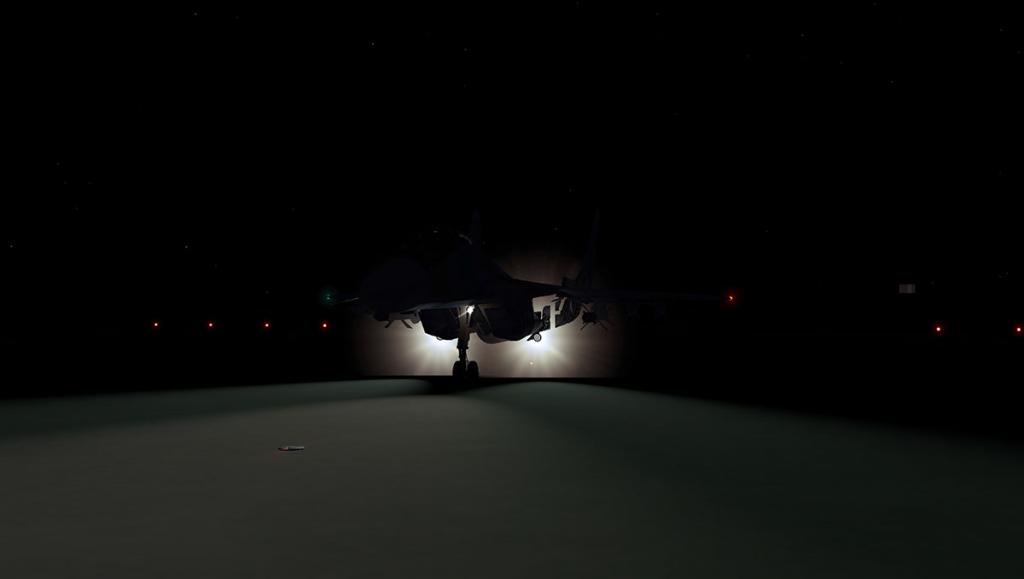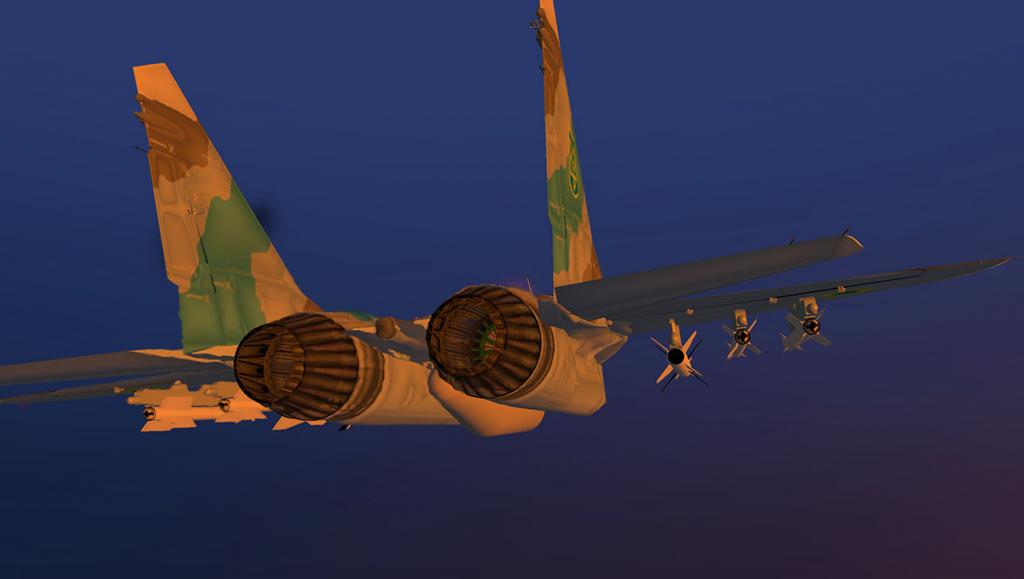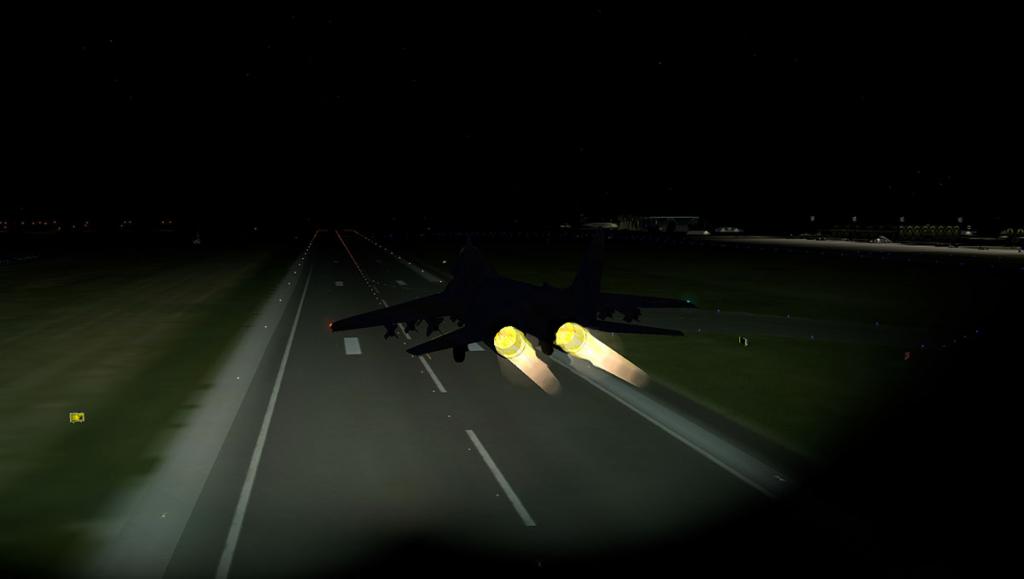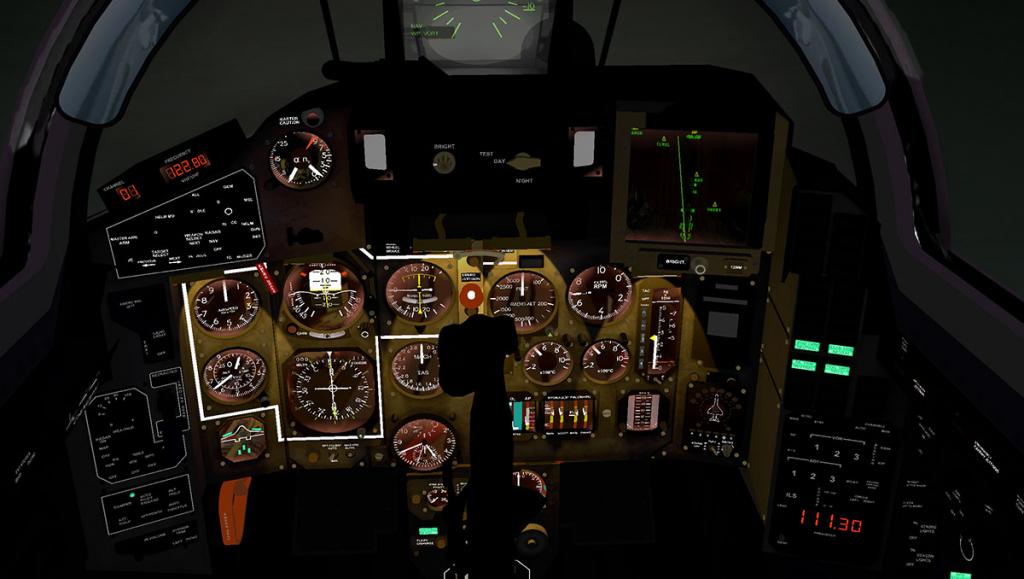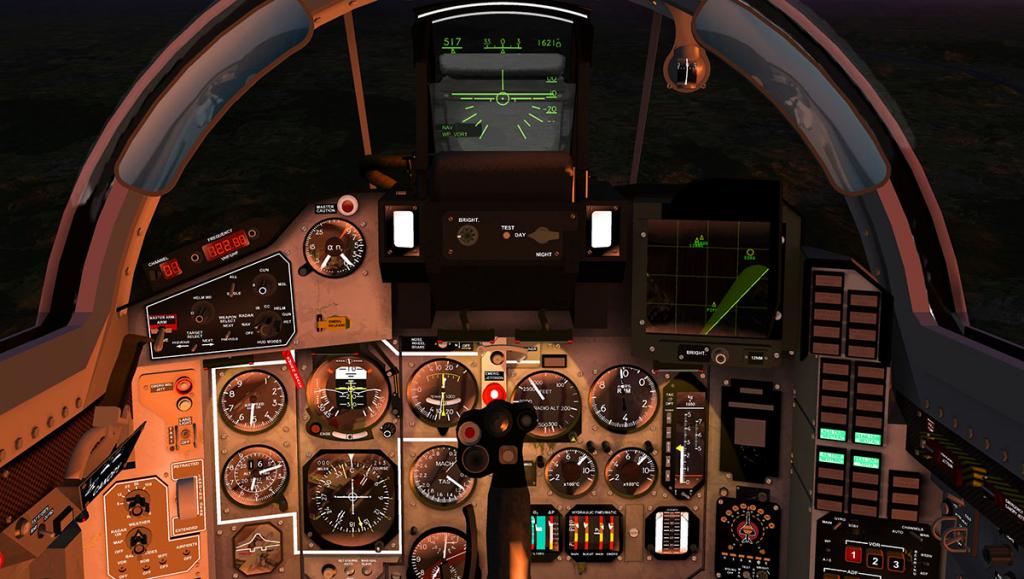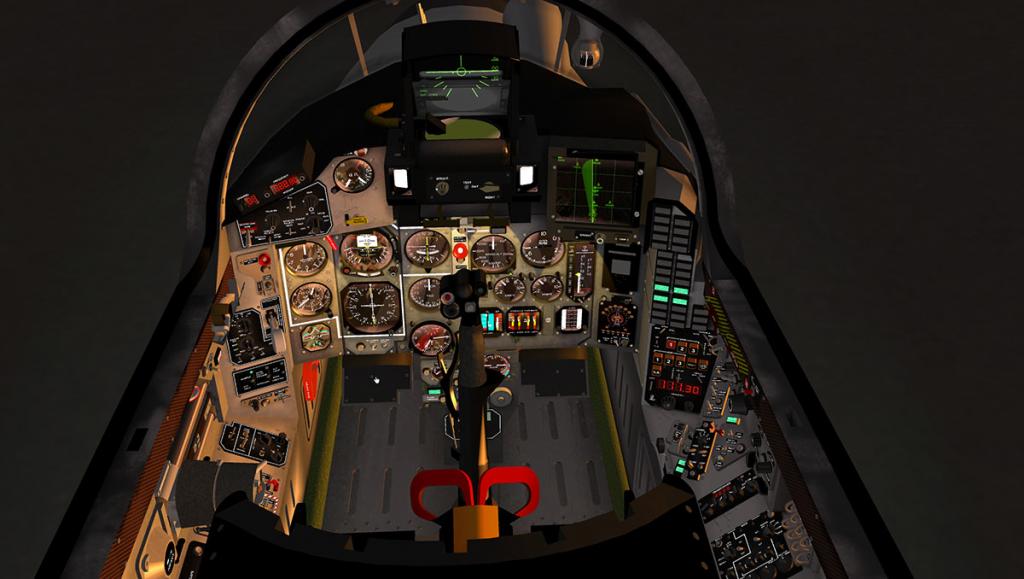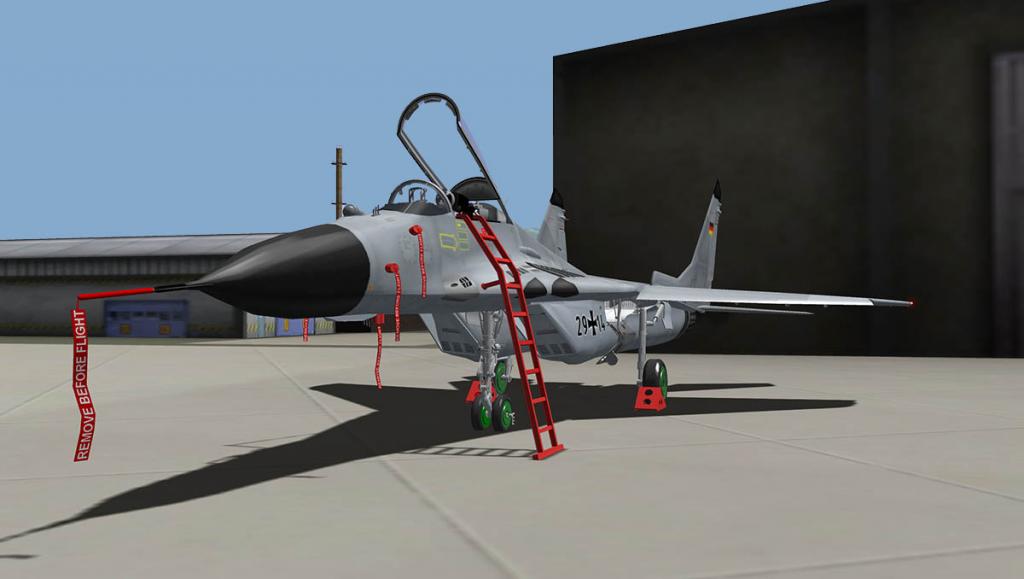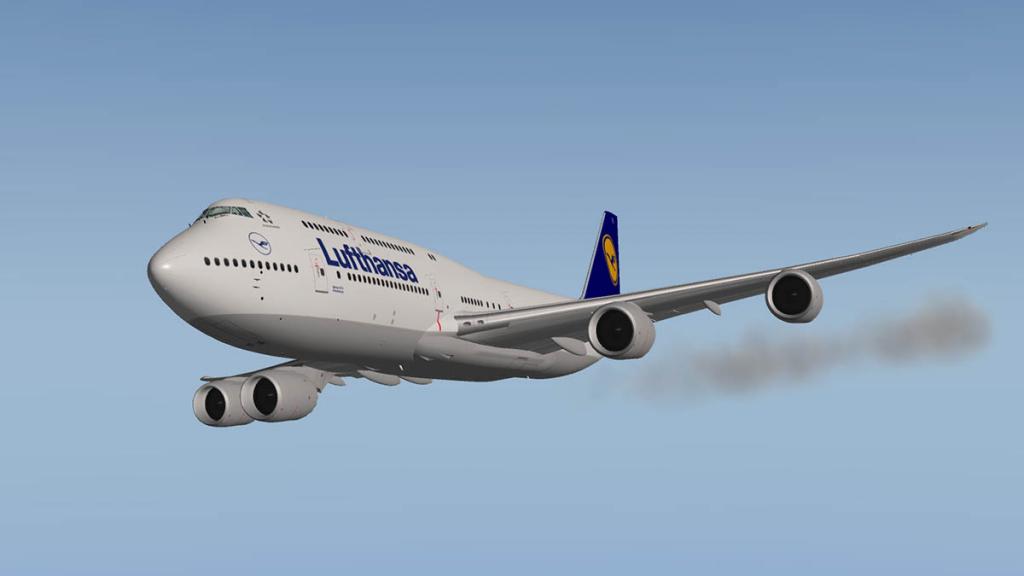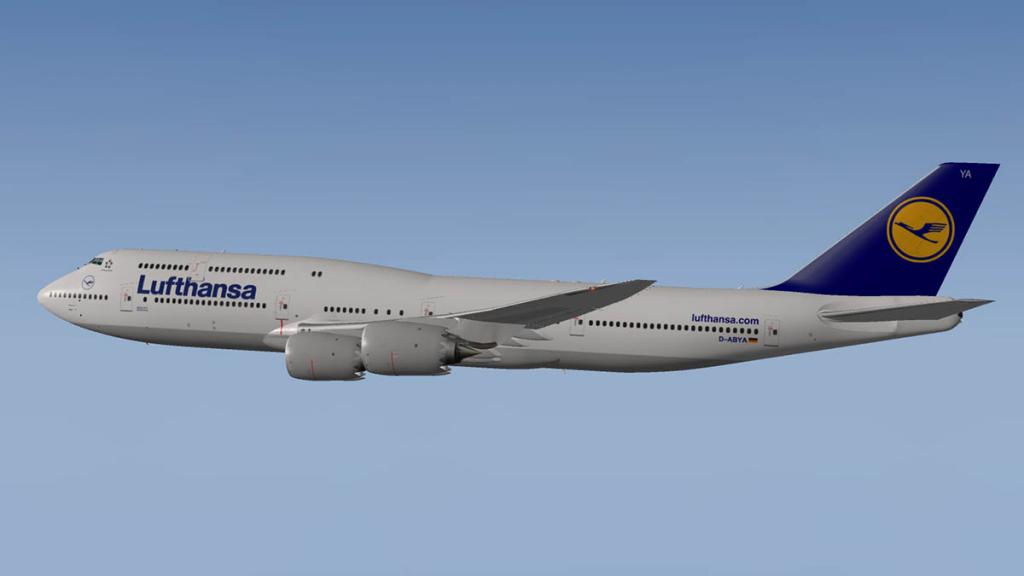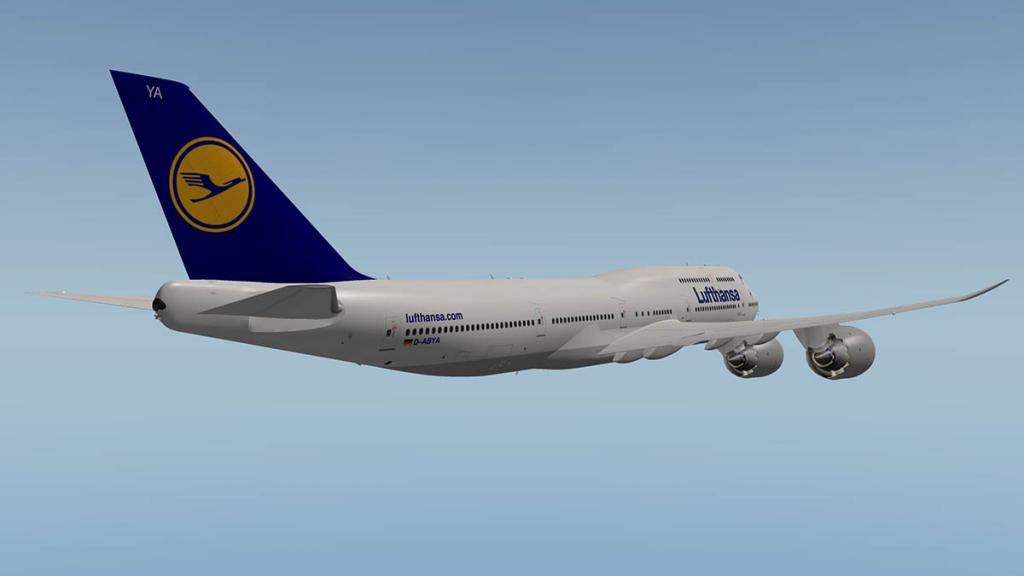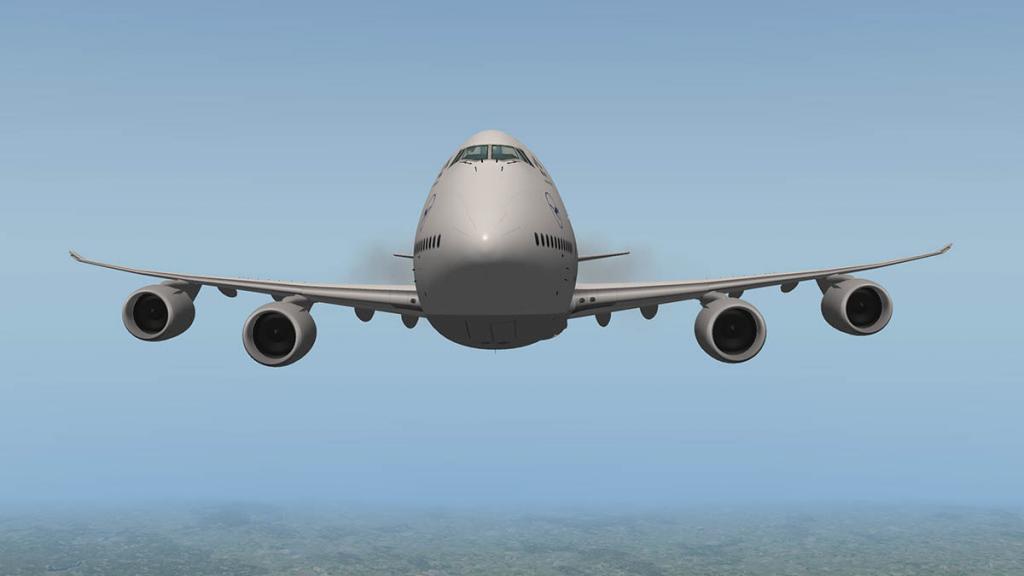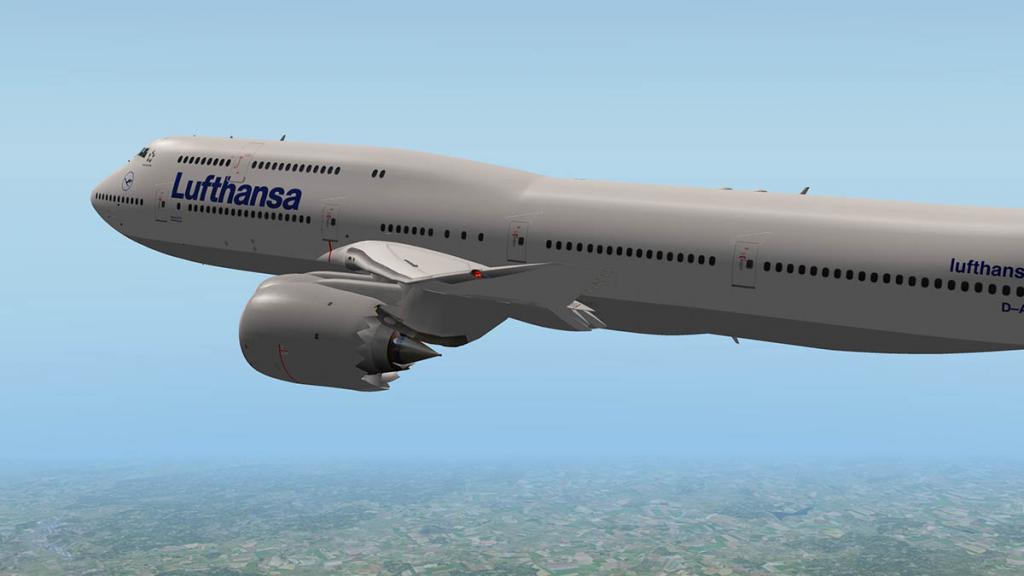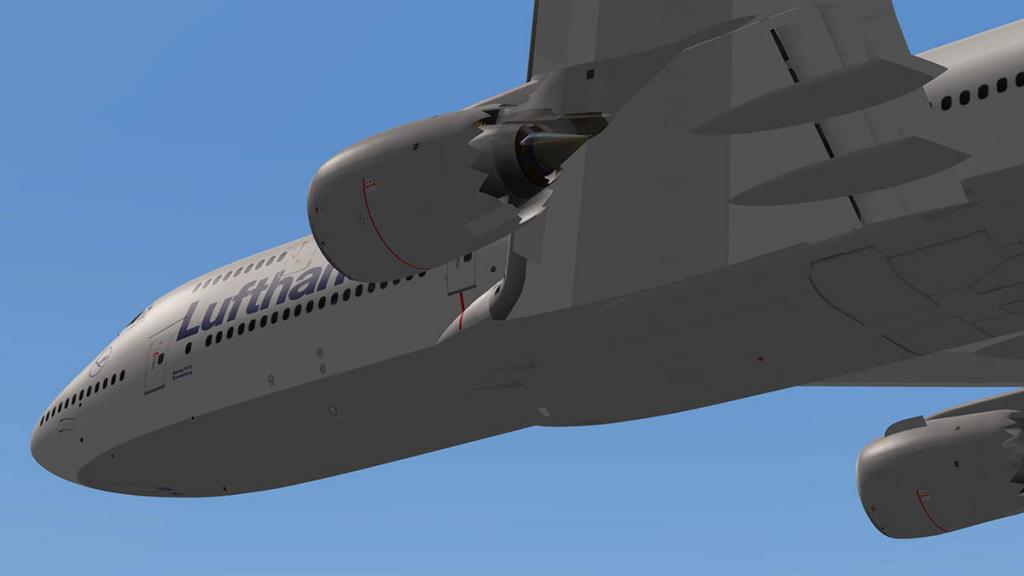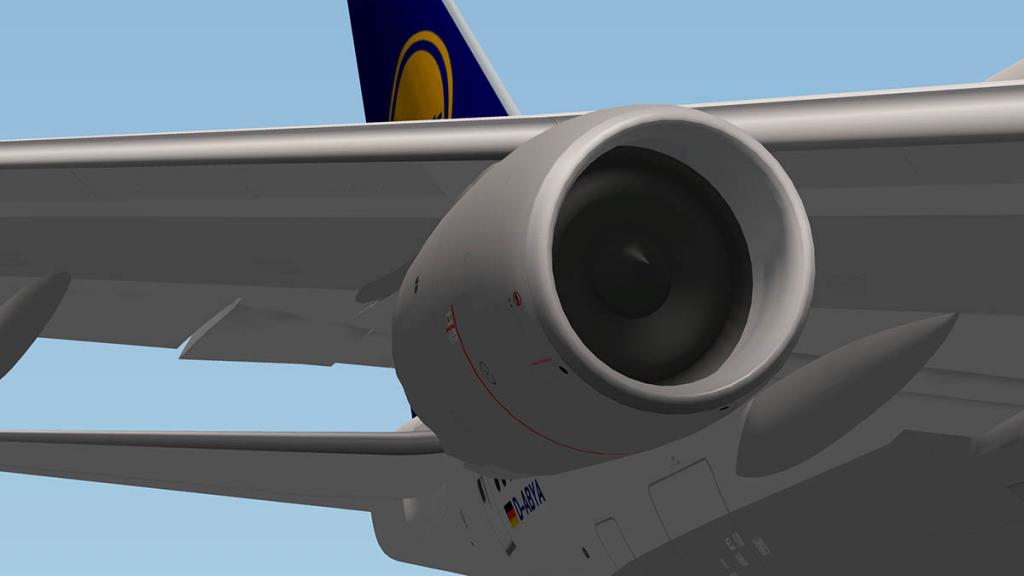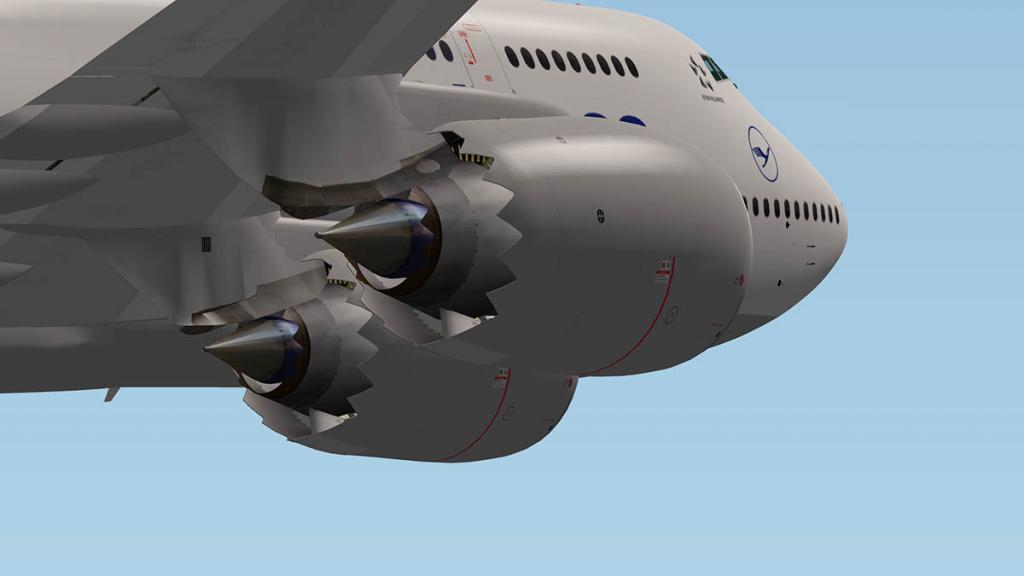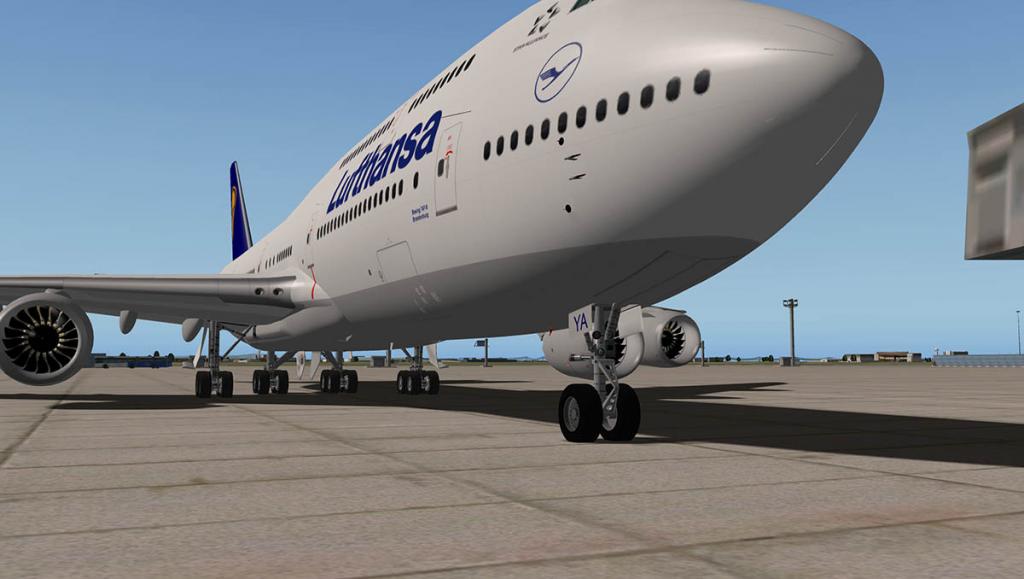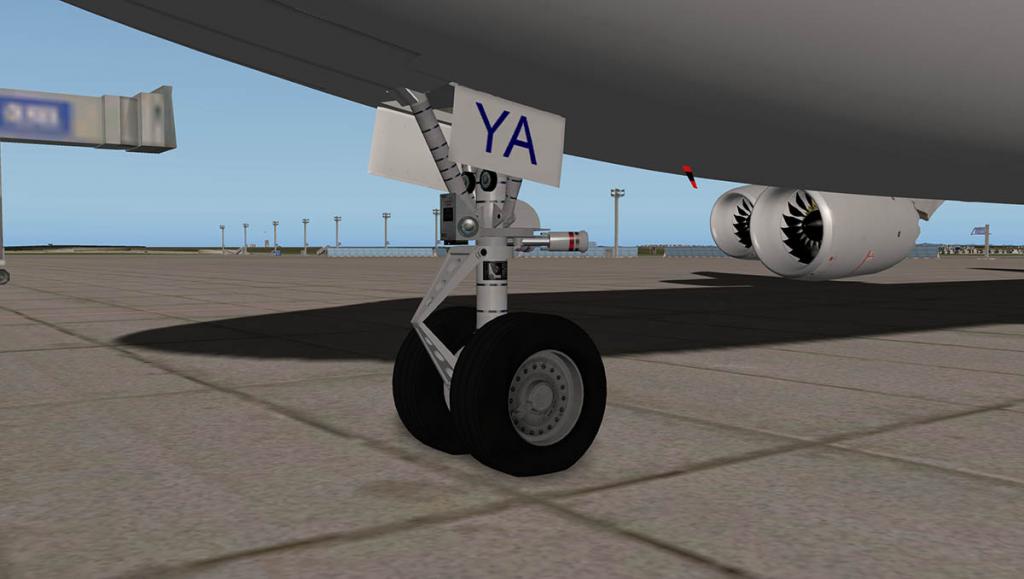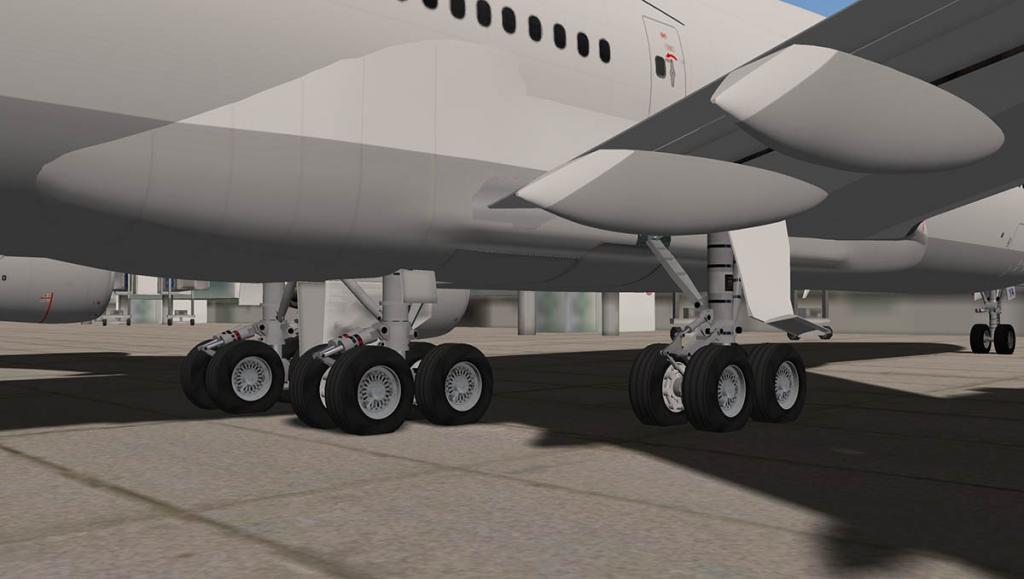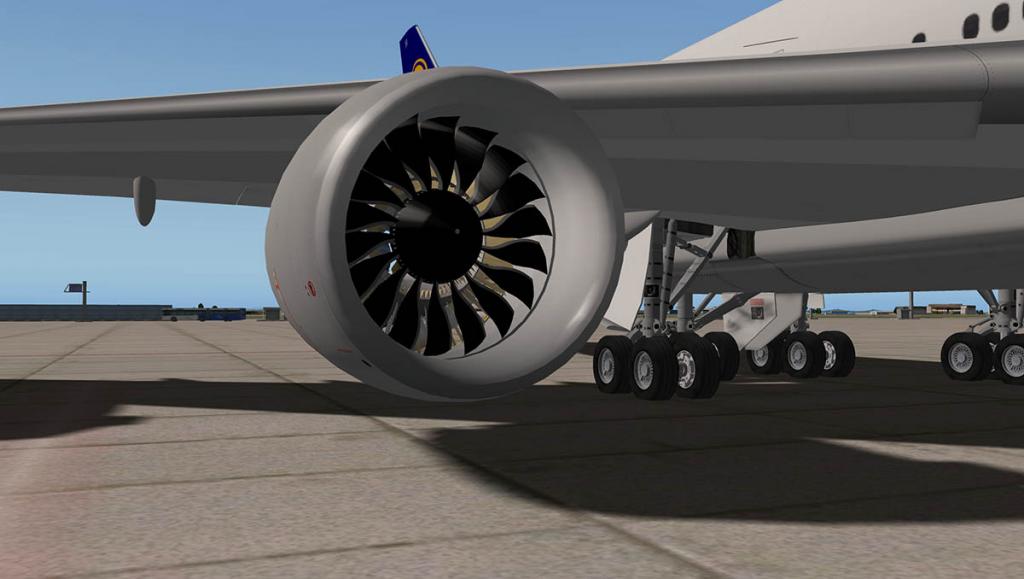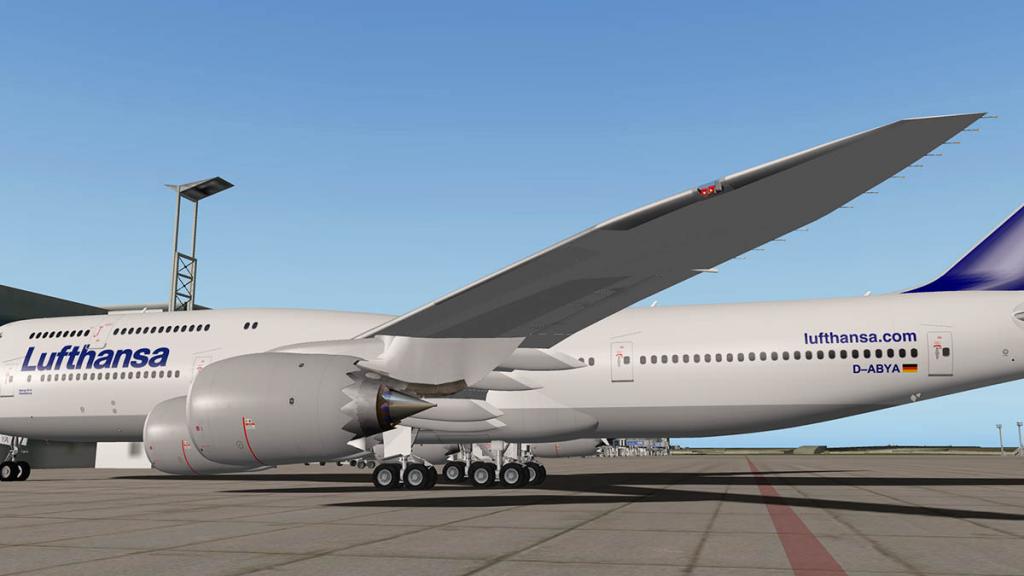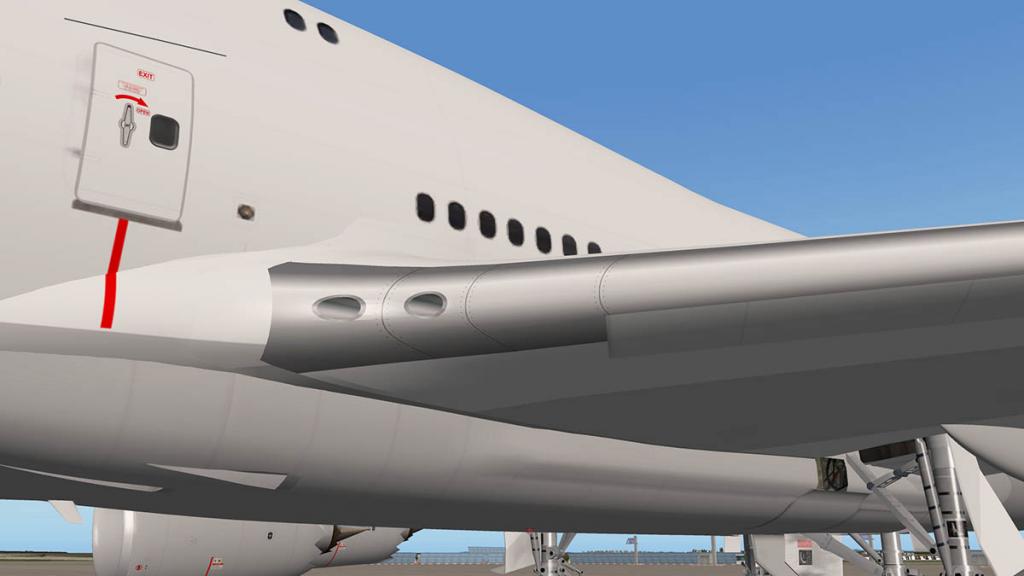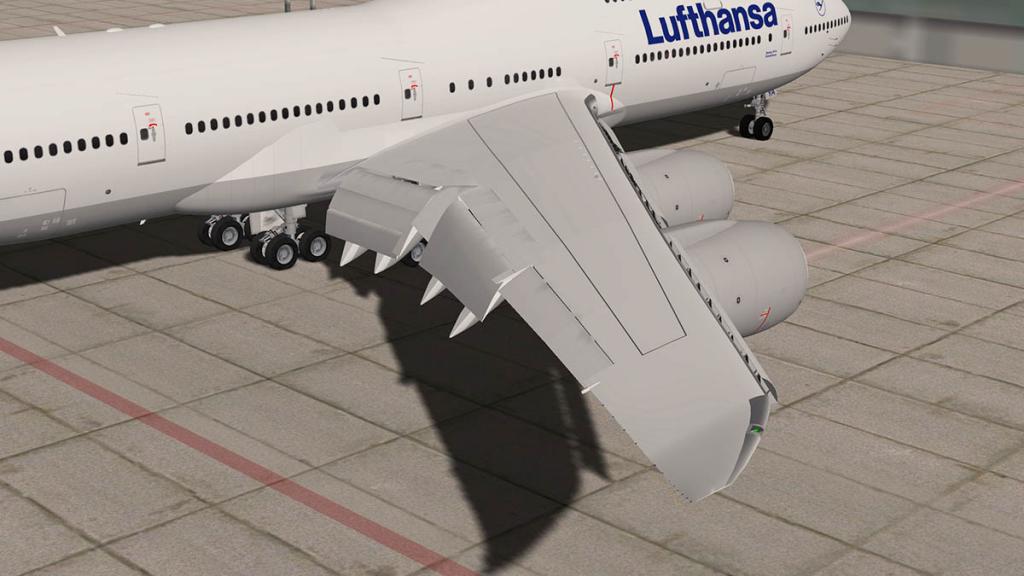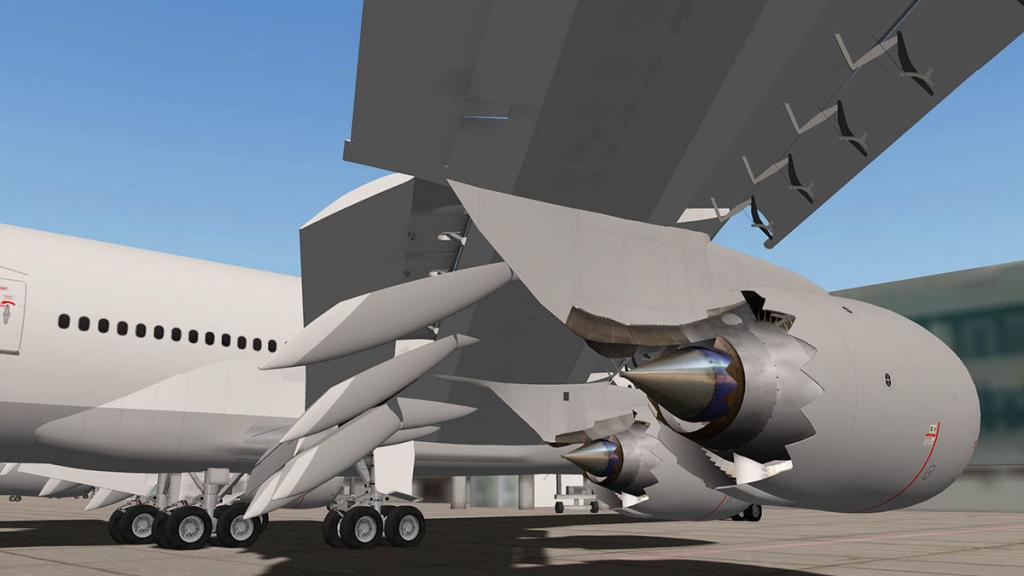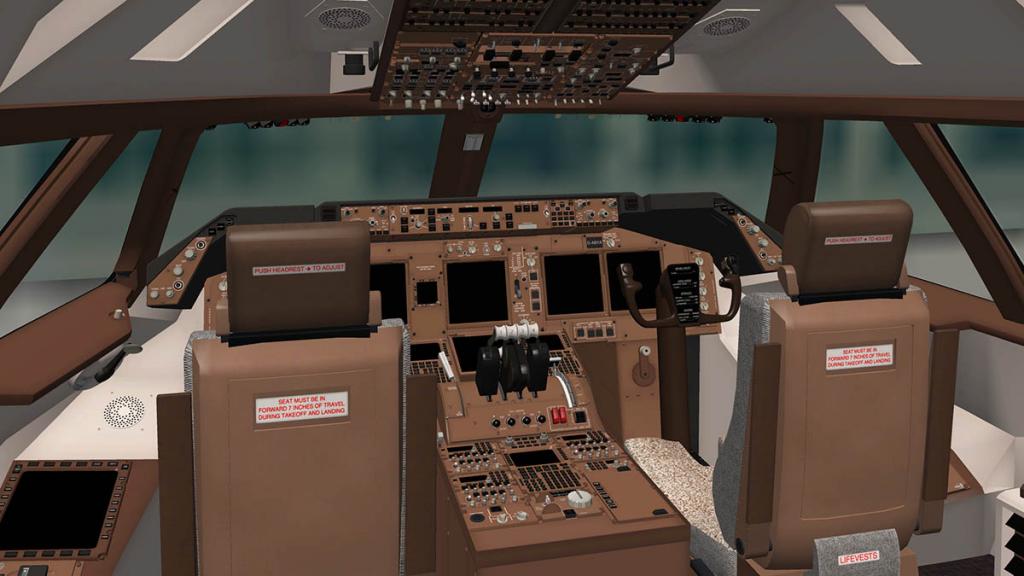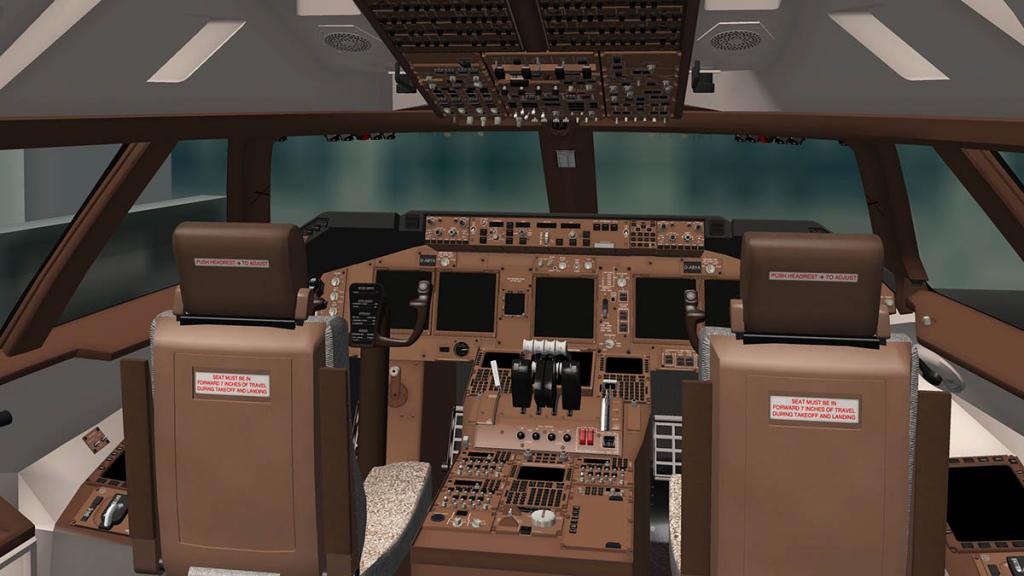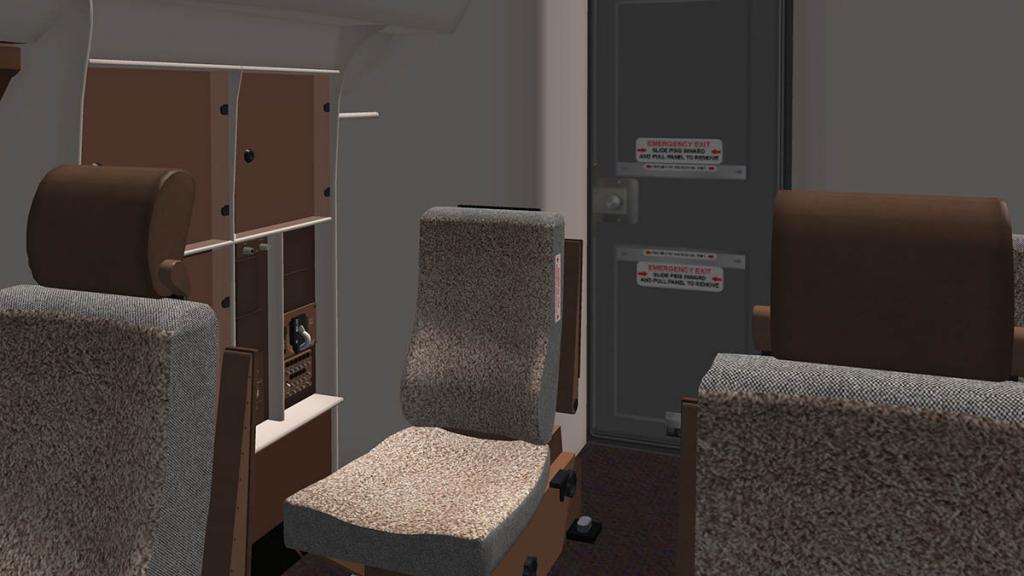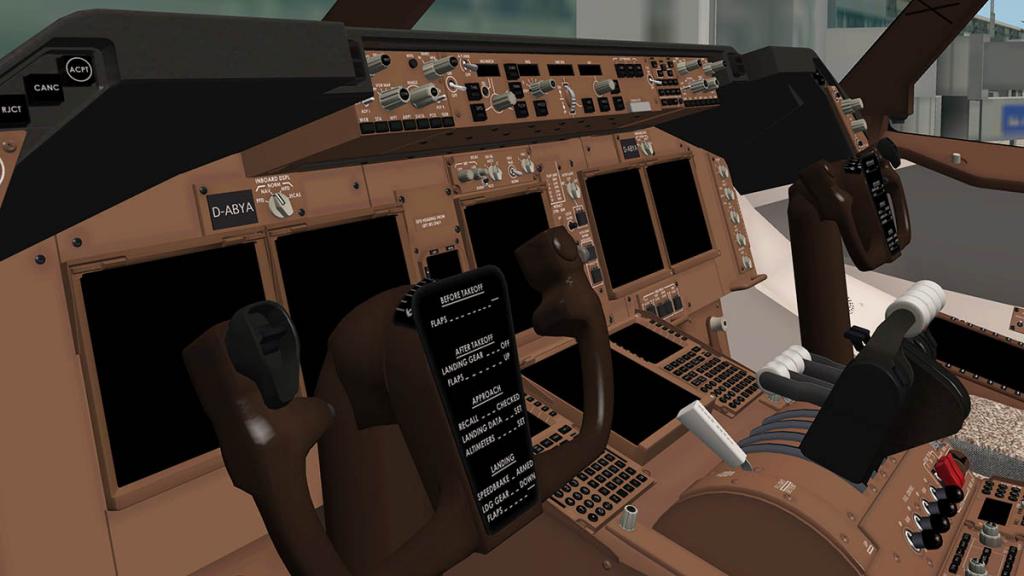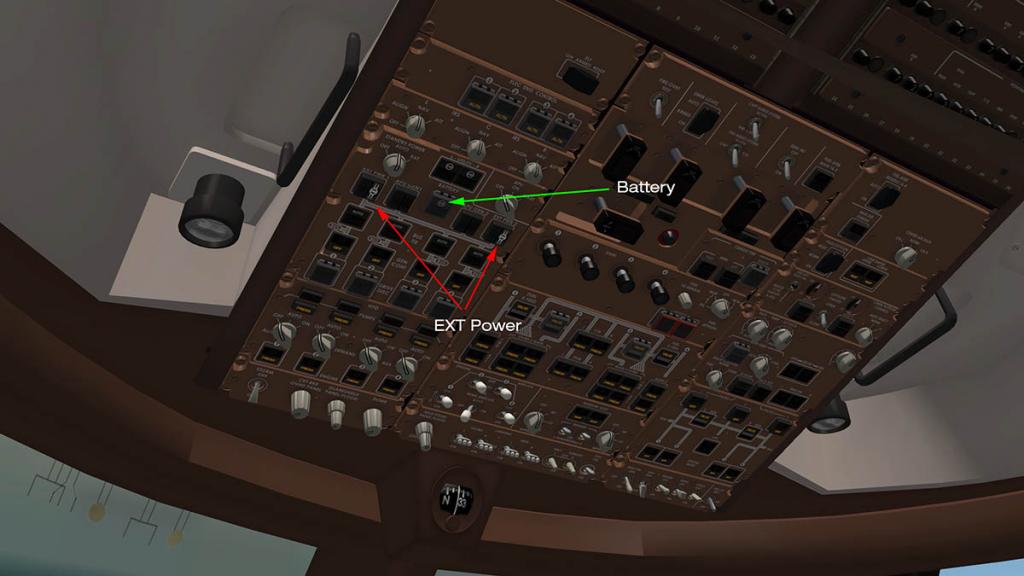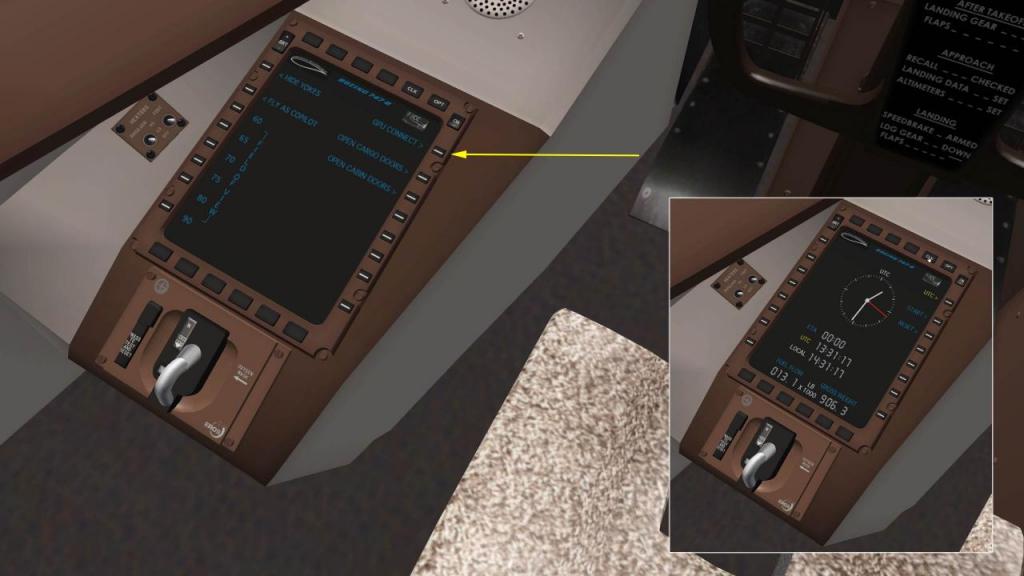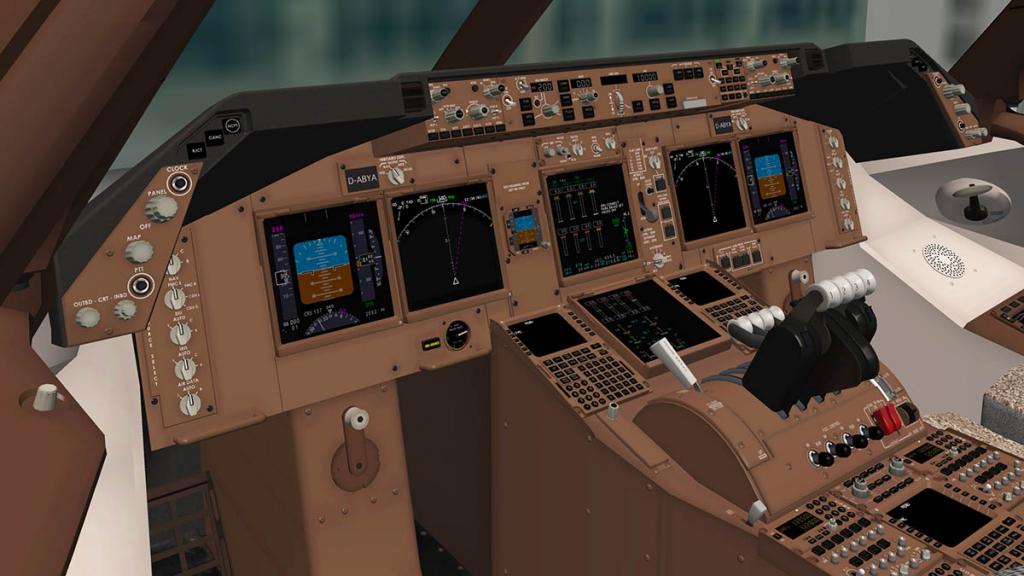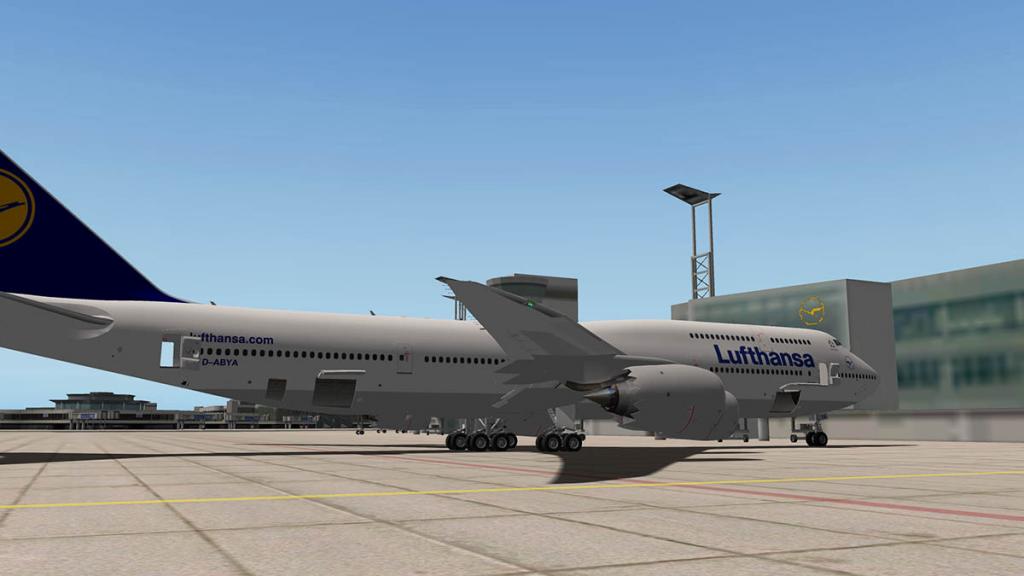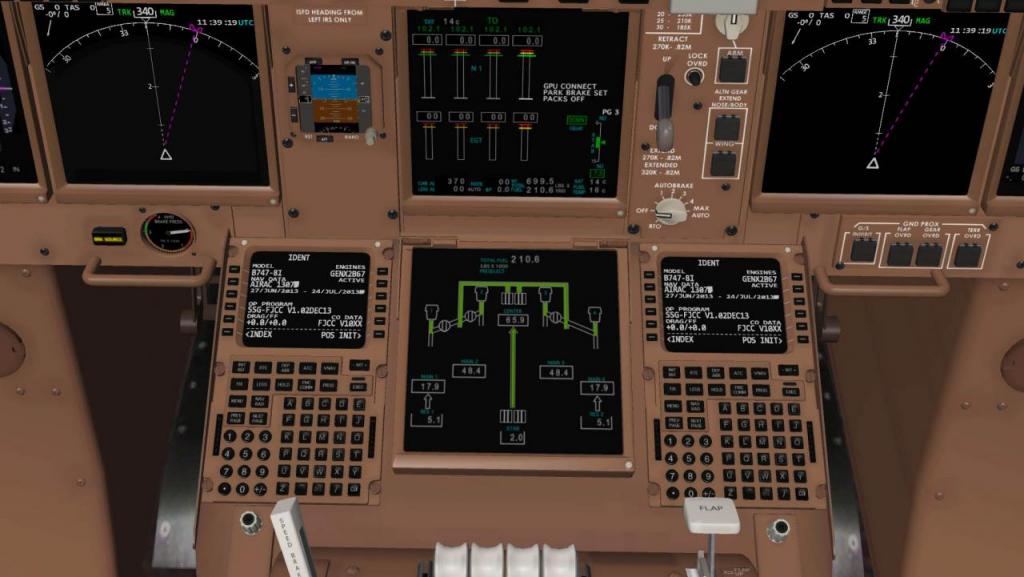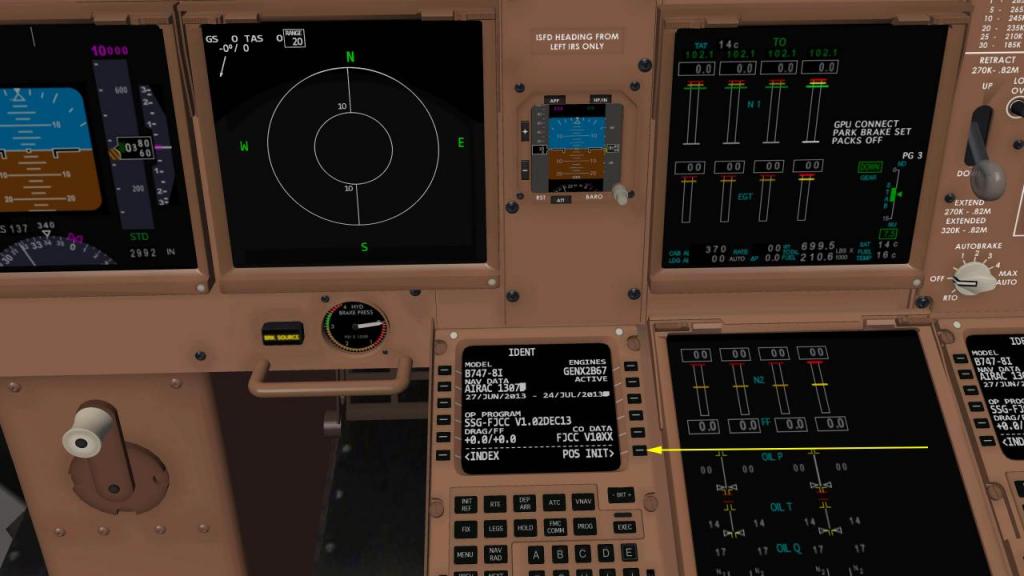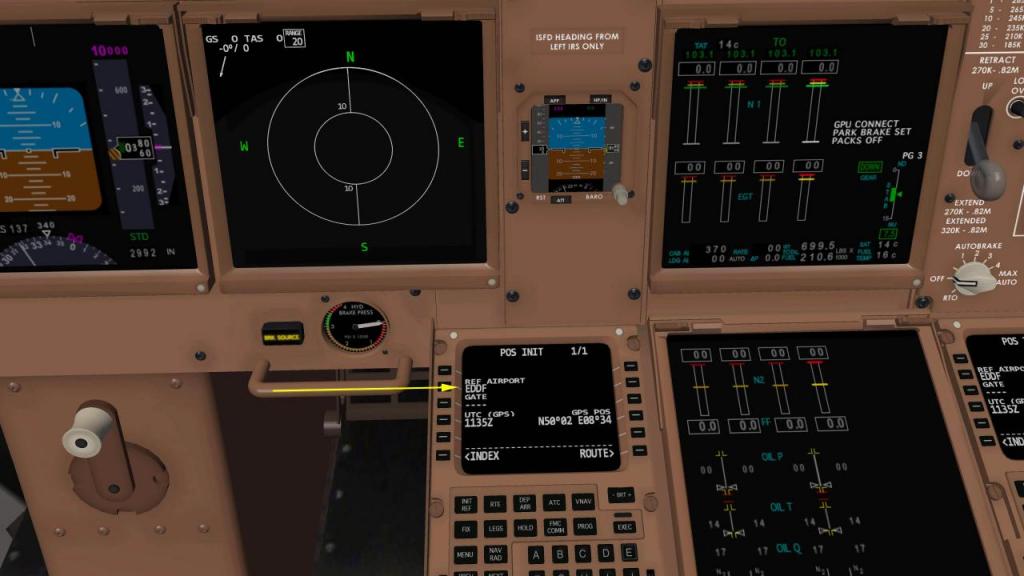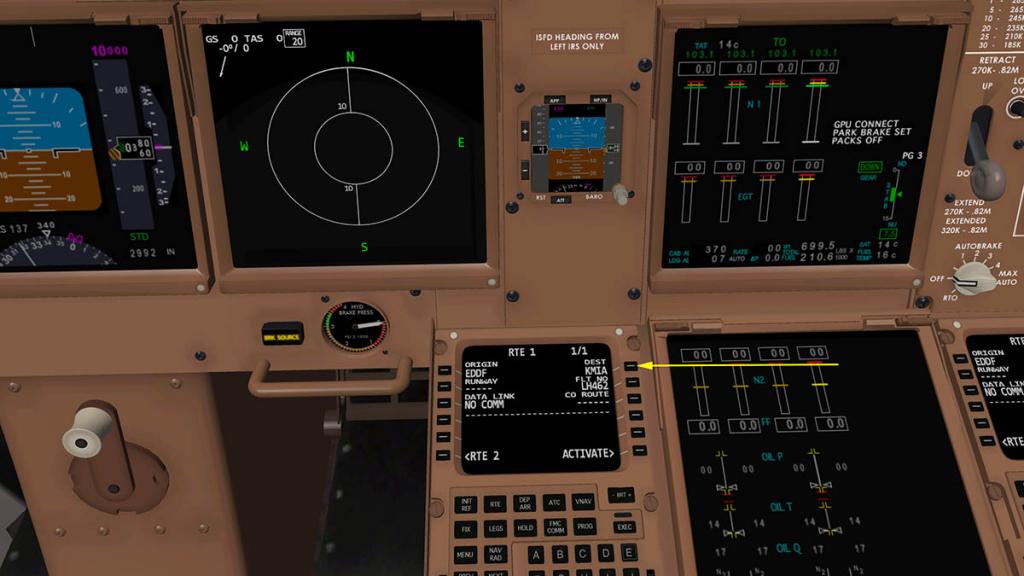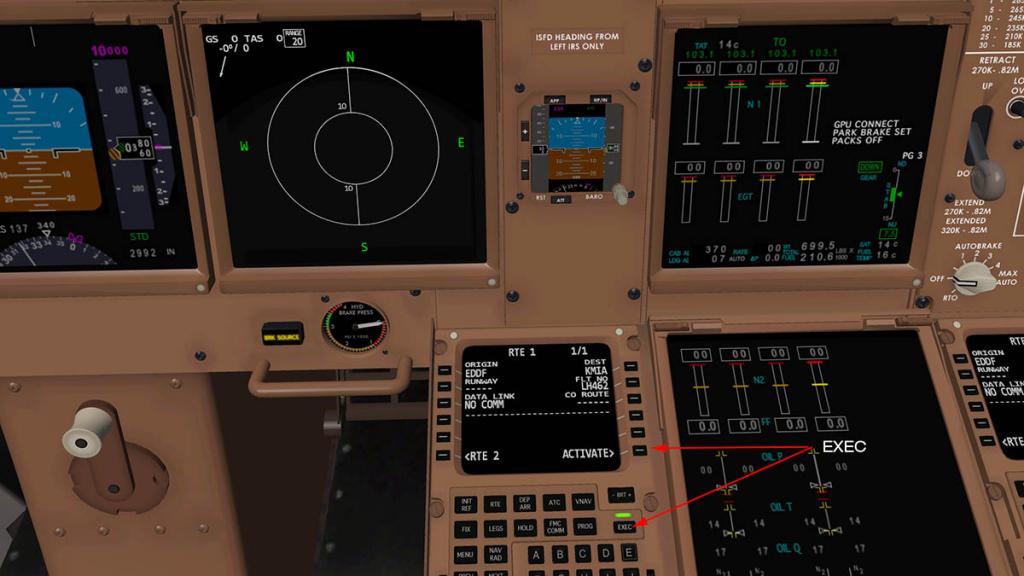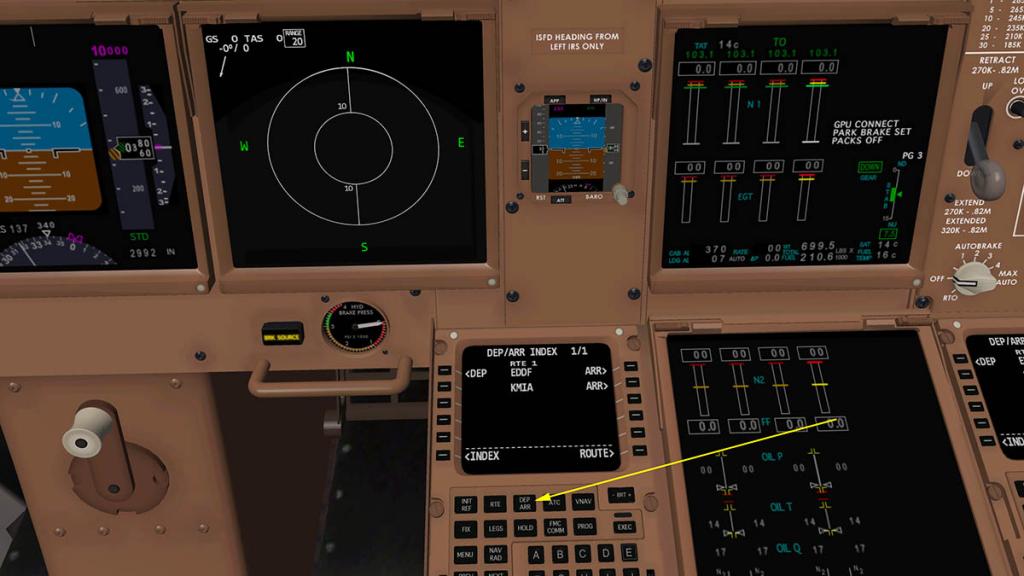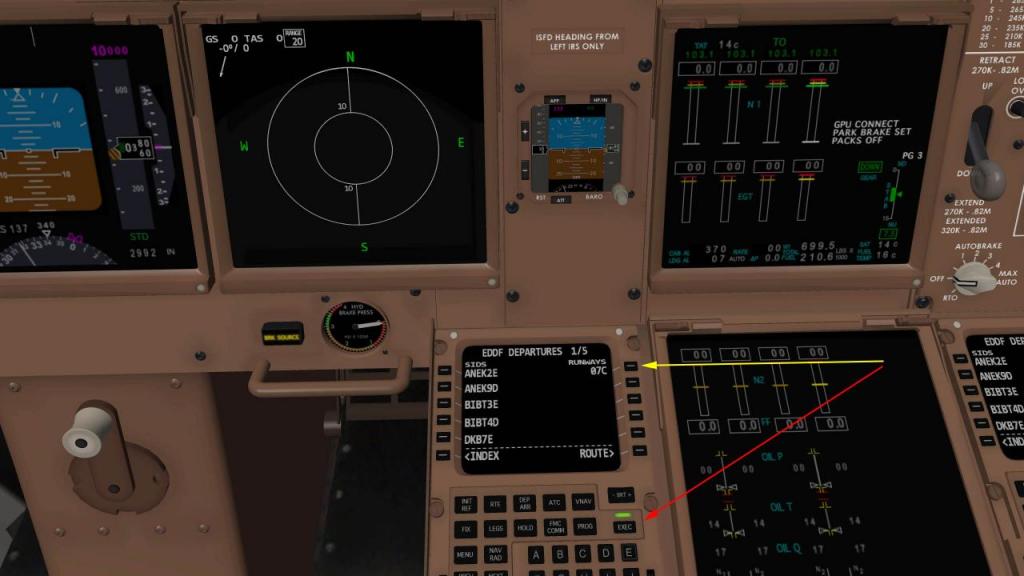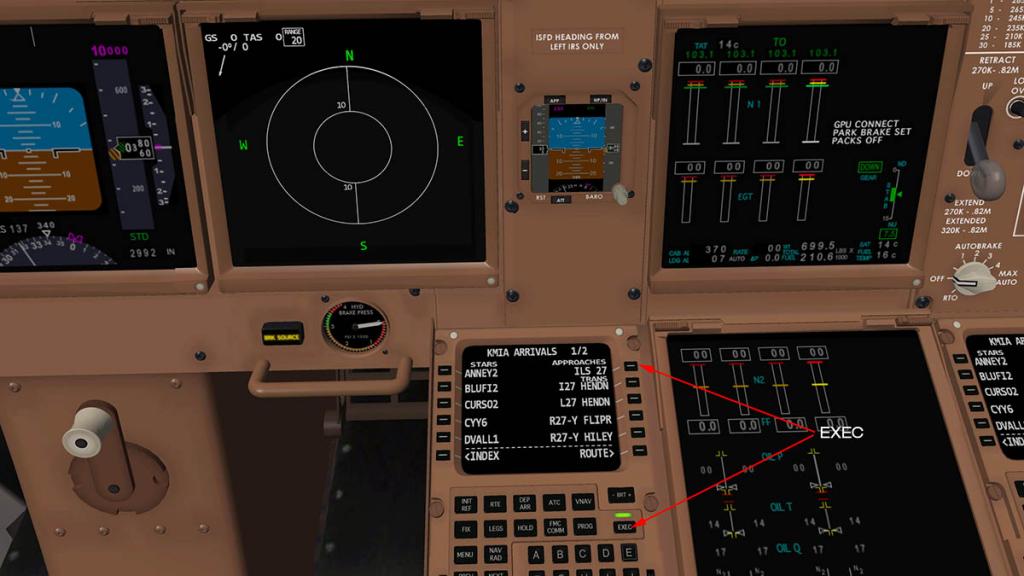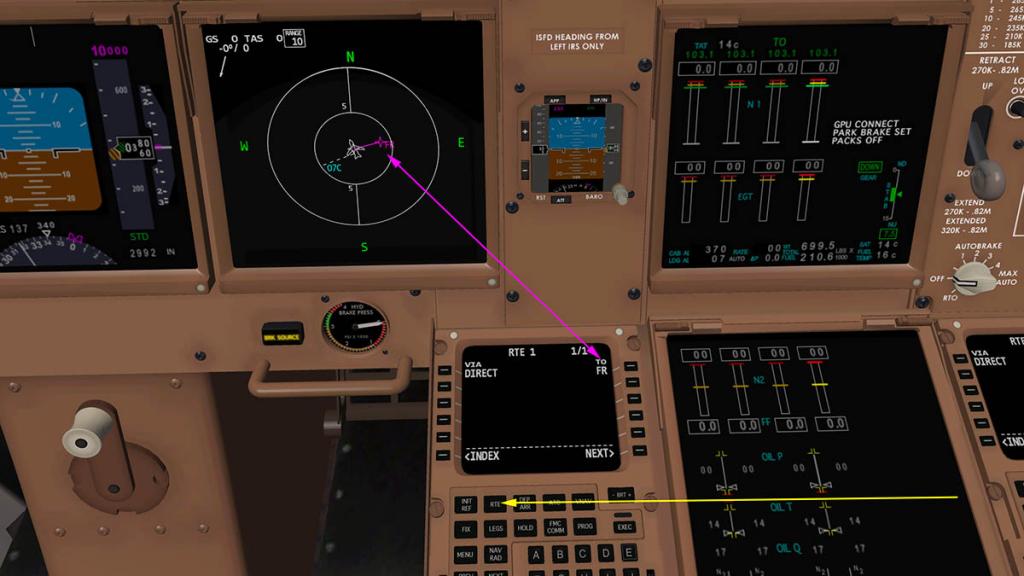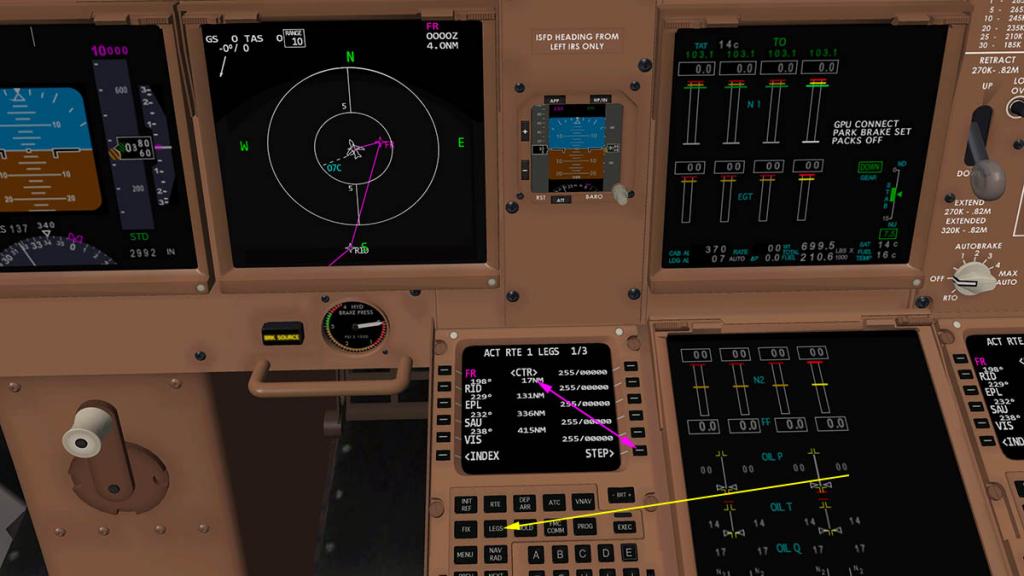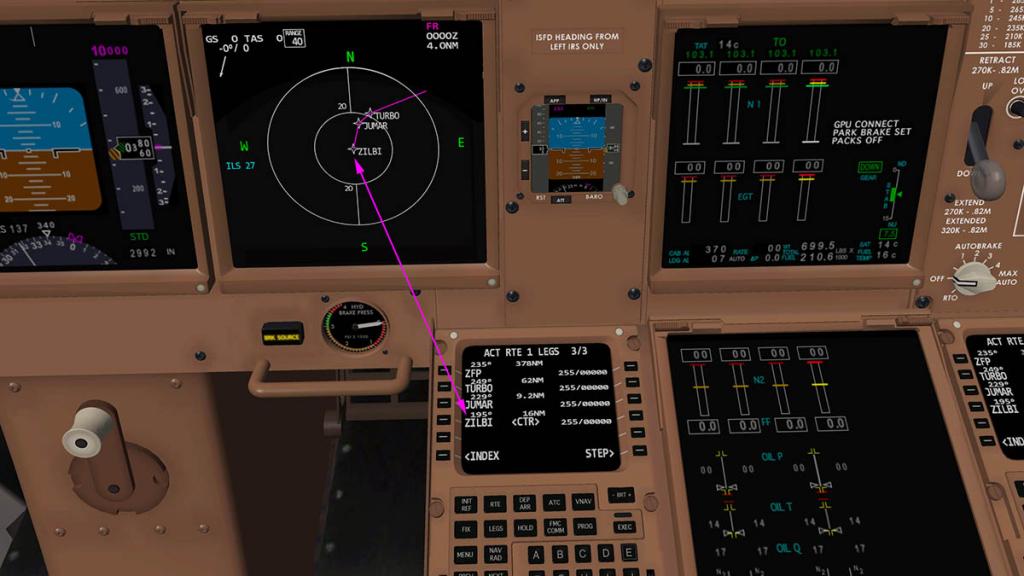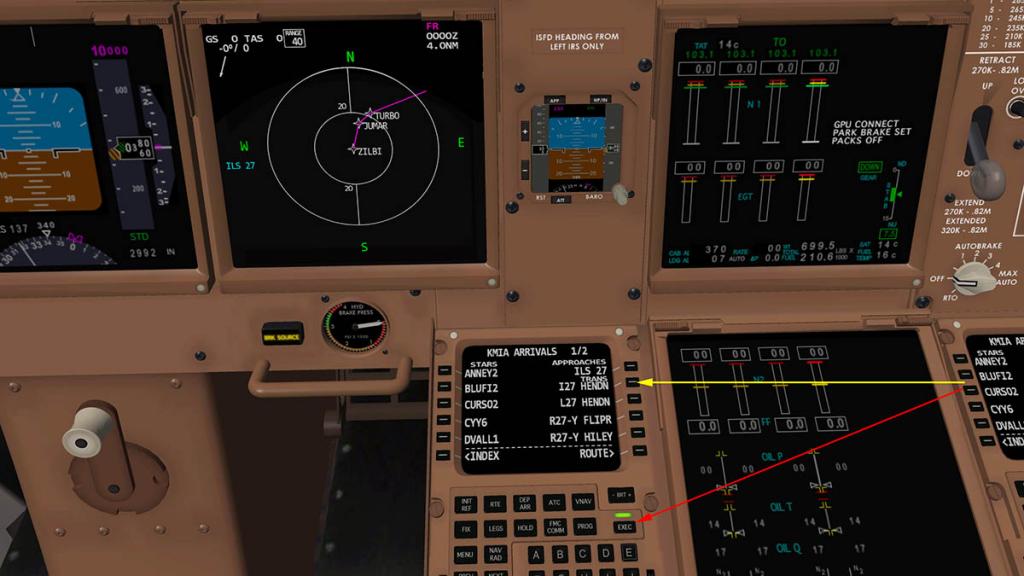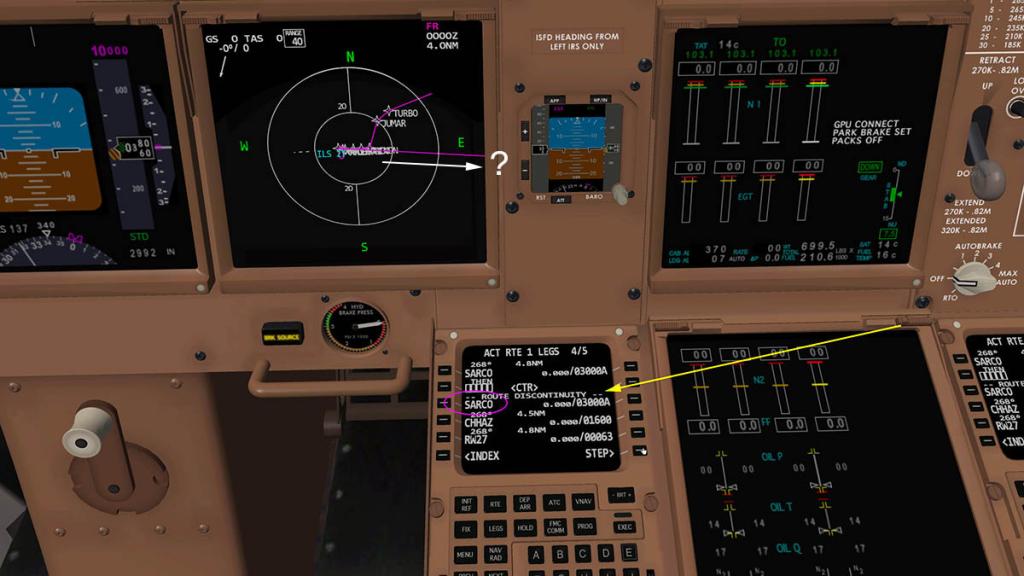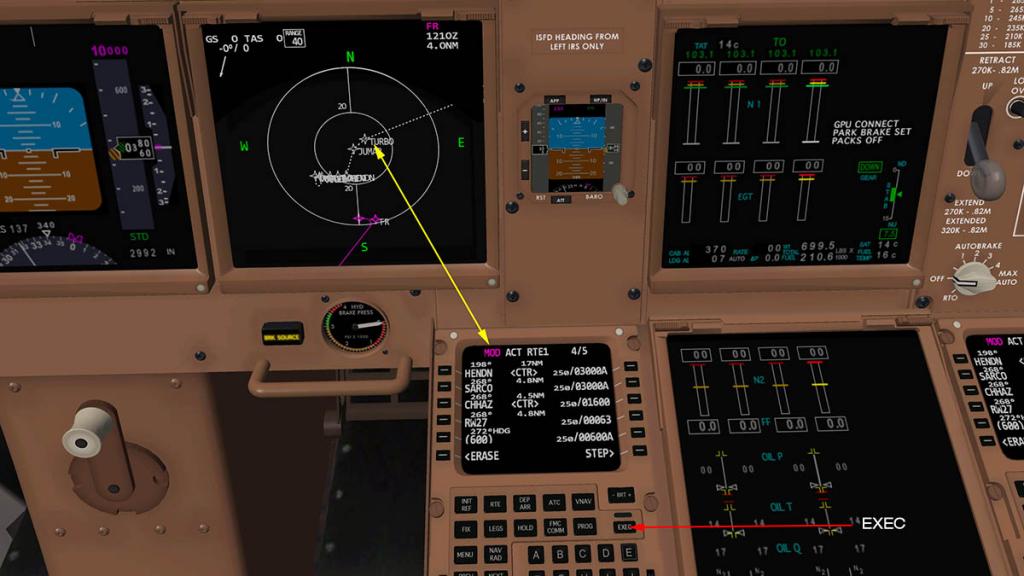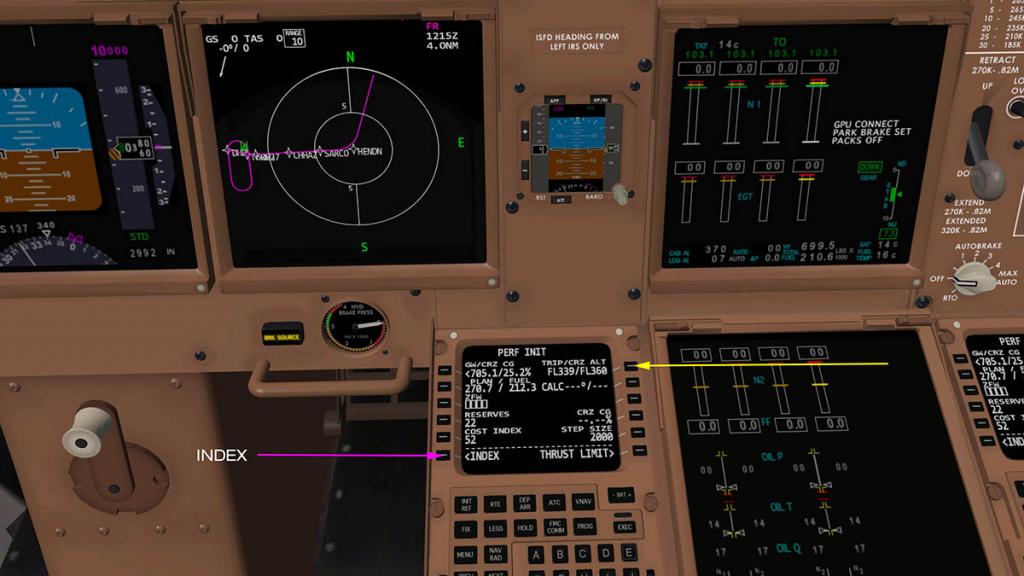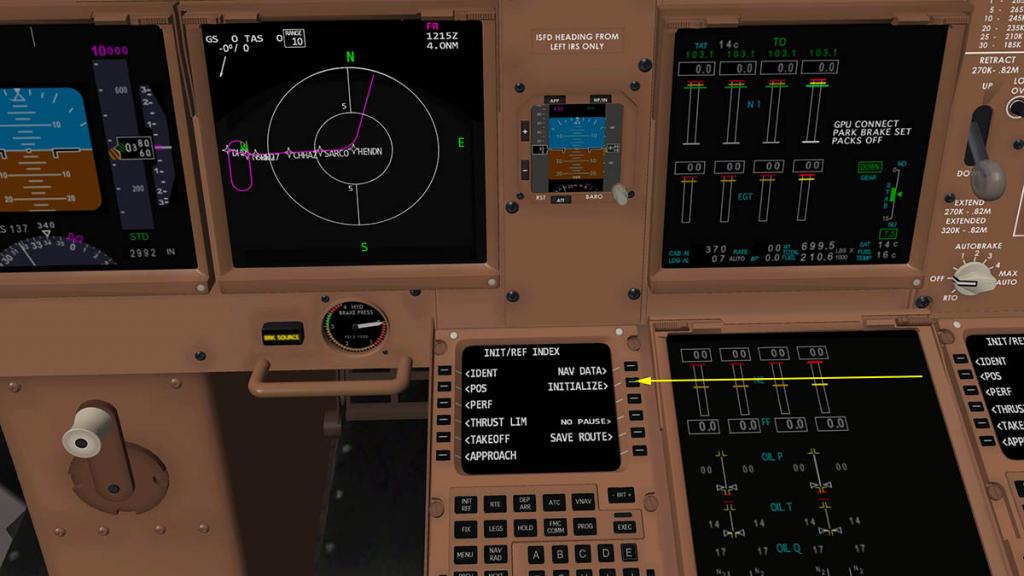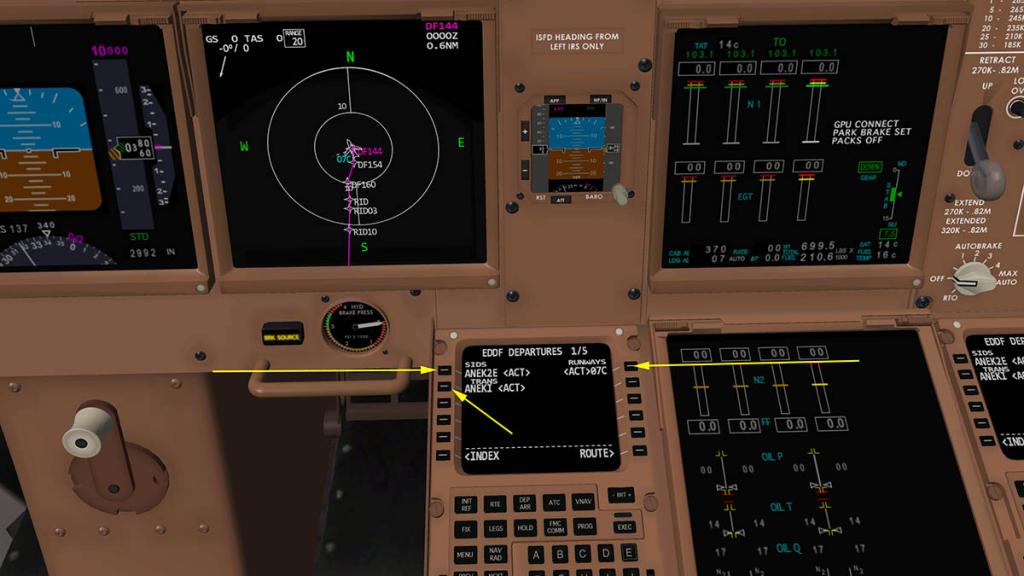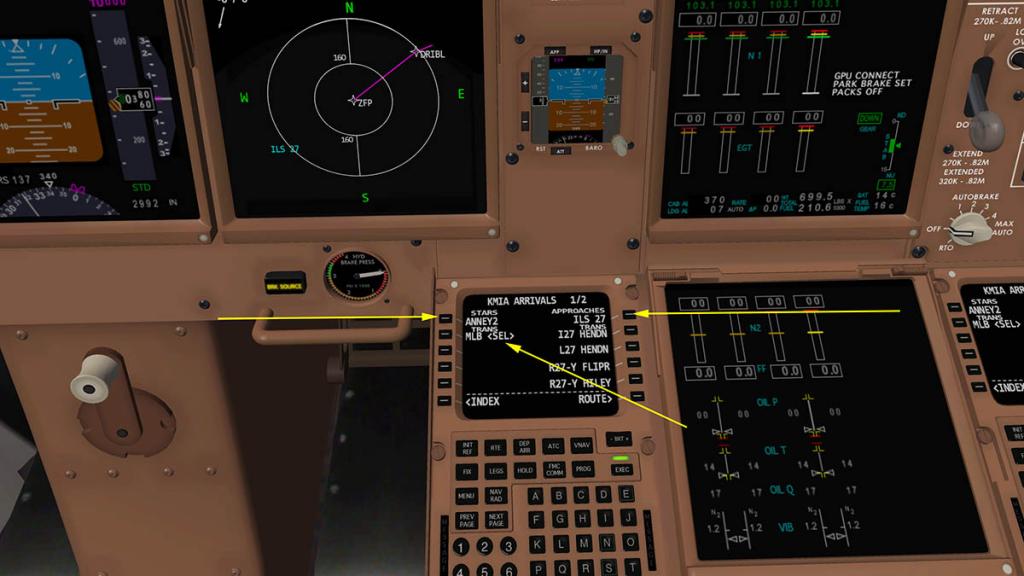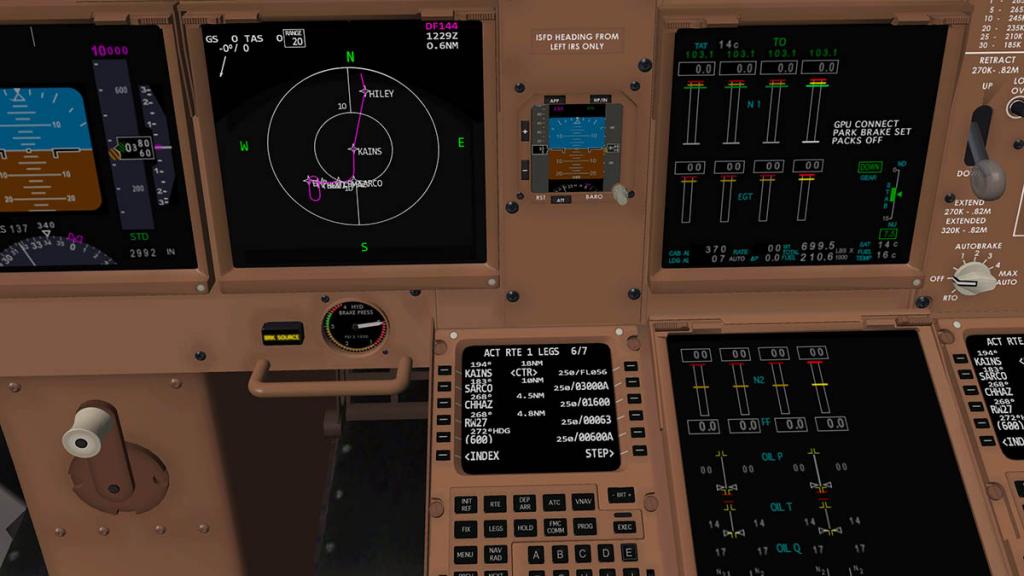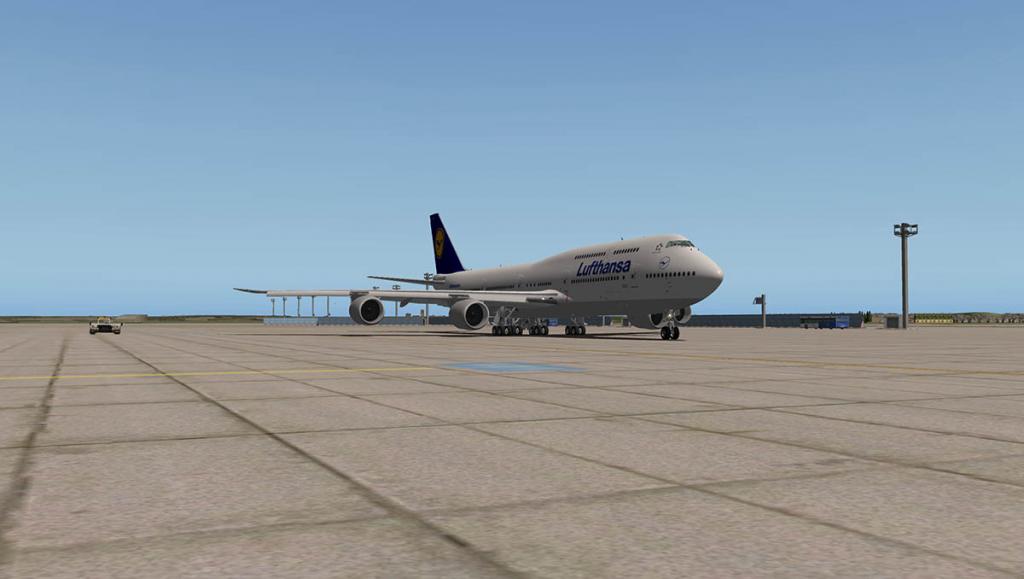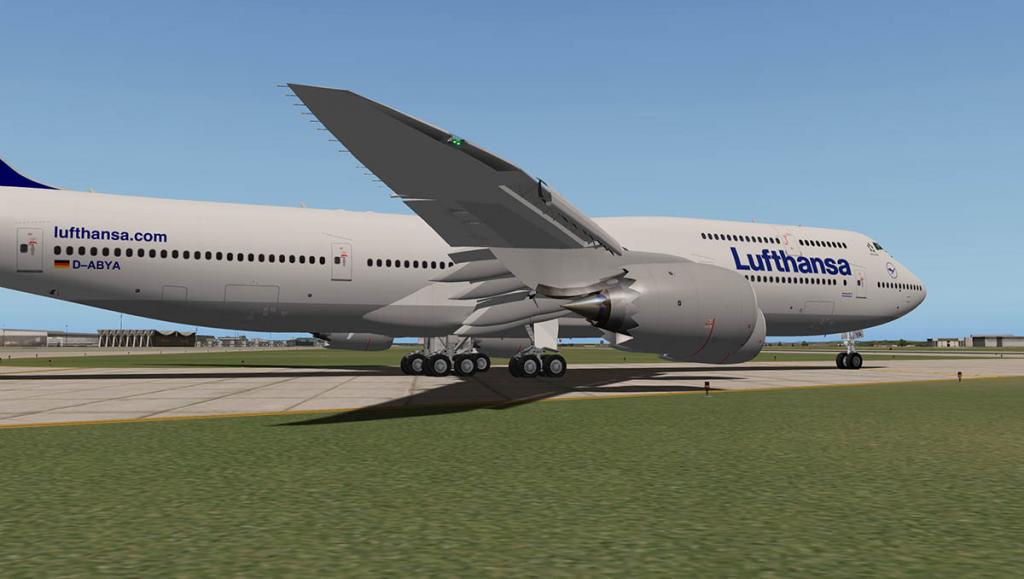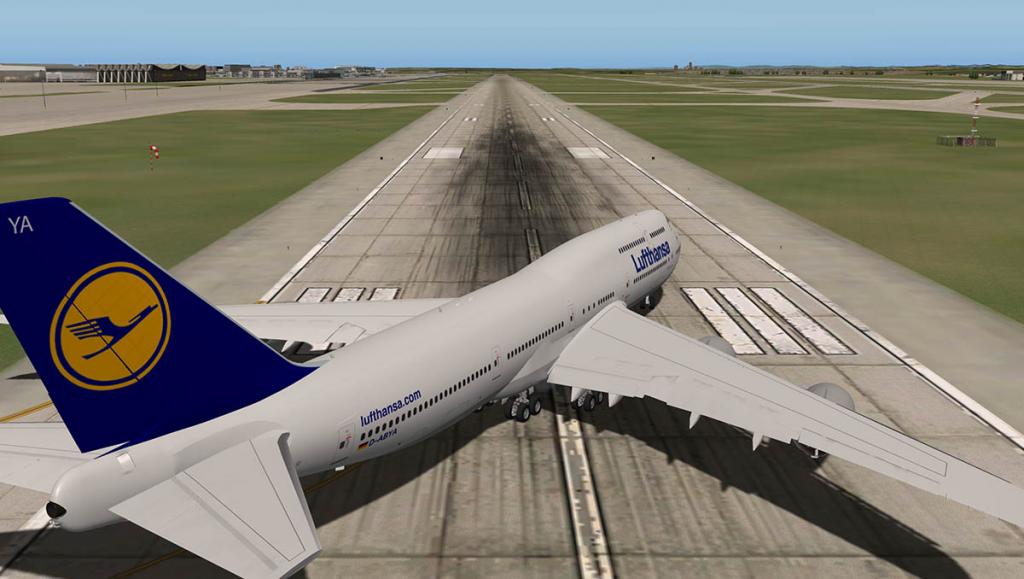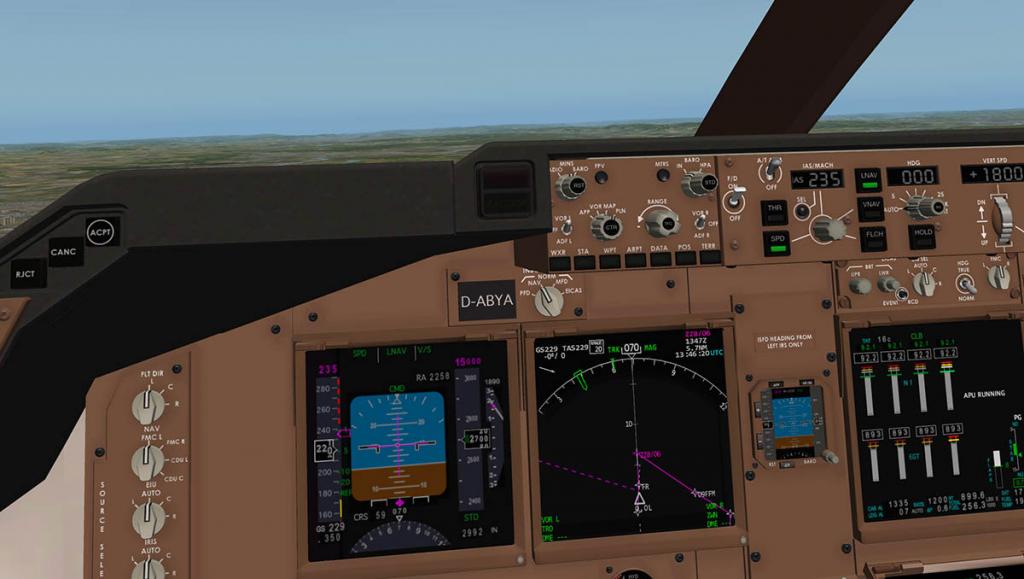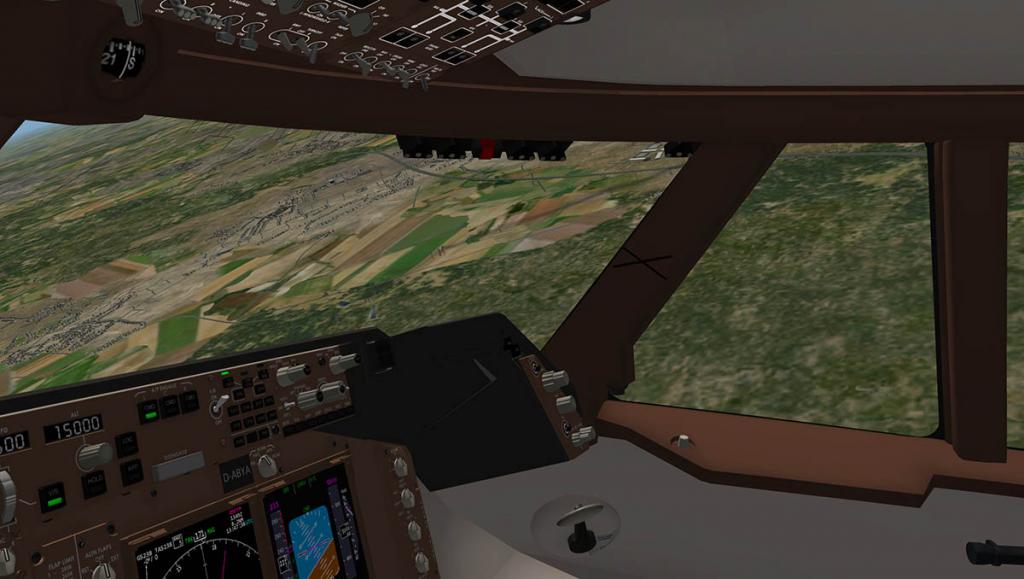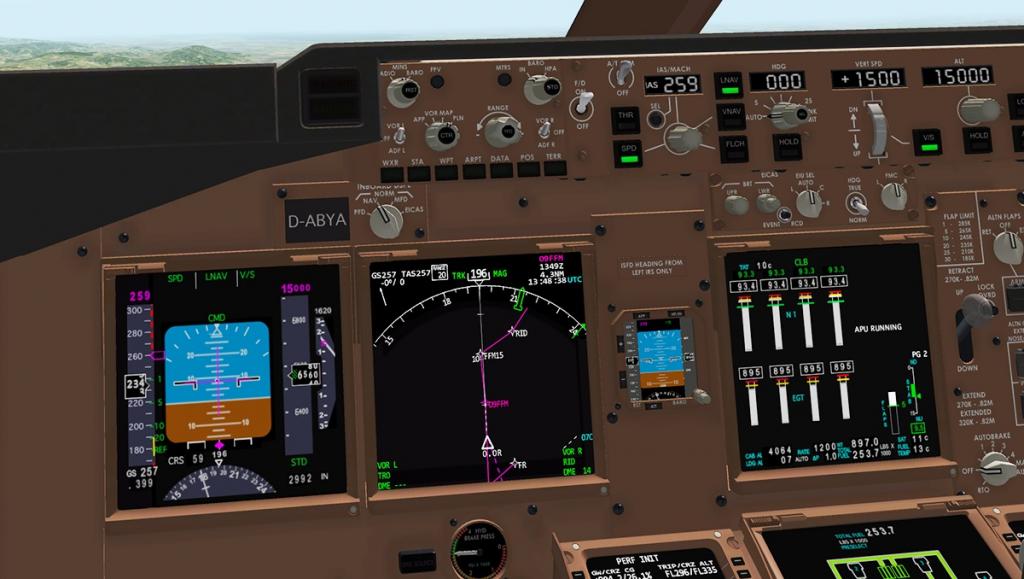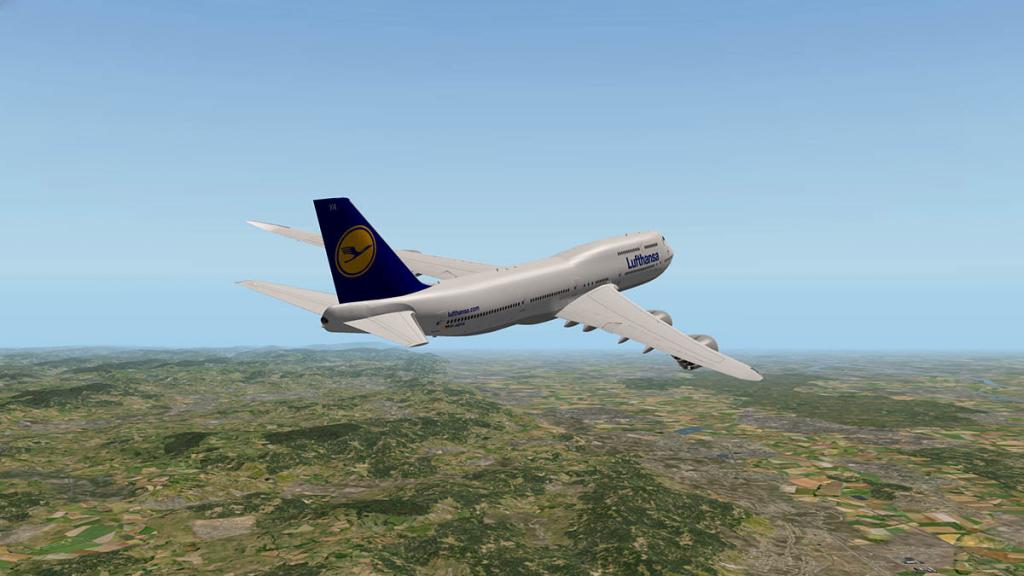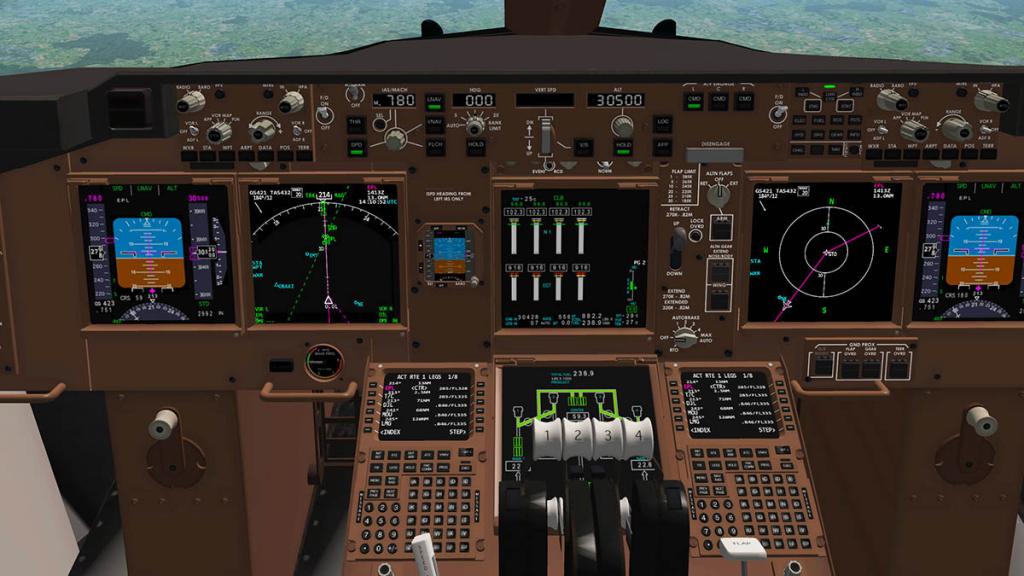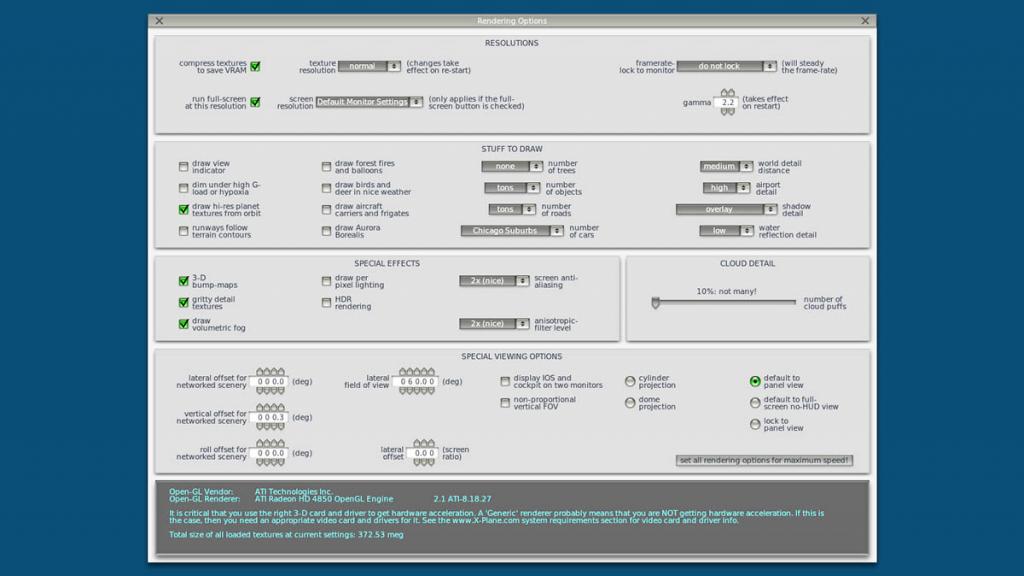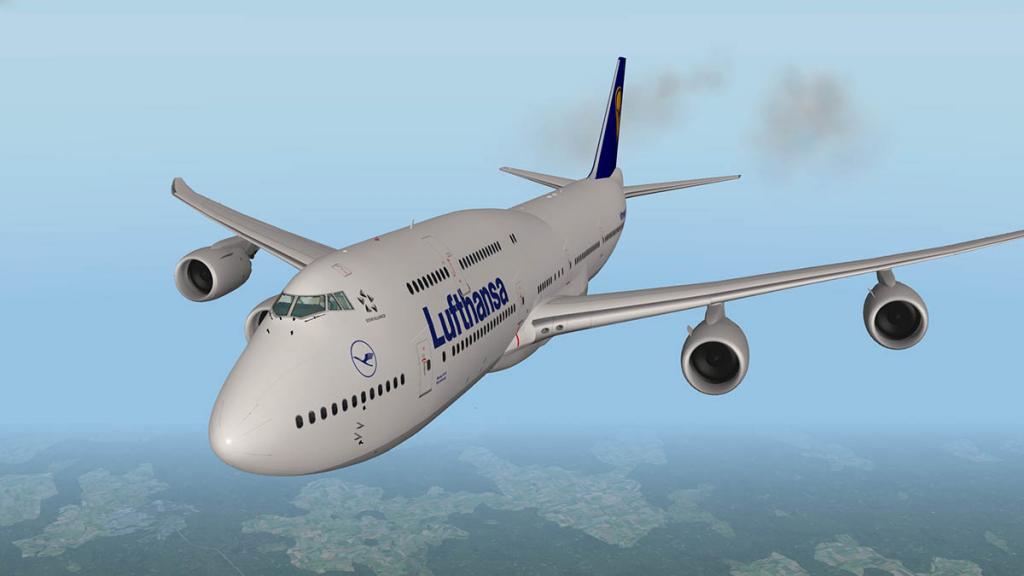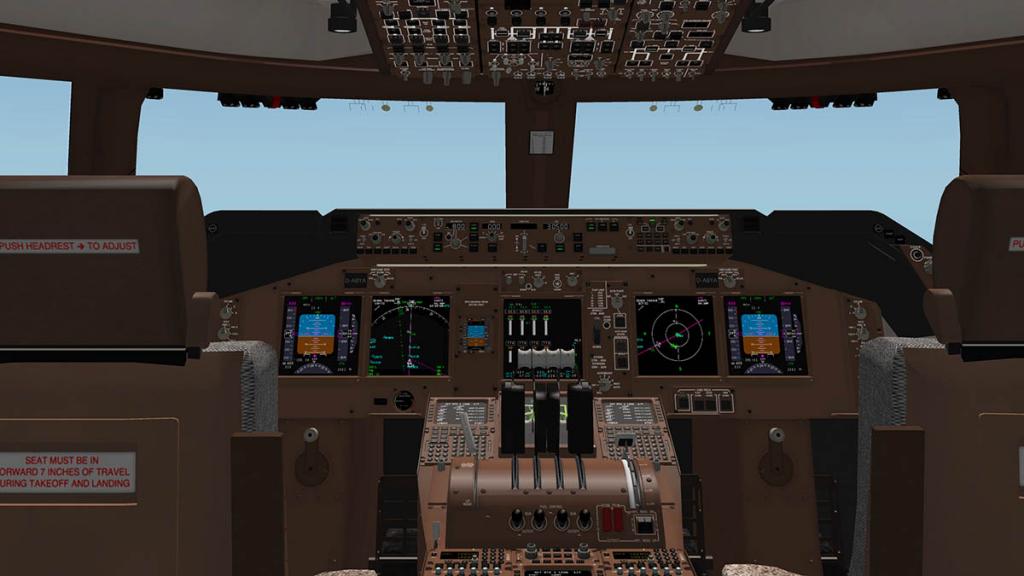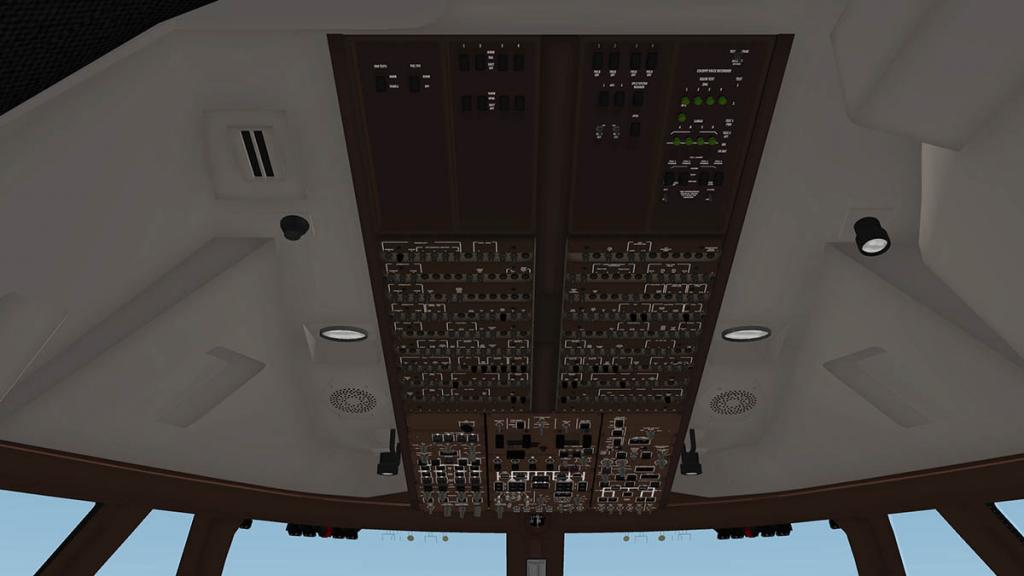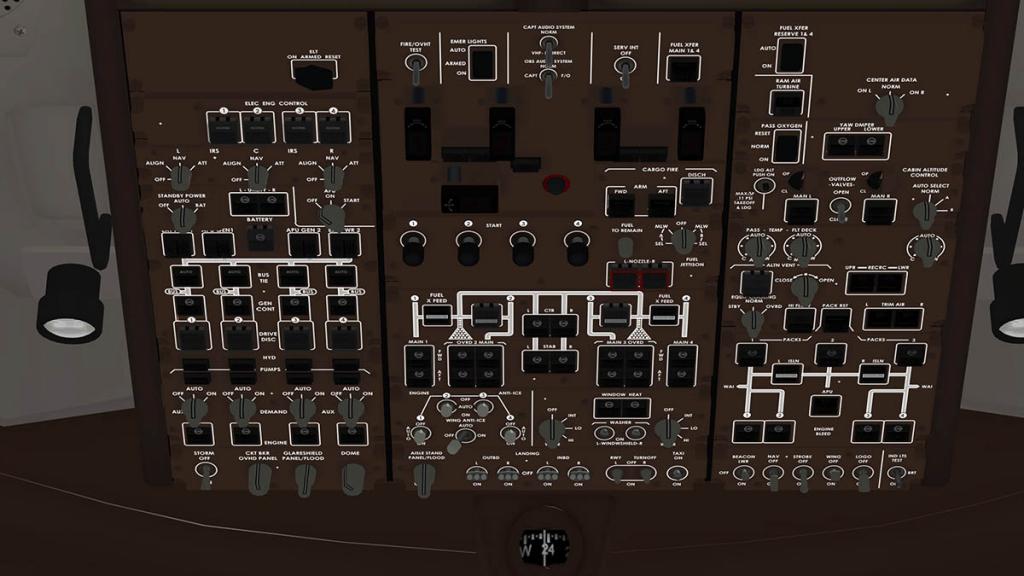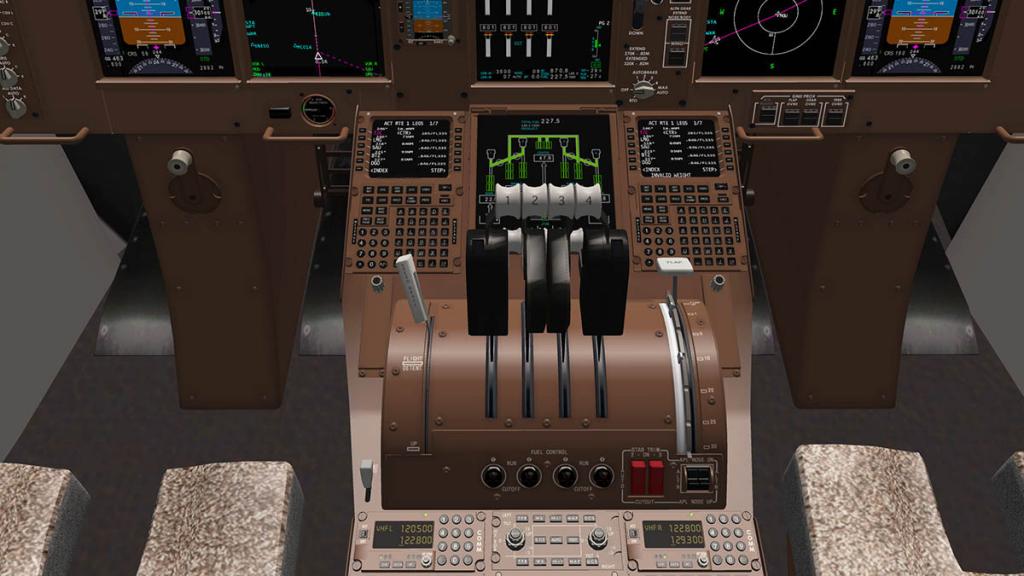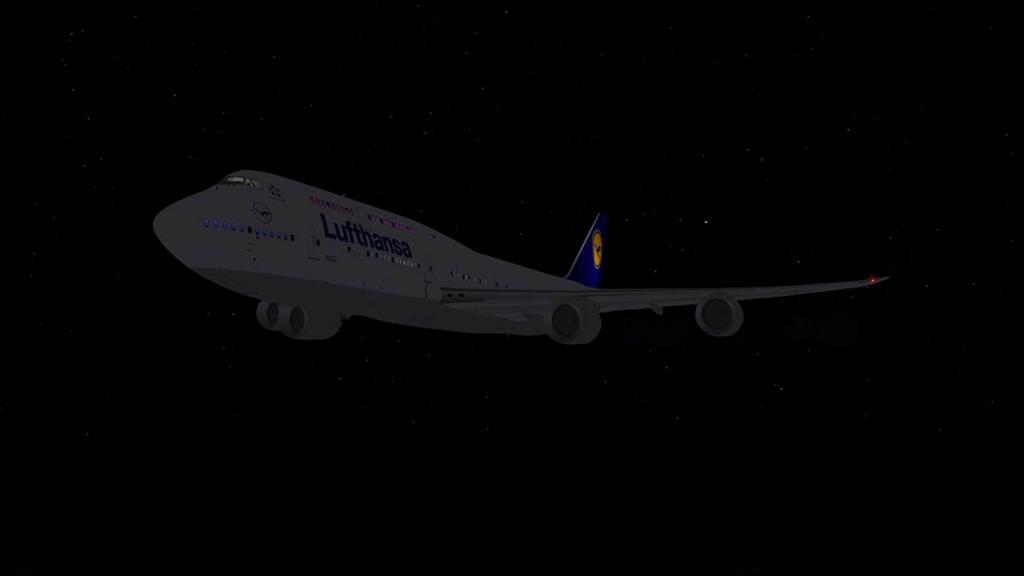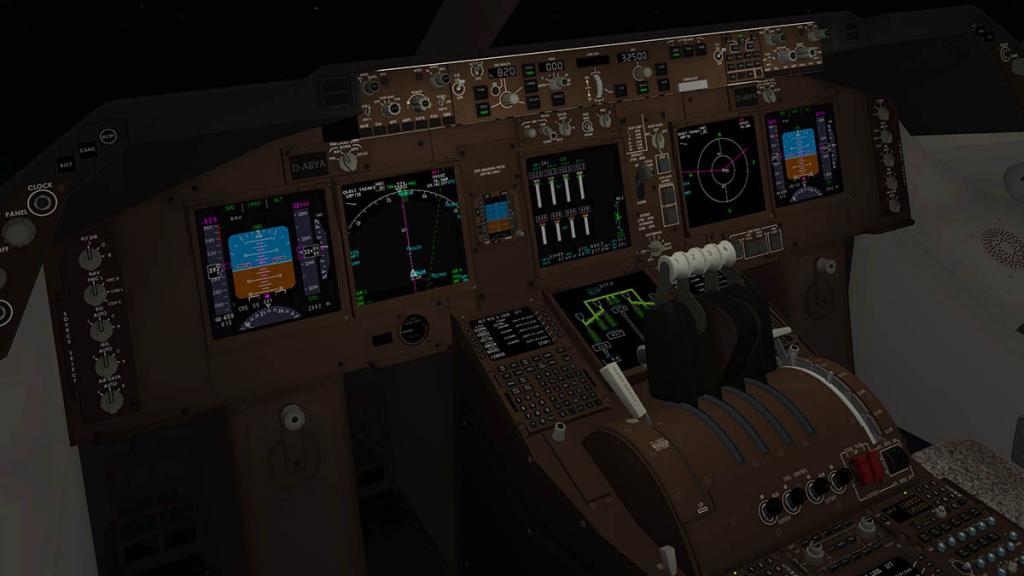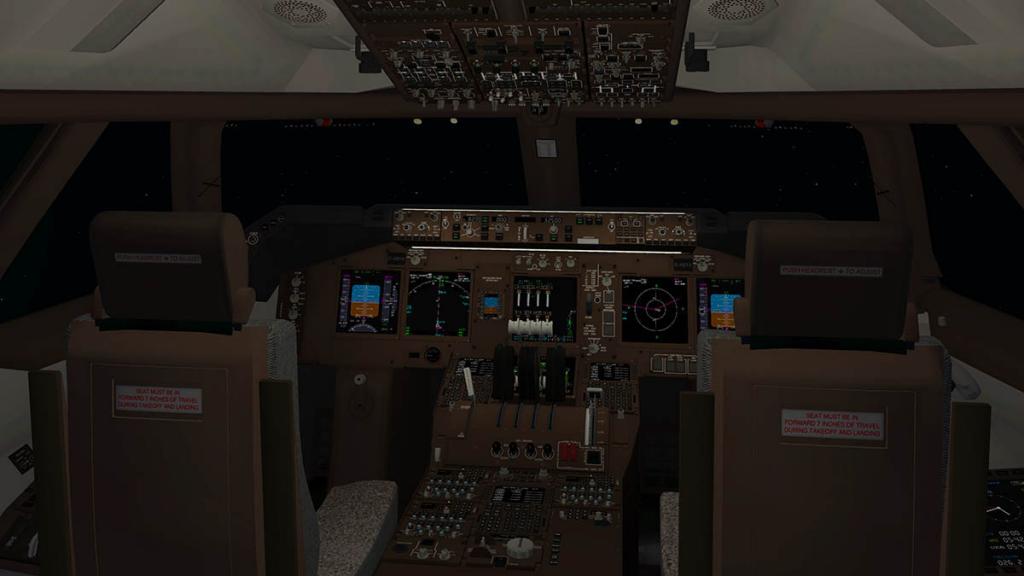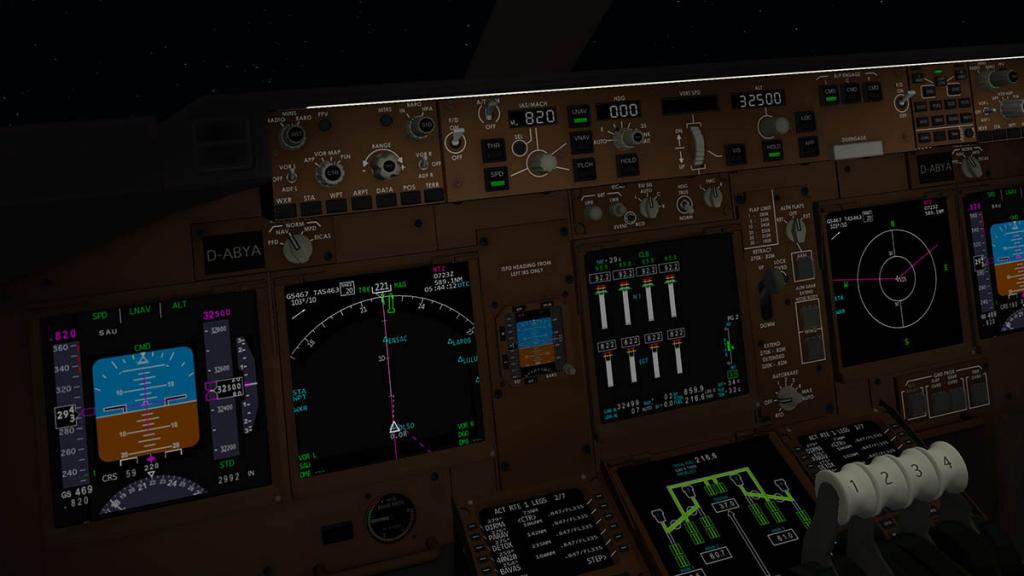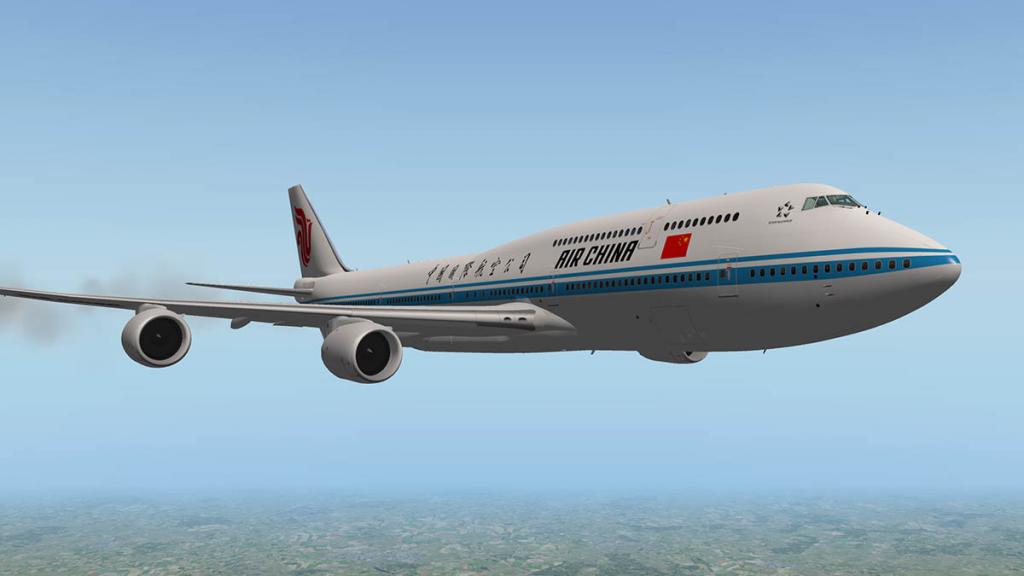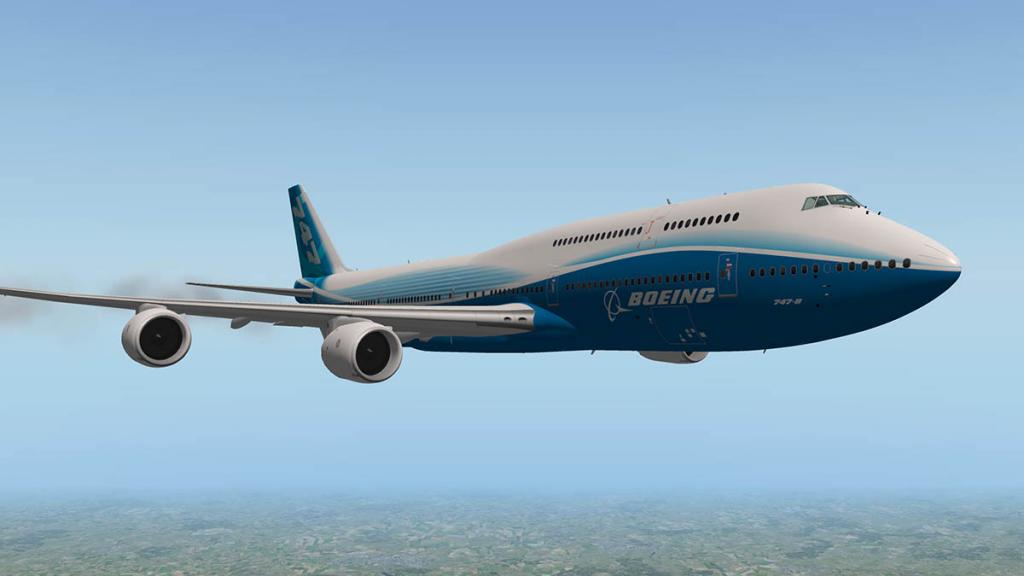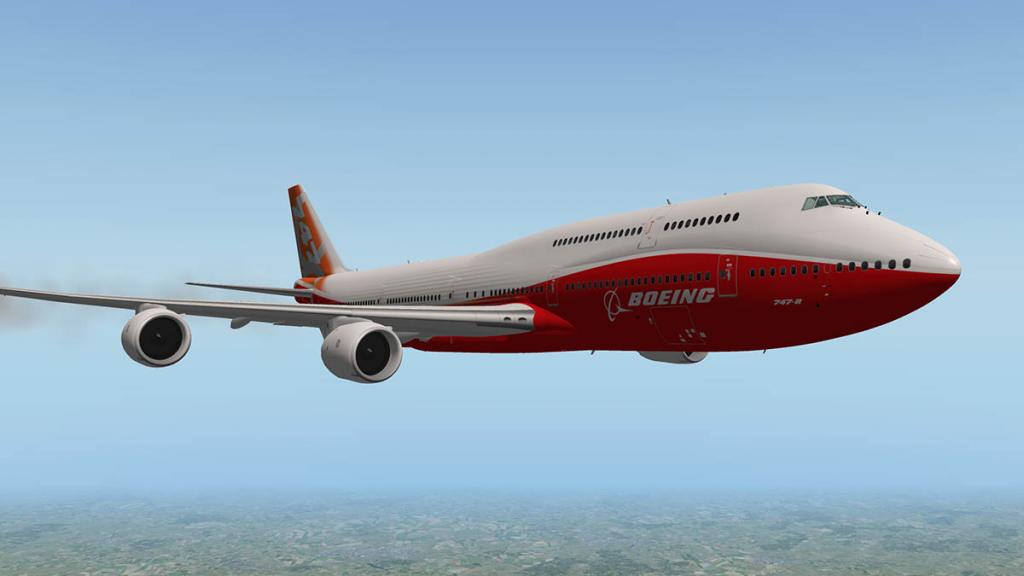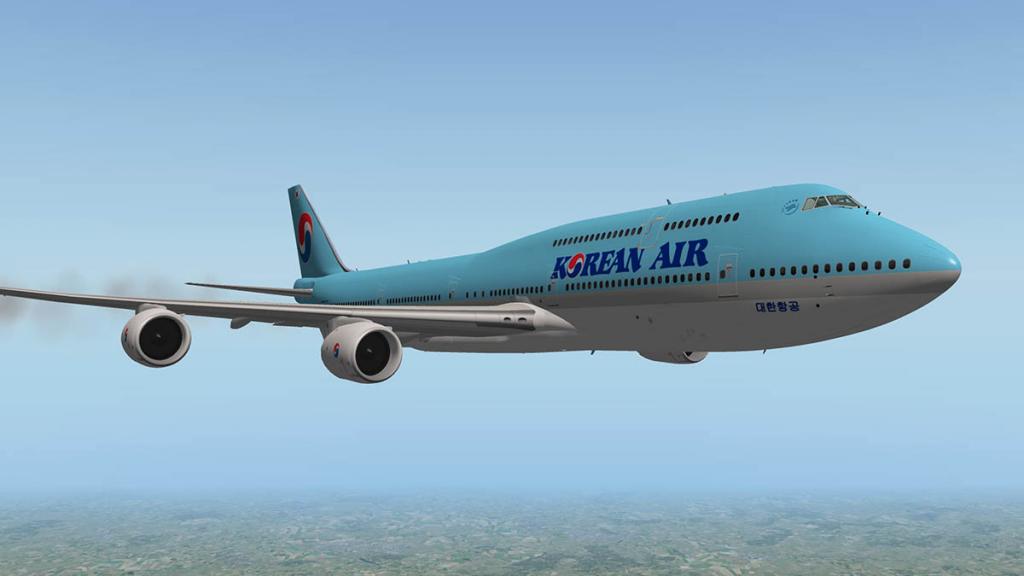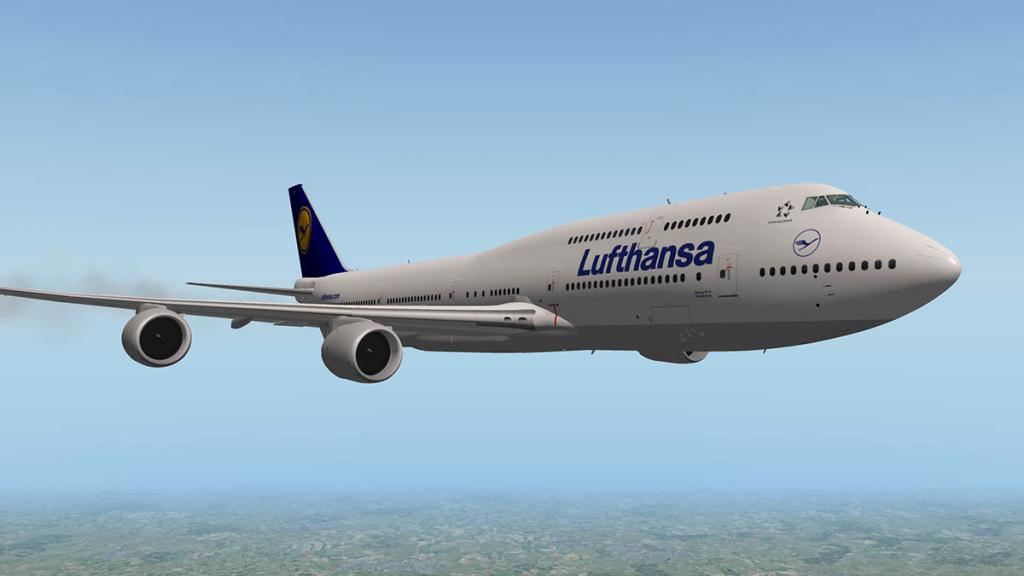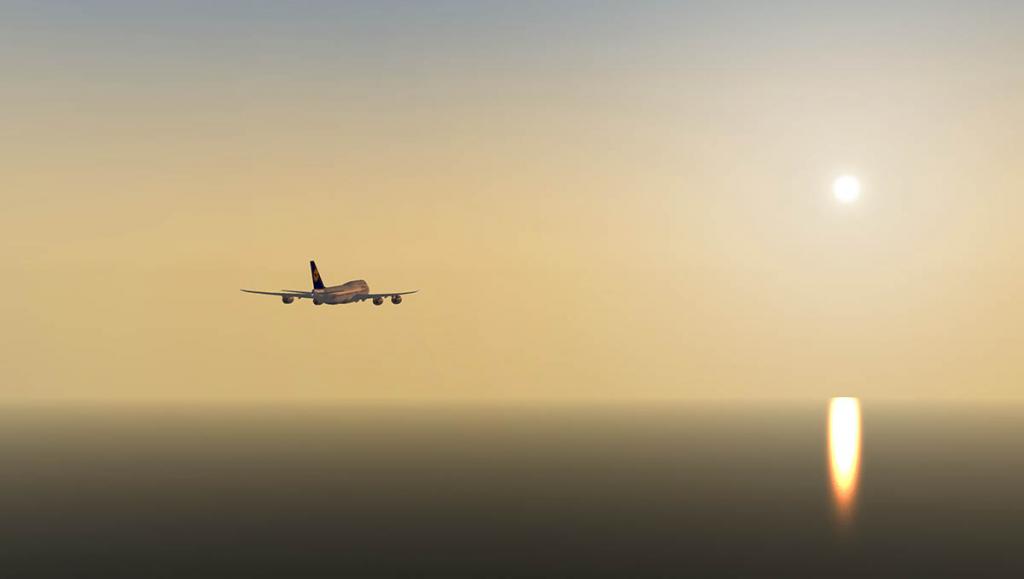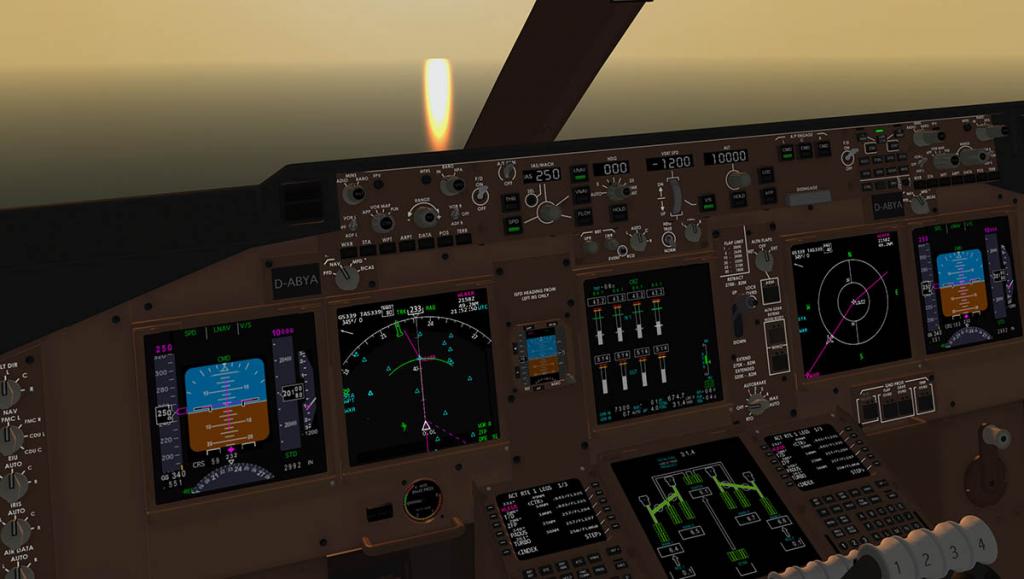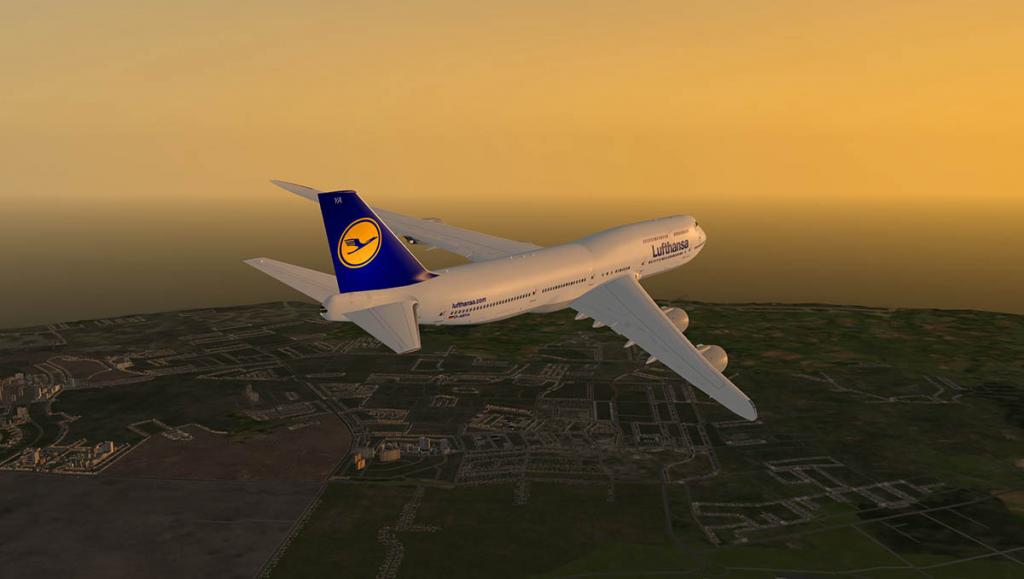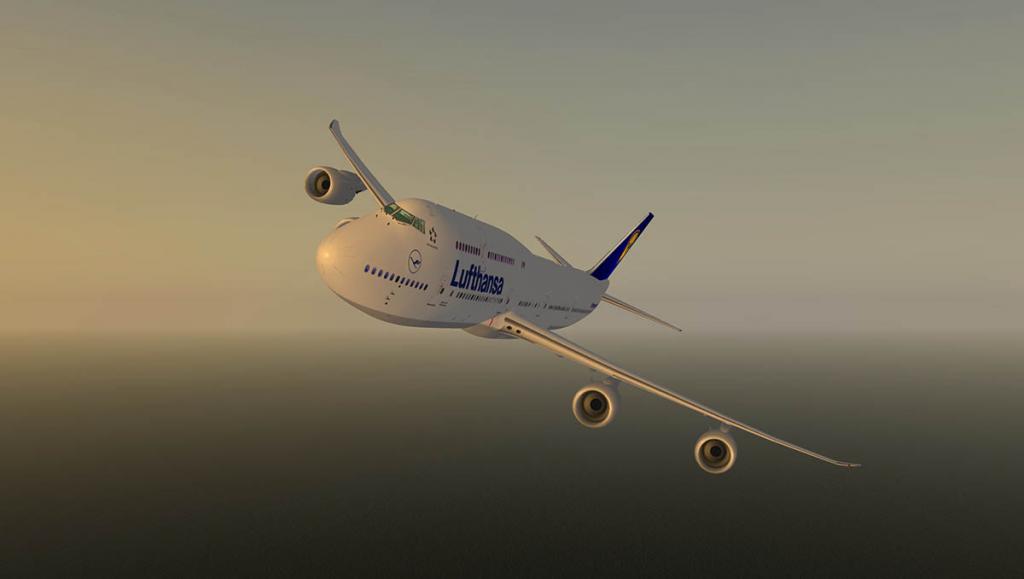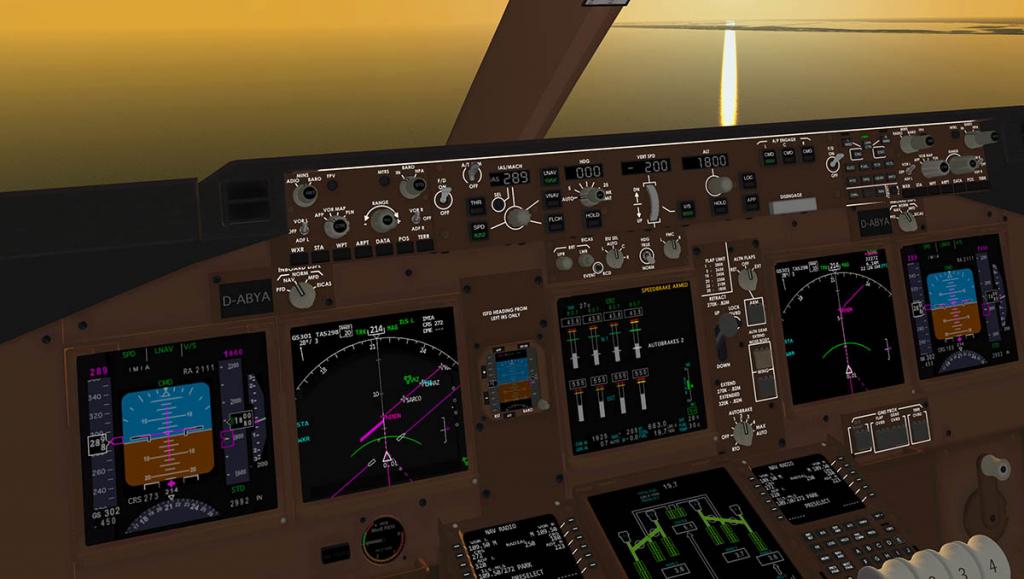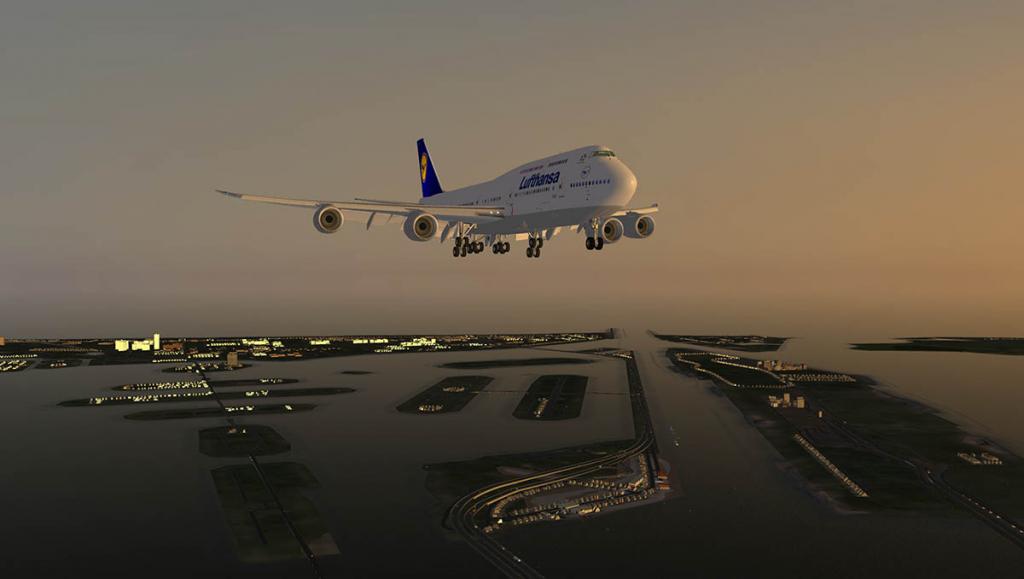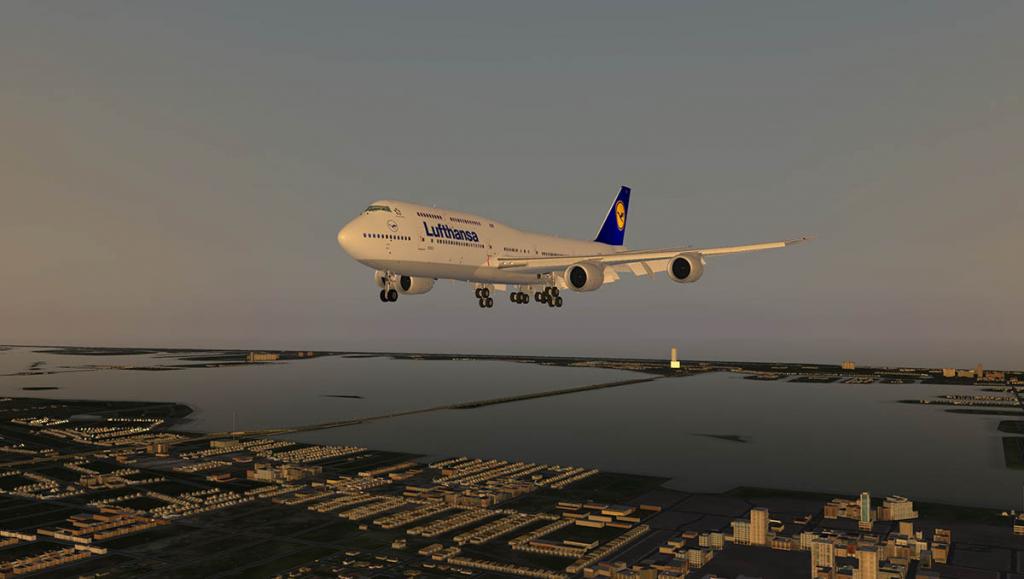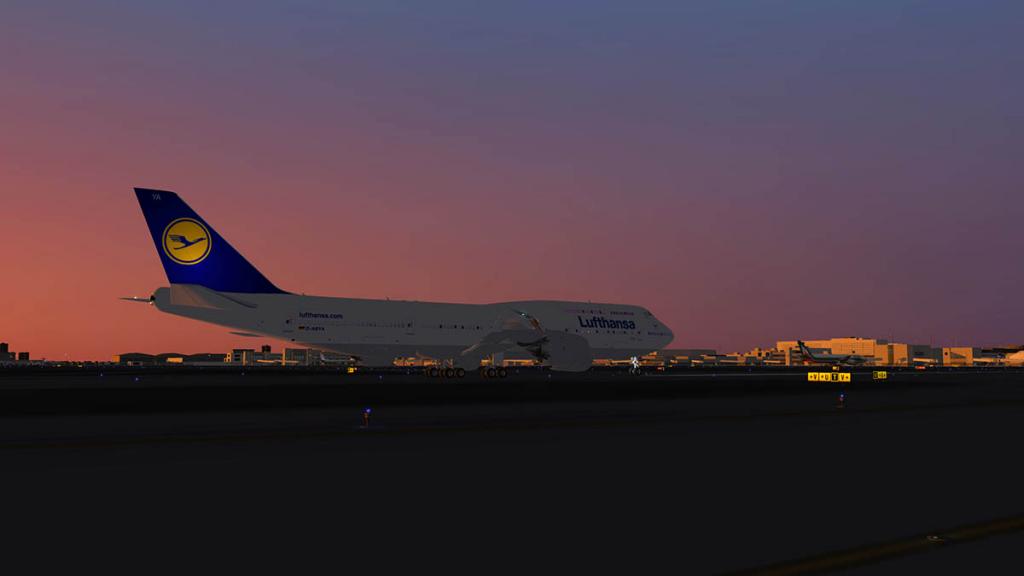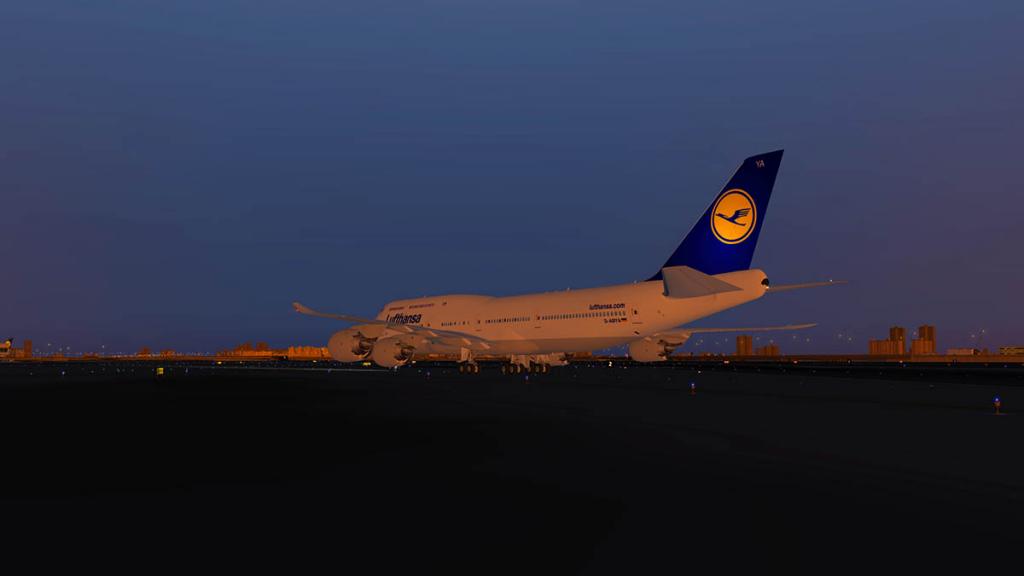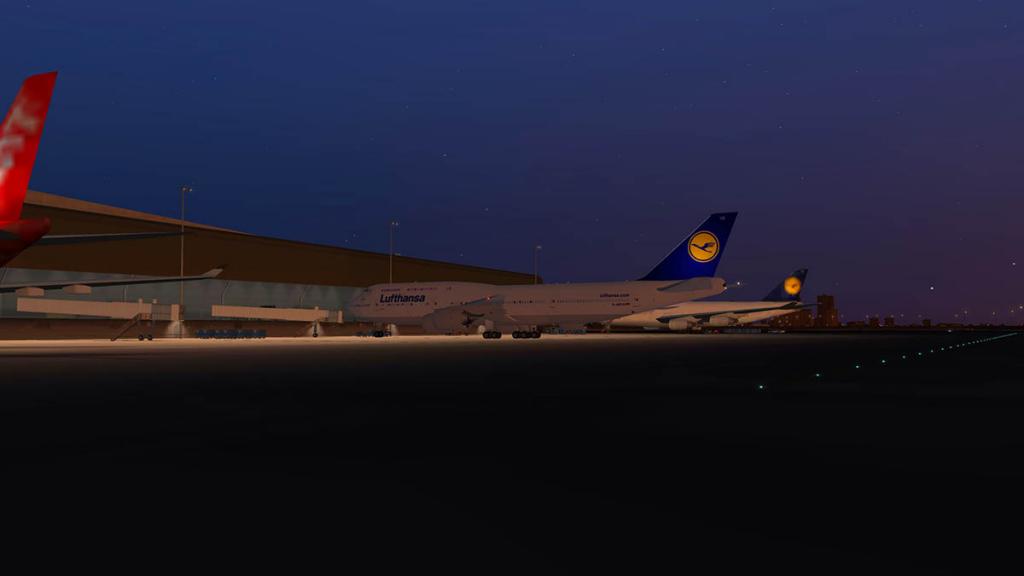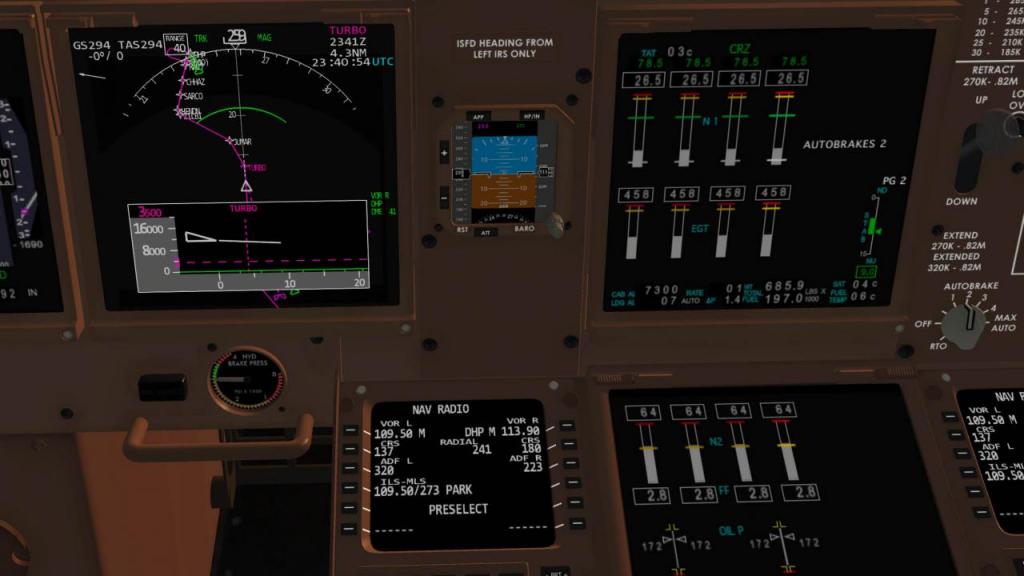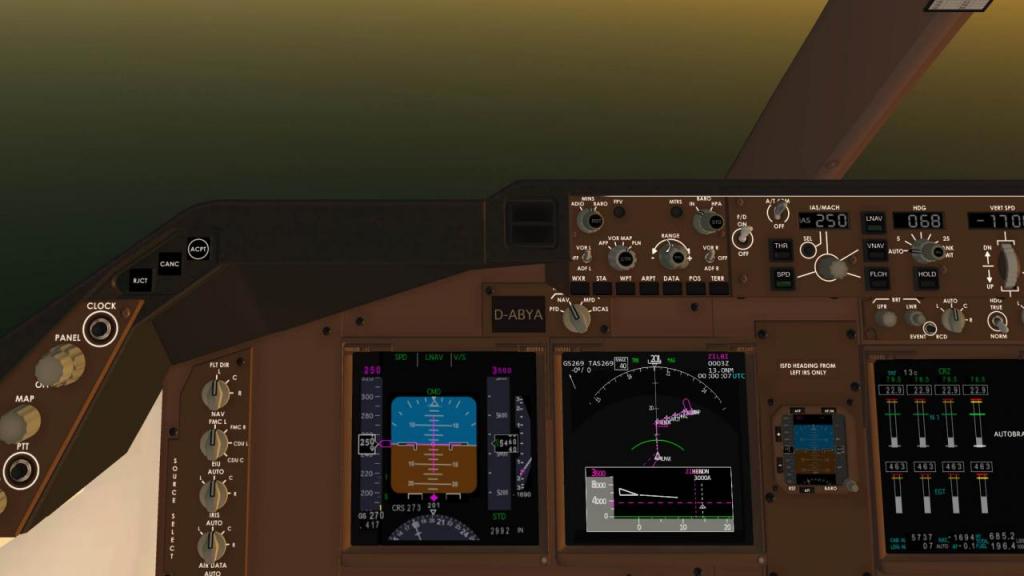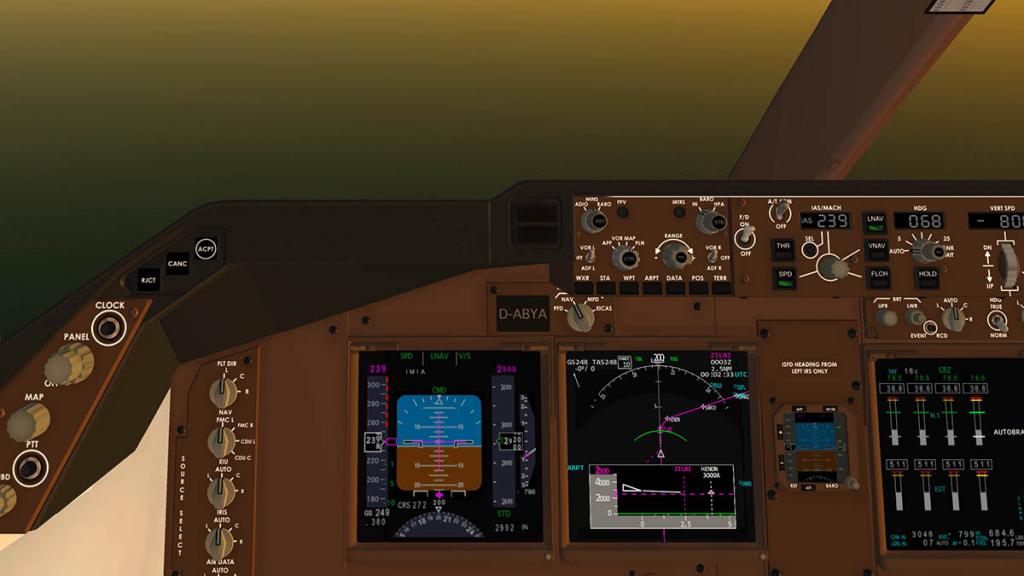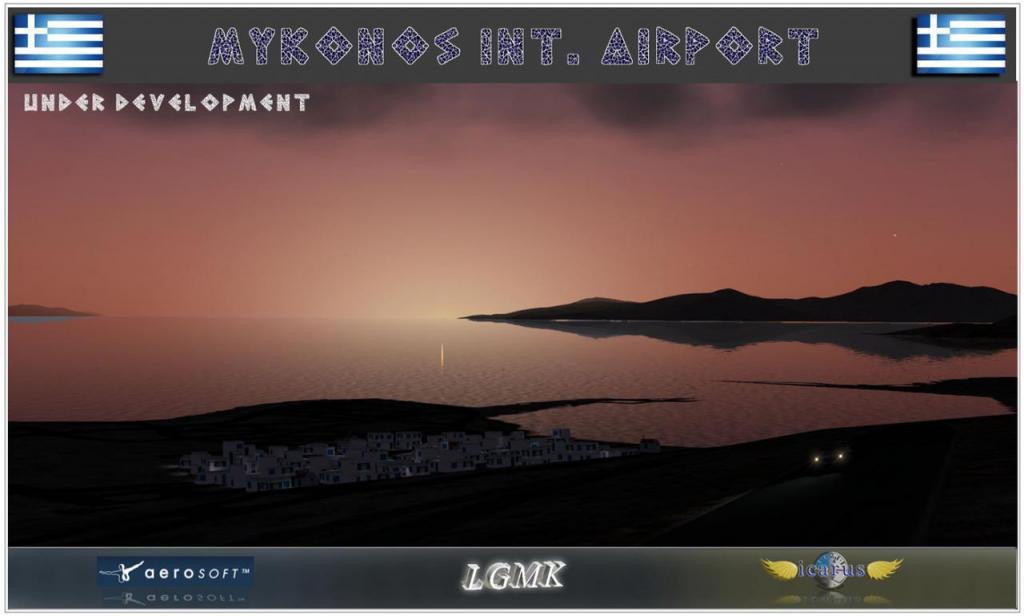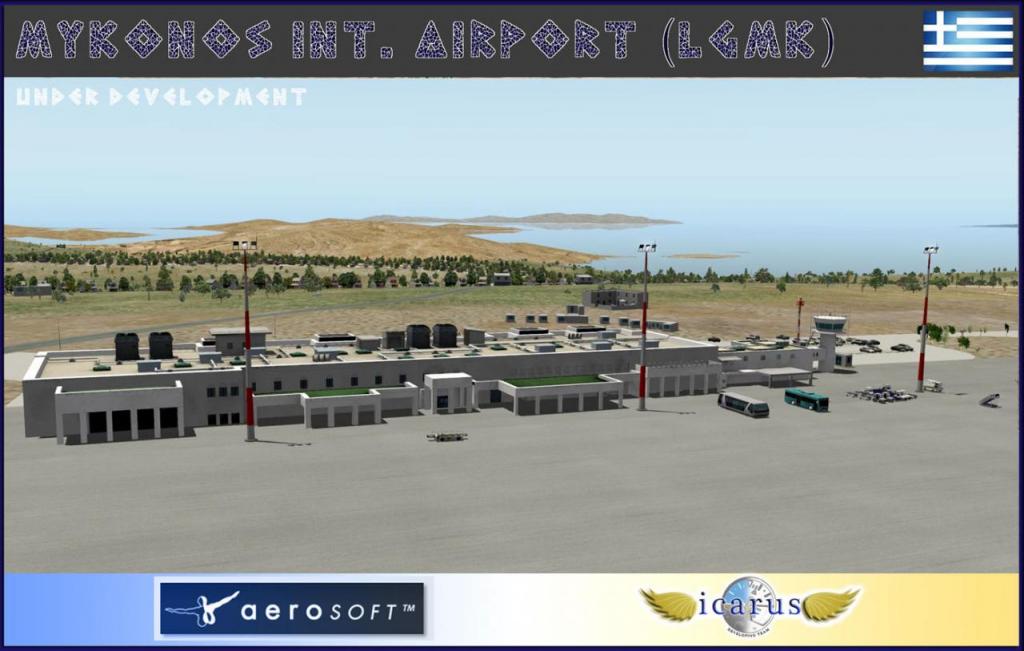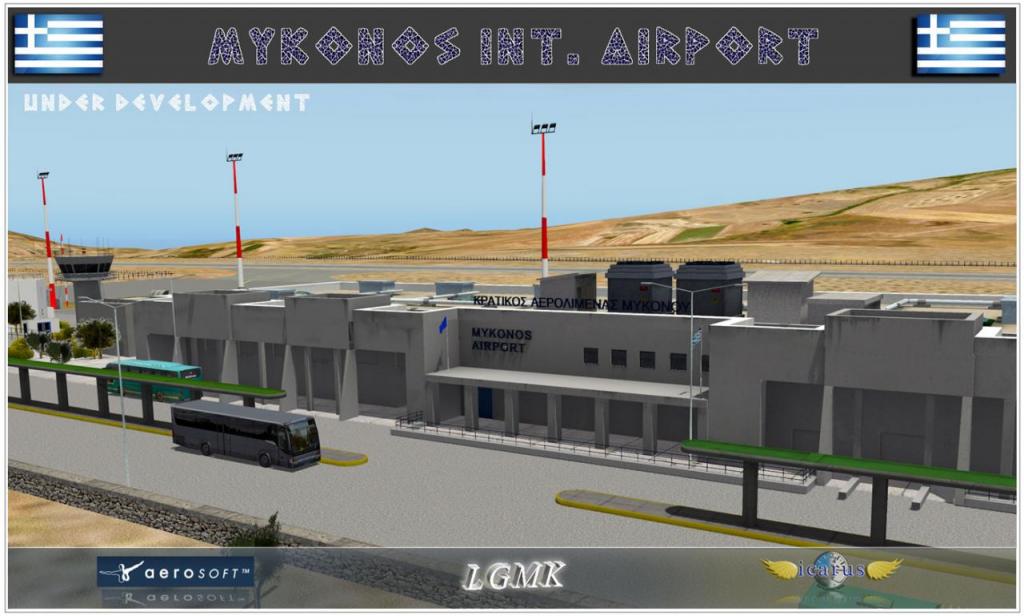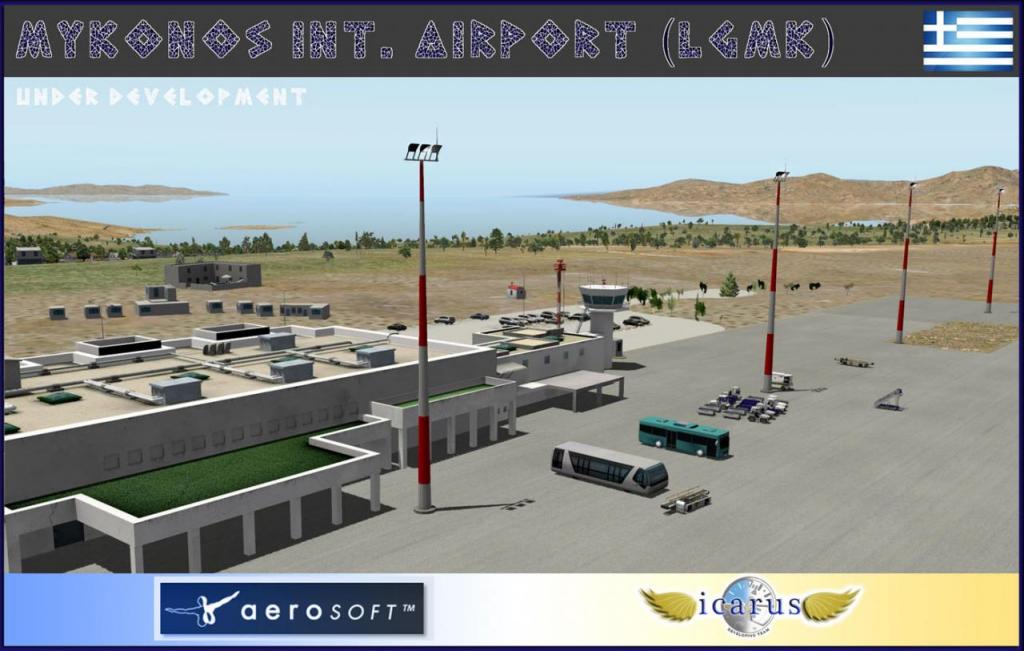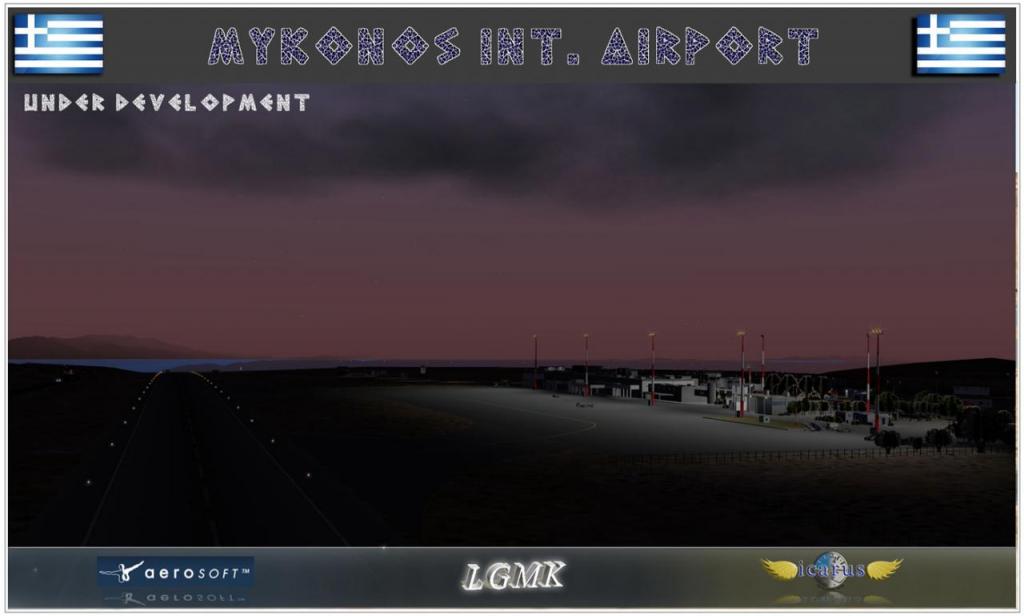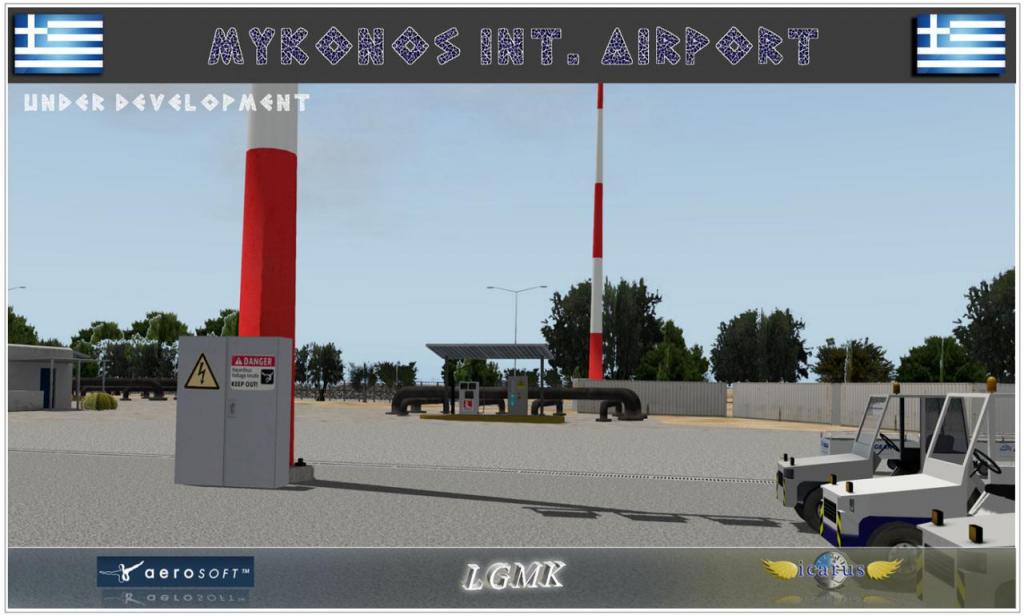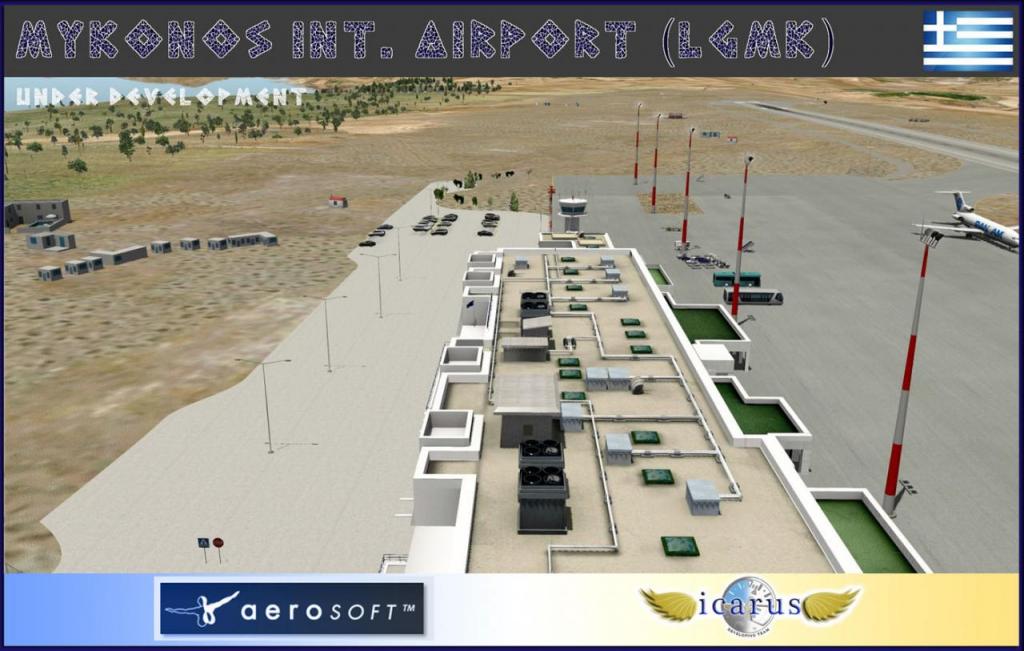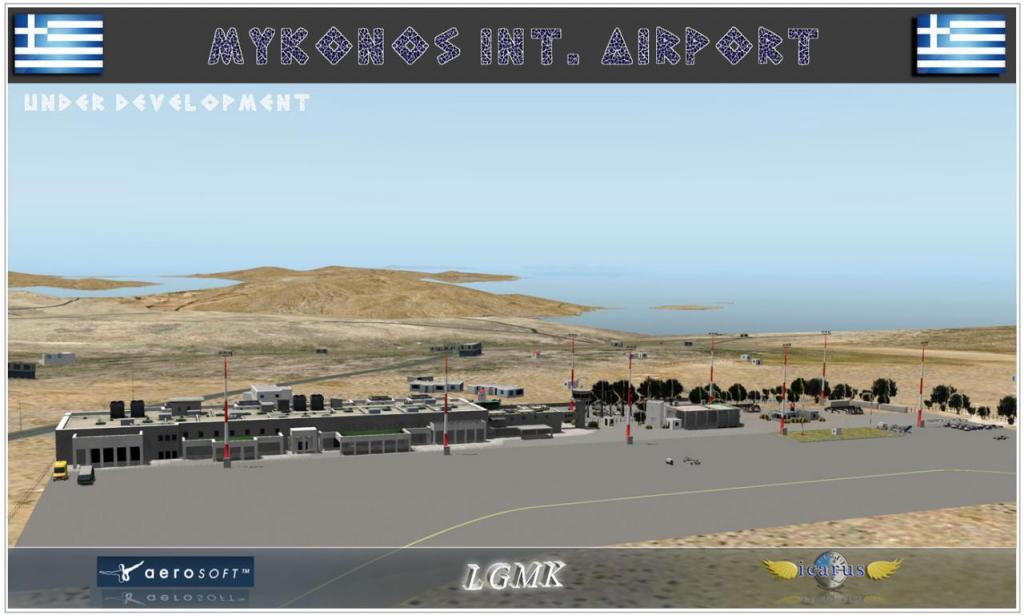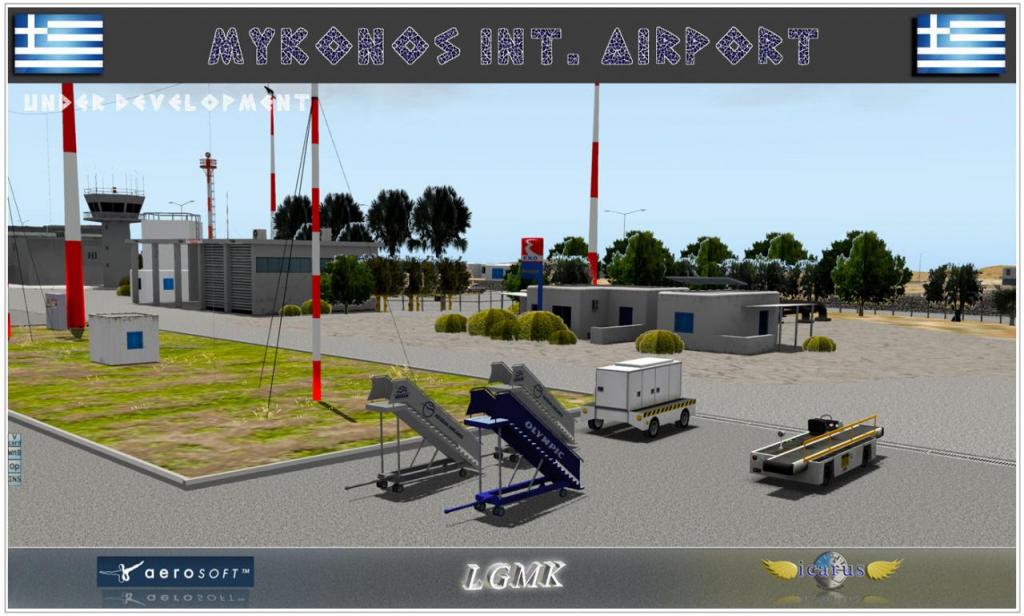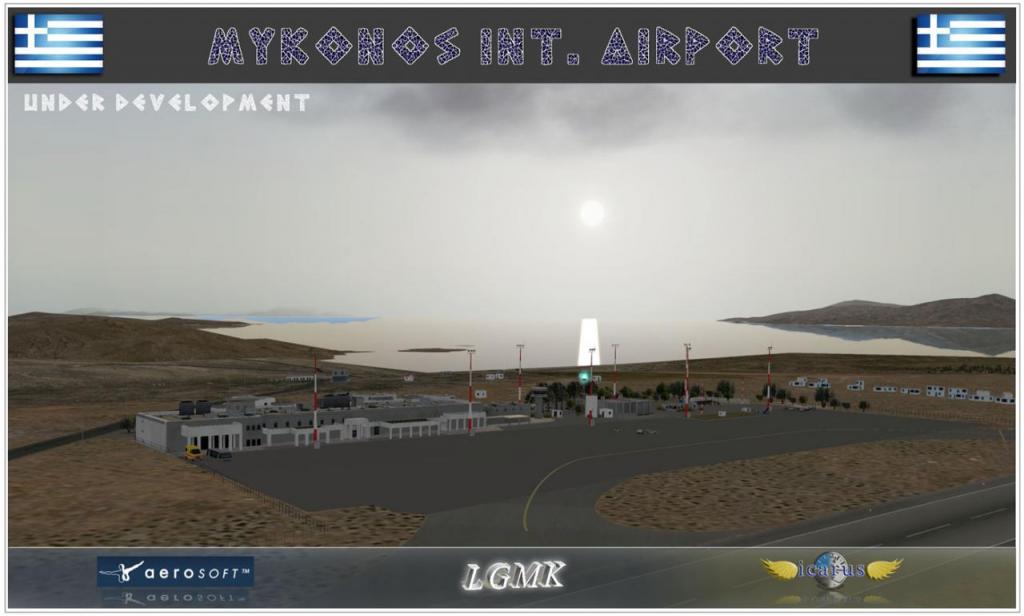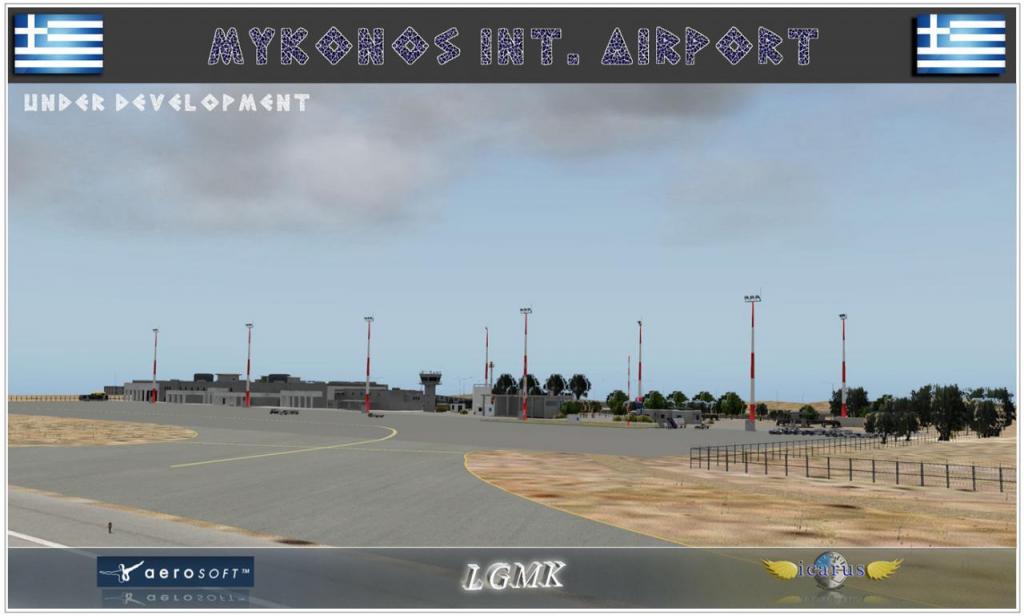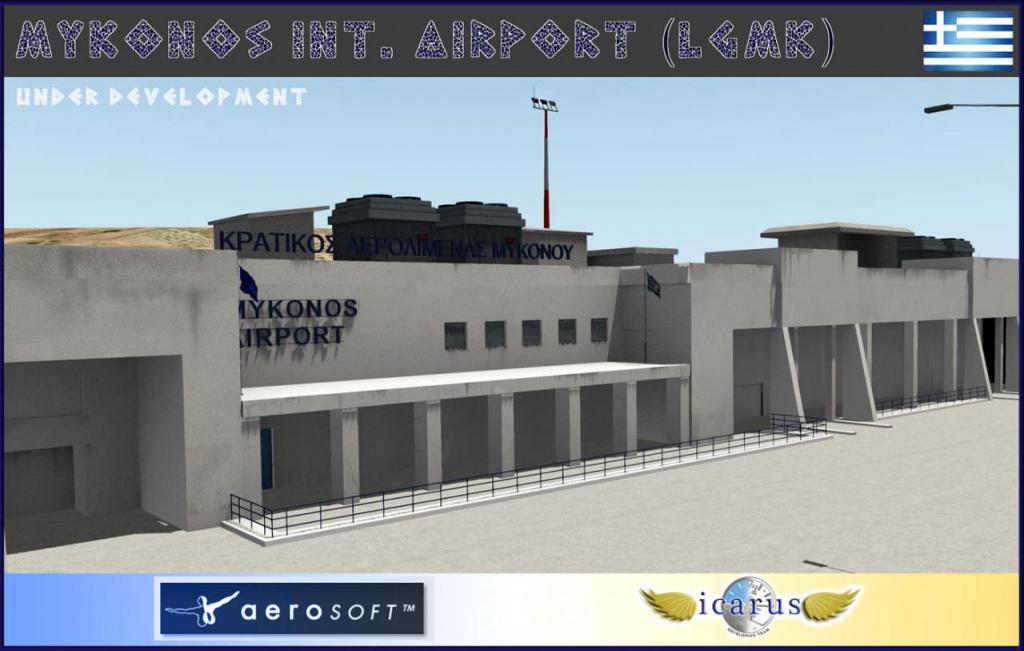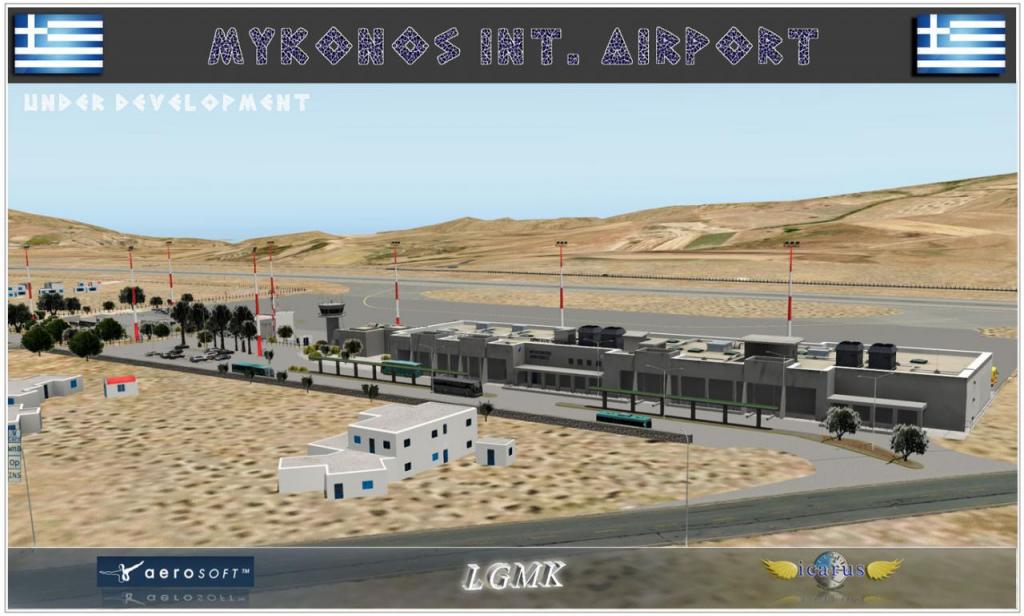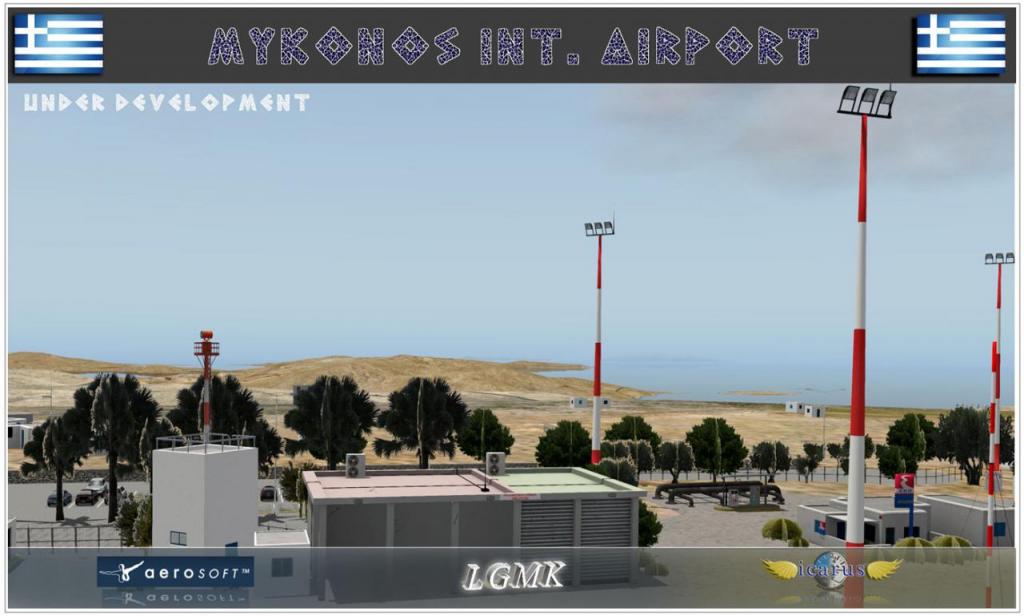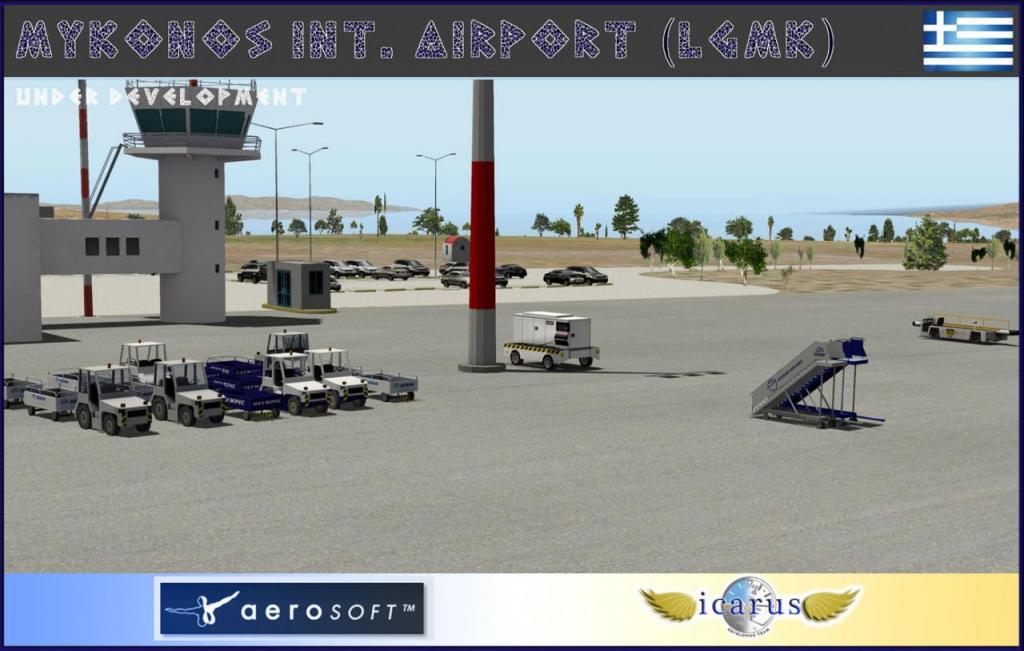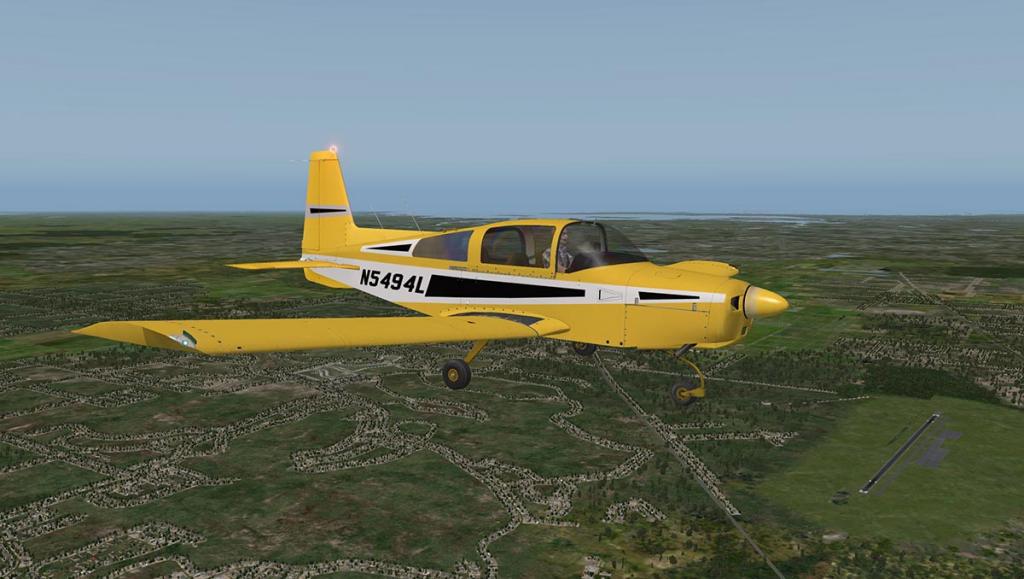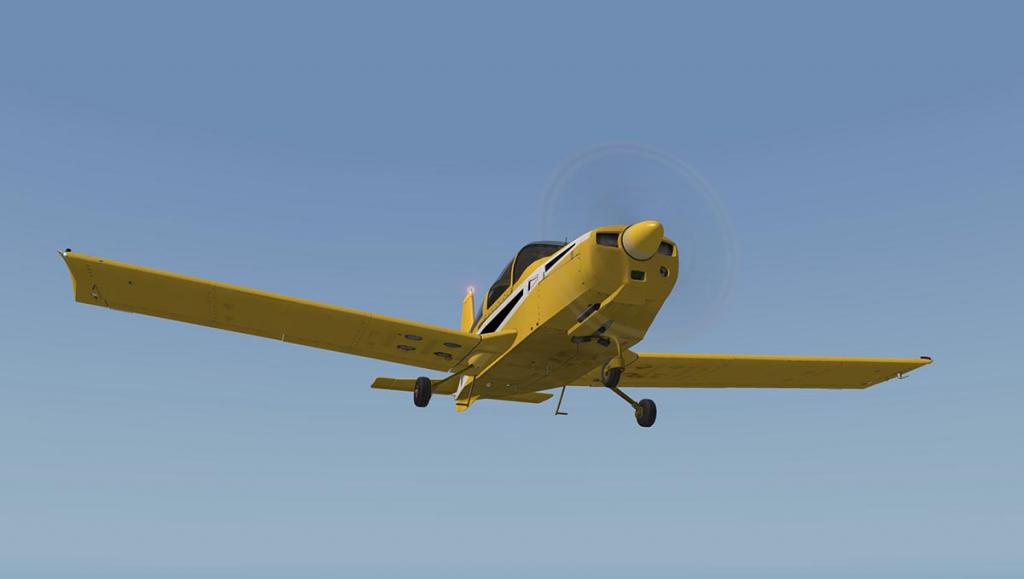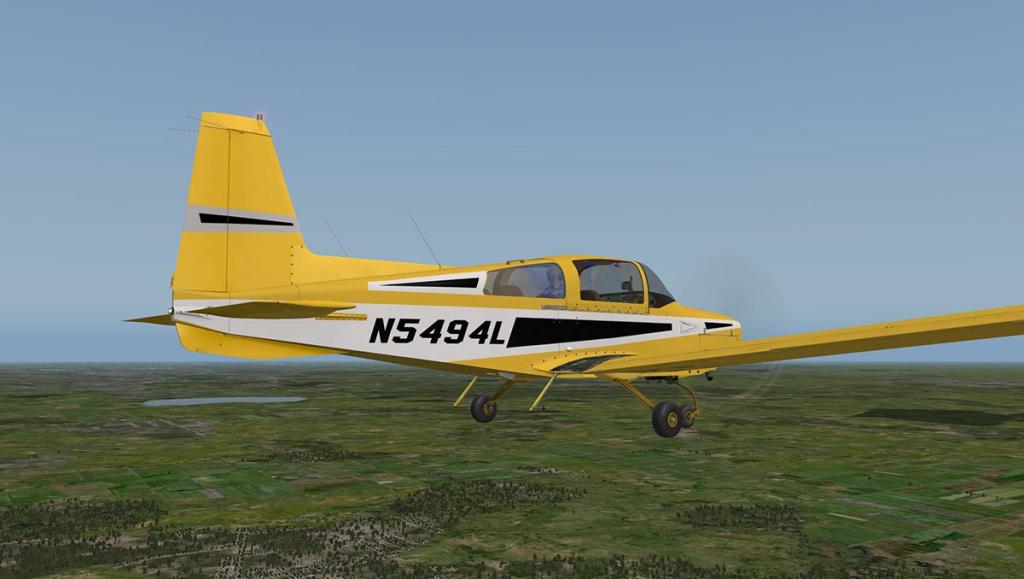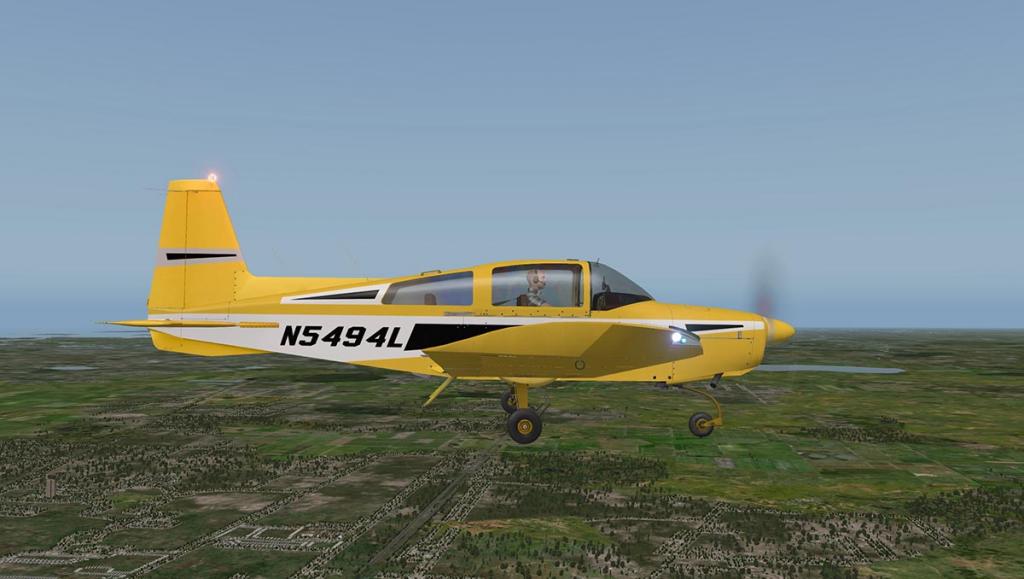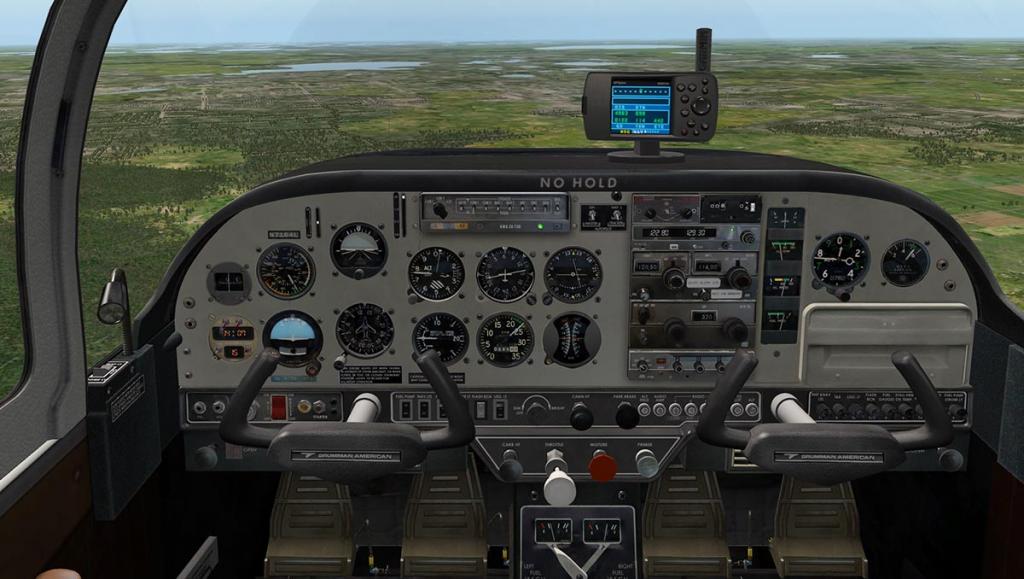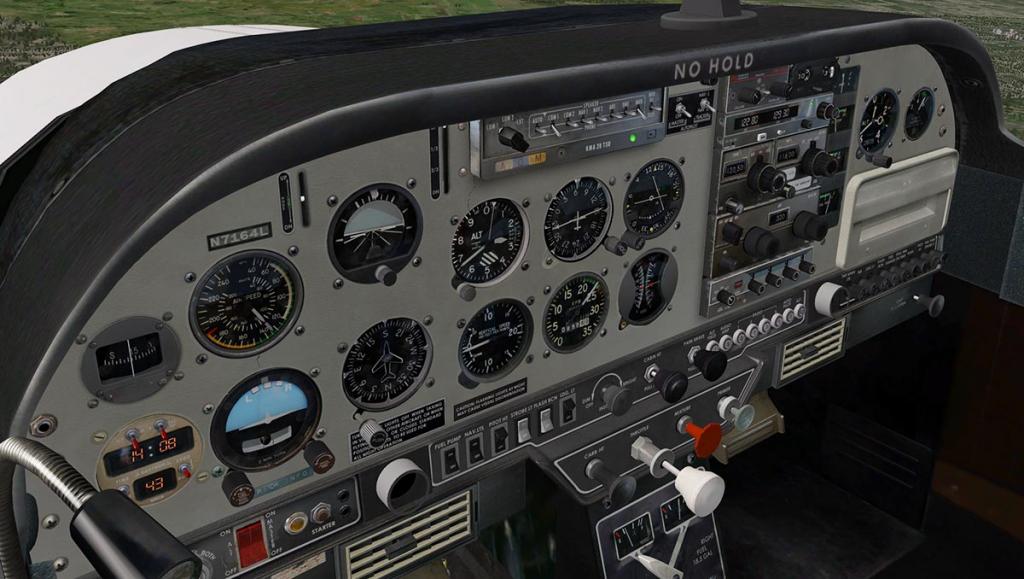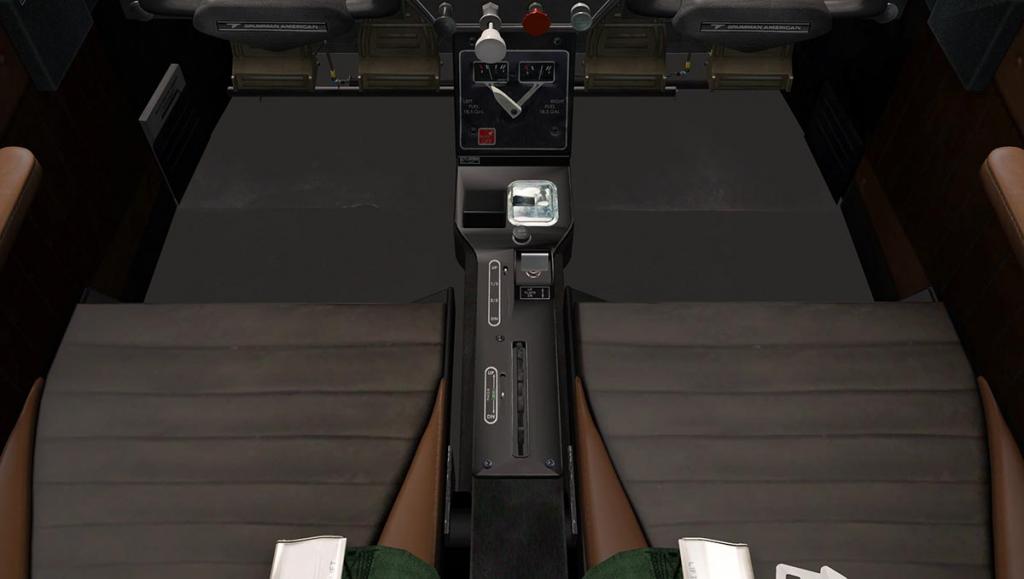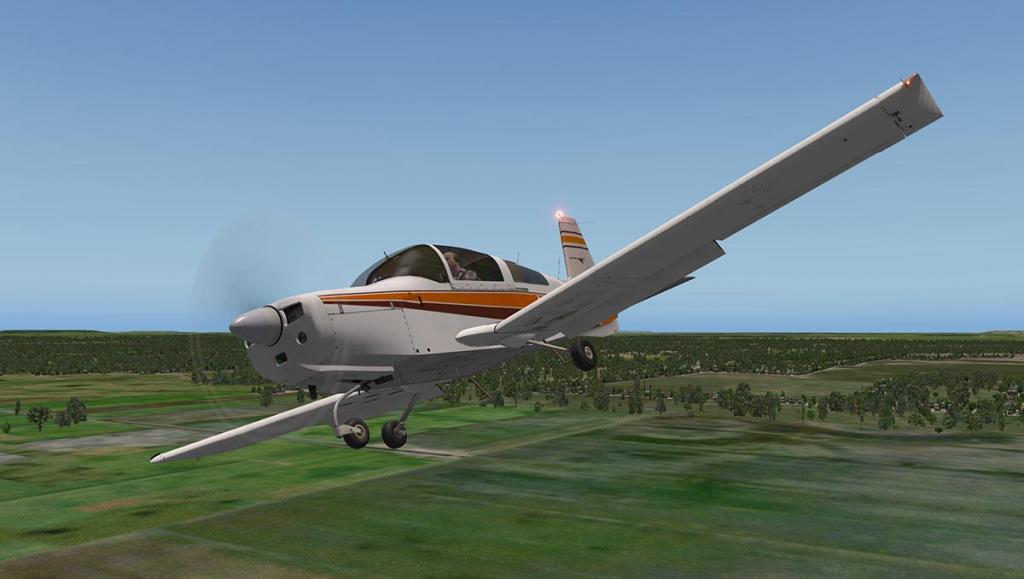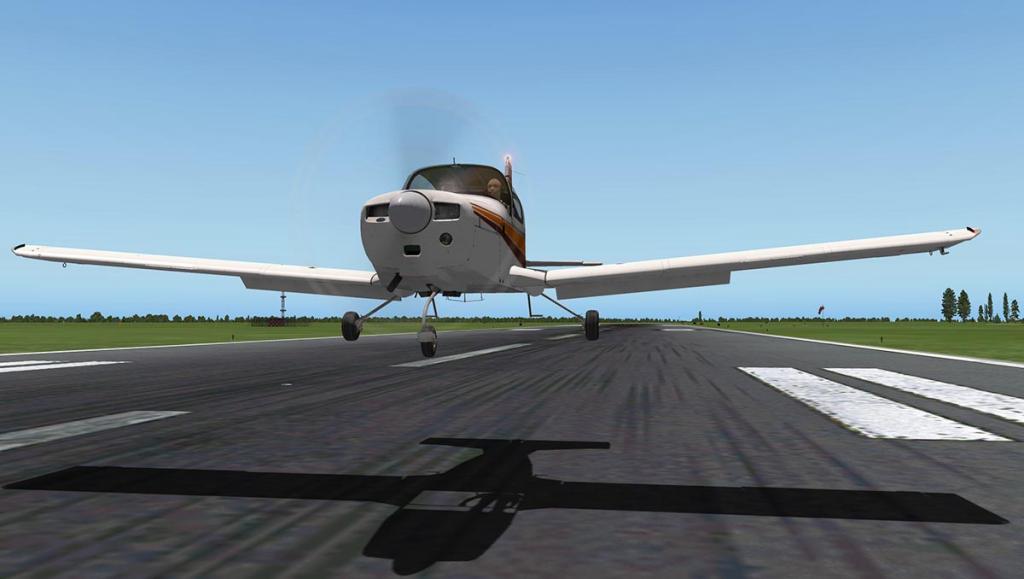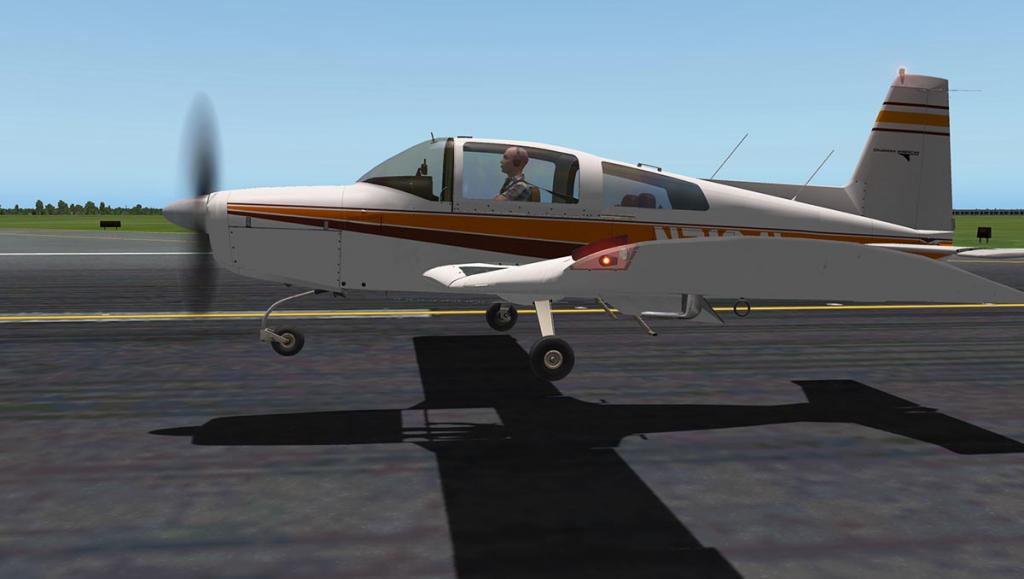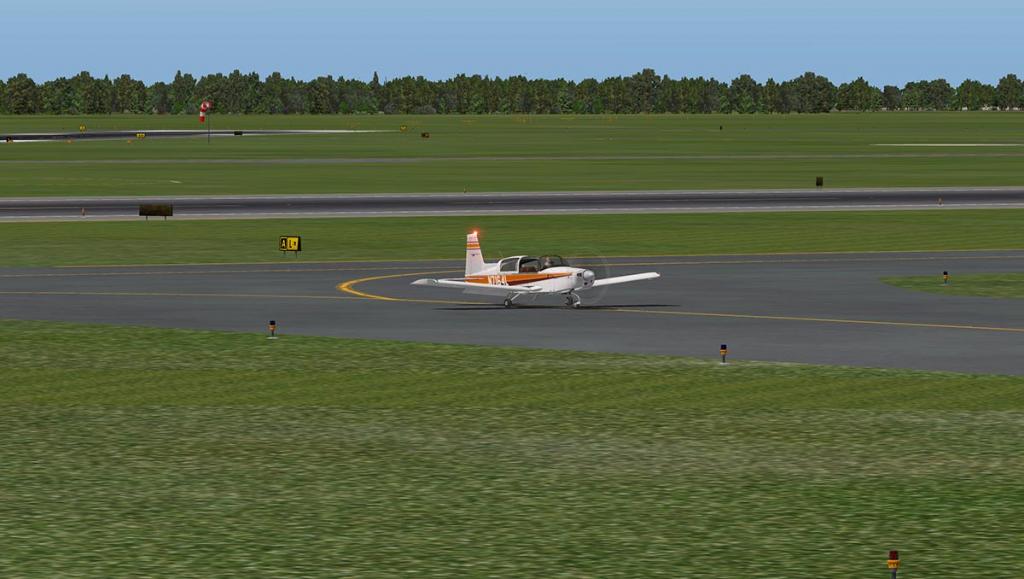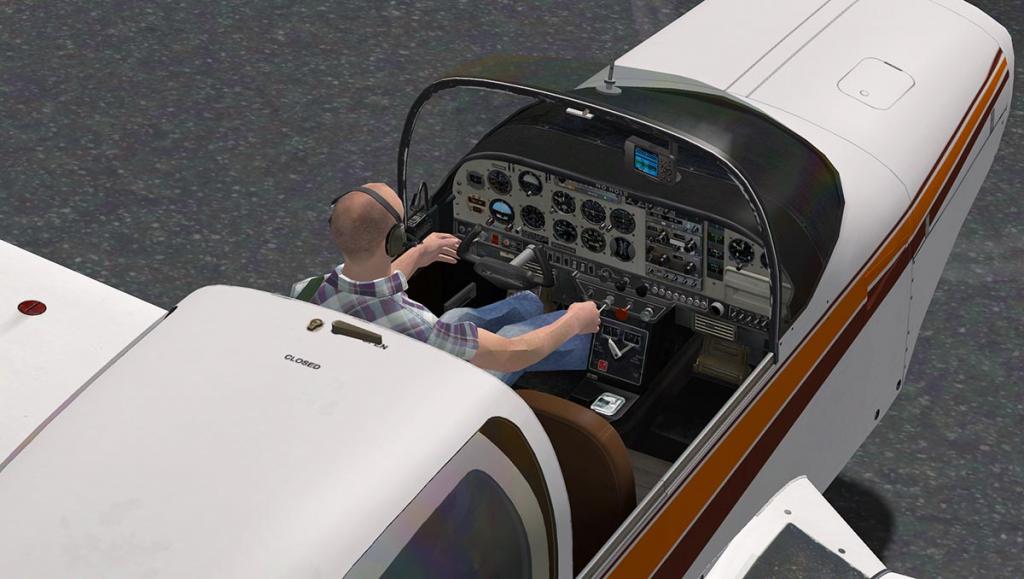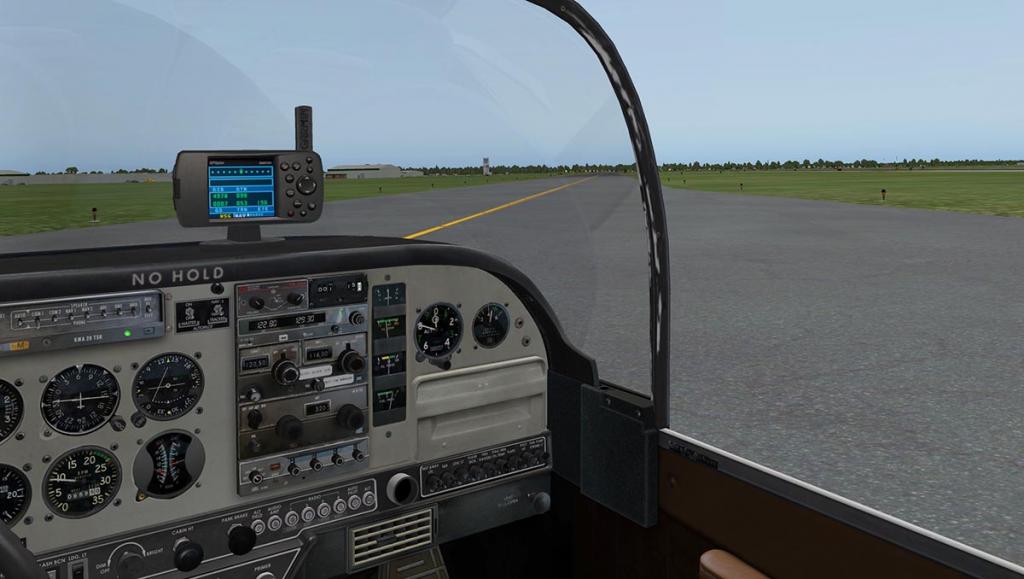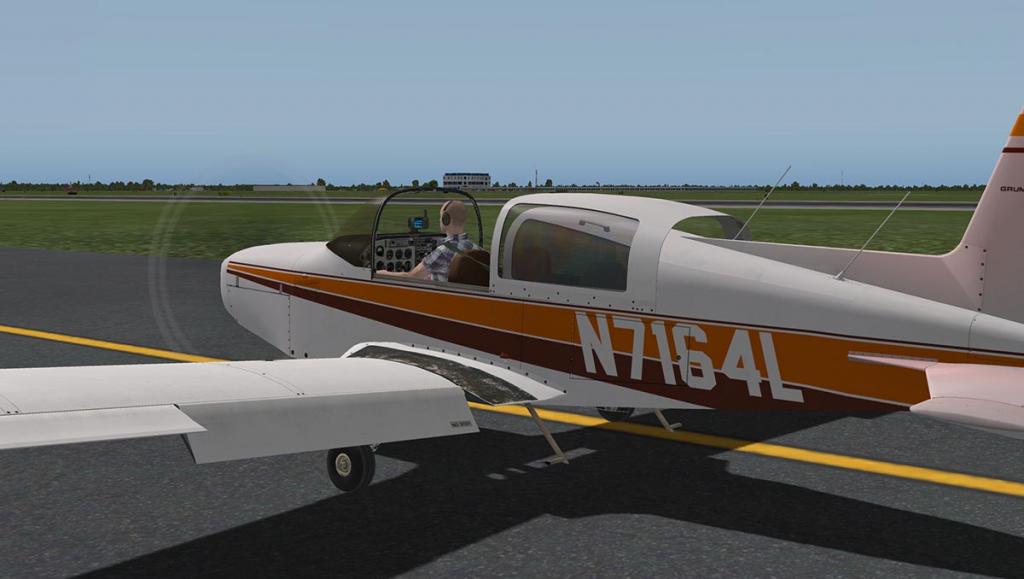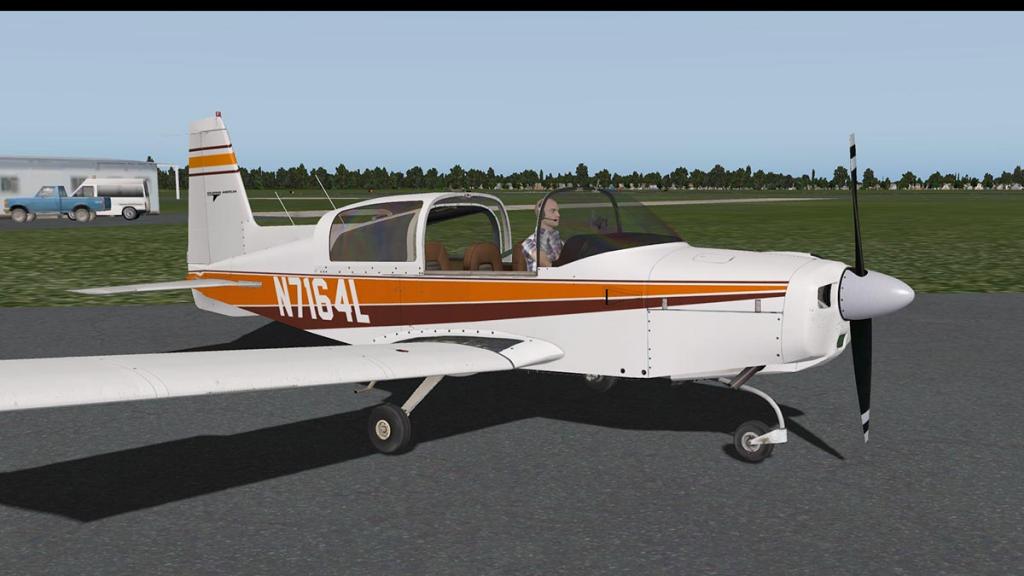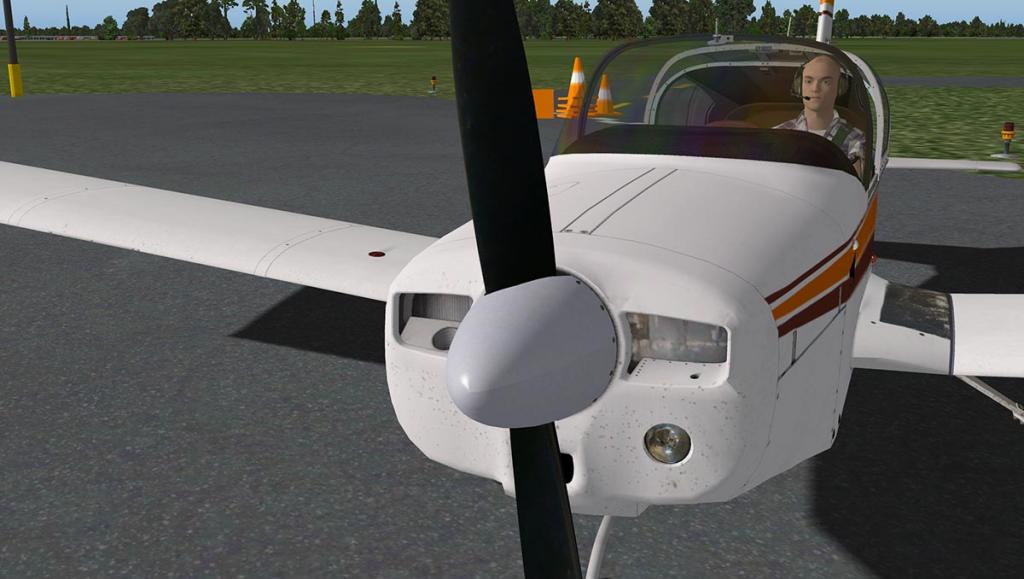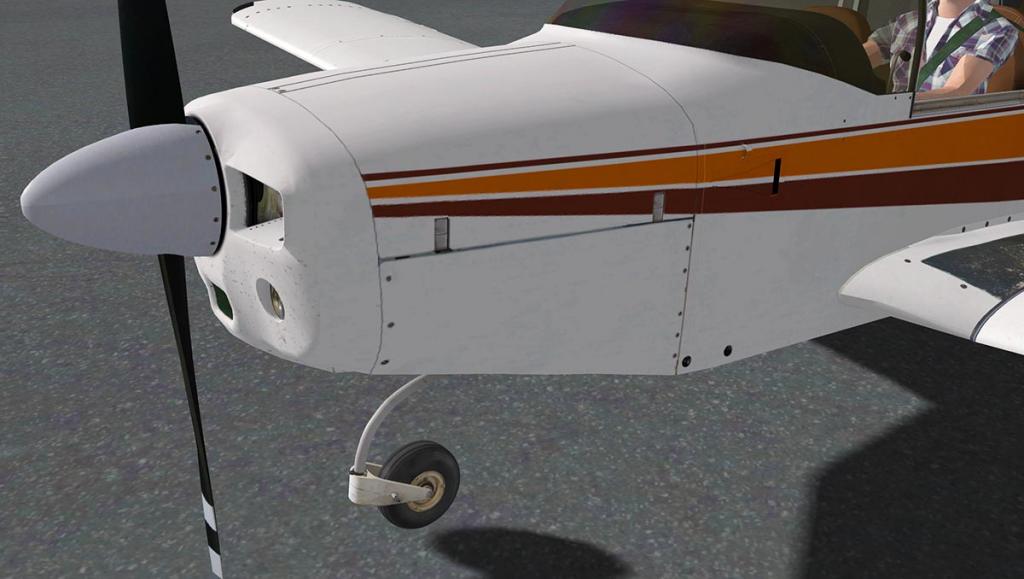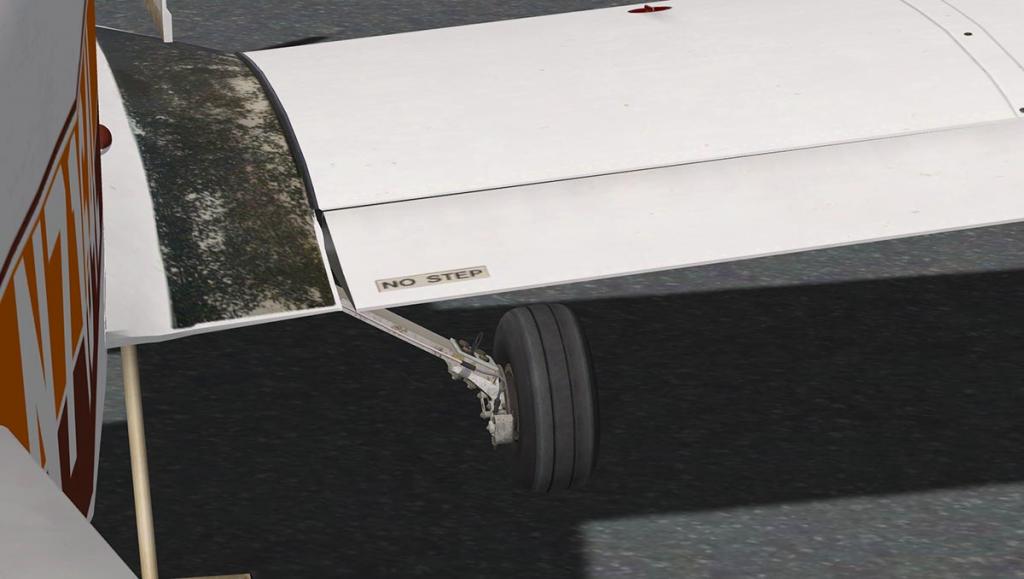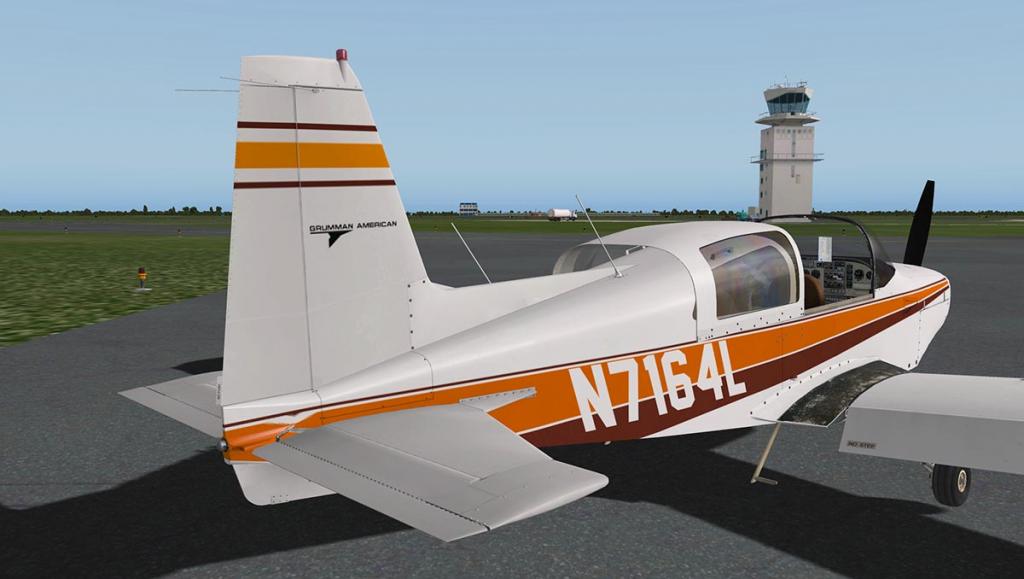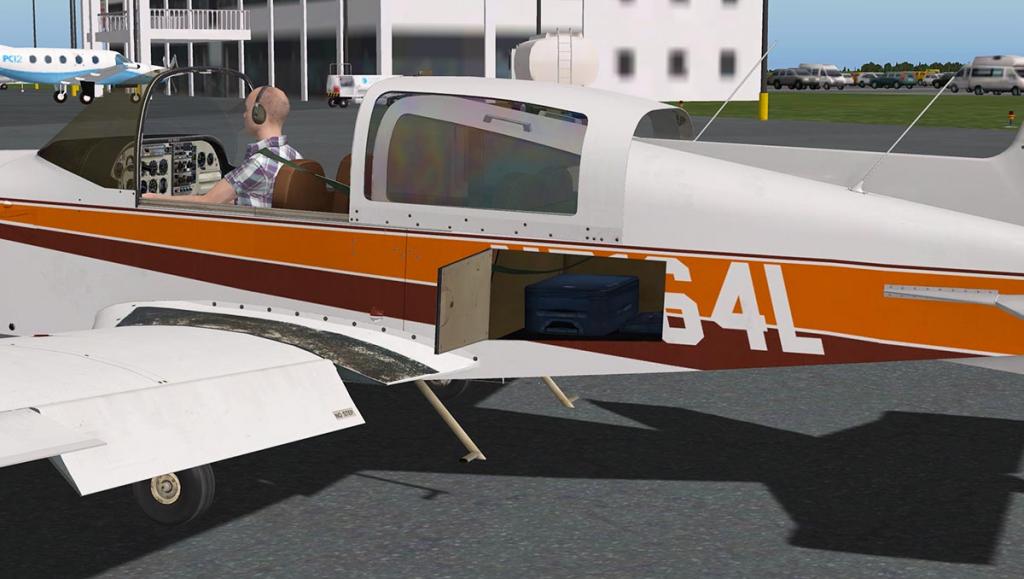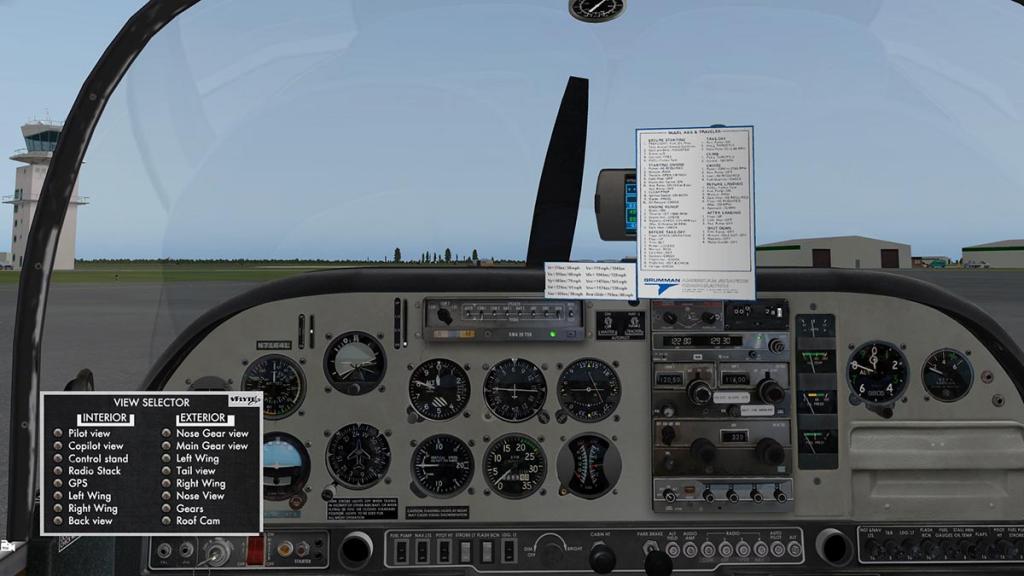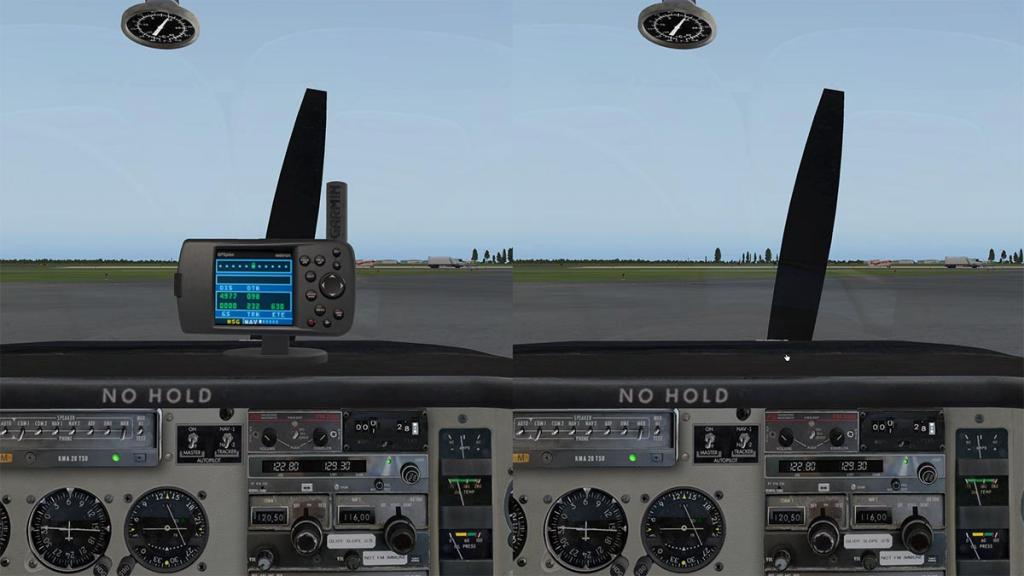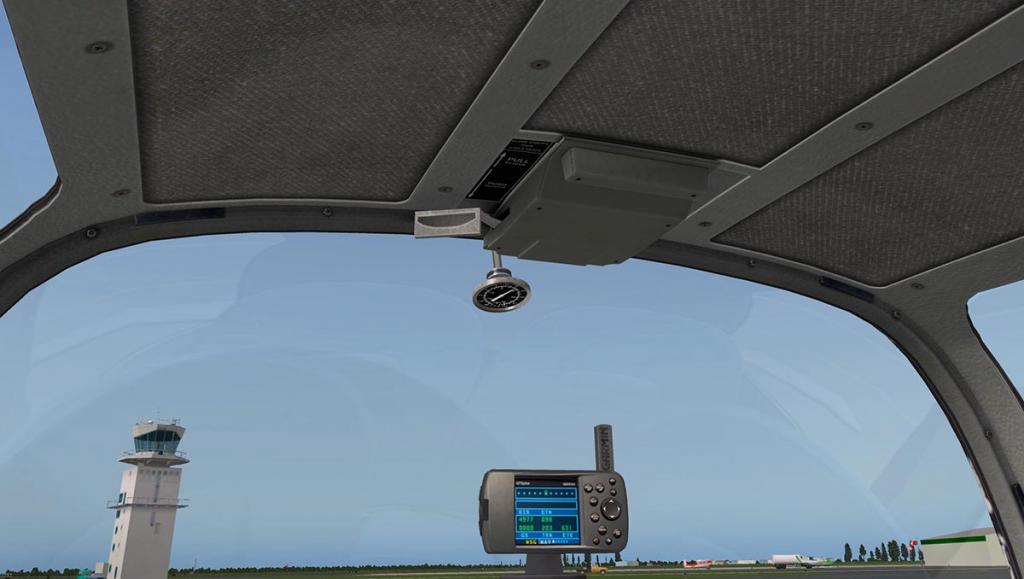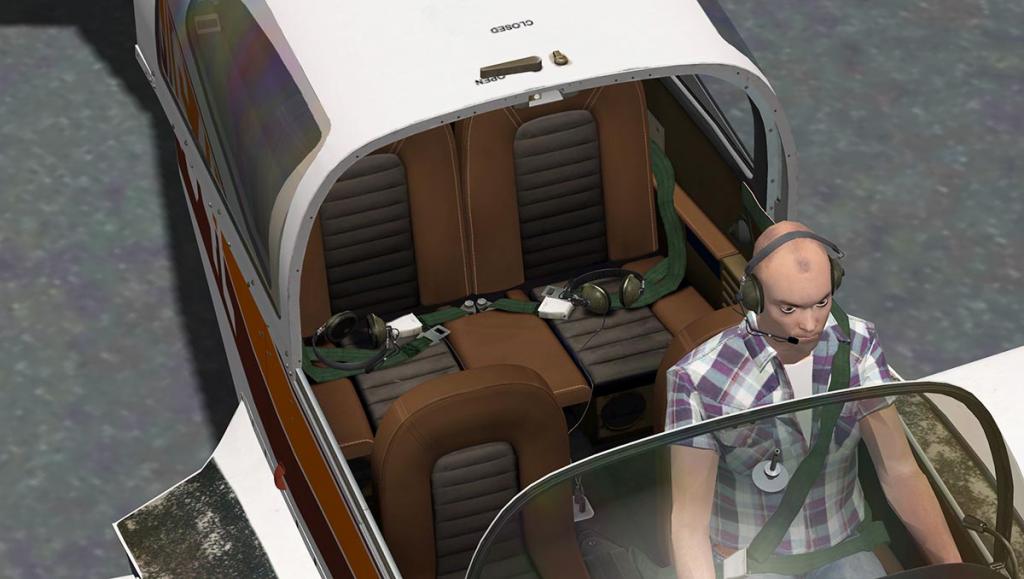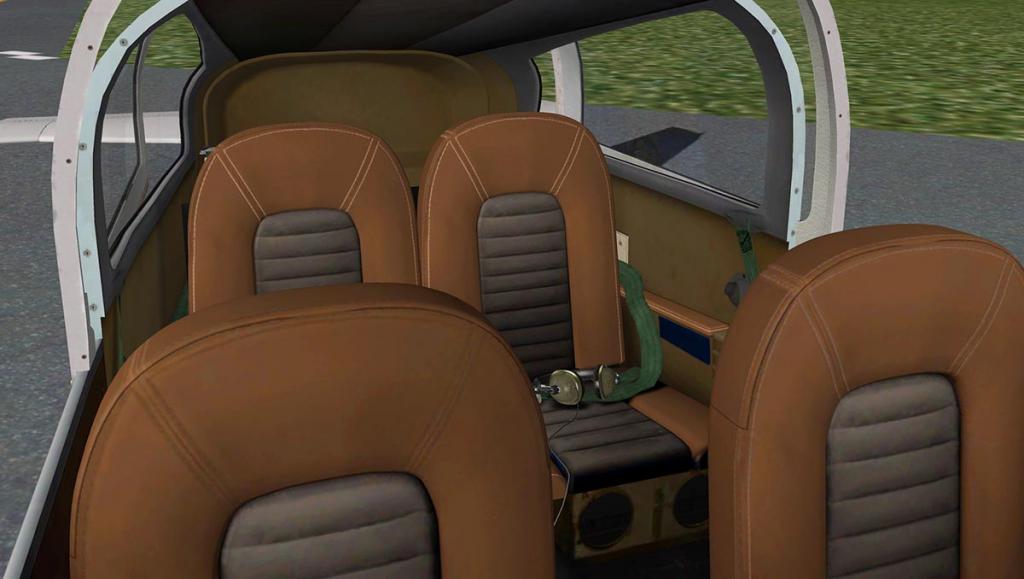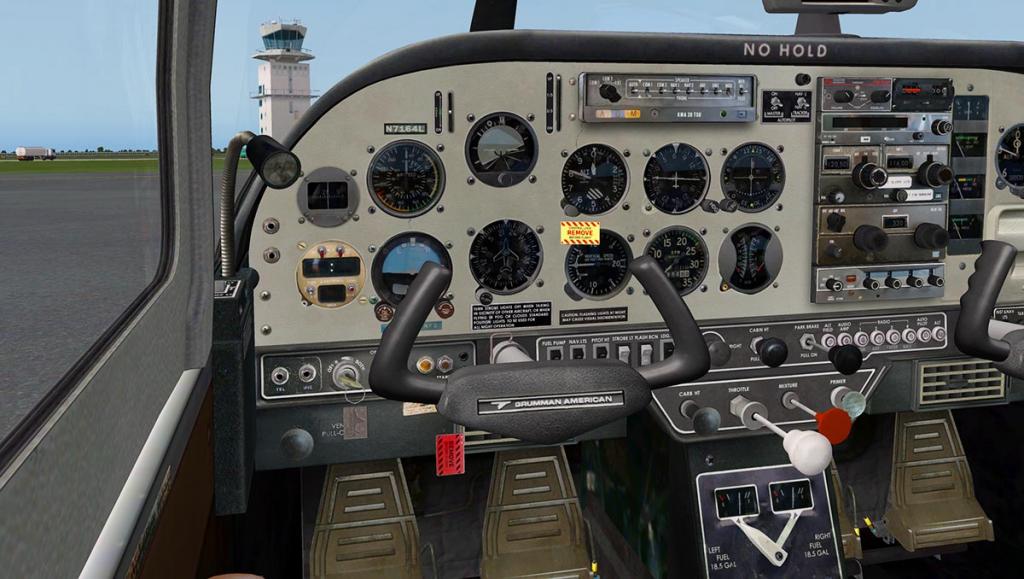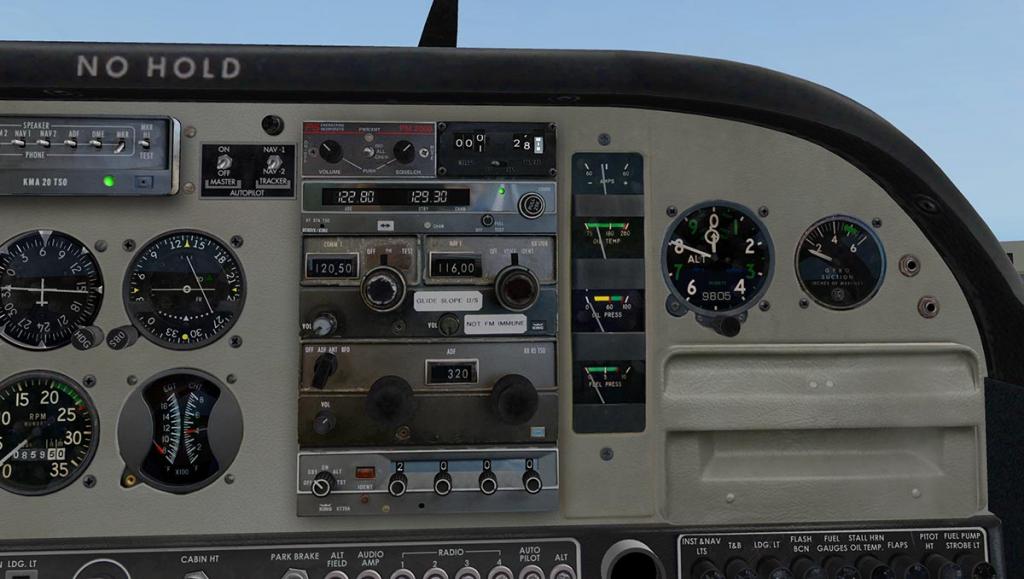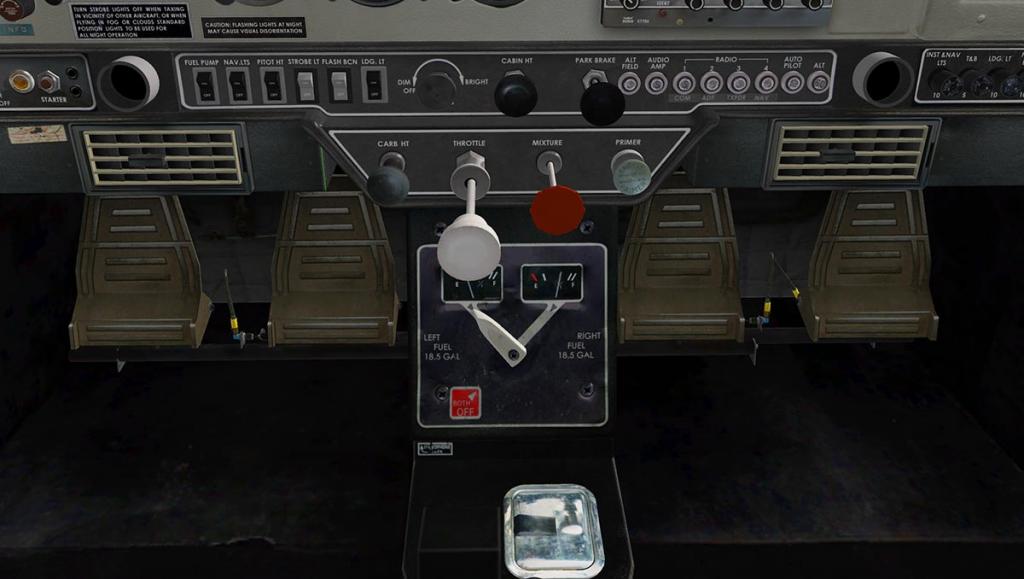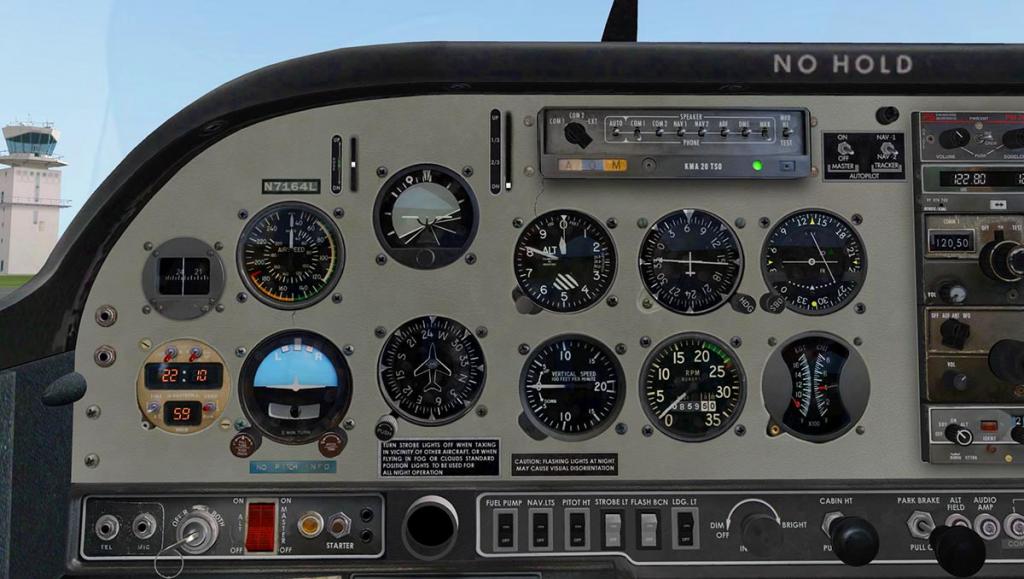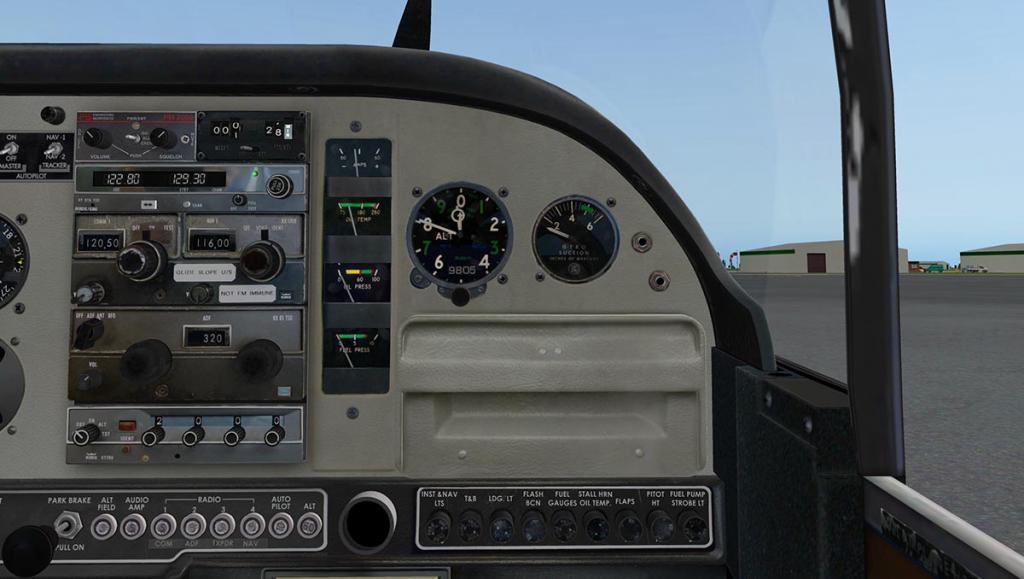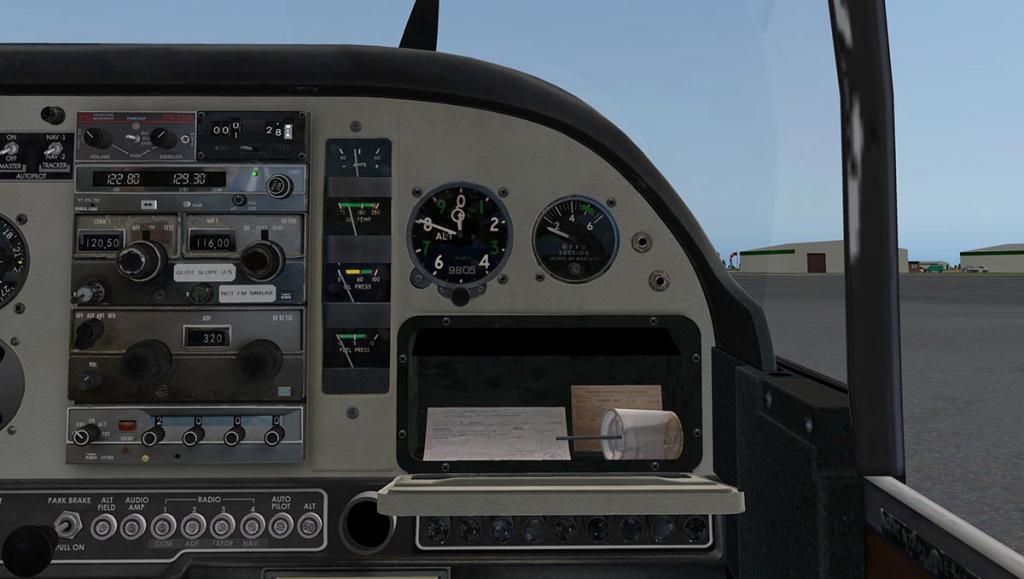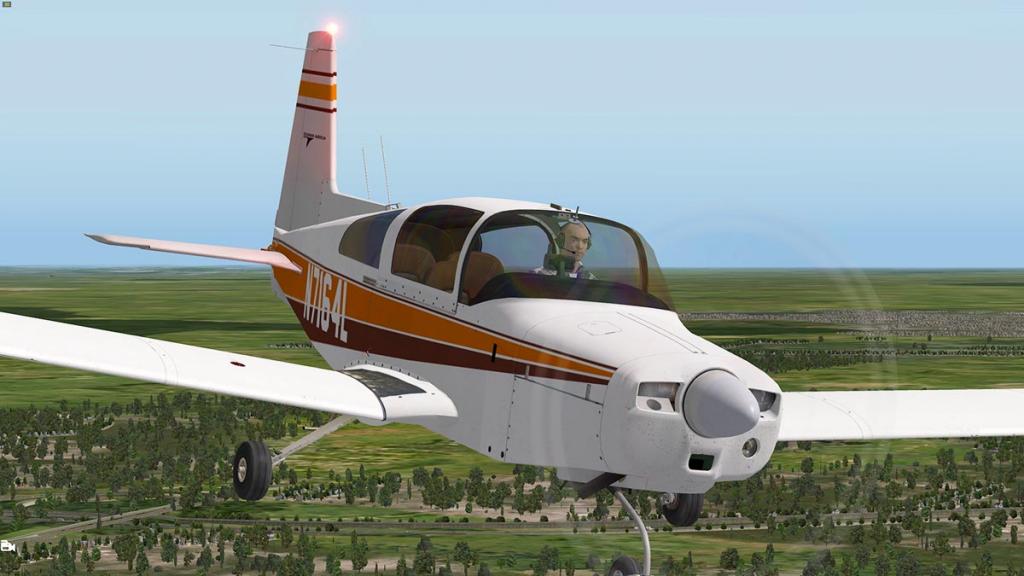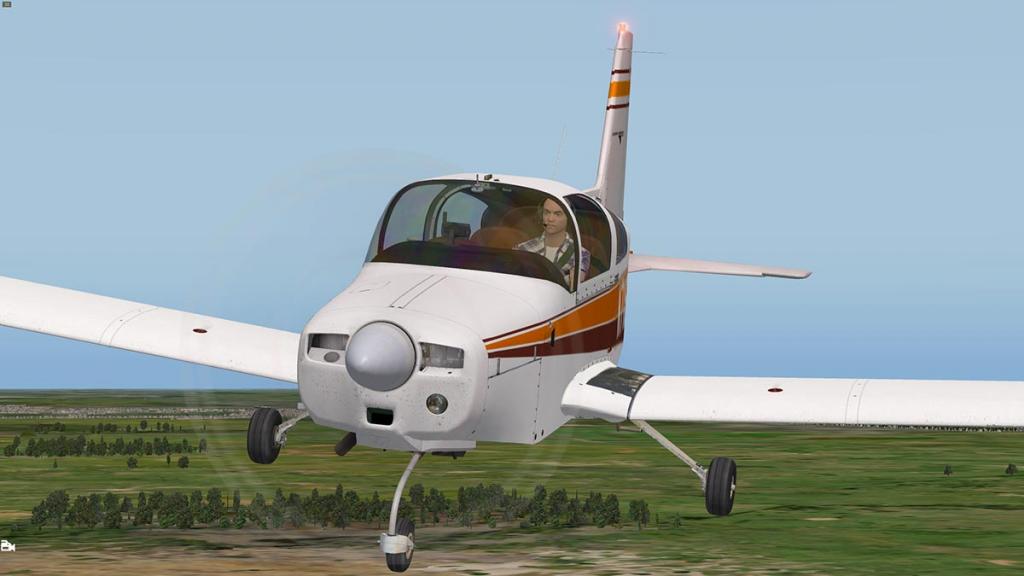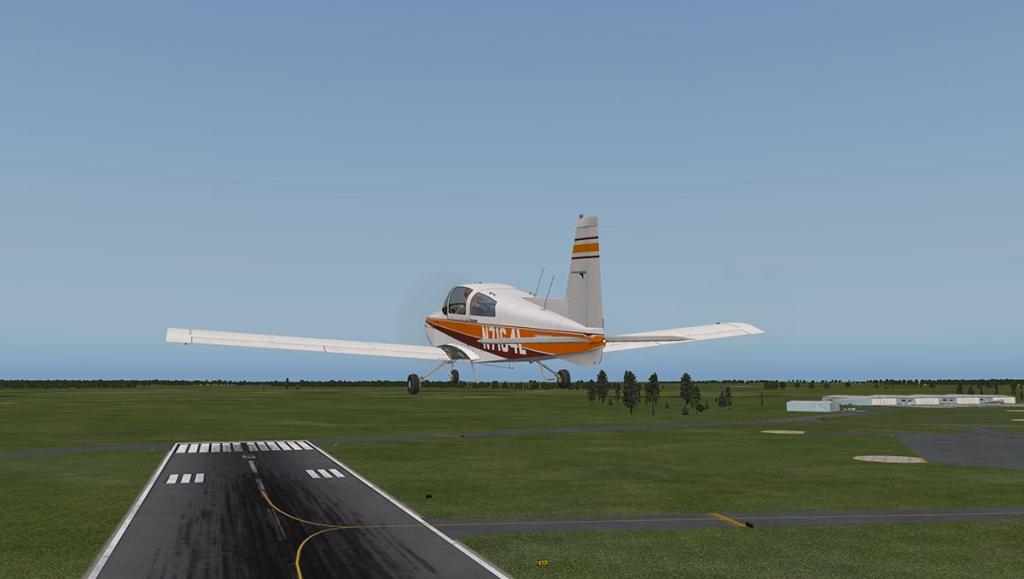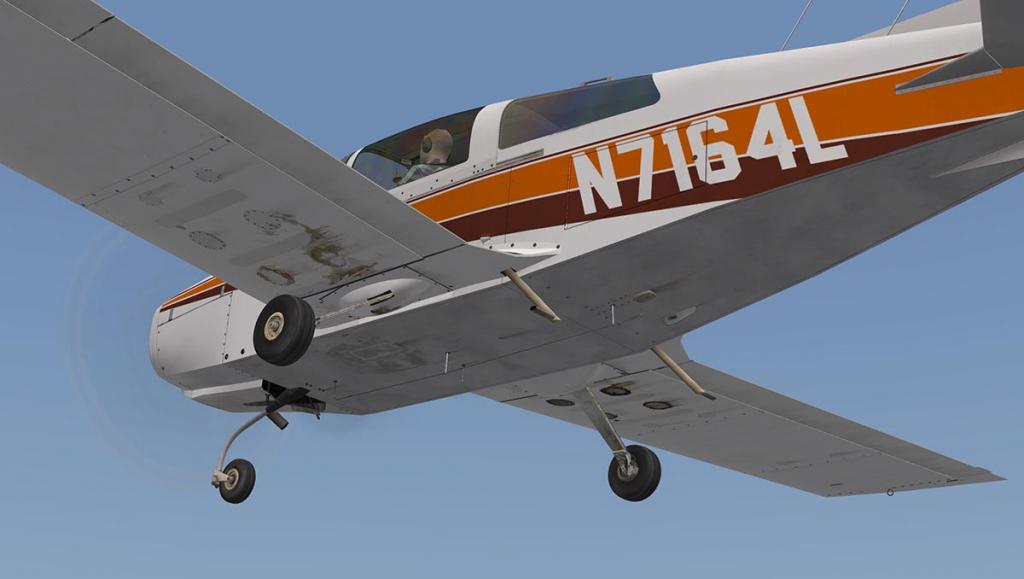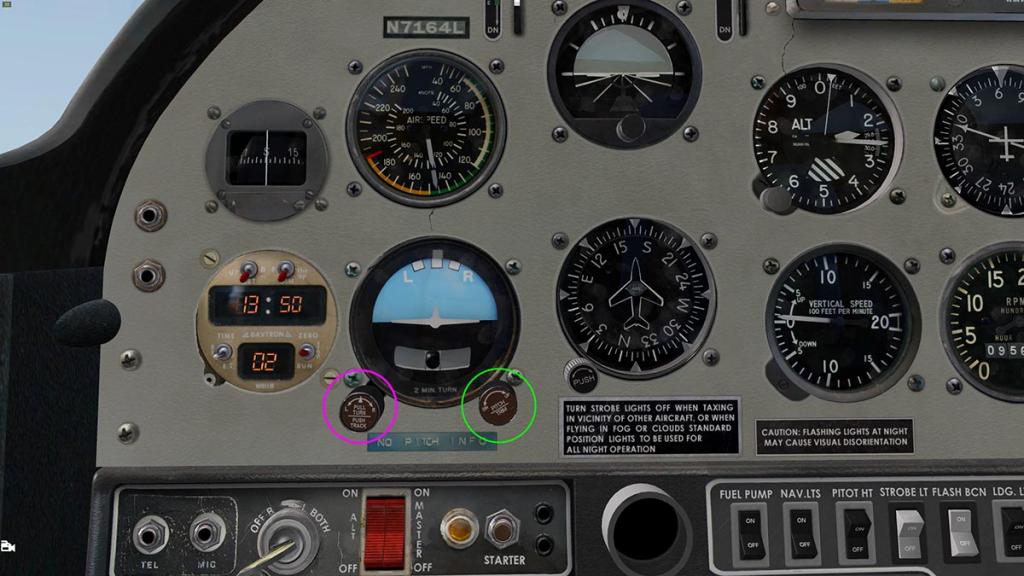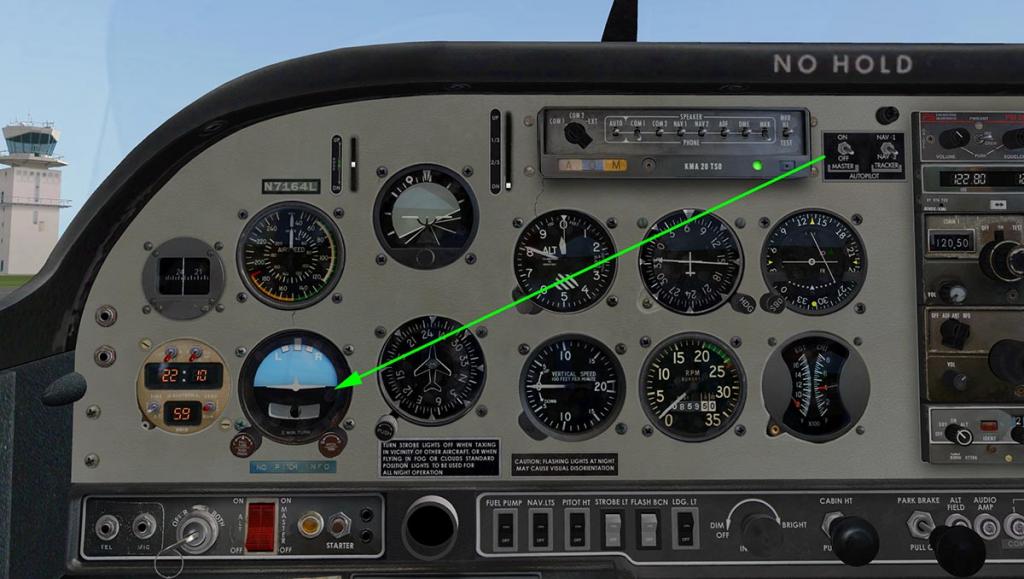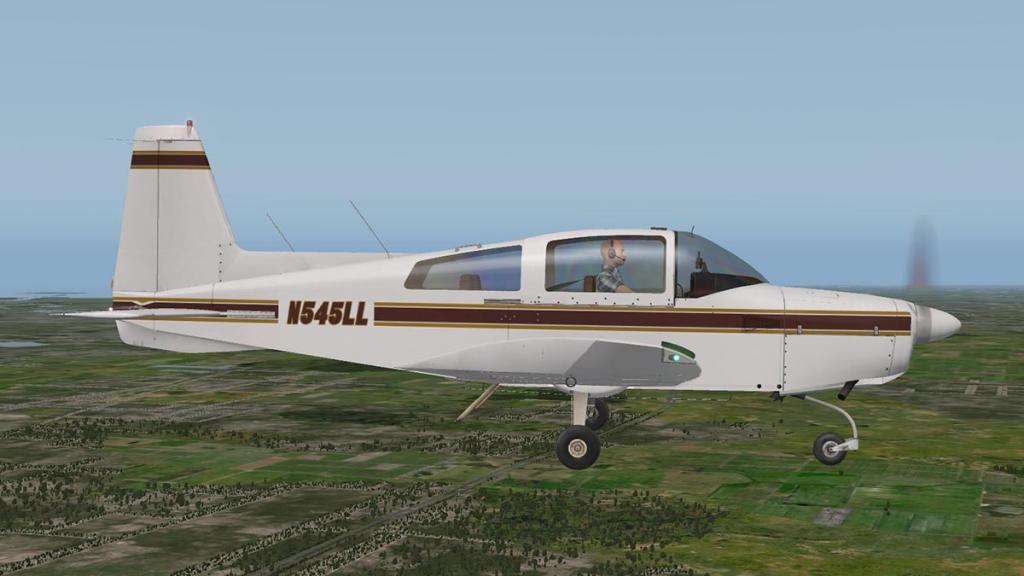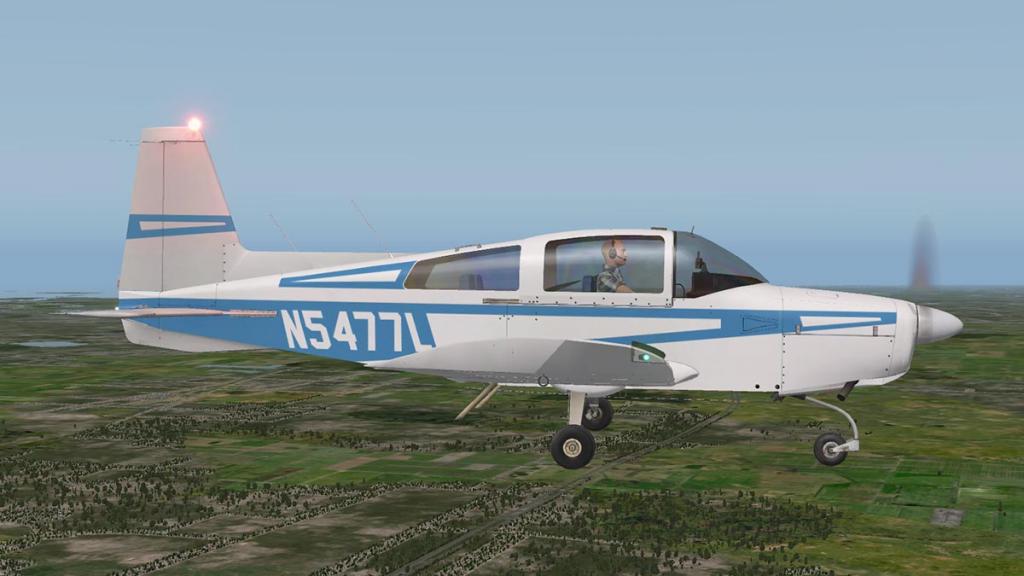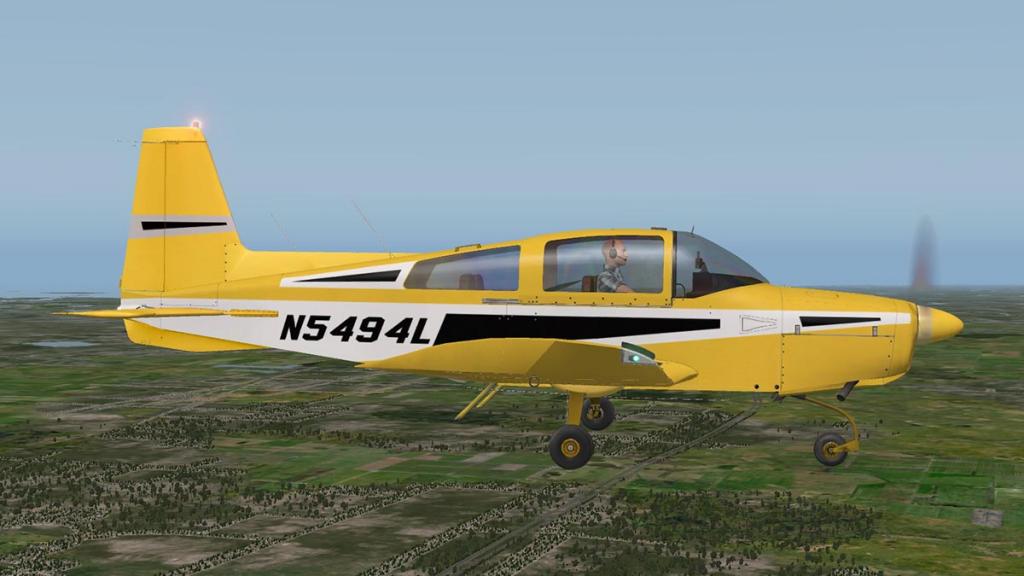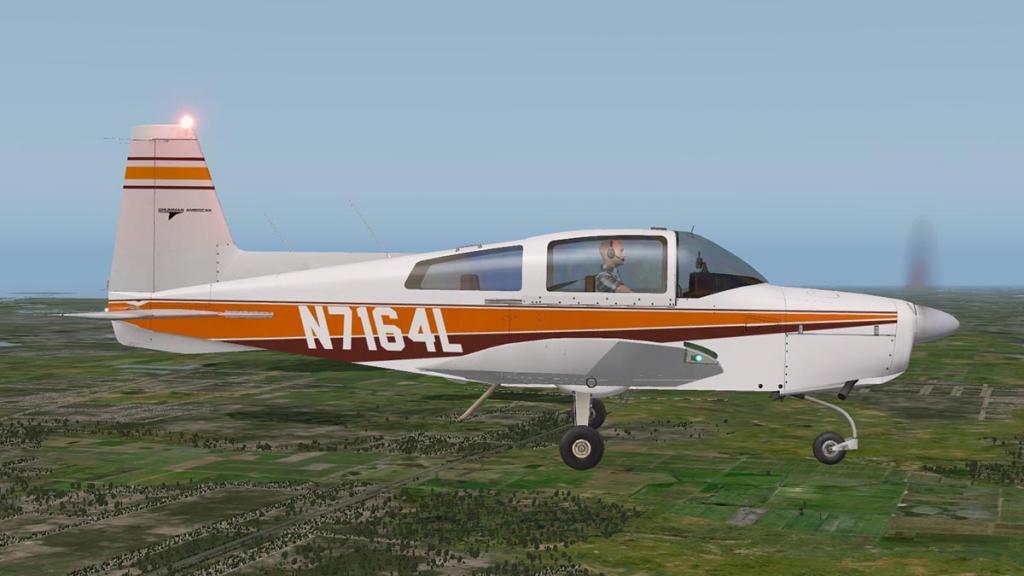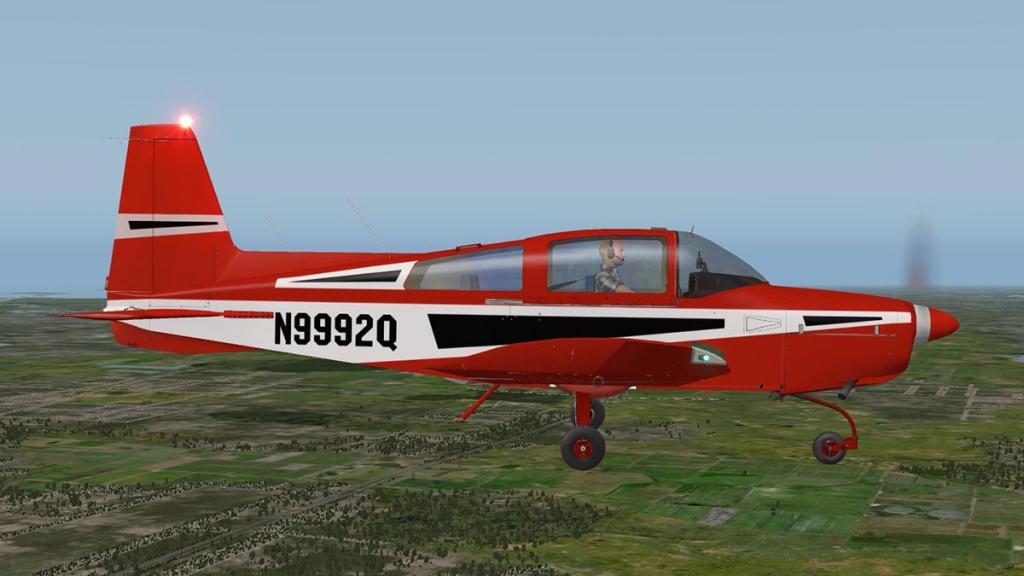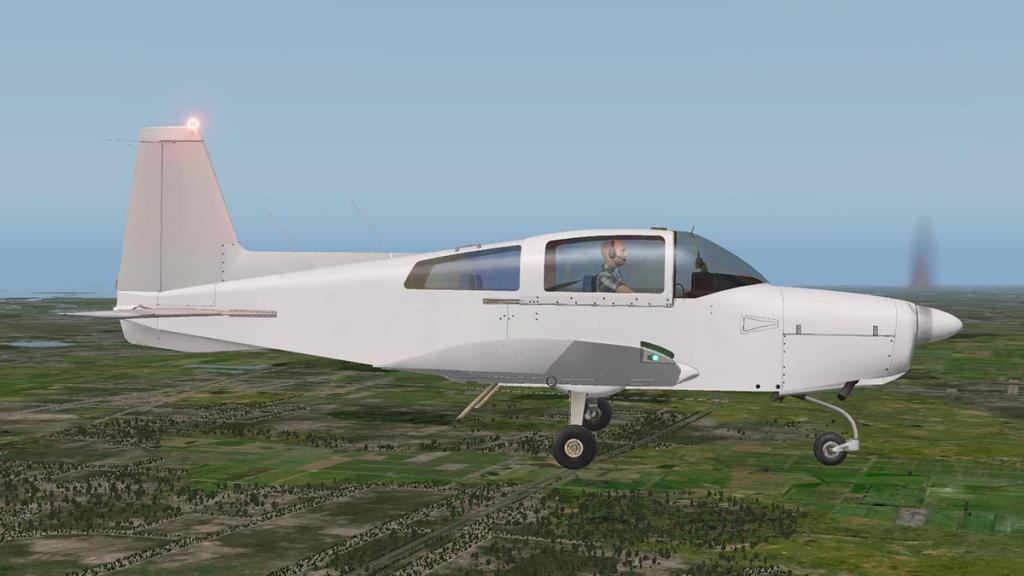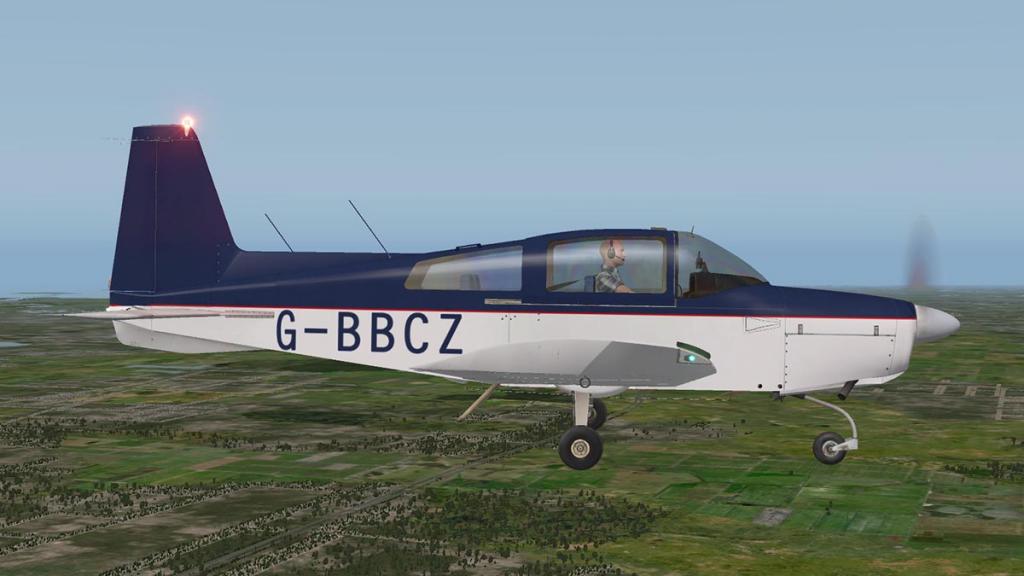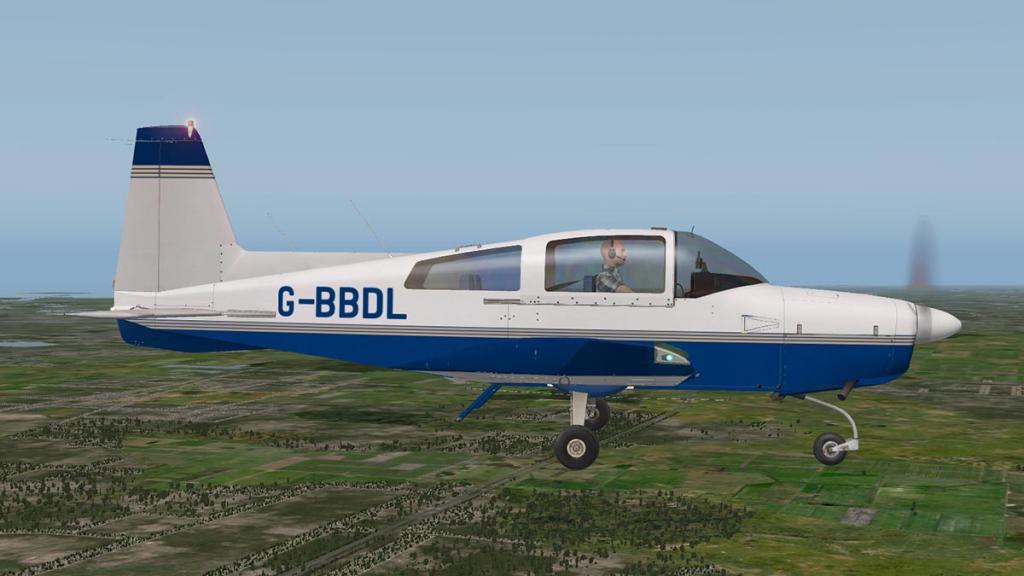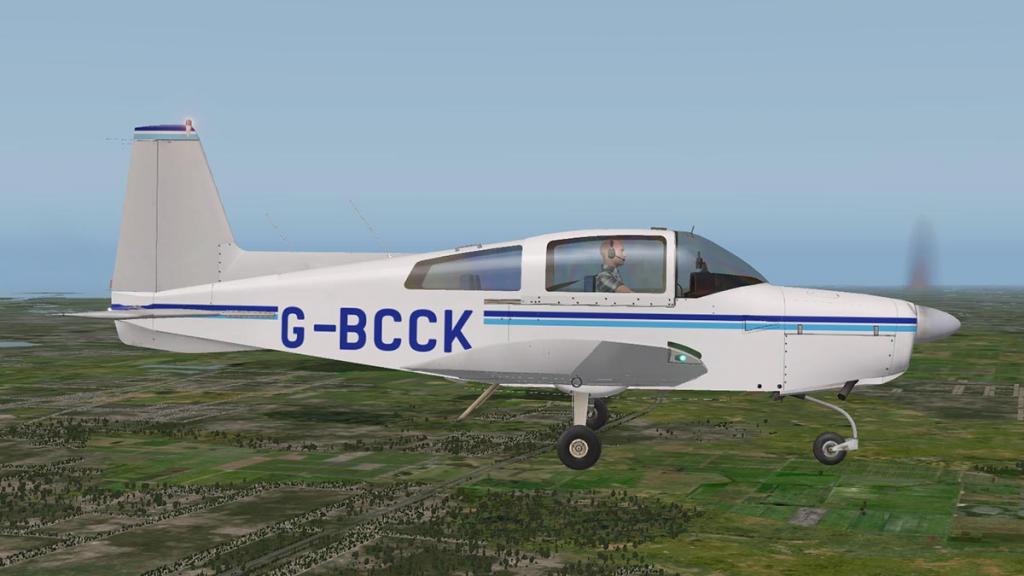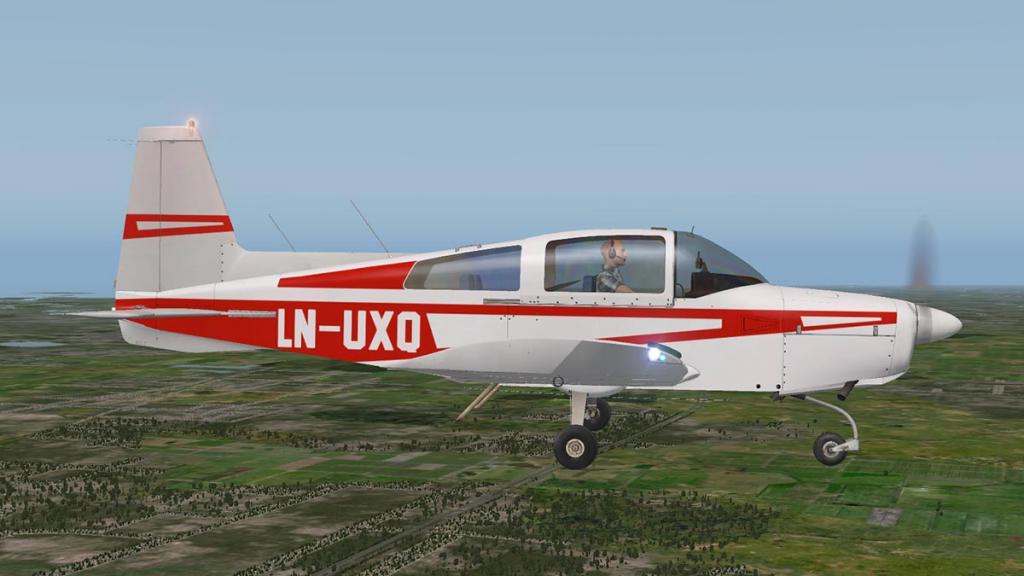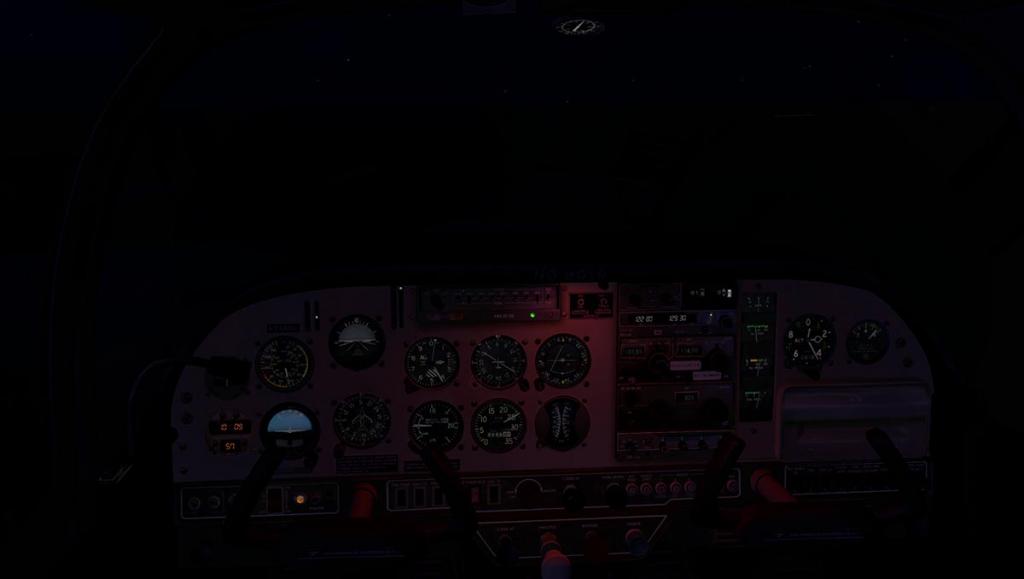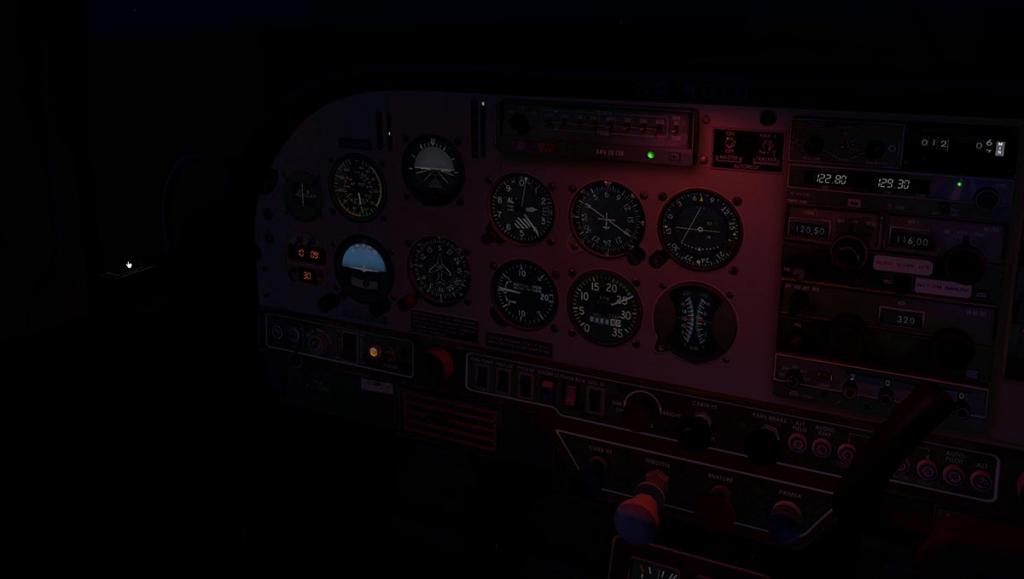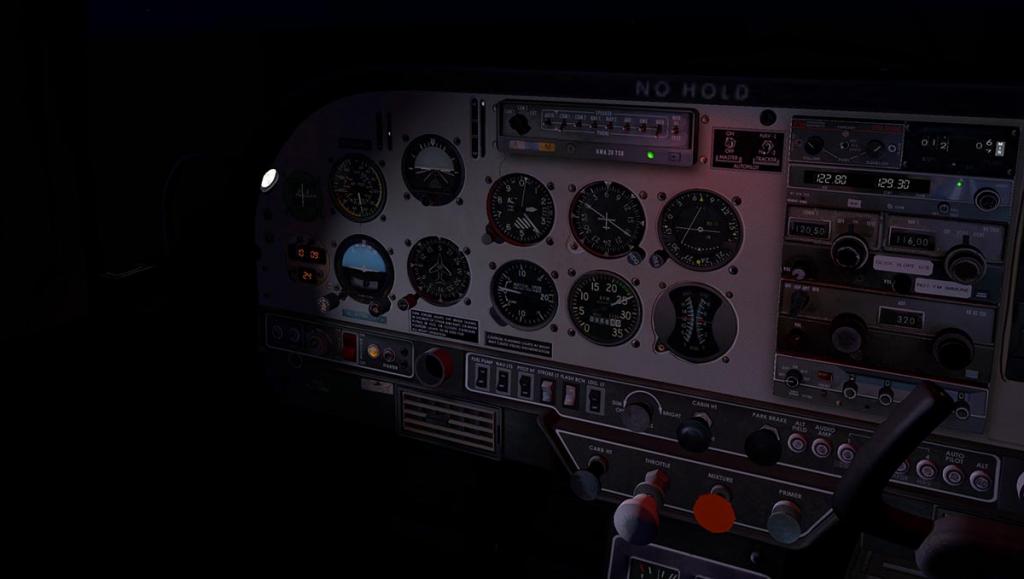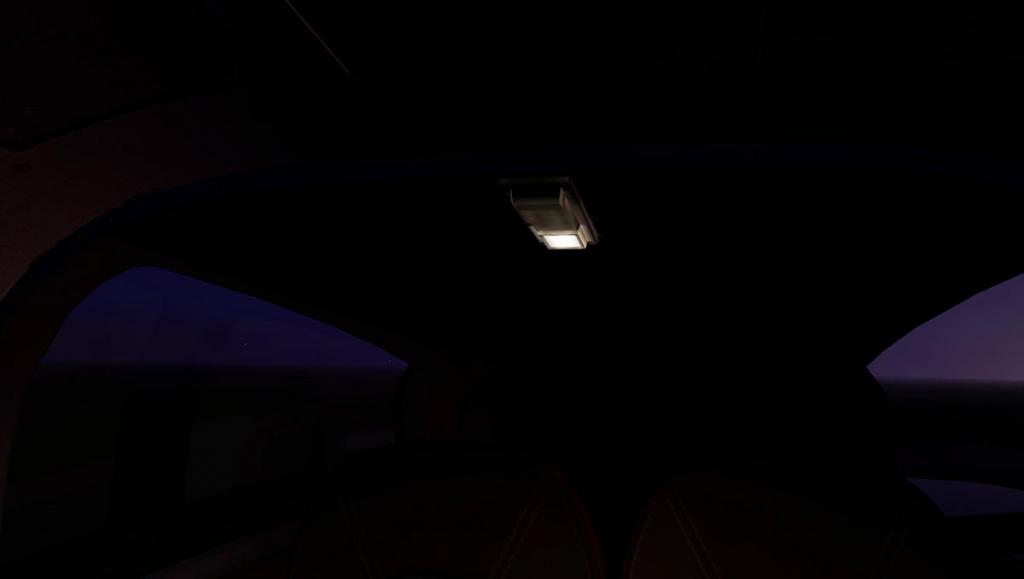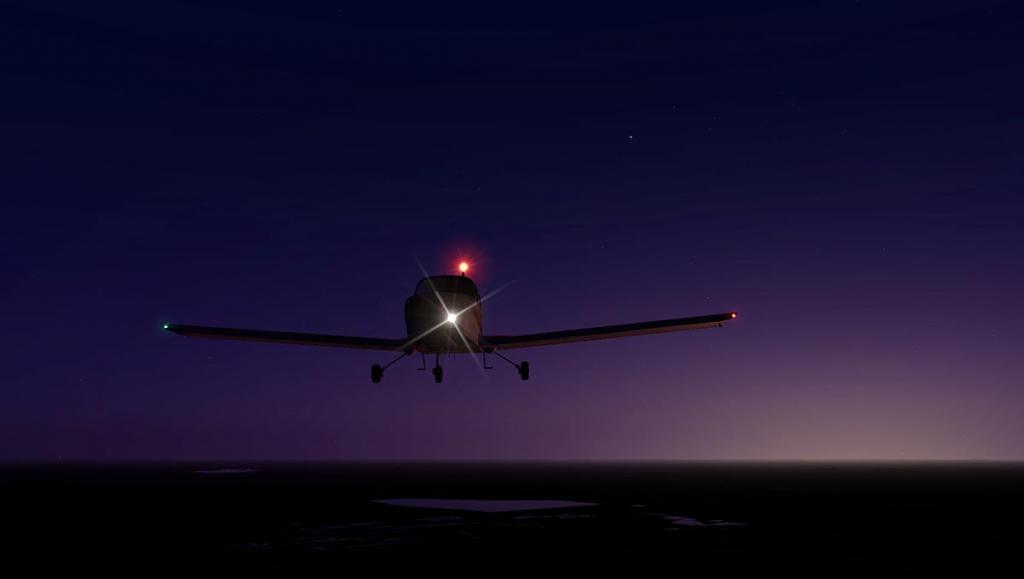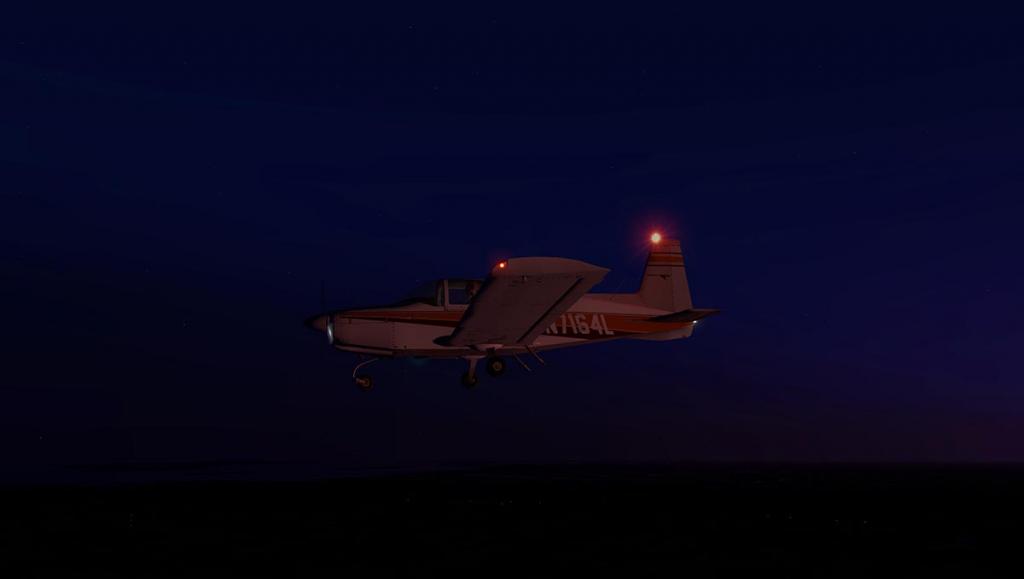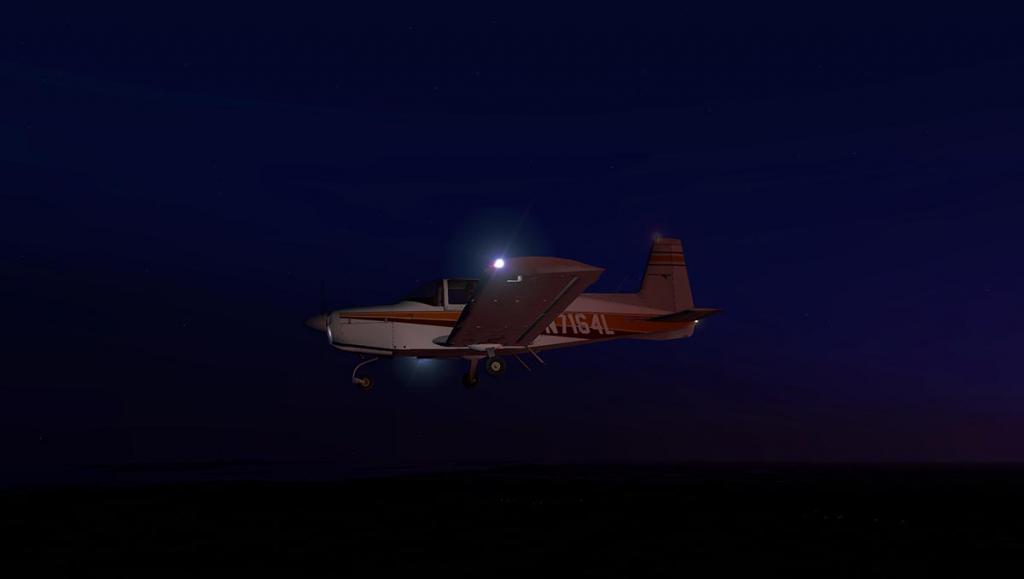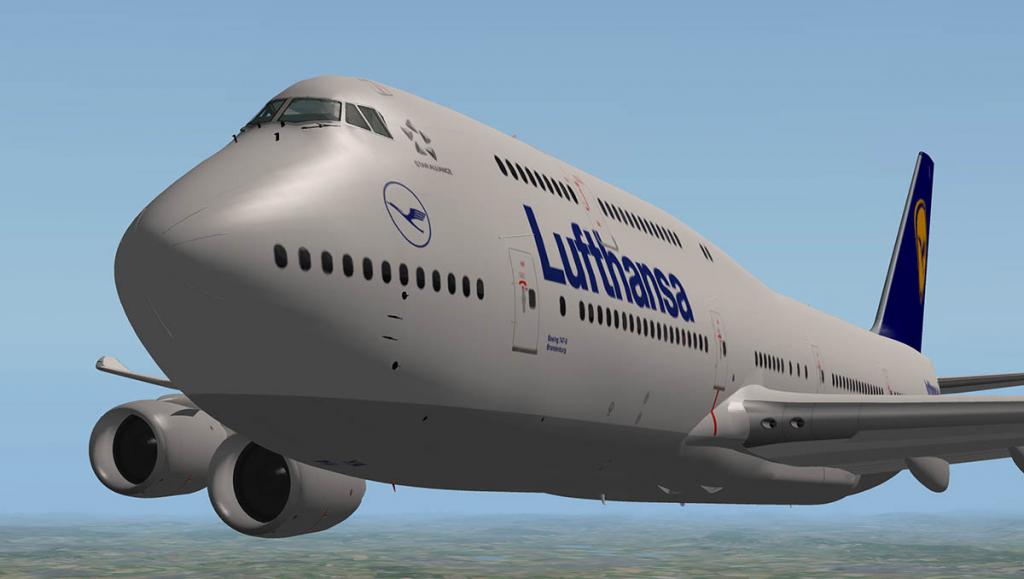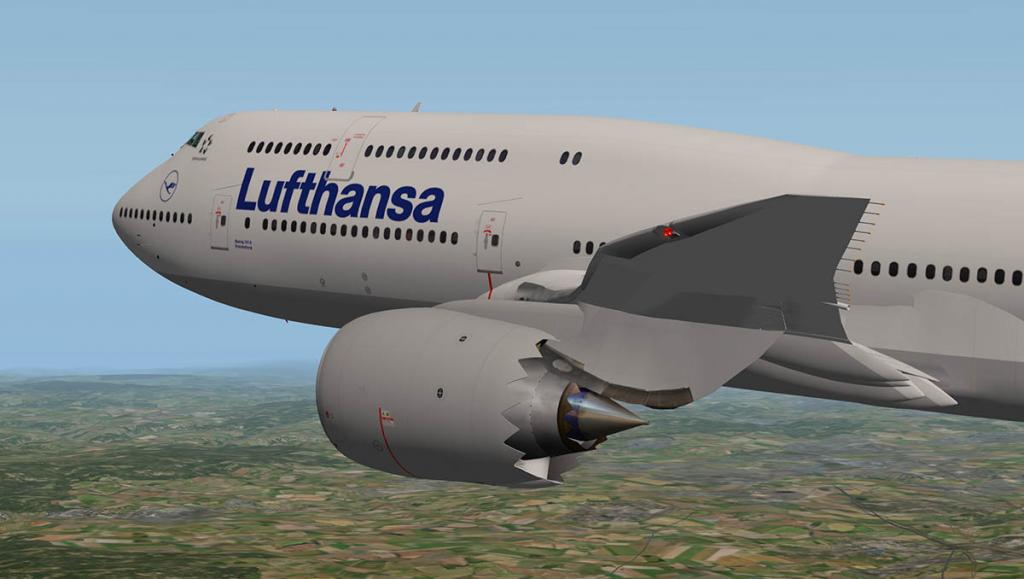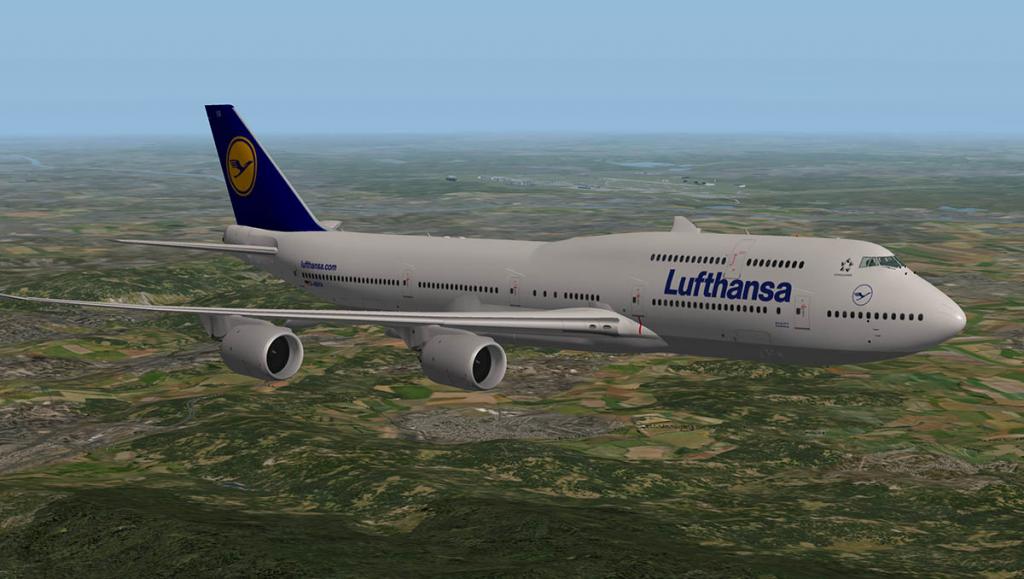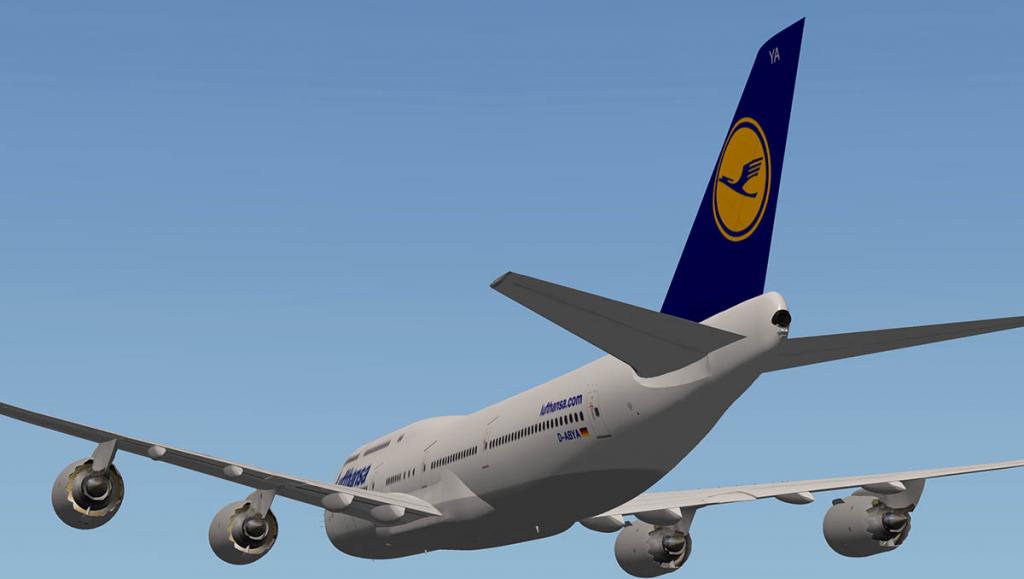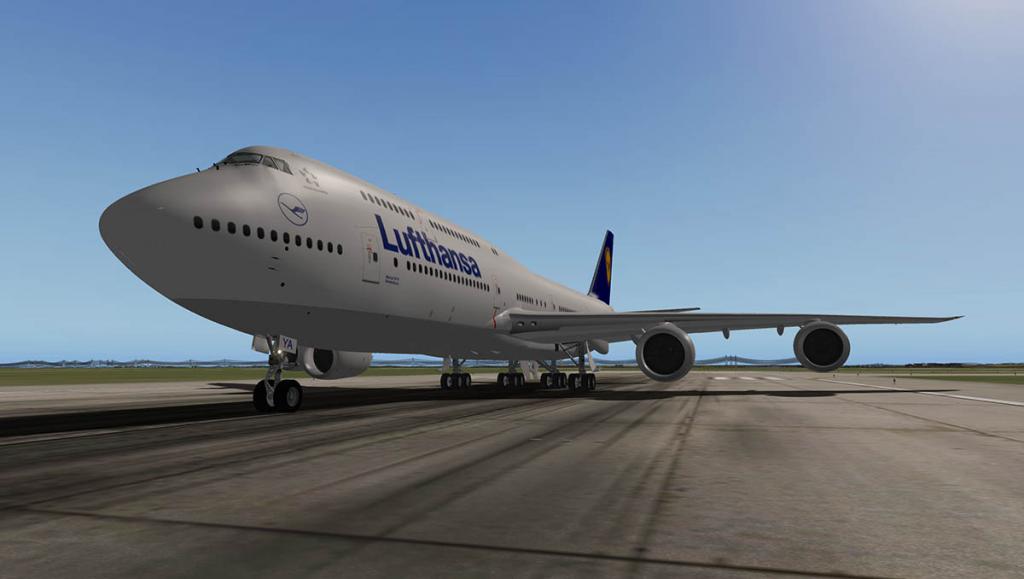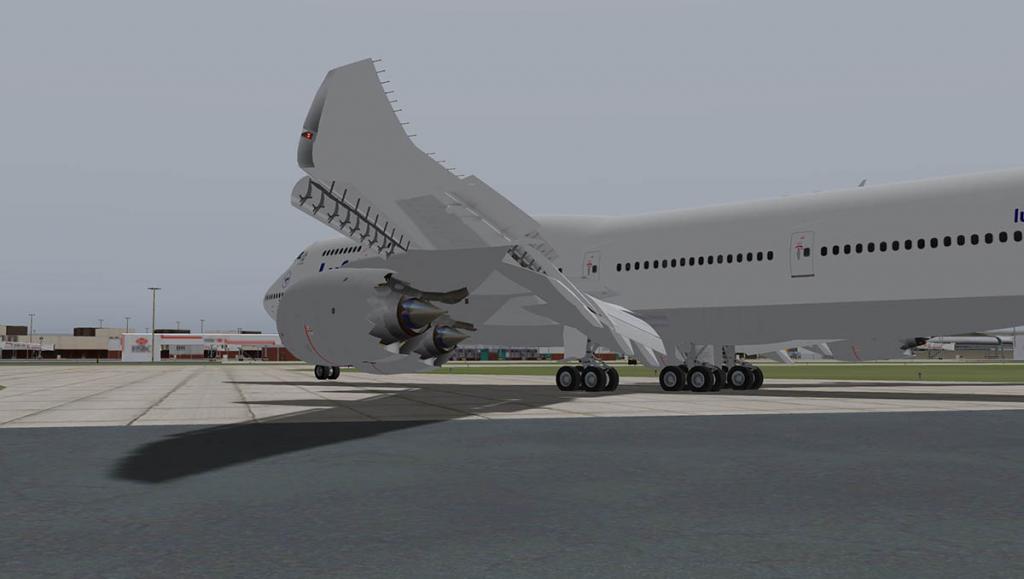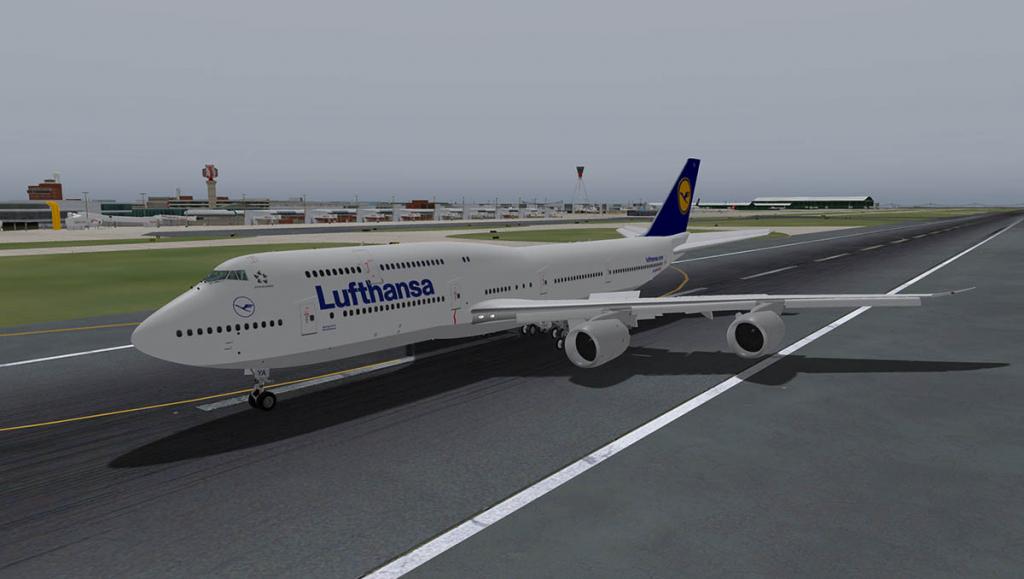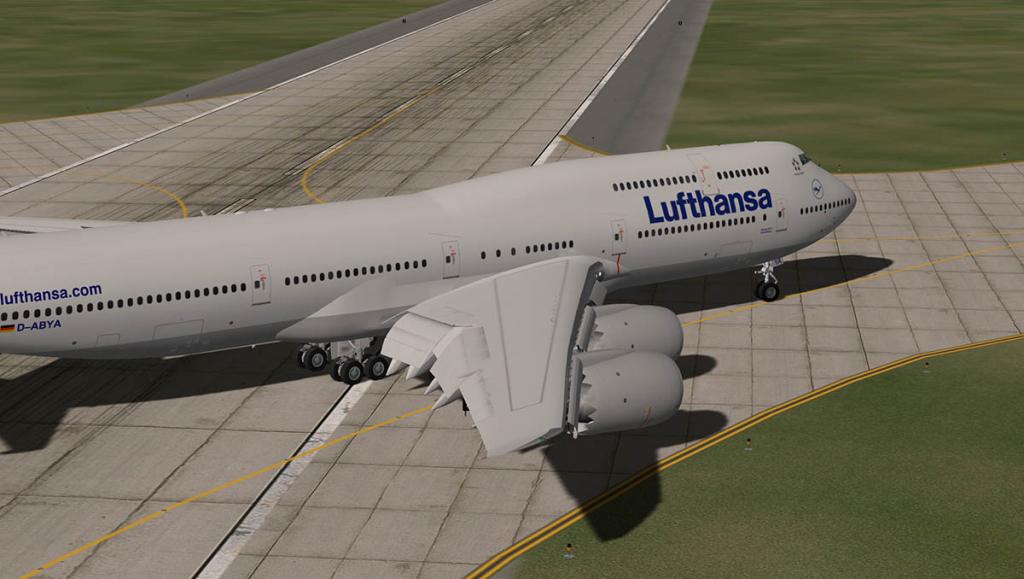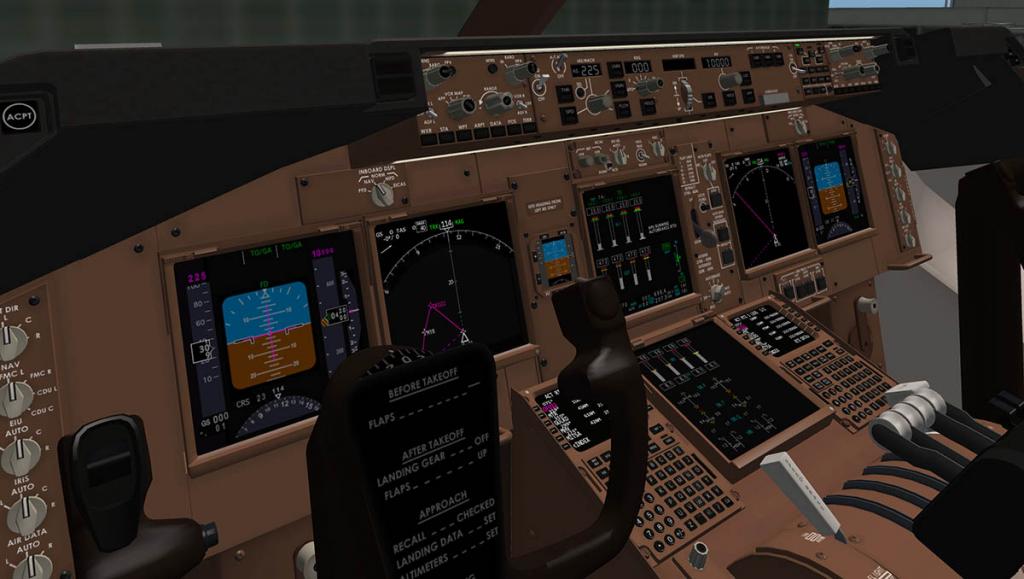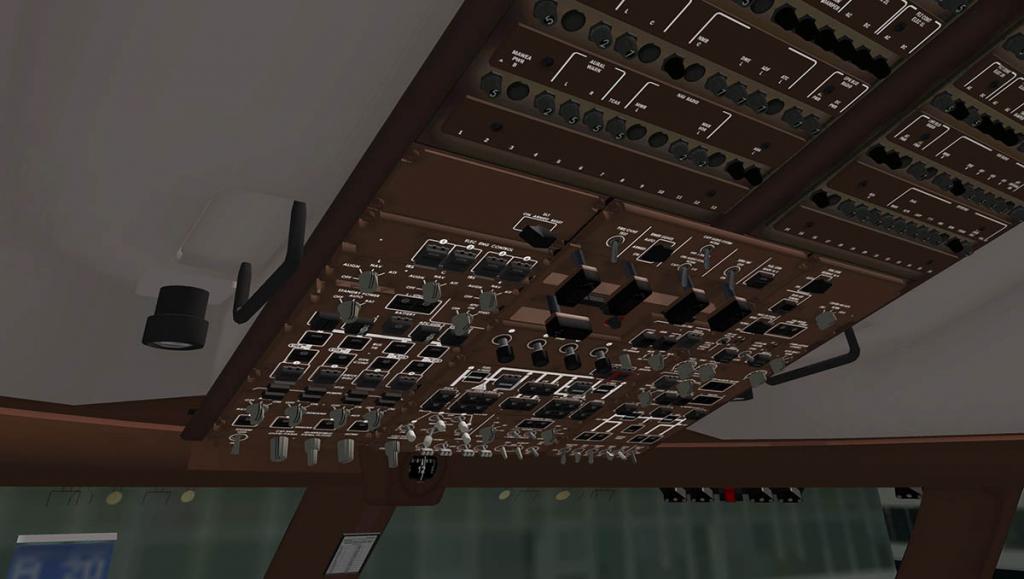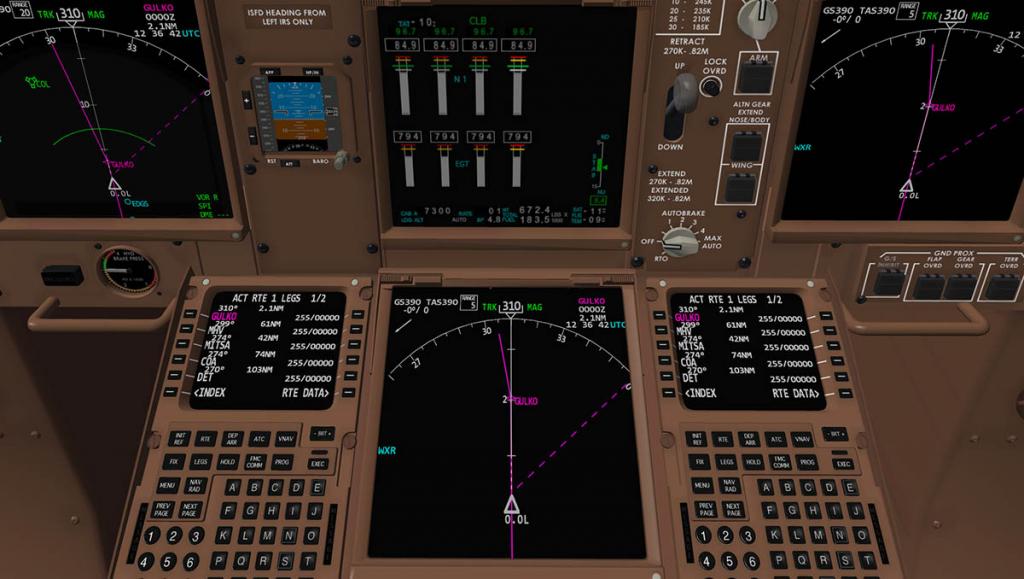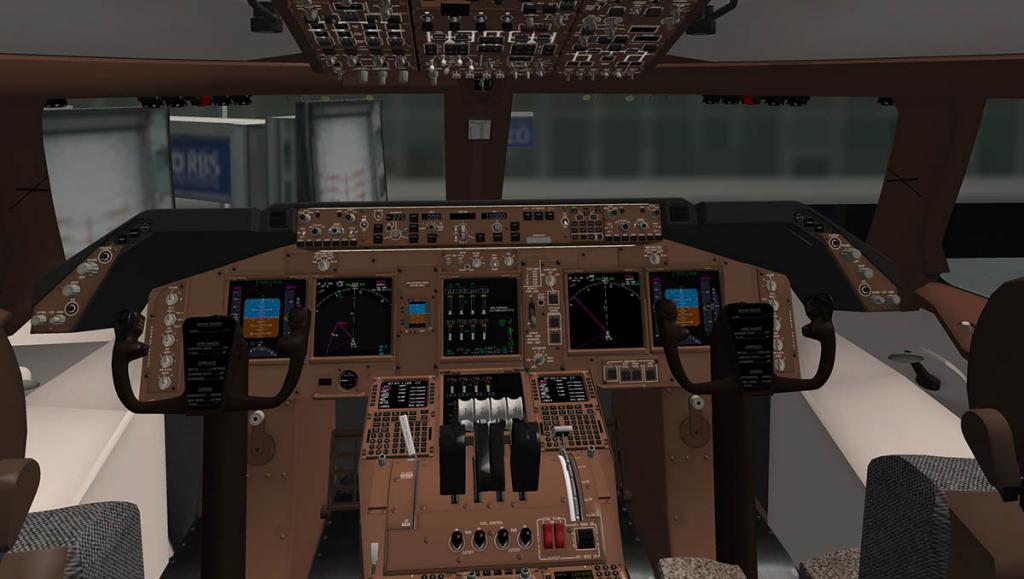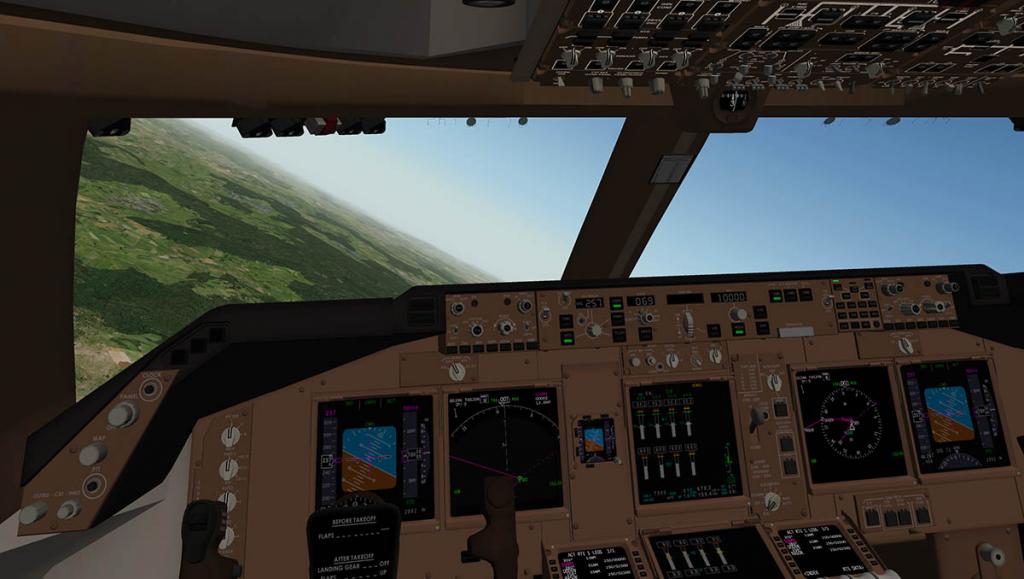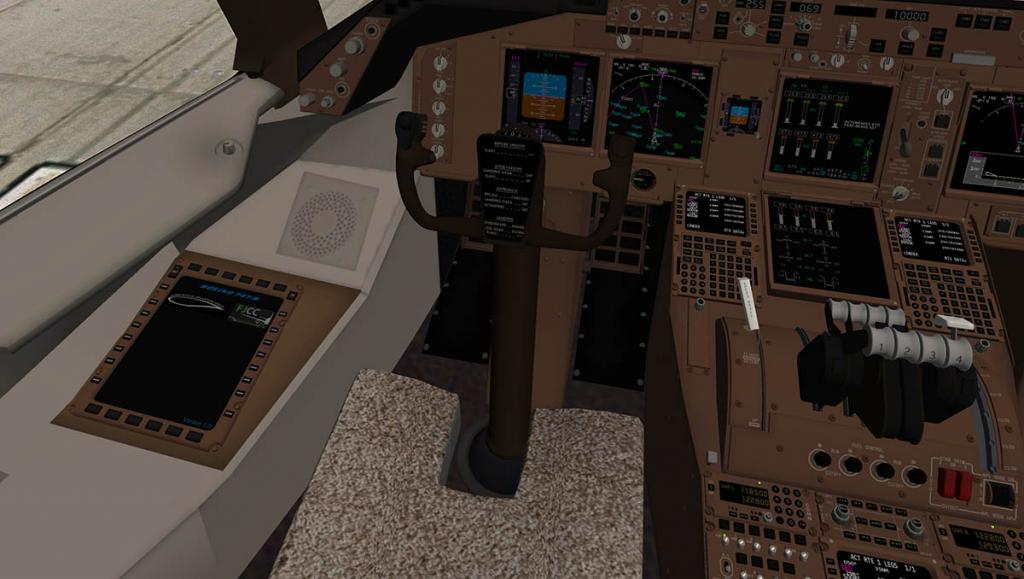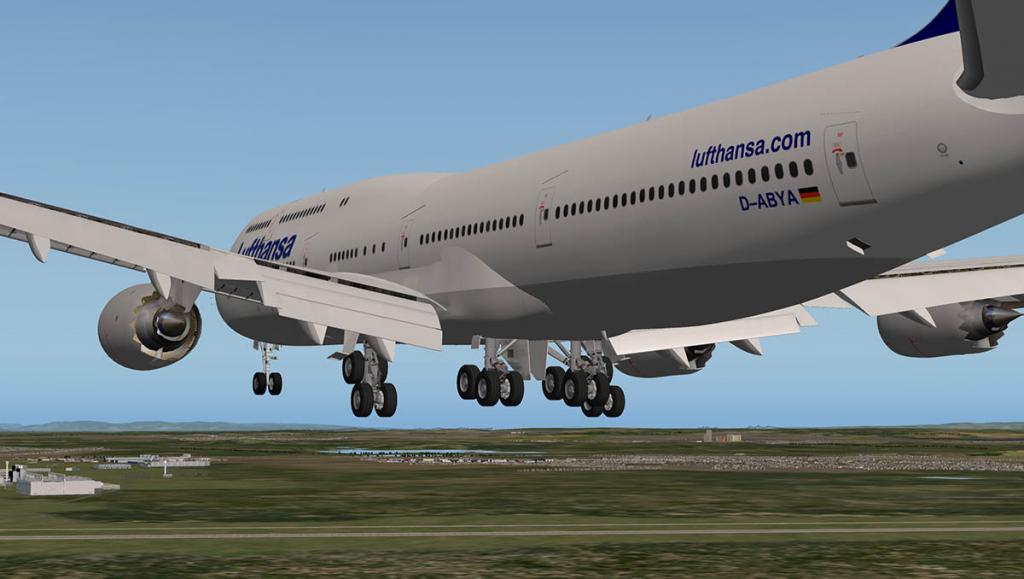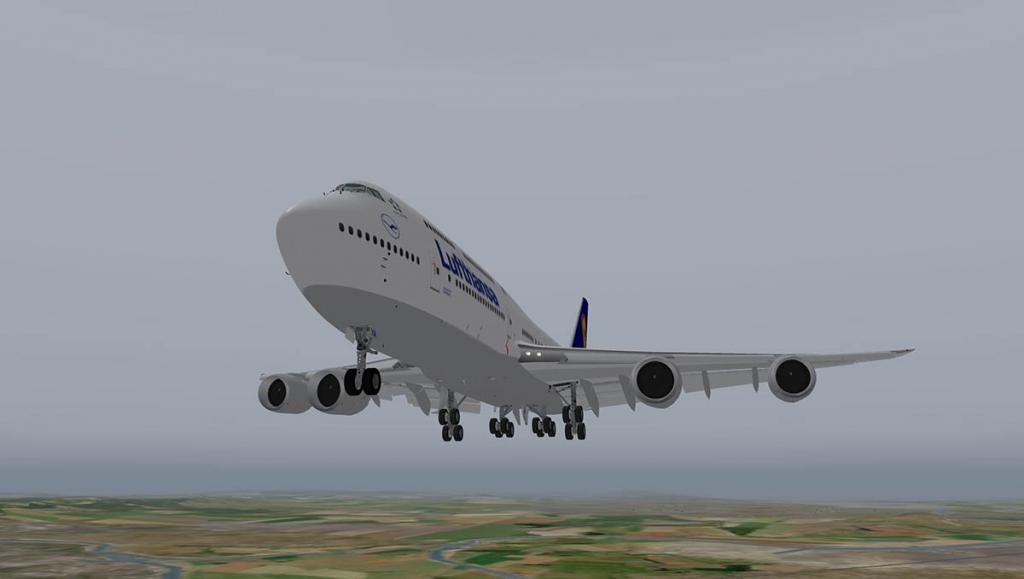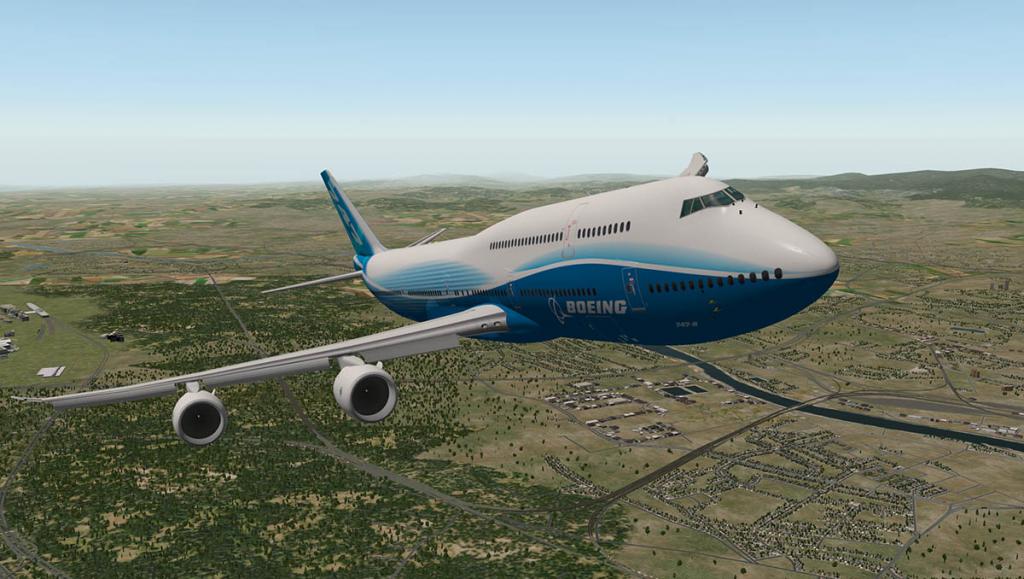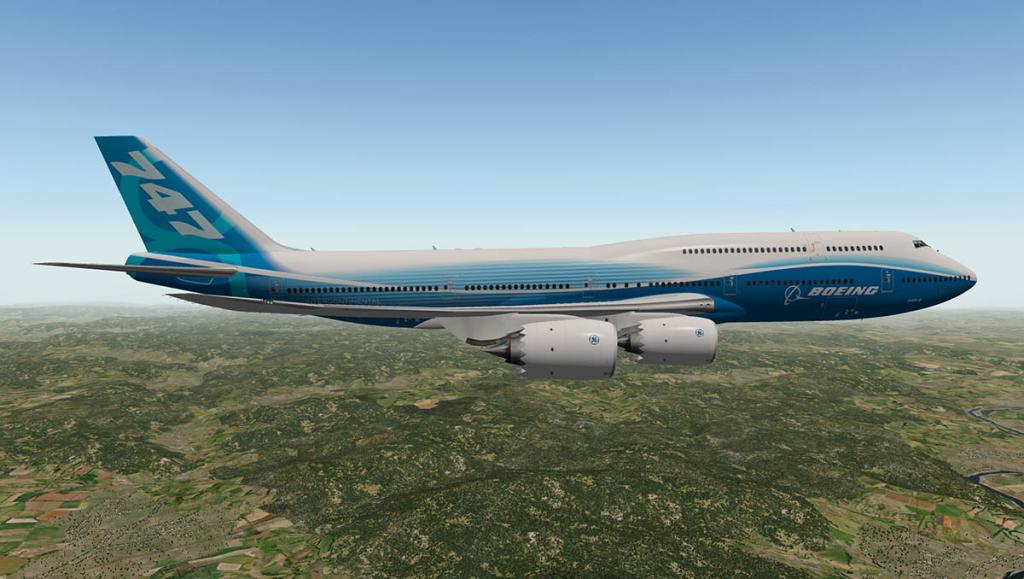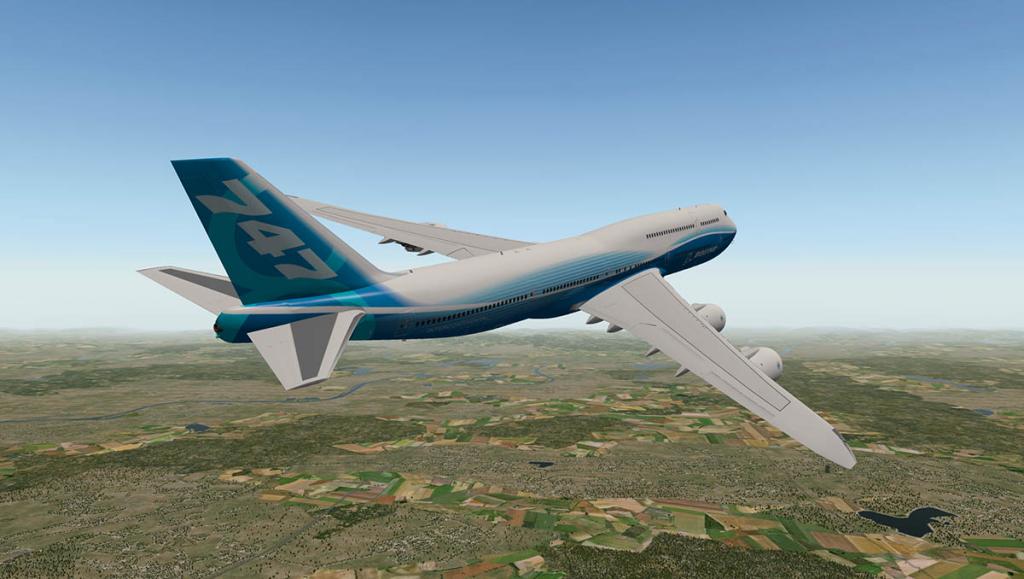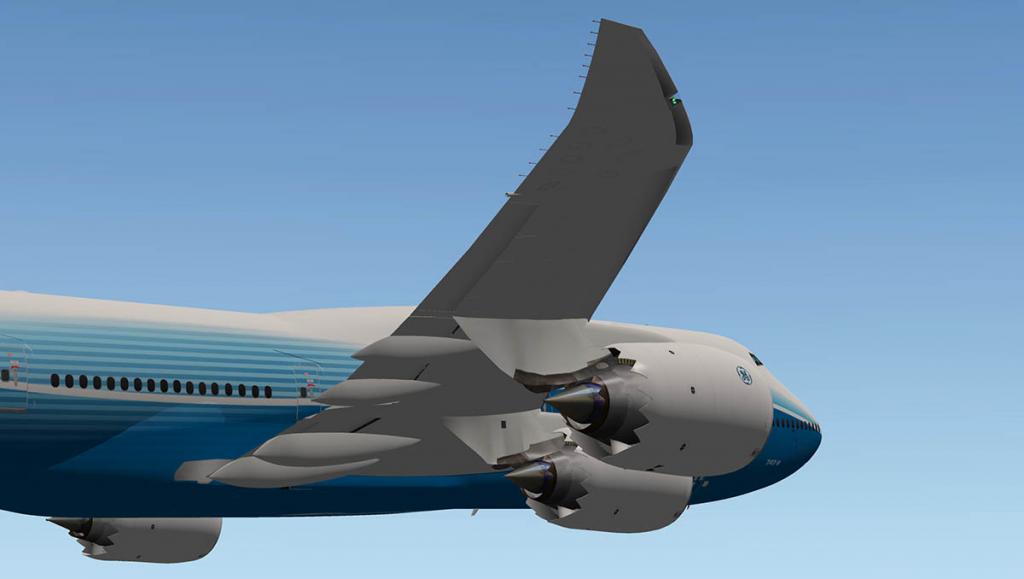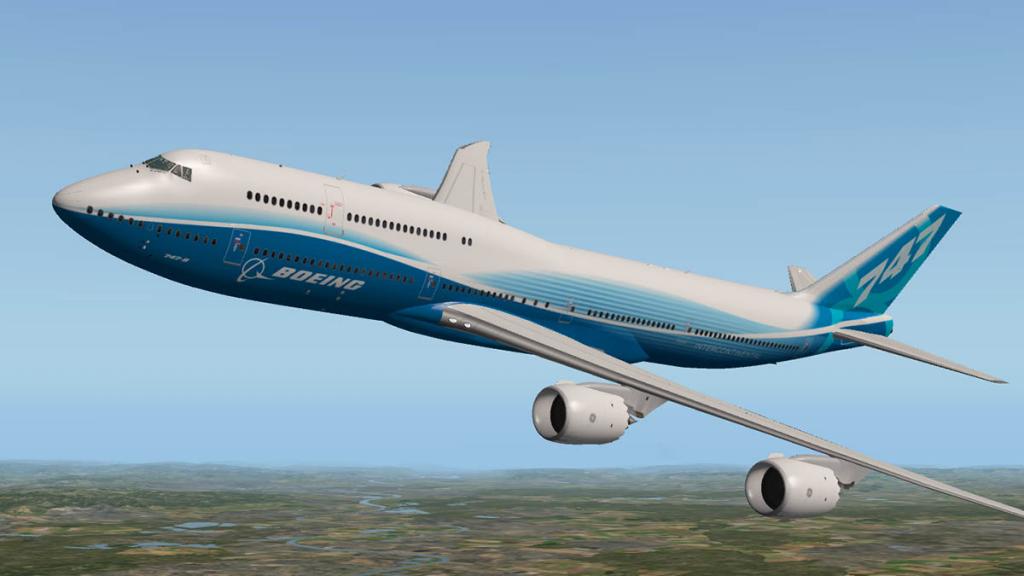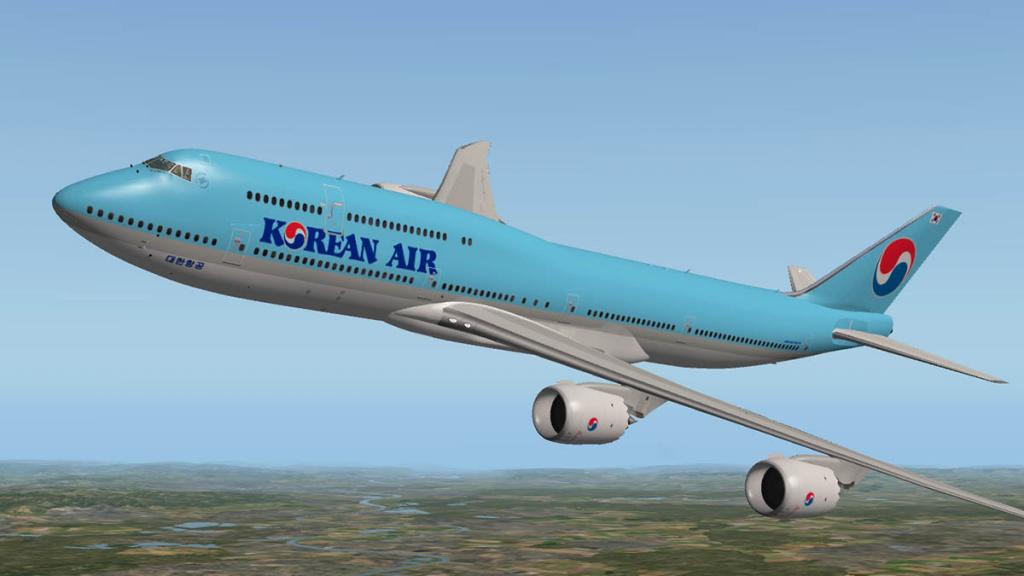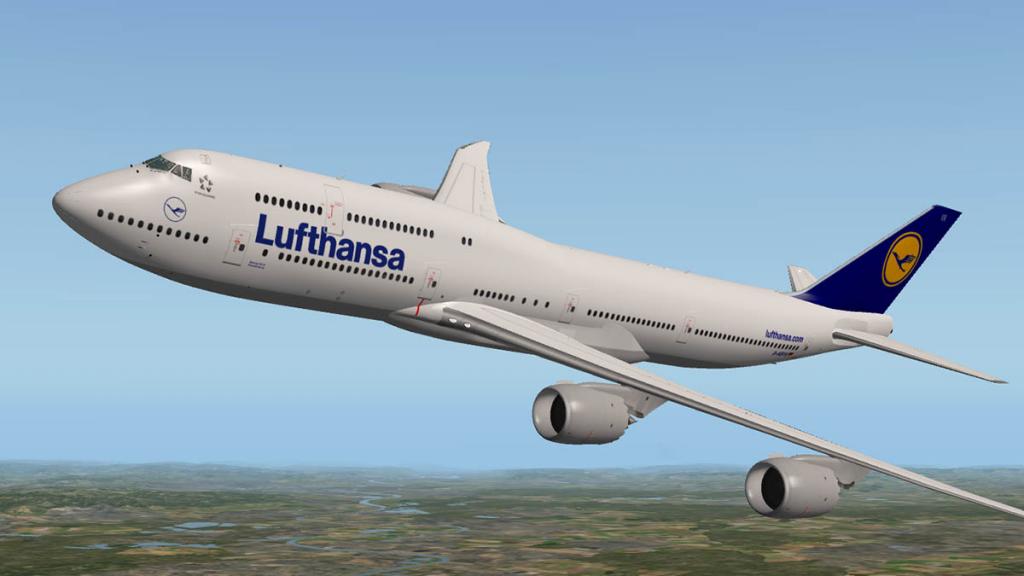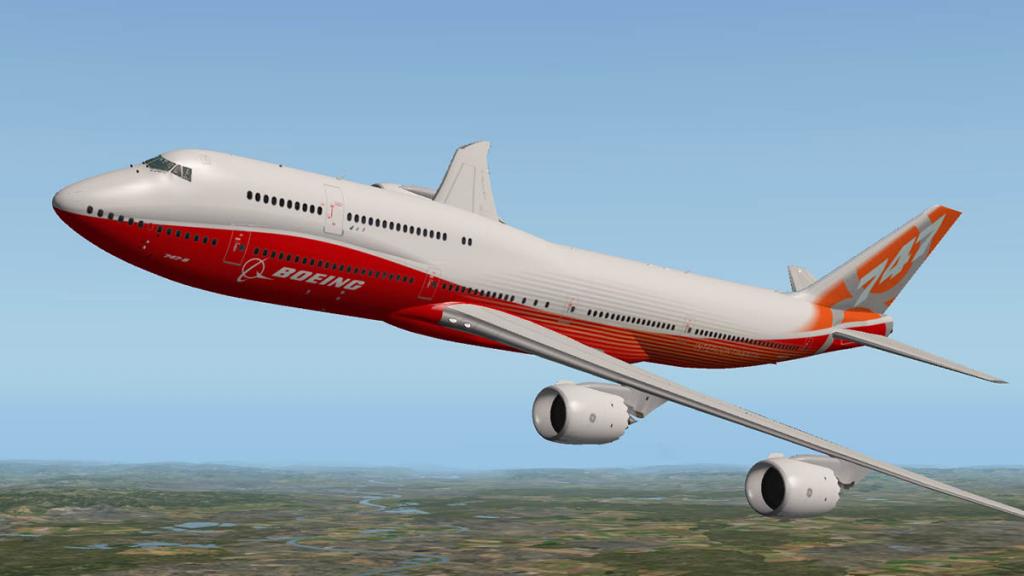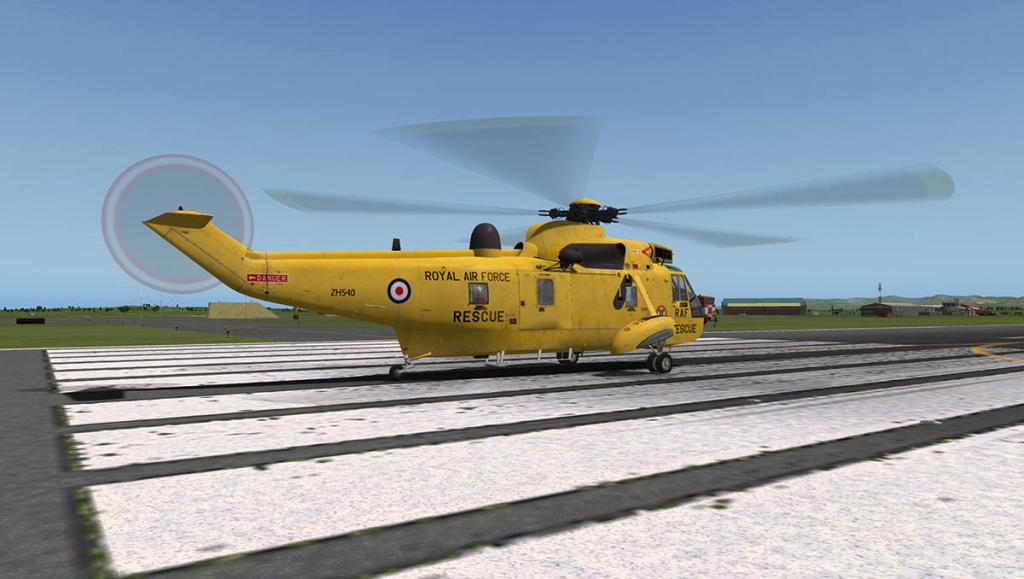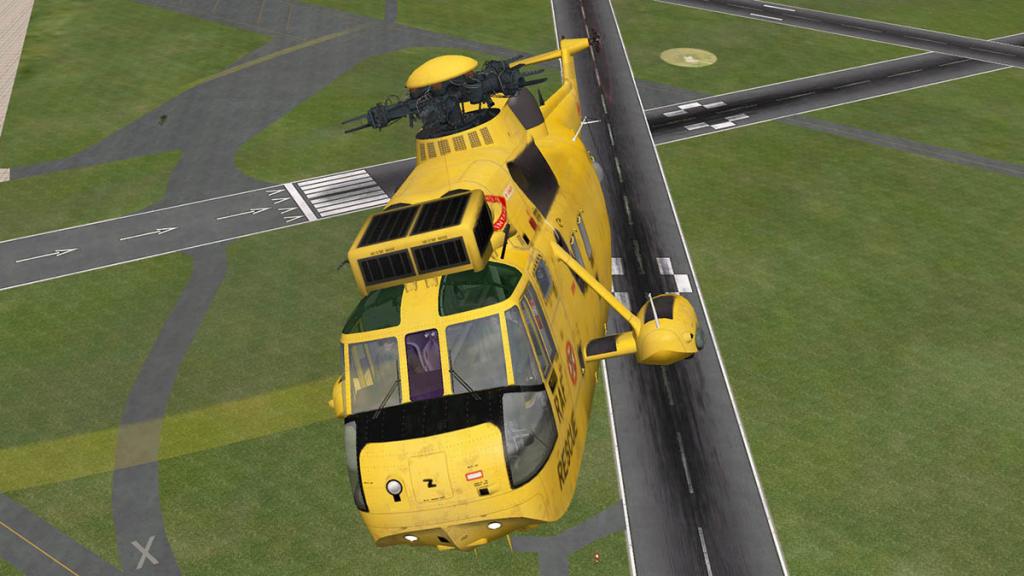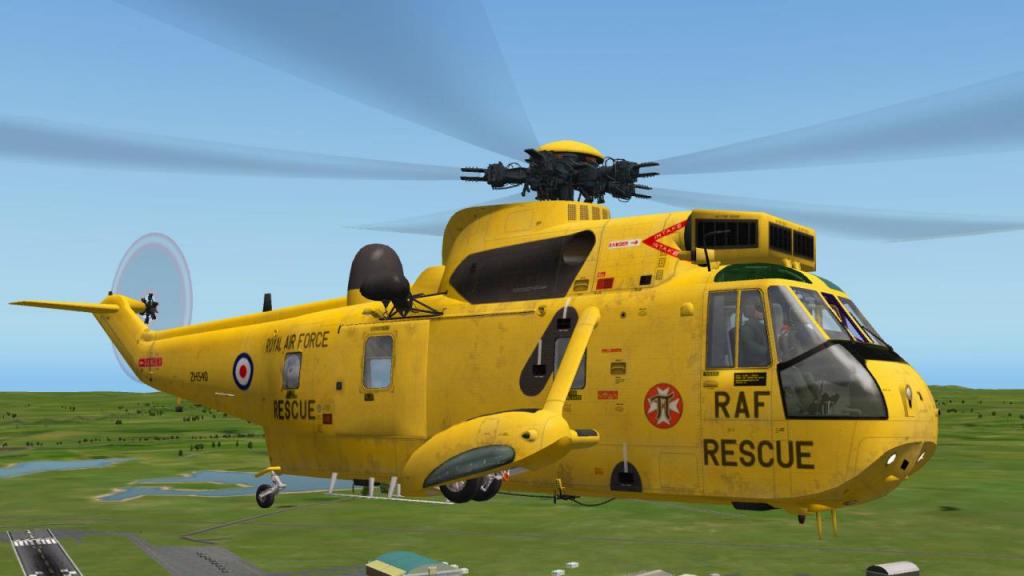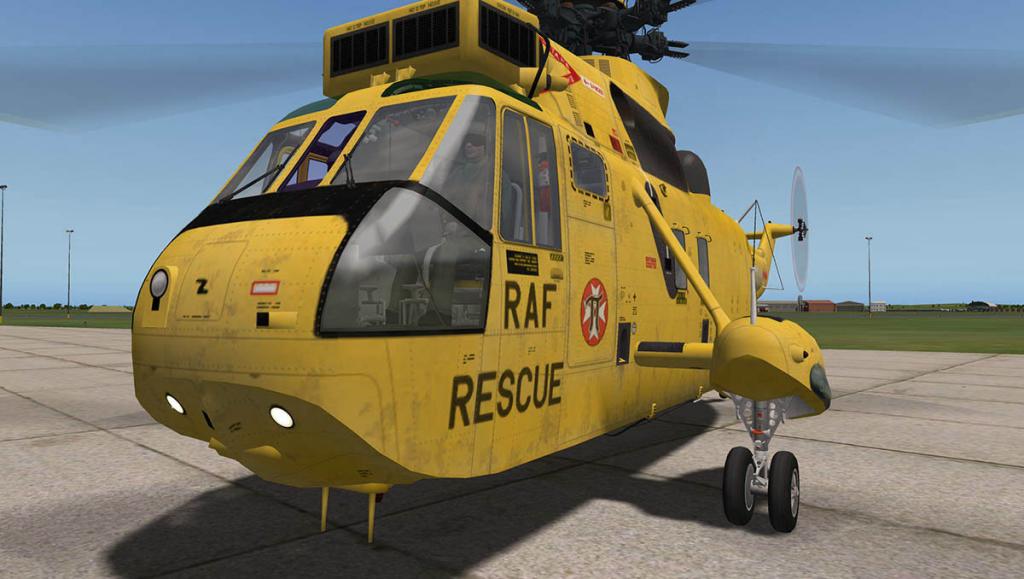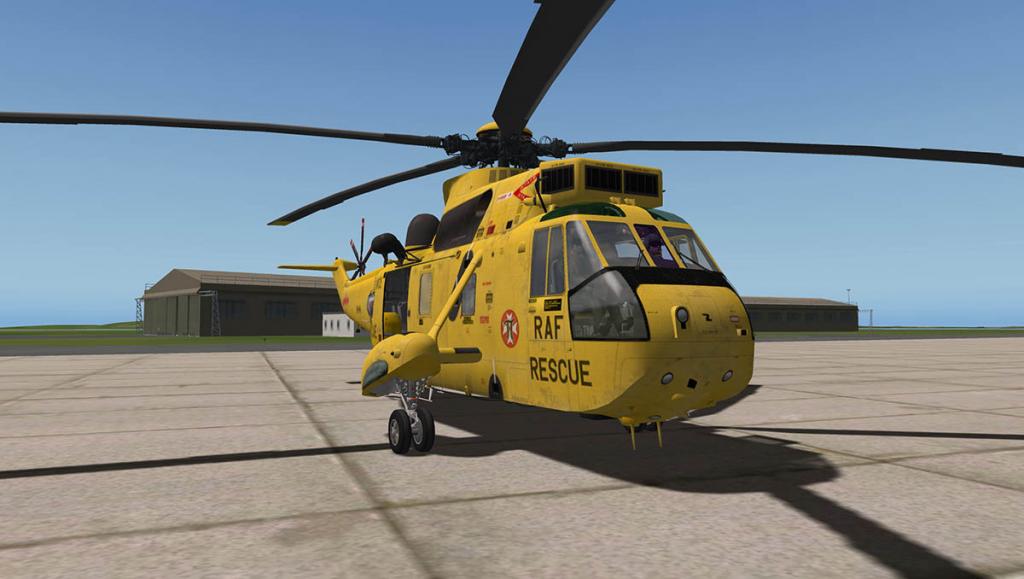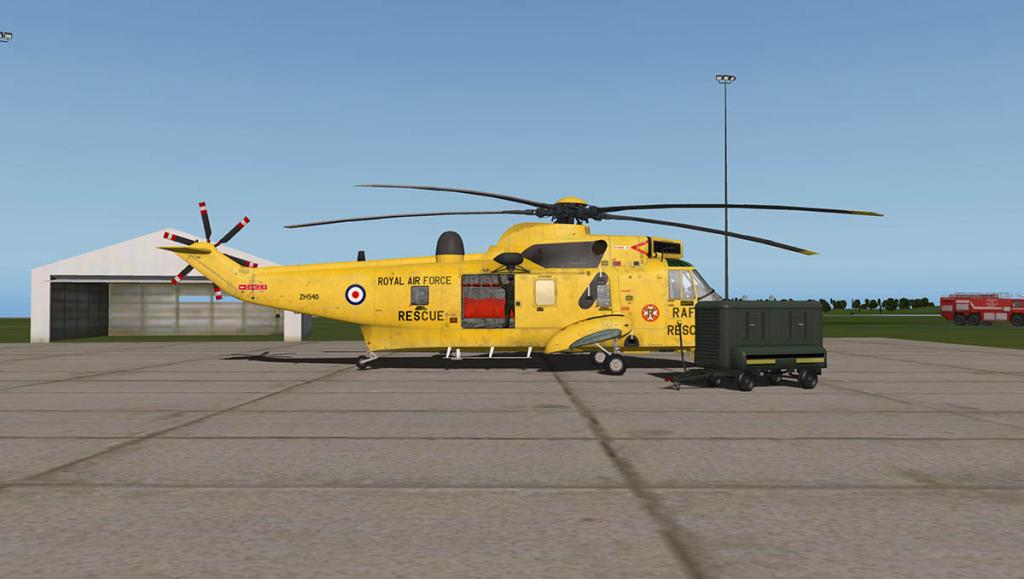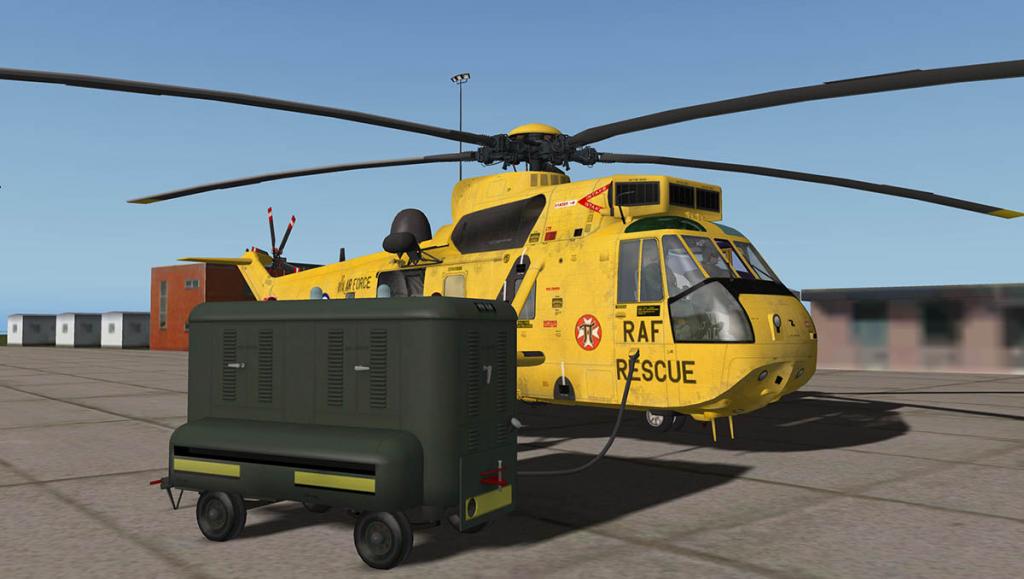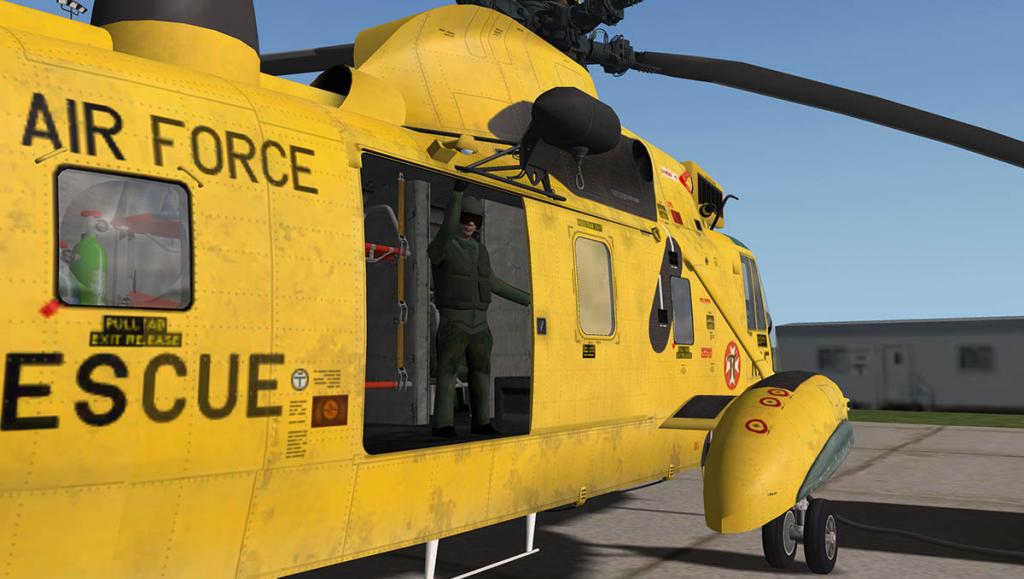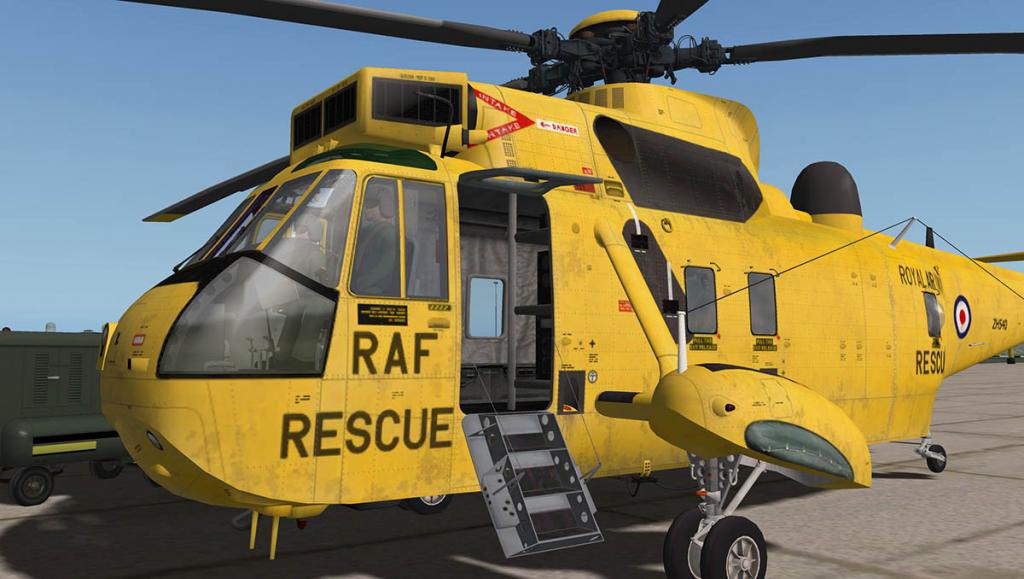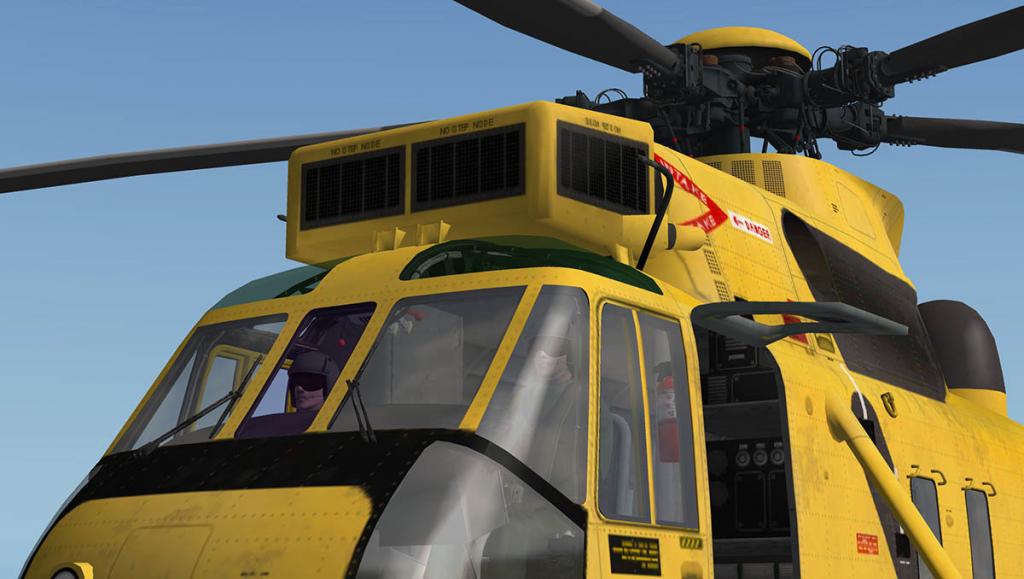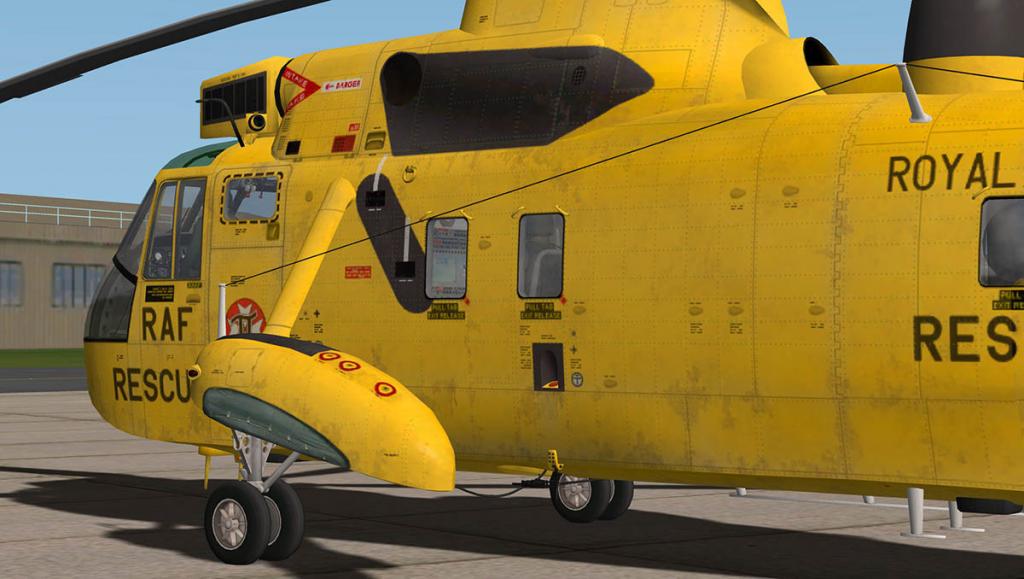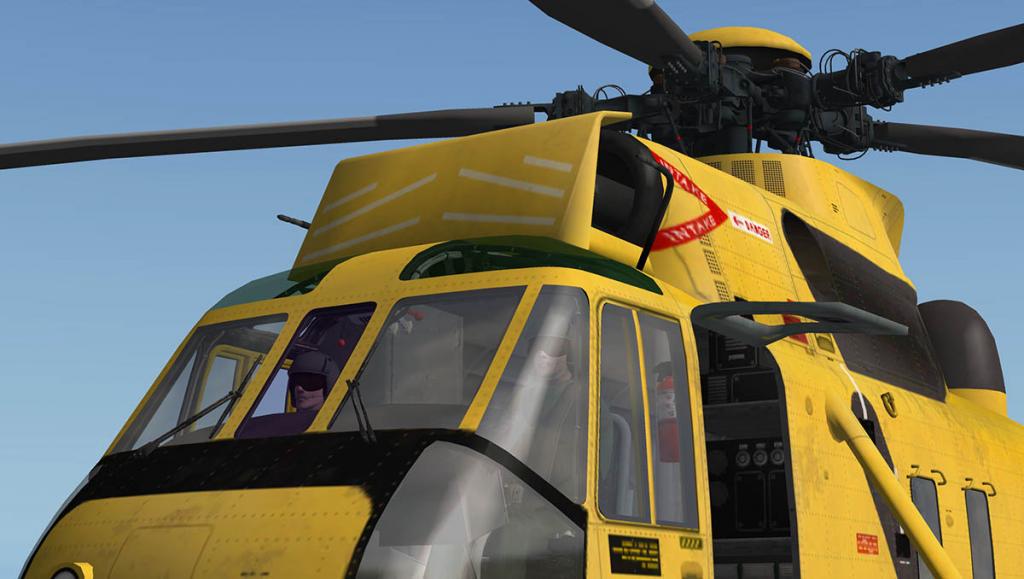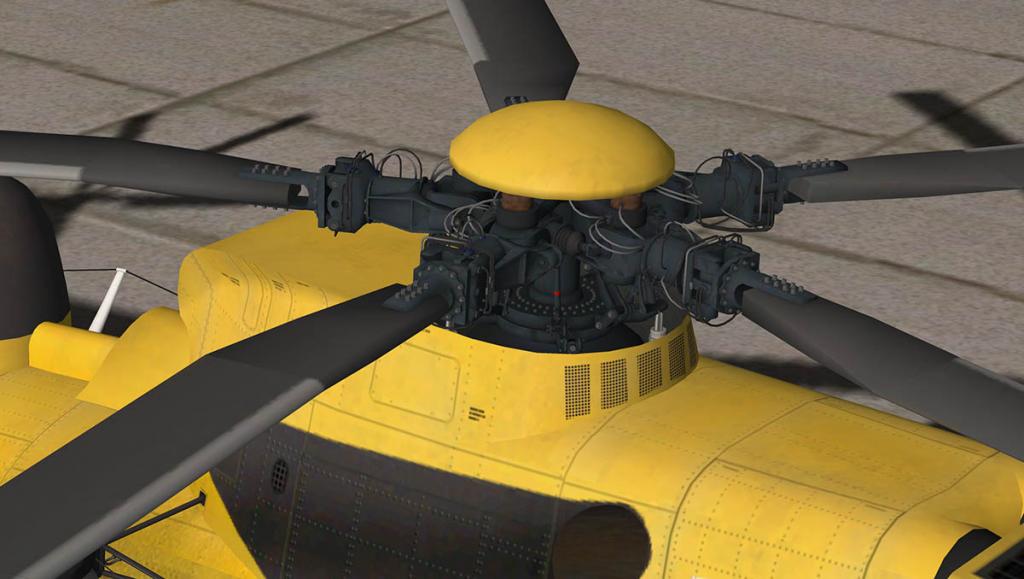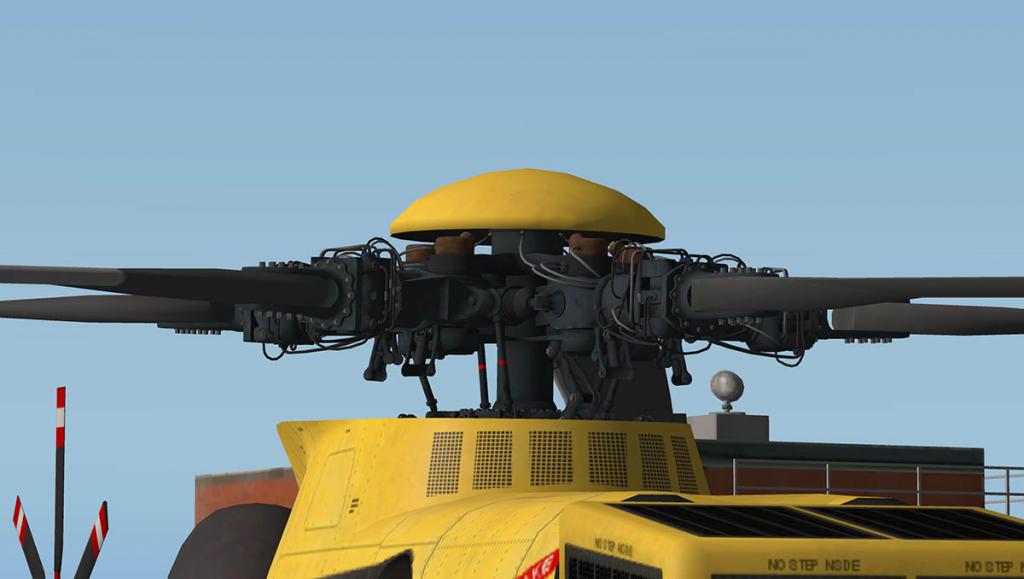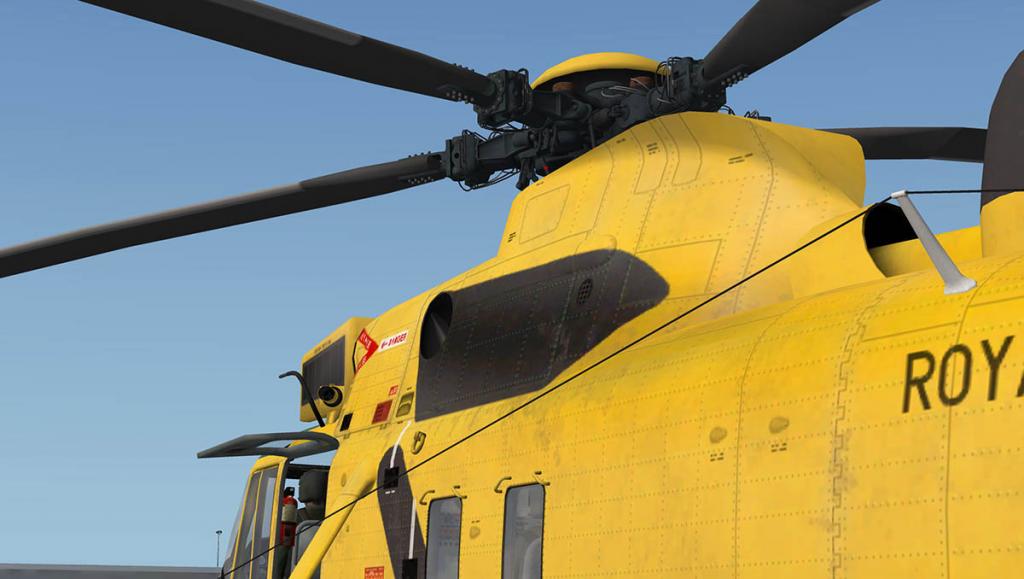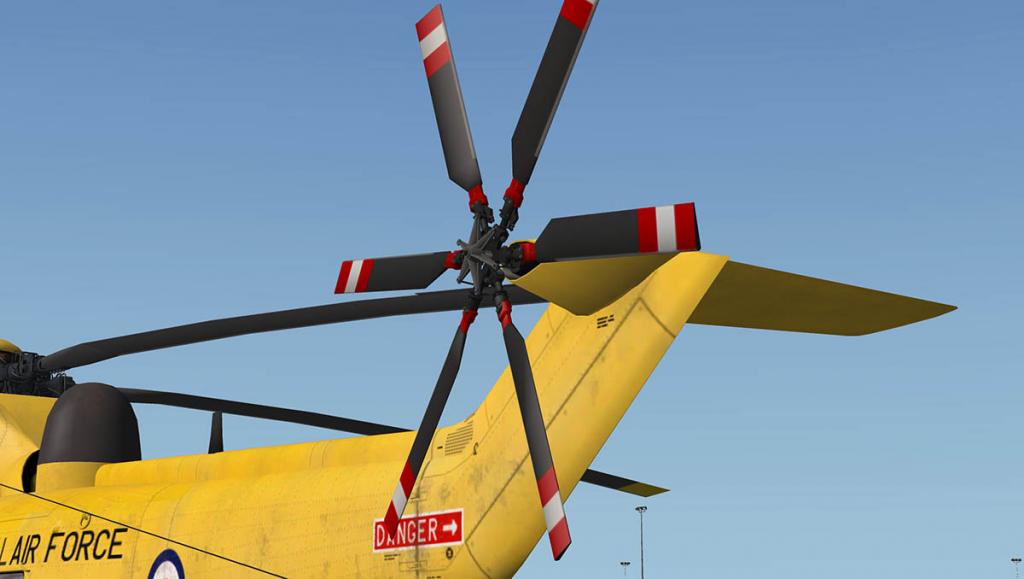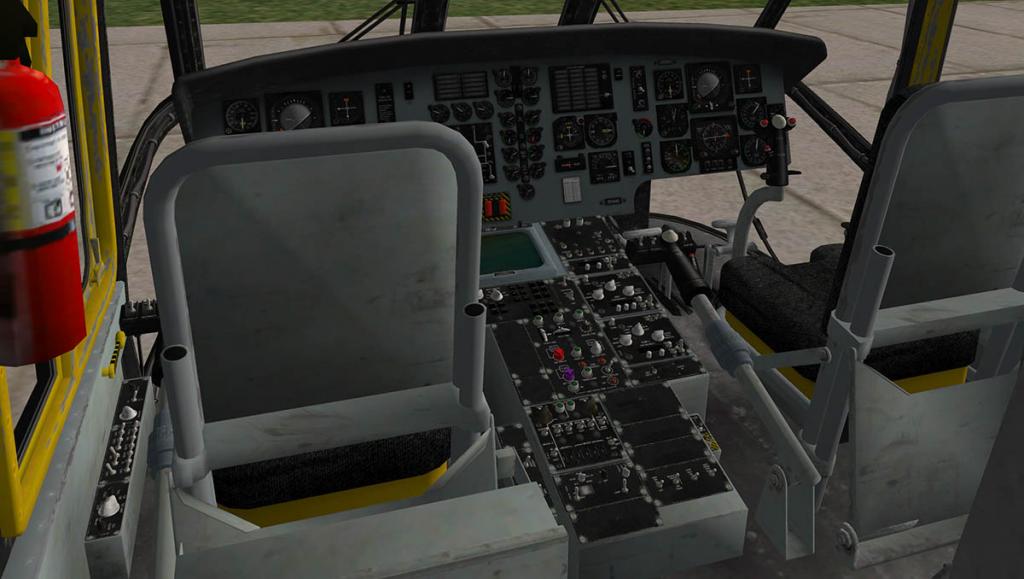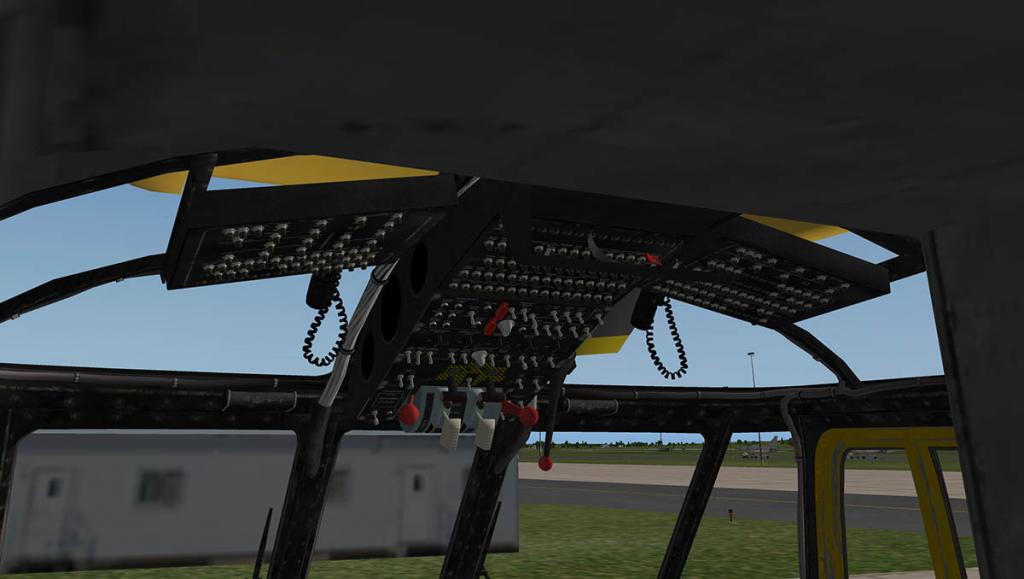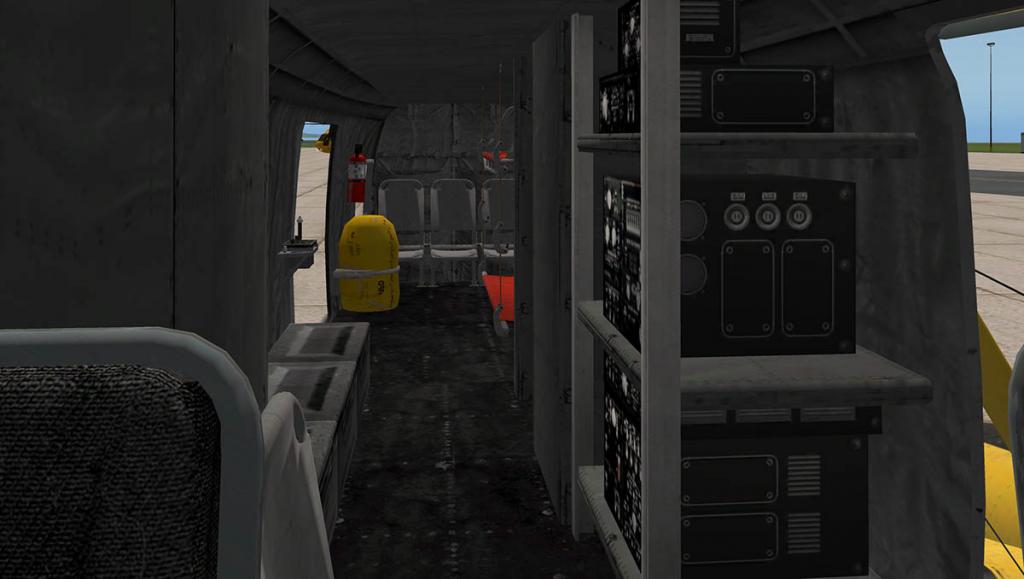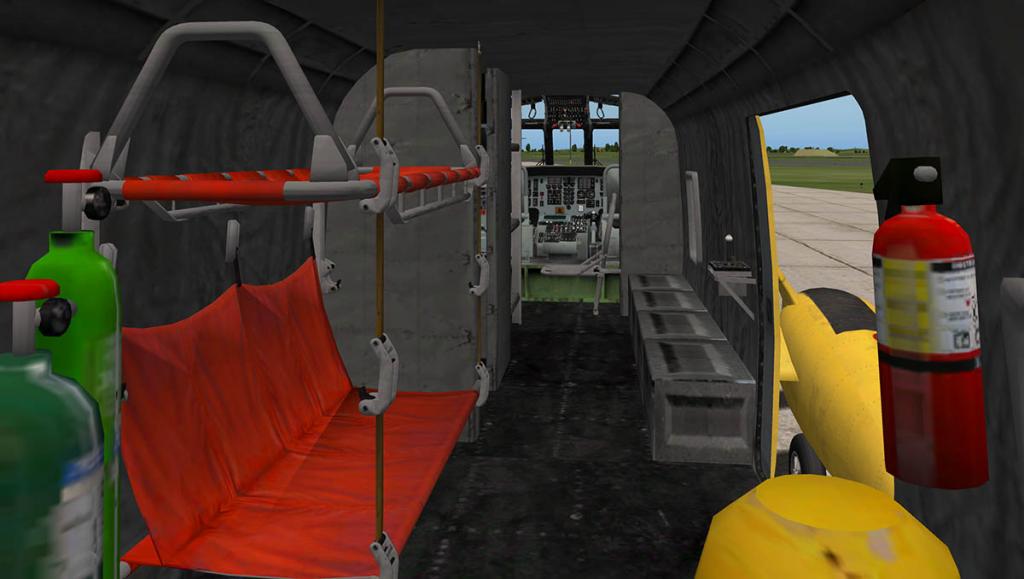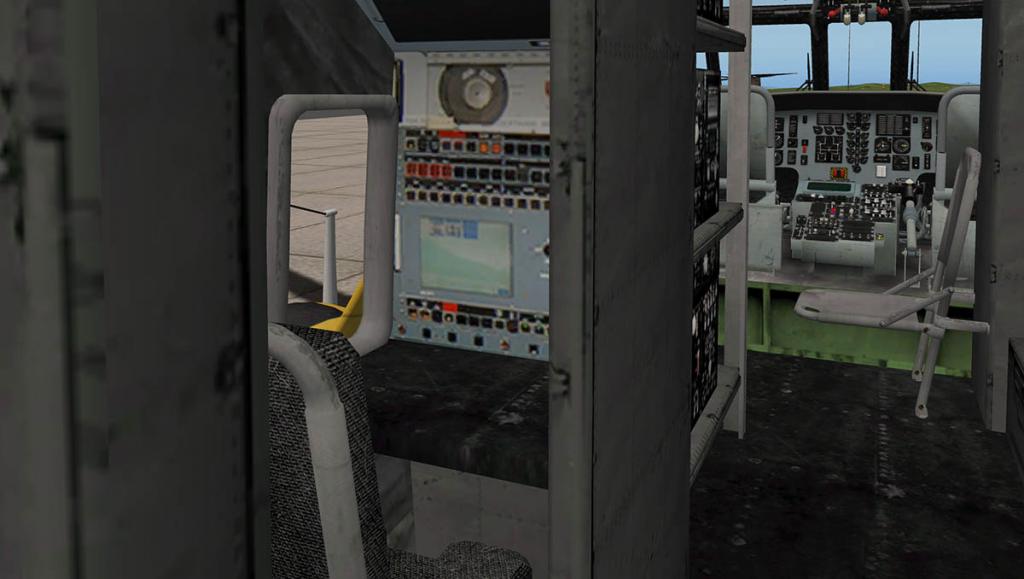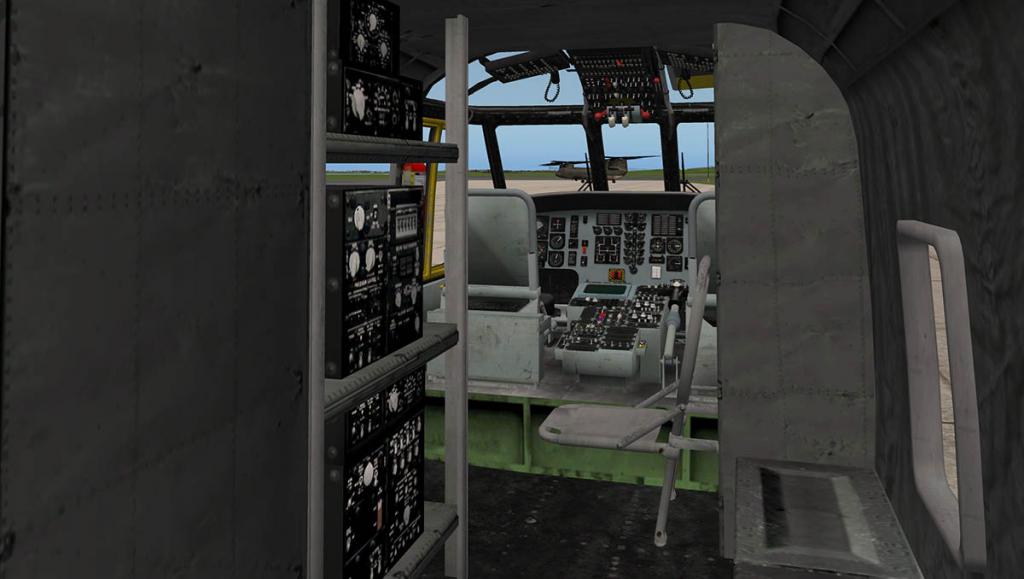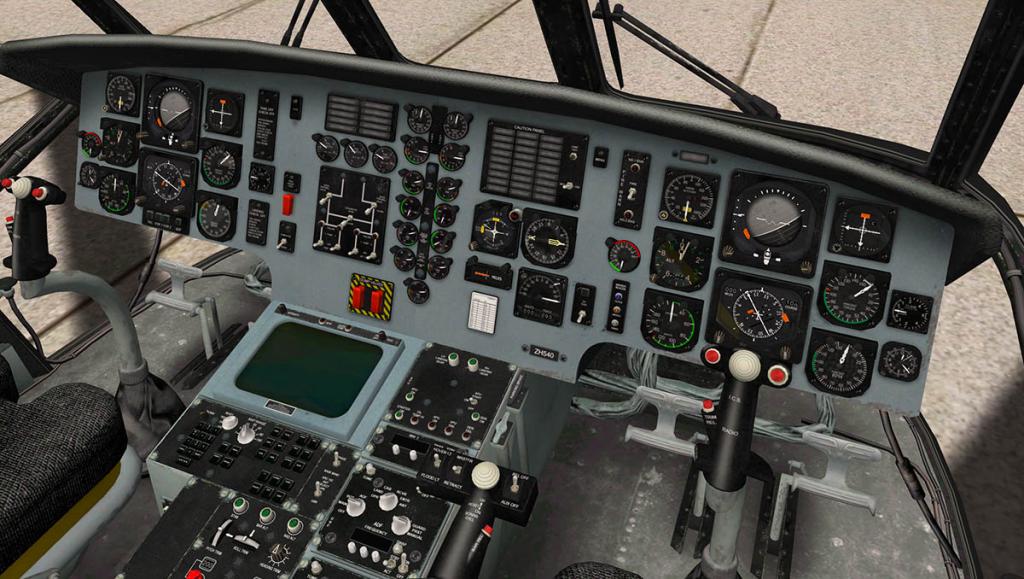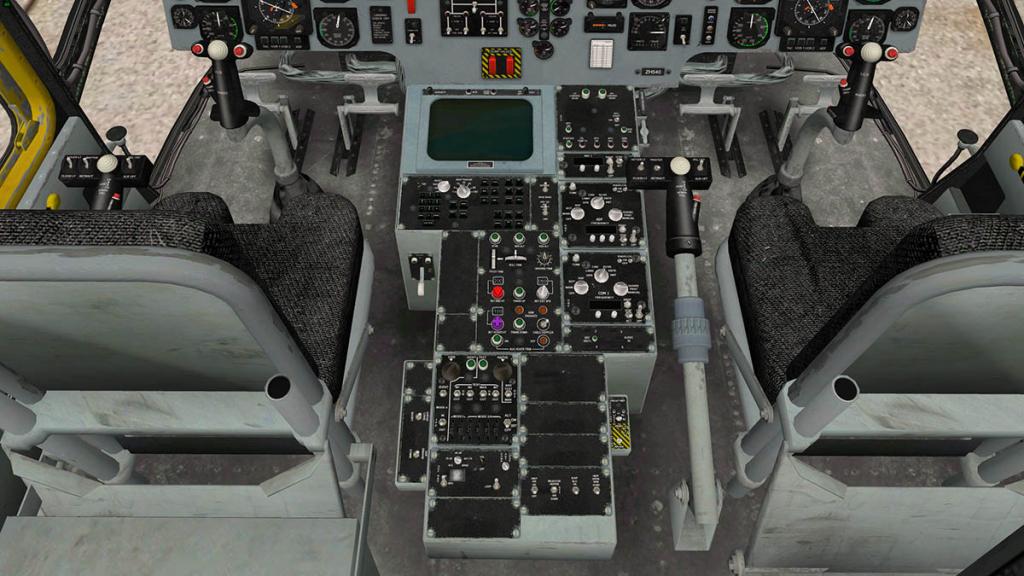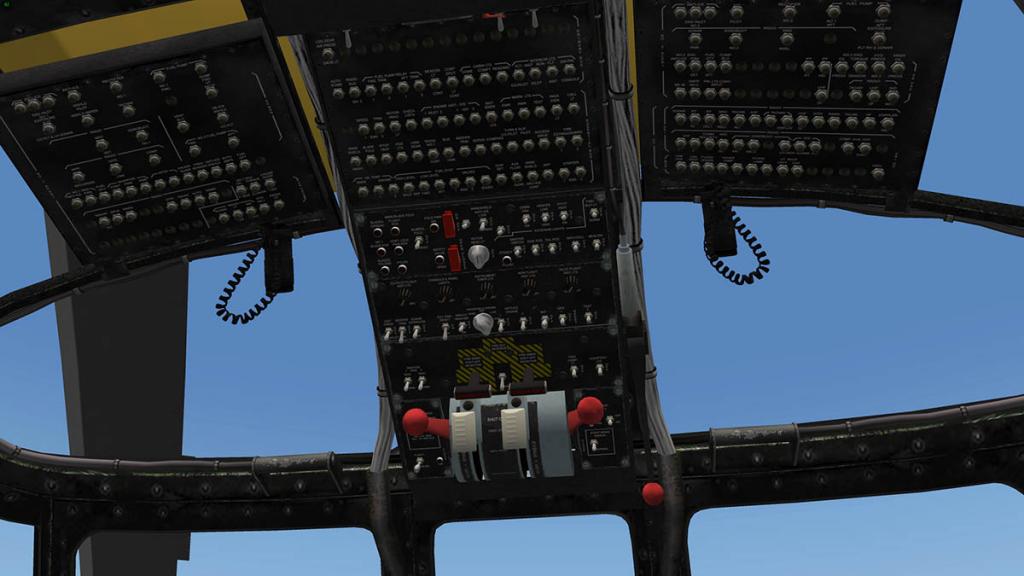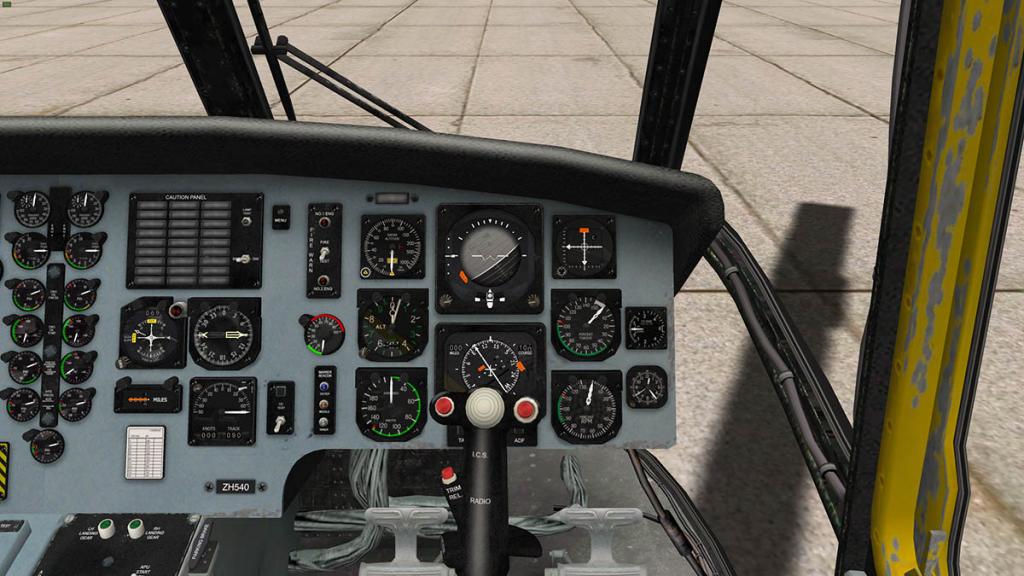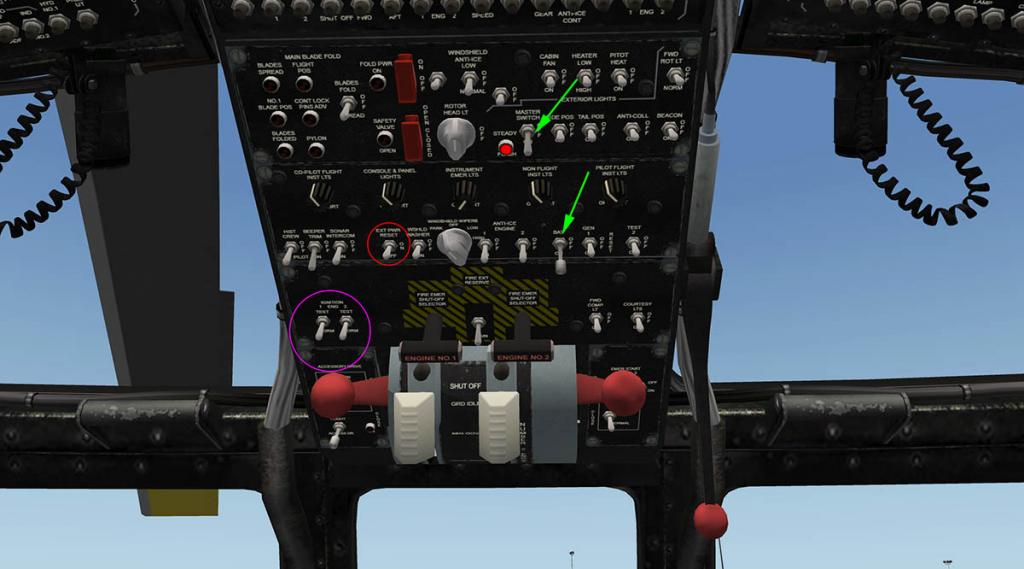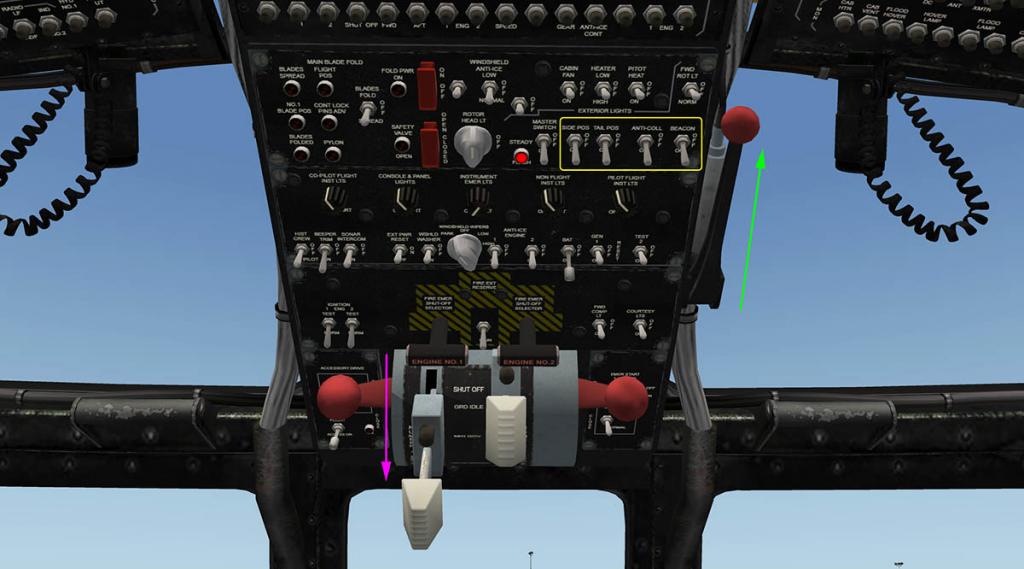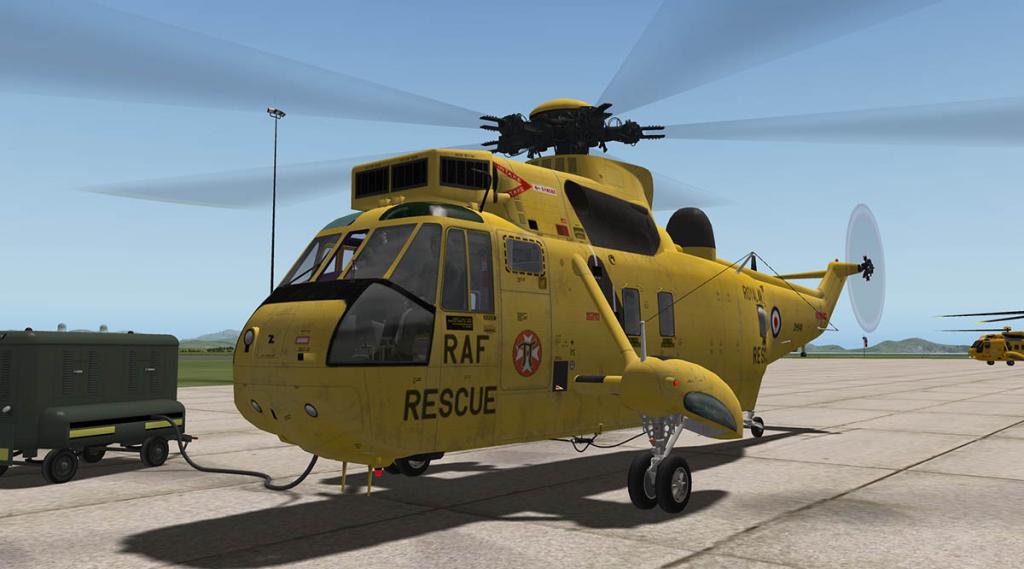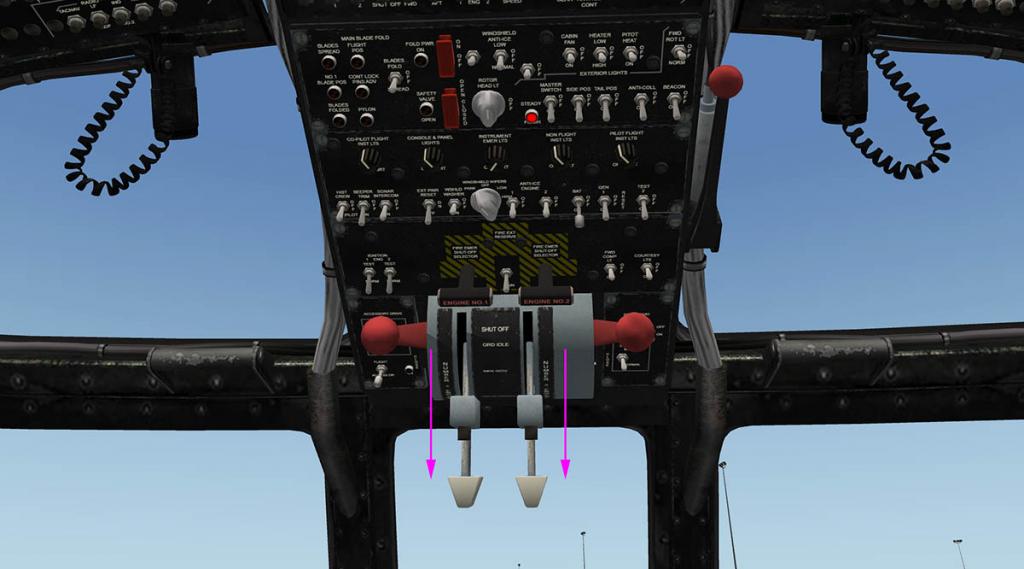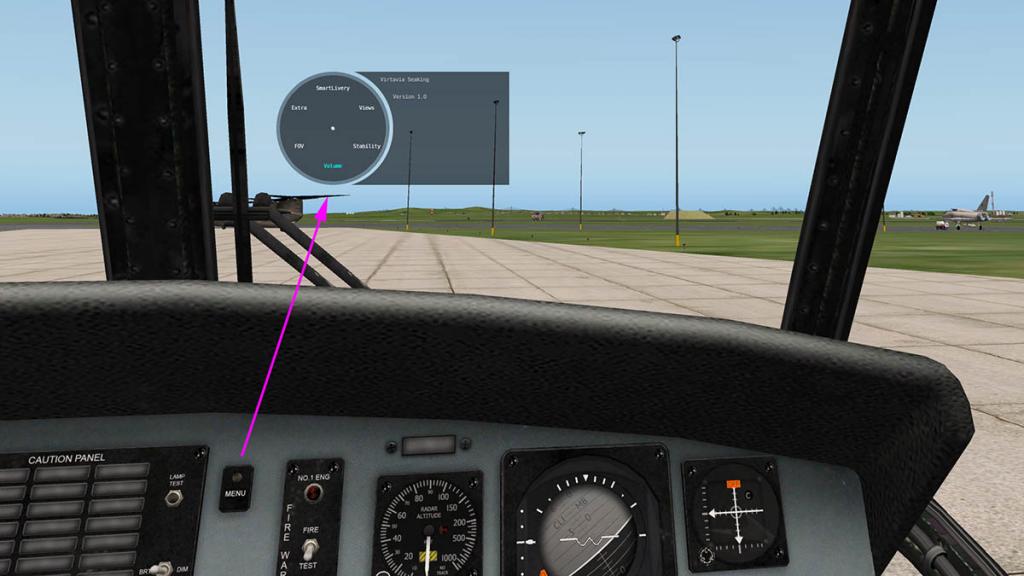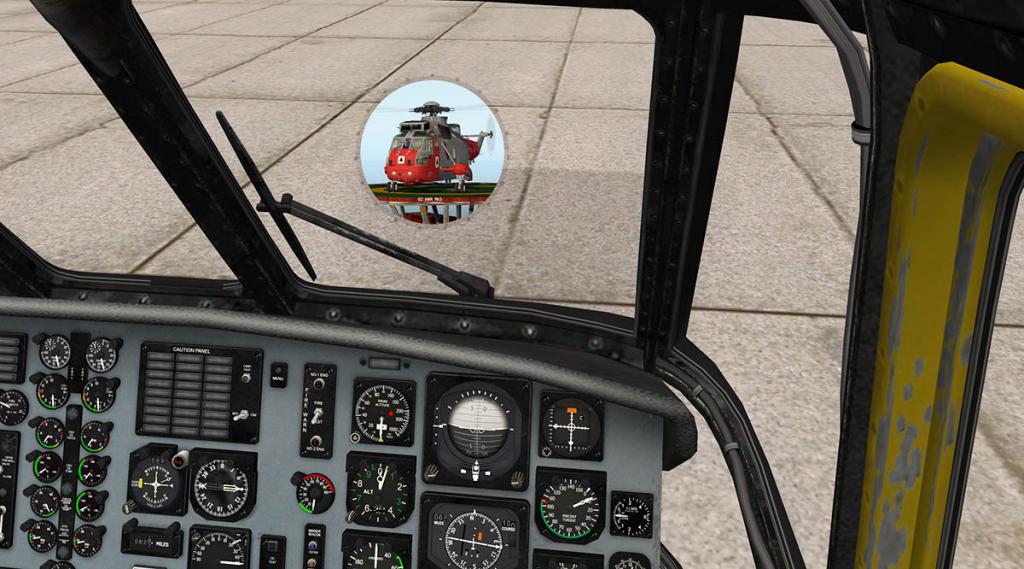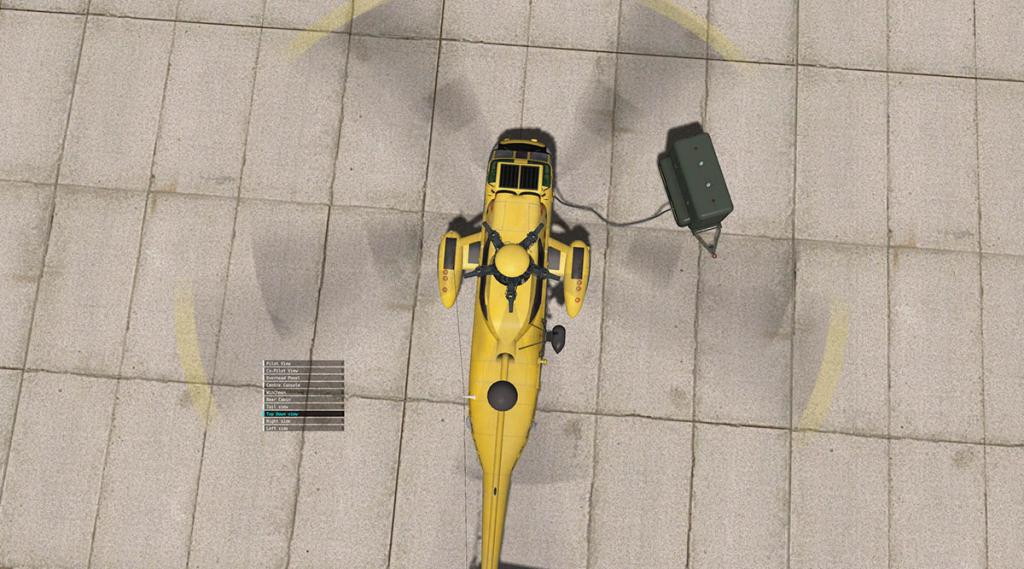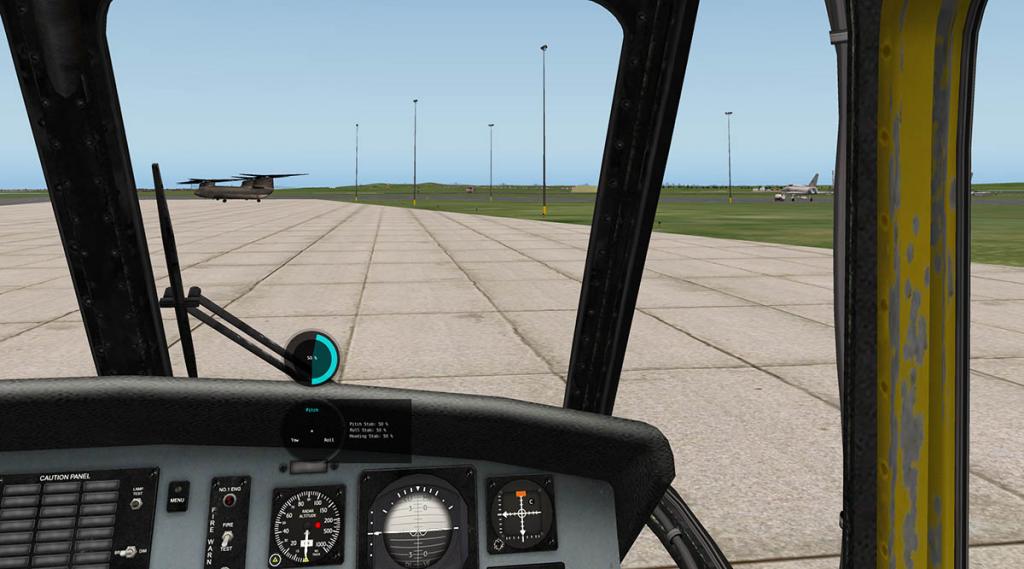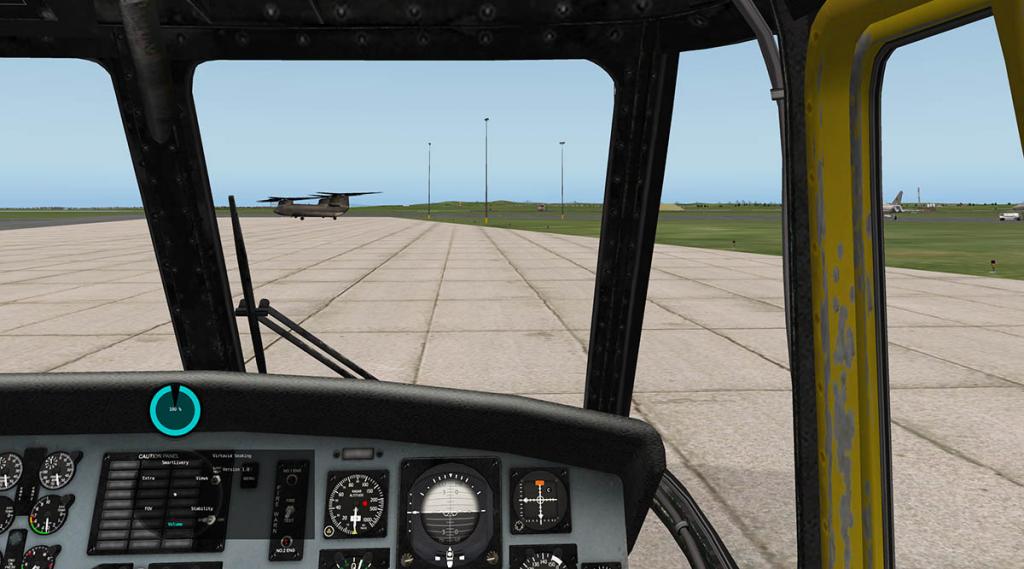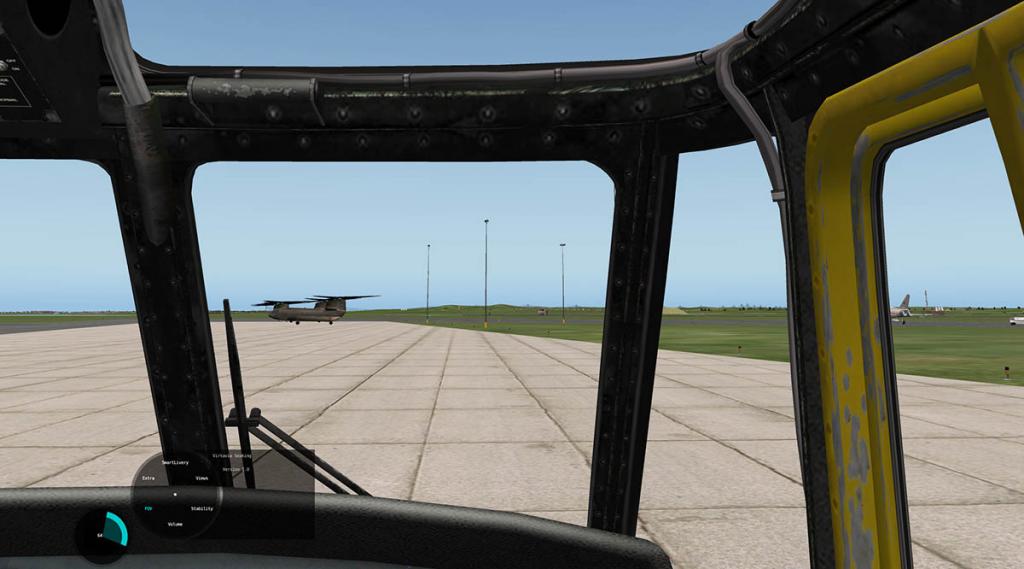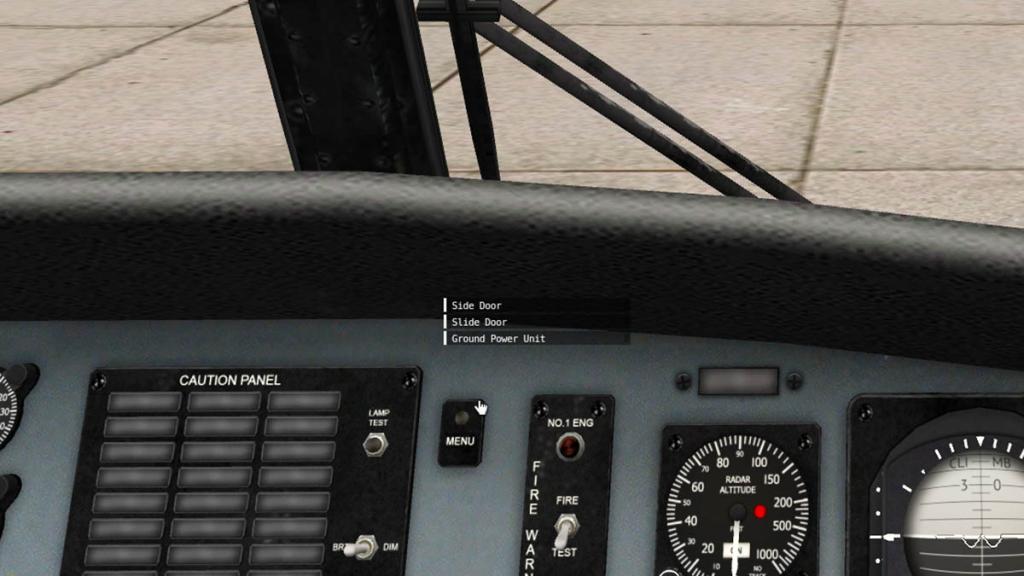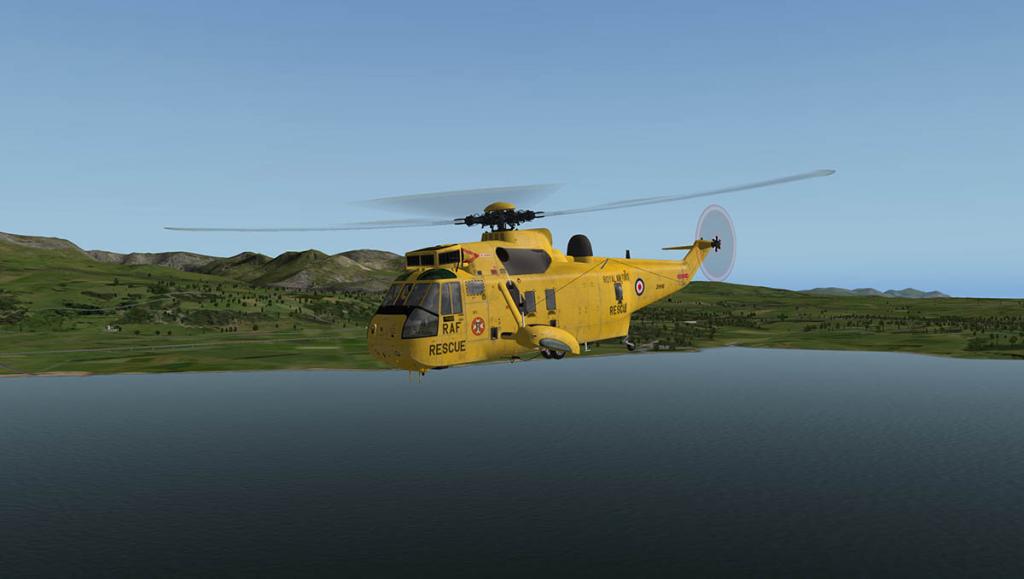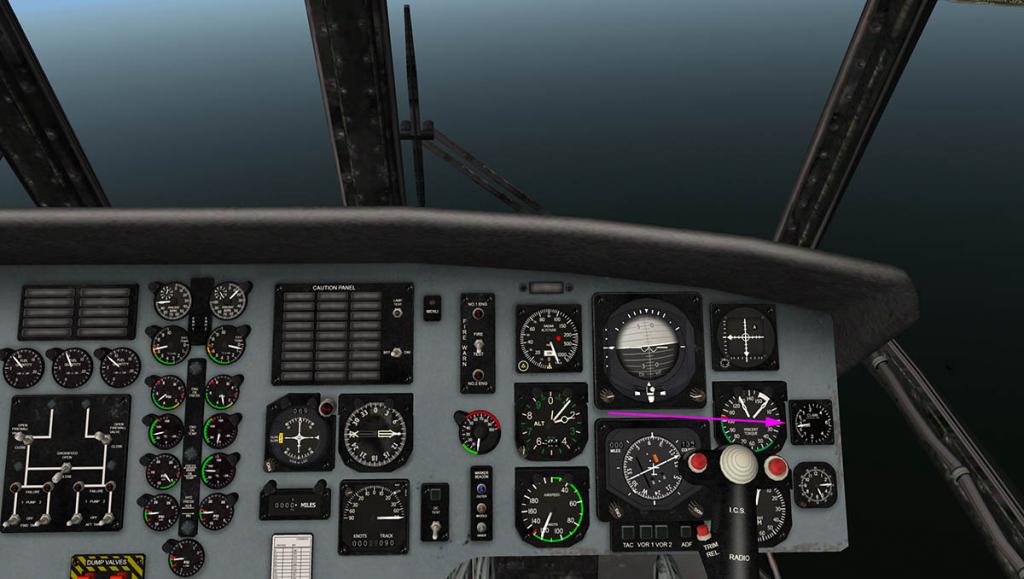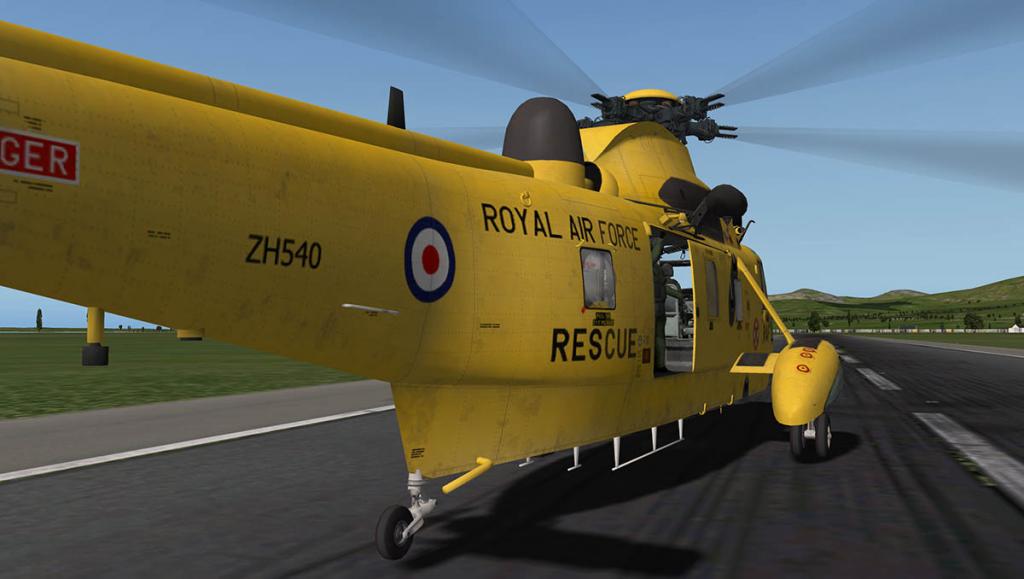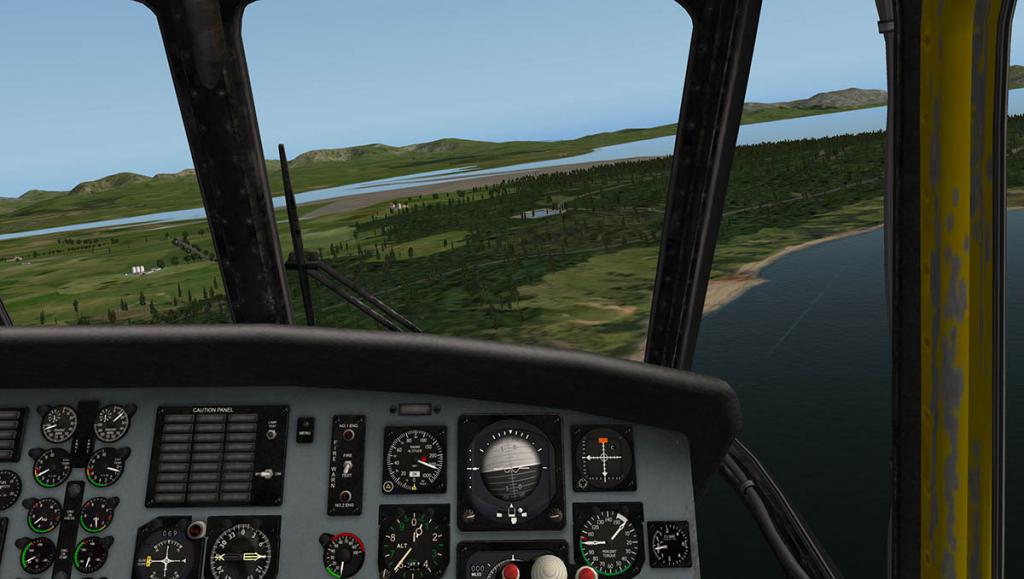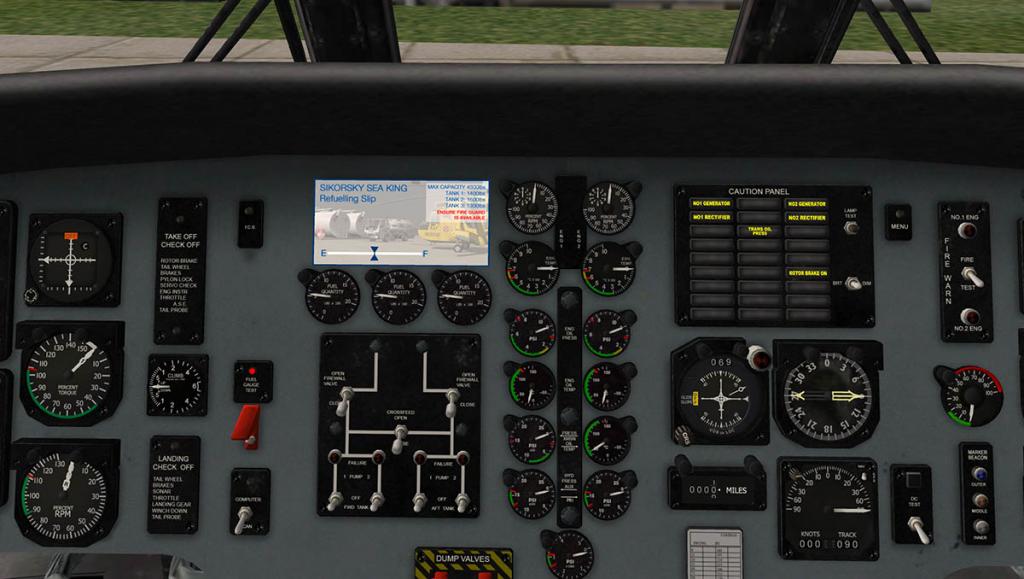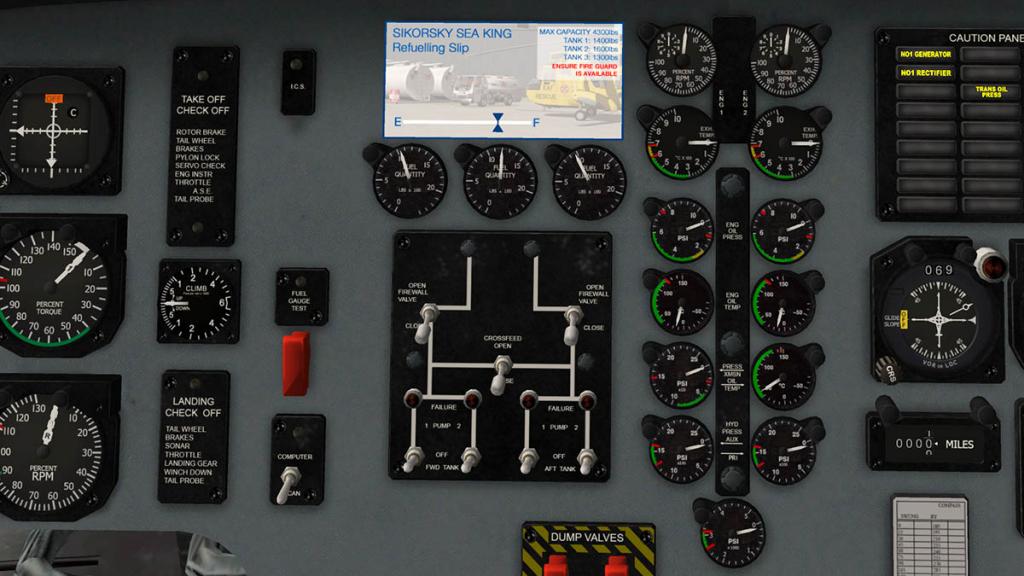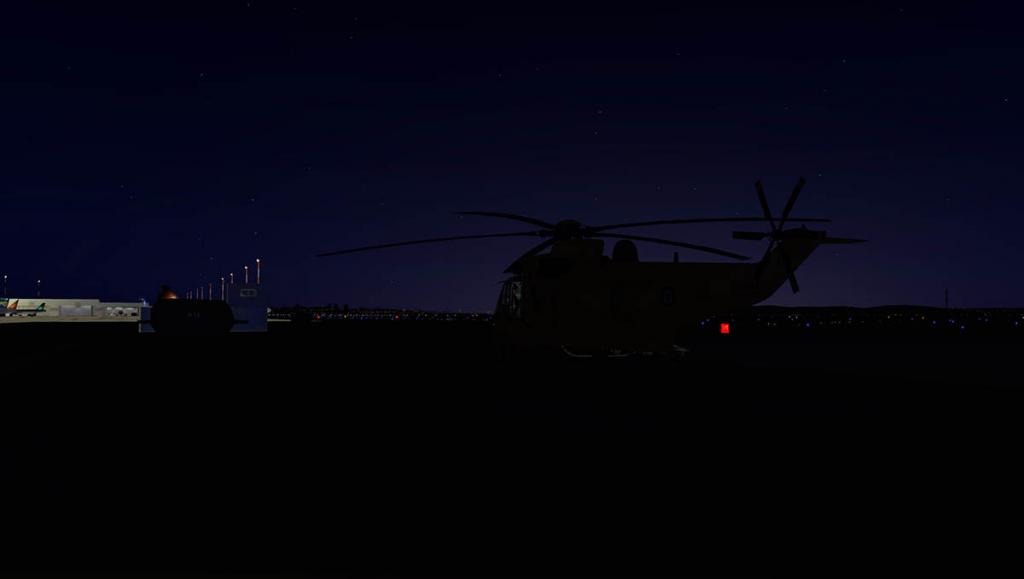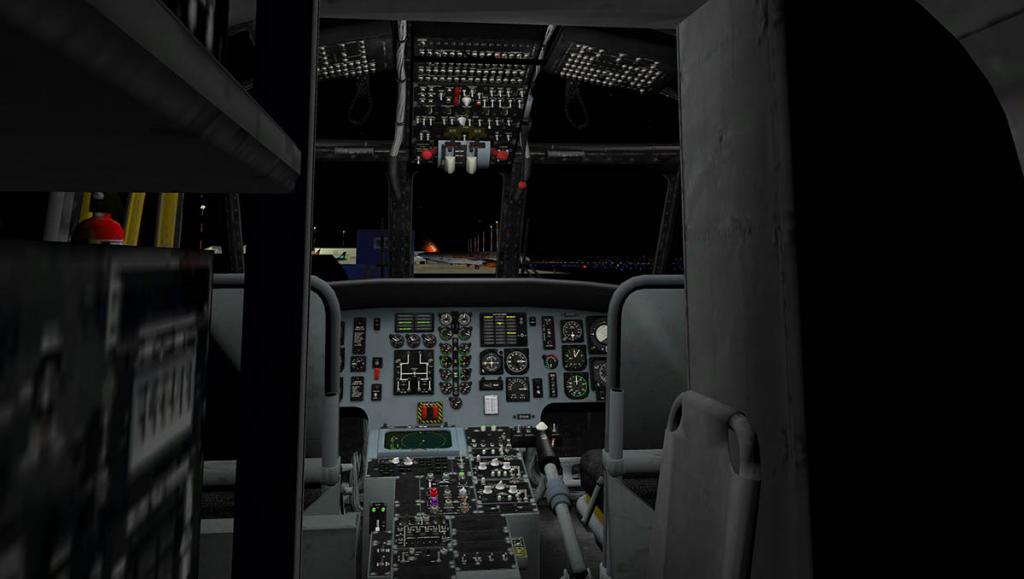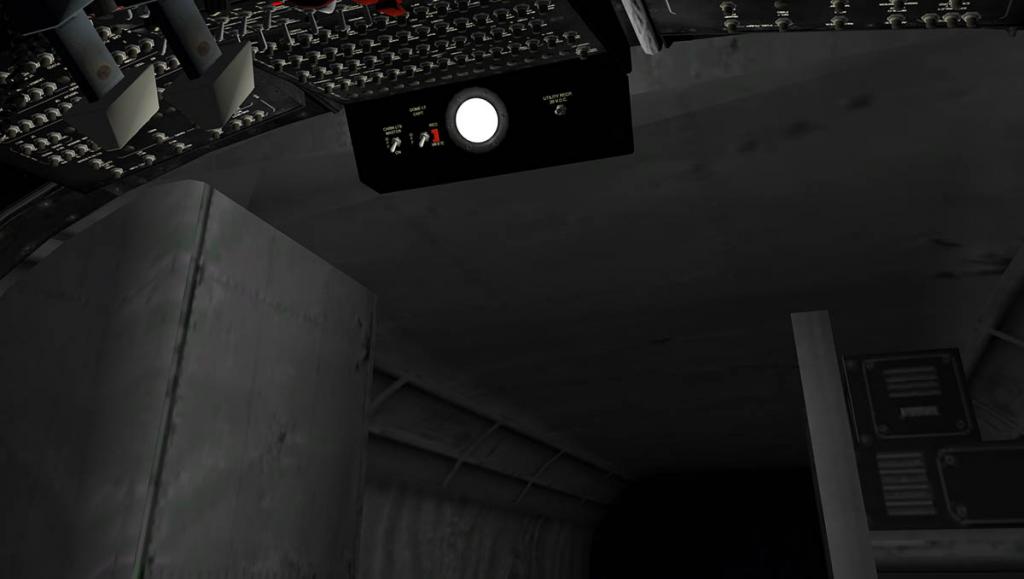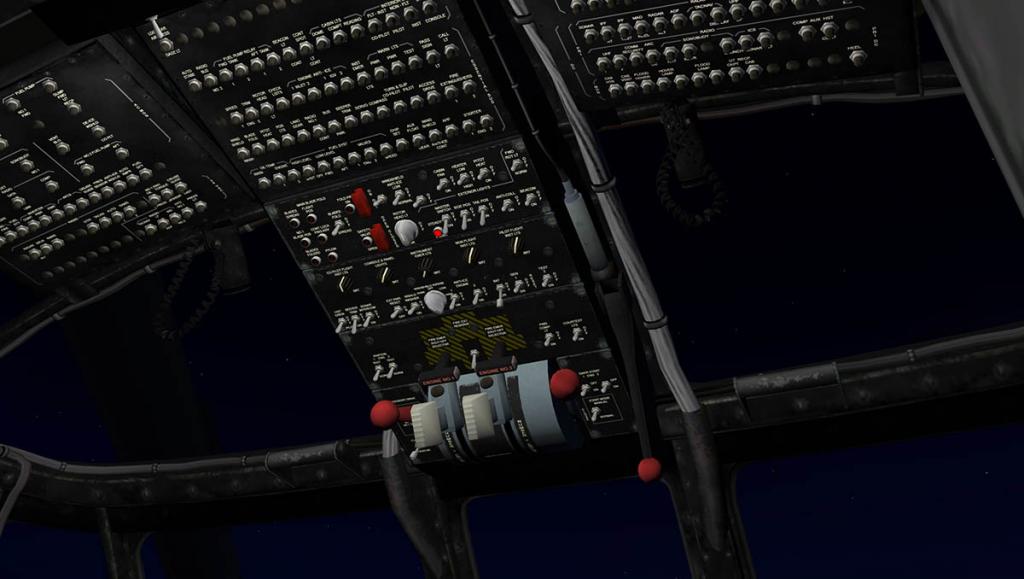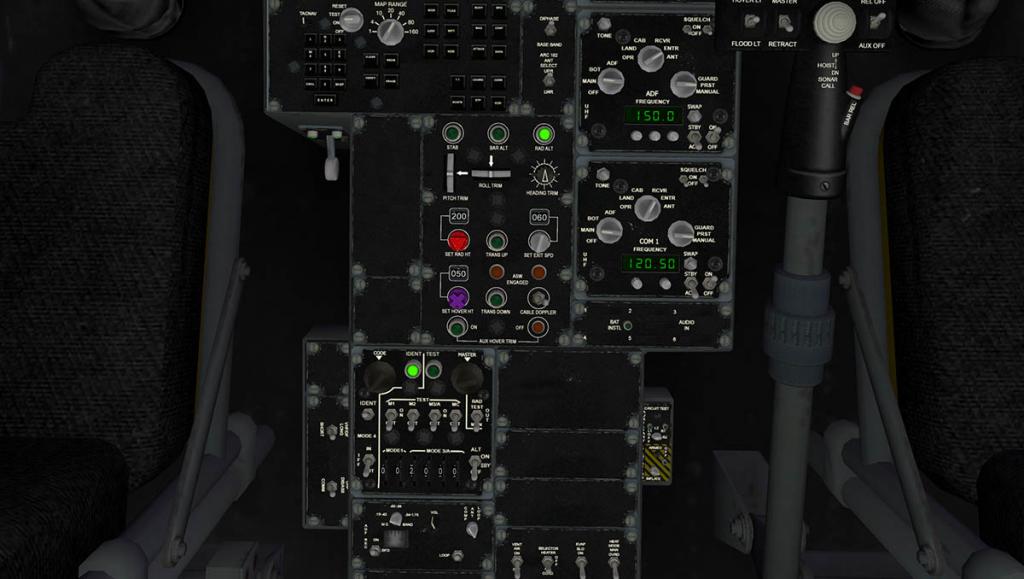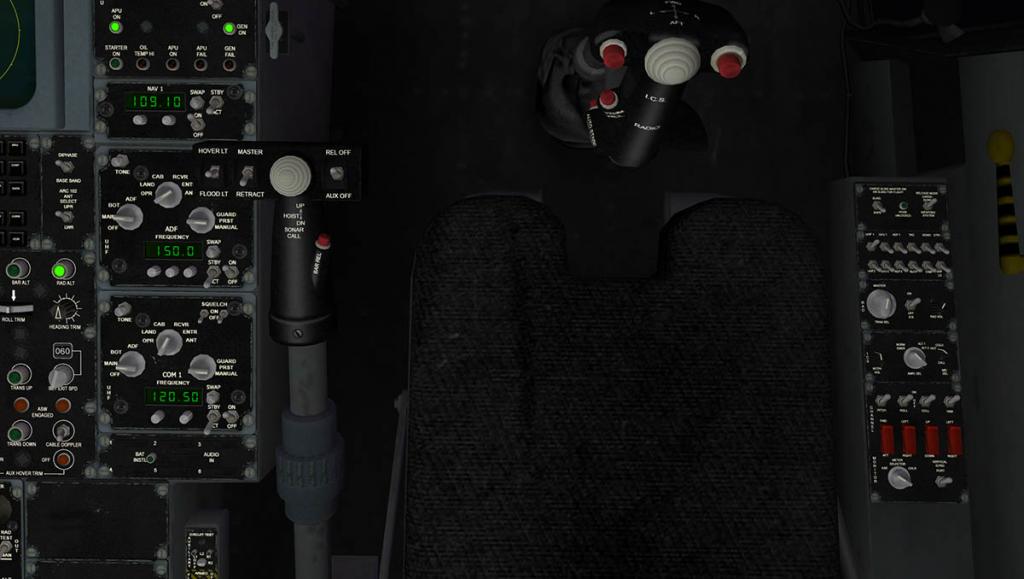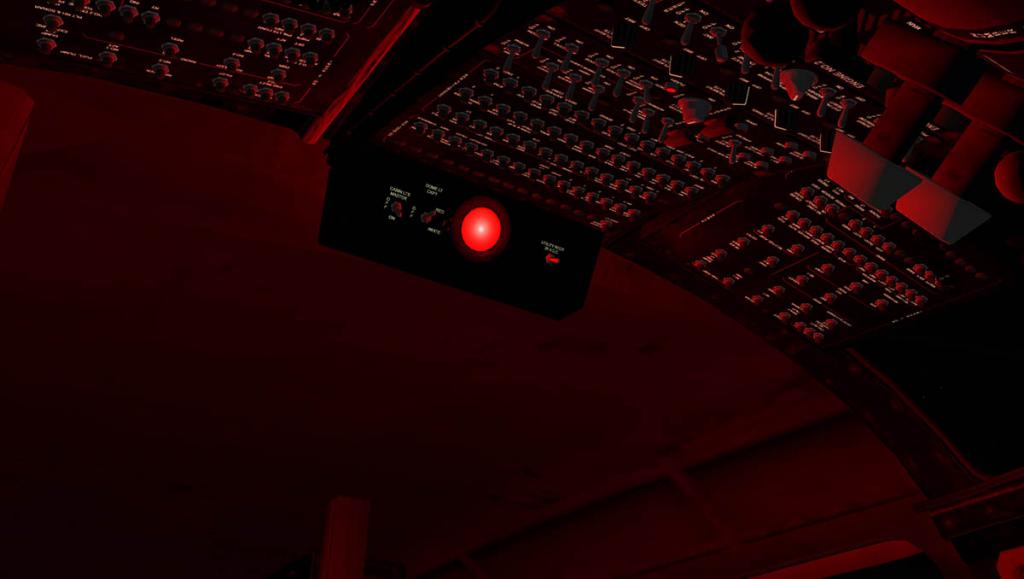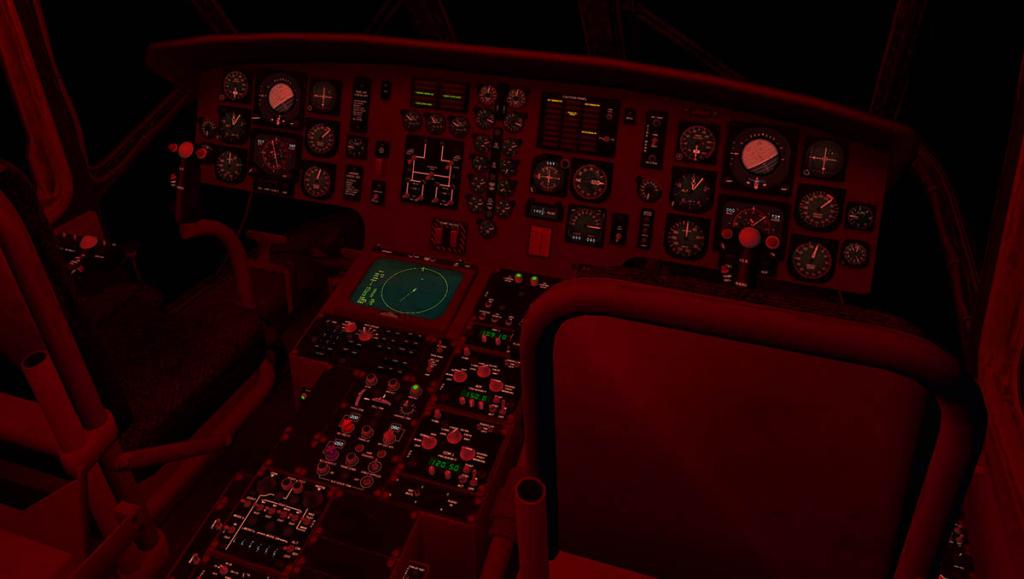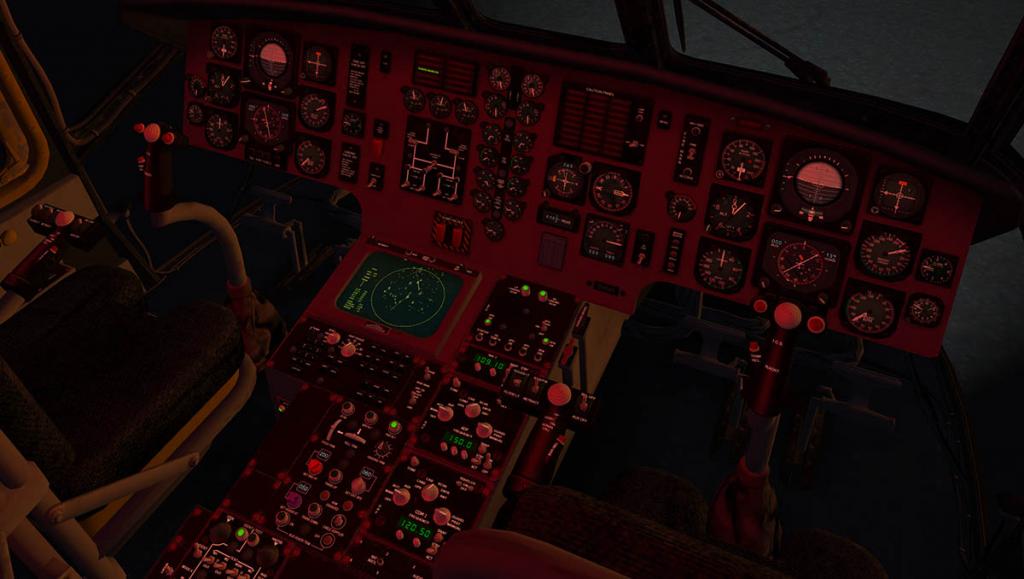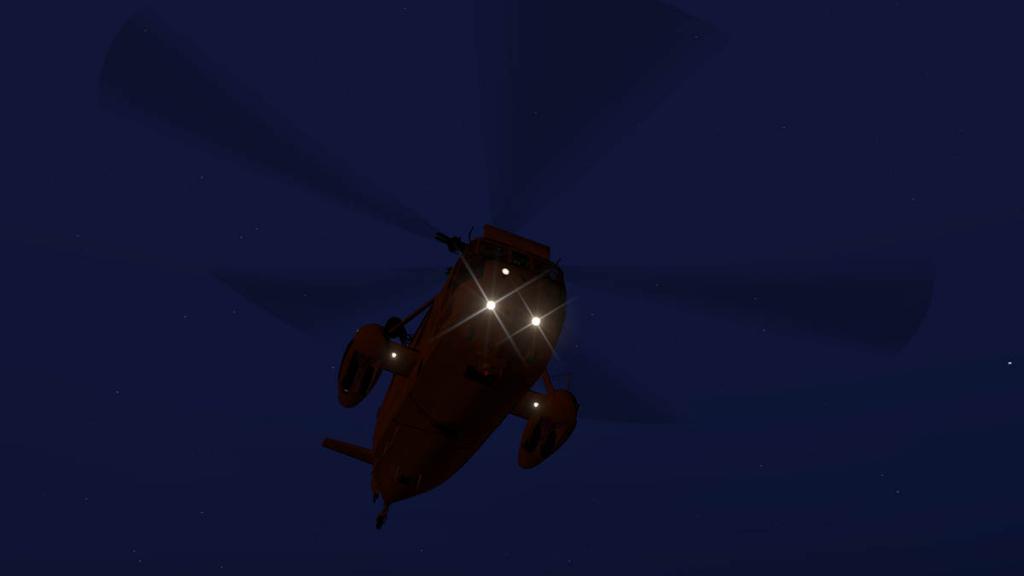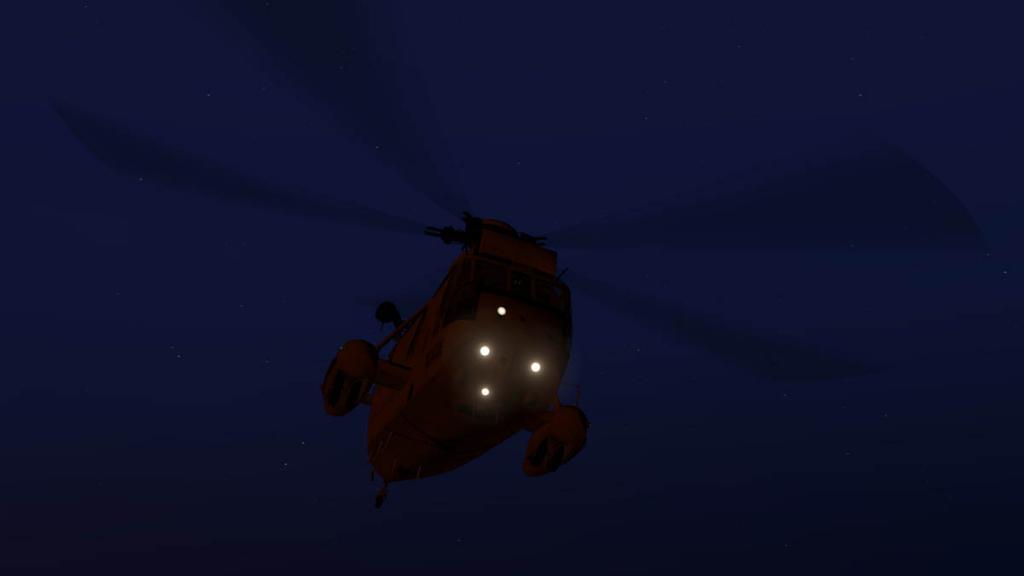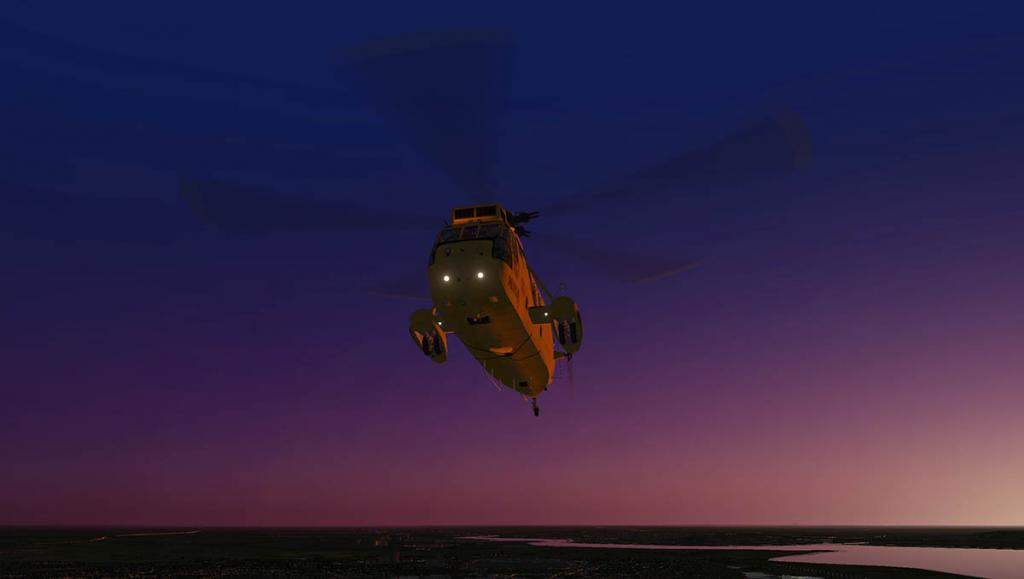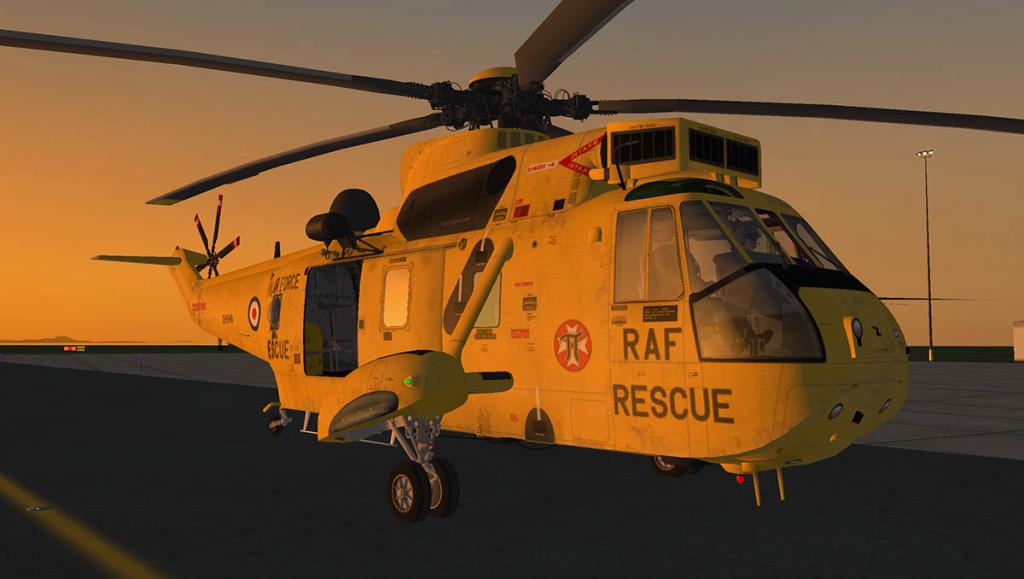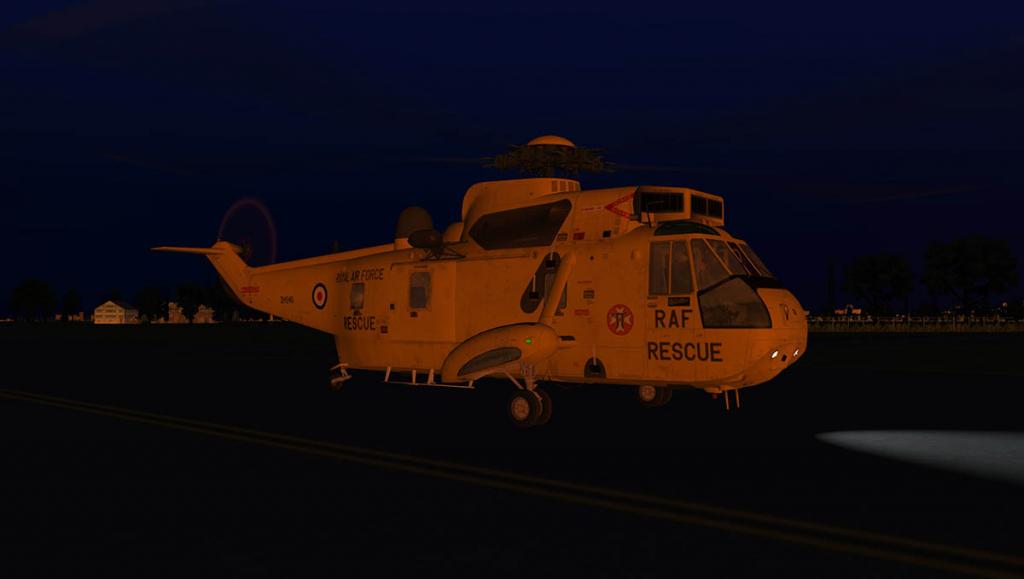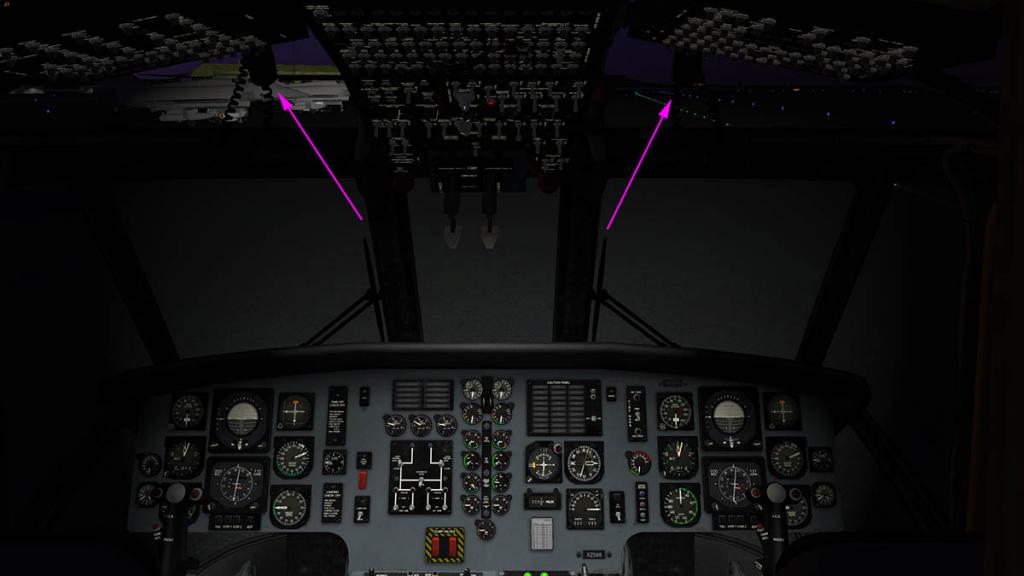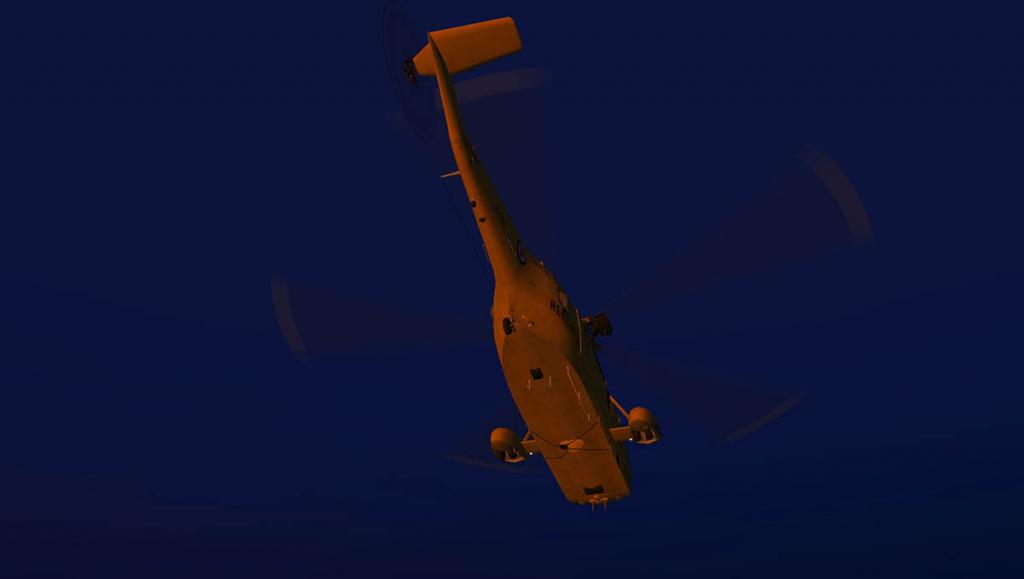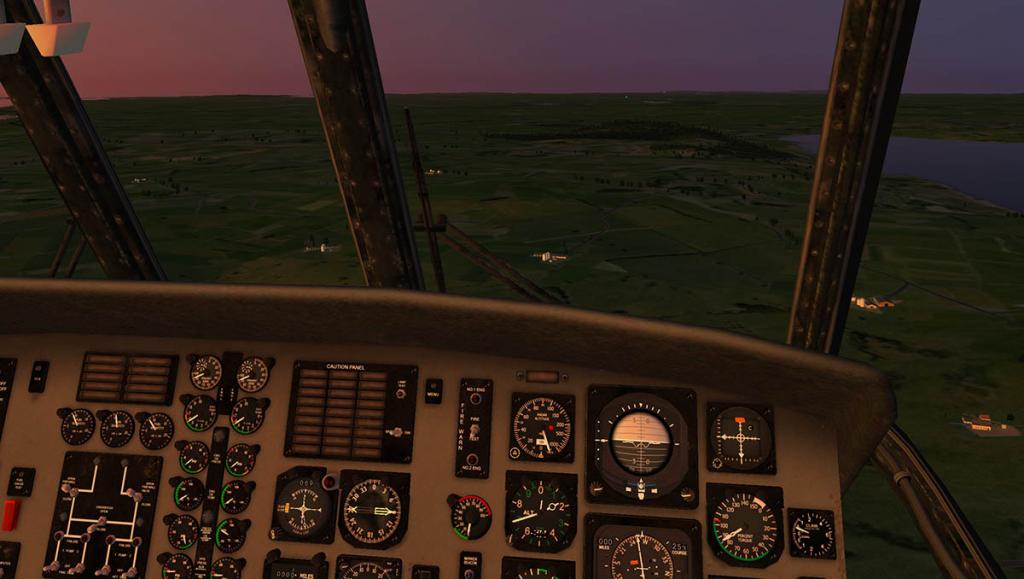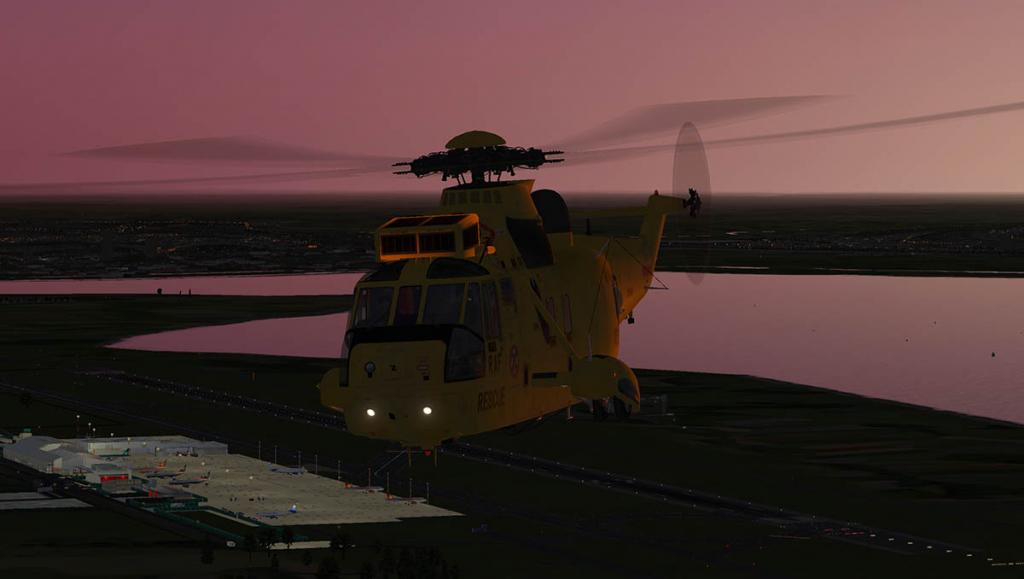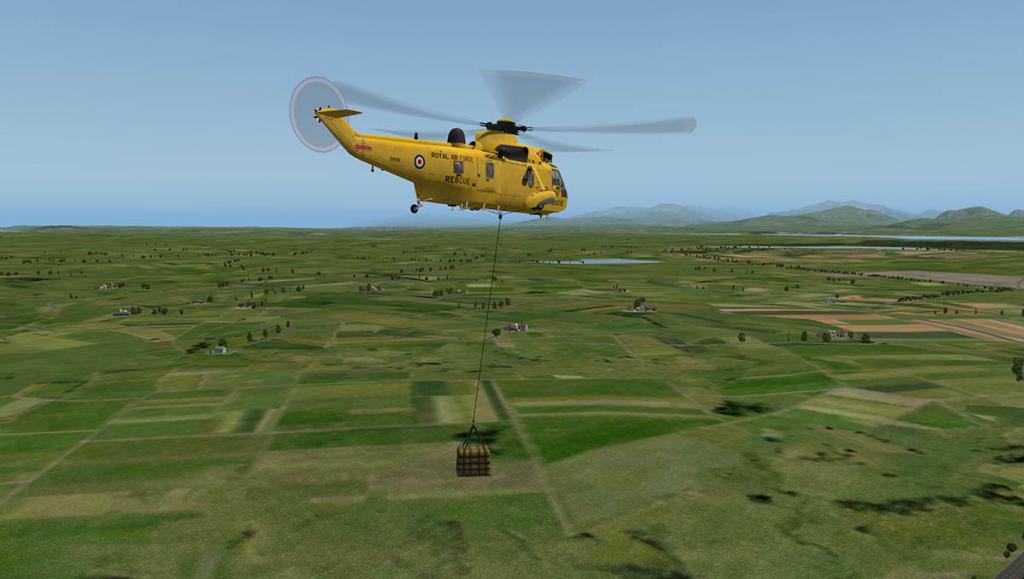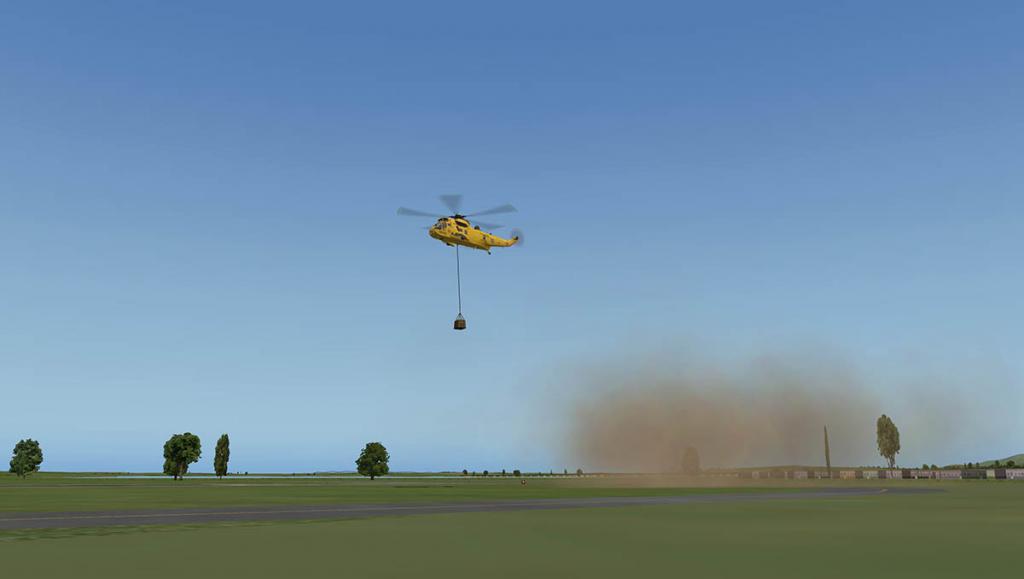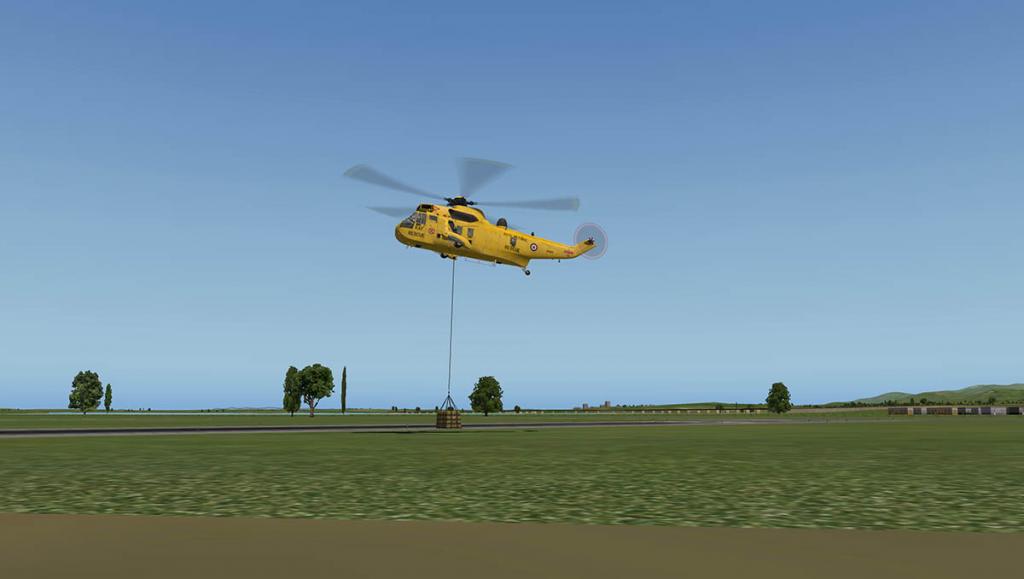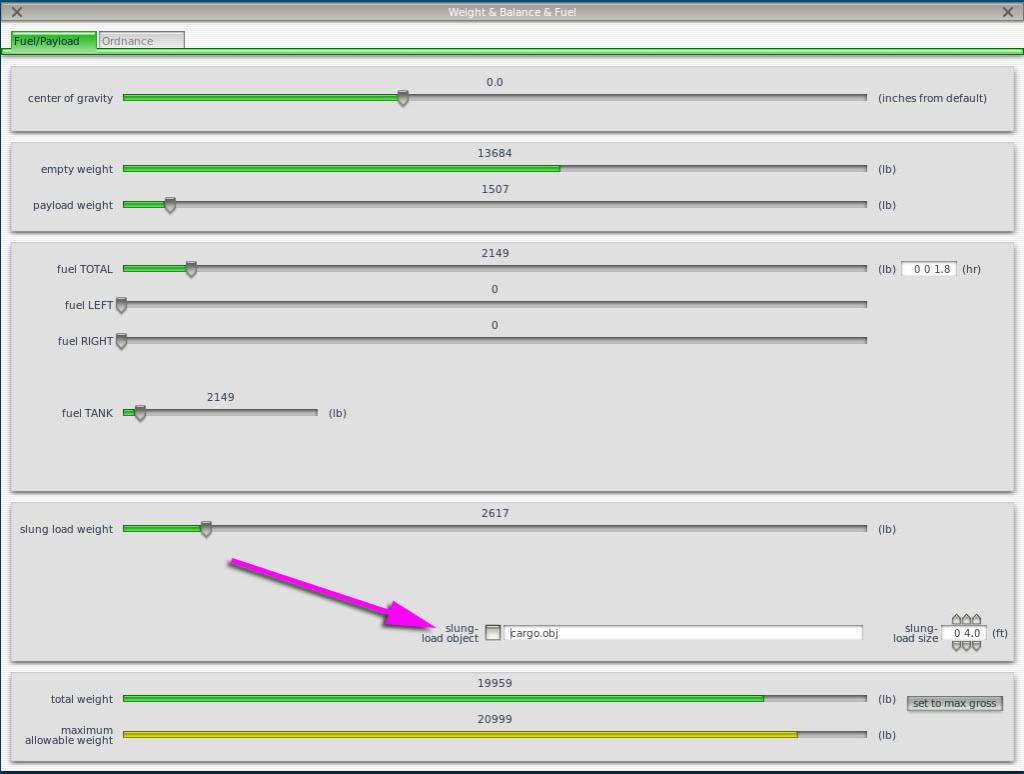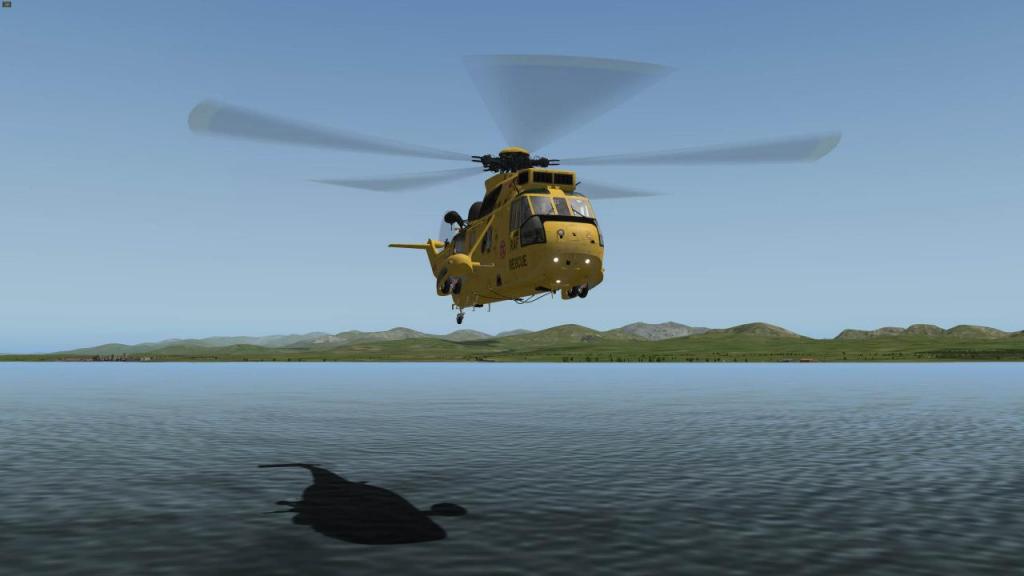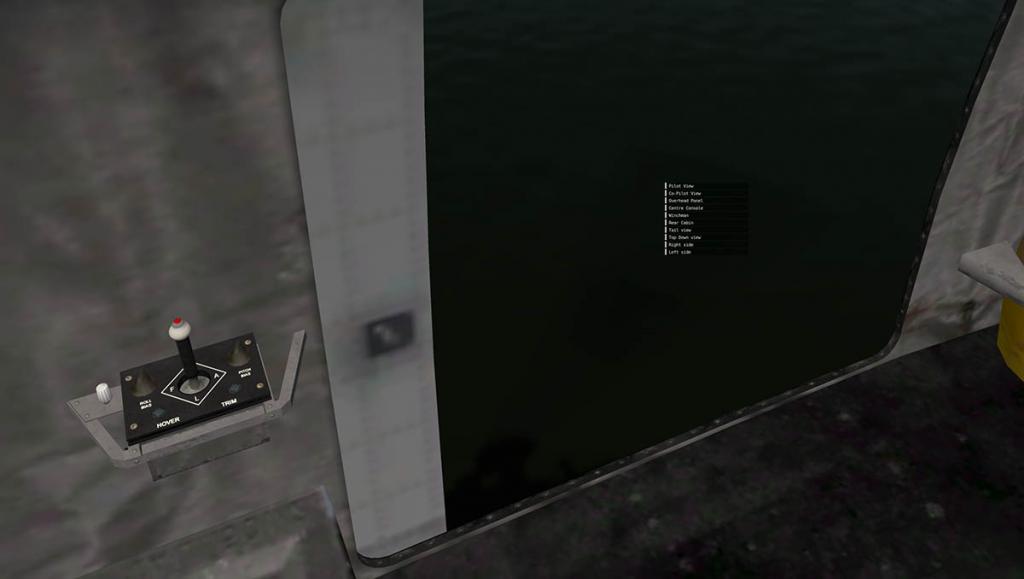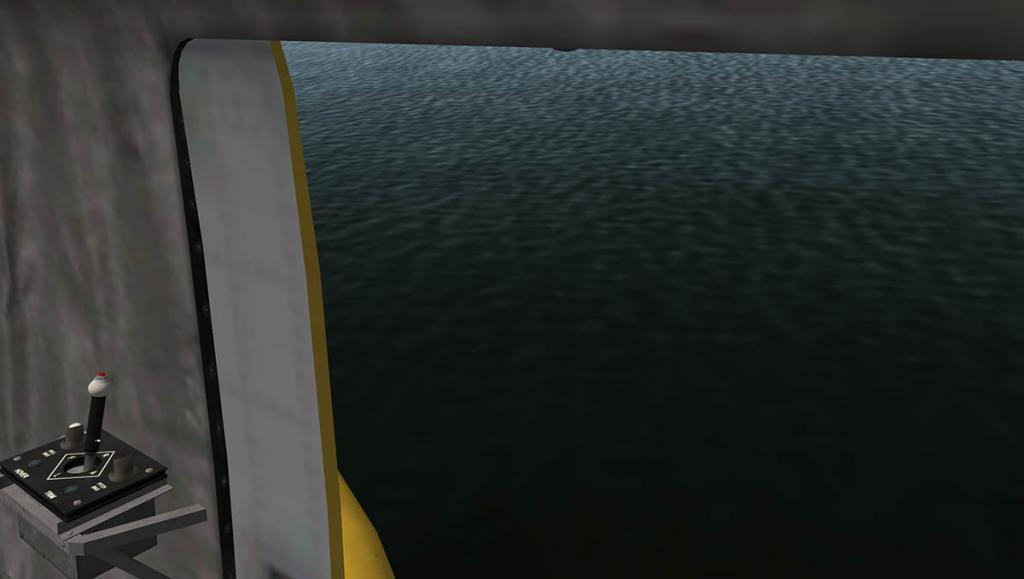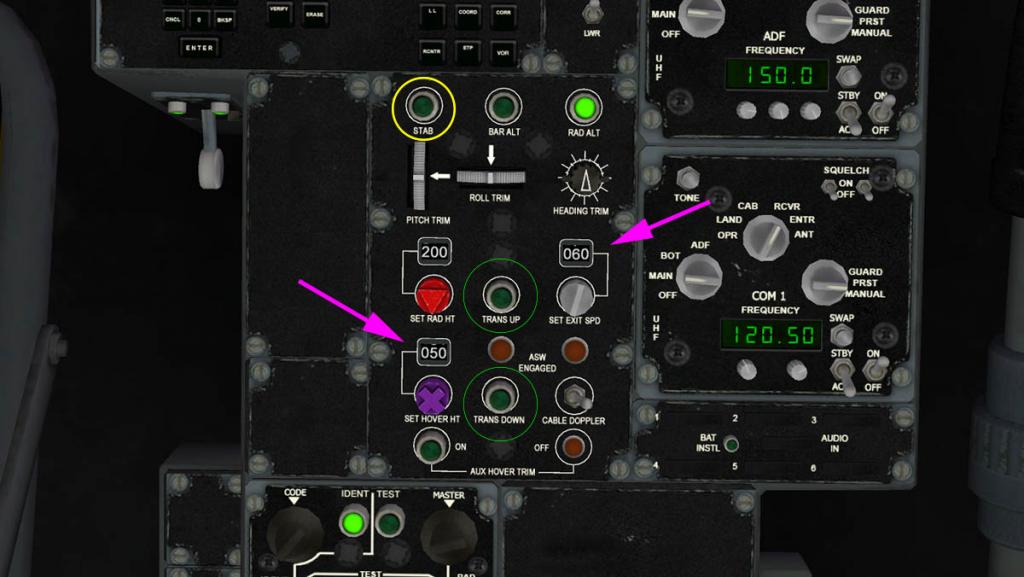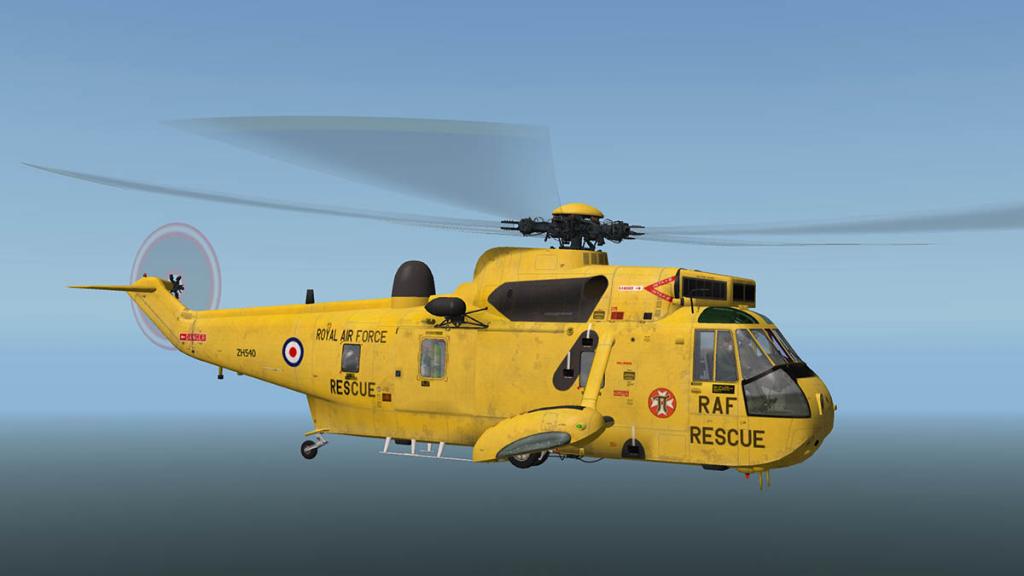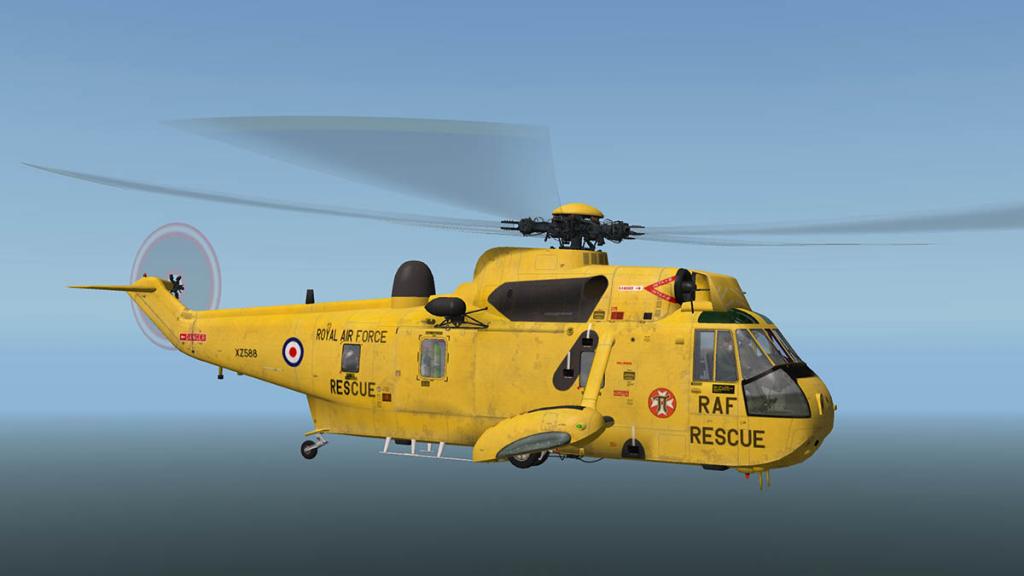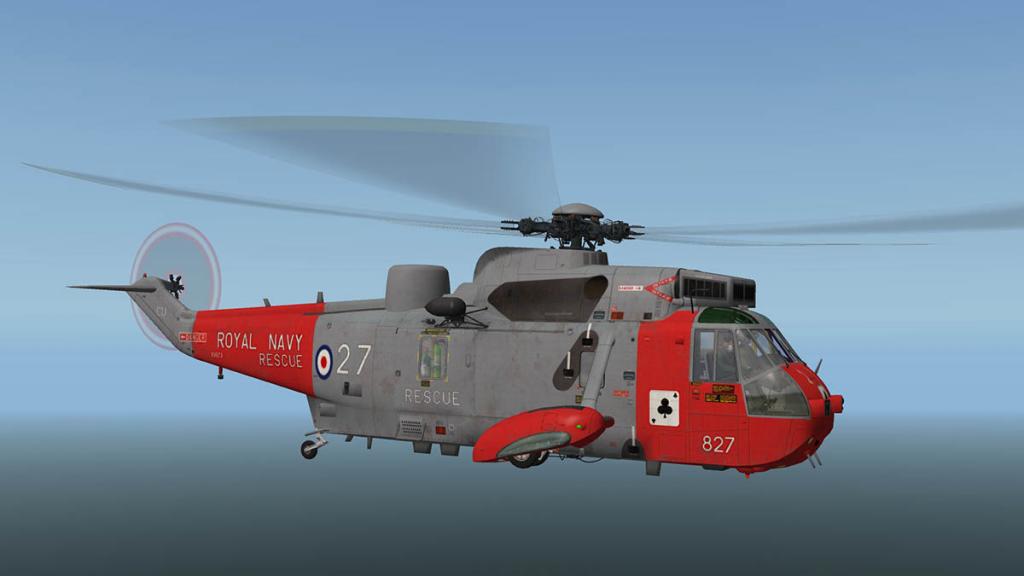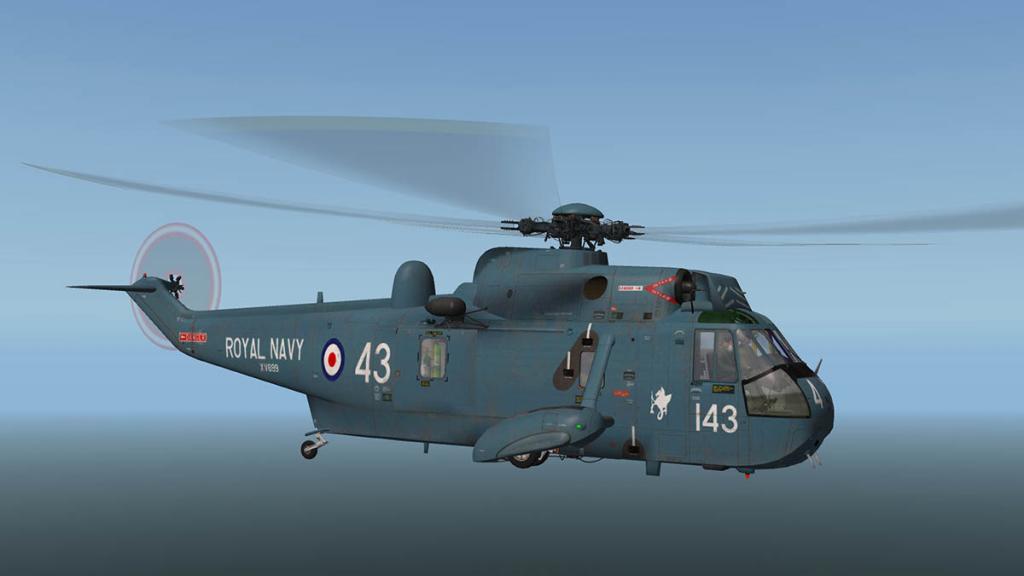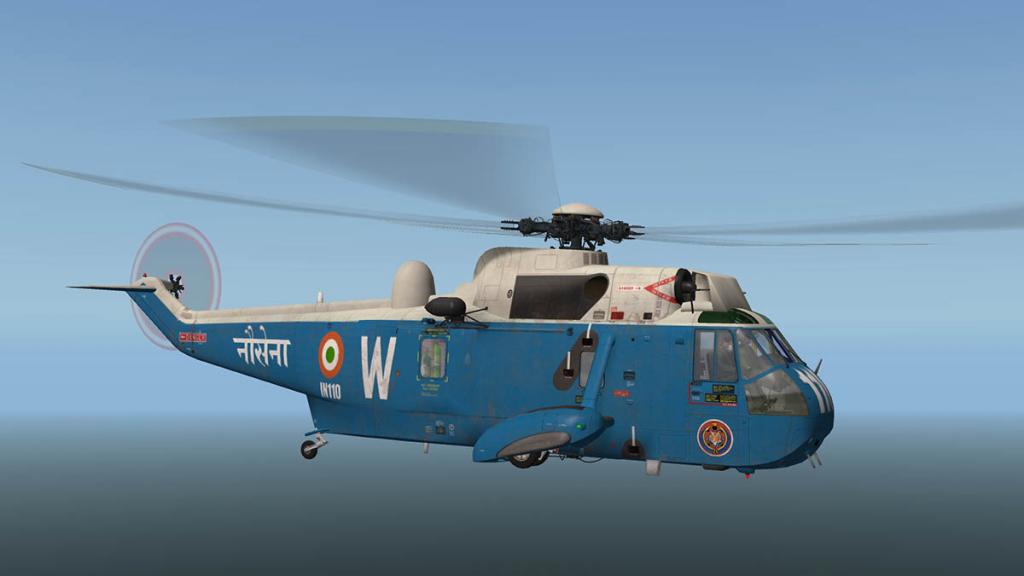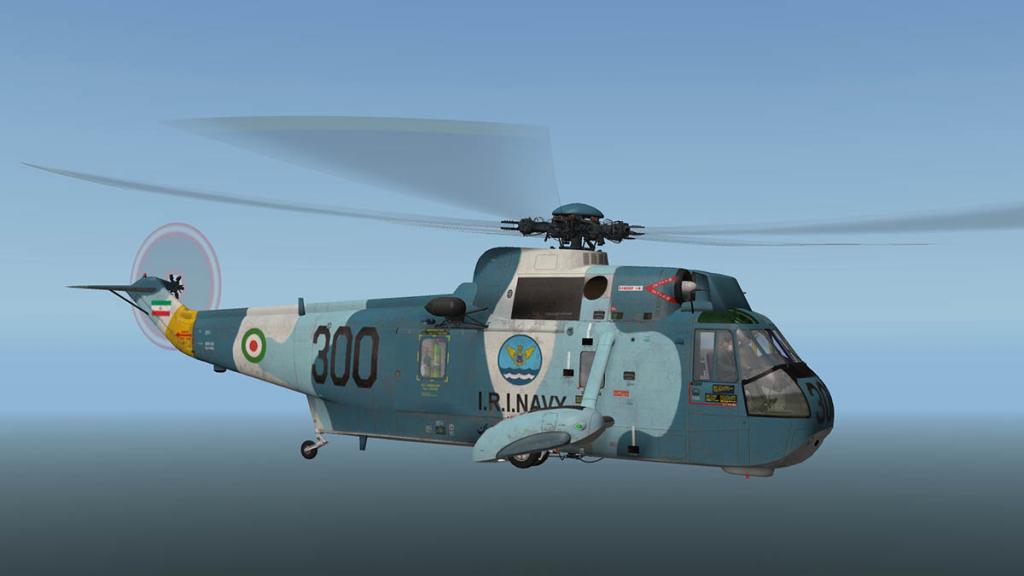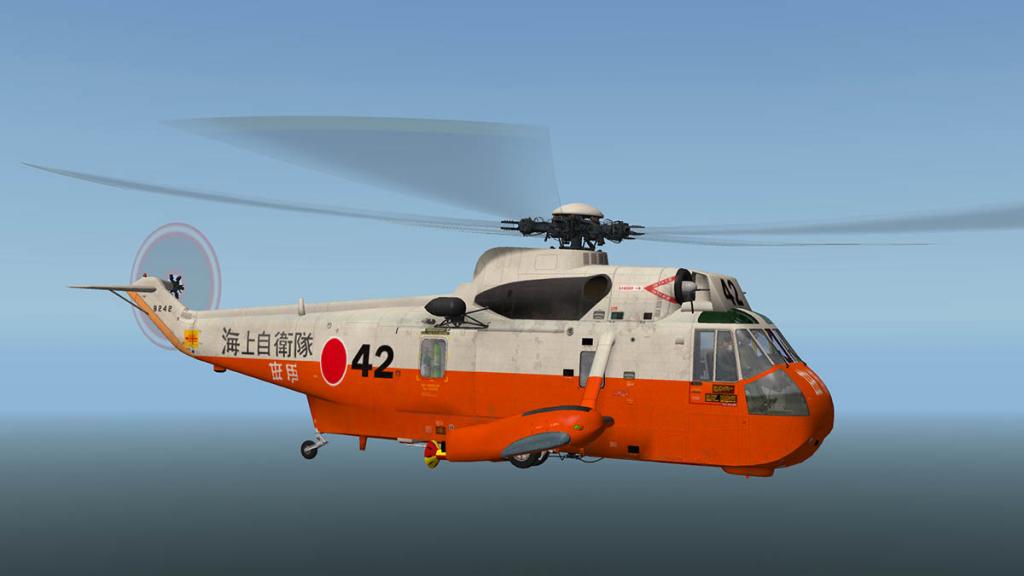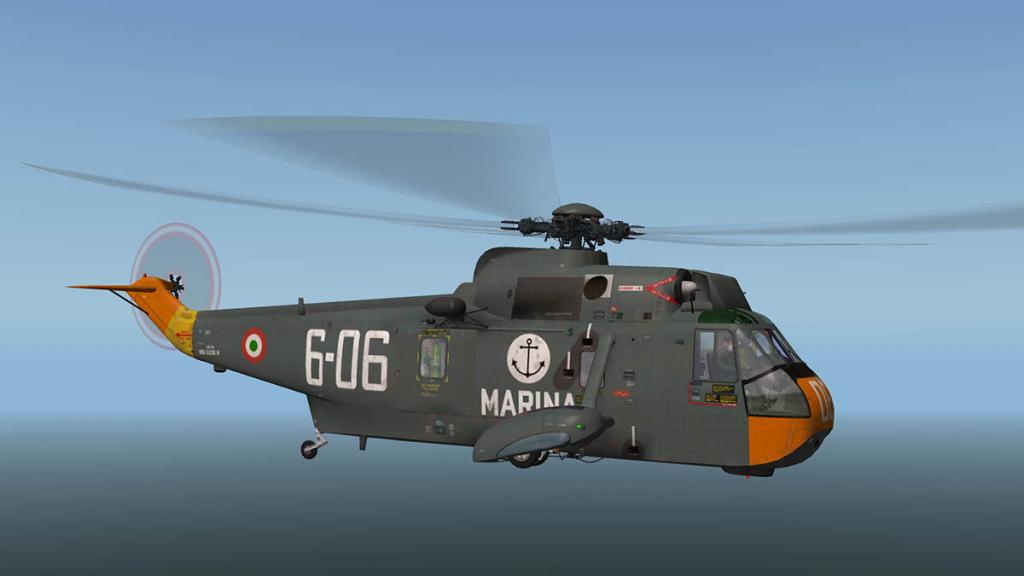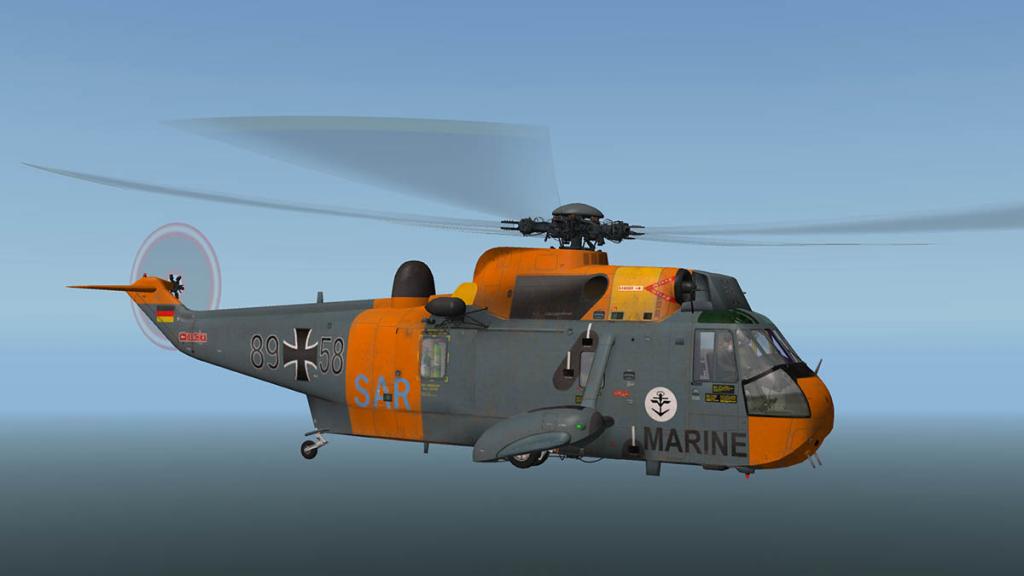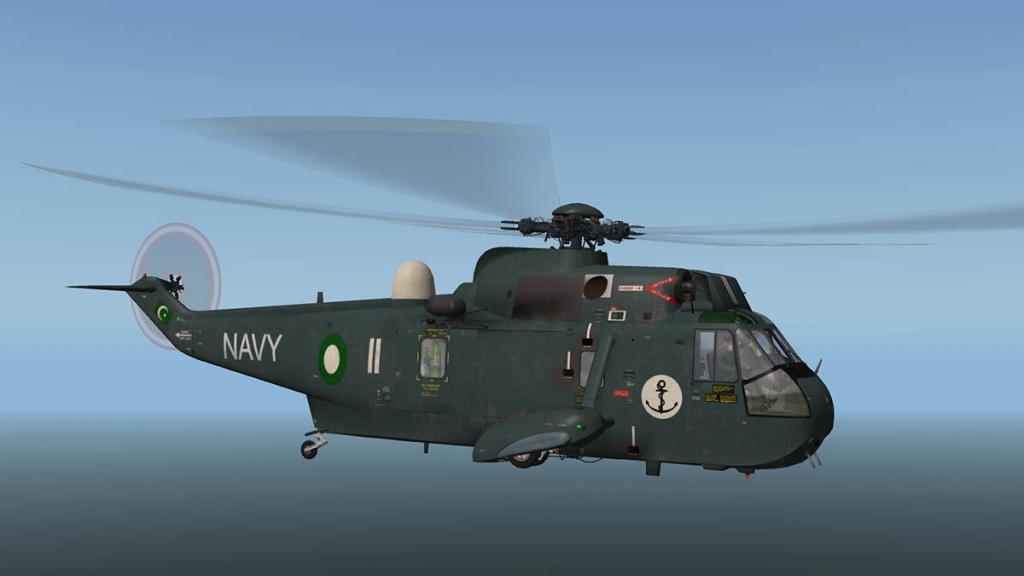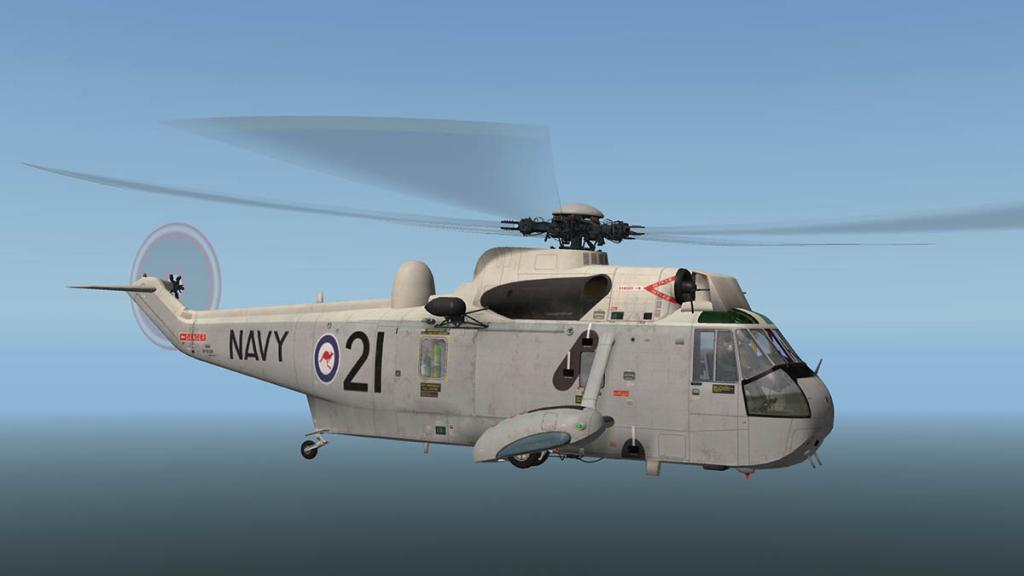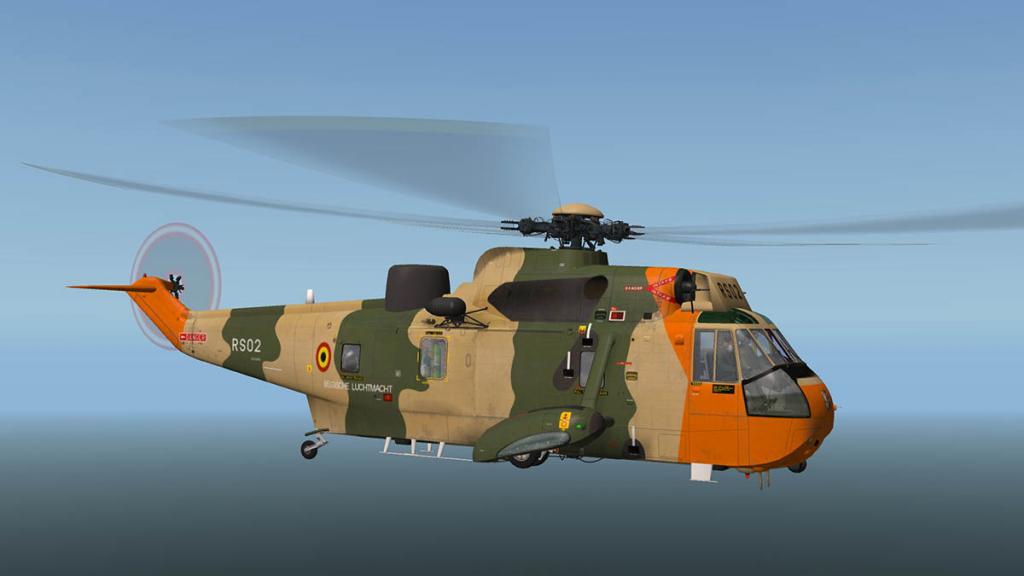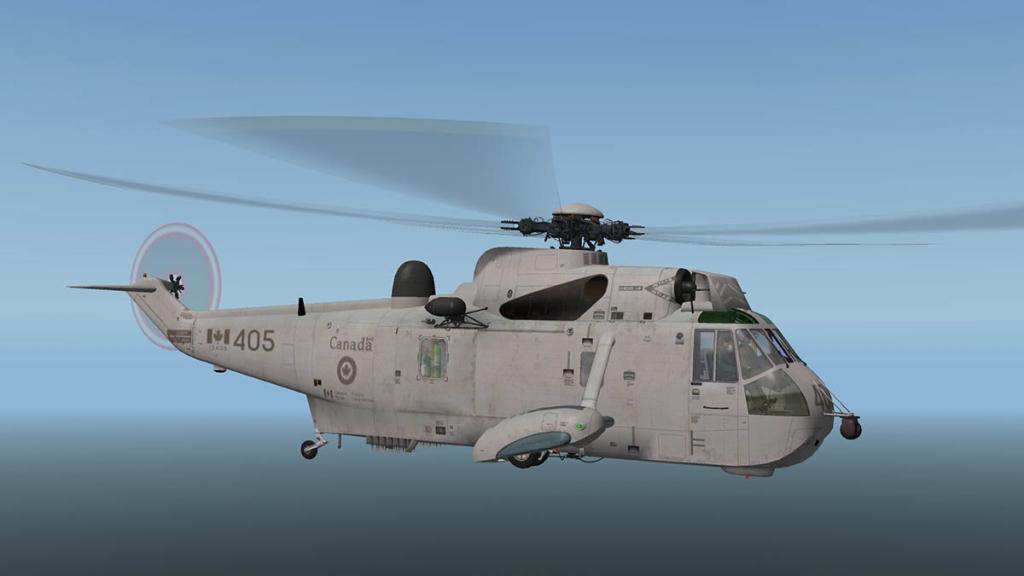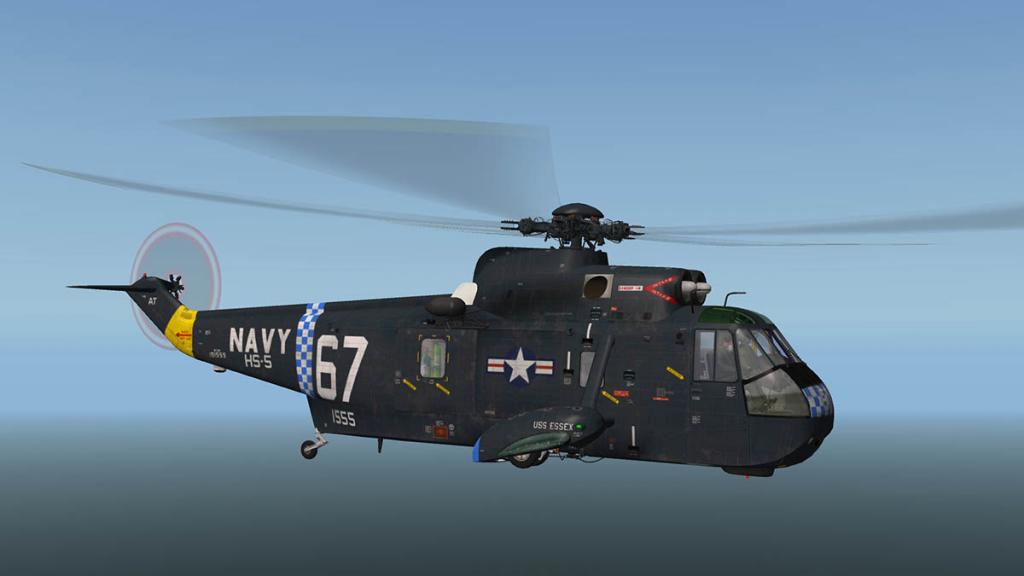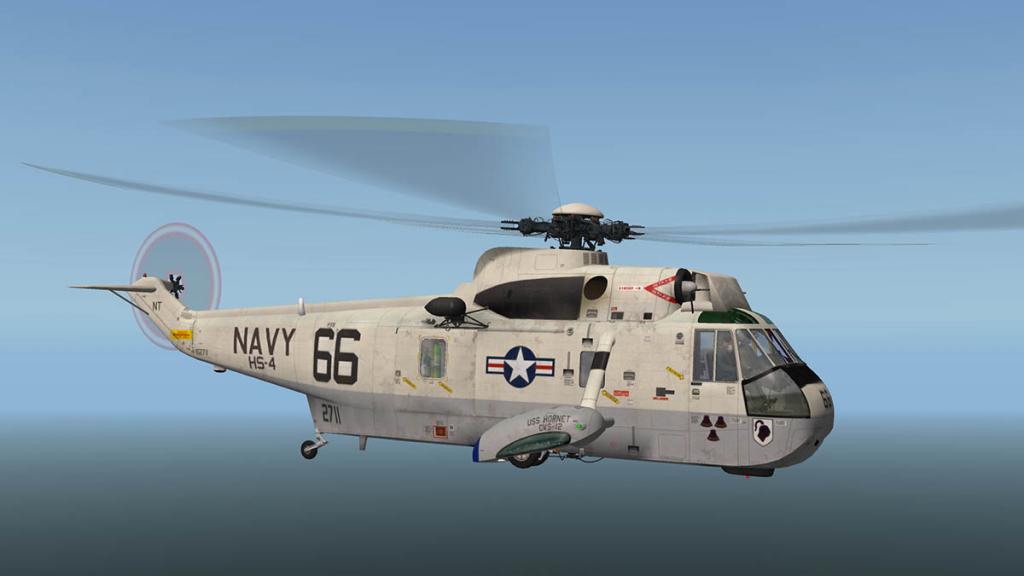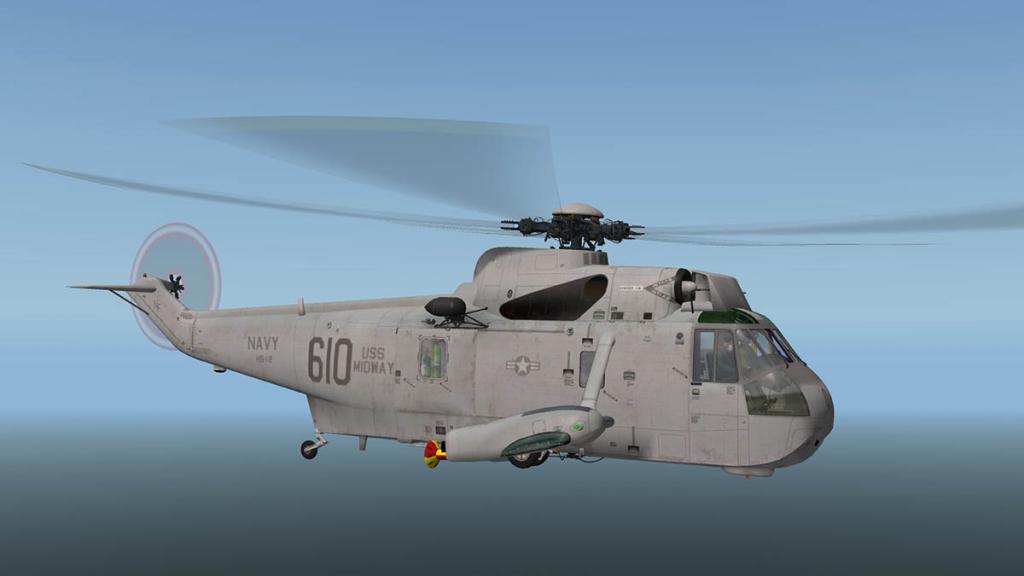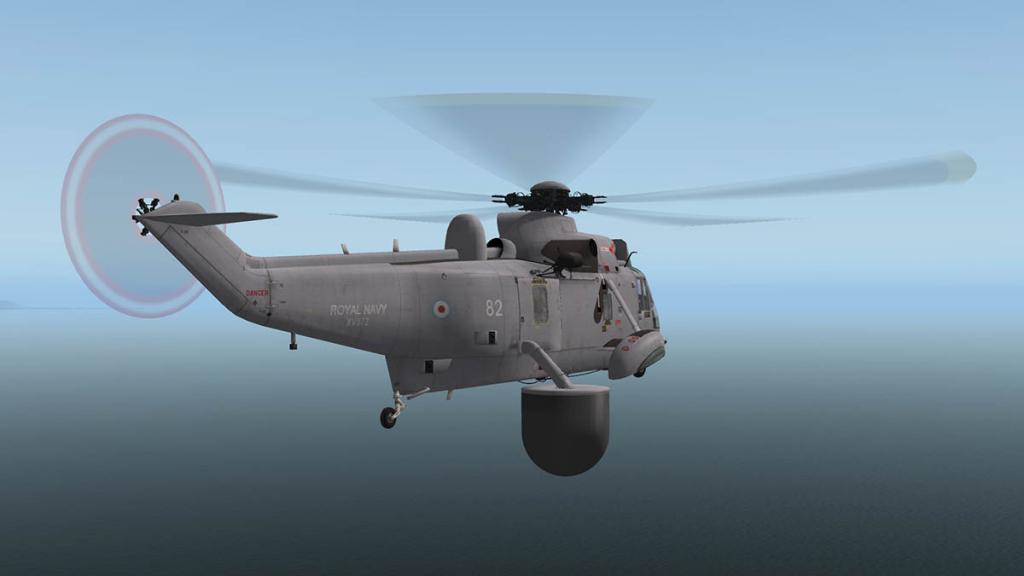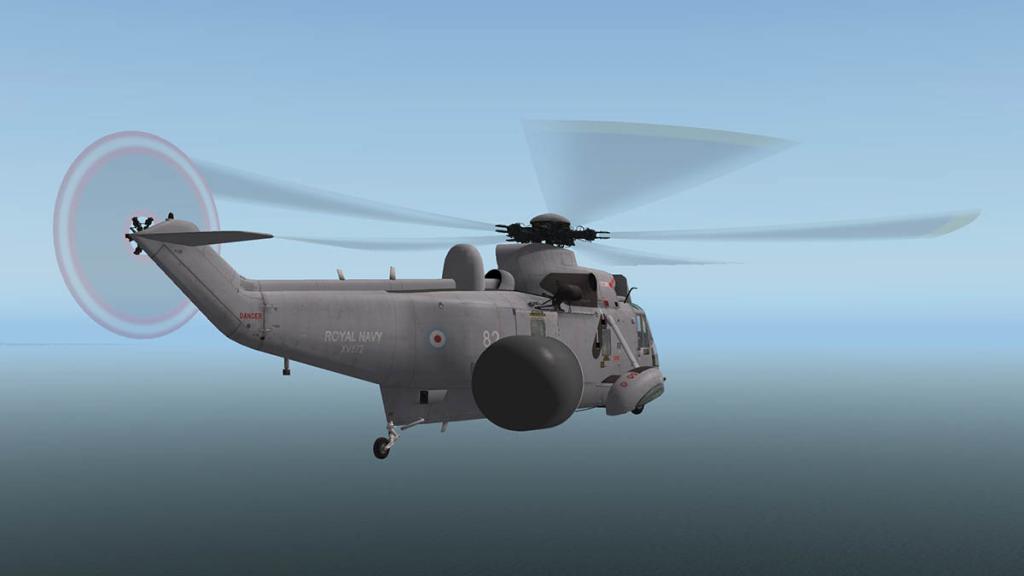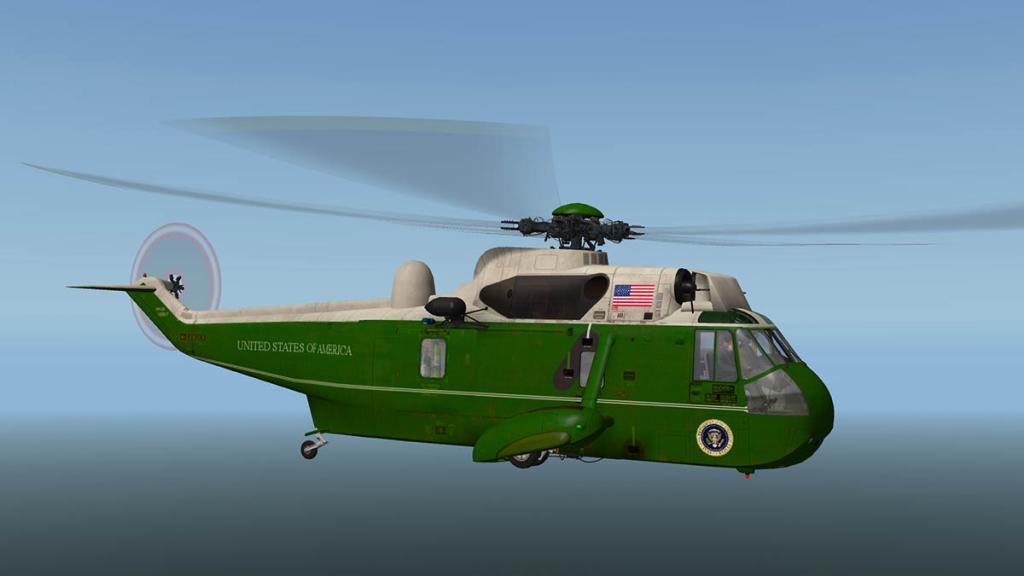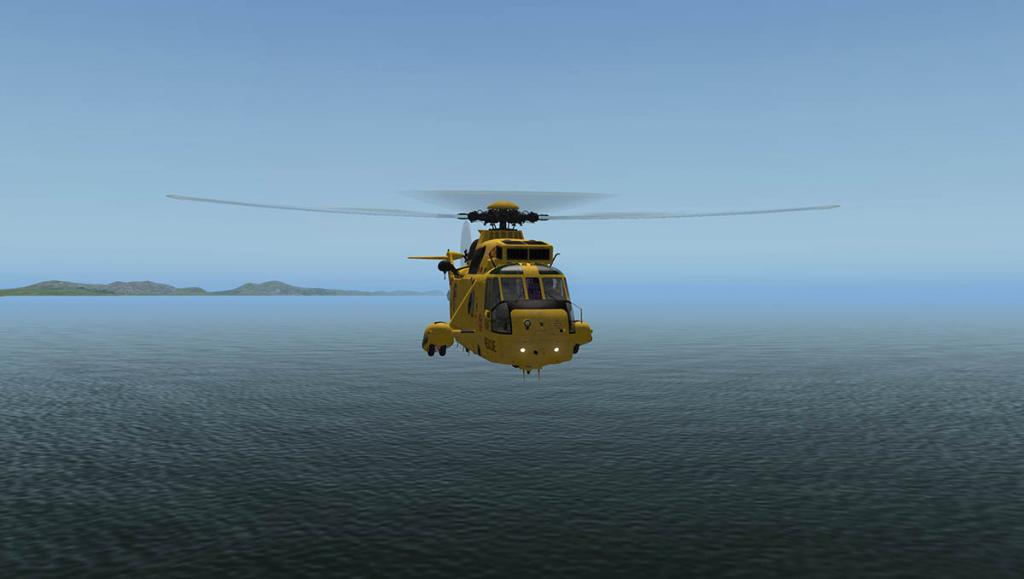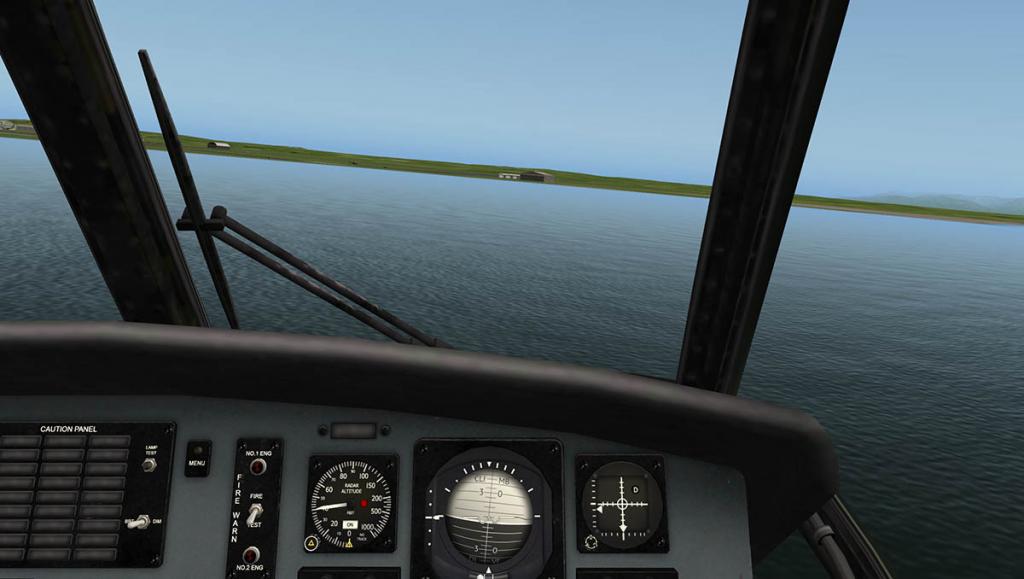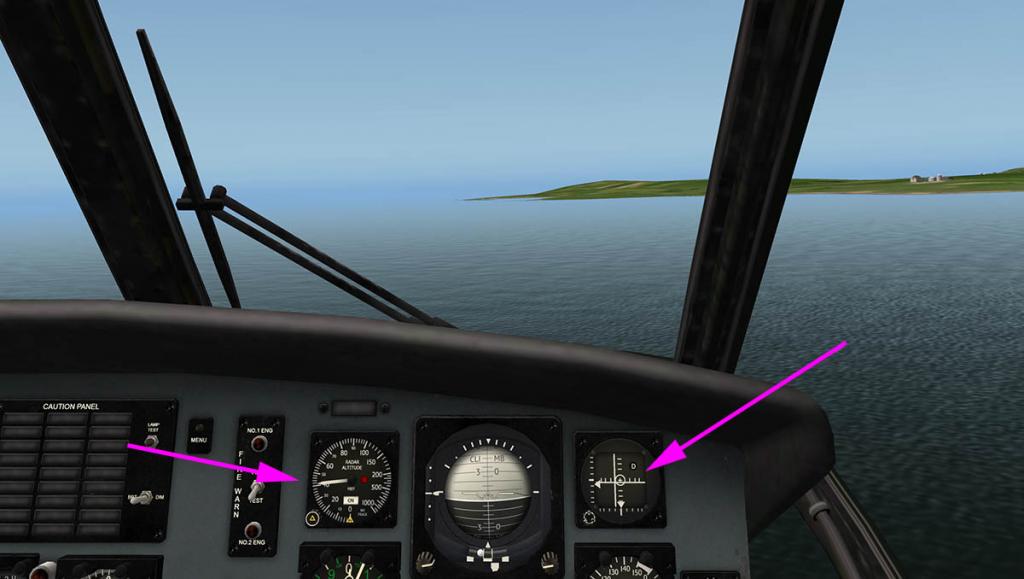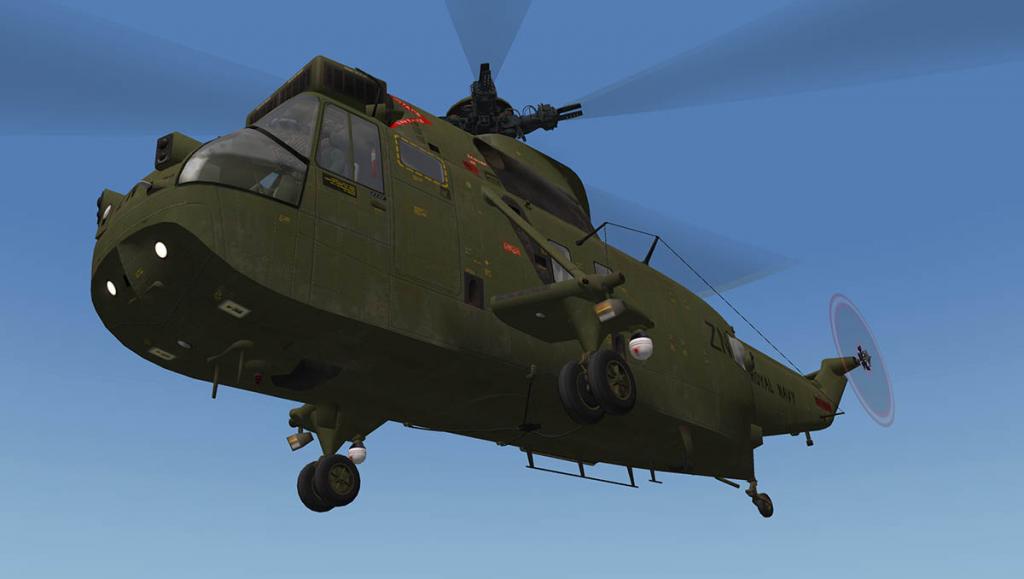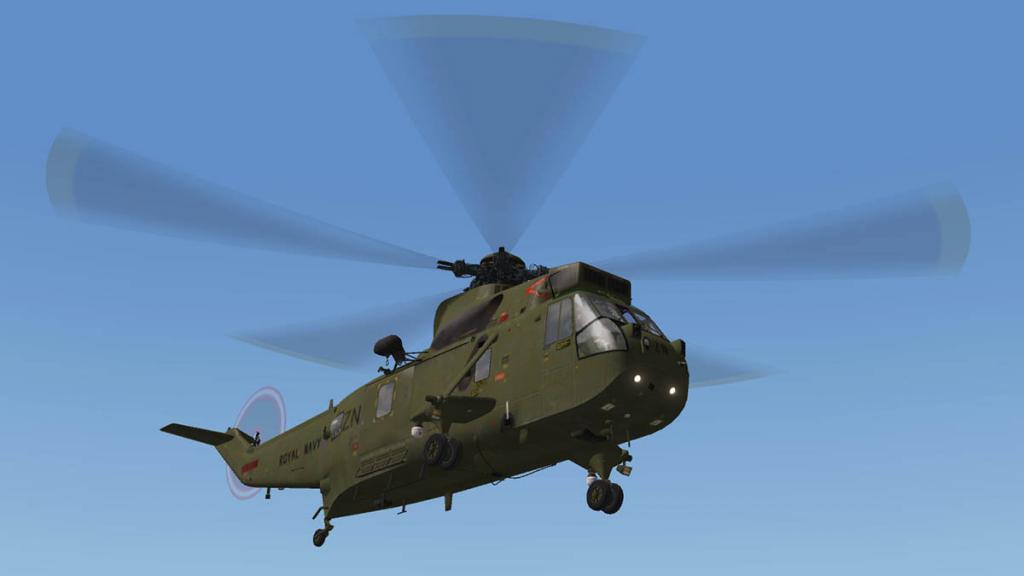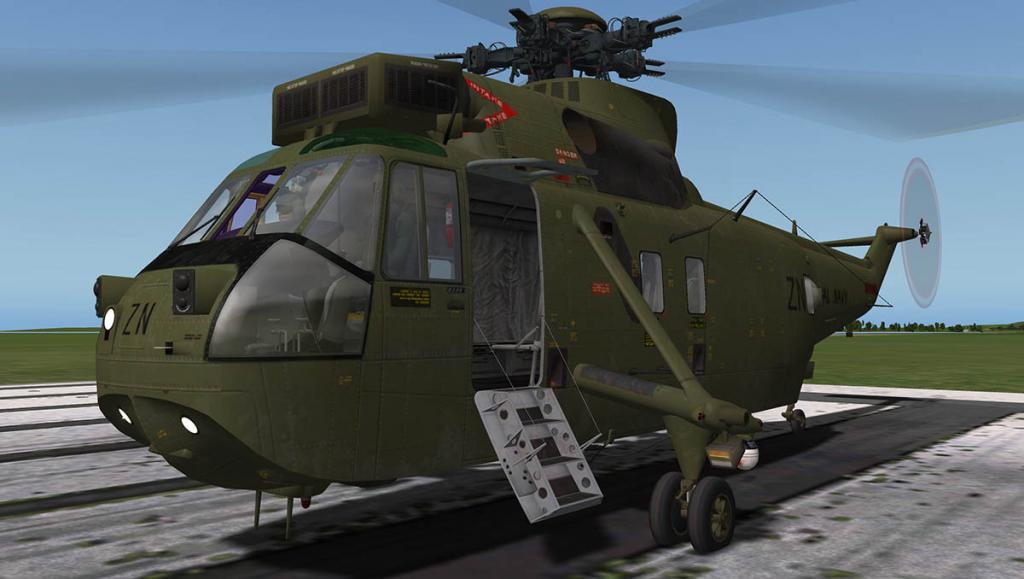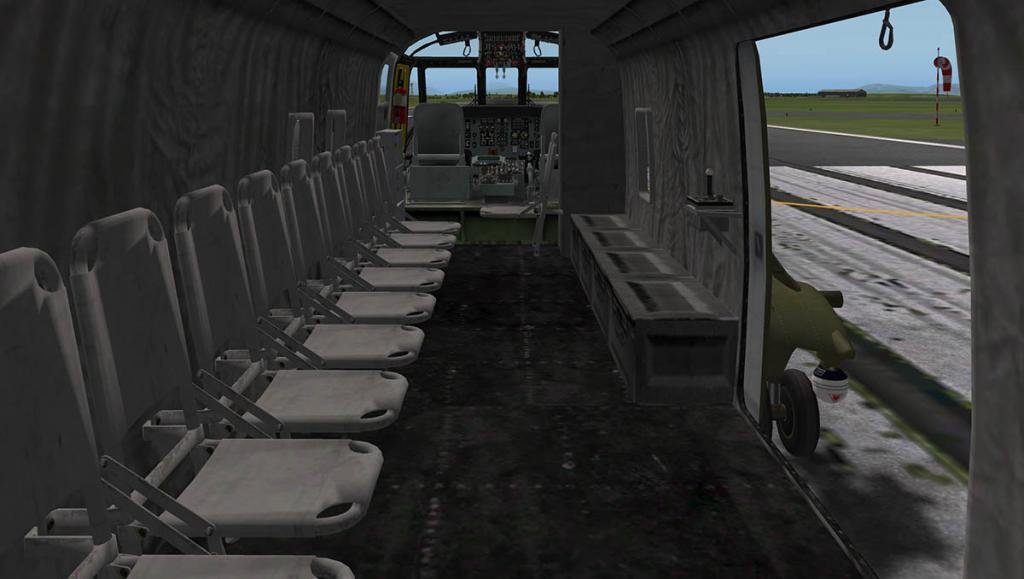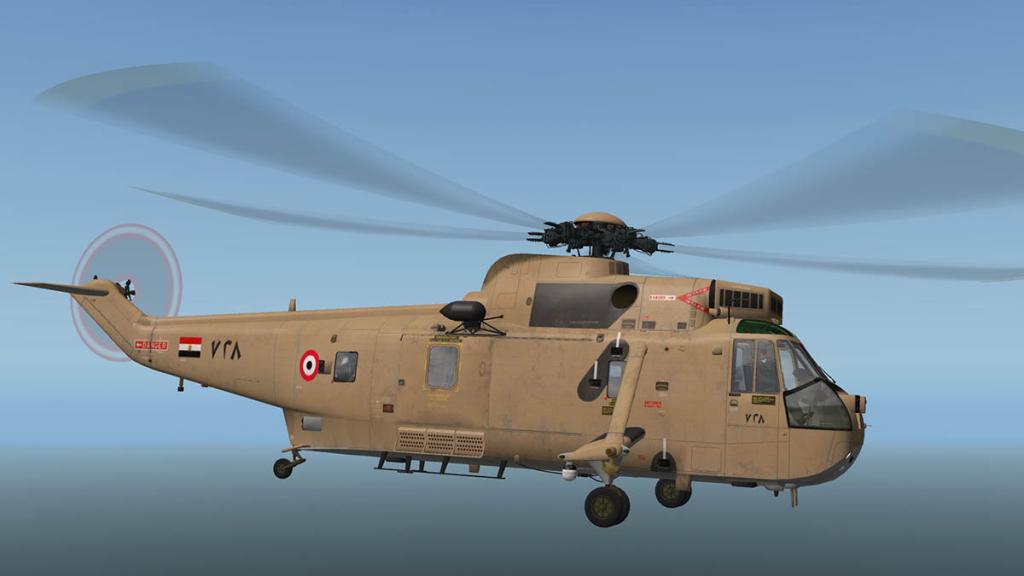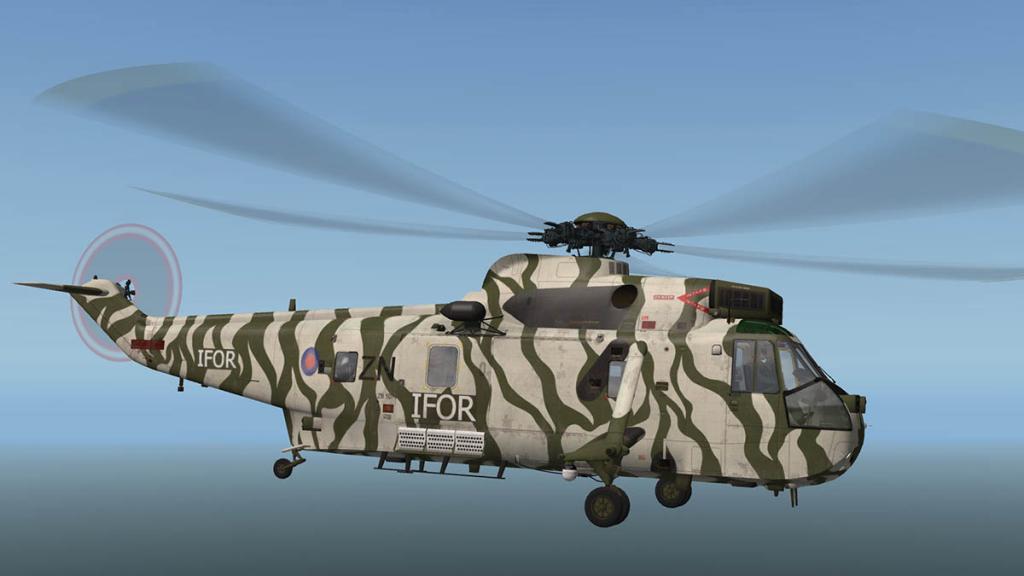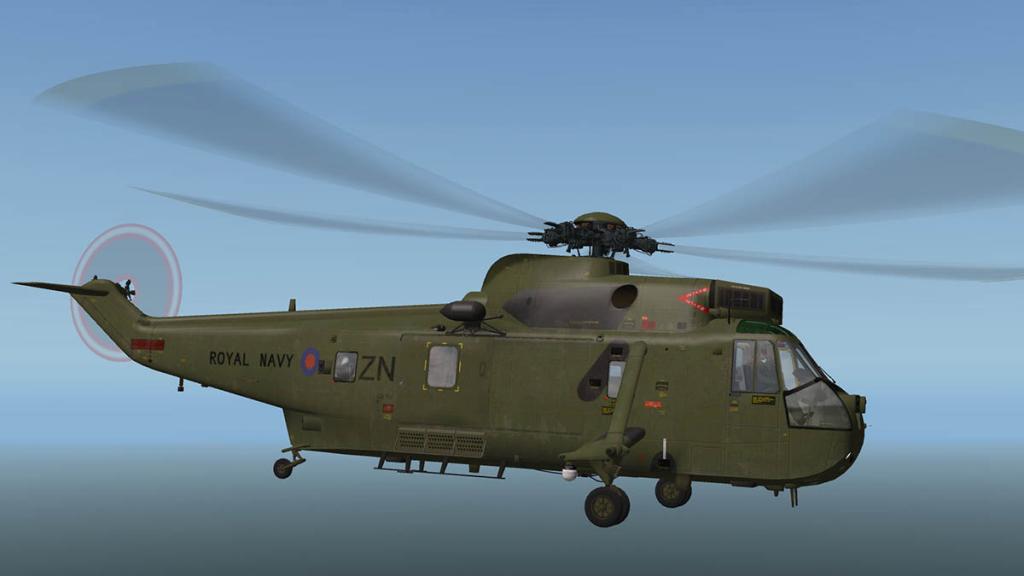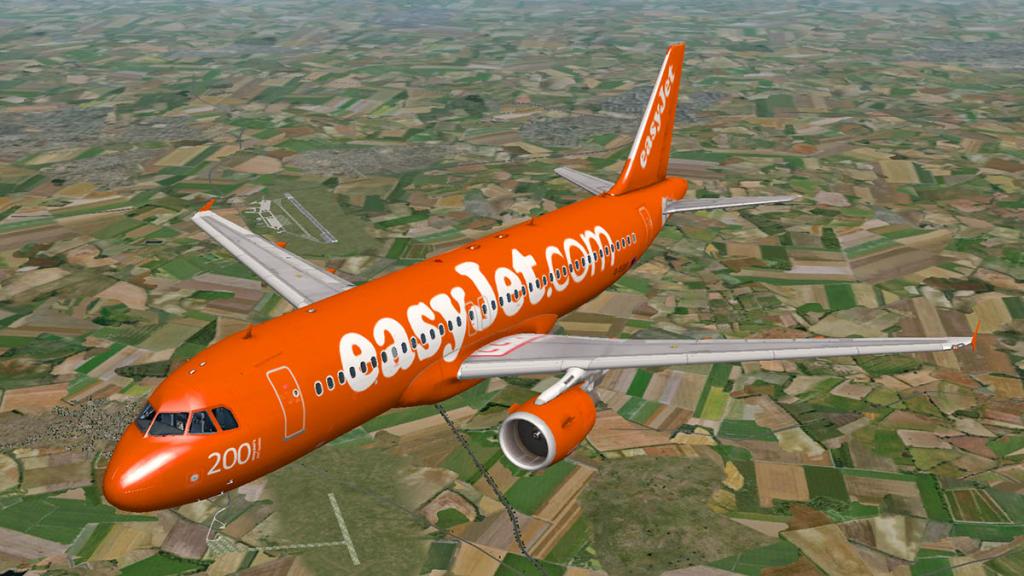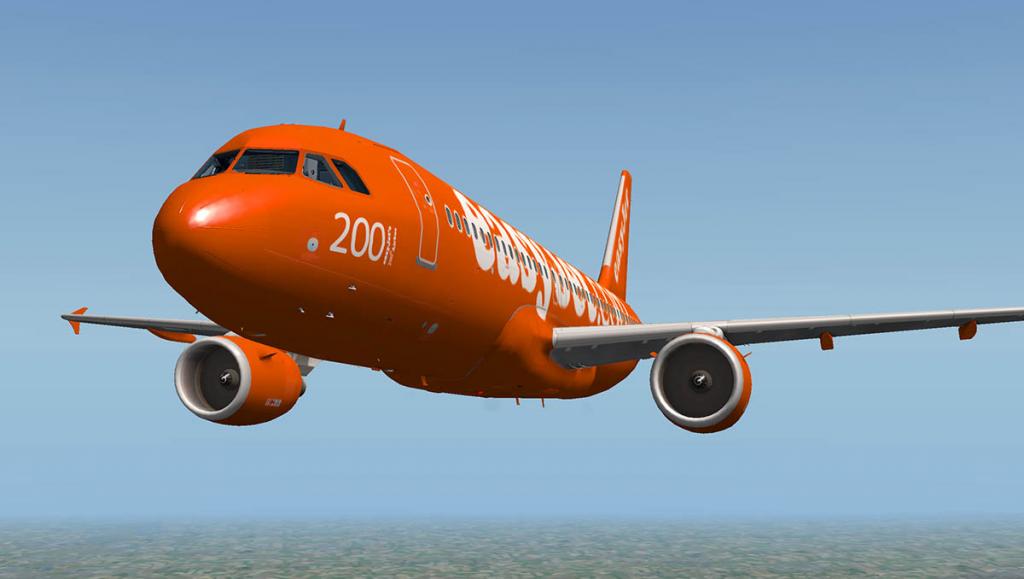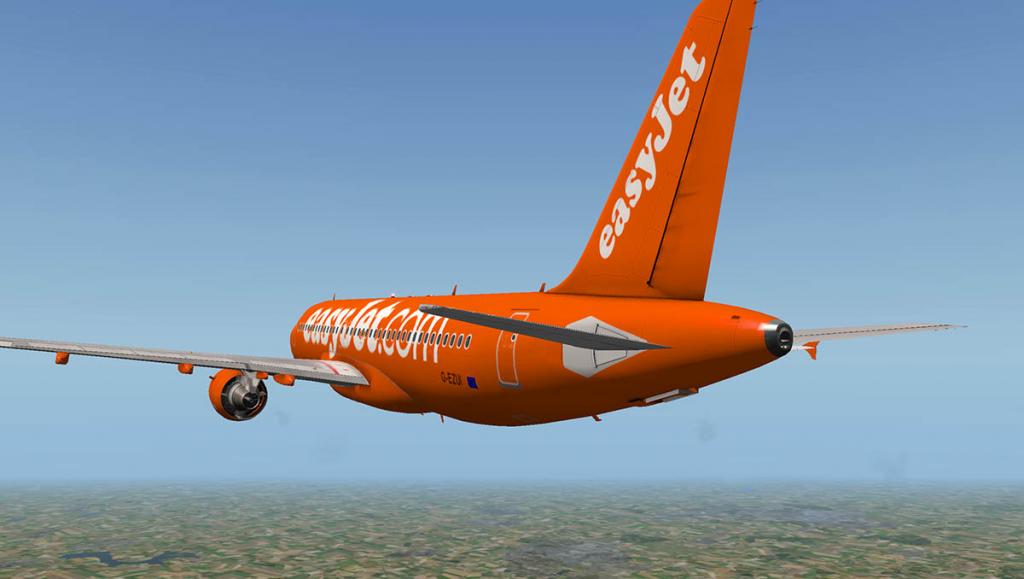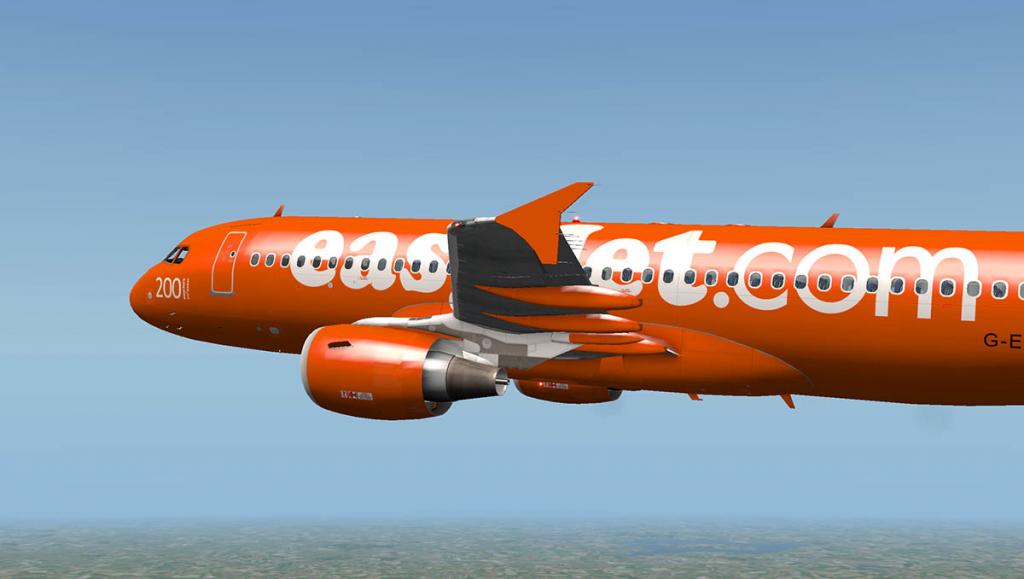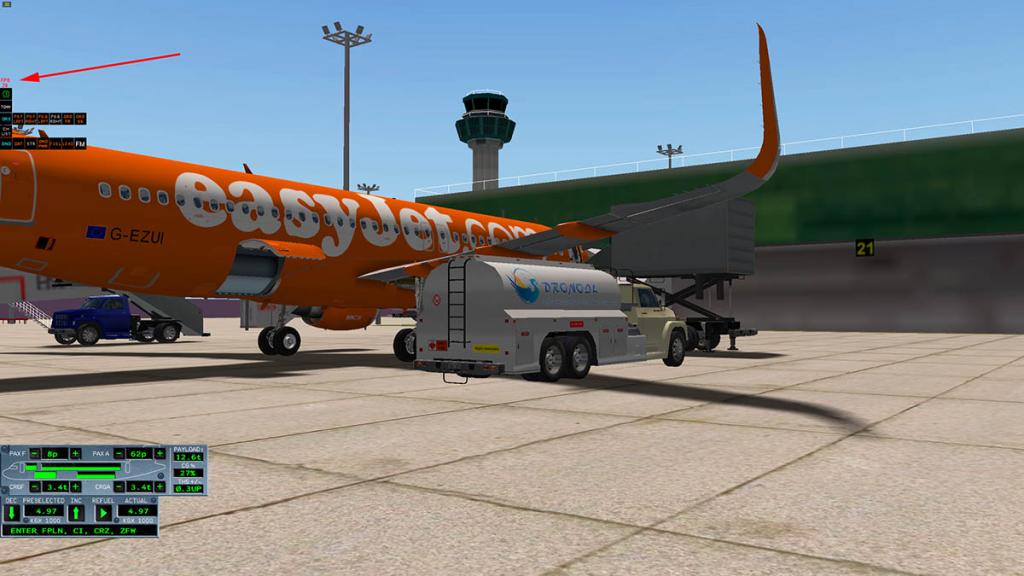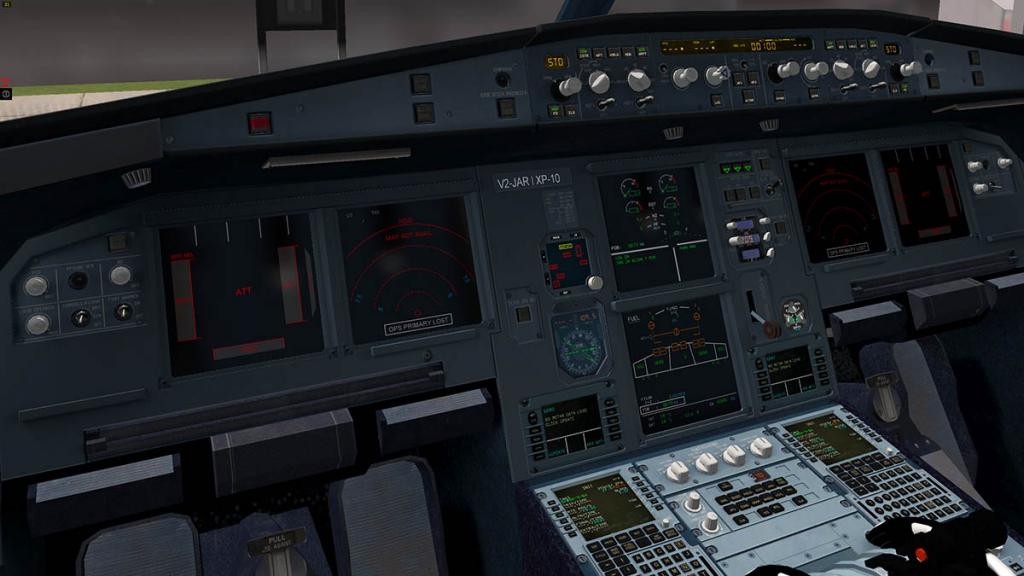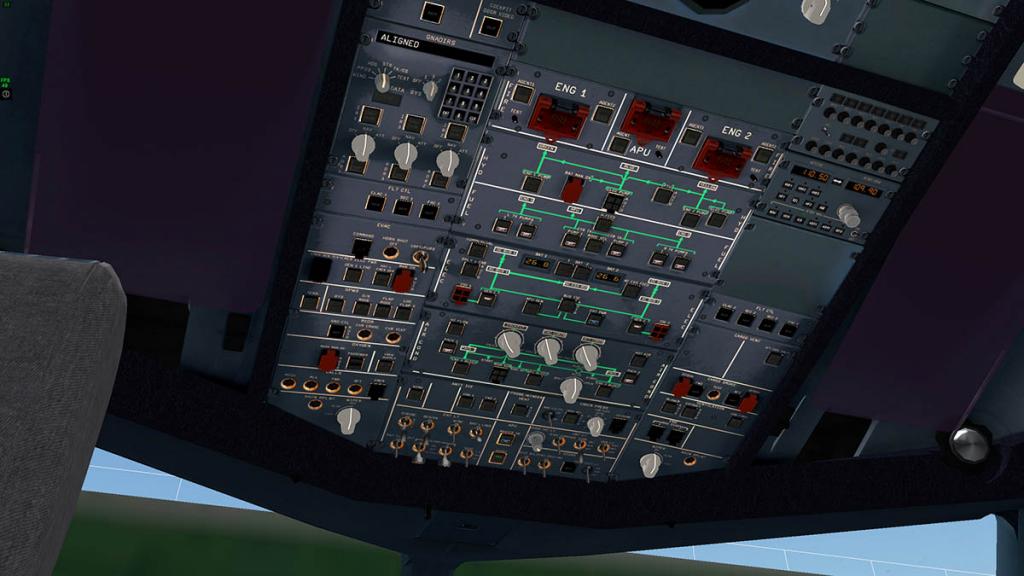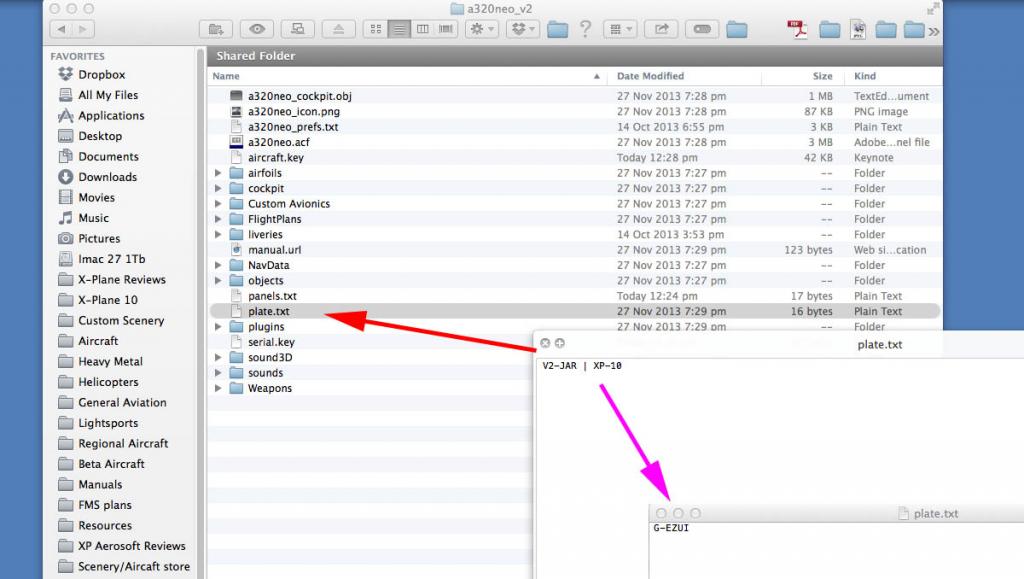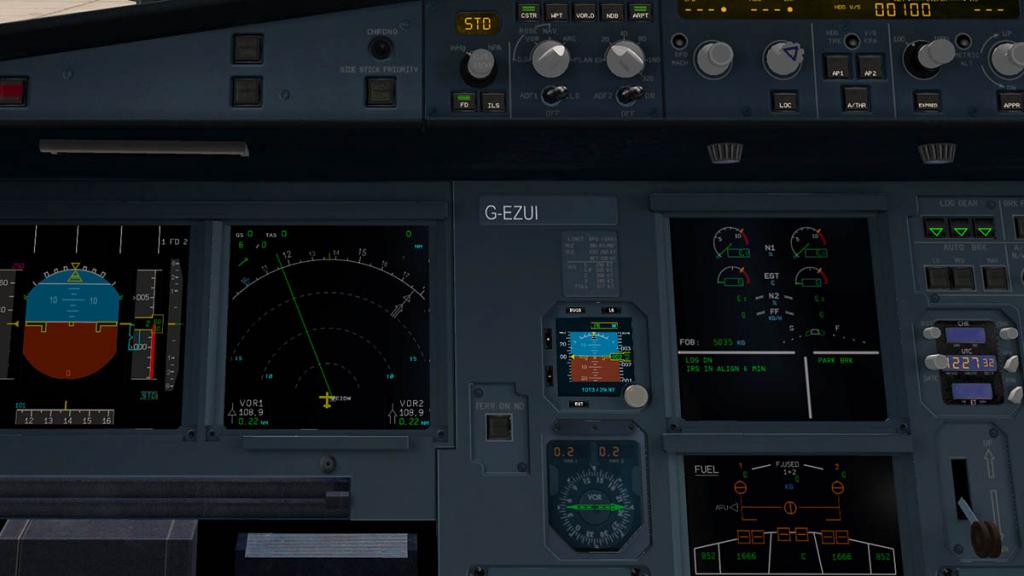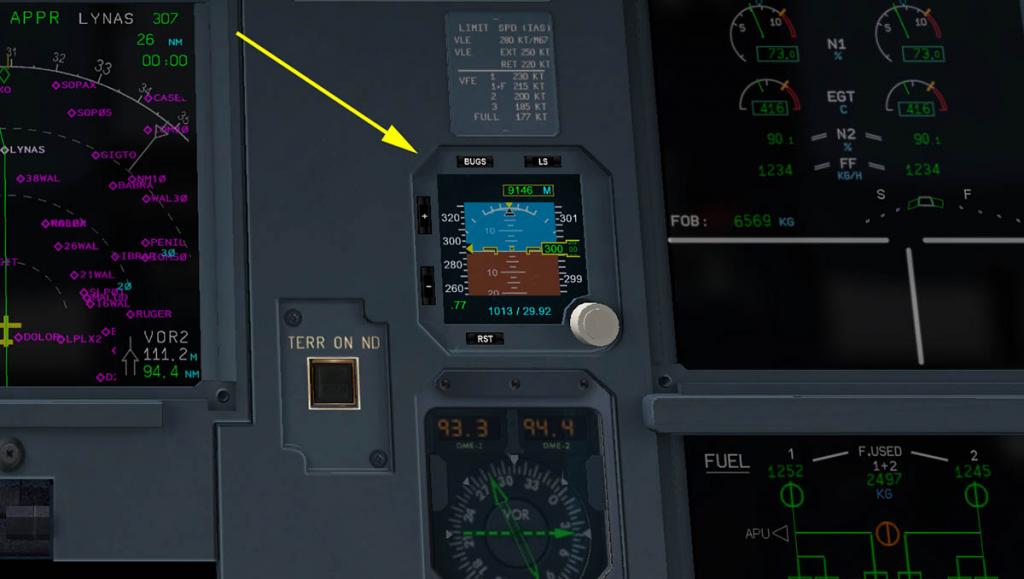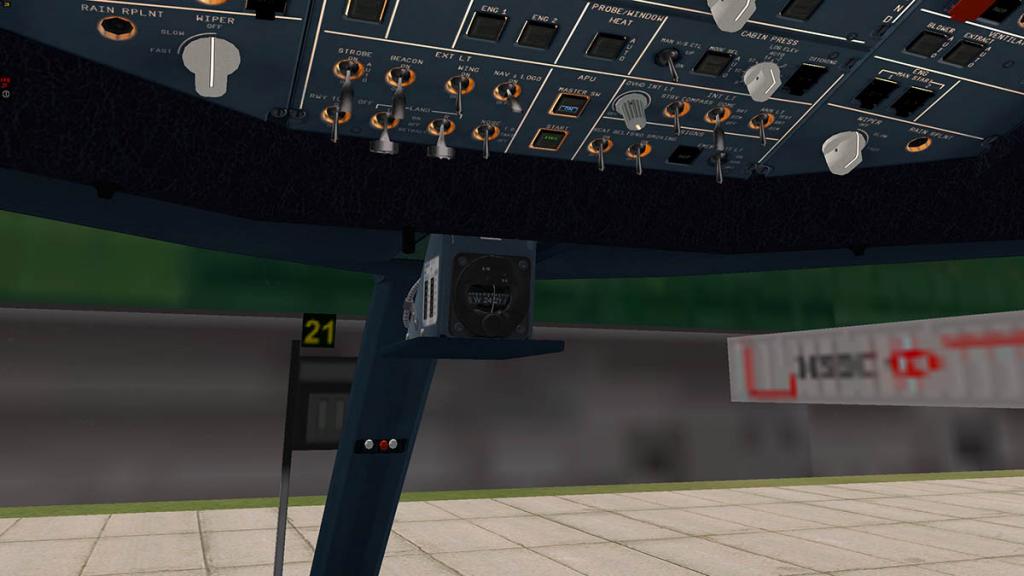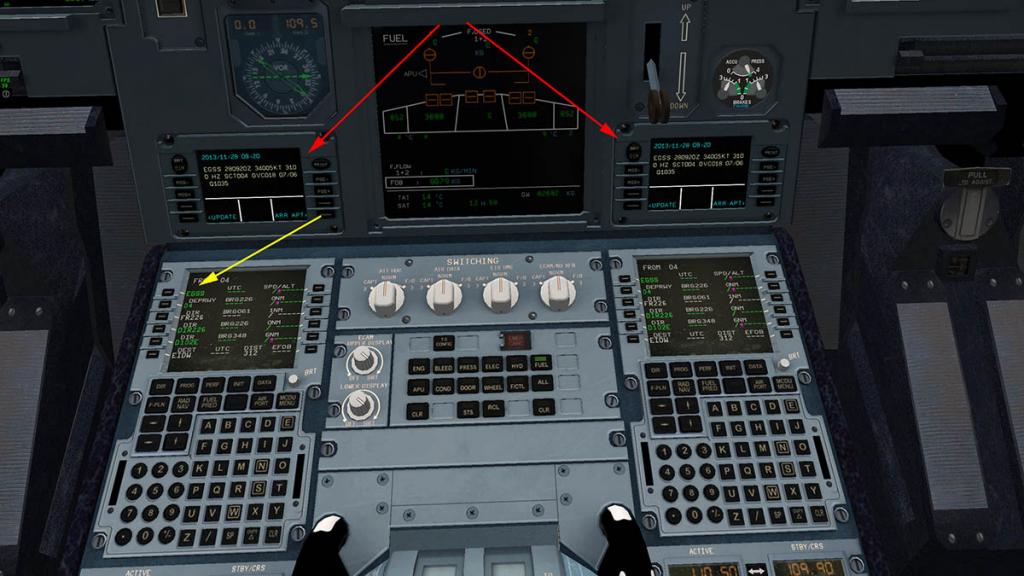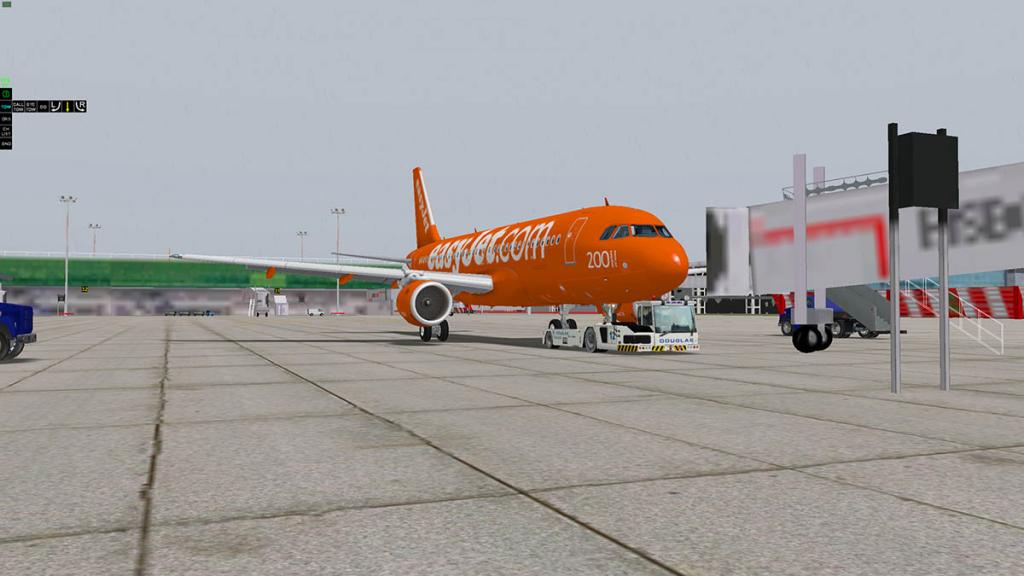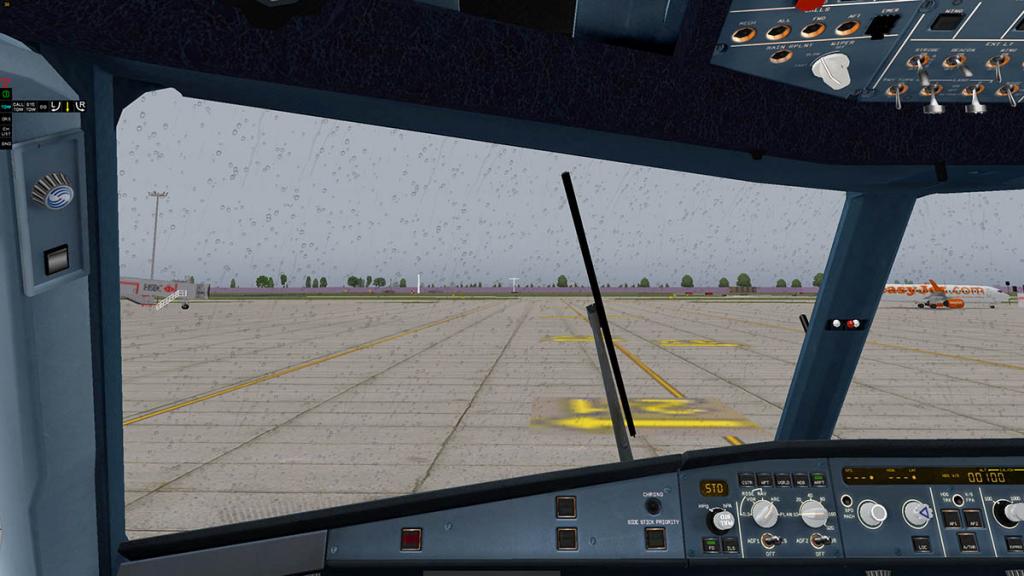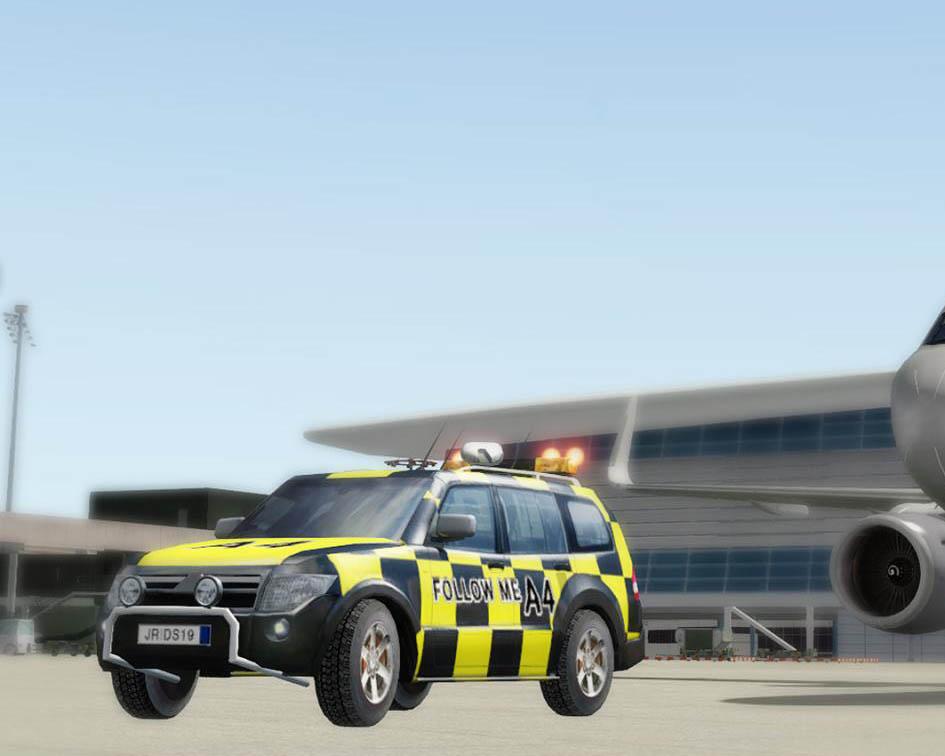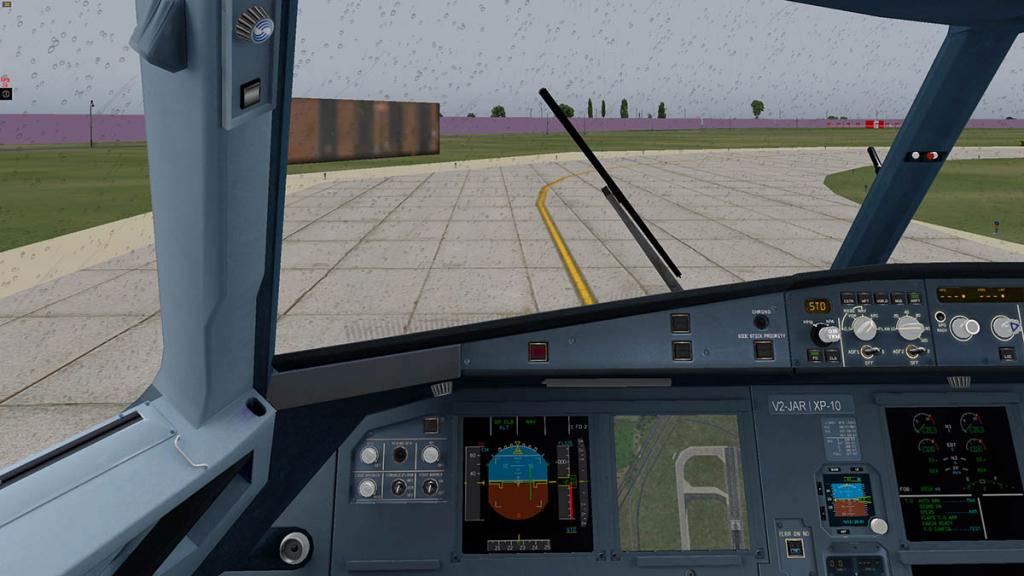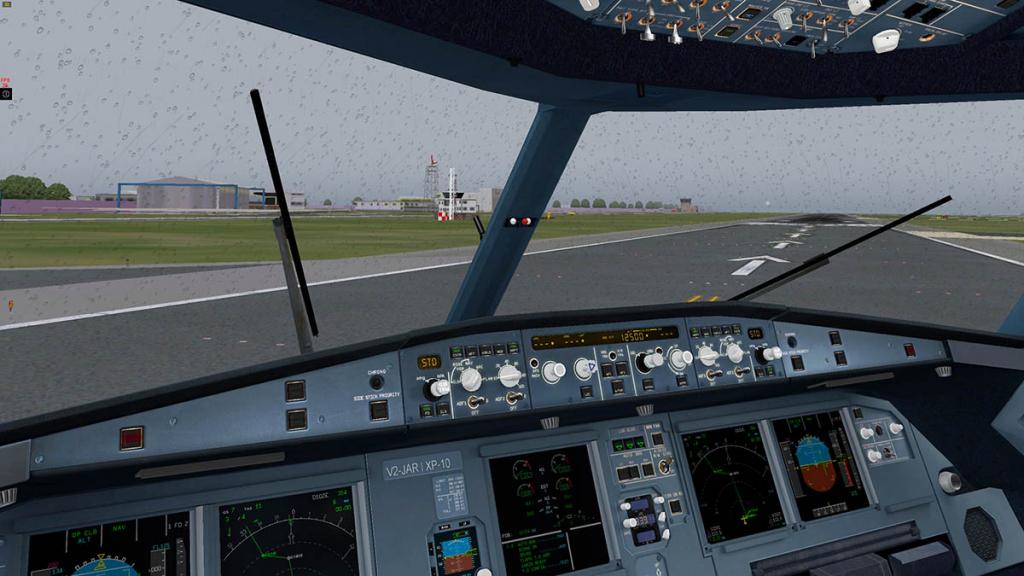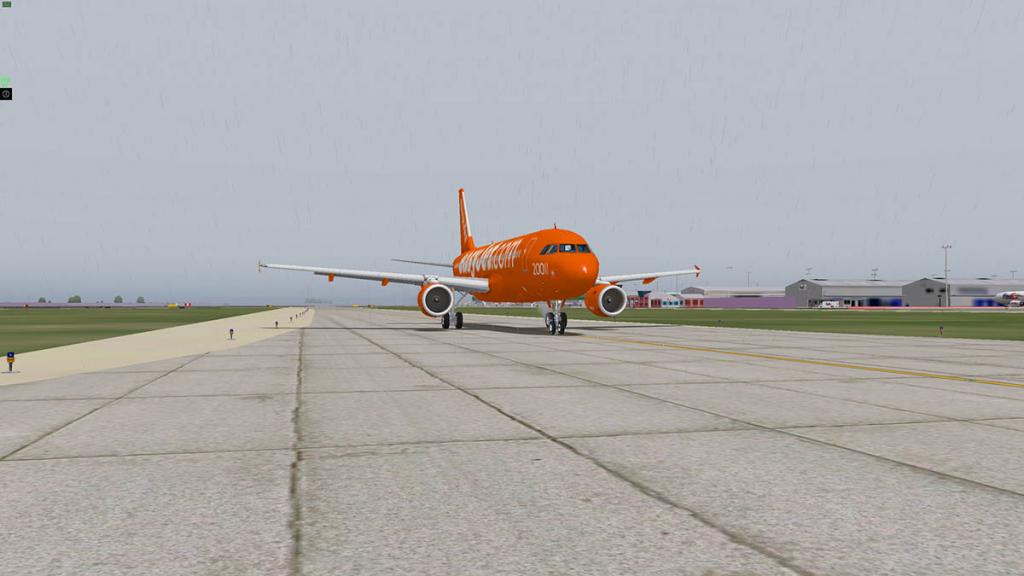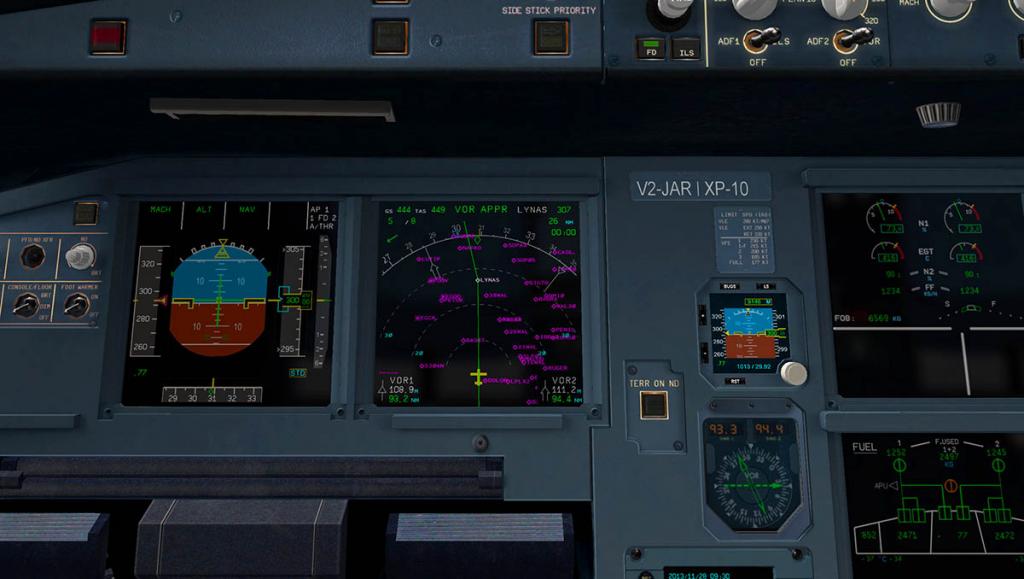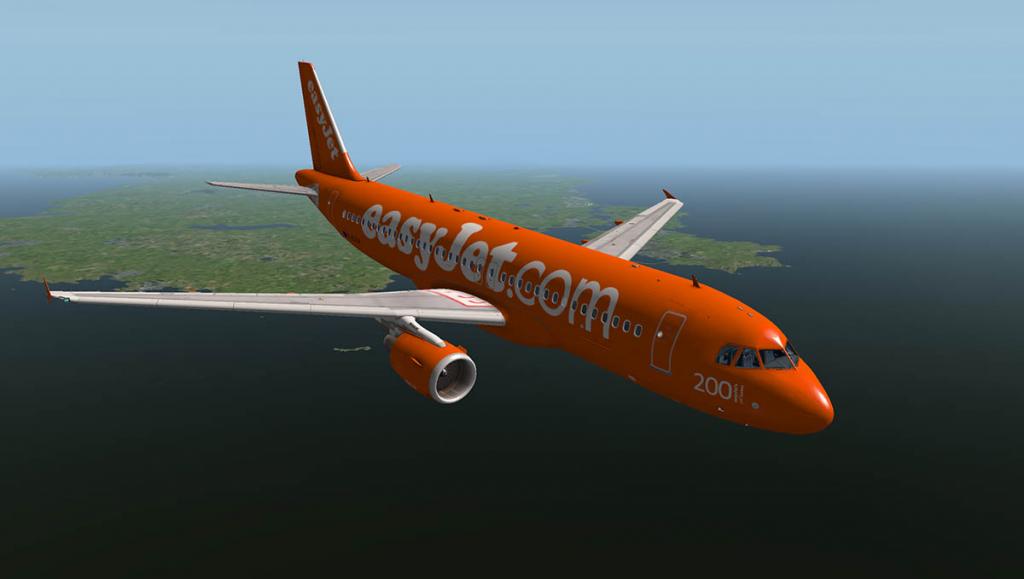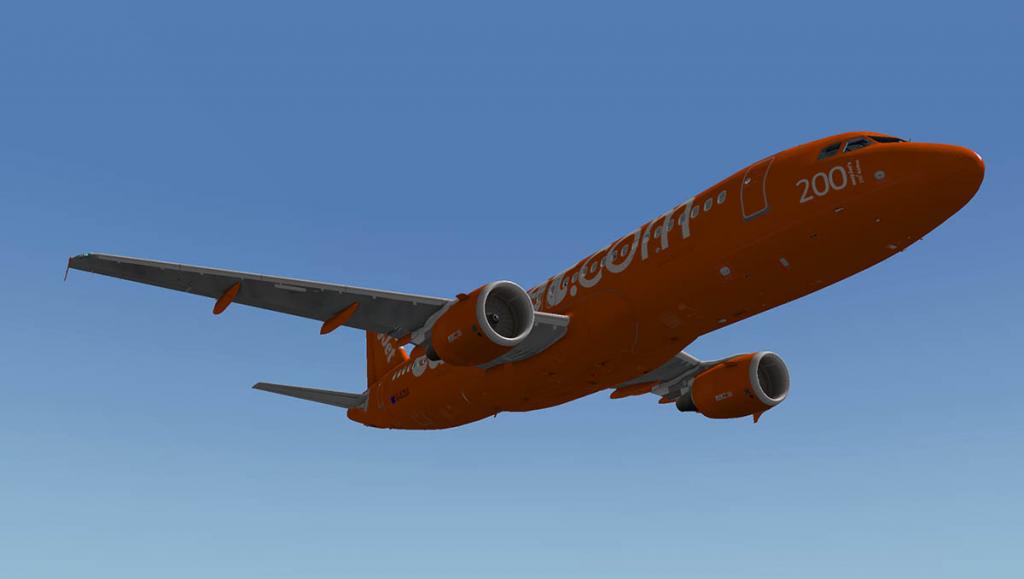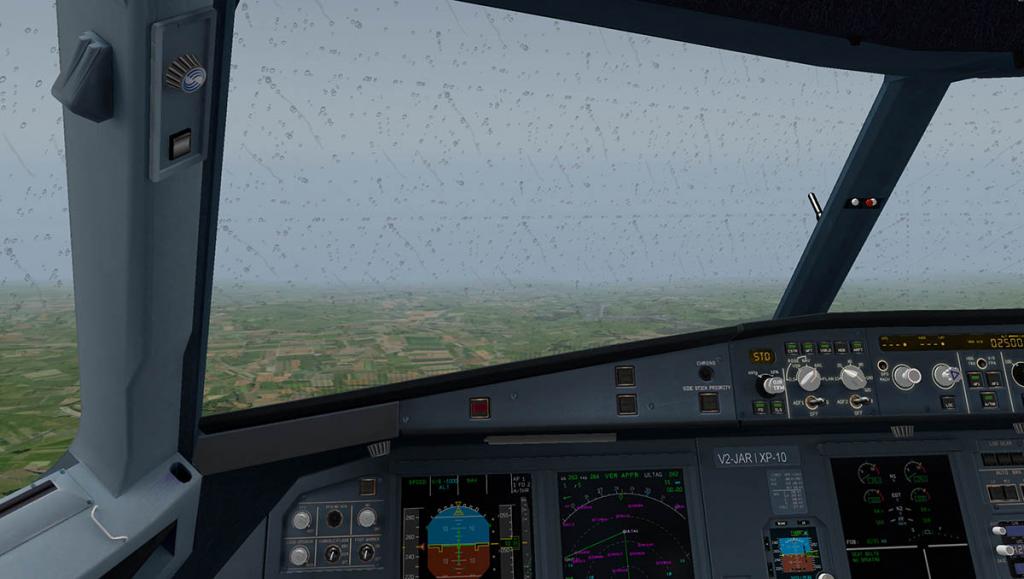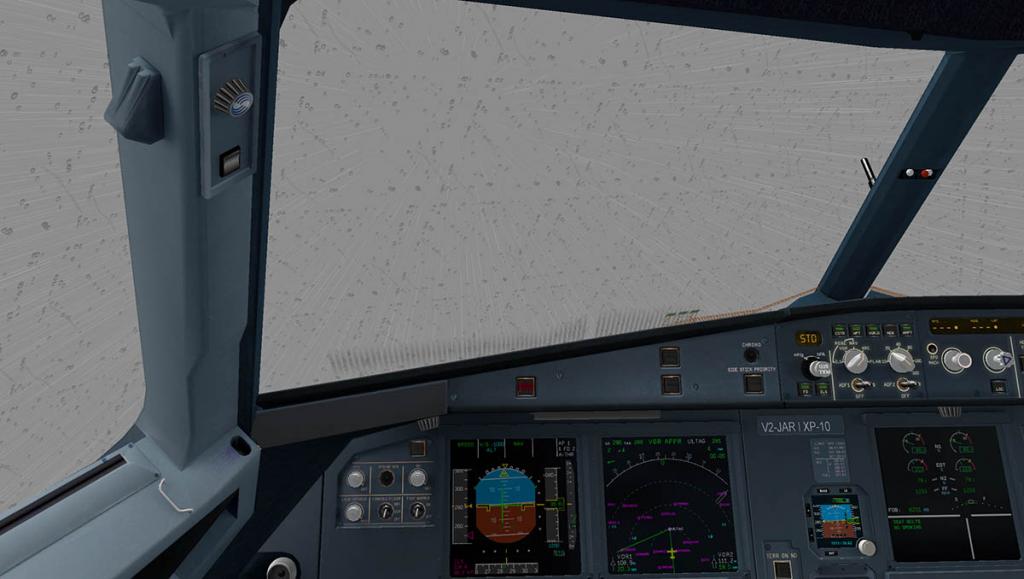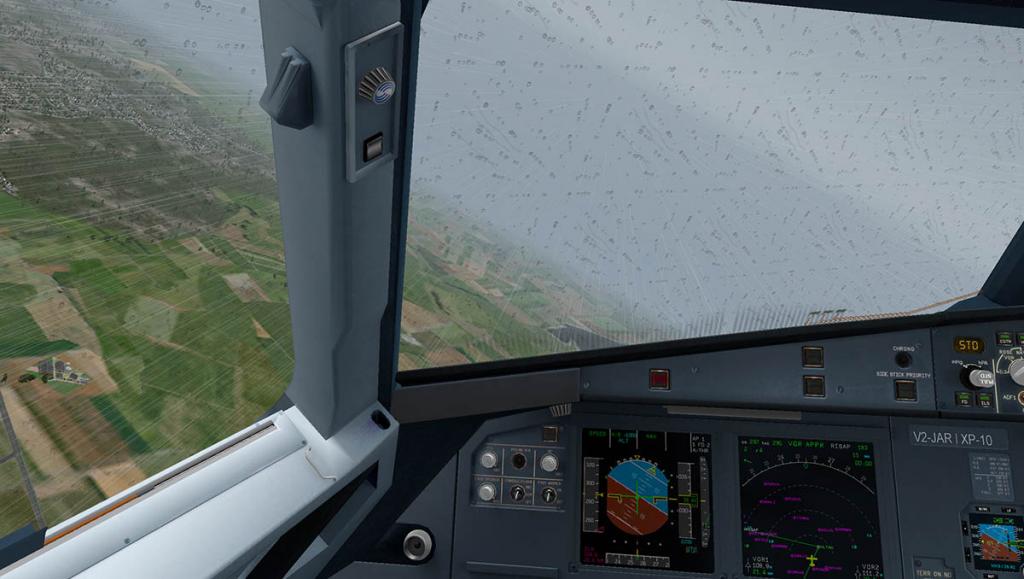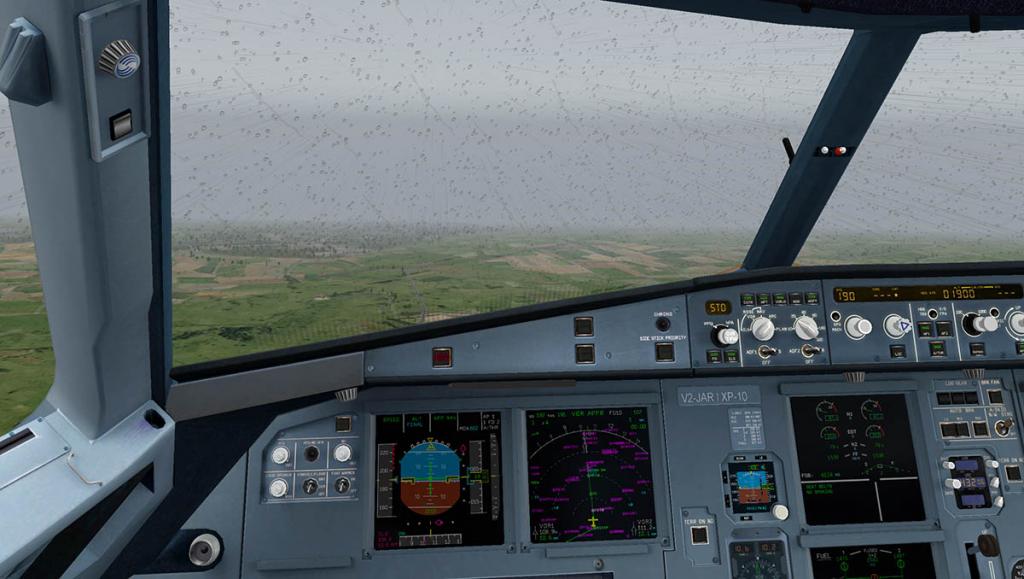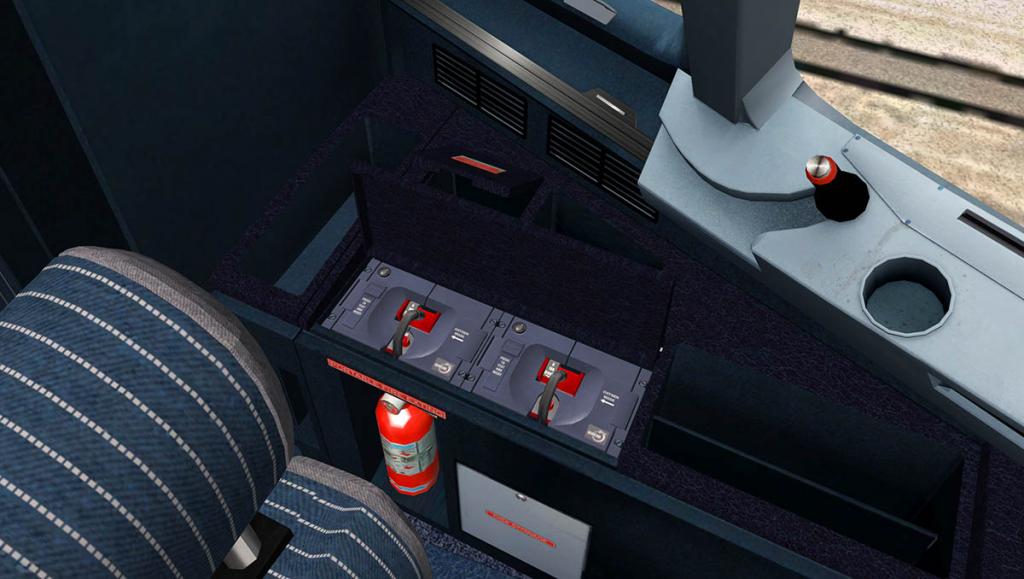-
Posts
2734 -
Joined
-
Last visited
-
Days Won
355
Content Type
Profiles
Forums
Articles
Everything posted by Stephen
-
Aircraft Review : Alabeo PA-38 Tomahawk II Route : YROM Circuits We all start our flying career somewhere. 95% percent of the time it is usually in a very lightweight aircraft or if you are really serious a trainer. Usually trainers are two seats (one for you and one for the instructor) and the controls are very basic and clutter free. The main aspect of a good trainer is perfect balance, spin recovery and power. Most learners usually have got their wings on a Cessna 150, 152 or 172, but one of the very best trainers around is the Piper PA-38 Tomahawk. Piper Aircraft wanted to share some of the trainer market, and so consulted many flight instructors not only in the design of the aircraft but also in the testing. The result was the Tomahawk, a T-Tail, two-seat, fixed tri-cycle undercarriage aircraft that has exceptional spin recovery that was better than the current standard bearer the Cessna 152. The first flight and introduction was in 1977, but it was noted as a 1988 model. The aircraft was highly successful with 2,4854 built when production ceased in 1982. Besides being a widely used primary trainer, it is also an effective budget cross-country aircraft for two persons with its spacious and comfortable cabin. Though it shares similar performance and costs of operation to the Cessna 152, the PA-38 has more shoulder room. It also has good cabin ventilation, using automotive-style air ducts. The 1981 and 1982 models were designated as the Tomahawk II (this version). They incorporated improved cabin heating and windshield defroster performance, an improved elevator trim system, improved engine thrust vector, 100% airframe zinc-chromate anti-corrosion treatment, better cockpit soundproofing, larger 6" wheels and tires for greater propeller ground clearance and improved performance on grass and dirt runways. Specifications : Maximum speed: 126 mph (109 knots, 202 km/h) at sea level : Cruise speed: 115 mph (100 knots, 185 km/h) at 10,500 ft (3,200 m) (65% power) : Stall speed: 56.5 mph (49 knots, 91 km/h) (IAS), flaps down : Range: 539 miles (468 nmi, 867 km)at 10,500 ft (3,200 m), (65% power) : Service ceiling: 13,000 ft (4,000 m) : Rate of climb: 718 ft/min (3.65 m/s) Alabeo has released the PA-38 Tomahawk. This is another quality aircraft from the Alabeo team. For its age the Tomahawk looks very modern for a non-composite machine. There are a few Tomahawks in Australia, but none flew with the RAAF (Royal Australian Air-Force) but I like the livery. First hands on and you quickly realise this is a very sweet aircraft to fly. It is the sort of machine that with a slight trim you can steer though the rudder pedals and just revel in the balance. Hands back on the yoke and the aircraft will do anything you want with just a slight input of movement in the direction you want to go, even downwards. The throttle response is in perfect relationship with the controls, so you find the aircraft so very easy to fly. You could sit your elderly grandmother in the pilots seat and show her the controls, and I am quite sure she could fly the Tomahawk quite easily. (what do I do now dear?) I doubt though you would want your grandmother to go into a spin. Here the aircraft is exceptional, The Tomahawk's GA(W)-1 Whitcomb airfoil addresses this requirement by making specific pilot input necessary in recovering from spins, thus allowing pilots to develop proficiency in dealing with spin recovery. And because of its stall and spin characteristics, the PA-38 earned the nickname "Traumahawk" from some pilots and instructors. The PA-38 is powered by a single Avco Lycoming O-235-L2C air-cooled flat-four piston engine, 112 hp (83.5 kW) that is required for its power to train pilots on the specifics of the important stall and spin recovery aspects of flying. First of all the Tomahawk climbs exceedingly well, It can easily pull seven hundred feet per minute to get you to a safe altitude. Slip the wing and put yourself into a bad spin. With ease you can bring in the strong power to pull yourself out of the spin and simply back into a near level flight. Impressive. You can see why the aircraft is a very nice long distance tourer as well. It will power along all day without you fighting the aircraft and so you barely don't tire at all. There are no Auto-Pilot functions but you don't need them here either. A little trim and your happy. Landing is a breeze as well, The landing speed is super low at around 75knots (stall is at 50knts). Even dropping the flap (twice) barely makes a ripple if your power setting is right. A quick look left at the airport and you can make your smooth turn. There is a slight cross-wind that I have to correct for, but otherwise the touchdown is just a small bump and touch of rubber. The aircraft is very good at touch and go's, even with full flap you can be quickly back into the air to go around for another practise. Our Trainee looks quite pleased with himself. Alabeo PA-38 The gap between Alabeo and aircraft from Carenado is closing certainly, Not only in price but in quality. This aircraft is more in style of a Carenado in every form. The design and detail is better now than ever before and that is even by Carenado's high standards. It is sublimely good in the way the rivets are completed and the panels hang on the airframe, The NACA duct is a prime example and so are the door hinges. The opening doors (Both Pilot's and Instructor doors) are wonderfully designed in the way they pull away from the roof section. The detailing behind the seats in the small baggage area with support struts Is also perfect. The main attention must be given to glass and their reflections, it is about as real glass as you could get. The shading is breathtaking but the detailing is more skin deep as we will see in the dark. The wings and high (T) tail section ribbing is also absolutely first rate. The propeller has some volumetric side view and dynamic shine effects. Put the aircraft into a low mixture setting and the shimmer of the low speed rotation is excellent., Undercarriage. Front and main is very simple in just struts, but the detail is excellent right down to the nuts on the brakes. With open doors you can see the excellent door detailing and the interior of the cockpit. Every area is well designed and textured. Cabin and Panel Inside the unpowered cabin the quality is again excellent, This Alabeo doesn't have that usual signature black hole as you look down towards the worn seats, carpets and metal heel scuff plates, The little trim wheel is expertly crafted and wonderful to use. The twin blinds are fully movable around both the front and side windows. The glareshied textures are so real and touchworthy that you can easily smell that 70's vinyl. And you easily want to put your hands around the lovely chunky yokes with thumb tabs. It does not take much imagination looking here to know what the real Tomahawk would smell and feel like. A nice touch is that when you hide the yokes the "Alabeo" icon fills the hole. Being a trainer then the panel is going to be very simple. It is but with a quality feel. The standard six instruments are added (to the right) by a VOR (2) The Omni-Bearing Indicator (OBI) and Automatic Direction Finder (ADF) bearing indicator, Below is a engine RPM and hours insturument and clock on the far left. 70's rocker switches for main power (battery/ALT), lighting and Pitot heat and Fuel pump. The fuel pump is interesting in that turn it on and then move the (big Red) Fuel switch on (or off) and the pressure shows on a gauge. You can select left and right fuel tanks here also. The radio stack is small but efficient, Standard radio set is set with a Bendix/King KX 165 TSO for COMM and VOR(2) settings, a KR 87 TSO is your ADF. (note a Technical Standard Order (TSO) is a minimum performance standard issued by the United States Federal Aviation Administration for specified materials, parts, processes, and appliances used on civil aircraft.) A Garmin GTX 320 is your transponder. It may seem a small stack but it is quite capable of navigating you across the country. The two position flaps are used via the long stick that like looks like a standard car parking brake, The actual park brake in under the panel. Note the beautifully crafted rudder pedals. The night-lighting is best seen from the air, A quick flick of the key and the engine stutters back into life, You actually have to hold the key on for a while until it finally chuggs into life, as only quick key turn will not give it enough time for the starter to give enough turns to fire it right up. Sounds are excellent in the same as Carenado 3d directional sound, There is quite a throaty power feeling at full under load power. Only issue I found was with the front turning wheel, It doesn't turn cleanly even at slow speeds, To go straight in the taxi it has to be slightly off centre in that I presume is to counteract the asymmetrical thrust from the propeller which is quite large at slow speeds. When you disconnect the steering from the rudder, It does not do so well there either. So it is slightly odd and hard to manoeuvre around. Night-Lighting External night-lighting is basic but good, You only have one landing light, and the Nav/Position lighting. The strobes are the new Carenado design. First thing that you notice as the low light comes into the cabin is the reflections on the glass, (side front), It speckles and it is excellent in its reflections of the markings on or in the glass, such detail is amazing, but it makes the flying very authentic. The dials are well lit and slightly (just up or down) adjustable by the knobs low down on the instructors side. I couldn't find any overhead lighting except for a nicely lit air temperature gauge and a Compass.? You can with the side menu (O) Options switch the panel lighting to be brighter or lower by the using the reflections options. You can also use this menu to transparent the windows and open both doors. The other © menu is the standard Camera menu, that gives you the various views and zoom function. Liveries You get the default white and six other liveries in very high quality HD Conclusions The PA-38 Tomahawk feels more like a basic Carenado than a Alabeo, and the higher price reflects that. Yes it is a basic aircraft, but it is still a fully functional one. Design and detailing is simply first rate (In fact I feel the quality has slightly gone up a notch). The glass here in the aircraft and in their reflections is simply astounding. It is a perfect trainer for the experienced pilot and also the beginner (Into simulation as well). The aircraft can be as easy or as challenging you want it to be, and still you can use it as a two seater tourer across the country. Some aircraft instantly become a favorite and the Tomahawk became very quickly one of them. I loved it the minute I felt the air under its wings. For value and quality it can't be bettered. Yes! the Alabeo Piper PA-38 Tomahawk II is now Available from the X-Plane.OrgShop : Piper PA-38 Tomahawk II Price is US$22.95 Installation : Download is 165.80mb, and installation size in your aircraft folder is 228.30mb. Alabeo supply Recommended Joystick Settings and Recommended Settings X-Plane10. However with my standard settings I had no issues. Documentation : Developer Site : Alabeo Review By Stephen Dutton 22nd January 2014 ©copyright 2014 : X-Plane Reviews Technical Requirements: Windows , MAC OS 10.7 (or higher) or Linux X-Plane 10.20 (or higher - 32 and 64 bit compatible) 4GB RAM/1GB VRAM - 250MB available hard disk space Version 1 (last updated Jan 20th,2014) Review System Specifications: Computer System: - 2.66 Ghz Intel Core i5 iMac 27” - 6 Gb 1067 Mhz DDR3 - ATI Radeon HD 4850 512mb Software: - Mac OS Mavericks 10.9 - X-Plane 10 Global ver 10.25 (final) Addons - Saitek x52 Pro system Joystick and Throttle Scenery - YROM - Aussiepak7 - Barry Roberts (Aussie Scenery Packages)
-
Utility : xFlightPlanner : Flight Planner for X-Plane You have a few hours to lose. Bored and really nothing to to do. Your mood picks up as you realise that you could go for a short flight, somewhere new, somewhere you haven't been before. "That would be fun!" It usually comes to a grinding stop, The thought of spending 20 minutes to create a new flightplan is going to take the shade off your time and you want to get straight to the fun. You could wing it? okay sorry about the pun. By getting your maps out and flying VOR to VOR in VFR. It is fun doing VOR radials, but mostly you know you are going to need a flightplan and the choices are usually rather old or hard. We all have our favourite tools, The "Goodway" or "SkyVector" or some really bad Google based tools that are so slow in loading and clunky that your mood deepens with frustration by the minute. The Goodway v4 is the most workable. But so old and out of date now I have to switch to a very old computer to a ) make it work, and b ) it is frustratingly slow to complete a full plan. A new 5 version has been vaperware as long as the word vaperware has existed. last sign of any activity was back in Sept 2012. "hello anyone out there?" So route planning can be a chore more than one of the more exciting things you can do in flight simulation. I quite like route planning, but I hate the poor interfaces and the thought of spending 20-30minutes to get a plan just to do a short flight is usually going to get the response of "ugggghh I need a route, more boring time wasted". So any new flightplanner is worth considering. upsidown (Arnaud) created a google version a few years ago. It was okay but very clunky and extremely slow in loading those google maps that was my choice in only a the very desperate of time of wanting just a very rough flightplan. The original (free) version has been completely rewrote and is now available (with a member account) an it still a free application for the basics. You do have now also the option of course to upgrade to a Sliver or Gold account (for a fee) that adds in many new and extra features. What are the initial benefits? Well it is fast, very fast and if you know the basics then you could run out a very rough route in a few minutes. Say here to there via that, that and that. and your in business. It is that quick. But it does have a lot of features that makes it very versatile to use. To see what you have we will do a medium route from (YBBN) Brisbane to (YSCB) Canberra in Australia. This is of course using the "Gold" account, to show you all the features that you have available. You must have an account to use the application and you sign in on the right flip out panel. The interface can be run on any browser including Android and iOS. Google Chrome is best, Safari is fine but the latest version of Firefox (26.0) is causing cursor problems. Most of the top interface is quite easy to understand if you use google maps and other flightplanners. Here is our route from YBBN to YSCB. The fixes are listed in the slide out sidebar on the right, of which I feel is too wide and takes up too much of the space of the map area. The interface however is very clean and very easy to navigate. To start at Brisbane (BNE) then use the search function, I found typing in YBBN created too many items in the list, Brisbane worked better. You can use the Google search as well in the right box. In finding the correct airport, you can then insert it as a waypoint in the plan.(The application does when you start ask for your current location. This will place the map in your local vicinity) On the top bar (right) is a set of buttons for the A N F are Airports / Navigation-Aids (Nav-Aids) / Fixes (waypoints) These when selected show the airports/Nav-Aids/Fixes on the map. T S R H are Terrain / Satellite / Roadmap / Hybrid which are all google map tools. L is Low routes and H is High routes. There are two zoom tools, the standard google slider and another - and + (which depth counter) in the tool bar. About is about the application. Selecting YBBN will give you the information of the airport by pressing i. I selected the Low routes to see my options, or the high routes in that they are not much different except in the colour. By selecting the arrow on the route it will give you the route information. Zooming out the routes don't go completely over the whole map. There is a bug as well in that they don't completely disappear when switched off (unless you restart the app.) Adding fixes is then very easy in selecting and adding them to the sidebar, The route is noted and also is the route direction. My BNE departure is via MELOW and MANLI - SID (Standard Instrument Departure). There are no SID or STARs, but if you have the information handy then it is not to much of a problem. Distance is noted to the next waypoint, and it is very easy to add in your altitude (VNAV) as you go, or go back and fill them all in as one set later. I find adding altitudes laborious, mostly with the "Goodway" interface, here it is very easy. Adding waypoints and finding air-routes is easy as you cross the country. You can easily do a rough and dirty flightplan very quickly. In minutes in fact. YSCB Northern approach is via YASS TWO STAR (Standard Terminal Arrival Route). It is a very simply arrival via only GOONY. Information available about your destination is quite comprehensive. With Airport runway information (width, Length, Surface), COMM frequency's and available Nav-Aids in the current area and in range, and also METAR weather information. The rest of the arrival fixes is straight forward to insert to land on RWY17. All that is left now is to download the FMS (flightplan) to your computer. To a point there is nothing really unconventional with creating this flightplan, except for possibly the speed. Some Flightplanners don't allow you to save your flightplan and that can be annoying in the fact you have to do it all again. If you have the Silver and Gold account you can save your flightplan to a database. Clicking on the hard drive icon will reveal all the flightplans available in the database. Click on the tickbox of "Show only my flightplans" will reveal only your routes. You can then download the route back into the application. Also you can can download the route to your computer or see the route information. But this is not the biggest advantage and feature that xFlightplanner has over mostly other planning applications. The biggest problem was that if you wanted to change your flightplan. It became a situation of either starting from scratch or just using the flightplan you have and flying the changed route manually, The "Goodway" was a real pain if you want to swap runways or landing direction. It was usually a restart from the beginning and the loss of your long beautiful and composed route and a lot of complaining. Worse was then you realised that you original route was going to send you headlong into a mountain. To fix that you had to go back to the waypoint before the change and start stacking them up again... more pain for just the change of one or two waypoint's on the approach path.. So we have a north approach to YSCB, but what if the wind changes and you need to land from the south? The STAR for the change of runway for the southern approach to runway 35 is called YASS TWO ALPHA, BRAVO and that takes you down to LANYO. You have another issue to deal with here also in the fact that Canberra is set in the middle of a ring of of mountains and hills? Being a Google map you have the option of seeing the terrain, of which again was a major (and dangerous) issue with the "Goodway" with no view of the actual land mass. You can click on the LANYO waypoint and it will appear in the side bar but under YSCB which means the route is now distorted south. The difference with the xFlightplanner app is that you can move the waypoint up to the correct position you need... In this case under the YASS fix, but above the airport YSCB. Better still you can then remove the odd waypoints not required any more by the top tags. Now it is quite easy to add in and move into place the required fixes between LANYO and YSCB of HONEY - MENZI - FADEN - CB505 to create the correct route to RWY35 (DALEY is noted on YASS TWO A. B but it is not in the Flightplanner). So it is quite easy to change any flightplan at any time you want to, or add in or takeaway and new or old fixes or even a different runway approach to get the plan exactly the way you want it. Then you can collect the information you want if you are either downloading to the computer a FMS or using the data to programme your FMC. You can now also re-save your new plan in the database in case you require a southern approach in the future. You can also change the route colour from Blue to yellow to red or black. Want a new route then just delete or reset the route. There is a help section that shows you keyboard shortcuts and tips. You can also insert a flightplan you have not created. Just select "Load a flightplan" button (orange) and cut and paste in a text-editor version of your flightplan. Which is extremely handy if you want to make small changes yourself. Here I am loading in my YBBN (Brisbane to Roma) route, because I want to reverse it. You can do this in the application and a simple save of the reversed route that is now ready for a download to your FMS folder. You can also adjust the size of the map to the size of the route. The route arrows reverse direction and the side-bar list is reversed. Free Version includes: NAVAIDS and airports Display all navaids and airports on the map. Basic information Display basic information for airports and navaids. Download flight plans Download your flight plans as .fms files. Google Maps search Search anything on the map with Google. Reverse flight plans Reverse waypoints order in your flight plans. Change route color Choose between different colors for your flight plans. Auto-center map Change auto-center map settings when adding waypoints. Silver version - Silver Monthly $USD 1.99 / Yearly Subscription $USD 19.99 includes: Search airports and NAVAIDS database Search the local X-Plane airports and NAVAIDS database. Save flight plans in database Save an unlimited number of flight plans to your account. Access the community database Access the flight plans database. Download, edit and use community flight plans. Runways information Runways information, including length, width and surface. Distance and time Get exact distance and flight time for a given average speed. With taxi time calculation. Adapt zoom to fit flight plans Click to get a quick overview of your entire flight plan. Map Info Tool Click on the map to easily access all NAVAIDS and airfields in range. Gold Version Gold Monthly $USD 2.99 / Yearly Subscription $USD 29.99 includes: Live METAR reports Get live METAR reports from over 9000 airports. Load existing flight plans Load your existing fms flight plans on the map. Edit and save them. Low / High En-route airways Display low and high en-route airways on the map. COMS information ILS, GS, Approach, Departure, Tower, Ground and ATC frequencies where available Find NAVAIDS within range Easily list navaids within range around airfields. Export flight plans to text See your flight plan as text to easily copy its content in an existing or new fms file. Conclusions xFlightplanner slightly buggy in places, but not overwhelming in a way to want you to go somewhere else find another flightplanner and there is no doubt these few niggles will be quickly worked out. It is very easy and quick to do flightplans. But the biggest asset here is certainly the flexibility to change those plans after creating a route. In reloading them and adjusting them to a new flightplan is going to keep you happy for hours. The interface is very good and nice and clean, except for the over large side-bar which must be worse on a laptop or iPad (of which it is, as I checked) than my "27" iMac. The biggest consideration is cost. I was faced in paying $US29.00 for the 'Goodwayv4" and finally dropped the cash because I needed the application which was very good at the time in XP9. It was a worthwhile investment. And it has been invaluable to me as a user. But to spend nearly $30 bucks on a... flightplanner? So your choice is really to either do it quick and dirty and use the "Free" version or go all out for the "Gold". Most if not all will however go for the former and not the latter, and that is shame as the application is very good and very flexible. xFlightplanner is avaliable here : xFlightPlanner - The Ultimate flightplanner for X-Plane Review by Stephen Dutton 21st January 2014 @Copyright 2014 : X-Plane Reviews
-

Aircraft Review : Antonov An-2 by Red Eyes
Stephen replied to Stephen's topic in Classic Aircraft Reviews
83 years old and your flying "Annie", your a brave soul sir, lovely you enjoy it so much. The ground blocks are on the first menu as recoil devices, annoying in that you have to switch them off every time you want to fly. The fuel load is on the "weights and balances" but you have to turn on the noisy fuel pump first.. The menus are in a zone in the very centre of the glareshield .. All items are noted in the post above...I am not really sure about Linux. I would ask red eyes directly on that one on the dot org AN-2 Support link above in the post.... SD -
It is a complex World The overwhelming thing I have noted on X-Plane Reviews over the last six months has been "you will need to spend time on this aircraft". It is an interesting point to consider. Being a reviewer you have certainly have a set of skills in debating an aircraft, but you don't today have the luxury of time of a Monthly or Bi-Monthly publication. The Web is immediate and constant. The scale of simulation development over the last few years is also worth considering. In Xplane even a few years ago most aircraft systems and functions were still based around the fundamentals of Plane-Maker and if you were really brave then rudimentary add-on plugins. Ben Supnik noted in a recent FlightSim interview that: "At a certain level of systems modeling detail, you need a plugin to implement the exact systems model of the real airplane. This is particularly true for airliners, where the systems are incredibly complex." and that in the future projection of X-Plane in five years he noted that: "I think the strength of Laminar Research is not that we make good guesses as to what will happen in five years - rather it's our ability to respond rapidly and try new ideas as soon as they seem even remotely possible. So I don't know where we'll be in 3 years"... Both comments are very interesting to weigh up, one commentator noted on his site that Laminar Research had run out of ideas and has lost it's way... Thus the comment. I agree but only to a point on that in that as I have noted that in some areas Laminar Research do need to as the American's note "To step up to the plate". The basics require attention and (weather and ATC) and they needed to be addressed far more quickly than 2 years or so after the X-Plane 10 version was released. As for regional art Ben Supnik notes this: "We definitely want to build a complete set of basic autogen before we start regionalization. Unfortunately we're just not going to have European-style autogen that soon; we are still working on the first set of autogen and it's a very labor-intensive process. I think there is a big third party opportunity here; the simulator can handle regional autogen now if someone were to make such an add-on. We definitely hear the strong demand for it - it's one of the most requested features we get. (Unfortunately we are just limited by development time.)" The problem is and as good as Alex (Gifford) is, and we certainly admire his excellent work. There is still only just one Alex?... Laminar Research can spend hundreds of thousands of dollars on Charity work (and I support that), but won't spend a few dollars to employ a team or a studio of artists to create this art for the very product we are paying for. I found a few years ago a full set of Arab buildings (that would look really good in Dubai!) and I understand they are not in the correct format needed, but this stuff is still out there and available and cheap by the standards of the simulator.... Ben Supnik notes that we can have that now? But I do agree with Mr Supnik on his main comments and why the commentator is missing the point on Laminar Research in why it does things in the way it does. You can't see the future in what will be released in technology even in one year and never mind in what it will look like in five years, all software companies that survive in this data age is that in the best they are reactive more than proactive. In the years past a company will spend years before releasing a product in testing and quality control to meet very high standards. That model has gone out of the window with most of the huge software companies now releasing software in a rudimentary form and using us "crowd forming" to work out their own problems. The trick is how quickly the company responds to the issues and in that environment Laminar Research's track record is very good, but it puts the basics aside to do so (because of limited resources) and that is not good in the eyes of the simulation community. However Laminar Research is also very good in giving us the latest developments now and that is why we have a very good progressive simulator that is becoming world class. But it is Ben's first comment that is the most interesting. When I started in simulation if you knew the basics of Xplane's default systems then it was pretty easy to covert quickly to another aircraft. Take the default FMC for example. The basic default FMC (Flight Management Computer) is good, but it still was and still is basic. If you moved to another aircraft in programming in a flightplan which was was quite easy, and then you could also save a full folder of routes that could be used in almost every aircraft in Xplane. If you today have purchased the high end aircraft with the authentic FMC, then your flightplanning becomes a whole new different level of systems management. Not only are they highly complex, then most also have various different needs on programming, to a point I accept that the actual flightplanning flow is the same in the way that you use and programme the units, they are still however very highly complex. If we demand this sort of complexity then there is a very large learning curve to understand the systems. You can't do this with just a few flights... In the real world of aviation your head is usually stuck in books as you wait for the results of your latest medical. The real guys are working just as hard as we are to understand the same systems. The difference is they will sit on one type of aircraft for years, and that depth of experience will mean they will know that type inside out. We want it all now and can fly almost anything that our heart desires. A person noted on this site recently "SSG, please make a video tutorial on how to use the FMC." on the Boeing 748i. Well kid here is the bad news "there are no short cuts" if you want to fly the Boeing 748i correctly and well then there is a huge amount of homework to be done. You can easily copy the button pushing but to really enjoy the aircraft it will mean hitting the books and flying the B748i for months. Then add in the release of the Boeing 757 and your workload has just tripled as the manual alone is 793 pages long. Mr Frooglesim who has suddenly found the delights of our simulator notes that on "how complex" the Boeing 757 really is. And he has a point. It won't take you a few days here to understand this aircraft, but months... even years. To simulator junkies these aircraft are to be slain like a dragon and to be conquered and mastered. But how far are you really be willing to go to really be a real professional on that aircraft. Once a week? twice a month?... every day? We don't have the luxury of time to spend that long in the cockpit in the same way real pilot do so day in and day out. But a commitment is certainly needed. I spent a whole year flying the FF Boeing 777 last year and do I know it down to its last rivet, no chance. In fact my learning curve has barely started in knowing every system and every pipe in the aircraft. It will take years to fully understand the complexity of flying such a huge machine though out all its different weights, distances and the various weather conditions to really be competent on the type. But the real experience is getting to the point of the "feel" of the aircraft. We try to find that level quickly in doing reviews. We are lucky as well because we run simulation after simulation (day and night) to find out the most information we can to explain the aircraft for you to make the best judgement on the aircraft. But usually at the end of a review you still need to fly the aircraft over and over again to get to the point of getting the right feel and usually then it is very hard to move on as you are now really liking (and wanting to stay) on the aircraft. But it can take weeks sometimes to get to this point. The problem is if you have a lot of complex releases in a short time there is a lot of research to do. The SSG Boeing 748i is a case in point... When it was released (in beta) form it was a mess. My computer could simply not run the aircraft. There is and are many bugs in beta aircraft. Many users want to be beta testers to get their hands on an early product (usually for free) but I don't recommend it, beta aircraft are nasty and very far removed from their final form. If you are really good then you can give the correct feed back and that is what beta testing is all about. As I tend to go very deep and fly early aircraft a lot, then I usually hit the problems earlier than most. Most times it is usually just a gut instinct, in that "it just does not feel right". But you have to first divide the point of, is the problem the programming or is the problem you? It is very easy to disguise a problem by having a powerful machine. If your computer is powerful with huge amounts of VRAM, then computer will override a lot of the faults, as it will easily absorb bad heavy textures and poor overweight modeling counts. But the B748i was a very different machine in the fact it was physically very big in Xplane. If had flown Peter Hager's huge A380 you would understand this effect, and you have to adjust your render settings to offset this. But with the B748i I had a double whammy. Laminar Research had just updated the ground textures in beta 10.25. And they have a strange effect on certain aircraft. In flying the huge B748i I found the aircraft reacted badly to these textures. With a large group of these textures on the surface the frame-rate would simply plummet to new lows. (as the computer worked overtime to process not only the huge model up in the sky, but the complex heavy textures on the ground) What I found was that you had to set the aircraft up very tightly with the render settings to eliminate the effects. There were a few bugs (in the FMC) as well that diverted the problems, but once it was all sorted and most importantly with weeks on the aircraft it became very useable and flew very well. I spent many flights in the Christmas - New Year break flying the aircraft over and over and the more time on the machine then overall better it became. In this case It was my adjustment to the aircraft. But the case in point is that there are so many variables in the way we use aircraft now in X-plane is the fact that our sweet spot is a constantly moving target. And this is the complexity that we are faced with running simulation in this era. The simulator is highly complex in the way it interacts with your computer. Gone now are the days of Xplane9 and default aircraft running around on a standard set of profiles. Xplane10 is highly reactive, but the plugin monsters that now prowl our screens are highly demanding of resources and more importantly of our skills to understand and learn them to a high degree. You have to really understand of how high the level has moved in only a few years... and it is going to get worse. Choosing and spending time on one type of aircraft for a long period can help your skill level in many areas. One is that you will come to really understand the aircraft and enjoy it more to its core (That is why the x737 is so popular), Two you can give yourself a bench mark to the effects of the changes set out around you. If the simulator changes then you will know because the aircraft you fly well is different in certain aspects. Resetting the simulator to return to same position after any Xplane changes will mean you will have the correct level to benchmark over other aircraft you are flying or notice how they are also being affected by the changes. If the aircraft is upgraded by the developer then you can see if it is a forward or backward release. Overall these new generation of plugin driven aircraft demand time and commitment to deliver the sort of simulation that is our Holy Grail. So Ben Supnik is right in that Laminar Research can only react to the changes and not forge a certain path. He certainly doesn't know where the next change will come from, and only that to adjust the simulator to suit the demands is the best policy to cover, as this is the really the new way that the world is right now, highly complex and always constantly changing. In flying we now have amazing but hugely complex aircraft to fly. We want simulation to reflect the real world, but the real world is highly complex. But mostly to fly these machines you going to have to work hard, they demand a higher level of skill not only in operations, but in systems management and knowing the aircraft. The results are simply overwhelming, we want the realism and authentication of the machine, but that does mean they also demand the same level of commitment as they require in the real world. Stephen Dutton 16th January 2014 ©copyright 2014: X-Plane Reviews
-

Aircraft Review : Boeing 748i Advanced by SSG
Stephen replied to Stephen's topic in Airliners Reviews
I do explain on how to insert SID and STARS in the Review and do a full route. It is a little messy and only plenty of practise would help you understand the whole idea... When you EXEC (execute) you are sending the flightplan to the Autopilot. To activate you just press the LNAV button... -
Scenery Review : LEVC - Valencia Manises by DAI-Media Route : LIRF (Fiumicino, Rome) to LEVC (Valencia Manises) Valencia Airport in Manises (IATA: VLC, ICAO: LEVC), also known as "Manises" Airport is the 8th busiest Spanish airport in terms of passengers and second in the region after Alicante. It is situated 8 km (5.0 mi) west of the city of Valencia. The airport has flight connections to about 15 European countries and 4,599,990 passengers passed through the airport in 2013. Valencia is a very popular port in the fact that the Americas Cup and Formula One Grand Prix races were held in the city. The airport has one terminal and one runway. The former runway 04/22 is not in use and has no ILS but has a helipad at the southwestern end. (Images GoogleMaps) First Impressions Departure was by Fiumicino's (LIRF) runway 34L to a cruise altitude of FL325. The service from LIRF to LEVC is only around 1h,50m. You cover across the Tyrrhenian Sea to Sardinia and then to cover the Island of Majorca, then direct to Valencia on the east coast of Spain. A side note on the images, here we are using the Aerosoft "skytools" and the effects are very good in - Sun Halo and 3d clouds. The set I am using is the "chilled air" and "theme 1" settings. And the effects speak for themselves. Entry into LEVC is via "Mulat" (RIKOS -> TULNO -> MULAT) which is a straight forward approach. We are using runway 30 and arriving from the east. 12/30 3,215m (10,548ft) Asphalt The Valencia airport is situated a few kilometers (8K) inland, and you cover the south of the city on your approach. The first impression is how well the airport is integrated into the Xplane scenery. Major roads cover the (approach) Eastern boundary (leading to the southern) and northern boundary of the airport. The city is very closely built in to the airport as well. DAI-Media were always very good at this sort of landscape intergration were as the effects between the custom scenery is perfectly aligned with in the default scenery set out around it. Their process of using photo underlays in being matched to the default landscape is very well done. As a visual approach to LEVC this is very highly rated. You have to be aware however that if you have your default settings for buildings and distance set to high it can use a lot of frame-rate power. The airport itself is very frame-rate friendly, but to get the most of the great effect of the approach you must find the best balance of having your default settings then set to get the best outlying coverage you can. Runways are extremely well detailed with runway grooves and texture. All runway (and taxiway) lineage and markings are excellent with great visual rubber patches on the turns at intersections. Closer to the single terminal the direction markings are first rate. The terminal is a bit of old and new as most European Airports usually are. The standard terminal in central but to the right is a new section and left is the newer soaring curved roof design that is the new regional terminal, which includes extended carparks and larger apron area that was recently constructed for the 2007 America's Cup. There are six airbridges on the main terminal that has built in "autogates". The gates are very well done but are not set to work correctly. You have to come in off the center bay line to align with the system. In the B757 the alignment device ends up somewhere in the first class compartment and the bridge ends up halfway across the aircraft (I will note that the autogates do require the aircraft to be set correctly to align with the gates), but the x737 (which I know is correctly set) is just as badly set out. Your Co-Pilot would have to hang himself outside of his cockpit window to send the instructions to the manoeuvring pilot to align the aircraft?... all alignment system boards are way to close to the aircraft and all settings are not aligned to the bay markings? The ramp areas are excellent for gated bays and remote parking. There are well placed static aircraft of the correct airlines that service the airport, static aircraft textures can be a little blurry on lower render settings. The overall feel on the area is excellent in that it is well equipped with plenty of visual stimulation without it being overloaded... in other words the right balance. Terminal and Central Area The terminals look to be three buildings but are in fact just one inside. The older cream building is central and the newer glass and steel structures are built on each side. Set out behind the terminal is the well curved and set in carpark, that makes the whole set look well connected and visually appealing. the trademark terminal roof louvers are well set out. Design work here is excellent with all details well noted, certainly on the newer buildings and their curved roofs and glass areas. The slates on the new right building can be buzzy at points, but that is the way the building is constructed. There is not a lot of really highly detailed texture work here, but just very good 3d modeling and building design that is one stage above the very good but not totally excellent in the scale of almost everything like rubbish bins and building piping which is the very small stuff that make some of the latest scenery so highly detailed. That said, the scenery here is certainly very good in its design and has very good signage, trees and good carparking details. All airport buildings are present and many of them slip into the standard default scenery area, in then creating a seemless transition from one to the other. Traffic ramps are well situated between the terminal and the carparks, there is a some traffic around the inside of the airport but not in the central area. The Control Tower is at rear of the terminal is a stumpy affair that has blind spots on some areas of the ramps (the same in the real tower). It is noted to have your "runways follow contours" switched "on". If not you get some building float (carpark). Ramp side known as "Apron North" there is a lot of detailed work in bollards, caution fences and ramp equipment with plenty of vehicles. There is a lot of space to park the aircraft in the bays, but also plenty of visual equipment to make you feel you have arrived. The main traffic road is well detailed but there is no ground traffic to create any movement. Cargo and General Aviation West of the main terminal area is the Cargo area and GA faciities. By world standards Valencia's cargo hub is quite small, but very busy. The ramps are well marked and there is plenty of space to park your freighter. Like the rest of the airport there are some nice details like pallets and loaders and trolleys but not so much you have to wonder where to site your giant Boeing 747F. Plenty of detail here at the rear with trucks loading and parking space. All airport areas are well fenced with great detailing. Small details I admit, but they make up the difference between good scenery and excellent... and here it is excellent. The General Aviation area is quite small and Valencia is not really noted as an GA airport. There is a parking area and a refueling area and an Aeroclub (Real De Aeroclub Valencia) large hangar. A single row of hangars also are sited in this area with a large covered (long term) carpark set out behind. Further west is a Golf Club and links that is very well laid out (It is known that police pull out plane spotters out of the links on a regular basis?). Apron South As noted runway 04/22 is now not in use but it used to connect over to the South (Apron). It is the main base of Iberia’s regional carrier Air Nostrum which have their base here and the office and maintenance buildings (hangars) are situated over on the south apron area. There is a small tower and a Cessna dealer noted here also. Ryanair used this area as a southern European maintenance base but with drawn a few years ago. Latest news it that they are back but only in a smaller capacity. There is a big helicopter pad and facilities and Iberia also uses the area to park up and store their spare aircraft. Night Lighting Night lighting is uniformly excellent. Great spot lights in the dull daytime with great spread lighting over all the ramp areas with HDR switched "on". Reae terminal lighting is different and looks excellent in contrast to the bright ramp lighting. Terminal building lighting is good and slightly bland but not the focus here. The regional terminal building is more gradiented in its glass and there are people situated in some windows. Cargo and South Areas are similarly well lit, with not only tower lighting but building down lighting as well. Runway approach and runway lighting is excellent. Taxiway lighting and direction signs are perfect and the ramp areas are also first rate in throw and brightness. The huge amount of default highway lighting and local lighting around the airport gives it a great view in any direction. A later in the day as I prepared to leave LEVC the weather changed quite dark and moody. The images here are worth looking at with the new "skytools" and the excellent lighting at Manises. The ground lighting reflections on the low lying cloud layers were very authentic. Operators Most services out of Valencia is mostly regional, in fact 50% of flights are to Madrid? A lot of flights are also seasonal, mostly to northern European ports. Air Algerie - Seasonal: Algiers (begins 26 June 2014) Air Berlin - Palma de Mallorca Air Europa - Palma de Mallorca, Paris-Charles de Gaulle, Tenerife-South Air Europa - operated by Swiftair Madrid Alitalia - Rome-Fiumicino Blue Air - Bucharest Darwin Airline - Geneva EasyJet - London-Gatwick Iberia operated by Air Nostrum Asturias, Barcelona, Bilbao, Bologna, Gran Canaria, Ibiza, Madrid, Málaga, Menorca, Palma de Mallorca, Seville, Tenerife-North, Seasonal: Arrecife, Funchal Lufthansa Frankfurt (begins 30 March 2014), Düsseldorf Niki - Seasonal: Vienna Royal Air Maroc - Casablanca Ryanair - Beauvais, Bergamo, Bologna, Brussels (begins February 2014), Charleroi, Dublin, Gran Canaria, Hahn, Ibiza, London-Stansted, Málaga, Marrakech (ends 1 October 2014), Memmingen, Moss/Rygge, Palma de Mallorca, Pisa, Porto, Rome-Ciampino, Santander, Santiago de Compostela, Seville, Tenerife-South, Treviso, Weeze - Seasonal: Bristol, Manchester S7 Airlines - Seasonal: Moscow-Domodedovo SmartWings operated by Travel Service Airlines - Seasonal: Prague Swiss International Air Lines Zurich TAP - Portugal operated by Portugália Lisbon Transavia.com - Amsterdam, Eindhoven, Rotterdam Turkish Airlines - Istanbul-Atatürk Volotea Asturias, Bordeaux (begins 2 June 2014), Nantes Vueling - Brussels, Paris-Orly, Rome-Fiumicino, Seasonal: Amsterdam, Ibiza Wizz Air - Bucharest, Cluj-Napoca, Sofia, Timişoara Wizz Air Ukraine - Kiev-Zhulyany, Lviv (begins 30 April 2014) But you do get a nice selection of operators from around Europe and Eastern Europe. Africa is a nice bonus as well. In domestic including Portugal then there is also a lot to choose from. Certainly Air Nostrum dominates here and so does Ryanair. But to pop in and out as a refuel stop with a private jet would not go astray. Conclusions I was extremely impressed with DAI-Media's LROP Henri Coanda at Bucharest, RO (LROP Henri Coanda). The airports integration into the default Xplane landscape was one of the best I had seen and so were the runway textures and signage. The 3d work was very good with the newer work but slightly dated with the older main buildings. Here at LEVC the newer work in 3d design is like the best at LROP, So that is its best points, but there is still another level to go to be at the very best end of excellent scenery design. Not with saying this is not very good because it is, certainly far better than most of what Aerosoft deliver and with the far better photo underlay blending in perfectly with the surroundings. The Golf Course is a point to how well this is done... Most photo underlays (green especially) are gaudy and stand out, here it sublime in the right colour and setting. The amount of building detail is extensive and very well done and everything in requirements are in there. The airport is full of static aircraft, equipment and vehicles but not overwhelmingly so. Only the "autogates" need attention and a few ground traffic animations would be very nice. Lighting through out is excellent except for the slightly bland building windows. The airport itself is not very frame-rate heavy, but your settings need to be adjusted carefully to get the visual aspect of the airport and the surrounding default scenery. If you can turn your settings up high then your in for a treat, for the rest of us we may still get a great visual effect on landing or leaving LEVC but you will be in the low 20's in doing so. As scenery goes LEVC - Valencia by DAI-Media is very good. Certainly if you use the airport's great position to cover Europe and North Africa, It also a great jumping off point to the many Spanish ports in domestic and out-lying Islands of the Mediterranean (Ibiza/Majorca) and Atlantic (Gran Canaria/Tenerife/Funchal) destinations. The step from Bucharest's LROP to Valencia's LEVC is a good one and it will be interesting in what destination DAI-Media chooses next. Overall this a very good scenery package to have. Yes! the LEVC - Valencia is now Available from the DAI-Media : LEVC - Valencia Manises Price is Euro 25.00 € (US$34.16 - current conversion 14th Jan 14) Installation : Download is 100.80mb that is unzipped into your "Custom Scenery" folder (132.80mb) with a 3 page "read me" manual. Charts are noted but you have to join (and pay) to acquire them. Requirements: - Software plataform: X-Plane 10.25 - Specification: Sames like X-Plane 10.25, runways follow contours - IVAO / VATSIM, compatible. Current version : v1_1401_1 (last updated Jan 4th, 2014 Review by Stephen Dutton 14th January 2014 ©copyright X-Plane Reviews 2014 Review System Specifications: Computer System: - 2.66 Ghz Intel Core i5 iMac 27” - 6 Gb 1067 Mhz DDR3 - ATI Radeon HD 4850 512mb Software: - Mac OS Mavericks 10.9 - X-Plane 10 Global ver 10.25 (final) Addons - Saitek x52 Pro system Joystick and Throttle Scenery - LIRF - Fiumicino, Rome - LIRF Roma Fiumicino Leonardo Da Vinci Airport 2.21 by Seaman (.org)
-
US$22.95...
-
Alabeo Release : PA38 TOMAHAWK II Alabea have released the PA38 Tomahawk II. Alabeo features Include. - Superb material shines and reflections. - Volumetric side view prop effect. - Dynamic propeller shines effect. - High quality 3D model and textures. - Blank texture for creating your own designs. - Accurately flight characteristics The Piper PA-38-112 Tomahawk is a two-seat, fixed tricycle gear general aviation airplane, originally designed for flight training, touring and personal use. The Tomahawk was Piper's attempt at creating an affordable two-place trainer. Before designing the aircraft, Piper widely surveyed flight instructors for their input into the design. Instructors requested a more spinnable aircraft for training purposes, since other two-place trainers such as the Cessna 150 and 152 were designed to spontaneously fly out of a spin. The Tomahawk's NASA GA(W)-1 Whitcomb airfoil addresses this requirement by making specific pilot input necessary in recovering from spins, thus allowing pilots to develop proficiency in dealing with spin recovery. (wikipedia) Included is: -5 hd liveries -1 Blank texture -Emergency Procedures PDF -Normal Procedures PDF -Quick Reference PDF Technical Requirements: Windows XP or Windows Vista or Windows 7 (32 or 64 bits) or MAC OS 10.6 (or higher) or Linux X-Plane 10.21 (or higher) Pentium 2 GHz - 4GB RAM/512 MB VRAM 219MB available hard disk space Please note this aircraft is only for X-Plane 10.21 (or higher) Developer Site : Ababeo.com All images courtesy of Alabeo ©copyright Yes! A review will come soon. Stephen Dutton 10th January 2014
-
QPAC Update : Airbus A320-232 update to v2.0.1 beta 4 QPAC has updated the A320-232 to v2.1 but to note it is still in a beta stage (final to follow). QPAC update notes are as follows: There are some changes affecting aircraft operation, which you may need to get used to coming from the previous versions: - Flap/slat speed limit (VFE) on PFD now depends only on lever position like in real life, not on actual surface position. Be careful not to overspeed during flap/slat retraction! - The speed brake lever now has 4 detents for manual extension; you'll have to select speed brake down twice for half speed brake, and four times for full speed brake. (With AP on, more than half speedbrake is not permitted.) - The idle setting for the engines at high speed has been increased to reflect better the behaviour of the real aircraft. You will have to start your descent earlier because of this; use 30NM for 10000ft of height loss as a rule of thumb. - All external lights have been reworked and can now be operated; for the best effect, you will need XP10 with HDR rendering turned on though. - You can now shortcut ADIRU alignment via the MCDU MENU/QPAC Actions page; this is useful, if you don't want to wait the full 10 minutes or need to realign in flight after an IR fault that you reset. - There is an auto-pause function that pauses on any Master Warning or caution message. Useful, if you go away from the computer for a while. (Also available on the MCDU MENU / QPAC Actions page. - The thrust lever detents for CL and MCT have been increased in size and are therefore not quite at the same position as before. Check the FMA to find the right position. beta 3 updates are also noted: New features: - increased number of speed brake detents for finer drag control - Adapted engine idle setting to more realistic values - Complete rework of external lights - New functions in MCDU MENU/QPAC: Instant ADIRU align, auto pause, option to disable the strobes lighting up the cockpit at night. Bug fixes: - Flight path prediction is now bug-free. - Corrected OpenGL bug leading to random objects in view and other weird graphical effects. - Corrected VFE behaviour to depend of SF lever position only. - Added new interfacing routines for XFMC/UFMC interface - Fixed the behaviour with altitude constraints in the approach. - Tuned the Direct To behaviour - Tuning of the downstream effects of loss of heading/attitude data on captain or copilot side. - Improved waypoint sequencing. (Manual and automatic) - Corrected AP mode and phase switching during touch and gos. - Added the leading "1" in the altitude tape at altitudes just below 1000 and 10000 feet. - Added FAF label to MCDU FPLAN page for non-precision approaches - Increased width of the CL and MCT detents in the thrust levers to make it easier to place the levers in the correct detent. - Tons of other small bug-fixes Yes! the QPAC Airbus A320-232 is Available from the X-Plane.OrgShop : QPAC Airbus A320 Price is US$25.00 Developer Site : QPAC - QPAC Airbus A320-232 V2 Overview Support Forum : QPAC A320v2 - X-Plane .Org Stephen Dutton 9th December 2014 ©copyright 2014 : X-Plane Reviews
-
Aircraft Review : MiG-29 Fulcrum by Colimata Sorties : Frankfurt Hahn EDFH Created as a Cold War intercepter, the Mikoyan MiG-29 (Russian: Микоян МиГ-29; NATO reporting name: "Fulcrum") was a direct Soviet reference to combat the new American fighters such as the McDonnell Douglas F-15 Eagle, and the General Dynamics F-16 Fighting Falcon. Known as a Fourth Generation fighter, It was really a bit of a third generation as well as it had no fly-by-wire or flight protection control. It was built in conjunction with the Sukhoi Su-27 (Flanker) and although slightly out manoeuvred by the F-15, The Mig-29 was certainly above the F-15. The western Allies found this fact out after the end of the Cold War In 1997, when the United States purchased 21 Moldovan aircraft under the Nunn–Lugar Cooperative Threat Reduction program. Fourteen were MiG-29Ss. And the Western counterparts were quite shocked to find out how effective the aircraft was in air combat training. It had formidable armaments on fitted the MiG-29 which includes a single GSh-30-1 30 mm cannon in the port wing root. This originally had a 150-round magazine, which was then reduced to 100 rounds in later variants. Original production MiG-29B aircraft cannot fire the cannon when carrying a centerline fuel tank as it blocks the shell ejection port. This issue was corrected in the MiG-29S and later versions. Three pylons are provided under each wing (four in some variants), for a total of six (or eight). The inboard pylons can carry either a 1,150 liter (300 US gal) fuel tank, one Vympel R-27 (AA-10 "Alamo") medium-range air-to-air missile, or unguided bombs or rockets. Some Soviet aircraft could carry a single nuclear bomb on the port inboard station. The outer pylons usually carry R-73 (AA-11 "Archer") dogfight missiles, although some users still retain the older R-60 (AA-8 "Aphid"). A single 1,500-litre (400 US gal) tank can be fitted to the centerline, between the engines. The baseline MiG-29B has a Phazotron RLPK-29 (Radiolokatsyonnui Pritselnui Kompleks) radar fire control system which includes the N019 (Sapfir 29; NATO: 'Slot Back') look-down/shoot-down coherent pulse-Doppler radar and the Ts100.02-02 digital computer. Tracking range against a fighter-sized target was only about 70 km (38 nmi) in the frontal aspect and 35 km (19 nmi) in the rear aspect. The MiG-29 is powered by two widely spaced Klimov RD-33 turbofan engines, each rated at 50.0 kN (11,240 lbf) dry and 81.3 kN (18,277 lbf) in afterburner. The space between the engines generates lift and thereby reducing effective wing loading to improve maneuverability. The engines are fed through wedge-type intakes fitted under the leading-edge extensions (LERXs), which have variable ramps to allow high-Mach speeds. As an adaptation to rough-field (gravel) operations, the main air inlet can be closed completely and alter using the auxiliary air inlet on the upper fuselage for takeoff, landing and low-altitude flying, preventing ingestion of ground debris. Sharing its origins in the original PFI requirements issued by TsAGI, the MiG-29 has broad aerodynamic similarities to the Sukhoi Su-27, however, there are some notable differences. The MiG-29 has a mid-mounted swept wing with blended leading-edge root extensions (LERXs) swept at around 40°; there are swept tailplanes and two vertical fins that are mounted on booms outboard of the engines. Automatic slats are mounted on the leading edges of the wings; they are four-segment on early models and five-segment on some later variants. Situated on the trailing edge there are maneuvering flaps and wingtip ailerons. The MiG-29 has a ferry range of 1,500 km without external fuel tanks, and 2,100 km with one external tank. The internal fuel capacity of the original MiG-29B is 4,365 litres distributed between six internal fuel tanks, four in the fuselage and one in each wing. First Flight was on the 6 October 1977, with entry into service in July 1983. Most MiG-29s have now been refurnished as multirole fighters capable of performing a number of different operations, and are commonly outfitted to use a range of air-to-surface armaments and precision munitions. The aircraft was exported to 32 operators with India being the largest non-block country with 87 aircraft. The Luftwaffe inherited 24 aircraft from its reunited East-German cousin after the end of the Cold War. Two Mig-29's famously crashed while doing an air display at 1993 Royal International Air Tattoo (UK), Both pilots survived. The Mig-29 is still in production and has yet to be replaced. The Sukhoi PAK FA is still a stillborn project and another is the MiG 1.44 demonstrator which failed in the 1990s. Over 1600 Mig-29's in various variants have been produced. MiG-29 Fulcrum by Colimata Flown here is the updated 1.5 version of the MiG-29 Fulcrum by Colimata. This release was in May 2013 and includes a completely redesigned Instrument panel(s), New low speed flight model, AoA (Angle of Attack) protection, Breathing cockpit sounds, New Flaps, New normal (exterior) maps, Hideable stick, XP10 lighting and Autopilot features and forward HUD. The extensive design by Colimata is very good, with the basic shape and details of the Mig-29 in design is first rate. These Fourth Gen aircraft are extremely beautiful aircraft for the deadly killers they are with their pronounced high-arcing cockpit to the low wide twin-set engine and twin-tail layout. Close up inspection shows great detail but many items (all over the aircraft) are untextured or use the basic 3d colouring to cover the item. Like the Landing Gear (front and main) are very well done but here are still in their 3d light Grey. But as noted the detailing is very good with piping and struts carefully modeled. The tyres are excellent close up but boxy at a distance, the green inner wheels are however excellent and very Russian in-design. The rear engine outlets have also great 3d design inside and the cones contracting actions (when putting the power down) work with great authenticity. The panels, Wings and tails are all very good with great detailing, but you will need a high texture setting to get the most out of them, and the overall finish is very glossy. Fighter interceptors don't like the sun-shining off them for the obvious reasons... It can get you killed. The Mig-29 comes with a Virtual 3d cockpit (VC) that is extensive in layout. The opening canopy has three actions : Open, Taxi and Jettison. Sitting inside the aircraft and your view is dominated by the huge HUD (Head Up Display). The unit is highly configurable and effective with 8 modes to chose from : Nav mode, Radar Mode, Infrared Mode, Close Combat Mode, Helm Mode, Gun Mode, Recticle Mode and forward HUD that puts you directly into the action. The cockpit is fully functional but not very Russian. All instrument detailing is in English, It certainly helps enormously in helping you to find your way around the cockpit items, but you wish it was a little more Cyrillic in operation for authenticity. At first glace it looks quite complicated but it isn't. Most functions are grouped together in panels and if you learn where the panels are located then they are quite easy to find. This is also helped by the very prominent set Checklist right in front of you. It is tabbed and very easy to sign off each item as you swing left or right setting up the aircraft. One run through the checklist and I was ready for flight, when done just click it out of sight... Brilliant. You can set up a flightplan with the pop-up standard Xplane fms. This again is clickable on or off in your view, a clickable GPS data screen is also available. The main aircraft (standard six) instruments are organised within a white line to separate them from the complex set of dials set out on the main forward panel. Two interesting instruments are the AoA and G indicator and the TAS Mach gauge. both are invaluable at high speed and with the AoA at low speeds. The aircraft is very sensitive to CoG (Centre of Gravity) settings and you need to make sure the setting is correct to get the best supersonic cruise and at takeoff and landing balances. As the machine does not have flight protection (fly-by-wire) you need a gauge to note the limits of the aircraft to avoid (dangerous) stalls and spins. The Panel is also dominated by the RADAR DISPLAY - NAV SCREEN. This display provides Nav and weather Information, and you can select map+radar+weather - map + radar - map (Nav). The visual was confusing at first but then I worked out that the aircraft is situated at the bottom of the screen and not at the centre-cross line(s) and after that it was easy. Standard Xplane weather and Nav points are used. The radar is great when hunting down a foe as it appears in orange if you use the Xplane Aircraft & Situations "Chase" feature, using the radar and the RWR Radar warning receiver that points out the direction to the enemy. The good news is your aircraft is far faster and more deadly than the poor foe you are chasing. The panel here is so called dirty? and the textures were upgraded in v1.5. A look at a real cockpit of a Mig-29 and it looks almost pristine. You have the option to put in the choice of "nearly clean - no dirt - weaker spots" textures if you want them. Side panels provide the most switches for the aircraft's functions. Left side is your throttle, Flap, Fuel, chute release, cabin and oxygen pressure. The oxygen switched on creates a breathing effect sound that drives you nuts after 20 min in the air. The manual says it can be turned off but it annoyingly doesn't work, You can however switch the .WAV files in the aircraft folder to finally get some sanity back. Right Side Is Electrical, Systems, APU start, Transponder, Canopy Jettison and all the aircraft lighting except for the taxi/landing lights which are on the main panel. There is an excellent Telelight or warning panel on the right upper side with a AEKRAN (Failure) display on the main panel. The navpanel (Radio) will mean you can pre-set 3 VOR (DME) 3 NDB and an extra ILS (VOR(DME). It is tricky to use and in some cases I couldn't get the system to accept my VOR (2) frequency Above the Left panel forward is the Autopilot. (A/P) it is pretty basic, in that it is just a heading and altitude hold, and there is a rudder damper and APP (Approach) button for using the ILS. The joystick (by clicking) can be hidden and over all the cockpit and functions are very useable and realistic. The gauges are reflective and well created, some are slightly confusing to use until you settle in there for a while. Time on the machine helps in familiarity. When not flying the Mig-29 you can (By pressing a zone by the left side of the canopy) deploy a ladder, Chocks and flight tags Flying the Mig-29 Fulcrum There are two aircraft versions to choose from, Standard and Armed (both Xp9.7 and Xp10 compatible). And both are flown here as the standard is basically a clean aircraft and the armed is loaded to the teeth. There is another two versions (lite) for X-plane 9&10 that uses less frame-rate and a standard 2d cockpit layout. I never had any frame-rate issues with the 3d cockpit version and there is a render setup panel available in the manual. The Armed version carries 4 Vympel R-73 / AA-11 "Archer" Infer guided missiles and 2 Vympel R-27 / AA-10 "Alamo" radar guilded (fire and forget) missiles. External fuel tank (dropable) is 1.500 lit. The standard GSh-30 30mm 2,000 round cannon is on both aircraft. Engines running the taxi speed is very easy but slow. You keep the speed low to counter the braking, in that to touch your brake handle and the aircraft will simply bounce badly (high) on the nose. I noticed in the thread notes to adjust you CoG to counter this effect. Otherwise the aircraft will trundle nicely all around the airport, unless on hard turning when the front wheel does not completely turn inline with the radius?... Notice the Engine ramps are down and the flaps open above the intakes to stop dirt being inserted in the low lying intakes. On power up they automatically open up for the required bigger chunks of air. You don't need any flap for takeoff, Someone noted on the thread that all Fulcrum's use flap, But I didn't need it on a light aircraft (No armaments), But it helped if you are very heavy. You don't use your afterburners either as that is just wasting precious fuel that is required later to go supersonic. Just under the afterburner ignition is enough to make you go skywards very quickly. The aircraft is very natural in the air. You can position it easily with lovely sweeping turns (but watch that turn stall if you go too slow). The Mig-29 powers quickly through the air. There are 3 large rearward mirrors above you that can be distracting. Going low and fast is easy with the stick, and you soon get into the flow of the aircraft and find yourself into a nice groove. There is the option of the Forward HUD that puts outside the front of the aircraft for extreme low runs that can be exhilarating if you love that sort of thing (yes I do!). In fact all the different variations of the HUD system are excellent for flying or killing. The control surfaces are excellent and the leading edges will pop out for you to get those tight powered turns to the foe. So this is a supremely nice aircraft to fly, the protected fly-by-wire aircraft can certainly go more closer to the limits and are more agile. But this aircraft is a more natural machine and it flies that way, It could be noted today as a pilots aircraft and not a technical tour-de-force. You can certainly see how deadly the Mig-29 aircraft could be in the right capable hands. It is best to set up your Joystick as a trigger to fire the cannon (I usually have reverse thrust set on the joystick trigger), and the space bar is used to fire the missiles in sequence. A sound barrier graphic appears as you hit the .m number and vortices appear when you hit certain speeds in turns or steep climbs. You can like this sort of feature or not. For me it depends on how well they are done and here they are middle of the road. One clever feature is the eject. Blow the canopy and then pull the red eject handles and you are out of the aircraft, which then disappears into the distance (arrowed). You then swing slowly down to earth, only a restart will give you your aircraft back again. You can also learn the "Cobra". (pdf included) that is a stall manoeuvre that takes skill and a steady hand to complete - It virtually sits the aircraft on its tail. Mach! To get into the best speed zone I flew up to 37,000 feet and then hit the afterburner to go supersonic. You need your CoG to be pretty good to get the balance right to get to the Outer Limits. But you are now seriously moving across the landscape. Using the AP is the best way to hold the aircraft steady at this speed or getting to the higher .M numbers as any slight wobble suddenly becomes a serious wobble and the aircraft feels very vulnerable under you. You can fly by hand of course but you really need to hold that stick steady. Using the afterburners can use your fuel at an astounding rate so you have to conserve fuel to get home or use the speed wisely. Turning off the afterburners and your speed quickly drops under the .M. You can turn now, but only in a very wide arc. Pull the throttle to zero and you are still heading forward like a bullet. The speed is dropping but you will be half way across Europe or into Russia before you can get to a lower altitude. The air-brake is in two settings and the first will get your nose down. In fact the air-brake is your best friend on this aircraft because at even lower speeds in neutral the aircraft holds a lot of speed. To get the wheels down and use the single flap setting for landing you need to use the air-brake in both settings in popping it up and down, It is like in trying to brake a runaway train. The air-brake is highly effective so now down on the lower speeds and you have to be careful not to stall your speed, again I have the air-brakes set up on my throttle system buttons and that works very well. Colimata has done a lot of work to get the lower speeds close to the numbers and the aircraft feels stable on approach if you get the speeds just right. Once on the runway you have to slow the aircraft down. Colimata has recreated the parachute. It still works with the default Xplane keyboard setting of the default parachute of which I approve of for ease of use. Once you have run off all the speed then ditch the parachute and the mission is over. Lighting and HDR The cockpit lighting for panel and overhead is fully adjustable. But there is a marked difference between using the HDR feature on or off. With HDR off you can't get the main panel to lower the backlight, with HDR "on" (third image) then that lower style spot lighting is available. Without doubt with the HDR function switched on the lighting is much more effective and the good news is it that it doesn't come at too much of a frame-rate kill. Overall the cockpit lighting is excellent. On the aircraft with HDR "on" the spots are behind the lighting fixtures. On the standard mode you have the small blobs of light. Taking off (or landing) in HDR and the lighting is excellent with three separate spots of broad lighting. HDR 'on" and the rear afterburners and the rear exhaust gases look great and authentic with the HDR shimmer effect. Conclusions The Mikoyan MiG-29 by Colimata is an exciting machine, certainly if you like going very, very fast. For carrying out missions or shooting at other aircraft it is like its real counterpart in being highly effective. Overall the detailing is excellent, but I would like just one more version to clear up a few odds and ends. The landing gear needs textures (and the steering fixed), and so does the inside of the front engine intakes. The Mig is too glossy for me, but that is a personal choice. A few more slightly reflective details of texture work (oxygen gauge/Hydraulic - Pneu gauge is at odds with the rest of the panel in quality) in the cockpit with some Cyrillic lettering would make it perfect. And even again it still needs to even a little more dirty and used. I'm not to crazy about the yellow afterburner glow either... it looks too average for an aircraft of this scale and price. In a features wish list it could use an GPU and fuel tanker. That aside you get really great value and an amazing flying machine for your money. The cockpit is fully functional and if you feel like topping it all you can then eject yourself out of the aircraft. Four versions and in both Xp9 and Xp10 is available for "standard" and "lite" aircraft, and you have options on normal image maps and different panel textures. Sounds are all round excellent (except for the annoying breathing) and are created by Artymowicz Aviation and the 14 liveries (listed below) cover almost every operator and an acrobatic version. The checklist is a great feature in setting up the aircraft ready for flight and the Manual (In Engilsh & German) is very comprehensive and easy to follow. Like many aircraft it will take time to learn the Fulcrum in depth to get the very best out of its flying abilities. It is easy to learn as already noted, but you will need time to be really as one with the machine. The more time you have on the airframe then the more you come to like it. Setting up missions will allow you use the aircraft to its full potential and certainly in the high-speed seek and destroy mode. Overall the Mig-29 is an amazing aircraft. And as good as any interceptor you can get in Xplane. Liveries Documents: Yes! the Mig-29 Fulcrum is now Available from the X-Plane.OrgShop : MiG-29 Fulcrum Price is US$24.95 At the point of press of this review the Mig-29 Fulcrum is on sale at only US$19.95 - Which is amazing value! Installation : Download is 301.80mb, and installation size in your "Fighters" Folder is 446.30mb. It is certainly recommended to set your key and Joystick settings for flying a fighter in - Cannon, missile and chaff. I also recommend to have the Air-brake function set at your fingertips for ease of use and for easy control of the speed. All the settings required are very well documented in the excellent manual.There are various other variations of the panel in nearly "clean - no dirt - weaker spots" textures that are stored in the "customize" folder, here also you can change over the normal maps and change the checklist over to German Support Forum : Colimata MIG-29 Fulcrum Review By Stephen Dutton 8th January 2014 ©copyright 2014 : X-Plane Reviews Technical Requirements: Windows, MAC or Linux. 512Mb VRAM X-Plane 9 or X-Plane 10 fully updated - 32 and 64 bit compatible (The store will deliver the v10 version. If you need the v9 version please send an email to [email protected] once you place your order) Current version : 1.05 (last updated May, 2013) Review System Specifications: Computer System: - 2.66 Ghz Intel Core i5 iMac 27” - 6 Gb 1067 Mhz DDR3 - ATI Radeon HD 4850 512mb Software: - Mac OS Mavericks 10.9 - X-Plane 10 Global ver 10.25 (final) Addons - Saitek x52 Pro system Joystick and Throttle Scenery - EDFH - Frankfurt Hahn - Aerosoft (.orgStore
-

X-Plane : Year Review 2013 and Welcoming in 2014
Stephen replied to Stephen's topic in Comments and Announcements
Keep me in the loop on which way they go.... Thanks Peter. -

X-Plane : Year Review 2013 and Welcoming in 2014
Stephen replied to Stephen's topic in Comments and Announcements
Thank You sir... A lot more to come in 2014. -
X-Plane Year Review 2013 and Welcoming in 2014. Years go by quickly. But 2013 was very quick moving year by all accounts. So what was the year past by our standards, good, bad or just more of the same. Most of you will say “More of the same” with a yawn, but it has been a good year really by all past years as at least the simulator moved forward and didn’t do anything too drastic to upset the hoards, but really how far did we move ahead and what does 2014 hold and that are questions posed in this final post of 2013. Review 2013 From Laminar Research’s point of view then 2013 was very slow and very quiet. Austin Meyer was tied up all year in his court case, been very low profile and has barely been seen at all. He is more the X-Plane PR department nowadays anyway, But I am sure that he is still huddled over a computer somewhere making like Steve Jobs in ‘Creating insanely great things”. The main business however this year from LR was of course the changing over to 64bit. We came into the year with 64bit and the developers and plugin artists were trying to get it all to work. As the first few months rolled by and then bit by bit the aircraft and other add-ons came on line and we were all slowly becoming ‘64bit compatible”. Just when we were all just 64bitted out, they all had to redo the whole thing again to fix the “Lua” memory issues that mostly affected Windows machines. But straight after with the final release of X-Plane version 10.22 it all came very stable and all very good. 10.22 was a revelation from the start as most of the 10 series bugs had also been fixed. In my review of 2012 (Xsim-Reviews) the one thing I noted for mostly in 2013 was stability. You shouldn’t ask for something that you can get. But after the chaos of v10.10 and the 64bit change over it was good just to cruise along for a while. But a while became a long while until 10.25 came out just last month (Nov), and that was really just a welcome texture upgrade. So did 64bit live up to all the hype? Certainly yes it did although there was a lot of confusion of what it actually did. Anything in our simulation world that does not help the frame-rate is usually noted as worthless. But 64bit has transformed most of our computers in absorbing all that visual matter that fills up our screens. It depends of course on how much memory your computer holds, but every computer does not now block up against the old 32bit 3g memory wall. I only have 6g and it works very well and with some space to spare. 8g however is the recommended minimum. Wesley Bard of Prepar3d noted that “v2 is 32-bit. We’ve put a lot of thought into a 64-bit v2, and will continue to do so, but I can’t promise you when it will be done or ready, or what all the hiccups with existing add-ons would be”. Well X-Plane has been there and done that and they are still only thinking about actually doing it. It was hard for us to change something as intricately woven in to the simulator. But the Xplane way is very versatile and I was very proud of the way all the developers dipped in and shared the information and all worked together with Laminar in getting the transfer done. Can you see the FSX crowd doing that. Not that everything was quiet from LM. Most of the years work was focused on WED (WorldEDitor) and turned a clunky 2d system into a really good application. The focus was to allow us to create airports and scenery that later could be automatically downloaded into Xplane to give you extra default scenery. It works mostly in the background and work very well it does. The whole system is clever when taken in context and will build to be a very good basic foundation for anyone in Xplane or coming into the simulator. And a finally saying to the naysayers that X-plane is poor in this area. Even the 10.25 update from Albert has hidden gems. Fly very high now and you can see the difference. Cites look like cities and towns are towns. The Xplane urban graphics are now amazingly good. But sadly we still don’t have any night textures. If you can spend 8 hours to download a tile, It will be worth the wait for Andras (alpilotx) HD sceneries are simply dazzling. Only 53gb of the stuff to download should keep you burning through your Internet allowance for years. And so put all the yearly items together and Xplane has stepped a step forward. That is the funny thing about Laminar Research as they look totally inactive. But open a version from last year and the differences between then and now are very apparent. So slowly Xplane just gets better. Annoyances like the ATC, poor clouds (look great but totally useless otherwise and kill your frame-rate), night textures, no seasons and the poor 100nm restriction are what are now only holding the simulator back from being world class. One area in 2013 which really was going really well are simulator add-ons. Xplane receives only a fraction of the output that FSX is lavished upon. Xplane add-ons however are first class. We lost a lot of time in early 2013 though with the 64bit changeover as developers spent the period adjusting current or past aircraft to the new system. 64bit went to the heart of aircraft and this caused here the most major changes to the simulator. So all projects went on hold until the plugins were stable, Carenado wisely waited until the dust settled and then released the changed versions at only two at a time while at the same time updating the lighting and creating hi-def textures that were a dream with your frame-rate but still looked absolutely gorgeous in the air. So because of 64bit the highlights early in the year was mostly restricted to scenery. LPMA - Madeira was the first great freeware scenery to hit our screens. Then Bucharest - LROP from DAI-Media was also very good. The long awaited Chicago - KORD from Butnaru was very good and so was his MPTO Panama. Chris K - ISDG followed their excellent Adelaide YPAD with Parrafield YPPF (and Adelaide City) and giant killing Toronto CYYZ Pearson later in the year (the ISDG hi-res Earth Orbit Textures are also well worth the download). Frede (Fred-E) said he would quit doing sceneries and we all went into total meltdown. But he had a change of heart and is still with us (again Fred lead the way in again creating very innovative sceneries with mostly default objects). Working with Fred was Brian Godwin. His work was also significant in 2013 in creating ATC ground routes and the excellent KDFW. TruScenery really came into their own with the release of EFTP Tampere-Pirkkala, quite simply the best scenery ever created for Xplane. But their decision in late 2013 to only distribute only from their own web site (and to pull all products from the other sales sites) is (very) disturbing. Aerosoft had a strange year in 2013. Their ATR 72 is excellent but the updates (only one) were snail slow and still did not fix some basic items. In scenery their sceneries became more lackluster and really just FSX product transferred to Xplane with a little HDR lighting thrown in. The promise of BIKF - Keflavik and Lugano LSZA was fading fast. EDDL - Düsseldorf was not to bad and so was EDFH - Frankfurt-Hahn of which I really liked. PANC -Anchorage was pretty good as well. The promise of Mykonos Int. (LGMK) will be a hope back to form in 2014. Tom Curtis powered his way through 2013 with some great scenery. SFO (Golden Gate + South Bay) was updated again and is an excellent huge scenery, KLAS (and Henderson) was also a welcome addition and KDEN is due any day. Some of Tom’s older scenery got a few touch up’s as well. WWII themes was in vogue as well with Khamsim (Pacific Islands Airfields) and Mr3d’s EGOD. Finally “Ultimate Glacier Pilot” was a fun diversion. After the 64bit dust had settled then the aircraft started to arrive. First was Nemeth Design and DreamFoil Creations AS350 B3 plus which was simply just an amazing aircraft. The arrival of Dawson Design and Virtavia’s SH-3 Seaking later in the year was also a highlight. Notable was that both of these rotary machines were very accessible to novice fliers in moving into flying helicopters. I enjoyed them both immensely. Even if Carenado was updating to 64bit slowly, their products still kept coming up with regularity. The A36 Bonanza had that amazing Aspen EFD1000 to keep you very happy, The CT210M Centurion II was also excellent. The C340 II and the C90B King Air were also outstanding aircraft. The range at the end of 2013 is now getting very comprehensive, and all are now v2 and 64bit compliant. Alabeo released the hugely enjoyable C188B AgTruck, WACO YMF5 and iconic Staggerwing. Other notable releases in 2013 were the Sherpa K650T from STMA, The excellent DA-42 Twinstar by Harranssor, and a highly improved new aircraft in the Grumman American Traveler AA-5 from vFlyteAir. The B25 Mitchell and the DHC-1 Chipmunk from Khamsin were both excellent (but I found the DHC-1 a little boring to fly?) and so was the really unusual and complex Antonov “Annie” An-2 from Redeyes. Airliners will always hold the headlines, as so again they did in 2013. First off is the very late release in 2012 of the Boeing 727 series, in putting the series more into the frame as a 2013 aircraft than a 2012 machine. As simulations go these series aircraft from FlyJSim are one of the very best, but with a slight disappointment in the promised planned internal upgrades that never materialized. But the 727 easily dominated the early part of the year - it is simply so good. SSG Group’s Embraer E-190LR was excellent as well. In a head and shoulders level above their earlier E-170 the aircraft which is also a great simulation. SSG also updated the E-170 up to the E190LR standard by making both aircraft a great choice for medium distance hub to regional work. Leading Edge Simulations also released their SAAB 340A in September. The JARDesign Airbus A320neo was not released in 2013. But its inclusion here is notable in the amount of upgrade work that has been carried out on the aircraft. JARDesign have broken the record for the amount of updates for one aircraft in one year in Xplane, but all to the good in design and features. This aircraft is now situated in the higher level of simulation and it is now a very good and very comprehensive aircraft. QPAC returned with a payware version of their A320-232 as well, It was FBW systems deep and had an excellent simulation of Airbus’s Fly-by-wire and hydro-mechanical systems . It was hampered slightly though by in not having a 3d cockpit (It is coming). The big aircraft release of the year was always going to be the FlightFactor Boeing 757RR-200. Howls of protest abounded when the aircraft was delayed from its original August release. FF teased as well with videos and feature announcements, but in early November it was yours to get to work on. The FlightFactor Boeing 777 Series the previous year had set the standard high. However the B757 delivered... in bucket loads. It is expensive but you certainly get your money’s worth, and those extra few months had made the aircraft bullet proof. FF also released updates to the B777 series in 2013 with a Cargo version and -300 stretch that kept us all happy going all over the world. If any designers dominated 2013 it was Roman and Phillipp. The final big release of the year was from Supercritical Simulations Group (SSG) in their very ambitious Boeing 748i Advanced. first impressions were that it was buggy, but quickly the updated version became very good. To use the B748i you have to configure the system to it closely (certainly if you have a lower powered computer) but get it right and the aircraft becomes a very good and a very interesting machine to fly. Certainly one to watch closely in the early years of 2014. In plugins it was again an interesting year. Greg Hofers (Classic Jet Simulations) WorldTraffic was an early release. Something this complex was not going to work straight out of the box. But the ideas and its deep integration into Xplane makes this an interesting application. Nearly one year on and it has moved forward with the Random Traffic Generator now working in there (32bit only). X-Plane Reviews are going to focus on WorldTraffic in the New Year when the next update (v2) becomes available. The release of Xsquawkbox 64bit made more people happy than if you had mailed them out $100 dollar bills. Finally able to get back online and make love together at various airports around the world. The very happy VATSIM crowd were never seen again after the plugin release. Very slow updates from Laminar Research with the Xplane10 simulator has started a wave of addons to cover the basic deficiencies. Like with the WorldTraffic and SkyMAXX pro weather applications, others came to fix the runways or taxi lines, powerlines and the sky colours. Foremost in this area is PierreLvx with his enhancement packs that cover items like the Moon, Taxi (Taxiway signage), Thunder, Skids and a new Aurora. WorldTraffic even tried to workaround the ATC in a way to get the feature working into the simulator. Jonathan Harris (Marginal) again in 2013 made a significant contribution. First with his enhanced working Jetways and then with "Ground Traffic". Airport developers use both to create action and movement around their sceneries and the plugins still have huge potential for Xplane in the future. He did a great update to the Overlay Editor as well to accept WED default buildings and objects. We also lost sadly a few great plugins with the 64bit changeover, and Sandy Barbour called it a day and walked away from plugin development. For me personally it was the year of the FMC (Flight Management Computer), I spent more time programming and learning aircraft FMC applications than doing anything else in the simulator all the year round. I even needed to replace my printer because of them. In flying there was a lot to choose from... Highest mileage easily goes to the FF Boeing 777 Series, mainly because I used it to follow the Formula One series all around the world... but flying from Anchorage to Keflavik (En-route to start the first F1 route from EGNX) in the low never setting northern sun was certainly a highlight. The Boeing 727 Series was another highlight and so were many of the Carenado’s. Both the AS 350 B+ and the Seaking were both brilliant and the so was the first flying of the Boeing 757. Most wasted time of the year was constantly restarting the A320neo from cold, but usually worth the effort. 2014 X-Plane : In September 2013 I was getting a slightly apprehensive in the way X-Plane’s future was going. For months there was not a peep out of Laminar Research, ditto Aerosoft. Aircraft releases coming up were good, but nothing was really announced past that period. EADT was quiet and except for Tom Curtis and any other scenery announcements were slow as well. Worried, yes a little, and P3d was soon going into beta stage. Now into December and with 2014 now just a week away and a lot has certainly changed. Laminar has now done the v10.25 update, but v10.30 was then held over to 2013. A lot is expected of v10.30. With now almost Noah type proportions in that Ben Supnik says it will be big and a long beta. Any guesses, Laminar is not telling and Mr Supnik can be a card player in putting out signs here but delivering that there. One thing is sure in that Laminar Research has had their heads down for a very long period and up to now an even longer period than when before X-Plane10 was in release mode. But a lot rests on v10.30 to clear finally up far many loose areas and if it even does that it will be a significant advance for the simulator. Guesses? ATC has to be updated. Hints on this have also been noted here and there. The main reason is it was a main selling point Xplane10 feature and to date it has simply not delivered. It also creates a hole in the simulator in that a lot of other items like A.I. Aircraft are attached to it and they are a flying and taxiing mess as well. Fix the ATC and you fix a very big hole in the simulator. The 100nm restriction is another hint that really needs attention. Fly above 25,000ft and X-Plane turns into a joke, and a joke that the FSX crowd have been laughing at us with for years. fix that and again Xplane will fix a big another big hole. Clouds need attention as well in movement and getting rid of that nasty grey blackout zone, great for your frame-rate but in reality it is just a real lousy simulation. We want seasons but I don’t expect them, Seasons will need a fundamental change to the base of the simulator, but I do expect finally some decent night textures. Ben might be in love with his HDR but the reality is we still can’t run the feature. Frame-rates are so dismal with HDR on we won’t go near the tickbox unless we have extreme conditions to do so, turn on HDR with any 3d cockpit and you are always looking at low-single frames in any conditions. If Ben wants us to share the love, then he needs for us to access it. To note that a lot of the above are connected to the 64bit performance, now we have that it is now the time to make the extra memory work for us. No doubt there will be a large array of great special features for aircraft developers to utilize in 10.30, but better touch (low speed) braking is a special need, and so is the effect of banging down hard onto the runway when your trying to just slightly float the aircraft down. It looks horrible too. And an upgrade to the default Garmin 430 would be a really nice touch. Transparent water in shallow depths would make many users just cry - me too. It will create howls of protest but Xplane9 will not be supported more and more as 2014 goes on. Many developers are simply not going to create three extra versions just for an old simulator with very poor sales. The problems may get to a head with 10.30’s release as only X-Plane10 features will be the only way to build aircraft like we do now with scenery. Many developers already saying that their last releases in 2012 will be the last for X-Plane9. The writing sadly for Xplane9 is now finally on the wall. Ditto 32bit... Really 32bit was always going to be a transition format until 64bit was completely bug free. When did I last use 32bit?... nine months ago. Dropping both XP9 and 32bit formats will make 64bit just the single format for the simulator and that has to be a good thing in every area as we now have 3 different formats to use (with three channels per format) to create for and that is just crazy. So we need it simplified not only for the developer, but also for the best use of the simulator for first time users. Is 2014 a significant upgrade year? As more and more textures and heavier scenery consumes more and more of your precious frame-rate. Then are you heading for the bank in 2014 for a loan to upgrade your computer. Most aircraft files are also now demanding a minimum of 1gb VRAM to be effective, so how soon or how much longer will you be able to run your current machine effectively. For me one more chunk of basic required frame-rate means I am in the doghouse and finally under that 20frame margin. If you are only still running Xplane9 because your computer won't handle Xplane10 then your time time is running out as well (but how old is that computer now?). Scenery : Scenery developers always keep their cards close to their chests. Tom Curtis has announced KDEN (Denver) for anyday now, so that should be first out of the rank in 2014. Aerosoft have also announced Aerosoft : Airport - Mykonos Int. (LGMK) which looks excellent. To note that 2014 will be a crucial year for Aerosoft for X-Plane. They state they are committed to the simulator but their actions are telling another story. Aerobridge are developing VHHH Chek Lap Kok, but a hard disk failure early in December will severely delay the project. There are two KEYW’s (Key West) in development and Frede is finishing off his huge PHNL (Honolulu). Aircraft : There is a lot to look forward to in aircraft development in 2014. FlightFactor will certainly deliver in at least two releases during the year and have held a poll of which aircraft to develop next. Many said the Boeing 737ng and many others want the Boeing 787 (Including me). The decision has not yet been announced. Peter Hager has announced his A320/A321 with the 3d virtual cockpit is coming in early 2014 as well. If it is as good as his A380 (with the Virtual Cockpit) then you will be very happy to add both to your hangar. IXEG may even sometime in 2014 release their slow burning 737 Classic. Now reaching XPJet’s long term performance in how long you can do per-releases... and look what happened to them (cancelled Oct 2013). FlyJsim has something unannounced coming in 2014 and Jack’s and Joe’s aircraft are certainly always worth investing in. Mid-year would be a good guess on release. SSG will also release their Freighter version of the Boeing 748. PMDG have noted they are still working on an aircraft for an X-Plane10 release, but may pull it again if they choose to?... Most FSX conversions to Xplane have been very successful as we get the best out of both worlds, so really it is not a big risk on their part - rumors it is their Boeing 747-400 and not the B737ng. Dreamfoil has announced the Bell 406 as their next aircraft, but I doubt it will appear before the second half of the year. In GA Carenado have a slew of aircraft to be released in 2014 (See for future releases) 3 years and counting... Carenado’s Current fleet Many are also coming with the Garmin G1000 add on, and no doubt all will be worth the investment. And Alabeo always have something surprising to offer. The very best announcements for 2013 that all have me very excited is the Super MD-80 by parsec and the DC-9 by Icarus Development Team. Both of these aircraft are certainly a requirement for Xplane and we will be following the developments closely. JARDesign has also announced their next aircraft after the A320neo is the A330. The thought of the quality of the A320neo in an aircraft like A330 has to be one of the highlights of the coming year. Jetsim has also announced an A330-300 for release early in 2014. The big release sometime in 2014 will certainly be the EADT’s x737 with a virtual cockpit. Latest pictures show an incredible amount of work and detail. It is rumored to have some very special cockpit innovations and ease of use in the virtual sphere. Worth the long wait - yes! Of course any of the above can be correct and be released anytime during 2014, or simply disappear quickly into vaporware. But most should be in our hangars by 2015. To wrap up this review of 2013 and the year, I will now list my Best of the Year 2013: Best Aircraft : FlightFactor/VMAX Boeing 757RR-200 No brainer really!... just magnificent in every department. Honorable Mention : JARDesign A320neo Not a 2013 release I admit, but certainly the most improved through 2013. Best Classic Aircraft : Boeing 727 Series - FlyJSim Yes, yes it of course it was a late 2012 release, But the B727 Series dominated the early part of 2013. Honorable Mention : Antonov An-2 - Redeyes Fly it once and you will understand the complexity of the aircraft. Best General Aviation Aircraft : Carenado Beechcraft C90B King Air The most complete Carenado yet... Superb.... Any other Carenado is good otherwise. Honorable Mention : Diamond DA-42 Twinstar - Harranssor A clever and very different aircraft in a GA. Best Helicopter : Eurocopter AS350 B3+ - Dreamfoil Creations and Nemeth Designs The best detailed helicopter in X-Plane yet. Honorable Mention : Sikorsky SH-3 Sea King (S-61) - Virtavia and Dawson Design The choice between the AS350 and the Seaking is simply wafer thin, both are brilliant. Best Scenery : TruScenery - EFTP Tampere-Pirkkala Just so good in detail and lighting, EFTP is standard setting scenery. Honorable Mention : Tom Curtis His work throughout 2013 was just excellent in scale and detail. Person(s) of the Year 2013 : Roman Berezin and Philipp Münzel The FlightFactor team dominated in everywhere in front and also behind the scenes in 2013. Roman even had time to also collect a doctorate and start a family. B777 upgrades where excellent and the Boeing 757 was the best aircraft of the year. Honorable Mention : Daniel Klaue Not only did Daniel do significant work to sort out 64bit issues, he also created very innovated textures and HDR lighting with low framerates. His help to other X-Plane users and developers is also legendary. Best Plugin : Xsquawkbox 64bit - Wade Williams X-Plane Pilot Client for VATSIM. Finally this release shut them all up asking constantly for a VATSIM client. Honorable Mention : WorldTraffic - Greg Hofer WorldTraffic should have been the best of the year, but it needs time to fulfill its huge potential. Best Moment of the year 2013 : The release of the Boeing 757 from FlightFactor. Worst Moment of the Year 2013 : TruScenery dropping all the sales sites. Biggest distraction of 2013 : Austin Meyer’s Court Case. Personal Favorites of 2013 : The Boeing 777 Series, Boeing 727 Series and the Sikorsky SH-3 Sea King. We all have our personal moments in 2013, and for myself I had an amazing year of flying. Will 2014 be better? Well it is lining up to be a significant year for the simulator as 2013 added around 30,000 new users to the X-Plane family, many will of course drop out (known as churn) but still that is a significant number to join us in our simulation world. Can X-Plane do better in 2014? Finally Myself, Wycliffe and Adrian thank you for joining us here at X-Plane Reviews. Only launched five months ago X-Plane Reviews has got off to an excellent start. Creating a site from zero is an immense task and I thank Nicolas Taureau from the Shop.Org on his excellent advice and in getting us the latest updates from the developers so you can get all the right current information on the reviews. To Wycliffe and Adrian they have given the site their precious time and talent, so that is certainly a big thank you to them. And so going into 2014 only now days away we will of course bring you next year more of everything in X-Plane. Nothing can be more exciting than simulation when you have the moments of sheer pleasure in when you realise that what you are flying is a near replica of the real aircraft in almost every shape or form (without the expensive running costs!) and you can fly to almost any point on the globe. We must sit back and think of how far computer simulation has come in the last fifthteen years. It certainly has come a very long way - So think of what it will be like in another 10 years? But it is the journey and not the destination that makes simulation one of the great interests that you can do. Ever changing and ever going forward, you will find X-Plane will give you the best experience in return for your investment. It is not perfect but to getting to the point of greatness is a long road. Stephen Dutton ©Copyright 2013 : X-Plane Reviews Note: X-Plane Reviews is taking a break for a few days and be back 6th Jan 2014. Have a Happy New Year 2014.
-

Aircraft Review : Boeing 748i Advanced by SSG
Stephen replied to Stephen's topic in Airliners Reviews
I did not run the review at the release of the SSG 748i as there was a few points that did not come up to the level of quality that was expected in this class. However the upgrades were good and very efficient from SSG and the next upgrade will address most of the smaller problems, remember this is normal in complex designs in simulators of this level, as even the FF Boeing 757 was also pulled at the last minute and was then not released for another 3 months! It is also more a much more deeper aircraft than what is shown on the surface. As noted in the review the more time on the aircraft then the more interesting it becomes. That extra time in spending on the B748i between the release and the review was significant on understanding it correctly. A review at the release point would have been very different to the one that was posted. It will be very interesting to recap in a few more months as the SSG team kill a few of the final bugs and add in a few new features. Even now I find it a very interesting machine and will be following the design with interest as it progresses. -
Aircraft Review : Supercritical Simulations Group (SSG) Boeing 748i Advanced Route : EDDF Frankfurt au Main to KMIA Miami International It is hard to believe that the Boeing 747 has been with us for nearly fifty years. First as a concept stage as the CX-Heavy Logistics System (CX-HLS) for the United States Airforce (1963) and then as a full development 747 series in 1965 when Joe Sutter was moved on from the Boeing 737 development team to create the first widebody (Twin-Aisle) aircraft. The 707 series with the Douglas DC-8 changed the world in jet performance. But the 747 changed the world by moving millions of passengers around the world in the next forty years. It set standards in size, performance, reliability and most of all it made airlines and still does billions of dollars in profit. It was a gamechanger. It was a worldchanger and the most iconic aircraft we still use. But even the most brilliant aircraft ever built is starting to feel old. It is trying to survive in a world were airlines survive in the threat of exorbitant jet fuel prices, It was once a huge moneymaker, but the margins have now caught with the "Queen of the Skies" and Qantas is now sending one a month off to the Victorville graveyard. The last stretched version in -400 series is old as it was first put into service in the Northwest Airlines in February 1989. And today most are 20 years past their introduction dates and have only 5-10 years left on their airframes. Boeing knew their greatest achievement would not last forever. So in 2005 they announced the Boeing 748 (747-8) Advanced. The aircraft is a fusion of old and new in the old well proven concepts of the Boeing 747 family and the fusion with the new Boeing 787 (Dreamliner). Boeing want the best of both worlds, in the size, power and abilities of the 747-400 and the new generation (fuel efficent) engines and systems of the B787. It was also needed to compete with the more modern Airbus A380 that would be a threat to Boeing in the VLA (Very Large aircraft) market. In a strange change of context, the VLA market is shrinking in a world of increasing billions of people. Airbus has only sold 259 aircraft and Boeing has only sold 107 747-8's, including 67 of the freighter version, and 40 of the passenger version (i - Intercontinental). Efficient big twins are more fuel efficient and can bypass huge hubs by going directly from one port and directly to the next. However these two aircraft may still have the larger market yet as airport slots become more expensive and airports are still getting larger. Moving large volumes from Asia to the USA or Europe is also going to need large aircraft. VLA's might not rule as large as they once have, but they are still a required need for airlines. The 747-8 was designed to be the first lengthened 747 to go into production. The 747-8 and 747SP are the only 747 variants with a fuselage of modified length. The two 747-8 variants (Freighter and Intercontinental )feature a fuselage stretch of 18.3 ft (5.6 m) over the 747-400, bringing the total length to 250 ft 2 in (76.25 m). The 747-8 is now the world's longest passenger airliner, surpassing the Airbus A340-600 by approximately 3 ft (0.91 m). With a maximum take-off weight of 975,000 lb (442,000 kg), the 747-8 is the heaviest aircraft now flying in either commercial or military, manufactured in the United States. The sweep and basic structure has been kept to contain costs, but the wing is thicker and deeper, with the aerodynamics recalculated. The pressure distribution and bending moments are also different, and the new wing for the passenger version holds 64,225 US gal (243,120 L) of jet fuel, and the cargo aircraft 60,925 US gal (230,630 L). The increased wing span now requires airports in Category F rather than E, making the -8 similar to the Airbus A380. The new wing features single-slotted outboard flaps and double-slotted inboard flaps. Raked wingtips, which similar to the ones used on the 777-200LR, 777-300ER, and 787 aircraft, are used on the new 747 variant instead of winglets as used on the 747-400. The General Electric GEnx is the only engine available for the 747-8. It is one of the two powerplant choices offered for the Boeing 787. The 747 engine variant has been adapted to provide bleed air for conventional aircraft systems (The Boeing 787 is electric) and feature a smaller diameter fan to fit on the 747 wing. On February 8, 2010, after a 2.5-hour weather delay, the 747-8 Freighter made its maiden flight, taking off from Paine Field, Washington at 12:39 PST. During the flight tests, Boeing discovered a buffet problem with the aircraft, involving turbulence coming off the landing gear doors interfering with the inboard flaps. Boeing undertook an evaluation of the issue, which included devoting the third test aircraft to investigating the problem and the issue was resolved by a design change to the outboard main landing gear doors. Boeing handed over the first 747-8F to Cargolux in Everett, Washington, on October 12, 2011. (After contractual issues). Lufthansa received its first 747-8I on May 5, 2012, and began operating the 747-8I on flights from Frankfurt to Washington, D.C. on June 1, 2012. Cruising speed at 35,000 ft (11,000 m) 8i Mach 0.855 (570 mph, 495 knots, 917 km/h) 8F. Mach 0.845 (564 mph, 490 kn, 908 km/h), Maximum speed at 35,000 ft (11,000 m) Mach 0.92 (614 mph, 533 kn, 988 km/h), Range 8i 8,000 nmi (9,210 mi; 14,800 km) at MTOW with 467 passengers and baggage 8F 4,390 nmi (5,050 mi; 8,130 km) at full payload (295,800 lb (134,000 kg)) Supercritical Simulations Group (SSG) SSG was formed in 2011 by Ricardo Bolognini, Carlos Garcia, and Stefan Keller with now Javier Cortes and Bill Grabowski to create great aircraft for Xplane. Their early work included this 747-8 series aircraft for freeware on the .org. SSG then moved on to a series of E-Jets in the Embraer E-170 E-Jet and the Embraer E-190LR E-Jet (both are available together at the price of US$29.95). Both E-Jets are innovated aircraft with excellent features. The main aim however was to redesign the original B747-8 series into higher quality and full system aircraft. The aircraft in this review outwardly looks similar to the freeware version, but in reality it has very little in common with that aircraft except for the landing gear and that has also been slightly modified. The main fuselage has been completely remodeled as also has the wings and more though detailing. If you have the freeware version (which is very good) then don't think this just an upgraded version of that aircraft. In every aspect, area and feel, It is completely different. Modern aircraft with composite structures look very different than aircraft that were made from stringer frames with overlaid aluminum panels that are held together with rivets. These composites are created from long sections of molded panels that give a look of clean clear lines and almost a plastic feel about them as they cover more area with less joins. Smooth and molded to fit it can make an aircraft even the size of the B748i look quite bland compared to the standard design of the former B747 series. SSG has however created the feel and look of the B747-8 very well, with great detail when you get close. The wings and engines are a highlight of this composite design, and in the way they are very well crafted and designed. 748 has single-slotted outboard flaps and double-slotted inboard flaps rather than the usual triple slotted flaps on the existing 747/744 series, Leading edge flaps are very nicely integrated, so all the flaps look far cleaner in full extended position than your usual 747/744 versions. The wing is the same 37.5 sweep ratio but the wing itself is thicker. The 748 is actually a slower flying aircraft than the B747-400 as economy and not speed is the airlines mantra nowadays. A 1percent decrease in speed not an really important issue to an operator these days over the price of jet fuel. The undercarriage design is excellent as well, but you need to get really close in. All supports and struts are very good but they all bit clean for a working aircraft. Detailing includes even the notes on strut and the wheel rims are a work of art. The centre rear bogies turn as they should. By all accounts this is seriously one large aircraft. The problem is it then relates to the same size in Xplane. The model will still take up the same amount of volume as it does in the real world, but in our case it is in polygons and textures. Compare the size of a general aviation aircraft like from Carenado and put it next to the B748i to get the idea. Make the Carenado the same size as the Boeing and you can see the problem in how much Xplane has process in numbers to understand that it is going to use a lot of space to do the same thing. If you fly Peter Hager's A380 you will notice the same problem. In Peter's case he lowered the numbers by compromising on the textures against the high poly count. But it still took up a lot of your frame rate headroom. A big aircraft uses a lot of space and you can't change that fact. Cockpit The B748 cockpit is a hybrid really. Part Boeing 744-400, part Boeing 777 and a few modern items from the Boeing 787. Mostly it is a B744 cockpit and layout, but the idea is that any pilot from the older Boeing 744 and even a Boeing 777 would find the layout familiar. Airlines are big on commonality today and if you are a B744 pilot you should very easily transfer to the B748 without much extra training. That said it is to be noted the engines are very different and have different start up procedures, On the overhead panel it is mostly a clean panel is a correct panel and only show the abnormality of an incorrect or not working item. Which is following the Airbus philosophy in cockpit procedures. The cockpit is 3d and is very good. Textures on the early version were horrible!. The thought of flying ten or more hours looking at them filled me with dread. These are far better, but even better textures are coming in the next upgrade. But these are okay, and I found them quite nice after a while. There isn't the sheer detail and workability of the Boeing 777 but everything here is still nicely covered. Five screens across the forward panel with Two each side (left/right) for the Pilot and Co-Pilot in the MFD (Main Flight Display) and MAP/Navigation screen. Central is the Integrated Standby Flight Display (ISFD) and "Upper Engine Indication and Crew Alerting System" (EICAS). One Lower screen is the "Lower Engine Indication and Crew Alerting System" (EICAS). Overall if you are familiar with most Boeing's cockpits the layout is generally the same with the glareshield Autopilot (A/P) and the pedestal (Control Stand) layout of items and switches. First job is to get power to the aircraft: Flip the lid and switch on the Batteries, as nothing will happen until you do this. You now have a choice in starting the APU (Aircraft Power Unit) or the GPU (Ground Power Unit). The GPU is situated on the side screen panel on the pilots left which is known here as the Electronic Flight Bag (EFB). This screen is also your menu system for the aircraft. Besides selecting the GPU, you can also (left side) Hide Yokes, Select Co-Pilot or Pilot flying and zoom position in the 3d cockpit. (right side) you can select GPU, Open Cargo doors and Cabin doors. Opening the cabin doors and or with the cargo doors is opening all of them, you can also use the F1/F2 sliders, but I would prefer a more controlled way of which doors to open. Another function of the screen is with a clock (insert) which is very good on long flights. Once the GPU is operating then press on the EXT Power buttons on the overhead panel. You get no Ground Power Cart outside the aircraft which is bit of a shame, as they are usually de rigueur today. Once power is complete the aircraft is ready for setting up for flight with fuel and the programming of the route and flying preferences with the FMS (Flight Management System). FMS (Flight Management System) The main feature on the SSG Boeing 748i is the FMS (Flight Management System). This version comes from Javier Cortés UFMC known as the FJCC and is more associated with the x737and as an add-on FMs to other aircraft. The difference here is that this has been totally integrated directly into the B748i systems and into the Control Display Unit (CDU). I would like to note that this is a review. But the programming of the FMS is worthy of a section in the review because it does show the full set of actions and in one full procedure it is really needed to be shown on how it works. And two there are some slight and very noticeable differences in programming the unit that is really needed to be understood to get the best out of the B748i. The set of procedures are in hindsight are really quite simple. Can in reality if not followed correctly in sequence can leave you a raving idiot. One wrong selection will mean the route is hard to program and the insertion of the DEP/ARR runways can not be inserted (or seen). On start up you have a blank screen with only MENU and "FMS" LK1 (Left Key 1) press this to start. This shows the IDENT of the aircraft including the Type and Air Navigation data in the system. RK6 is your next step key to the next step in the programming procedure and here it shows "POS INIT" (arrowed). POS INIT - Here you insert in the lower scratchbox your departure airport (EDDF) LK2 to set the location for the FMS (It uses the standard Xplane position co-ordinates) then select ROUTE RK6. ON the RTE 1 page you insert your Arrival airport KMIA RK1. When done you need to ACTIVATE the route by pressing RK6. Then when the green light is lit then press EXEC (Execute). The first thing to understand on this FMC is that in most FMC's is that that when you "Execute" the route it is usually when the whole route and prefs (preferences) are completely inserted. Here the EXEC is really an insert button and you press it to set certain conditions as you plan the FMC. Javier has noted that the system will be later changed to other style of system. Now you need to set up your DEP/ARR runways by selecting the DEP/ARR button (and not go to the next page via the route button RK6). My departure runway is O7C and so I select that via EXEC. We are going to at first just do a direct departure and arrival and not use SID/STARs of which we will insert later. Select your Arrival runway (KMIA) which is in this case ILS 27. You must EXEC after each insertion of DEP and ARR runways. if you don't then the system will not insert your DEP runway correctly at the right GPS position. (A bug being looked at) Then you can just fill in the route fixes (waypoints) via the RTE key or by pressing ROUTE RK6. The system is very flexible in that it accepts almost all fixes in VOR, NDB's, Air Routes, Atlantic and Pacific tracks, numbered and standard fixes. Just input down the page via the right keys and then move forward to another page when listed to the bottom of that full page. Switch the MAP view to PLN (on the Glareshield). And the route should appear as you input the data. If you want to check the whole route then select the LEGS button and you can use the STEP RK6 key to go down the route that is noted by the . At anytime you can switch between RTE Page and the LEGS page to insert the flightplan. The tricky part is connecting up the last fix (ZILBI) to the runway (ILS 27) which is displayed. You should be able to just input the runway here but it doesn't work. So easiest solution is to use a TRANS on the ARR runway to do the connection. So go back to your ARR runway in the DEP/ARR page and again select ILS 27, only this time also select the TRANS (HENDN) and EXEC. You get the route connected, but there is also a mess connected with it as your route goes off the MAP display. In the LEGS page you will see and then need to do a - ROUTE DISCONTINUITY - to join them up. To do this just type in the next fix over the -ROUTE DISCONTINUITY- which in this case is SARCO and log it into the five box area noted as "THEN". When done then press EXEC to input the change. You will then notice the same route is displayed in White and dotted? This is the MOD or modified route and you have the choice to either select it by doing another EXEC or not. In most cases the flightplan should be complete unless you have to do a few more ROUTE DISCONTINUITY's to clean it up. Care in selecting the last fix to match the TRANS can make your plan perfect. A final note is the racehorse track at the end of the plan is for a missed approach and a hold position. Three items to note: 1) make sure the Flightlevel is inserted in the PREF page that can be accessed by the LK6 INDEX. Failure to note the Flightlevel will mess up your flightplan by adding in the TOC (Top of Climb) and TOD (Top of Decsent) at the wrong points and it changes the flightplan by making it unreliable. (flickers in and out?). 2) Second if you want to restart or clear the flightplan at any time then press INITIAILIZE. 3) Cost index can interfere in the VNAV and ALT predictions, Most CI is listed as about or between 070 > 090. Other prefs (preferences) including more preferences and Thrust Limits, Takeoff and Approach prefs can also be done via the INDEX page. Adding in a SID or STAR from the start of a flightplan is besides adding in the runway (Right KEY(s)), you also add in the SID on the left keys and the TRANS below on the ARR/DEP page. Then find the next best fix to start your route from the SID on the RTE page. On the STAR it is usually slightly more messy. You do the same in selecting the runway (Right KEY(s)) and then select your STAR and TRANS (It will note as the selected TRANS). But when it appears in the LEGS page it might be a bit of a mess with (sometimes many) -ROUTE DISCONTINUITY- 's that will be needed to be cleared up to get a clean plan. Again care is needed to join up the last fix to the first STAR fix so it is clear connection. After few routes and it becomes all very easy to do. But there are a few bugs ( is one that happens to appear more than once in the LEGS page) in the system that will be fixed. Flying the Boeing 748i Engine start up is mostly automatic. Just don't forget to set the cabin pressure after switching off the APU bleed (Outflow Valves, Open). After pushback flaps were set to 10º. and you will need a very heavy shove of the throttles to get the heavy aircraft moving at 421,000lbs of weight. Taxiing is limited to 9knts on the turns (the steering won't allow more). But taxiing is very good, but watch that huge size on turns You are very high up at 28 feet 5 inches (8.66meters) and very far forward (97 feet 4 inches (29.6 meters) from the nosegear) on the main bogie wheels - This is a very big aircraft. Power up and your rolling, but very slow at first. The FMC will calculate the correct V-speeds. At rotate she comes nicely off the runaway at 212knts and if you have the Autothrust (armed) and the LNAV selected, then when ready just select the Autopilot (A/P) and the transition to the A/P system is very smooth and controlled. As the flightplan requires an almost 180º turn almost immediately to the south, so from the pilots seat the ride was excellent and with a great view across all the windows. This is what flying heavies is all about, size and weight and big slow movements. Wingflex here is excellent with not too much or too little movement over those huge wings. Recommended "Rates of Climb" (ROC) is Maximum 3,800 feet per minute (FPM) at 250 kts under 10,000ft but I would never go near that. With this weight I used only 1800fpm. other maximums are 2, 200 fpm from 10,000 - 20,000 ft at 280 - 340 kts then 2,000 - 1,500 fpm from 20,000 - 26,000 ft then 1,500 - 400 fpm from 26,000 - 35,000 ft. Again I was far more conservative at 1800fpm to 15,000ft then 1200ft to 30,500ft and then run off the heavy fuel for 500nm before stepping 2000ft at 300fpm until I reached my cruise altitude of 36,500ft. I found the 1200fpm from 15,000ft to 30,500ft started to hit the speed of 300knts (mach) and so I dropping it back to 1000fpm. There are a lot of performance tables in the Manual and you are wise to print them out and study them. They include fuel, weight, Long Range Cruise control and Vref with associated flap settings. The B747 is a very different aircraft empty. Heavy the 747 flies in a slightly ponderous way, but light it climbs like a jet aircraft and the centre of gravity (COG) moves considerably. The Manual is very detailed in getting the best out of the B748i and also shows you the best way to fly the aircraft. You get a lot of alarms and mostly for the "tail stab" fuel tank... If under a certain fuel weight it doesn't fill the tail tank and also for the flaps (while the speed drops to slowly). I've learnt to pick out the important ones out from the annoying ones. At 30,500ft and heading towards m84. the cockpit is a nice place to be. The MAP (pilots) and PLN (CoPilot) on each of the displays, show the route and flight details. The centre panels (upper) engine and the lower is changeable with other items of details of the aircraft's systems. Covered are ELEC, FUEL, EGS, FCTL, HYD, DRS (doors), GEAR and general INFO. All can be switched over to the Pilots or CoPilots MAP screens and both the MAP and PFD (Primary Flight Display) can be swapped over. One factor is the frame-rate with the B748i. As noted as an aircraft in Xplane it has a very large presence that can translate to your frame-rate. First is that 1gb of VRAM is recommended, and I really second that. I only have 512gb and I feel the pressure on the system. But I can still fly the B758i under my conditions. The rules are the same as the Peter Hager's A380, In keeping the render textures low and restricting the "World Detail". The aircraft does have a strange relationship to the Xplane ground textures? In that inside the 3d cockpit the frame-rate can be higher than the outside view. Which is very odd as it is usually the other way around. The frame-rate dips up and down more than any aircraft I have ever flown at a high level. (most get a high frame-rate in say at say 50fr then it just usually stays there) but if you can cover the dips in the headroom then you are okay. Sorting out my render settings to accommodate the B748i took a little time, but I have as usual found a sweet spot to enjoy the aircraft - yes there is a tradeoff in texture quality (the aircraft is fine) but otherwise it is very good and well under my 512mb VRAM. A final note is that you have to also pick your DEP/ARR airports with care, a really big scenery (KLAX or KJFK) will be hard work or not work at all. The cockpit as a work place is well done. detailing is very good and the main systems are very well modeled of which include... with realistic logic, such systems as the electrical, hydraulic, pneumatic, engine fire extinguishing, fuel (with dumping capability), wing and engine anti-ice, cabin pressure, communications and TCAS. Night Lighting At night the aircraft has a slight white glow, but otherwise the lighting is good. I like the different lighting to show the separate classes within the aircraft and the windows look nice at night. In the cockpit it is very nice place to be, and I really like the strip-lighting under the glaresheild. All panel lettering and detail is very good and adjustable is all the separate panel displays and the dome lighting. Liveries Five liveries in - Boeing House and Boeing Sunrise (top row), Lufthansa, Korean Air and Air China (Lower row) All the livery quality is very good, and the Air China is a nice bonus (another un-named livery is coming out with the next update) Arrival over the Grand Bahama was noted as "not much light left". The huge Boeing looked wonderful in the soft light that showed off the SSG's excellent work. Work on the flight deck sorted the aircraft out for landing and after 10hours flying I was tired but ready for the approach and landing. The descent had been set at "No idle" which was good as I was now holding minimum fuel after a 15knt - 22knt headwind almost all the way over the Atlantic. There is the feature of the Vertical Situation Display (VSD) on the Navigation display. A MAP display is in the horizontal plane. Here the VSD gives you the vertical view of your height and relativity to fixs and angle to your Vertical speed. It is a very good tool but it does take a large portion of the lower navigation display. Note the Radio page. The ILS freq is noted in "Park" but I still had to insert the ILS RWY 27 frequency in the VOR1(L) (LK1). As per the TRANS (HENDN) it was my final turn to MIA's RWY 27. I like to keep my heavies low on approach and more so in the B748i. My height was 1700ft and my speed was still lowering to 165knt. I keep my height low as a trick in that with the weight it won't build up momentum on the glideslope. This can keep the speed in check as the B748i is aircraft is a fast lander and you need plenty of space to slow it down. In the sinking light the hanging outer bogies look fabulous waiting to touch the ground. On landing the weight keeps you firm on the tarmac. but still it takes ages to rub off the speed and you run the reverse-thrust long. The full nose steering does not come back until you are in the low 12knts - 10kts range. Cleaning up the aircraft and noting the weights and fuel is done on the long taxi to J Terminal. It is a nice cool night here in Miami and soon the big aircraft is parked tightly at the terminal. Conclusions Creating aircraft like the Boeing 748i in Xplane at this level is a Herculean task. Even with a large team as the SSG is there is still many areas that have to be covered. This was brought to light lately by the quiet cancellation of the XPJets Boeing 777. A few years ago this was once the most anticipated aircraft in the simulator. But the developers (some of the very best from past Xplane experience). didn't keep up with the huge natural change and the sheer amount of new features and scale now required to deliver aircraft in this category. So no doubt the B748i is a hugely ambitious project for the SSG team and the release was certainly a worthy goal succeeded. To understand the B748i is to what you don't see on the surface but in how it delivers. The FJCC from Javier is the central aspect of the aircraft. This standard of FMC's are now a certain requirement in this class of aircraft. But aircraft in this class are complex beasts. On the surface everything is simplified for ease of use like in the real world operations. But under the FMC is a complex web of systems that needed to be set correctly and preferences that are inputted into the FMC are needed get the very best performance out of the aircraft. Your notes and details in route, weights, fuel, wind and takeoff/landing performance can all have a significant bearing on the way the aircraft performs behind the scenes. So central to getting the best out of the B748i is understanding the FMC right down to every setting and detail. We look for features we can see and touch. But this is simulation and this is really what real simulation is all about. But a few special effect features would have been nice. The missing GPU cart for instance, checklists, working wipers and rain effects are always welcome. I would have liked the doors to be more flexible in their operation and some slightly more detail around the cockpit. (the panel and operations is fine). All will come in time no doubt. Fine tuning of your render settings is an art and here if you don't have the inserted cards of tons of VRAM and the speed to run a small town, the B748i can run your system hard. As noted 1g of VRAM is the basic safe requirement. But I ran the B748i well with getting my settings just right with 512mb easily (Just make sure you get as much headroom as you can above the 20fr limit to allow for the yo,yo framerate). So it can be done. In many respects the B748i is very, very similar to Peter Hager's A380 in settings and the use large complex sceneries are out however with this memory restriction. (I haven't tested yet SFO by Tom Curtis and I have had no problems with the A380 there). The more time i spent on the Boeing 748i from SSG, the far better it became. Certainly in tuning the settings in both the render settings and the FMC routing and preferences, this then in turn this brought the aircraft a better and better performance in Xplane. As a heavy jet its performance is first rate. So this is a deep and challenging aircraft in most respects. The addition of a separate Freighter (F) version and new cockpit textures will move the aircraft even more forward and I expect it to become a standard Xplane stablemate (with the freighter version) well into the future. In the mean time it is a great aircraft to fly now. _____________________________________________________________________________________ Yes! the SSG Boeing 748i Advanced is now Available from the X-Plane.OrgShop : Boeing 747-8 Inter Advanced Price is US$35.00 Technical Requirements: Windows XP or Windows Vista or Windows 7 / 8 (32 or 64 bits) or MAC OS 10.7. Sorry not compatible with Linux X-Plane 10 fully updated. 32 or 64 bit. (X-Plane 9 not supported) 4GB RAM/512 MB VRAM (8GB RAM and 1GB VRAM Highly Recommended) Current version : 1.02 (last updated December 16th, 2013) Installation. Download is 166.50mb (expanding to 372.50mb on disk). just drop into your Aircraft folder and activation (key) is required. Documents. Developer Site : Supercritical Simulations Group (SSG) Support Forum : SSG Boeing 748i Advanced .org Review By Stephen Dutton 24th December 2013 copyright© 2013 : Stephen Dutton _____________________________________________________________________________________ Review System Specifications: Computer System: - 2.66 Ghz Intel Core i5 iMac 27” - 6 Gb 1067 Mhz DDR3 - ATI Radeon HD 4850 512mb Software: - Mac OS Mavericks 10.9 - X-Plane 10 Global ver 10.25 (final) Addons - Saitek x52 Pro system Joystick and Throttle Scenery - EDDF - Frankfurt - Aerosoft (free with X-plane global Ed) - KMIA - Miami International - Butnaru US$19.95 Shop.org Store
-

Aircraft Review : FlightFactor Boeing 757RR-200
Stephen replied to Stephen's topic in Airliners Reviews
Read the review it is noted in detail in there... -
Aerosoft : Airport - Mykonos Int. (LGMK) is coming in 2014 It has been very quiet from the House of Paderborn for awhile. The last release for X-Plane was PANC Airport Anchorage () back in June 2013 and there was nothing else noted for any X-Plane release before or since. However Aerosoft with the Icarus Developement Team have released images of Mykonos Int. Airport (LGMK). It is noted as a release in 2014. There are a lot of positives in this coming release. In that it is not a noted central European Airport, but a great destination airport to fly too (or from) out of the usual central European hubs. So routing can be fun and be useable very often with not only legacy carriers (British Airways, SAS), but also LLC (Low Cost Carriers) in Easyjet, Vueling and specalised holiday market carriers (Condor, Thomas Cook). Most are seasonal but still useable. The design looks great as well as it looks (at this point) and we hope it has the FSX version's close by Greek Housing (not just a few houses -but a lot) and the FSX Greek Windmills to give the airport some local flavour? The FSX version of Airport - Mykonos Int. is noted as 19,95 € with VAT or 16,76 € without, and that translates to about US$23.00. We will let you know when it is getting closer to release. Stephen Dutton 16th December 2013 All images are courtesy of Aerosoft - ©copyright Aerosoft and Icarus Developement Team ©copyright2013 X-Plane Reviews
-
Aircraft Review : Grumman American AA-5 Traveler by vFlyteAir Route : Circuits - KLAL Lakeland Linder, Florida First thought is "Quick flight and I'll feel out the aircraft". This is the new Grumman American AA-5 Traveler from vFlyeAir and it looks very good from the first time you look over the controls. "Flaps tooo".... but it is a guess because they are electric and they don't have any steps in their ºdegree angle, so the flap setting is noted as a "little bit". Power up and you are off with just a little of asymmetrical thrust from the two-bladed propeller that is easily corrected as taught by the Chuck Yeager School of Flying by applying the right foot a little to the right rudder pedal. Heading down the runway the AA-5 also needed a little push forward of the yoke to keep it level (back pressure) but at rotation I will leave the ground quite nicely... but you didn't really any flap to get off the ground either. As the Traveler will quite easily fly without any extra help and in fact the wing will easily lift you at around 55knts. Climbing you have the time for a quick glance and a look around at the nice panel. The quality is very good and well above the quality that vFlyteAir has produced in the past. The cockpit is snug but well created and laid out. I have a twiddle of the autopilot switch but it just makes the aircraft just do long slow turns... very odd. I feel the handling and it is quite stable but an adjustment of the trim is always required to find the right level. In fact the trim is your friend in this aircraft and so you use it a lot. A turn (to the right) and the aircraft will slip a bit too easily into a steep degree turn, and if you get it wrong you can also easily drop a lot of altitude. So nice and easy turns with a lot of thought put into the turn is the best option to keep the aircraft in a nice clean turn and at the same height. You soon get used to it and it becomes second nature very quickly. Holding the flap lever all the way to get to the lowest flap position will drain off the speed but you don't get that power drop too much in the fact you don't need a lot of throttle to counter-act it (The flaps will retract completely however with only one flick of the switch up, which is a great feature). Dropping the height and control is good as well and the aircraft is easy to place above the runway. But the Traveler has a demon in that the wing gives you a lot of "float", I then quickly found myself half way down the runway in no time before a bumpy touch and finally a grip of the tarmac. But that didn't help either as the speed was very slow in winding off, The brakes are useless at this speed as well? I ended up on the grass past the end of the runway. Flying Schools note the AA-5 as "to hot to handle" as noted in the manual, as I recommend to read before doing what I didn't do (which is first read the manual!). As you do, the first thing is to try that landing again. I did and the trick is to have full flap (every time) and get that speed down as low as you dare. You will however still float but at least try to get the wheels down on the hard stuff as quickly as you are past the piano keys - as you will need as much runway as can get to rub off the speed and finally get some grip from the brakes. Well that was a lot of "hair-raising fun". The Traveler looks quite benign, but it was quite interesting to fly. I unhooked the canopy back and took in the fresh air (a fan by the computer) and you felt the freedom of space and air around you. Turns were fun in the fact of the view and openness. The pilot is a bit thin on top and I doubt he would last long like this in an Australian summer. I then pulled the "mixture" back a little to slow the taxi more and you have to be careful not to shut down the engine (That is what the mixture is for as well). but as the engine spluttered a small adjustment was needed and the engine recovered effectively and the effect (and sound) was very authentic. History Grumman American AA-5 series is a family of all-metal touring and training 4-seat, light aircraft. The aircraft was originally an American Aviation design that followed on from the success with the AA-1 Yankee Clipper which was a two seater light aircraft in built in 1969. The company then decided to produce a four-seat aircraft, and they started with a new "clean-sheet" design that was designated the American Aviation AA-2 Patriot. The AA-2 design did not meet its performance goals during test-flying and only one was actually ever built. American Aviation still needed a four-seat aircraft to fill its product line, the company simply enlarged the external and cabin dimensions of the AA-1 Yankee to create the four-seater. This decision capitalized on the marketplace identification of the Yankee and its derivative the AA-1A Trainer and also resulted in 2/3 parts commonality between the two aircraft designs and in that saving development time and production costs. This new four-place aircraft was named the American Aviation AA-5 Traveler, and was powered by a Lycoming O-320-E2G engine of 150 hp (110 kW). It would carry four people at 121 knots (224 km/h) cruise speed and was certified under US FAR Part 23 conditions. Production of the Traveler had just started in 1971 when American Aviation was sold to Grumman and became the Grumman American division. Grumman continued production of the Traveler and 834 Travelers had been produced when production of this model ceased in 1975. The AA-5B Tiger, AA-5A Cheetah, AG-5B Tiger where all variants of the AA-5 Traveler. Specifications - Maximum speed: 143 knots (163 mph, 265 km/h) : Range: 686 nm (789 mi, 1,270 km) : Service ceiling: 13,800 ft (4,200 m) : Rate of climb: 850 ft/min (259 m/min) Closer inspection on the ground reveals a more quality and detailed aircraft than what you expected at first glance. The Yellow (N954NL) default livery is not the best for the lines or detail. The Orange and Brown (N7164L) livery is a better choice. The detailing is excellent. Not quite to the extreme dirtyness and markings of a Careando aircraft, but it is very good and highly detailed with the panels and riveting perfectly recreated. No doubt it was Carenado style detailing that was the aim here and to a large extent vFlyteAir has certainly succeeded. Of any aircraft the Traveler is closest to is the Carenado Mooney in its application and feel, but without the ripped mats and really oily dirtyness of the Carenado machine. The wheels and undercarriage are very well done with excellent detail on the braking system (you can see the pads work). The front wheel on the real AA-5 does not turn (you use the brakes on the rear wheels) but here the Xplane feature is used. A luggage hatch can be opened with a switch on the panel with a case inside. There are three menus : One a "Camera" Icon "View Selector" on the lower left of your screen that gives you seven interior views and eight exterior views. Two menus are also situated in the centre of the panel in vrefs and a checklist. The GPS unit can be seen or hidden, and basically it is a Garmin GN460 display set in a Garmin GPSplus housing. Opening the roof is above you via a handle that can reveal and a nice interior and great stitched leather seats. noted are the well created seat belts and headphones. KY 97A TO50 When starting the Traveler from cold the first thing you are asked to do is pull the yoke pin. (if you start the aircraft with the key it will disappear here as well) The standard six (Artificial Horizon, Altimeter, Airspeed, Heading, Compass and Vertical speed) are added by 5 more in the - Course, Bank turn, RPM and Temperature (EGT/CHT) and OBS - Omni Bearing Selector (VOR). A KMA 20 T50 COMM radio is set in the top of the panel. Lower down far left is the (turn) key and starter and master power switches (red). left lower panel is lighting and fuel pump switches with in the center Carb heat (carburettor), Throttle, Mixture and Primer sliders. Fuel tank selection is directly below. All panel detailing is excellent and even the vents move. Equipment stack is well created with chrome (metal) panels. and includes a KY 97A T50 Comm radio, King KX170B COMM (1) - NAV 1 (VOR 1) The Nav 1 setting can be used as a VOR 2 unit and you can switch between the two types (tracker) of frequencies on the panel and for use with the OBS. Also there is a KR85 TSO ADF unit and a King T76A Transponder. Noted also is an AMP, Oil Temp, Oil Pressure and Fuel Pressure gauges. On the right side of the panel is a glovebox that can be opened. A quick start via switching on the key (swings like a Careando key) and pressing the starter (mixture slider in and fuel pumps on) and I'm off to the runway again. My reason for the flight was in how to get the Autopilot working? Oddly enough the Autopilot is on the bank/turn indicator... the left (magenta) knob is the heading (pull out) and the right is knob (green ) is the pitch. It is an odd arrangement in that you pull the knob and then turn the knob to change the heading but really it just turns the aircraft right or left. You can't set a heading, but just flow over to the point of the direction you want to go and then turn the knob back the other way to head in that direction. It is not very exact and a bit vague, but works. On the pitch it a bit more easier in that you can adjust in about 5º increments up or down and it is more effective. Turn the AP off on the center panel and you have control again. Liveries You have 1 White and 9 liveries... all are noted by their Registration Numbers and N5494L is the default. They are all very good in quality but not spectacular or that anything really stands out in design. But you do cover mostly the UK and US registrations. Aircraft Lighting The panel lighting is very good with HDR on, there is an adjustment for backlighting the dials and a red glow over the panel. A great feature is the adjustable light that can be used towards the panel or over your maps. The switch is two way with a rear dome/spot light as well. Outside lighting gives you nice navigation lights and a strong landing light. However the beacon is far to overbright and so is the strobe effect. Sitting in the cockpit is like flying around a lighthouse! Conclusions No doubt is that vFlyteAir has come up with the goods, vFlyteAir are known for their micro light aircraft that were fun to fly and were also quite good in their designs and features. AA-5 is however a totally different direction and feel for vFlyteAir, and if you are accustomed to their earlier aircraft then the Traveler will come as a bit of a surprise. This is certainly a far more rounded aircraft from vFlyteAir and get in closer and the detail is really excellent. More clever liveries would have helped here as most look quite bland. the detail work on the liveries is however very good. Sounds are excellent all round from start up to shutdown, the noise rises as you open the canopy and that gives you that great open - wind in you hair feeling with the engine noise. vFlyteAir has also captured the Travelers unusual flying abilities and strange wing-lift behaviour. It is unusual to fly (certainly on landing) and you have to adapt to it... Again in many respects it is like the Mooney in that way in it behaves and looks. Frame rate is fine but it is a huge download of 459.80mb and expands to the same 459.80mb when placed in your General Aviation folder. The Grumman American AA-5 Traveler is very good all round and an interesting change of direction aircraft from vFlyteAir. The AA-5 Traveler comes with good strong features and which is enjoyable to use and fly. Yes! the Grumman American AA-5 Traveler is now Available from the X-Plane.OrgShop : Grumman American AA-5 Traveler Price is US$26.95 Documents : Developer Site : vFlyteAir Review By Stephen Dutton 14th December 2013 ©copyright 2013 : Stephen Dutton Technical Requirements Window Vista or Windows 7 (32 or 64 bits) or MAC OS 10.3.9 (or higher) or Linux X-Plane 10.20 (or higher - 64 bit compatible) Multi- Core 2 GHz - 4GB RAM/1GB VRAM- 500MB available hard disk space Version 1.0 (last updated November 14th 2013) Review System Specifications: Computer System: - 2.66 Ghz Intel Core i5 iMac 27” - 6 Gb 1067 Mhz DDR3 - ATI Radeon HD 4850 512mb Software: - Mac OS Mavericks 10.9 - X-Plane 10 Global ver 10.25 (final) Addons - Saitek x52 Pro system Joystick and Throttle - Rena desk Fan Scenery - KLAL - Lakeland Linder Regional Airport 1.3 - Drankum (personal items have been added)
-
Aircraft Release : Supercritical Simulations Group (SSG) Boeing 748i Advanced If you like your Boeing's big, then they don't come any bigger than the B748i. The B748i is the next generation in the Boeing 747 Series that has a new supercritical wing and is 18.3 ft (5.6 m) longer over the 747-400, bringing the total length of the B748i to 250 ft 2 in (76.25 m), which is now the longest airliner in service and surpassing the Airbus A340-600 by approximately 3 ft (0.91 m Back in June 2013, The Supercritical Simulations Group uploaded their 747-8 Series 2.0 version. This was a freeware aircraft and is well worthy of a download into your "Heavy Aircraft" folder. The quality of this aircraft is excellent, but only has the standard (although very well updated) cockpit. This newly released version in payware is a completely total rework of the aircraft from the freeware version. SSG have always done excellent external modeling and the B748i is no exception, it is very good. and a far more higher quality than the freeware B748i. This aircraft is the i in Intercontinental. Which is the passenger version, It can carry up to 467 passengers in a typical three-class configuration over 8,000 nmi (15,000 km) at Mach 0.855. The 747-8I can carry 51 more passengers and two more freight pallets with 26% more cargo volume than the 747-400. Cockpit design is highly detailed and functional. A full FMC (Flight Management Computer) is provided and is inserted into the aircraft systems. The B748i comes with EICAS display management , EICAS messages, synoptic interpretation of the complex PFD, ND, EICAS, Vertical Situation Display, FMC, with over 100 interactions, V-speeds are calculated with PFD indicators, complete TCAS system, EFB (Electronic Flight Bag) All the landing gear arrangements and animations are excellent. The Cargo doors open and so do all the main deck doors (but altogether). Lighting is very well thought out with each class of windows having a different colour. There are four liveries Boeing House (Default), Sunrise House, Lufthansa and Korean Air (which now has an order for 10 aircraft) Officially Licensed by Boeing Developer Site: Supercritical-Simulations Group Support Forum : Support forum The Supercritical Simulations Group (SSG) Boeing B748i is now available from the X-Plane.Orgshop: Boeing 748i Advanced Price is US$59.95 Technical Requirements: Windows XP or Windows Vista or Windows 7 / 8 (32 or 64 bits) or MAC OS 10.7. Sorry not compatible with Linux X-Plane 10 fully updated. 32 or 64 bit. (X-Plane 9 not supported) 4GB RAM/512 MB VRAM (8GB RAM and 1GB VRAM Highly Recommended) Current version : 1.01 (last updated December 7th, 2013) - Stephen Dutton 8th December 2013 Review to come! ©X-Plane-Reviews 2013 Full Feature list Officially licensed by the Boeing Corporation. Completely rebuilt from scratch, building on SSG's experience with our popular freeware 747-8 releases. Accurate 3D external model based on 2D and 3D drawings supplied by Boeing, complete with animations and hi-res textures Aircraft meets most of the real aircraft's performance data for consumption, AOA, speeds, flight dynamics, etc. Realistic 3D cockpit with high resolution, in all render settings. Realistic displays (PFD, ND, EICAS, with system synoptics) Many systems are implemented with realistic logic, such as the electrical, hydraulic, pneumatic, engine fire extinguishing, fuel (with dumping capability), wing and engine anti-ice, communications, TCAS. Complete autopilot functioning in modes similar to the real aircraft's. External lights and strobes operate realistically. Display management similar to that in the real aircraft (information can be switched between displays), and the First Officer's side ND display is independent from the Captain's. EICAS messages based on the real aircraft's with lists for multiple pages Autobrakes with anti-skid system that work in all conditions and includes a realistic rejected takeoff mode. Realistic wing flex and other animations. Simplified Electronic Flight Bag (EFB) with simulator option menu. Comprehensive manual Custom built-in FMC and Navigation FMC made by FJCC especially for the 747-8i FMC, with more than 100 interactions with the flight model, including SIDs, STARs, flare and rollout modes. FMC is compatible with AeroSoft's NavDataPro navigation database. Custom radio communication and audio consoles with digital keypad optimized for on-line virtual ATC operations. FMC performance information is based on real aircraft data including calculated V-speeds. FMC includes capability for autotuning navaid frequencies. Vertical Situation Display (VSD) on the ND (a first for X-Plane)
-
Aircraft Review : Sikorsky SH-3 Sea King (S-61) by Virtavia and Dawson Design Route : RAF Valley (EGOV) to Caernarfon Airport (EGCK) to Liverpool John Lennon Airport (EGGP) to RAF Valley Introduction In the 1960's or 70's the Sikorsky SH-3 Sea King was everywhere. You couldn't miss it. If it wasn't fighting in Vietnam it was pulling someone off the side of a mountain or out of the sea. Or more famously it plucked the returning moon astronauts out of the South Pacific or the aircraft flew the current American President around the country as "Marine One". In tactical roles it flew from ships to search out Cold War foes and was unbeatable in Anti-Submarine warfare (ASW). It was a major asset in the Falklands War, The first Gulf War and the Balkan war - and one Sea King had also the option of being outfitted to deploy the B57 nuclear bomb! It's main roles were more mundane however, ship to ship supply, SAR (Search and Rescue) and Coast Guard duties. But one thing was sure, It was a significant contribution to aviation. Ask anyone to name a helicopter, any helicopter and the answer will usually be either... "The Huey" or "The Sea King" The Sea King was a considerable advancement over previous helicopters because of its twin-turboshaft powerplant layout, which gave the gave the SH-3 a heavier payload capacity and a high level of reliability far in excess of previous anti-submarine helicopters. The S-61 is a Cold War creation as the Soviet Navy had elected to construct a large fleet of over 200 submarines, the US Navy then chose to counter this threat by investing in newer and increasingly capable ASW technologies and platforms. Sea Kings operating in the anti-submarine capacity typically had a four man crew; a pilot and copilot in the cockpit and two aircrew in the cabin area to operate and monitor the aircraft's detection equipment and to interpret the sensor data; the two rear aircrew were retained in other mission roles such as cargo transfer and rescue operations. The cabin can accommodate up to 22 survivors or nine stretchers in addition to two medical officers in a SAR capacity; up to 28 soldiers can be accommodated when operated as a troop transport. The The first prototype took flight for the first time in March 1959, and carrier suitability trials were conducted on board the USS Lake Champlain; the trials were completed successfully in mid-1961. Production deliveries of the HSS-2 (later designated SH-3A) to the US Navy began in September 1961, these initial production aircraft were each powered by a pair of General Electric T58 turboshaft engines. In late 1961 and early 1962, a modified U.S. Navy HSS-2 Sea King was used to break the FAI 3 km, 100 km, 500 km and 1000 km helicopter speed records. This series of flights culminated on 5 February 1962 with the HSS-2 setting an absolute helicopter speed record of 210.6 mph. This record was broken by a modified Sud Super Frelon helicopter on 23 July 1963 with a speed of 217.7 mph. Sikorsky also developed a variant of the Sea King for the civil market, designated Sikorsky S-61L. The first operator of the S-61L was Los Angeles Airways, who then introduced them to service on 11 March 1962. Another variant with a conventional hull, the Sikorsky S-61R, was also concurrently developed for transport and search and rescue (SAR) duties, and it was this type was that was extensively operated by the U.S. Air Force and the U.S. Coast Guard. Considering the success of the S-61 program, Sikorsky stopped production of the aircraft in the 70's to focus on the Sikorsky UH-60 Black Hawk. But the Sea King story didn't slip away into history there. The British who saw a good aircraft when there was one, then licensed the design and redesigned the S-61 into the - Westland WS-61 Sea King. Westland by integrating a significant proportion of components from British suppliers, and with key changes include the use of a pair of Rolls-Royce Gnome turboshaft engines and the implementation of an automatic flight control system made it a formidable aircraft. And the Westland's Sea King despite outward appearances is a very different aircraft from the original Sikorsky design. The first Westland-built helicopter, Sea King HAS1 first flew on 7 May 1969 at Yeovil. This aircraft was produced 1969–1995 and 344 aircraft were built. WS-61 Sea King still remains in operation in Britain, as well as multiple export customers (some under license) to: Germany, Norway, Egypt and India. The aircraft has been highly successful in the Westland guises, it has performed in many different roles and with all branches of the British Services, notably with the Royal Navy and SAR. The Royal Navy also created a extensively modified variant called the "Westland Commando". The Commando (Sea King HC4) had capacity for up to 28 fully equipped troops and had originally been developed to meet an Egyptian Air Force requirement. It first flew on 26 September 1979, and has an operational range of up to 600 nautical miles without refuelling. Highly successful In British service, the Sea King HC4 was deployed on operations in the Falklands, the Balkans, both Gulf Wars, Sierra Leone, Lebanon and Afghanistan and 330 Sea Kings were built. Exports to the Indian Naval Air Arm, the German Navy, the Royal Australian Navy, and the Royal Norwegian Air Force were also highly successful. (Specifications are for the Westland HAS 5) Maximum speed: 129 mph (112 knots, 208 km/h) (max cruise at sea level) : Range: 764 mi (664 nmi, 1,230 km) : Rate of climb: 2,020 ft/min (10.3 m/s) : Powerplant : 2 × Rolls-Royce Gnome H1400-2 turboshafts, 1,660 shp (1,238 kW) each. Dawson Design and Virtavia and Installation Virtavia produced the Sikorsky SH-3 Sea King (S-61) for the FSX/P3D market. But after the successful redesign of the Globemaster C-17 from Dawson Designs, the Sea King was chosen as the next conversion. There are many improvements for X-Plane over the FSX/P3D version that includes autopilot, hover control, working winch with winchman figure and rebuilt main and tail rotor heads, Higher graded textures, X-Plane 10 HDR lighting and the DreamEngine 3d Sound and many other new features. Installation is to unzip to your upload file (326.80mb) to your Aircraft/Helicopter folder (full size file 620.70mb). To note there are two different Aircraft versions in the Standard SH-3 and the Commando version. You can also map your joystick buttons for use in the "Hover" mode AFCC and activation (recommended). Included is a manual (24 Pages) and full checklist (3 Pages). First Impressions The Sea King is an iconic design, There are nine variations included in this series, the default version is the Royal Airforce HAR Mk3 in "Rescue Yellow". It is a five bladed design (Tail rotor is also five bladed) that was later upgraded to the "Carson" composite blades. First to note is the External Power (GPU) unit that is typical of what the RAF use. A switch on the OHP (Over Head Panel) or the menu selection will deploy the unit connected to the aircraft. Externally the Virtavia design work is excellent. With excellent textures (updated by DD) and excellent features of the winch (and belly hook) radar domes and other major external fittings. One highlight is the bubble windows that protrude from the rear aircraft fuselage that are excellent in their design and glass reflection, notable also is all the excellent cockpit glass with the green overhead panels. Many of the variants also have different equipment attached from Flir cameras to flares and low flying-aids. The main fuselage door opens via the menu (or key shift-F2) to reveal the winchman. Split left side is the crew hatch (door) that is also key switchable (shift-F1). Fuselage detail is enhanced by the excellent panel work (rivets) and detailing and aerials (including wire aerials). The Sea Kings wheel pontoons are expertly created with the (retractable) undercarriage, support legs and arms are perfect as are the wheels and tyres. In the variants (via the liveries) you can choose to have the huge FOD or Engine Advanced Protection System (EAPS) boxes in front of the engine intakes or not. Foreign Object Damage is icing, snow, dust, salt spray, sand, debris and hot gas ingestion (HGI) that can cause problems when flying at extreme low altitudes or in the hover mode. The main rotors and the tail rotors and their linkages are the heart of any helicopter design. These have been totally reworked for the (finicky) X-Plane users. Get this part wrong and you can say to your credentials goodbye. Dawson Design's is however one of the best in the business. and the rotor head construction is first class craftmanship... so fully detailed, and you can move your controls to see the perfect movement of all the links and pieces. Up the built in ladder and into the cabin and the S-61has and does give you a military machine feeling. I have been in a real S-61 many times and to a point the cabin shows its 1960's heritage. They are more basic in design than you come to expect today (The UH-60 is very basic as well with exposed wiring and pop-riveted panels. No composite in sight). The panel and OHP layout is exceptional and very functional (but again quite basic). All the detailing is first rate. The seats are metal piping with canvas packs and the pedestal is built up of metal paneling. Rearwards it is mixture of SAR and ASW in the fit-out. SAR in liferafts, canvas seating and a stretcher, brightly coloured oxygen and fire bottles and the ASW in a operators post (cubicle) and (boxy) equipment racks. You notice the lower texture quality in the rear and if your render setting are set low, then ASW post and equipment racks and the rear cabin matted walls are a little more fuzzy than the rest of the aircraft. Set in "too Much" in the render settings then it is not to bad. but the art and detail is quite basic but still authentic. There are no problems however where it really counts, which is the main aircraft panel, OHP and the pedestal. All instruments and gauges are crystal clear and highly detailed. Knobs and switch gear is perfect and only a very few are not operational. The main panel consists of the engine dials (centre), warning lights (caution panel), Nav-aids (very few), fire/DC test and the pilots instruments (Radar Altitude, Altitude, Speed, Artifical horizon, compass rose/course, RPM, climb in feet, clock and engine torque) the last dial (hover gauge) I'll come back to later. The pedestal is dominated by a huge green radar screen that has been converted to the standard Xplane map function. It is very realistic and the screen controls are set out below. Radios are very basic in VOR 1, ADF and COMMS1. Having the VOR 1 is a bit of a non-event in a non-ILS equipped aircraft. At least with VOR 2 you can use it for navigation, and to a point you still can as you can set the higher frequencies into the radio set and you do at least get a distance to the VOR. But you would think an SAR aircraft would be better equipped. and the ADF will give a direction to a nav-aid. The other notable panel on the pedestal is the Automatic Flight Control System (AFCS) that can hover the aircraft at a set height and give you a flight pattern into and out of the "Hover mode", We will demonstrate this feature later. Centre of the main panel is the Fuel gauges that are easily set with a pop-out fuel panel. Just use the slider to quickly set the correct fuel load.... nothing can be easier. Twin sets of gauges show the engines RPM (percent), Exh (Exhaust) temp, Oil pressure (psi), Oil Temp, Transmission (gearbox) pressure/temp and Hydaulic pressure. So the aircraft is not complex to use and to operate, of which would be a surprise in that you would really expect the opposite in such a large machine... Take starting the engines for example. All the main engine and lighting controls are set out on the OHP (Over Head Panel). The manual is good at noting the switch gear and dials, but there is no start up instructions. Print out the checklist a that is all you really need. most of the checklist is testing lights and functions of the aircraft. To start you first need the EXT power (red ring centre) or the APU running (Pedestal). You can use either system. Then switch on the "Master" and then the "Battery". Nothing really works until the "Battery" switch is thrown, then you can set the panel lighting via four knobs (excellent). Set the two Ignition switches to on (purple circle) and the two "Firewall fuel Valve" switches (on main centre panel) to on. Start the beacon, anti-collision lights and the POS (nav) lights, pull off the Rotor brake (side/green arrow) and if you and the crew are all ready then start Eng 1 by pulling the main throttle/cutoff lever to GND idle (first position). With that last action the turbine above you stirs and the whine and start-up procedure gets into action mode. The dials come to life and then start Eng 2 by just pulling down the second lever to the GND idle position. Soon the gauges will show you your torque, temps....... Click the switch to hide the GPU and switch on the generators (1&2) and your ready for flight. At this point you will need some paracetamol, The noise is deafing inside (but far quieter outside?) and we are still sitting at idle. This is a good point to use the "Menu" system. The "menu" is situated on the main panel by the pilots instruments. It is a similar circular concept of what is in the AS350. You can select Liveries, views (inside and outside), Stability (It is set at 50%), (Sound) volume, FOV (zoom) and extras that can open the main/cockpit doors and switch on/off the outside GPU. (The action to swivel the large ASAC Radome should be here as well, but it isn't?) Flying The Sea King S-61 Pull both throttle levers right down to the bottom and 100% of power and wait while the engines scream louder and settle. Like starting the Sea King. Flying it is just as easy! The side thrust from the rear rotor is not very strong at all and with a pull of the collective and a slight rudder correction and you are very easily airborne. Pulling away with more collective grip the Sea King will easily move to a direct flight angle. low and fast is the best way to fly helicopters and the Sea King certainly does not disappoint. For the purists they wouldn't like the Sea King. They like nervy, edgy machines and that is nothing like the S-61. It may be its weight factor and you can in the menu adjust the feeling to a more harder flying machine. But overall it is almost too easy to fly at the 50% setting. Don't get me wrong in that for the rest of us the Sea King is an open door to helicopter flying in all its forms. Anyone can really fly this helicopter and get so much in return in flying it around the area. I still recommend a good joystick and more importantly a throttle system set in reverse on the "Collective" setting to control the machine well. My route from RAF Valley was to collect a injured person from EGCK (Caernarfon) which is only a very short ride over Anglesea. North Wales. Then fly him to Liverpool Airport (EGGP) just up the coast. 2000ft is enough to enjoy the scenery without running into it. The Sea King is very quickly up to a cruise speed of 130knts and the scenery is flashing quickly under me, reducing speed and landing is an art form, the hardest is the transition from forward flight to the hover mode or vice versa (called translational lift), the hardest of all is just stopping the aircraft from going forward... rule No.1 - The brakes don't work 50ft up off the ground!.... It is an art to get the process right. But the Sea King is very kind to you in all these areas. It will easily run off speed with a lift of the nose, and an easy balance between the collective and the cyclic (the stick between your legs) will easily help you put the aircraft down right (in my case in the centre of the runway) of were you want to land. The rules of flying helicopters still applies, so if you are totally inept then you will still crash. But the Sea King is far kinder than most I have flown. As a learning tool it is exceptionally very good. But most of all it is good just to fly without all the sweat and tears that can accommodate most flying in this genre. It is just good genuine fun of an aircraft to fly. Leaving EGCK I head north to EGGP, 2000ft is again my choice, It is very noisy and after a while even tiring over a distance. There are no pilot-aids, Your only aid is to find a comfortable grip on the cyclic/joystick and try to keep the aircraft as smooth as possible, and that is far harder than it looks. For ten minutes or so you are fine and then you are then slowly drifting up or down as your arm or wrist tires. You become obsessed with the rate of "Climb/Descend" (arrowed) instrument to keep the aircraft level. it is easy to do, but you keep tiring yourself out over a period of time. There are Pitch/Roll/Yaw Stability switches on the pilots side panel that helps. Landing was a breeze of coming into the hover and a slight move to the right to land on a blocked off taxiway. Departure back to RAF Valley was just before dawn the next morning, You have a main cabin light on the rear bulkhead to bathe the cabin with a bright light, that is perfect solution for setting the aircraft up in the early light. In the dark the instruments show the great lighting and detail of the pedestal and the switches by the pilots right armrest have the cargo switch, audio switches and stability switches. The bulkhead light can be switched to red as well. This bathes the cockpit in a red glow for night flying, both lighting modes look excellent. There is a main cabin light. but I couldn't find any lighting for the rear cabin? Above the main panel are two spot lights that can switched on to illuminate the centre of the panel (one light really) The external lighting is very flexible. Standard Nav (pos) lights,Beacon and Anti-collision on the tail and under the hull. On the collective are two switches for three lighting functions 1) "Master-On /Retract-Off" will give you two main landing beams. 2) "Hover LT" will give you a single large light aimed downwards, "Flood LT" gives you a barrage of downward lights (one under the aircraft, one on each pontoon (2) with a third in the rear of the right pontoon. The Pos and Beacon lights are average with just really the colour of the light. In the daylight they can't really be seen at all. Departure was in the first light and you were soon cruising along at 140knts and again at 2000ft. first again I followed the coast south and then cut straight across Anglesea. It was a long way back - but you were guided by the line of the beacons of EGOQ (Mona) and behind RAF Valley. I was not going to be on the ground very long. There was another job on the board and it was to deliver a cargo pallet to Caernarfon Airport (EGCK). Cargo Hook You can attach a cargo pallet to the hook under the aircraft (switch is on the Pilots side panel). First go to the "Weight, Balance & Fuel" menu (aircraft) and you will see a new menu section. Here you can load a "cargo.obj" that is located in the main Sea King folder files under "Cargo Crate"... load the object and set the weight you want with the slider. "Slung load size is the length of the cable? but I am not sure about that. Putting a large weight (max 8000lbs) under the helicopter will mean you skills in flying is about to get a whole lot harder, You have to lift it cleanly straight up or you will drag the load across the ground, or worse when it breaks free of the drag it will swing you violently from side to side or even pull you back down into the tarmac. Which is very expensive for the UK MOD. Even when flying nicely in straight line you have to be careful in that you don't allow the load to swing or gain momentum under you. If you do your ship will rock badly as well in the same direction. The more weight you select for the load means more care with the extra pull of gravity. But it is a whole lot of fun, coming in to place the load is getting the approach right and touching it softly on the surface. You can cut the cable via assigning a joystick button or key in "flightcontrols/jettison_payload". (only sad thing is the pallet disappears from view because Laminar Research has a bug in that the pallet or any load won't stay on the sim surface... annoying) With the slung load gone we can see how the Automatic Flight Control System (AFCS) works. The idea is to help you hover the aircraft in an automatic mode. It also allows the winchman in the rear to take control of the aircraft to position it in various directions to use the hoist. AFCS The system is located on the rear of the pedestal. You can set the hover height (50ft) and the "Exit" speed (60knts). The "STAB" button activates the system. TRANS Down will take control of the aircraft and transition you down to the 50ft setting were it will hover there for you. It take a little getting use to and the aircraft shakes out of your control as it does the transition. You can help the system by positioning the aircraft where you want it and then pressing the button. If you want to go lower or higher then just change the height setting and you will go down or up very slowly (great fun). In the rear by the door (use the views in the menu to get there quickly) is a control joystick which is activated by the "Aux Hover Trim", and you can move it in four directions to position the aircraft. You can also switch the system back to the cockpit (Aux Hover Trim Off) so the pilot can regain control. Pressing TRANS Up will make the machine transition up to the "Exit" set speed 60knts) out of the hover mode. to get control back for the pilot then just press the "STAB" button again. But a bit of a warning on repressing the "STAB" button again. It comes out of the system with a thunk, and it takes a bit of practise to get a smooth line of control back with the collective and the cyclic. Hover Gauge Another tool you can use to control the hover is the "Hover" Gauge. This is a cross-hair tool to create and keep a standing hover. and it has 3 modes (A,C and D) A mode monitors the ASE coupler and displays the milliampere input to the pitch, roll, yaw and altitude (but doesn't work here), C mode is off. D mode connects the hover indicator to the Doppler and you can use the horizontal and vertical bars to align your hover speed to zero. It is best used with the Radar Altimeter (left). But be careful as you align your hover as at that point you also lose lift. More collective for lift will then move the aircraft off your perfect cross-hair... practise makes perfect and you soon learn how to hover easily. The hover gauge is then a great tool to learn how to do this, and those skills can then be translated to other types of machines. Liveries... The amount of liveries 17 and 9 different variants is mind boggling... The Default is the HAR_Mk3 with the FOD box You have so many (to note) different attachments which include different radar domes and retracted refueling probes. The famous "Marine One" livery is missing from the package (In fact sadly there is no passenger civil version S-61L/N or Coast Guard either) but there is a (rough) Marine One version by PetJedi on the .org. Westland Commando The second aircraft in the package is the converted Royal Navy assault and utility Westland Sea King - Westland Commando. The pontoons are gone and have been replaced by outriggers to support the landing gear and various lighting and infrared devices. Inside it is a troop transport layout for 28 troops. As noted this version was a highly effective machine. There are three liveries. "Default" Royal Navy, Royal Navy IFOR and AREAF (Eygpt) Conclusions To sum up the Virtavia and Dawson Design Sea King in one word is easy, as it is "Accessible". The accessibility to easily get through the startup from cold to flight is not going to keep you in bed for hours reading manuals, a quick run through the checklist and your ready for flight. That is not to say the Sea King is not authentic because it is, and very good it is too. But the aircraft itself is not very deep. Secondly from the moment you first take off you realise that this aircraft is going to give you a lot excellent flying without all the worry of mastering a delicate helicopters (nervy) control needs. All helicopters are still basically unbalanced, but here you can at least enjoy the machines with out to much of the heartbreak that goes with them. In fact the Sea King is down right enjoyable to manoeuvre and fly (except for over very long distances with tiring wrist wearyness with no pilot aids). The combination of Virtavia's FSX/P3D design and quality and the extensive reworking and added features for Xplane is a total win-win situation for us, and the aircraft is very good and that huge selection of liveries are excellent in design and quality. (on small thing to note is if you have an Xplane shutdown issue it is the Dreamworks sound engine, so update to the new version 0220 to rectify that (don't forget to install the plugin in both aircraft versions). Sounds are excellent with blade slapping, torque noise and 3D positioning but I did find the external doppler effect good and then to drop away a little too quiet as you move around the aircraft, inside it is just plainly noisy and hair tingling good. There is the feature of the Ge-Force plugin simulates the characteristics of human head behaviour as your brain instinctively usually stabilises your head (eye) movements. here the plugin flattens that feeling out and gives you a natural feeling of flying the aircraft. Channel your inner English Royal family and join in their careers moments with the Sea King, Prince Andrew flew Sea Kings in the Falklands War and the current third in line Prince William flew Sea Kings out of RAF Valley on SAR missions (both were very good too). No real faults except with the slightly average textures in the rear, but a few wishes. Rain effects would be great feature on the Sea King as you try to find that ship or oil rig in a storm, A passenger version would be also great for island hopping, and a Coast Guard version for those who love to guard coasts. In real life the Sea King was a formidable aircraft, and its final service life was very long. For us we can with this V/DD aircraft find out why and enjoy this aircraft for its shear versatility and features. Every simmer dreams about flying certain aircraft. And to fly the Sea King was a childhood dream come to life. The most important thing is the Virtavia and Dawson Design Sea King didn't ruin a great aircraft but enhanced it beyond measure, Could that slip in a little bias in a review?. not in this case as it is so very good and a great investment in pleasure and flying... It is also excellent place to start to learn to fly rotary aircraft because of its stability and hover tools. Overall the Sea King SH3 an excellent aircraft. Yes! the Sikorsky SH-3 Sea King (S-61) by Virtavia and Dawson Design is now Available from the X-Plane.OrgShop : Sikorsky SH-3 Sea King Price is US$35.00 Developers Sites : Virtavia - Dawson Design Support forum: Sea King Support Review By Stephen Dutton 7th December 2013 ©copyright 2013 : Stephen Dutton Technical Requirements: Windows XP , Vista, 7 or 8 (32 or 64 bits) or MAC OS 10.3.9 (or higher) or Linux X-Plane 10.20+. 32 or 64 bit. (X-Plane 9 is not supported) 4GB RAM- 512Mb + VRAM Recommended. (no framerate issues) Current version: 1.0 (last updated November 13th 2013) Updated store# Review System Specifications: Computer System: - 2.66 Ghz Intel Core i5 iMac 27” - 6 Gb 1067 Mhz DDR3 - ATI Radeon HD 4850 512mb Software: - Mac OS Mavericks 10.9 - X-Plane 10 Global ver 10.22 (final) Addons - Saitek x52 Pro system Joystick and Throttle Scenery - EGOV - Valley : rcmarple .org - EGCK - Caernarfon Airport v1.1 : supersport .org - EGGP - Liverpool (John Lennon) : xplaneuser .org (there are a few Liverpool city sceneries also well worth downloading on the .org)
-

Aircraft Review : Antonov An-2 by Red Eyes
Stephen replied to Stephen's topic in Classic Aircraft Reviews
No issues on framerate at all... The basic modeling is very light in design. -
JARDesign : Aircraft Update - Airbus A320neo v2 Route : EGSS (Standsted) to EIDW (Dublin) JARDesign has now released Version 2 of the Airbus A320neo, this update covers more new features and more even more depth to the systems. In that the update is mostly focused on giving more detail on the PFD (Primary Flight Display) and auxiliary instrument items like the ISIS ( integrated standby instrument system) and the DCDU (Data Communication Display Unit). Outwardly the A320neo v2 is unchanged, The modeling is excellent and the A320 is an excellent aircraft to enjoy. Detailing is very good and you can have the choice of the original wingtip devices, or the new "neo" Sharktlet version. I still like the original and that is what I have flown here. (You can change the different wingtip types in the MCDU (Multifunction Control Display Unit)). The first noticable change in v2 is a Fr (Framerate) counter above the menu tag on the left side of your screen. It can be handy or an irritant depending on your mood swings. I use the "Discrete Framerate" counter plugin (Very top - left) that can be hidden when required. But I can't find a way to hide this version. The menu is again comprehensive, with load and weight factors and refueling amounts that are loaded via the tanker provided. Just make sure you do this because it is the only way to put fuel into the A320, the X-Plane menu version does not work. Startup is a long process on the JARDesign A320. You align the aircraft and wait while the systems bring themselves on line. As simulation goes it is one of the best, but annoying if you want to reset the aircraft to another location or worse just restart. The cockpit looks like it has had a light touch over, The OHP (Overhead Panel) looks more well lit and detailed, but the frame-rate looks far better as well with the changes. You can easily change the Aircraft Registration on the panel to the one you want. In the v2 Aircraft file is a "Plate txt" file, that can be changed to the rego you want via a text editor. Just be careful to do this before starting up X-Plane as it can only be changed before opening the aircraft file. If you start the aircraft up (like I did) you will then have a long restart to just get back where you were originally. The ISIS ( integrated standby instrument system) is now excellent and very detailed, The idea of the ISIS is to combine all the functions of an altimeter, airspeed indicator and the attitude indicator, into one instrument. It is primary used as a standby instrument to cover any electronic panel failures. There is now a compass that drops down from just in front of the top of the windscreen pillar. Highly detailed it a clever addition. There is also a clever DCDU (Data Communication Display Unit) instrument. There are two situated above each of the MCDU's (Multifunction Control Display Units). This instrument can show weather (metar) information at your departure and arrival airports. For it to work you have to program the MCDU (the Dep/Arr airports) so it can access the data. It is very clear and an excellent tool. The MCDU's are however fixed together, in that change one and the other will change also. You will notice the time to get the aircraft ready for flight. I have mentioned this before in that you will need to be patient in setting all this data up, and including the programming of the route into the MCDU. It is very involved and it also very time consuming. and certainly if you are creating a new route from scratch. Forward planning will help if you intend to fly the A320neo a lot, but for a once off quick flight, you may find it slow and frustrating to get airborne. The pushback truck is first rate, but a little fast. I like the design of the truck and the handling is easy, but I miss the throttle and speed selection of the Flighfactor truck. The follow-me car is now included with v2 (I covered the Follow-me car in detail in the post "". Another new feature is "Rain". Most high-end payware aircraft now feature this addition, and now it comes to the A320neo. As spots and dribbles go they are excellent. They plop down and run down your windows. But the wiper(s) do not clear the screen for you? Which is a shame as the wipers are independent and realistic. While taxiing you can feel (and see) another new feature. The "Camera Shake Effect". Touch the brakes and you dip down, but not totally with the aircraft. It is a shake effect that gives you realistic bumps and movements - and it is very good. An older feature that is activated by the "Terr On" switch are the ground maps. These are simply the X-Plane ground maps, but they are excellent for finding your taxiways and your route around the airport. Flying the A320neo is very involved. A pure Airbus in its systems and flying capabilities. It is not an easy aircraft to fly until you really adjust to its systematic approach. To not touch the speed knob is hard when you like to set certain speeds at certain points of the flight. But it does it very well here. you get a lot of alarms if you are not on top of the aircraft, so time spent learning is worthwhile to get a smooth cockpit flow of actions. In v2 the PFD (Primary Flight Display) has been redesigned and on first impressions it looks not that much different. But it is and you can see the quality in both the PFD and the MAP display with the shadings, reflections and the amount of data now displayed. Another feature is the oxygen masks that are stored down by the side of the pilots (and co-pilots) seats, you have to flip the lip to see the fittings inside and you can test the system with a whooshing sound, A note is that the rubbish container above opens as well. Sounds are all round excellent, but do need to be adjusted via the "MCDU Menu" as they are a set a bit to low a volume. It all comes together really well, with like in this instance on approach to EIDW (Dublin RWY10). The weather turns nasty at low cloud and the raindrops appear. The shaking gets violent as we pass through the cloud with the "Camera Shake Effect" (Can be turned off in the "MCDU Menu") but then the rain goes into a cross pattern that looks not very believable for a moment?. The wipe away (raindrops) effect however is very good. The PFD and the MAP displays are very good with the ILS Function now active. One thing I did notice is that your speed depends on your height. I was down to the approach height of 1800ft and my speed was too high to drop the flaps (It tells you, you can't do that?). To get the flaps down I had to come out of the auto mode to set the speed manually to get the flaps down before collecting the glideslope. (Okay I chickened out?), no doubt that as you went down the glideslope the speed would have dropped accordingly. But it made me nervy as I felt you are going to fast. Just an old (Boeing?) habit really. Conclusions One of the big achievements of 2013 has been JARDesigns continual upgrades to this aircraft. It is not totally perfect yet with still no manual setting of the throttles, flaps and the arming of the brakes for landing and a few other items. There also needs to be more information on how to use all these features. The aircraft is getting very complicated and you now need some help in navigating the settings to get them right for the correct insertion of MCDU and the best way to fly the aircraft and its systems. The JARDesign A320neo is certainly one of the most comprehensive aircraft in X-Plane, highly detailed and with some great features. This v2 update takes it a lot further as a great simulation. It has come a very long way in 2013. And this is certainly a great investment. A final word is that it requires time to start up and fly, but it is very worthwhile in taking the time to do so. Stephen Dutton 2nd December 2013 If you already have purchased the A320neo you can get the v2 update here : A320neo update 2.0 The JAR Design A320neo is available from the X-Plane .org Store: For US$59.95 - Airbus A320 Neo Developer site: JARDesign A320neo Version 2.0 list of changes: +Camera Shake effect +Hold (Computed Hold) function add to FMGS +Full custom PFD (Yes, many people ask!) +ISIS (electronic standby at front panel) +Full custom Autopilot +DCDU at front panel (show metar info for DEP and ARR airports) +Dynamic Rain effect (FPS friendly) at cockpit windows +FollowMe car will integrated to distributive pack +STBY Compass +STBY VOR +Oxy masks +ILS RAW DATA approach +Possible to set your own plate nomber with plate.txt file Review System Specifications: Computer System: - 2.66 Ghz Intel Core i5 iMac 27” - 6 Gb 1067 Mhz DDR3 - ATI Radeon HD 4850 512mb Software: - Mac OS Mavericks v10.9 - X-Plane 10 Global ver 10.22 (final) Addons - Saitek x52 Pro system Joystick and Throttle


